Affordable Care Act / Obamacare
description: US federal statute for healthcare cost reduction and coverage expansion
380 results
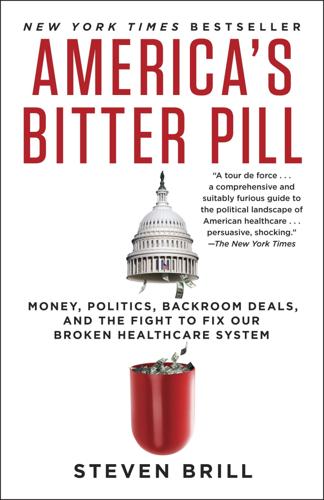
America's Bitter Pill: Money, Politics, Backroom Deals, and the Fight to Fix Our Broken Healthcare System
by
Steven Brill
Published 5 Jan 2015
“THE PRESIDENT WAS TRULY FURIOUS” While the site was down on October 29, 2013, NBC News delivered another blow—a lead story on its evening newscast and on its website headlined “Obama Administration Knew Millions Could Not Keep Their Health Insurance.” Senior investigative correspondent Lisa Myers reported: President Obama repeatedly assured Americans that after the Affordable Care Act became law, people who liked their health insurance would be able to keep it. But millions of Americans are getting or are about to get cancellation letters for their health insurance under Obamacare, say experts, and the Obama administration has known that for at least three years. Four sources deeply involved in the Affordable Care Act tell NBC News that 50 to 75 percent of the 14 million consumers who buy their insurance individually can expect to receive a “cancellation” letter or the equivalent over the next year because their existing policies don’t meet the standards mandated by the new health care law.
…
In the next part of the dream, the gurney and I are about to go through the doors to the operating room when off to the left side I see two cheerful women at a card table under a sign that proclaims “Obamacare Enrollment Center. Sign Up Now Before It’s Too Late. Preexisting Conditions Not a Problem.” Actually, on April 4, 2014, the morning of my surgery, it was already four days too late to sign up for insurance under the Affordable Care Act, or Obamacare. Besides, I already had decent insurance. But at least that dream was more on point with what was happening in my real life. The day I found out about the time bomb in my chest, I was finishing reporting for a book about Obamacare and the fight over how to fix America’s healthcare system.
…
Nor was it easy to tell what hospitals or doctors were in an insurer’s network, much less whether that insurer had negotiated a better deal with a hospital than another insurer (which would mean that even the same co-insurance percentage could produce a lower out-of-pocket cost). So, yes, Obamacare provided more coverage, but its exchanges aren’t doing for healthcare what travel websites did for buying airplane tickets. In fact, while travel agents have been largely pushed aside by travel websites, the Obamacare exchanges create more need for insurance agents. Beyond all that, does the Affordable Care Act really provide affordable care? Yes, for millions of Americans. But not for everyone. Millions of others, particularly in the middle class, will continue to struggle to pay for healthcare.
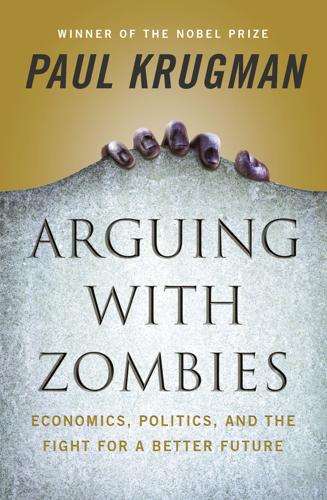
Arguing With Zombies: Economics, Politics, and the Fight for a Better Future
by
Paul Krugman
Published 28 Jan 2020
We knew from experience abroad that this can work—Switzerland, for example, uses a decentralized system along these lines to achieve universal coverage. And it looked far closer to political feasibility than Medicare for All. Hence the Affordable Care Act, aka Obamacare. The columns in this section document how the argument evolved, how the plan went, and what happened when Obamacare went into effect. AILING HEALTH CARE April 11, 2005 Those of us who accuse the administration of inventing a Social Security crisis are often accused, in return, of do-nothingism, of refusing to face up to the nation’s problems.
…
Incidentally, about Democrats doing nothing about Medicare and Medicaid: it’s interesting to look at budget projections made around the time of the Social Security debate. Back then CBO projected that by fiscal 2014 Medicare spending would rise to $708 billion and Medicaid spending to $361 billion. The actual numbers for 2014 were 600 and 301, respectively, despite the Medicaid expansion under Obamacare. At least some of this unexpectedly low cost can be attributed to measures included in the Affordable Care Act. And strange to say, this was achieved without destroying or privatizing the programs. But back to 2005: what Harry Reid realized was that it was time to stop courting the Very Serious People and instead make an alliance with the DFHs—which isn’t quite shorthand for Dirty Foolish Hippies—who, unlike the VSPs, were actually making sense on both the policy and the politics.
…
But in the mid-2000s Democrats were still living in the shadow of the failed 1993 Clinton health reform. Bill Clinton tried a massive overhaul of health care; his plan crashed and burned (kind of like the Bush Social Security push). Was there any chance of a successful do-over? Yes, there was. The Affordable Care Act, aka Obamacare, was an incomplete and imperfect reform, but it nonetheless extended essential health care to tens of millions of Americans. But getting there was anything but easy. Timing was crucial: the A.C.A. was enacted during the very brief period, in 2009–2010, when Democrats had unified control of Congress and the White House, control that came largely from the economic catastrophe that unfolded at the end of the Bush administration.
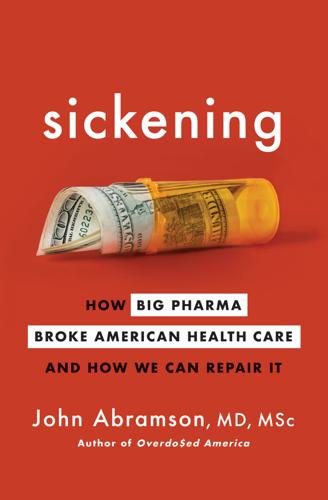
Sickening: How Big Pharma Broke American Health Care and How We Can Repair It
by
John Abramson
Published 15 Dec 2022
OBAMACARE: ACCOMPLISHMENTS AND LIMITATIONS The current era of U.S. health-care reform began in 2010 with the passage of the Patient Protection and Affordable Care Act, aka Obamacare. The final product of the legislative battles provides important lessons about the limits of reform, even in the context of Democratic control of both houses of Congress and the presidency. During the 2008 presidential campaign (Obama versus McCain), Senators Max Baucus (D-Montana) and Charles Grassley (R-Iowa), the leaders of the Senate Finance Committee, convened a bilateral “Health Reform Summit” to explore the opportunities and impediments the next administration would face in its attempts to repair “our broken health care system.”
…
See statins Madras, Bertha, 158–59 marketing and sales, 105, 117, 134 branding, 148–49 consumer phishing, 143 direct-to-consumer, 152 direct-to-consumer (DTC) advertising, 214–15 drug reps role, 145, 152, 155 fake information, 153 key message designs, 147 phishing and phools, 144–46, 234 surplus funds, 218–19 See also metal-on-metal hip implants lawsuits; Nexium; OxyContin McConnell, Mitch, 181, 199 McKinsey consultants, 157–58 McVey, Donna, 34 Medical Action Communications (MAC), 35, 147–48 medical education, 107 medical journals full clinical study reports, 173–76, 212–13 reprint purchases, 172–73, 175 medical research agenda, xii, 179, 209, 225, 229 Medicare Part D, 65, 165 Merck, xxii, 10 cost of Vioxx debacle, 18 FDA Vioxx warning letter, 7–8, 16 financial ties to authors, 5 Fortune accolades (1987), 93 ivermectin and river blindness, 93 reprint purchases, 8 Vioxx lawsuit, 15–16, 97 See also VIGOR metal-on-metal hip implants lawsuits, 135–36, 140 e-mail evidence, 138–39 PIN study, 136–38 Moderna, xv, xvi–xix Morrisey, Stephen, 11, 14 National Academy of Medicine, 131, 220 See also Institute of Medicine National Cholesterol Education Program (NCEP), 42, 45 National Committee for Quality Assurance (NCQA), 68–71, 228 National Diabetes Prevention Program, 78 National Diabetes Quality Improvement Alliance, 70–71 National Guideline Clearinghouse, 130–31, 220 National Heart, Lung, and Blood Institute (NHLBI), 42, 44–45 National Institute of Clinical Excellence (UK), 67 National Institutes of Health (NIH), xv–xvi, 44, 113 Neurology, 28 Neurontin, 20–21, 167 Backonja study, 31, 36 bi-polar disorder, 22, 24 court testimony, 21–24, 29–30 forced-titration study, 114 Gorson study, 27–30 key message design, 147–48 nerve pain treatment, 27–31, 33, 35 off-label marketing scheme, 21–22, 25–27 Pande study, 24–25, 27 Reckless study, 33 side effects, 31–33 untrue claims, 34–35 Young study, 26 New England Journal of Medicine (NEJM), xxi, 2–3, 84 ACCORD study, 71 cost effectiveness studies, 170 COX-2 inhibitors, 4–5 diabetes Drug Therapy review, 70 Expression of Concern (EOC), 14–16 misrepresented information, 7–8, 10 response to criticism, 12–14 Vioxx articles, 3–6, 17, 174–75 New York Times, xvi, xxii, 18, 46, 84–85, 112 New York Times Book Review, 155 New Zealand, 67, 171, 214 New Zealand’s Pharmaceutical Management Agency (“PHARMAC”), 214 Nexium, 184 branding of, 149–50 direct-to-consumer (DTC) advertising, 152 negative stomach acid action, 152–53 omeprazole and, 150 published studies, 151 Novo Nordisk, 61, 70 Obama, Barack, 195–97, 201 Obamacare, 4, 86, 194 cost effectiveness studies in, 170 expansion of coverage, 195, 201 Medicaid expansion, 197–98 Patient-Centered Outcomes Research Institute (PCORI), 197 pharmaceutical industry response, 198 public insurance option, 195–97 Romneycare, 195 White House meeting, 196 Obamacare Prevention and Public Health Fund, 200 off-label prescriptions definition of, 20 legality, 36 marketing of, 21 Operation Warp Speed, xiv, xvi–xvii Organisation for Economic Co-Operation and Development (OECD) cardiovascular mortality, 91 health care or social services, 187 income inequality, 98 infant and child mortality, 89–90 obesity comparisons, 75 pregnancy care, 89–90 Orszag, Peter, 195, 201 Overdo$ed America (Abramson), xxii, 48, 144 overselling drugs, xxv–xxvi OxyContin dosage and addiction, 157 false claims, 154, 156–57, 159 felony charge (2007), 157–58, 216 hospital accreditation and, 155 See also President’s Commission on Combating Drug Addiction and the Opioid Crisis Page, Benjamin, 199 Palmer, Stacey, 1–3, 9, 16–17 Palmer, Susan, 1 paradigm of shared beliefs biomedical model, 108–9 GRADE system (Grading of Recommendations Assessment, Development, and Evaluation), 121–22 See also Cochrane Collaboration; evidence-based medicine Partnership for America’s Health Care Future, 204 patents, pharmaceuticals, 95, 154 Patient Protection and Affordable Care Act (2010). See Obamacare pension fund managers, 188 Pfizer Bextra guilty plea, xxiv–xxv mRNA vaccine, xv–xvii, xix–xx Neurontin Publication Subcommittee, 34 Neurontin trial jury award, 37 research ownership, 116–17 See also Celecoxib Long-Term Arthritis Safety Study; Kaiser v. Pfizer; Neurontin pharmaceutical benefits managers (PBMs), 167 Pharmaceutical Management Agency (New Zealand), 67 Pharmaceutical Research and Manufacturers of America (PhRMA), xv–xvi, 166, 205 Phishing for Phools (Akerlof, Shiller), 143–44 physicians and drug industry influences on drug decisions, 144–46 OxyContin prescription rationale, 155 scientific evidence, 143 Piketty, Thomas, 99 Pogach, Leonard, 71 Pratt, Edmund, 95 pravastatin (Pravachol).
…
Which is not to say there haven’t been full-bore efforts at reform, including the unsuccessful Clinton health plan put forth in 1993 and, more recently, Obamacare, which is the primary focus of this chapter. The success of Obamacare in extending health-care coverage to many millions of Americans is clear. But in the legislative process that produced Obamacare, broader reforms — including government-sponsored cost-effectiveness research and a public option to compete on the exchanges with private insurance plans — met with insurmountable resistance. Any future reforms will likely encounter as much, if not more, pushback. OBAMACARE: ACCOMPLISHMENTS AND LIMITATIONS The current era of U.S. health-care reform began in 2010 with the passage of the Patient Protection and Affordable Care Act, aka Obamacare.
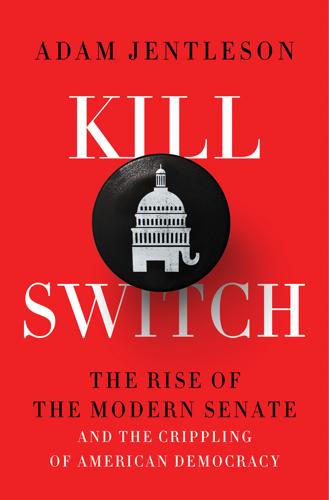
Kill Switch: The Rise of the Modern Senate and the Crippling of American Democracy
by
Adam Jentleson
Published 12 Jan 2021
Page numbers after 260 refer to endnotes. abolitionist movement, 35, 54 abortion anti-choice Republicans, 130 bills blocked by Democratic filibusters, 244 Jesse Helms and, 149 Republican Party and, 149–50 Abramowitz, Alan I., 131 ACA (Affordable Care Act), see Obamacare ADA (Americans for Democratic Action), 80 Adams, John Quincy, 32–33, 48, 49 Ad Age, 190 advice and consent, 199–200 Affordable Care Act (ACA), see Obamacare African Americans and election of 1960, 105 and New Deal programs, 72 and realignment of Republican Party, 131 and Republican Party, 95–96 and shifting demographics of Democratic Party, 72 support for Republicans in 1956 election, 96 Ailes, Roger, 181, 189–90 Alabama, 129 Alaska, 251 Aldrich, Nelson, 61–63 Alice, Texas, 88 Alien and Sedition Acts (1798), 38–39, 52 Alito, Samuel, 201–2 Allen, James, 141–42, 210 amendments (to Constitution), 27, 240–41 amendments (to legislation) filling the tree, 175–76 McConnell and, 223 reform of process, 250–51 American Enterprise Institute, 118 American Family Institute, 145 American Medical Association, 250 American Senate, The (Baker and MacNeil), 59 Americans for Democratic Action (ADA), 80 American system, 51 Amway, 193 Anderson, Clinton, 91 Angle, Sharron, 155 anticommunism, McCarthy and, 89–90 anti-lynching laws, 3–4, 67, 68, 70 anti–poll tax laws, 67–68, 79 appointments clause, 116 approval ratings George W.
…
“President Trump might need to hire a vote counter in the West Wing,” Paul Kane of the Washington Post observed in the spring of 2018. McConnell’s refusal was “a recognition that Republicans have passed just about all they can on a simple majority.”116 Republicans’ difficulty in securing a bare majority for major legislation was on full display in their quixotic quest to repeal the Affordable Care Act, otherwise known as Obamacare. Despite campaigning on repeal for seven years, Republicans struggled to follow through once they controlled both chambers of Congress and the White House.117 In the House, Speaker Paul Ryan’s first attempt at repeal in March 2017 ended in embarrassing failure.118 He succeeded on his second try in May, prompting Trump to invite House Republicans to the White House for a Rose Garden celebration that in retrospect was laughably premature.119 In the Senate, McConnell found himself scrambling.
…
Bush administration, 198–203 and Gorsuch nomination, 230 and McConnell’s “state of the Senate” speech (2014), 223 Harry Reid and, 112–20, 202, 222 and Tea Party tensions with McConnell in Senate, 222 Trump’s demand that McConnell use, 233 nullification, 33–39, 49–50, 57 Obama, Barack, and administration approval ratings (2009–2010), 125–26, 216 election of 2008, 125, 174, 175, 205 on filibuster, 242–43 filibuster used against, 202 Merrick Garland nomination, 182–84, 226–30 inauguration crowds, 208 Iran nuclear deal, 122 judicial appointments delayed due to Republican obstruction, 118 McConnell’s obstruction of appointments and initiatives, 5, 206–8, 212, 226–30 nuclear option’s effect on nominee confirmations, 120 racial attitudes and white partisanship, 132 rationality of Republican obstruction, 120–21 Republican obstruction after 2012 election, 113 Republican obstruction of nominees, 116 Supreme Court appointment battles, 10, 182–84, 226–30 2004 Democratic National Convention speech, 208 and 2013 government shutdown, 134, 152 and Vitter amendment, 134–35 Obamacare McConnell’s obstruction, 212–17 public option, 245 Republican push to defund, 136 Tea Party opposition to, 138 Trump-era attempts to repeal, 233–34 Vitter amendment, 134–35 Office of Management and Budget (OMB), 139 Ohio, 128 Ohio Clock corridor, 115 Olin, John M., 187 Olin Foundation, 187 Olympics (Salt Lake City, 2002), 196 OMB (Office of Management and Budget), 139 Oppenheimer, Bruce, 127 opposition research, 169–70 Oregon bill, 55–57 organized crime, 157–58 Orlando, Florida, Pulse Nightclub shooting, 20 Ornstein, Norman, 118, 277 O’Rourke, Beto, 297 Orthman, Kristen, 182 Owen, Priscilla, 199, 201 “own the libs,” 123, 226 Palfrey, Deborah Jane, 134 Palin, Sarah, 216 Parkland, Florida, Marjory Stoneman Douglas High School shooting, 20 Parliament, 56–57, 247 Parra, José, 155 party-unity score, 121 Patient Protection and Affordable Care Acts, see Obamacare patronage, 50 Patton (movie), 205 Paul, Rand, 138, 221 Pearson, Drew, 96 Pelosi, Nancy, 152, 204 Pence, Mike, 205, 234 Percy, Charles, 146 “petticoat affair,” 34 Pew Research poll, 132 polarization, 121, 123–24 political donations, see campaign finance Politico, 136, 137, 228 poll tax, 3–4, 61, 62, 67–70, 74, 269 Pomeroy, Samuel, 60 Pompeo, Mike, 229 populists, 72 pork-barrel spending, 196 Powell, Adam Clayton, 96 Powell, Lewis, 184 preexisting conditions, 234 presidential elections, see election entries presidential nominees, appointments clause and, 116 press staffers, 169, 173 pressure groups, 144; see also lobbyists/lobbying previous question rule Nelson Aldrich’s attempt to restore, 61–62 attempts to restore, 115 and balance between majority rule and minority protections, 112 Calhoun and, 51–54 Clay’s attempt to restore, 51–53 elimination of, 46–48 origins, 46 and rules reform, 115 Rule 22 vs., 65–66 Prince Edward County, Virginia, 95 printing contract, 50 privatization of Social Security, 173–74 Prohibition bills, 70 proportional representation, 25 “Protest” (Calhoun), 33 Proxmire, William, 165–66 Pryor, William, 199, 201 “Public Mood Estimate,” 131 public opinion African American support for Eisenhower, 96 anti-lynching/anti–poll tax laws, 68 George W.

Why We're Polarized
by
Ezra Klein
Published 28 Jan 2020
They are also, importantly, nationalized. All politics isn’t local Nebraska senator Ben Nelson was the final, crucial vote on the Affordable Care Act. Nelson was an old-school Democratic centrist, a transactional, silver-haired former insurance executive who held on in a red state through acts of ostentatious moderation and a laser-like focus on Cornhusker interests. But he was in a bind. The choice on Obamacare was yes/no. Democrats needed his vote to pass the law. Nelson wanted the law to pass. But Obamacare was unpopular back home, and Nelson was up for reelection in 2012. He was caught between his career, his party, and his conscience.
…
“I was opposed to this idea because my general attitude was the reason people don’t have health insurance is not because they don’t want it. It’s because they can’t afford it,” he told CBS News. “I am now in favor of some sort of individual mandate.”8 This process led, eventually, to the Patient Protection and Affordable Care Act—better known as Obamacare—which also included an individual mandate. The bill was designed to be a compromise proposal, and for a time, it looked like it was. In June 2009, Senator Chuck Grassley, then the top Republican on the powerful Senate Finance Committee, told Fox News, “I believe that there is a bipartisan consensus to have individual mandates.”9 And then something went wrong.
…
He was caught between his career, his party, and his conscience. Nelson’s solution was to split the ideological interests of Nebraska’s Republicans from the financial interests of Nebraskans. Obamacare’s Medicaid expansion was built with an unusual structure. Typically, Medicaid is funded by a roughly 60:40 split between the federal government and the states. The Affordable Care Act, however, promised that the federal government would pay 100 percent of the law’s new Medicaid costs for three years, before phasing down to a 90:10 split by 2020. But some conservatives said that even the 10 percent states were being asked to pay was too much.
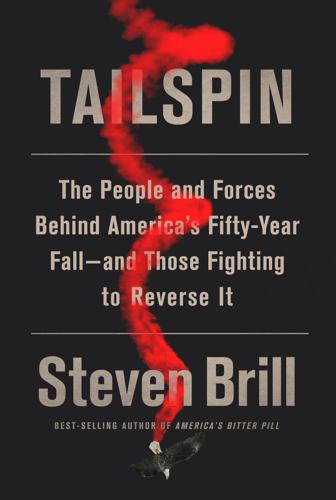
Tailspin: The People and Forces Behind America's Fifty-Year Fall--And Those Fighting to Reverse It
by
Steven Brill
Published 28 May 2018
By then they would be spending $3.1 billion annually on their registered lobbyists, and maybe as much as double that if the Washington lawyers and consultants who were paid to influence Congress and the executive branch but did not register under the loosely enforced lobbying rules were also counted. The spending was actually higher, $3.5 billion, in 2009 and 2010 when consequential legislation, such as the Affordable Care Act (Obamacare) and the Dodd-Frank financial reform bill, was being debated. All of that lobbying was more directly protected by the First Amendment than Martin Redish’s attenuated use of it to block restrictions on corporate speech or campaign giving. The First Amendment explicitly protects the right “to petition the Government for a redress of grievances.”
…
However, that system depends on people of good will on opposite sides of an issue compromising so that something can get done. If checks and balances instead become tools for one side to refuse to yield any ground to the other, the result is a dysfunctional government. The Republicans’ unanimous, virulent opposition to the Affordable Care Act, or Obamacare, from the day President Obama took office offers a vivid example. The proposal Obama and Democrats in Congress put together in 2009 was not something Republicans should logically have been resisting. In fact, it was easy to imagine that Obama had decided to back Republicans into a corner by daring them to take yes for an answer.
…
Luntz and others did, indeed, produce the arguments, in the form of the pungent turns of phrase that had become a Luntz specialty since he had coined “death tax” to demonize the inheritance tax. Obamacare’s “government takeover of health care” would “put some bureaucrat between you and your doctor,” Republicans said. These messages, along with completely fictional claims that the law would establish “death panels” to decide which elderly people were so hopelessly ill that they should be cut off from Medicare, were seized upon by the Tea Party groups that sprang up in the spring and summer of 2009 and made blocking Obamacare their battle cry. At no time did the Republicans offer an alternative to Obamacare, no doubt because Obamacare had always been their alternative—which foretold the embarrassment they would suffer seven years later when they seized control of Congress and the White House and still could not agree on an alternative.
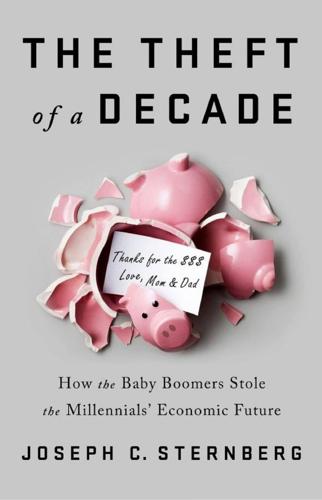
The Theft of a Decade: How the Baby Boomers Stole the Millennials' Economic Future
by
Joseph C. Sternberg
Published 13 May 2019
See GDP (gross domestic product) Gurner, Tim avocado/coffee and, 1, 2, 3 homebuying and, 116 inheritance, 4 Hamilton, Alexander, 147, 147n, 148 Hammond, Darrell, 153 Harris, Kamala, 214 Hawley, Josh, 212 HCAI (Housing Credit Availability Index), 139, 139n health care electronic medical records, 235 See also Affordable Care Act/Obamacare; health insurance health insurance economic security and, 65 employer-based insurance/history, 65, 66 See also Affordable Care Act/Obamacare Hillbilly Elegy (Vance), 45 HOLC (Home Owner Loan Corporation), 119–120 Home Owner Loan Corporation (HOLC), 119–120 housing amortizing mortgage, 120, 120n balloon loans, 119 Boomer ownership, 109, 110, 111 Federal Reserve/mortgage lending and, 61–62 GI Bill and, 120 Great Depression/government response and, 119–121 history, 113–114, 114n, 118–119 Millennial home ownership/education debt and, 94–95 mortgages/taxes and, 120, 126, 127 multigenerational households, 112, 113 ownership value debate, 120n postwar boom and, 121 Housing Credit Availability Index (HCAI), 139, 139n housing/financial crisis bailouts, 130, 130n, 132n bank liquidity and, 129–130 Boomers and, 134, 135 description/consequences, 128–129 foreclosures and, 111, 132, 132n, 135 home equity increase and, 125–128, 126n home equity loss and, 10, 110–111 home ownership decline and, 121, 122 homeowners “lock-in” and, 136 housing debt/policies, 123–127, 125n insolvency crisis and, 129–130 interest rates and, 124–125, 125n, 127–128, 136 managing policies, 129–137 Millennials and, 131, 135–140, 141–143 mobility and, 135–136 mortgage-backed securities (MBS) market and, 124, 125n, 128, 129 mortgage security and, 122–124 press release/beginnings, 128 quantitative easing, 133, 135, 136, 137 quantitative easing dollar amount, 137 regulations following/Millennials and, 137–140 subprime/prime borrowers and, 126–127, 126n housing/Millennial issues economics and, 17, 110, 111, 112–113 expectations, 109–110 living with parents/statistics, 111–113, 114 locations/job locations and, 116, 117–118 multigenerational households, 112, 114n ownership/demographics, 115–116 renting/costs and, 113, 113n, 114, 114n, 141–142, 141n starter homes and, 116, 117 supplies and, 116–118 Howe, Neil, 6–7 HUD (Department of Housing and Urban Development), 123 Iceland and financial crisis, 180 immigration Millennials views, 218, 225–226 Trump, Donald and, 225–226 Immigration and Customs Enforcement (ICE), 211 India, 178, 201 Industrial Revolution, 113 information/computer technology rise, 56, 235 inheritances/Millennials beliefs/estimates, 103–104 Boomers life expectancy/health care finances and, 104–105 feudalism/history and, 106 Fidelity surveys, 105 Millennials retirement and, 107–108 timing and, 105–106 interest rates Bush and, 57 Federal Reserve and, 18, 19, 124 housing/financial crisis and, 124–125, 125n, 127–128, 136 Trump and, 19, 231–232 International Monetary Fund (IMF), 182–183 internships/Millennials numbers, 31 Obama and, 73 overview, 31, 72–73 pay and, 31, 72 work descriptions, 32 investment Boomers childhood and, 49 consumption relationship, 50 costs of labor vs. capital, 63–64, 65–66, 229 during Bush administration, 57 during Reagan administration, 53, 54 fixed investment, 49, 51, 53, 56, 57, 60, 127 growth (mid-twentieth century), 49 need to increase and, 15–17, 51 productivity and, 16, 49 technologies replacing labor and, 62–63 investment-and-productivity boom (1950s/1960s), 49–50 decline (1970s/1980s), 50 Ireland and financial crisis, 180 Italy Millennials and, 184, 201 temporary work, 184 Jackson, Alphonso, 123 Jackson, Andrew, 147 Japan consumption tax, 206 corporate scandals, 202, 202n debt, 205–206 demographic boom, 203n economic growth (1960s/1970s), 201–202 population trend, 207 working mothers and, 209 Japan Millennials delayed marriages/children and, 208–209 economy and, 203, 205, 206–207 inflation and, 207–208 interest rates and, 207–208, 208n job/training investments and, 204–205 lifetime employment deal and, 203–204 regular/nonregular work, 202–203, 202n taxes and, 205 Jeffersonians, 147n job hopping, 37–38 “jobless recovery,” 35, 69 jobs/job market and Millennials age of employee/job losses, 35–39 Boomers vs., 27, 46 company size and, 38–39 economists categories of jobs/job losses and, 33–34 experience requirements and, 37 financial crisis/recession losses distribution, 32–37 “fun/fulfilling” work and, 29 goals/dreams, 31 job losses by skill level, 34 job opportunity losses/time effects, 39–40 jobs replaced by robots, 34, 34n lower-skilled/low-paying employment replacements and, 36–37 mentors vs. bosses, 29–30 overqualification and, 42–43 pay/job losses and, 33–34 recovery from financial crisis and, 35, 59 statistics on white/blue collar jobs, 28 transformed jobs and, 27–29, 27n wants description, 29 See also specific components Johnson, Lyndon, 149 Kander, Jason, 212 Keynes, John Maynard/Keynesian economics, 50n, 58, 163n Kotlikoff, Laurence J., 171–172 labor capital vs. labor costs, 63–64, 65–66, 229 costs, 65–66 costs (by 1990s), 55 replacing labor and, 17, 34, 34n, 62–63 See also union power labor-force participation rate in 1970s, 47 in 1980s, 54 description, 30 Millennials/post-2008 decade, 30–31 labor productivity complementary technologies and, 49 definition, 48n labor hours and, 49 output per hour worked and, 48, 48n, 56, 57 labor share in 1950s/1960s, 47, 50 definition/description, 47 during Clinton presidency, 56 during Reagan presidency, 56 economic theories on, 62 trend past 50 years, 62 Lehman Brothers, 11, 129, 133 Libertarian candidates, 219 McAfee, Andrew, 41 McCain, John, 225 McCain, Meghan, 215 Maloney, Carolyn, 219 Manhattan Institute for Policy Research, 58 ManpowerGroup, 31 manufacturing economy (US) decline, 12, 14 description, 15–16 MBS (mortgage-backed securities) market, 124, 125n, 128, 129 Medicaid Affordable Care Act and, 167 financial problems, 156 role, 149 Medicare for all Americans, 211 financial problems/Millennials and, 153–161 inflation and, 169 insurance comparisons, 154 Millennial resources and, 142 role, 149 See also entitlements for elderly Medicare Part D, 157 Merkel, Angela political party/government and, 197, 200, 200n taxes and, 197 Merrill Lynch, 11, 128–129 Merrill Lynch survey/savings, 78 military spending deficit spending (government) and, 151 generational fairness and, 171 Millennials avocado/coffee debate, 1–3 childhood diseases and, 3–4 definition/description, 5–9, 237 diversity and, 216, 237–238 ethnicity, 9 as immigrants/children of immigrants and, 8–9, 112 material well-being and, 3–5 navigators and, 21–23 numbers, 8 parents/security and, 3–4 as “retirement plans” for parents, 145 second language and, 8 sex and, 217 social questions, 216–217 stereotypes and, 1–3, 29–30, 235 term origins, 6 views of, 1–3, 4–5, 26–27 wars and, 4 minimum wages debates/views on, 185 Europe, 183–184 in US, 183–184 Mondale, Walter, 20 mortgage-backed securities (MBS) market, 124, 125n, 128, 129 Mortgage Servicing Assets (MSAs), 138n Mulligan, Casey B., 165 Murphy, Patrick, 212 National Center for Education Statistics data analysis, 92–93 National Football League union refs lockout (2012), 49n National Home-ownership Strategy (1995), 123 navigator Millennials, 21–23 NEETs (youths “not in employment, education, or training”), 181 Netherlands minimum wage, 184 New Deal/regulations, 52–53, 148–149 Obama, Barack Boomers and, 64 education policy and, 93–94, 97–101 financial crisis/Great Recession and, 129, 131–132, 132n, 137, 162–164, 223–234 Millennials and, 64, 218–219, 224 policies and, 18, 19, 24, 64, 73, 93–94, 97–101 regulation and, 229 unpaid internships and, 73 See also Affordable Care Act/Obamacare Obamacare. See Affordable Care Act/Obamacare Ocasio-Cortez, Alexandria election to Congress, 211 as Millennial, 211, 219 policy positions/views, 211, 222 taxes and, 195, 197 Occupy Wall Street movement, 130, 214 Ohio Public Employee Retirement Systems (OPERS), 175 Once and Future Worker, The (Cass), 58 Operation Twist, 134 Organization for Economic Cooperation and Development, 61 O’Rourke, Beto, 214 Patel, Suraj, 219 Paul, Ron, 222 Paulson, Hank, 129, 131 peace dividend, 151 Pell Grant program, 97, 99, 100 pension/plans Boomers and, 121, 159, 221 Detroit city government example, 175 European countries, 183, 196, 198, 199, 200 Germany/Millennials and, 199, 200 Japan and, 203, 205, 208n mid-twentieth century, 49 Millennials (US) and, 79–80, 81, 81n, 82 Ohio example, 175 problems with state/local government plans, 150, 158–159, 175 trend in private work, 158 Perot, Ross, 217 politics and Millennials 2018 midterm elections, 213 first nationally-elected officials, 211–212 fixing problems and, 213–214 House Member age statistics, 212 interns and, 213 party support/political views and, 214–216, 217–219, 222–223 political influence and, 213 state offices, 212 stereotypes, 214 trade policy, 217–218 voting and, 213 wants, 220–223, 232–236 working economy, 220–221 Powell, Jerome, 231–232 productivity by the 1970s, 48 investment and, 16, 49 measuring, 48n “qualified mortgage” (QM) standard, 139–140 quantitative easing description, 133 Federal Reserve and, 18–19, 60 housing/global financial crisis, 133, 135, 136, 137 Reagan, Ronald economic policies, 24, 52–54 fixed investment, 53 supply-side economics and, 52, 54–55, 58 support for, 20 taxes and, 52 recession postwar period, 62 See also financial crisis/Great Recession regulation (financial) changes/consequences, 56–57 during Reagan administration, 52, 54 regulations and Trump, 229–230, 234 religion and Millennials, 216–217 Resolution Foundation think tank, 178 retirement finances 401 (k) plans, 80 Millennials as “retirement plans” for parents, 145 Millennials/savings and, 79, 80–81 See also pension/plans; Social Security Revolutionary War/state debts, 147, 147n Romney, Mitt as candidate, 215, 225 manufacturing background, 232n youth vote, 215 Rubin, Robert, 54–55 “Rubinomics” program, 54–55, 124 Ryan, Paul, 231 S&P 500, 10 Sanders, Bernie description/political party and, 219, 222 Millennial support, 195, 214, 219 taxes, 173, 195, 197 savings/Millennials college-educated Millennials and, 78–79 debt and, 81n, 82 defined-contribution plans, 80 description/overview, 77–83 emergency-lending facility use and, 78 job market and, 79 obsession and, 79 parents vs., 77 pension plans and, 79–80 retirement finances and, 79, 80–81 Social Security benefits and, 82–83 statistics on, 78–79, 80–83, 83n Wall Street payback and, 83 worries about, 81–82 Say, Jean-Baptiste, 50n Say’s Law, 50n Schock, Aaron, 211–212 Second Machine Age, The (Brynjolfsson and McAfee), 41 self-employment trends (since 2000), 71 See also gig economy September 11 terror attacks/consequences, 57, 152 Shapiro, Ben, 215, 224–225 “sheepskin effect,” 90 Sixteenth Amendment, 148 Smith, Brad, 71–72 SNAP (Supplement Nutrition Assistance Program), 164 social capital, 22 social programs/benefits consequences/Mulligan and, 165–166 financial crisis and, 163–165 Social Security beginnings, 149 financial problems/Millennials and, 153–161 housing and, 114n insurance comparisons, 154, 157–158 Millennial expectations, 82–83 Millennial resources and, 142 taxes and, 150n, 196 See also entitlements for elderly solar panels installation, 28 Spain and financial crisis, 180 steel industry (1970s to 1990s), 50–51 stock market crash (1929), 10 financial crisis, 10 Strauss, William, 6–7 “structural deficits,” 150–151, 151n Supplement Nutrition Assistance Program (SNAP), 164 supply-side economics, 52, 54–55, 58 TANF, 164 TARP (Troubled-Asset Relief Program), 59, 130, 130n taxes on capital/consequences, 53 Clinton and, 55, 152 cuts with Great Recession, 163 inflation as, 207 myth on, 195 national consumption tax and, 173–174 politicians in Germany/US and, 197 Reagan and, 52 Republicans and, 174 Sixteenth Amendment, 148 tax wedge, 183 Trump and, 227–228 Tea Party movement, 130, 231 technology labor and (mid-twentieth century), 49 role in economic problems, 234–235 See also computer/information technology Thatcher, Margaret, 189 “total-factor productivity,” 48n total number of hours worked in 1970s, 47 as measure of labor market, 47 trade policy and Millennials, 217–218 training investing less, 17, 69, 88 investing more, 228 Millennials wanting, 29, 72 See also internships/Millennials Troubled-Asset Relief Program (TARP), 59, 130, 130n Trump, Donald Affordable Care Act and, 68 description, 19 entitlements and, 231 immigration and, 225–226 interest rates/Federal Reserve and, 19, 231–232 Japan/foreign competition and, 202, 217–218, 225 Millennials and, 214, 215, 217, 224, 225–232 real estate background and, 232n regulations and, 229–230, 234 taxes, 227–228, 234 traits/character, 224 unemployment rate and, 226 Uber, 70, 70n unemployment Britain/Millennials and, 189 NEETs, 181 unemployment-assistance programs (US) creation, 149 financial crisis and, 164 unemployment rate (US) in 1950s and 1960s, 47 in 1970s, 47 in 1980s, 54 changes post-2008 decade, 30, 33 description, 30 global financial crisis/recovery and, 11, 12, 13 Millennials and, 42 Trump and, 226 See also labor-force participation rate union power other countries and, 186 in US, 49, 49n United Kingdom minimum wage, 184 Urban Institute, 139 US Bureau of Labor Statistics, 28, 30, 37, 47 Vance, J.
…
See GDP (gross domestic product) Gurner, Tim avocado/coffee and, 1, 2, 3 homebuying and, 116 inheritance, 4 Hamilton, Alexander, 147, 147n, 148 Hammond, Darrell, 153 Harris, Kamala, 214 Hawley, Josh, 212 HCAI (Housing Credit Availability Index), 139, 139n health care electronic medical records, 235 See also Affordable Care Act/Obamacare; health insurance health insurance economic security and, 65 employer-based insurance/history, 65, 66 See also Affordable Care Act/Obamacare Hillbilly Elegy (Vance), 45 HOLC (Home Owner Loan Corporation), 119–120 Home Owner Loan Corporation (HOLC), 119–120 housing amortizing mortgage, 120, 120n balloon loans, 119 Boomer ownership, 109, 110, 111 Federal Reserve/mortgage lending and, 61–62 GI Bill and, 120 Great Depression/government response and, 119–121 history, 113–114, 114n, 118–119 Millennial home ownership/education debt and, 94–95 mortgages/taxes and, 120, 126, 127 multigenerational households, 112, 113 ownership value debate, 120n postwar boom and, 121 Housing Credit Availability Index (HCAI), 139, 139n housing/financial crisis bailouts, 130, 130n, 132n bank liquidity and, 129–130 Boomers and, 134, 135 description/consequences, 128–129 foreclosures and, 111, 132, 132n, 135 home equity increase and, 125–128, 126n home equity loss and, 10, 110–111 home ownership decline and, 121, 122 homeowners “lock-in” and, 136 housing debt/policies, 123–127, 125n insolvency crisis and, 129–130 interest rates and, 124–125, 125n, 127–128, 136 managing policies, 129–137 Millennials and, 131, 135–140, 141–143 mobility and, 135–136 mortgage-backed securities (MBS) market and, 124, 125n, 128, 129 mortgage security and, 122–124 press release/beginnings, 128 quantitative easing, 133, 135, 136, 137 quantitative easing dollar amount, 137 regulations following/Millennials and, 137–140 subprime/prime borrowers and, 126–127, 126n housing/Millennial issues economics and, 17, 110, 111, 112–113 expectations, 109–110 living with parents/statistics, 111–113, 114 locations/job locations and, 116, 117–118 multigenerational households, 112, 114n ownership/demographics, 115–116 renting/costs and, 113, 113n, 114, 114n, 141–142, 141n starter homes and, 116, 117 supplies and, 116–118 Howe, Neil, 6–7 HUD (Department of Housing and Urban Development), 123 Iceland and financial crisis, 180 immigration Millennials views, 218, 225–226 Trump, Donald and, 225–226 Immigration and Customs Enforcement (ICE), 211 India, 178, 201 Industrial Revolution, 113 information/computer technology rise, 56, 235 inheritances/Millennials beliefs/estimates, 103–104 Boomers life expectancy/health care finances and, 104–105 feudalism/history and, 106 Fidelity surveys, 105 Millennials retirement and, 107–108 timing and, 105–106 interest rates Bush and, 57 Federal Reserve and, 18, 19, 124 housing/financial crisis and, 124–125, 125n, 127–128, 136 Trump and, 19, 231–232 International Monetary Fund (IMF), 182–183 internships/Millennials numbers, 31 Obama and, 73 overview, 31, 72–73 pay and, 31, 72 work descriptions, 32 investment Boomers childhood and, 49 consumption relationship, 50 costs of labor vs. capital, 63–64, 65–66, 229 during Bush administration, 57 during Reagan administration, 53, 54 fixed investment, 49, 51, 53, 56, 57, 60, 127 growth (mid-twentieth century), 49 need to increase and, 15–17, 51 productivity and, 16, 49 technologies replacing labor and, 62–63 investment-and-productivity boom (1950s/1960s), 49–50 decline (1970s/1980s), 50 Ireland and financial crisis, 180 Italy Millennials and, 184, 201 temporary work, 184 Jackson, Alphonso, 123 Jackson, Andrew, 147 Japan consumption tax, 206 corporate scandals, 202, 202n debt, 205–206 demographic boom, 203n economic growth (1960s/1970s), 201–202 population trend, 207 working mothers and, 209 Japan Millennials delayed marriages/children and, 208–209 economy and, 203, 205, 206–207 inflation and, 207–208 interest rates and, 207–208, 208n job/training investments and, 204–205 lifetime employment deal and, 203–204 regular/nonregular work, 202–203, 202n taxes and, 205 Jeffersonians, 147n job hopping, 37–38 “jobless recovery,” 35, 69 jobs/job market and Millennials age of employee/job losses, 35–39 Boomers vs., 27, 46 company size and, 38–39 economists categories of jobs/job losses and, 33–34 experience requirements and, 37 financial crisis/recession losses distribution, 32–37 “fun/fulfilling” work and, 29 goals/dreams, 31 job losses by skill level, 34 job opportunity losses/time effects, 39–40 jobs replaced by robots, 34, 34n lower-skilled/low-paying employment replacements and, 36–37 mentors vs. bosses, 29–30 overqualification and, 42–43 pay/job losses and, 33–34 recovery from financial crisis and, 35, 59 statistics on white/blue collar jobs, 28 transformed jobs and, 27–29, 27n wants description, 29 See also specific components Johnson, Lyndon, 149 Kander, Jason, 212 Keynes, John Maynard/Keynesian economics, 50n, 58, 163n Kotlikoff, Laurence J., 171–172 labor capital vs. labor costs, 63–64, 65–66, 229 costs, 65–66 costs (by 1990s), 55 replacing labor and, 17, 34, 34n, 62–63 See also union power labor-force participation rate in 1970s, 47 in 1980s, 54 description, 30 Millennials/post-2008 decade, 30–31 labor productivity complementary technologies and, 49 definition, 48n labor hours and, 49 output per hour worked and, 48, 48n, 56, 57 labor share in 1950s/1960s, 47, 50 definition/description, 47 during Clinton presidency, 56 during Reagan presidency, 56 economic theories on, 62 trend past 50 years, 62 Lehman Brothers, 11, 129, 133 Libertarian candidates, 219 McAfee, Andrew, 41 McCain, John, 225 McCain, Meghan, 215 Maloney, Carolyn, 219 Manhattan Institute for Policy Research, 58 ManpowerGroup, 31 manufacturing economy (US) decline, 12, 14 description, 15–16 MBS (mortgage-backed securities) market, 124, 125n, 128, 129 Medicaid Affordable Care Act and, 167 financial problems, 156 role, 149 Medicare for all Americans, 211 financial problems/Millennials and, 153–161 inflation and, 169 insurance comparisons, 154 Millennial resources and, 142 role, 149 See also entitlements for elderly Medicare Part D, 157 Merkel, Angela political party/government and, 197, 200, 200n taxes and, 197 Merrill Lynch, 11, 128–129 Merrill Lynch survey/savings, 78 military spending deficit spending (government) and, 151 generational fairness and, 171 Millennials avocado/coffee debate, 1–3 childhood diseases and, 3–4 definition/description, 5–9, 237 diversity and, 216, 237–238 ethnicity, 9 as immigrants/children of immigrants and, 8–9, 112 material well-being and, 3–5 navigators and, 21–23 numbers, 8 parents/security and, 3–4 as “retirement plans” for parents, 145 second language and, 8 sex and, 217 social questions, 216–217 stereotypes and, 1–3, 29–30, 235 term origins, 6 views of, 1–3, 4–5, 26–27 wars and, 4 minimum wages debates/views on, 185 Europe, 183–184 in US, 183–184 Mondale, Walter, 20 mortgage-backed securities (MBS) market, 124, 125n, 128, 129 Mortgage Servicing Assets (MSAs), 138n Mulligan, Casey B., 165 Murphy, Patrick, 212 National Center for Education Statistics data analysis, 92–93 National Football League union refs lockout (2012), 49n National Home-ownership Strategy (1995), 123 navigator Millennials, 21–23 NEETs (youths “not in employment, education, or training”), 181 Netherlands minimum wage, 184 New Deal/regulations, 52–53, 148–149 Obama, Barack Boomers and, 64 education policy and, 93–94, 97–101 financial crisis/Great Recession and, 129, 131–132, 132n, 137, 162–164, 223–234 Millennials and, 64, 218–219, 224 policies and, 18, 19, 24, 64, 73, 93–94, 97–101 regulation and, 229 unpaid internships and, 73 See also Affordable Care Act/Obamacare Obamacare.
…
In the course of doing so, they would make labor ever more expensive, and investments requiring more labor ever less attractive, at precisely the moment capital investment was becoming cheaper and cheaper—at least for some investors in some industries. To see why that approach was such a disaster, look no further than the Affordable Care Act, or Obamacare. Obamacare was an attempt to solve a glaring problem: in a new economy of constant employment churn (and where there were fewer and fewer mid-paying jobs to support health benefits for large tranches of the working population) it just doesn’t make a lot of sense to tie insurance to employment.
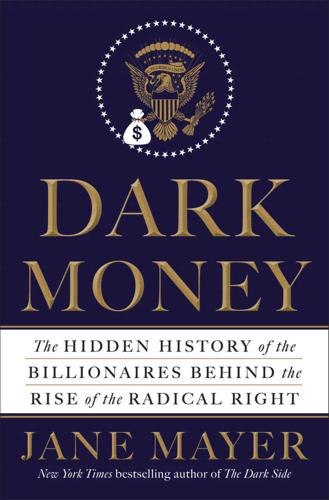
Dark Money: The Hidden History of the Billionaires Behind the Rise of the Radical Right
by
Jane Mayer
Published 19 Jan 2016
But the Obama administration had never proposed government health care like that in Canada or Great Britain. Reached later, after the implementation of Obama’s Affordable Care Act, Donald Jacobsen, professor of molecular medicine at the Cleveland Clinic Lerner College of Medicine, who cared for Kendrick, recalled her as a generous donor but dismissed as nonsense her argument that Obama’s health-care plan ever threatened treatment of the kind that she received. “I can assure you that ‘Obamacare’ did not diminish our research efforts in any way,” he said. “However, the sequestration efforts of the right-wing conservatives and their Tea Party colleagues have hampered progress in medical research.
…
For months, the post office box otherwise known as the Center to Protect Patient Rights had been filling with fistfuls of secret cash from Randy Kendrick and other members of the Koch network in an uphill battle to stop the passage of the Affordable Care Act. Noble had redirected much of this money into the front groups spending against Coakley in the Massachusetts special election. The hope was that if Republicans could turn one Senate seat, they could block the health-care bill and mortally wound Obama. So when the plan worked, Brown’s win electrified the donors. Many felt that they had personally turned the tide on Obamacare. “We thought we had it won!” the seminar participant recalled. Obama had been so flummoxed by Brown’s election that at a White House senior staff meeting the next morning he had beseeched his staff accusingly, demanding to know, “What’s my narrative?
…
Shortly after the House passed the Affordable Care Act, Noble and his partners studied the vote numbers closely. The glimmer of a new plan formed. They agreed that what they had to do now was to take the political organization they had built to fight the health-care plan and use it to take over the legislative body that had just given Obama his greatest victory. “We made a deliberate recommendation that you gotta focus on the House,” Noble later told National Review. “That’s where this bill passed. Pelosi broke so many arms of Democrats that had no business voting for that bill. Obamacare clearly was the watershed moment that provided the juice to deliver the majority back to the Republicans in the House.”

Listen, Liberal: Or, What Ever Happened to the Party of the People?
by
Thomas Frank
Published 15 Mar 2016
INDEX The index that appeared in the print version of this title does not match the pages in your e-book. Please use the search function on your e-reading device to search for terms of interest. For your reference, the terms that appear in the print index are listed below. ABInBev Ackman, William Affordable Care Act “Obamacare” (2009) Afghanistan AFL/CIO Agenda, The (Woodward) Aid to Families with Dependent Children (AFDC) AIG Airbnb Alexander, Michelle Allen, George Allen, Paul All in the Family (TV show) Alter, Jonathan Altman, Roger Amazon American Prospect America: What Went Wrong (Barlett and Steele) Ameriquest Andreessen, Marc antitrust Apple, Inc.
…
Treating workers and owners in these sharply different ways has been the rule of the Obama years, but there have also been exceptions to it—big ones. The one great achievement of Obama’s presidency, the health insurance reform known as “Obamacare,” has many flaws, but it also subsidizes the purchase of coverage by people who otherwise can’t afford it. This detail was an important victory for the poor—and also a measure without which Obamacare could not accomplish the other things it does, such as stopping insurers from cancelling sick people’s insurance. Another triumph was the establishment of a Consumer Financial Protection Bureau in 2010, a much-needed regulatory agency that is supposed to keep an eye on predatory practices by payday loan shops, credit card companies, and the like.
…
Instead we got Obamacare, with its exchanges, its individual and employer mandates, its Cadillac tax, its subsidies to individuals and to the insurance industry, and its thousands of other moving parts, sluicing funding this way and that. Complexity is its most striking characteristic. No one is really certain how it operates, whether it is a tax or a mandate (OK, the Supreme Court has determined that it’s the former), or whether it will truly make health care more affordable. In a video clip accessible on YouTube, Democratic Senator Jay Rockefeller can be seen describing Obamacare as “the most complex piece of legislation ever passed by the United States Congress”; a former state health-insurance official in Massachusetts, whose health care system was Obama’s model, moaned that “We took the most complex health care system on God’s green earth, and made it 10 times more complex.”1 Why did Team Obama choose to go this route?

The Impulse Society: America in the Age of Instant Gratification
by
Paul Roberts
Published 1 Sep 2014
Consumers, Feder told me, “don’t want that. People with vested interests want to stay where they are.” That’s a big reason that most of the health care measures prior to Obamacare centered not on reforming anything, but on adding benefits—as, for example, the quite popular, and quite expensive, Medicare prescription drug benefit enacted in 2003. This collective reflex of self-preservation helps explain why Barack Obama’s Affordable Care Act (ACA) has provoked such a visceral response—a negative reaction that goes well beyond our antipathy at the botched rollout. Although the ACA leaves intact the basic public-private structure of American health care, the law nonetheless goes after some of the key institutional enablers of bad health care practices.
…
Favors Healthcare Reform This Year,” Gallup, July 14, 2009, http://www.gallup.com/poll/121664/majority-favors-healthcare-reform-this-year.aspx. 18. Benjamin Zycher, “Obamacare Inhibits Medical Technology,” Washington Times, Jan. 9, 2012, http://www.washingtontimes.com/news/2012/jan/9/obamacare-inhibits-medical-technology/. 19. Thomas B. Edsall, “The Obamacare Crisis,” New York Times, Nov. 19, 2013, http://www.nytimes.com/2013/11/20/opinion/edsall-the-obamacare-crisis.htmlpagewanted=1&_r=2&smid=tw-share&&pagewanted=all. 20. Interview with author. 21. Interview with author. Chapter 8: Forever War 1. Sam Stein, “Robert Draper Book: GOP Anti-Obama Campaign Started Night of Inauguration,” Huffington Post, April 25, 2012, http://www.huffingtonpost.com/2012/04/25/robert-draper-anti-obama-campaign_n_1452899.html. 2.
…
The Impulse Society, in effect, will defend itself. In some respects, the opposition Obamacare has provoked seems relatively mild, given the degree to which it is attempting to shake up the status quo. Liberals may complain that the ACA falls far short of the long-dreamed-of European-style single-payer model. But as far as many conservatives are concerned, Obamacare represents the first effort in decades to shift the country back toward the New Deal program of economic management that was supposed to have been killed off in the 1980s. More fundamentally, the reaction to Obamacare may force us to reassess the cherished idea that Americans will make personal sacrifices to address a broad social problem.

The Ones We've Been Waiting For: How a New Generation of Leaders Will Transform America
by
Charlotte Alter
Published 18 Feb 2020
But that would turn out to be a practice run for Indivisible’s biggest battle of 2017. Shortly after Trump took office, he and the Republican Congress attempted to do what the GOP had been promising for years: repeal and replace Obamacare. It didn’t help their cause that the “replace” part of the promise was empty: for all the rhetoric, the GOP never offered a plan that would include coverage of everyone who was covered by the Affordable Care Act. But the Republicans were hell-bent on repeal, and it looked for months as if they would achieve it. Until Indivisible stepped up. Local groups confronted their senators and representatives at every town hall, forcing them to explain why they would vote to kill a law that might be flawed but was helping millions afford health care.
…
By then, the public was furious at how the health care reform process had unfolded. After all that partisan wrangling, voters were beginning to think the whole thing was a fiasco. And so, three weeks after the Senate passed the Affordable Care Act, Massachusetts voters elected Republican Scott Brown to what had been a safe Democratic seat. The surprise upset was partly fueled by rage at the Affordable Care Act, and partly because Democrat Martha Coakley had committed Massachusetts political suicide by insulting die-hard Boston sports fans. No matter the reason, the outcome was the same: with only fifty-nine Democrats in the Senate, Obama had lost his chance at a progressive House-Senate compromise.
…
He was there for the home runs, like when the Auto Task Force saved hundreds of thousands of jobs in the Midwest. And he understood the importance of the smaller victories: the singles, doubles, and triples that made up the bulk of Obama’s achievements. Over the next three years, the Affordable Care Act would be challenged in the courts, and Republicans would find nearly every excuse they could to sue the government over the new law. But once it cleared the courts, it was time to implement the Affordable Care Act on the state level. That’s where Lauren Underwood came in. * * * Lauren got a job at the Department of Health and Human Services in 2010 as a career employee in the office of the executive secretary.
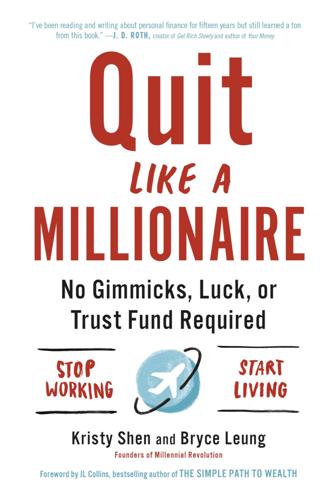
Quit Like a Millionaire: No Gimmicks, Luck, or Trust Fund Required
by
Kristy Shen
and
Bryce Leung
Published 8 Jul 2019
You can still have health insurance, and you’ll probably be able to get it far cheaper than when you were working. Here are all the different ways you can reduce your health insurance costs after you retire. Obamacare (ACA) Obamacare, or the Patient Protection and Affordable Care Act, is your first and best line of defense against rising health care costs in retirement. This is because Obamacare ties the amount you pay for insurance to your income. The less you make, the less you pay. And it does this through federal subsidies. Every year the federal government publishes a number it determines as the federal poverty level, or FPL.
…
So an HSA combines the best of the 401(k) and the Roth IRA, in that it allows tax-deductible contributions, tax-free growth, and tax-free withdrawals, but only for medical expenses. HDHP + HSA plans existed before the ACA, and still exist today under Obamacare. This gives us reasonable certainty that even if the ACA were repealed, the HDHP + HSA solution that early retirees used before Obamacare existed would still be a viable solution. We’re only including this policy in case America reverts to its pre-Obamacare health care system. Expat Insurance But now I’d like to talk about my solution. Meaning, this is what we do for health insurance. It may surprise many readers that we have to do anything at all.
…
To order to qualify for ACA subsidies, pay special attention to avoid exceeding 400 percent of the FPL while combining the strategies mentioned earlier to minimize taxes. Moving to a Different State One big caveat to Obamacare is that you need to live in the right state. When the ACA became law in 2010, part of it relied on expanding funding to Medicaid, the health insurance program covering low-income families administered by each state. The idea was that the Obamacare-related subsidies would take care of people from 138 percent to 400 percent of the FPL, while Medicaid would take care of the 0 percent to 137 percent range. Under this system, everybody would have access to health insurance regardless of income.
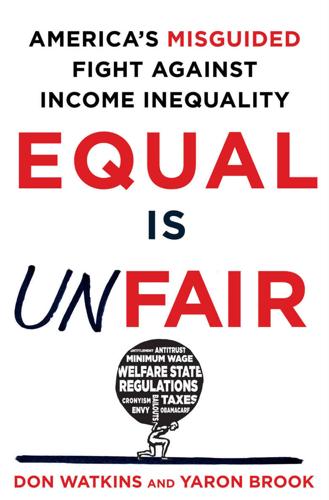
Equal Is Unfair: America's Misguided Fight Against Income Inequality
by
Don Watkins
and
Yaron Brook
Published 28 Mar 2016
Devon Herrick, “FDA Slow to Approve Medical Devices,” National Center for Policy Analysis, December 1, 2010, http://healthblog.ncpa.org/fda-slow-to-approve-medical-devices/ (accessed May 12, 2015). 48. Michael Tennant, “ObamaCare: Stifling Innovation,” National Center for Policy Analysis, April 9, 2015, http://www.ncpa.org/media/obamacare-stifling-innovation (accessed May 26, 2015). 49. Cato Handbook for Policymakers, 7th Edition (Cato Institute, January 16, 2009), http://object.cato.org/sites/cato.org/files/serials/files/cato-handbook-policymakers/2009/9/hb111-16.pdf (accessed May 26, 2015). See also Rituparna Basu, The Broken State of American Health Insurance Prior to the Affordable Care Act: A Market Rife with Government Distortion, 2013, http://www.pacificresearch.org/fileadmin/templates/pri/images/Studies/PDFs/2013-2015/BasuF2.pdf (accessed May 26, 2015). 50.
…
Index The index that appeared in the print version of this title does not match the pages in your e-book. Please use the search function on your e-reading device to search for terms of interest. For your reference, the terms that appear in the print index are listed below. Acemoglu, Daron, 166–7 Adams, James Truslow, 5, 118, 218 Affordable Care Act (Obamacare), 126, 134–7, 180 Ake, Christopher, 206 Alfange, Dean, 70 Allison, John, 37 Altner, Doug, 29 American Dream, 4–5, 10, 203 and economic progress, 83 and egalitarianism, 218 and immigration, 28 and inequality argument, 5–7, 17, 19, 21, 48, 117 introduction of the phrase, 5, 118 and opportunity, 5, 138 saving the, 219–28 threat to the, 14–17, 173–4 anti-poverty programs, 31, 138–44.
…
See also CEOs Manzi, James, 158, 163 Marconi, Guglielmo, 89 Markkula, Mike, 93–4 Marxism, 215–16 Mazumder, Bhashkar, 123 McCandless, Christopher Johnson, 56–7 McCloskey, Deirdre, 104, 165–6 McElwee, Sean, 125, 211, 213 McLaughlin, Patrick, 36 Mead, Lawrence, 140 Medicaid, 35, 134, 136, 138, 183 Medicare, 35, 70, 127, 134–6, 138, 170, 183, 225 merit, 6, 13–16, 114, 118, 120, 145–53, 179, 223 Micklethwait, John, 32 Microsoft, 92, 131–2, 146, 151–2 mobility, 4–5, 20, 63, 117–23, 222–3 “Money-Makers” and “Money-Appropriators,” 149–54 Munell, Alicia, 181 Munkhammar, Johnny, 113 Murphy, Liam, 203–4 Murray, Charles, 75, 139–40, 239n43 Musk, Elon, 28, 91, 130 Nagel, Thomas, 187, 203–4, 217 Nardelli, Robert, 164 New Deal, 28, 38, 174, 185–6 Newcomen, Thomas, 90 Newman, Katherine, 73, 77–8, 141–2 Newton, Isaac, 90, 100 Noah, Timothy, 4, 8, 121 Nolan, Hamilton, 212 Noyce, Robert, 89 Obama, Barack, 4–6, 9, 117, 119, 151–2, 164, 181, 196–7, 210. See also Affordable Care Act (Obamacare) opportunity and barriers to success, 123–9 demands of, 66–70 and economic advancement, 70–8 “equality of opportunity” ruse, 78–82 ideal of, 10–14 and innovation, 129–38 and mobility, 117–23 pursuit of happiness, 51–6 and success, 56–9 and voluntary trade, 59–66 welfare state vs., 138–44 Page, Larry, 103, 137–8 Pasteur, Louis, 90 Perry, Mark J., 39 Petersen, Susan, 66 Pickett, Kate, 7, 79, 118, 121, 123, 211–12 Piketty, Thomas, 9, 20–1, 23, 38, 42, 45–6, 121, 153, 156, 217, 220 Capital in the Twenty-First Century, 4–5, 7, 165–7, 186 on CEO pay, 158, 160–3 on inequality and growth, 110 on inequality of conditions, 192 on inequality of income, 205 on taxation, 212 Piscione, Deborah Perry, 130 Political Action Committees (PACs), 151, 173 political equality, 16, 80, 100, 114, 203, 250n54 and America’s founding, 12–14, 55 and communism, 52 defined, 12 and economic equality, 178–9, 223–4 and freedom, 103–4 and mobility, 118 poverty, 8, 217, 223, 239n43 absolute and relative poverty, 139 antipoverty programs, 45, 138–44 and Cuba, 52–3 and opportunity, 62–3, 73–5, 81, 129, 223 and progress, 98–9 Powell, Benjamin, 64–5 power, 177–85 private property rights, 6, 12–16, 103, 112 privilege, 145–53, 178–81, 223 progress, 89, 144, 212, 223 conditions of, 83–7 and egalitarianism, 216, 218 and entrepreneurship, 90–1 and finance, 93–4, 154 and freedom, 66, 144, 185 and the Gilded Age, 24–5 and harmony of interests, 95–8 human, 5, 80, 90, 98–101, 110, 130, 132, 174, 199, 205, 225 and inequality, 5–7, 107–14 and innovation, 101–7 and intellectual ability, 87–90 and labor, 94–5 and management, 91–3 medical, 136 and stagnation, 41, 43, 47–8 and taxation, 30 Putnam, Robert, 75 Rand, Ayn on American individualism, 55–6 Atlas Shrugged, 96, 227 on collectivism, 54–6, 200 on equality, 206 Fountainhead, The, 197–8 on genius, 199 “Money-Making Personality, The,” 149 on property rights, 202–3 Pyramid of Ability, 95–6 on rationalization, 215 on social systems, 187 on traders, 60 Rauh, Joshua, 160 Rawls, John, 78–80, 186–93, 198, 202, 204, 211, 217 Reagan, Ronald, 20, 32–3 Reich, Robert, 19, 164 Reisman, George, 62 rent-control laws, 129 responsibility, 67–71, 75–8 Reynolds, Alan, 45 Riley, Jason, 140 risk mitigation, 154–5 Roberts, Russ, 110, 157 Robinson, James A., 166–7 Robinson Crusoe (Defoe), 9, 146, 198 Rockefeller, John D., 106, 228 Roebling, John, 105 Romer, Christina, 128–9 Roosevelt, Franklin D., 68 Rose, Stephen J., 42 Rosenberg, Nathan, 99–100, 103–4 Rousseau, Jean-Jacques, 187, 207, 216 Rowe, Mike, 72 Rowling, J.

Fire and Fury: Inside the Trump White House
by
Michael Wolff
Published 5 Jan 2018
Kushner, largely staying silent during the health care debate, publicly seemed to accept the fact that a Republican administration had to address Obamacare, but he privately suggested that he was personally against both repeal alone and repeal and replace. He and his wife took a conventional Democratic view on Obamacare (it was better than the alternatives; its problems could be fixed in the future) and strategically believed it was best for the new administration to get some easier victories under its belt before entering a hard-to-win or no-win fight. (What’s more, Kushner’s brother Josh ran a health insurance company that depended on Obamacare.) Not for the last time, then, the White House would be divided along the political spectrum, Bannon taking an absolutist base position, Priebus aligned with Ryan in support of the Republican leadership, and Kushner maintaining, and seeing no contradiction in, a moderate Democratic view.
…
* * * Trump had little or no interest in the central Republican goal of repealing Obamacare. An overweight seventy-year-old man with various physical phobias (for instance, he lied about his height to keep from having a body mass index that would label him as obese), he personally found health care and medical treatments of all kinds a distasteful subject. The details of the contested legislation were, to him, particularly boring; his attention would begin wandering from the first words of a policy discussion. He would have been able to enumerate few of the particulars of Obamacare—other than expressing glee about the silly Obama pledge that everyone could keep his or her doctor—and he certainly could not make any kind of meaningful distinction, positive or negative, between the health care system before Obamacare and the one after.
…
He would have been able to enumerate few of the particulars of Obamacare—other than expressing glee about the silly Obama pledge that everyone could keep his or her doctor—and he certainly could not make any kind of meaningful distinction, positive or negative, between the health care system before Obamacare and the one after. Prior to his presidency, he had likely never had a meaningful discussion in his life about health insurance. “No one in the country, or on earth, has given less thought to health insurance than Donald,” said Roger Ailes. Pressed in a campaign interview about the importance of Obamacare repeal and reform, Trump was, to say the least, quite unsure of its place on the agenda: “This is an important subject but there are a lot of important subjects.

People, Power, and Profits: Progressive Capitalism for an Age of Discontent
by
Joseph E. Stiglitz
Published 22 Apr 2019
But the greater the divergence in beliefs, interests, and preferences, the more likely is it that large inconsistencies appear. 20.With decisions undermining, for instances, key provisions of the Voting Rights Act and the Affordable Care Act. The latter, National Federation of Independent Business v. Sebelius, is mostly remembered for upholding most provisions of Obamacare in 2012. However, the decision also allowed states to opt out of the Medicaid expansion that the Affordable Care Act originally mandated. Nineteen states did that, resulting in some 2.2 million people winding up without health insurance, disproportionately African Americans. In the 2018 election, voters in Idaho, Nebraska, and Utah reversed those decisions. See, for example, Scott Lemieux, “How the Supreme Court Screwed Obamacare,” The New Republic, June 26, 2017.
…
Sebelius, 330n20 national identity, capitalism’s effect on, xxvi national income, 53–54 National Labor Relations Board, 292n60 national wealth, 54 nativism, xxi, 26, 240 natural monopolies, 61, 134 Nazi Germany, 15–16 negative sum game, 113 neoliberalism, 150, 238, 240; See also market fundamentalism; market liberalization Netflix, 148 net neutrality, 147–48 Netscape, 58 Neumann, John von, 119 Never Trumpers, 26 New Deal, 12, 242 “new economy,” 32, 61 news media, See media 1984 (Orwell), 128 Nixon, Richard M., 210 noncompete clauses, 65–66 nongovernmental organizations, 148–49, 245 norms fragility of, 230–36 Republican violation of, 166–67 and revolving door, 173 not-for-profit universities, 148–49 “notice and comment,” 146 Nuance, 286n34 nutrition, access to, 203 OASDI (Old Age, Survivors, and Disability Insurance), 13 Obama, Barack, and administration antitrust actions, 62 bank bailout (2008), 102–3, 113–14 Merrick Garland nomination, 166–67 inequality issue, 39–40 public option for Affordable Care Act, 211 Obamacare (Affordable Care Act), 40, 211–13 obesity, 146–47, 277–78n37 OECD (Organization of Economic Cooperation and Development), 36 oil industry, 168 oligopoly, in academic publishing, 76 on-call scheduling, 66, 197 1 percent and country’s overall growth, 19 income growth, 33, 103, 192 and public well-being, 244 share of nation’s wealth, 38, 43 strategies to maintain power, 27 Open Internet Order, 147 open society, 185 opportunity government involvement to promote, 142 inequality in, 44–45 intergenerational transmission of advantage/disadvantage, 199–201 restoring, 197–201 Opportunity Insights, 44–45 organized labor, 66–67, 86–87 “originate-to-distribute” banking model, 110 Orwell, George, 128 oversight, judicial/congressional, See regulation overtime, 66 ownership of data, 129–30 Oxfam, 43 PACs, See political action committees Pai, Ajit, 147 Paris Agreement, 207 part-time work, 66, 193, 214 patents, 59, 74–75, 126–27 patent trolls, 286n34 pattern of trade, 90–91 Paul, Rand, xix Paxton, Robert O., 15–16 per capita income, China, 37, 96 perfect competition, monopoly vs., 56 perfect price discrimination, 318n17 Petersen, Matthew Spencer, 17 Pew Mobility Project, 45 pharmaceutical companies, See Big Pharma Phishing for Phools: The Economics of Manipulation and Deception (Akerlof and Shiller), 63–64 Piketty, Thomas, 278n38 place-based policies, 187–88 Pledge of Allegiance, 202 polarization, of job market, 119 political action committees (PACs), 169, 171, 172 political manipulation, 128 political opinion, 75 political parties, public disenchantment with, 174 political power, market power and, 77 politics failures of, 5–7 to manage economic consequences of innovation, 121 power of financial sector in, 116 reforming rules of, xxvi pollution, 143; See also environment population growth, 9, 11 populism, 26 postindustrial world, facilitating transition to, 186–88 poverty education and, 200 and inequality of opportunity, 44–45 intergenerational transmission of, 200 life expectancy and, 41 power abuses of, See abuses of power competition vs., 22, 23 market, See market power PPP (purchasing power parity), 272n12 predatory behavior, 145 predatory pricing, 69 pre-distribution, xxv, 198 preemptive mergers, 60–61, 70, 73 price discrimination, 57, 64, 125 pricing power, 48, 50 principal agent problem, 291n58 prisons, See incarceration privacy, 127–30, 135 private equity, 258n6 private prisons, 323n8 private sector, government’s efficiency compared to, 142 productivity human/physical capital investment and, 36–37 improving, 182–83 knowledge and, xxiv, 183–86 restoring, 181–86 in US vs. other advanced countries, 36–37 wages no longer correlated with, 38 wealth of nations and, 9 working hours and, 191 profits from bank fees, 110 in China, 95 competition as threat to, 48 explaining increase in, 54–62 fractional reserve banking and, 111 globalization and, 80 from mergers, 107–8 as source of rent wealth, 54 progressive agenda and party reform/rebuilding, 175–76 in Preamble to the Constitution, 242 to promote general welfare, 242–47 Progressive Era, 12 progressive movements, 175–76 progressive taxation, 198 property rights, trade agreements and, 83, 84 protectionism, 35, 79, 89–92, 94, 240 Protestant Reformation, 10 public education, 200–201 public good(s) data as, 131 markets’ failure to provide, xxiii, 140–41 media as, 11, 133 nongovernmental organizations and, 148–49 research and, 184 public institutions, fragility of, 230–36 Public Interest Doctrine, 352n21 public option(s), 210–11, 220 and Affordable Care Act, 213 for mortgages, 216–18 for retirement savings, 215–16 public–private partnerships, 142 public sector, 115–16; See also government public transit, returns on, 195 public utility, reclassifying Facebook as, 134 purchasing power parity (PPP), 272n12 Putin, Vladimir, 235 Qualcomm, 59 quality of life; See also standards of living access to health care, 212–13 education, 219–20 ensuring decent life for all, 209–21 home ownership, 216–18 secure retirement, 214–16 racial discrimination, 40, 125, 180–81, 201–4; See also discrimination racial inequality, 40 racial justice, economic justice and, 176, 203–4 racism, 203, 241; See also discrimination; racial discrimination rate of return on capital, 53 Reagan, Ronald, and administration economic dogma, 112 financial liberalization, xiii and growth of inequality, 45 laws enabling greater market power, 78 redirection of values, 28 tax cuts, 25 Trump’s parallels with, xvi Reaganomics, xiv–xv, 26–27; See also supply-side economics real estate interests, 168–69 real estate taxes, 206 reason, 11, 228–29 Reconstruction, 241 redistribution, xxv, 122, 156, 198 regressive taxation, 267–68n41 regulation checks and balances on, 232–33 of data, 128–31 failure to keep pace with changing economy, 146–47 2008 financial crisis and, 101–2 financial sector, 115 freedom and, 144 government and, 143–48 importance of, 150 innovation and, 134 process of, 145–46 restoration of, 146–48 of social media, 134–35 of tech giants, 124–25 trade agreements and, 83, 84 regulatory harmonization, 88 regulatory takings, 301n8 relationship banking, 110 religion, 10, 145 religious Right, 223 Renaissance, the, 8 rents and appropriation of wealth by the 1 percent, 244 capitalized, 282n17 failure to share with workers, 282n19 and national income pie, 51–52, 54 profits as source of, 54 taxation of, 206 rent-seeking, xxiv, 52, 113, 169, 229, 244 representative democracy, 6 Republican Party and Affordable Care Act, 213 anti-science stance, 20 and Citizens United, 170 composition of, 175 and corporate tax rates, 85 fiscal stimulus during Great Recession, 121 and gerrymandering, 6, 159 indifference to those left behind by globalization/technology, 186 and lack of consequences for elites in Great Recession, 152 and money in politics, 168 power-seeking objectives, 160 and Supreme Court’s loss of status as fair arbiter, 165–67 and 2017 tax bill, 237 Trump vs.
…
Yet, in American politics and economics, there seemed to be even more pressing issues—the recovery from the Great Recession was going more slowly than Obama and his economic team had expected, and the Republicans in Congress had taken a recalcitrant stance that made passing any legislation beyond simply keeping the government open almost impossible. During his presidency, Obama did not, perhaps could not, deal with the issue of inequality, even as he recognized its importance. He deserves credit, however, for the Affordable Care Act (“Obamacare”), which helped deal with one of the cruelest manifestations of inequality, the lack of access to decent health care. Not surprisingly, the problem of inequality did not heal itself on its own—and could not have. Quite the contrary. Matters got worse. Inequalities in race, ethnicity, and gender The inequalities just described do not fully describe the deep divides in the country, for it is riven too by those based on race, ethnicity, and gender, no small part of which arises from brutal discrimination.
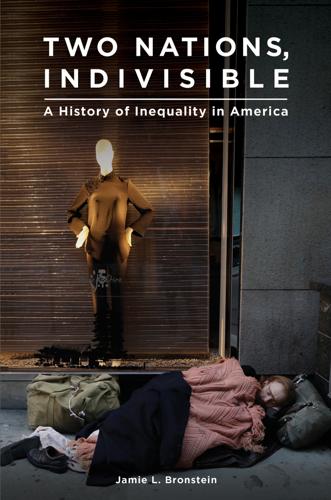
Two Nations, Indivisible: A History of Inequality in America: A History of Inequality in America
by
Jamie Bronstein
Published 29 Oct 2016
The rise of the Tea Party, with its polarizing rhetoric about federal overreach, transformed what should have been a popular policy initiative into a nonstarter. By January 2016, the House of Representatives had taken over 60 votes attempting to repeal the Affordable Care Act.76 Despite all this, it is possible that Obamacare, as feeble a step in the right direction as it may be, will contribute to an equalization of life chances in the United States that has been going on for more than 100 years. Widespread childhood vaccination programs, clean air and water, sewer systems, and other amenities common to developed countries have been acceptable projects for American municipalities because they serve everyone; infectious disease does not stop at the boundary line of segregated neighborhoods.
…
Oregon (1908), 64 Murphy, Frank, 91 Murray, Charles, 107–108, 122 Murray, James, 94 Murrow, Edward R., 98, 101–102 Nat Turner’s Rebellion (1831), 32 National Association for the Advancement of Colored People (NAACP), 53, 72–73, 84 National Industrial Recovery Act (NIRA), 81–82, 89, 94 National Labor Relations Board (NLRB), 90 National Reform Association, 17, 27, 82 National Union of Manufacturers, 74 National War Labor Board, 73 National Welfare Rights Organization (NWRO), 110 Native Americans, 13, 26, 33, 58, 103, 131 Neoliberalism, 117, 124, 133 New Deal, 77–78, 80–84, 95, 108; African Americans and, 82–84; banking, 81, 89; business regulation, 81–82; labor regulation, 83–84, 90; legacy of, 91, 131; opposition to, 89–90; relief programs, 82 New Federalism, 118–120, 122–124 New Nationalism, 60–61 Nixon, Richard M., 108–110, 128 Noble, Robert, 87 Norquist, Grover, 119 North American Free Trade Agreement (NAFTA), 130 Nozick, Robert, 98, 112–114 Obama, Barack, 138, 149–150 Obamacare, 148–150 Office of Economic Opportunity (OEO), 105–106, 116 Occupy Wall Street, 133, 140–142 Office of Faith-Based and Community Initiatives (OFBCI), 134–135 Olney, Richard, 54–55 Omaha Platform (1892), 43–44 Oxley, Lawrence, 84 Paine, Thomas, 6, 11–13, 49, 68 Palmer, A. Mitchell, 74 Panic of 1819, 14 Panic of 1873, 35, 38–40 Panic of 1893, 35, 53–55 Patient Protection and Affordable Care Act (2010), 148–150 People’s Party, 35, 43–44 Piketty, Thomas, 138 Program for Better Jobs and Income (PBJI), 111–112, 116 Progressive Party, 61, 63 Progressivism, 57–67, 76, 153; African Americans, 70–73; education and, 60; government and, 60–62; journalism, 59–60, 67–70; protective legislation, 64–65; racism, 70–72, 95; voluntary organizations, 65–67 Populist movement, 35, 43–44 Pound, Roscoe, 90 Poverty: antebellum, 19–20; elders and, 85, 87–88, 103; Great Recession and, 134, 139; marriage and, 121, 126, 134; post–World War II, 99, 101, 103–104, 121–123; Progressive Era, 65; rates, 106–108; War on, 98, 104–108 Powderly, Terence, 41 Public Works Administration (PWA), 82 Pullman Strike, 55 Racism, 70, 82, 93, 103 Radical Republicans, 36–39 Railway workers, 40, 82 Randolph, A.
…
Jones, Katharine W. V. Bradley, and Jonathan Oberlander, “Pascal’s Wager: Health Insurance Exchanges, Obamacare, and the Republican Dilemma,” Journal of Health Politics, Policy and Law vol. 39, no. 1 (2014): 97–137. 75. James Tobin, “The Case for an Income Guarantee.” The Public Interest vol. 4 (1966): 31–41, at 40. 76. Jones, Bradley, and Oberlander, “Pascal’s Wager,” 127; Deirdre Walsh, “House Sends Obamacare Repeal Bill to White House,” available online at http://www.cnn.com/2016/01/06/politics/house-obamacare-repeal-planned-parenthood/, accessed February 1, 2016. 77. Ron Haskins, “Moynihan Was Right: Now What?”
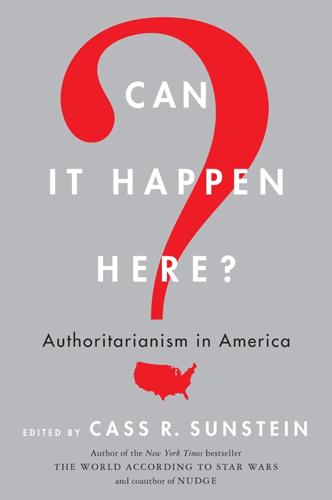
Can It Happen Here?: Authoritarianism in America
by
Cass R. Sunstein
Published 6 Mar 2018
Just like in Granovetter’s model, if other countries hold firm, the impact of the US withdrawal may be minimal. But if even a few other countries use the US withdrawal as an excuse to withdraw themselves, then Trump’s action could trigger a cascade of defections leading to the complete unraveling of the pact. Likewise, the stability of the health insurance marketplaces under the Affordable Care Act (otherwise known as ACA or Obamacare) depends on essentially the same dynamics. If, say, Congress takes away subsidies and the individual mandate, the cost of health insurance will rise, leading healthier people to drop their insurance. The costs of covering the remaining, sicker, people will then also rise, causing some companies to raise prices or to drop out of the market, thereby reducing competition and raising prices even further.
…
And then, having presumably absorbed that lesson, they declined to intervene aggressively in Syria, only to watch helplessly as that ruthless dictator proceeded to unleash the world’s worst humanitarian crisis since World War II—a crisis that is now fueling terrorist actions far beyond the region. Even in the matter of his signature domestic achievement—the Affordable Care Act (aka Obamacare)—Obama failed to anticipate the relentless hostility with which it would be greeted by conservatives, and which at the time of writing continues to threaten its survival. Obama himself seems to have recognized the difficulty of his approach to problem solving, conceding in an interview (Lewis 2012), “Nothing comes to my desk that is perfectly solvable.
…
Index The pagination of this digital edition does not match the print edition from which the index was created. To locate a specific entry, please use your ebook reader’s search tools. Abrams, Jacob, 437 Ackerman, Bruce, 459–60 “States of Emergency,” 221–31 Adams, John, 430, 431, 432 Adventurism, 421–22 Affirmative action, 241, 243, 256, 320 Affordable Care Act. See Obamacare Agenda-setting, 89 Albright, Jonathan, 88 Alien Act of 1798, 430–32 Alien Registration Act, 442 Alliance for Securing Democracy, 95–96 American Civil Liberties Union (ACLU), 315, 319 American Civil War, 139, 432–33 American exceptionalism, 57–58, 142, 170–71 Amidala, Padmé, 392 Analogies, 303 Analogies at War (Khong), 303 Anarchy, 42–43 Anceau, E., 287, 296, 298, 300, 301, 303, 306–7 Andic, Suphan, 45–46 Andrew, Christopher, 84 Andropov, Yuri, 82, 85 “Another Road to Serfdom: Cascading Intolerance” (Kuran), 233–75 Antifederalists, 62–64, 66, 75–76 Arab Spring, 140, 388 Articles of Confederation, 59–61, 64 Associations, 236, 237, 263 Attack on Pearl Harbor, 318, 438, 439 Atwood, Margaret, 138–39 Austria, 177 Authoritarian dynamic, 179–81, 185–86 EuroPulse survey and analysis, 188–209 Authoritarianism civil liberties vs., 429 conservatism compared with, 181–84 impact on populism, 201–3 steps to, 365–66 what it does, 184–85 when it does this, 185–88 “Authoritarianism Is Not a Momentary Madness, but an Eternal Dynamic within Liberal Democracies” (Stenner and Haidt), 175–219 Authoritarian Personality, The (Adorno), 183 Authoritarian predisposition, 179, 180, 187, 191–94, 196, 197, 203, 215–16, 219n Authoritarian rule, and Trump, 2–16 Authorization for Use of Military Force (AUMF), 224 Authorization of Regulatory Force and Adjustment (ARFA), 136–37, 144 Autocracy, 24, 140, 154, 267 psychology of, 279–84 Availability cascade, 251 Availability chambers, 249–58, 261–62 Availability heuristic, 251–52 Background circumstances, 344, 348 Balkin, Jack M., 452 “Constitutional Rot,” 19–35 Bannon, Steve, 41 “Basket of deplorables,” 242 Bastid, P., 296, 297, 300 Beattie, James, 335–36, 338 Beaumont, Gustave de, 291–92 Beck, Glenn, 243 Behavioral economics, 341–43 Berlusconi, Silvio, 147, 277 Berton, H., 296 “Beyond Elections: Foreign Interference with American Democracy” (Power), 81–103 Biases, 341–43, 348 Bicameralism, 70, 71, 72 Biddle, Nicholas, 221, 440 Big Five personality traits, 183 Big government, 38, 47, 50–53, 268 Bill of Rights, 79 Black, Hugo, 442 Black Lives Matter, 93, 190, 258 Black sites, 115, 124 Blanc, Louis, 286 Born rulers, 280–82 Brandeis, Louis, 437, 445 Brandenburg v.
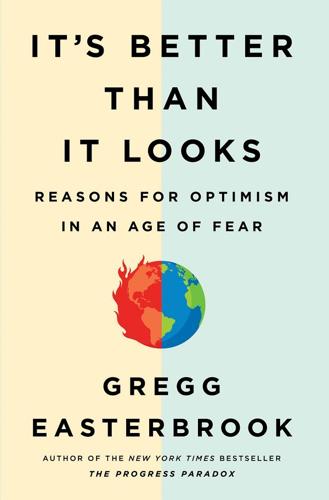
It's Better Than It Looks: Reasons for Optimism in an Age of Fear
by
Gregg Easterbrook
Published 20 Feb 2018
Many contemporary social welfare programs have this result—voters want both low taxes and expensive benefits that from their point of view are free or nearly so, resulting in voters showing anger toward government even as life gets better. During the Barack Obama presidency, the Affordable Care Act sought to expand health insurance support to the working class and lower middle class; like Medicare and Medicaid, functionally ObamaCare was an income-transfer program in which the wealthy are taxed so working-class and lower-middle-class persons can avoid an expense. Little commentary took into consideration that the economic role of ObamaCare was to increase the buying power of the working- and lower middle classes by covering a cost they previously paid. Under Obama, eligibility for food stamps and disability subsidies was broadened, transferring more income; a 1994 requirement that welfare recipients make a bona fide attempt to find work was suspended; federal subsidies for unemployment compensation were increased, while the benefit period was extended from half a year to two years, a major act of assistance to the working class that many Americans don’t even know occurred.
…
High-quality hospitals and health clinics, once mainly for the privileged, increasingly are open to everyone: in most of the European Union and in Japan, sick people are admitted to hospitals regardless of ability to pay, while in the United States, emergency rooms accept patients regardless of ability to pay. During the US debate about the Affordable Care Act, popularly known as ObamaCare, commentators on both sides referred to the legislation as providing health care. What it provides is insurance coverage; health care is already provided, at least to anyone in medical distress. That anyone can get high-quality health care, rather than the rich being in teaching hospitals while the poor are in dingy charity institutions, has been a boon to public health.
…
In the sixty days between when I wrote the reference to space rocks in the main text and when I wrote this footnote, 282 near-Earth asteroids were discovered. Index acid rain, 242 cap-and-trade system and, 45, 46 market forces and, 46 sulfur dioxide as, 49 Adams, Henry, 197, 198 Affordable Care Act. See ObamaCare Africa disease in, 25, 39 food production in, 9–11 longevity in, 32 aging, 203, 271–272 air pollution, 236, 242 car emission controls and, 60–61, 147 in China, 19, 58 Clean Air Act and, 62 coal-fired power plants and, 58–59 death from, 30 in India, 19, 59 in Iran, 59 reformulation of fuel and, 59–60 in Seoul, 58 sulfur dioxide in, 49 in US, 60–63 See also acid rain; greenhouse gas air travel Boeing and, 64, 73, 276 intercontinental, 25 manufacturing improvements and, 73 safety of, 154 technology and, 154–155 Allison, Graham, 133 American Civil War, 18 anecdotes, 218–220 Angell, Norman, 131–132, 133–134 animals, 42, 47–48 asteroids, 279–280 Ausubel, Jesse, 15 on carbon dioxide, 235–236 resource use and, 161 speed of travel for, 162–163 on technology, 161–162 authoritarianism, 167–168, 182 Autor, David, 79 Bar-Tal, Daniel, 283–284 Bastiat, Frédéric, 104 Bazelon, Emily, 221 Beck, Ulrich, 141, 144, 147 Big Sort communities, 222–223 Bill and Melinda Gates Foundation, 9–10 bird species, 42, 47–48 black-taggers, 264 Boeing, 64, 73, 276 Borlaug, Norman, 3 career of, 6 high-yield agriculture of, 7–8, 9 organic fertilizers for, 7 wheat cross-breeding by, 6–7 Brexit referendum, 204, 209, 217 buying power, 85–86, 87, 246, 249 capital punishment, 116, 155–156 carbon dioxide, 50, 231–232 Ausubel on, 235–236 public health and, 62 carbon tax, 240–242 Carnation Revolution, 165 cars, 52, 65, 141 developing world and, 142–143 drunken driving, 145 emission controls on, 60–61, 147 fossil fuels and, 147–148 gas mileage of, 147–150 greenhouse gas emissions for, 147, 148, 151 Honda manufacturing, 75 horsepower reduction for, 150–151 reformulation of fuel for, 59–60 road-rage behavior and, 151 self-driving, 152–154 Sivak on, 147–148, 149 technology and, 143–149, 152–154, 162 traffic deaths, 28, 142–143, 145–146 Carter, James, 56 catastrophism, 20–21, 221, 283 Cather, Willa, 225 CEO pay, 252–254 chemical and biological weapons, 26–27 China, 133–134, 283 air pollution in, 19, 58 coal-fired power plants in, 58–59 democracy and education in, 170 extreme-poverty in, 20 greenhouse emissions in, 50–51 inequality in, 245–246 internet in, 176 life expectancy in, 32 manufacturing employment in, 78 Paris Agreement and, 243 Shenzhen, 15–16 smoking in, 35 water in, 13 CIMMYT.
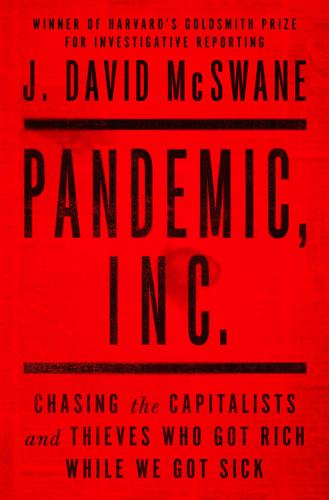
Pandemic, Inc.: Chasing the Capitalists and Thieves Who Got Rich While We Got Sick
by
J. David McSwane
Published 11 Apr 2022
A Abbott, Greg, 171–180 “bathroom bill” and, 175 Davis, Sarah and, 175–176 disengaged with the legislature, 175 executive bureaucracy and, 171–172 lockdown and, 155, 176–180 on mask mandates, 177 Obama administration and, 173–174 Operation Jade Helm 15 and, 173–174 Afeyan, Noubar, 237 Affordable Care Act. See Obamacare (Affordable Care Act) AIDs, healthcare budget and, 17 AirBoss of America, 88–89 Air Force Reserve, 251 Alston, Rossie Jr., 250, 253–256 Amazon, masks found on, 42, 143 AMSCAN Inc., 210 anthrax treatment, 7, 18–19 antigen tests, 182 anti-vaccination industry/propaganda, 219–224 Apex Growth Solutions LLC, 213–214 ASPR (Office of the Assistant Secretary for Preparedness & Response).
…
After winning control of the House amid the Tea Party wave, Republicans had united to combat anything then President Barack Obama tried to do. Atop the kill list was the Affordable Care Act, Obama’s defining legislation, passed the year before when the Democrats controlled Congress. The ACA, or Obamacare, sought to bring healthcare benefits to millions of Americans through an expansion of federal health insurance programs and a subsidized private exchange. Even though Obamacare was projected to lower the nation’s overall healthcare costs and decrease the national deficit, Republicans opposed it, citing a philosophical devotion to small government and minimal taxes.
…
See National Institute for Occupational Safety and Health (NIOSH) nitrile gloves, 115, 205 nonessential businesses closure of, 8–9 New York City and, 71 Texas lockdown and, 176–177, 178–179 nonprofit nursing homes, 241 North Carolina, 46–47 Novavax, 237 nurses, 6, 121, 241, 245, 246 nursing homes, 239–248 O Obama, Barack/Obama administration Abbott, Greg and, 173–174 Bowen’s warnings about mask shortage to, 25 budget request for HHS, 17 H1N1 swine flu epidemic and, 20 Strategic National Stockpile and, 16, 17–19 Obamacare (Affordable Care Act), 14–15, 44 Occupational Safety and Health Administration (OSHA), 10–11 “Operation Jade Helm 15,” 173–174 Operation Warp Speed, 234, 236 Oregon, 46 Oren-Pines, Yaron, 59 P Pakistan, 146 Paltrow, Gwyneth, 223 Pandemic and All-Hazards Preparedness Act (2006), 44 pandemic preparedness.
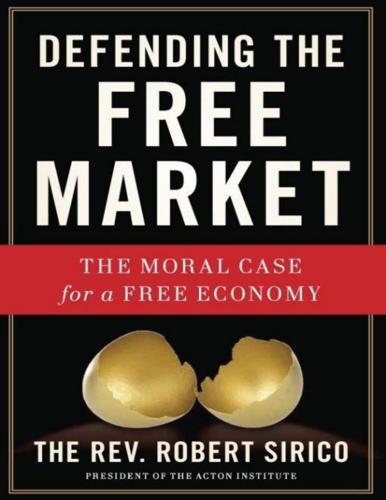
Defending the Free Market: The Moral Case for a Free Economy
by
Robert A. Sirico
Published 20 May 2012
See also freedom economic personal Lima loans Los Angeles Lutherans M Mackinac Island, Michigan Maimonides, Moses Manichaeism Mao Zedong Marcuse, Herbert market, the Marx, Karl Marxism materialism Matthew, Gospel of Medicaid Medicare mercy Methodists Michelin Company, The Michelin, Francois Middle East, the missionaries Missionary Earthkeeping Model T, the Monopoly Moore, Michael morality mortgages Mother Teresa Muraya, Eva Mystery of Capital, The N National Institutes of Health Nazism New England New Testament, the New York City Nicaragua Nobel Prize, the North Korea North Vietnamese Communism O Obama, Barack Obamacare Occupy Wall Street Olasky, Marvin Opitz, Reverend Edmund P paganism Parris, Matthew Patient Protection and Affordable Care Act. See Obamacare Paul (apostle) pension plan Peru Peter (apostle) philanthropy PICO National Network Pilgrims, the Pinckaers, Servais-Théodore Plague of Cyprian, the Plato Pol Pot Pope Benedict XVI Pope John Paul II (the Great) population poverty PovertyCure profit property prosperity Protestantism Proudhon, Pierre Pyongyang Q Qwest R Rand, Ayn Rachmaninoff reason (intellectual sense) Reeves, Thomas redistribution refugees regulations relativism resources Revelation, book of rights to health care human rights personal rights vs. privileges to property Rise of Christianity, The Risse, Guenter B.
…
The government attempts to distribute scarce health care resources without allowing a free market to set prices—and ends up creating more scarcity as it drives a physician’s career into an early grave! If this is what compassion looks like, heaven save us from it. In 2009, when health care reform was in the air but before the passage of the Patient Protection and Affordable Care Act (what became known as Obamacare), business executive David Goldhill wrote a provocative article in the Atlantic magazine.5 Goldhill had lost his father to an infection acquired at a hospital in New York City. Goldhill’s experience and subsequent investigation alerted him to major problems in American health care, problems that persisted amidst enormous financial and technological riches.
…
Consider the mandate issued by the Obama administration’s Department of Health and Human Services in early 2012, requiring religious institutions to provide abortifacient drugs, sterilization, and contraception coverage as part of their health insurance programs even if those religious groups are morally opposed to doing so. The fact that a seventh of the nation’s economy had already been placed under the control of the federal government by Obamacare—the fact that so many in our culture were comfortable with such a massive government intervention in the private sector—made it much easier for HHS to issue such a mandate. It is very instructive to review the progress of the passage of Obamacare. It was initially supported by the American Bishops’ conference, but eventually lost their support out of fear that it lacked a sufficient “conscience clause” exempting Church institutions from covering services deemed immoral by the Church.
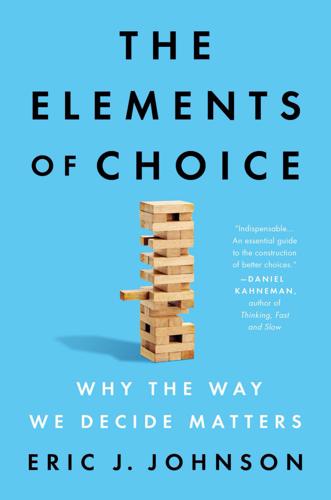
The Elements of Choice: Why the Way We Decide Matters
by
Eric J. Johnson
Published 12 Oct 2021
See describing options options trading, 285–89 order (ordering), 185–220 by attributes, 211–14 election ballots, 186–90 Expedia search, 199–202 on menus, 192–94, 214–20 Netflix, 269–70 primacy, 191–99, 206–7, 208–9 recency, 191–92, 202–8 visuals, 208–11 organ donations, 107–22, 157–58, 338–39n across countries, 109–10, 110, 111–14 alternatives, 117–22 defaults, 112–17, 120, 120–21, 151–52 incentives and, 117–18, 339n opt-in condition, 112, 114, 115, 116, 120, 121 opt-out condition, 112–16, 117, 119, 121, 127 out-of-pocket costs, 174–76 overdraft protection, 5–6 OxyContin, 317–18 Packard, Vance, 300 Pailhès, Alice, 305 Pandora, Music Genome Project, 277 “paradox of choice,” 167 Parag, Pathak, 162 path comparisons, 35–39, 36 path integration, 35–39, 36 Pathways to Technology School, 183 Patient Protection and Affordable Care Act (Obamacare). See Affordable Care Act payday loans, 127–28 p-curves, 341n Pension Protection Act of 2006, 129–30 persistent defaults, 152–53, 155 personalized defaults, 150–55 p-hacking, 341n physicians. See doctors Picwell, Inc., 281 plausible paths, 30–53, 264, 319–20 Amazon gift certificates, 34–35, 39–40, 41 Copenhagen Airport exit, 30–32, 31 dating sites, 44–52 doctors and generics, 11 finding fluency, 41–44 health insurance, 180–81 larger-later outcome, 34–35, 37, 38 Netflix, 269 path comparison, 35–39, 36 path integration, 35–39, 36 to patience, 33–41 seeing clearly, 52–53 smaller-sooner outcome, 34–35, 37, 39 Sullenberger and Flight 1549, 23–24 use of term, 23, 30 polarization, 323–24 political forecasting, 291–93 Pope, Devin, 68–69 Pope, Jaren, 68–69 pop-ups, 9, 266–67 Posner, Richard, 117 Poterba, James, 199 Practice Fusion, 317–18 preference assembly.
…
You get the uneasy feeling that your selections will affect what insurance people will choose, but you aren’t sure how. You can see that the designer’s job is daunting. A health care website is not a random example, of course. Starting in October 2013, 8 million Americans chose health insurance for the first time as part of the Patient Protection and Affordable Care Act, also known as Obamacare. Ignore, if you can, the fact that the rollout was a technological disaster or that the topic remains politically fraught. I led a team that did research looking at what, for me, was the real challenge: presenting policies to people in a way that would let them buy insurance that met their needs at the best possible price.
…
There is no simple rule for providing the right number of options, but a good designer can help by making choices more fluent, presenting the right set of options, and paying close attention to that sweet spot between an accurate set of options and an overwhelming one. How to Present More Choice On October 1, 2013, many middle-class and poorer Americans woke up to a new world: they could now buy health insurance, some of it heavily subsidized, through a set of exchanges. The Patient Protection and Affordable Care Act (otherwise known as Obamacare) was, in the overheard words of then vice president Joe Biden, “a big f—ing deal.” But the optimism of the opening days was quashed by a series of very visible missteps. Many of the exchanges suffered information technology meltdowns, with people facing long waits to access websites made unresponsive by excessive demand.
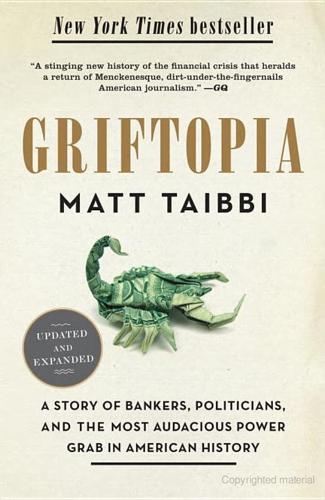
Griftopia: Bubble Machines, Vampire Squids, and the Long Con That Is Breaking America
by
Matt Taibbi
Published 15 Feb 2010
In fact, it might very well have been the worst bill ever to make its way through both houses of Congress. No, what the near failure of Obamacare represented instead was a colossally depressing truth about the American political system, which is that our government is so dysfunctional that it can no longer even efficiently sell out to the private interests that actually run things in this country. Taylor was wrong about the bill. But he was right, too. Something was long gone. Obamacare had been designed as a coldly cynical political deal: massive giveaways to Big Pharma in the form of monster subsidies, and an equally lucrative handout to big insurance in the form of an individual mandate granting a few already-wealthy companies 25–30 million new customers who would be forced to buy their products at artificially inflated, federally protected prices.
…
The result was a new law that will radically remake the faces of both the federal government and the private economy and also ratify the worst paranoid fears of both ends of the political spectrum. The right-wing teabagger crowd spent all of 2009 protesting Obamacare as a radical socialist redistribution, and you know what? They weren’t all wrong, although the people who wrote this bill were about as far from being socialists as people can be. Meanwhile the castrated left wing, the constituency that worked so hard to get Barack Obama elected in the first place, suddenly perceived Obamacare as a crypto-fascist fusing of state and private power, an absurdly expensive capitulation of democratically elected officials to concentrated private interests.
…
Obamacare had been designed as a coldly cynical political deal: massive giveaways to Big Pharma in the form of monster subsidies, and an equally lucrative handout to big insurance in the form of an individual mandate granting a few already-wealthy companies 25–30 million new customers who would be forced to buy their products at artificially inflated, federally protected prices. The essence of Obamacare was two ruthless power plays fused at the hip. It was the federal government seizing control of a sector of America’s private industry worth about 16 percent of GDP. And it was that same sector of private industry in turn seizing permanent control of about 8 percent of America’s taxable income, for converting to private profit.
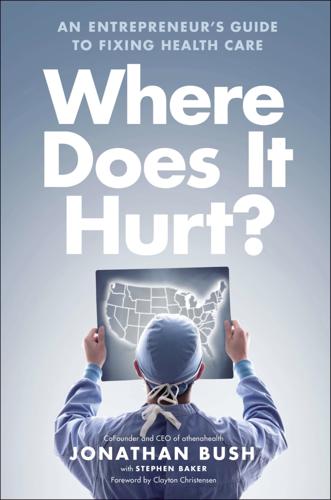
Where Does It Hurt?: An Entrepreneur's Guide to Fixing Health Care
by
Jonathan Bush
and
Stephen Baker
Published 14 May 2014
Athenahealth thrives because we fulfill the mission we laid out at the very beginning: We handle the busywork that doctors absolutely hate—the stuff they suck at. Through this on-the-job education, I have developed ideas about how to remake health care in America—or at least how to start. The Affordable Care Act—commonly known as Obamacare—is widely referred to as health care “reform.” But it has focused the nation’s attention largely on the demand side of the issue: providing health care for another 30 million or 40 million people. Most of the reforms, however, were watered down by lobbyists protecting the incumbents.
…
But a lot of it is technology they never really wanted, which they’ll eventually throw out. While I was working on this chapter, I had a chance to talk with Bob Kocher. He’s a doctor and is now a partner at the venture firm Venrock, working on health care tech investments. In 2009, he worked for the Obama administration and wrote most of the original Affordable Care Act. You might be surprised to learn that Bob and I agree broadly about the market reforms needed for health care (though he sees a larger role for government than I do). In any case, I wanted to hear it from Bob: What went wrong? Here are some excerpts of our conversation. Bush: Why does the ACO have to be 75 percent owned by doctors?
…
INDEX The page numbers in this index refer to the printed version of this book. The link provided will take you to the beginning of that print page. You may need to scroll forward from that location to find the corresponding reference on your e-reader. Accountable Care Organization (ACO), 71–72, 74–75 Adirondacks, 10, 84, 122–24, 130, 132 Affordable Care Act, 5–6, 74, 78 aging population, 188, 205–6 Aidin, 205 Albany Medical Center, 132 Albuquerque, New Mexico, 38–39, 53 Alderman, Frank, 109 Amazon.com, 29, 89, 154, 161 ambulance service, 1–3, 9, 18–19, 75, 106, 152–53, 160, 205 American College of Emergency Physicians, 110 American College of Obstetricians and Gynecologists, 35–36 American Medical Association, 175 Amgen, 76 antikickback laws, 58, 70–71, 126, 195–97 AOL, 150 Apple Inc., 42, 95, 99, 102, 107, 150, 154–55, 176, 203 apps.
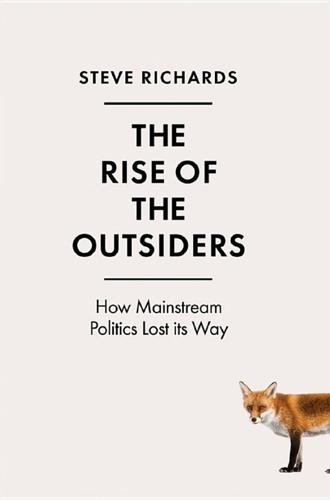
The Rise of the Outsiders: How Mainstream Politics Lost Its Way
by
Steve Richards
Published 14 Jun 2017
In the same month his National Security Adviser, Michael Flynn, was forced to resign over contacts with Russia made before Trump’s term had begun. Trump was adamant that Flynn had done nothing wrong, but was compelled to accept his resignation. The following month, in March 2017, Trump was forced to drop his plans to scrap Obamacare – Barack Obama’s attempt to make healthcare more freely available to those on lower incomes. Before his election victory, and in the immediate aftermath, Trump had proclaimed confidently that the scrapping of Obamacare would be ‘easy’ and ‘immediate’. That was when he was an outsider, free to say what he wanted when he wanted. By the spring of 2017 Trump was an insider discovering the powerlessness of power.
…
In addition, proclaiming an aspiration is much easier than putting together a detailed policy that will work, when implemented. Democratic politics is demanding. As The New York Times columnist David Brooks noted in the aftermath of Trump’s failure to secure support from Congress for scrapping Obamacare: ‘The new elite is worse than the old elite – and certainly more vapid.’1 Brooks was not a supporter of Obamacare, but in suggesting that Trump and his entourage were part of the Washington ‘elite’, he has wounded Obama’s successor with a near-fatal blow. Trump the outsider is condemned as being part of an elite that he views with an anti-politics disdain.
…
Obama’s biggest achievement was passing reforms to healthcare, but it took a titanic effort, and compromises that threatened to render the changes next to useless. As it turned out, the reforms were more substantial than Obama’s right-wing opponents had hoped, and some still have their eye on dismantling the Affordable Care Act that was passed in 2010. Trump has his eye on it, too. Republicans, with their newly discovered ideological zeal, never let go, even once the law had passed. ‘Why is there still such a fuss? Well, part of the problem is the fact that a Democratic president named Barack Obama passed the law,’ Obama himself declared, during various speeches towards the end of his second term, conveying a frustration at odds with the perceptions of a US president being the most powerful leader in the world.
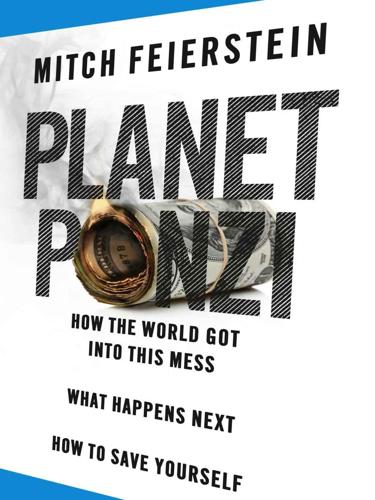
Planet Ponzi
by
Mitch Feierstein
Published 2 Feb 2012
The average employer-sponsored family health plan costs almost $14,000 a year, the highest rate in the nation.33 In short, the likely effect of Obamacare, based on the closest statewide model in existence today, is that public costs will be substantially larger than anticipated while private costs will also grow more rapidly. In short, Obamacare has taken the single worst-controlled area of government (and private) spending and severely exacerbated the problem, in the midst of recession and unrelenting funding pressures. It’s insanity cubed. * The themes explored in this chapter—the fantasy figures on which the federal budget is based, the too-low taxes, the colossal waste of the Pentagon, the fearsome costs of Obamacare—these things go a long way to explain why we are currently spending a trillion and a half dollars more per annum than we are raising in tax.
…
If these things are done right, the result will be a re-energized military. Leaner, stronger, more purposeful, more focused. Better able to carry out the tasks we assign it, less distracted by nonsense. Obamacare The Pentagon, however, is like some kind of budgetary Walmart, some fuel-sipping Japanese mini-car, in comparison with the beast which is health care. Even in those far-off days before Obamacare, the situation was appalling. Over successive administrations, through countless reforms, despite constant legislative attention, health care in the United States failed to deliver. Take, for example, the most basic duty of a healthcare system: that it extends life.
…
It needed to get a grip on costs first, deal with universal coverage second. What we got was the inverse of that. In Obamacare, we got a plan that aimed to ensure near-universal health coverage for Americans but one in which cost control was nowhere to be seen. It wasn’t even part of the design. In frank comments made after he had left Capitol Hill, David Bowen, the former health staff director of the Senate Health, Education, Labor, and Pensions Committee, said: ‘This [Obamacare] is a coverage bill, not a cost reduction bill. There is stuff here that will begin to address the issue of cost, but this is not a cost reduction bill with a bit of coverage on it—it is really trying to get coverage first.’29 Increasing the scope of health care before tackling the critical question of cost was always bound to be expensive, yet the CBO estimated that the reform would reduce the budget deficit by $119 billion over ten years.30 Now that makes no sense.
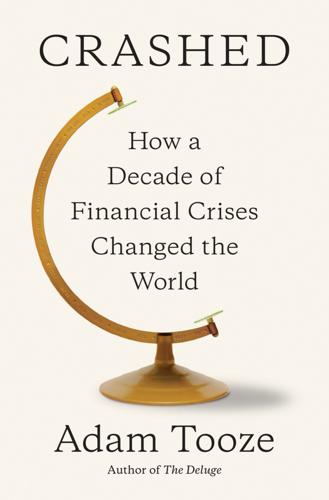
Crashed: How a Decade of Financial Crises Changed the World
by
Adam Tooze
Published 31 Jul 2018
Bush administration, Brad DeLong had wondered what was the right strategic and tactical course for the Democrats, “when there is no guarantee that any Republican successors will ever be ‘normal’ again.”54 Nine years on the question was more pressing than ever. Since 2009 the congressional Republicans had been waging relentless political war, first against the stimulus, then the Affordable Care Act, also known as Obamacare. Twice in 2011 and 2013 they had taken the debt ceiling hostage. Now, with control of both the presidency and Congress, what would they do? Obamacare was the scalp they wanted most and it ought to have been easy. As it had emerged from its congressional ordeal in March 2010, the Affordable Care Act was mangled and flawed. But for all their grim determination, in the critical first six months of the Trump presidency the Republicans could neither replace nor repeal it.
…
See National Economic Council (NEC) neoliberalism, 10, 396–97 Netherlands, 167, 193, 421 New Century Financial, 144 New Deal, 279, 280, 372 New Democracy, 323–24, 425, 429, 435, 516 9/11 terrorist attacks, 28, 115–16 Nissan, 558 Nixon, Richard, 11, 30–31, 44, 92 Norilsk, 223 North American Free Trade Agreement (NAFTA), 123, 158, 457, 571, 591, 592–93 Northern Rock, 145–46, 541 Noyer, Christian, 406 NSA, 484, 499 Nuland, Victoria, 497 Obama, Barack, 18, 35, 265, 267, 446, 565 bank CEOs meet with, 296 on bank nationalization, 293–94 Brexit and, 551 Hamilton Project appearance of, 25, 26–27 on decay of American dream, 456 economic team of, 200–201 election of, 200, 277 Eurogroup-Syriza debt restructuring confrontation and, 523–24 eurozone crisis and, 384, 412–13, 433, 434 fiscal responsibility and, 351–52 G20 Cannes meeting and, 412–13 G20 London summit and, 268, 271 reelection of, 445 on Trump election, 576 Obama administration budget compromise with Republicans, 390–92 China containment strategy of, 486–89 contingency plans for bond market panic, 284–85 debate bank nationalization, 294–95 eurozone crisis, 2010–12 and, 335–36, 338–39, 344–45, 365, 384–85, 394, 404–5, 412–13, 433–35, 440–41, 523-24 fiscal responsibility and, 350–53 home-owner relief, failure to provide, 281, 321 partisan hostility to, 278 Russian “reset” and, 488 stimulus package, passage of, 277–79, 280–82, 289–90 Obamacare. See Affordable Care Act Occupy Wall Street, 394–95, 459 oil and commodity price collapse of 2008, 222–23 of 2014, 503–4, 601 OMT. See Outright Monetary Transactions (OMT) 1Malaysia Development Bank (1MDB), 259–60 O’Neill, Paul, 36 opioid epidemic, deaths from, 457 Orban, Viktor, 492 originate-to-distribute mortgage lending system, 48 Orszag, Peter, 25, 26, 29, 30, 35, 200, 284, 290, 352, 461, 464 Osborne, George, 348–49, 350, 405, 550 Outright Monetary Transactions (OMT), 441, 442 Pàf, 535–36 Palin, Sarah, 3, 175, 368 Panasonic, 159 Pandit, Vikram, 197, 198 Papademos, Lucas, 410, 425 Papandreou, George, 325, 409–10 Papoulias, Karolos, 340, 409 PASOK, 323–24, 330, 357, 376, 409, 428, 435, 516 passporting agreements, 548–49, 558 Paul, Ron, 217 Paulson, Hank, 41, 137, 138, 162, 573, 609 Fannie Mae/Freddie Mac bailout and, 172–73 Lehman collapse and, 176, 177 TARP and, 180–81, 183, 195, 196, 197 Paulson, John, 379 PDCF.
…
Indeed, among the states that benefited most from the extension of health coverage under Obamacare were Kentucky and West Virginia, diehard Trump country.55 As Trump took office, support for the ACA among the most important group of voters, Independents, had risen from 36 percent in 2010 to 53 percent.56 By the summer, when the desperate Republican congressional leadership made a last bid simply to repeal Obamacare without replacement, they had the support of only 13 percent of Americans.57 Not surprisingly, sufficient Republican moderates refused to go along. If they couldn’t repeal and replace Obamacare, what could they do? By the summer of 2017 it seemed that the incoherence of the Republicans, when faced with the complex reality of modern government, might prevent them from taking any effective action.58 The ACA fight had left little room on the legislative agenda.
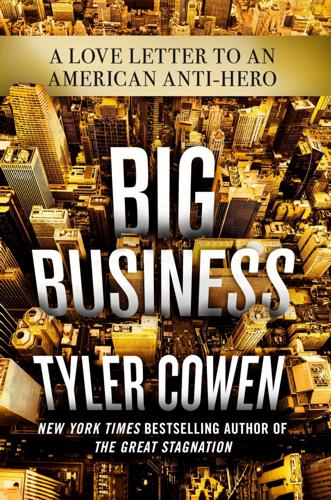
Big Business: A Love Letter to an American Anti-Hero
by
Tyler Cowen
Published 8 Apr 2019
In addition to causing higher prices, this makes it harder to go elsewhere if you are frustrated by the quality of hospital service, as many Americans are.6 These developments, to me, are the single greatest market concentration issue in the United States today, and I think the critics are on the right track there. I would suggest, however, that to some extent this market concentration is the result of heavy regulation rather than a natural development from the nature of business. Observers differ on whether we should blame Obamacare or blame Republicans for not supporting Obamacare properly (or a bit of both), but still there is no market-based reason health insurance should have become so concentrated in this fashion. Insurance companies have consolidated to deal with costly regulations, which is easier for large companies to do, and because of economies of scale in lobbying government, an increasingly important activity in America’s politicized health care sector.
…
I’m not saying that bundling all of those services into companies is necessarily a bad idea, and in any case it may be too late to undo each and every part of what the American system already has wrought. Many commentators, from both left and right, expected that Obamacare would bring a large-scale shedding of health insurance coverage away from companies and toward the Obamacare exchanges, but that hasn’t happened, and it suggests that employer-provided health insurance in America may be quite robust, for better or worse. In any case, looking to companies to provide these social welfare functions reflects yet another way we think of corporations as people or as like people in some emotionally resonant manner.
…
On the macro side, if the American government really, truly wants something done, very often it turns to business. Corporations produce most of the American military’s weapons systems and most of the country’s roads and infrastructure, and it was the tech companies that helped the government fix the initially malfunctioning Obamacare website. On top of that, if it weren’t for business, how easily could you get your Unicorn Frappuccino or whatever else has become the sweet caffeinated beverage du jour? In fact, business is just getting started. In the not too distant future, we can expect business to drive our cars for us, to manage more of our lives for us through online personal assistants, and to run our homes through sophisticated appliances that connect to the internet and talk to each other.
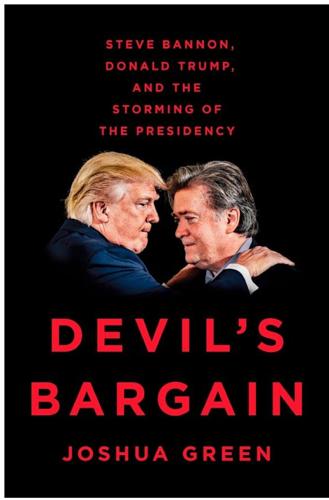
Devil's Bargain: Steve Bannon, Donald Trump, and the Storming of the Presidency
by
Joshua Green
Published 17 Jul 2017
It was a move that expressed the profound anger and frustration that had been building up in the party since at least the Tea Party wave of 2009. Republican leaders had repeatedly promised voters that if handed power they would unwind the major Obama achievements, from the Affordable Care Act to the Dodd-Frank financial reforms. And although they had gone so far as to shut down the government in 2013 in a failed bid to defund Obamacare, Republicans had controlled the House for almost five years and Obama’s programs remained intact. Republican voters had cynically been promised fast, easy solutions—so when Boehner couldn’t deliver, they were primed to chalk it up to betrayal.
…
Likely voters across New York who are upset with high taxes, poor business and economic climate, and the price tag associated with Medicaid expansion/Obamacare are open to real solutions and a job-creating governor with business leadership experience. Conway noted that while Cuomo’s favorability ratings were high, the percentage of New Yorkers who wanted to see him reelected was “at a dangerous low.” She highlighted his vulnerability on Obamacare and taxes, adding, in bold, underlined text: Cuomo’s re-elect score is positive in New York City (47%) and in the areas surrounding the city (45%), but a hypothetical “new person” wins the rest of the state by twenty points or more.
…
Trump told me he’d made this point to Ryan directly: “I said, ‘There’s no way a Republican is going to beat a Democrat when the Republican is saying, “We’re going to cut your Social Security” and the Democrat is saying, “We’re going to keep it and give you more.”’” Yet Trump’s first legislative push was for Ryan’s bill repealing the Affordable Care Act, which would eliminate health insurance coverage for twenty-four million people, cutting Medicaid, which benefits Trump’s working-class voters, to pay for high-end tax cuts. Not only was the bill deeply unpopular—a Quinnipiac poll in March found that only 17 percent of Americans supported it—but it galvanized grassroots Democratic opposition to Trump.
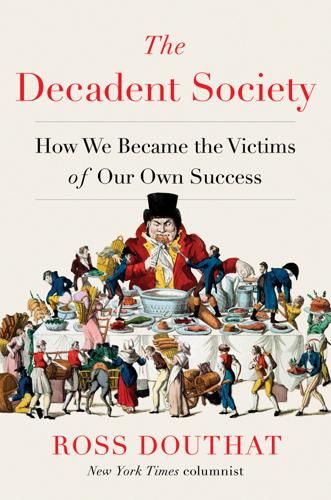
The Decadent Society: How We Became the Victims of Our Own Success
by
Ross Douthat
Published 25 Feb 2020
These patterns explain why even government programs that seem to work well enough when they are first implemented tend over time—over say, the eighty years from FDR’s heroic age of liberalism to Obama’s age of liberal frustration—to devolve into what Jonathan Rauch, in his Clinton-era book Government’s End, described as a “large, incoherent, often incomprehensible mass that is solicitous of its clients but impervious to any broad, coherent program of reform.” The Obamacare case study is useful here, not least because it’s a rare example where a meaningful reform, as opposed to just a deficit-funded tax cut or spending boost, did ultimately pass—unlike Clinton’s health care fiasco, or Bush’s doomed Social Security reform effort, or the Trump administration’s Obamacare repeal-and-replace effort, or every attempted immigration reform deal. The opposition to the Obama health care bill was obviously ideological, reflecting a clash between libertarian and social democratic principles.
…
Clicking on a page number will take you to the ebook location that corresponds to the beginning of that page in the print edition. For a comprehensive list of locations of any word or phrase, use your reading system’s search function. Abe, Shinzo, 25, 86–87 abortion, 99, 100, 149–50 decrease in, 150 as hidden violence, 150 Achebe, Chinua, 209 ADHD, 126 Affordable Care Act, 68, 69–70, 73–74, 76 Afghanistan War, 70, 150 Africa: birthrates in, 197, 198, 207 Christianity in, 228–29 desertification of, 196 mass migration from, 196, 197–99, 208 political turbulence in, 194, 199 as uniquely nondecadent, 192, 197–99, 207 aging populations, 181 of China, 167 of developed world, 34, 56–58, 60, 66 of Europe, 198 of Japan, 125 productivity and, 57 of US, 60, 193 see also demographic change, weight of Alexander, Scott, 24 Al Qaeda, 113, 114, 160 Altman, Robert, 95 Alzheimer’s disease, 211 Amazon, 105 American Challenge, The (Servan-Schreiber), 42 American exceptionalism, 25 Anders, Bill, 231 Anderson, Kurt, 91–93, 104 animism, 225 antidecadence, political and social risks of, 178–80, 182–83 antidepressants, 126 Antifa, 113, 133 anti-inflationary policies, 28, 29 antitrust policy, 28, 29 antiwar protests, of 1969, 129, 131 anxiety, among teenagers, 123 apocalyptic thinking, 98 Apocalypto (film), 189–90 Apollo moon program, 1–2, 38, 90, 213, 236 criticisms of, 5–6 as economic turning point, 24 and sense of religious mission, 231–32 technological stagnation since, 36–37, 46 “Are Ideas Getting Harder to Find?
…
The opposition to the Obama health care bill was obviously ideological, reflecting a clash between libertarian and social democratic principles. But most Americans aren’t thoroughgoing libertarians; indeed, even most Tea Partiers weren’t thoroughgoing libertarians. The real reason that Obamacare opposition became so fierce, and the debate so toxic, was that the health care system as it exists is as Rauch described government as a whole: a huge sprawl of client populations and powerful interest groups, all of which have a strong financial stake in the existing system, and all of which have spent decades building up the lobbying shops and inner-ring knowledge required to either frustrate or redirect reform.
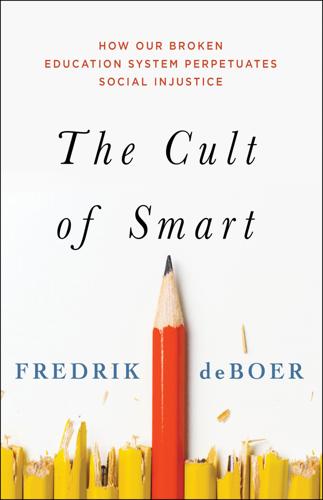
The Cult of Smart: How Our Broken Education System Perpetuates Social Injustice
by
Fredrik Deboer
Published 3 Aug 2020
Clearly, the current American system is a mess, a hodgepodge of private profits and public expenditures, with excellent care for those who can afford it and vast swaths of people who are either completely uncovered or whose nominal coverage is of such poor quality that it does little to provide tangible benefits. I supported the Affordable Care Act (Obamacare) when it was being debated, and I still think on balance we’re better off with it than before. But as others have noted, it is precisely the aspects of the law that are not market based—protection of those with preexisting conditions and expansion of Medicaid—that have succeeded. Meanwhile the ballyhooed market mechanisms, the exchanges on which one can purchase private insurance, have largely failed, and the law has not bent the cost curve (that is, reduced the absurd expense of health care in the overall American economy).
…
absolute learning and blank-slate philosophy of education definition of and education journalism and Flynn effect relative learning compared with and value of college degrees Academically Adrift (Arum and Roksa) achievement and performance gaps racial achievement gaps and realistic reforms within-group variations ACT Act Now to Stop War and End Racism (ANSWER) Adam Smith Institute administrators, school adoption studies advanced degrees. See postsecondary education Affordable Care Act (Obamacare) Afghanistan, U.S. invasion of afterschool programs Alexander, Scott Alter, Jonathan alternative charter schools. See also charter schools alt-right American dream. See also “good life,” the Annie E. Casey Foundation anti-capitalist thinking anti-communist legislation anti-democratic rule anti–Iraq War movement anti-poverty programs anti–Vietnam War movement Asian Americans athletic ability automation Baby Boom bachelor’s degree backfill Battle Hymn of the Tiger Mother (Chua) behavioral genetics and combating pseudoscience and denial of race science and equal opportunity and heritability of intelligence and individual versus group differences and phrenology Three Laws of Behavioral Genetics unshared environment being a person under socialism benchmarks and criterion referencing and No Child Left Behind and “no excuses” model of education Bergmann, Linda bias selection bias survivorship bias Big Ten schools Bill and Melinda Gates Foundation and Common Core influence of Bill of Rights Black Death “blame public schools” school of thought “blame the teachers first” school of thought and education reform movement and meritocracy and standardization Blank Slate, The (Pinker) blank-slate philosophy of education and absolute learning and behaviorism cruelty of and Dewey, John and equality of opportunity and matching schools to students and relative learning and tracking Booker, Cory Breitbart Brookings Institution Brown v.
…
No Child Left Behind (NCLB) “no excuses” education reform norm referencing North American Free Trade Agreement Nurture Assumption, The (Harris) nurture versus nature debate Obama, Barack on education as anti-poverty program on education as economic leveler on education gaps Education Secretary Arne Duncan and end of No Child Left Behind on equal opportunity and goal of more college-educated youth 2012 State of the Union address universal pre-K initiative Obamacare (Affordable Care Act) Ocasio-Cortez, Alexandria Office, The (television program) Office Space (film) opportunity, equality of and behavioral genetics and blank-slate philosophy of education and Dewey, John impossibility of and income inequality and liberalism and mobility and morality Obama, Barack on and poverty and progressivism and racism outcomes, equality of outcomes, plasticity of Palmer, Brian parenting and behavioral traits competitive parenting helicopter parenting and home environment and public policy under socialism and twin studies and universal childcare People’s Policy Project performance and achievement gaps pharmacy education phrenology Pinker, Steven The Blank Slate plasticity of outcomes Plomin, Robert positive liberty posters, aspirational and motivational postsecondary education degree creep and inequality master’s degrees and master’s programs PhDs professional degrees poverty and achievement gaps “controlling for poverty” “culture of poverty” and early childhood and equality of opportunity and mobility and selection effects and universal basic income and universal childcare premature birth professional degrees Programme for International Student Assessment (PISA) progressivism and discomfort with inherent ability and education as economic leveler and educational funding and equality of opportunity and Medicare for All on negative and positive liberty and social inequality and social mobility and student loan debt forgiveness and universal childcare and veil of ignorance ProPublica pseudoscience and behavioral genetics eugenics phrenology pseudoscientific racism public schools, blame placed on Purdue University “race realism” race science racial achievement gaps racism Act Now to Stop War and End Racism (ANSWER) and aspirations to winning and behavioral genetics durability of and equality of opportunity pseudoscientific racism and “race realism” scientific racism structural racism and veil of ignorance Rand Education Rawls, John Reeves, Richard reform.
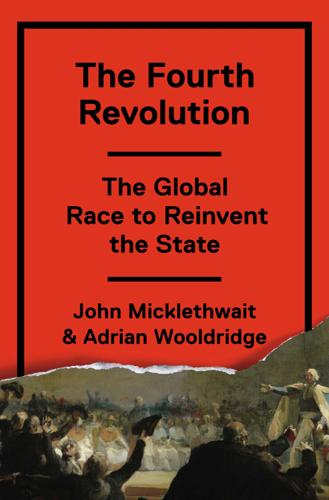
The Fourth Revolution: The Global Race to Reinvent the State
by
John Micklethwait
and
Adrian Wooldridge
Published 14 May 2014
In 1958, when the first primitive computers were being deployed, it cost the UK tax authorities about £1.16 to collect £100 of tax. Today, with computing power cheap and ubiquitous, it costs £1.14.21 Many of the worst technological foul-ups have involved health care: The rollout of Obamacare turned into a debacle because the Web site was plagued by glitches. Only six people succeeded in signing up for Obamacare on the site’s first day in operation. For the past twenty years, health departments have spent fortunes on PCs, without fundamentally changing the way they work: Most of the new gadgets were in effect slightly faster typewriters or virtual filing cabinets.
…
It cannot make sense for people who believe in the benevolence of government to prevent government from hiring the best people (or firing the worst), or to allow the government machine to be run by vested interests. Consider a startling fact that emerged during America’s fevered national discussion over the botched rollout of Obamacare: 94 percent of federal IT projects over the past ten years have failed—more than half were delayed or over budget and 41.4 percent failed completely. The Pentagon spent over $3 billion on two health-care systems that never worked properly. They failed partly because the government’s rigid employment rules prevent it from hiring IT experts and partly because its even more rigid rules about contracting out mean that it is a captive of the few suppliers who have the resources to navigate the eighteen hundred pages of legalese in the Federal Acquisition Regulation.
…
In the first decade of the twenty-first century it expanded by an average of 73,000 pages a year. From 2009 to 2011 the Obama administration produced 106 major regulations, with “major” defined as having an expected economic impact of at least $100 million a year, and thousands of minor regulations. The Obamacare health bill was over 2,000 pages long; the Dodd-Frank law on finance is 800 pages long and has 400 subsidiary regulations. The federal government requires hospitals to use 140,000 codes for the ailments they treat, including one for injuries from being hit by a turtle.19 Much of this is just Olson’s law at work—industries lobby for exceptions or regulations that, once created, justify jobs.
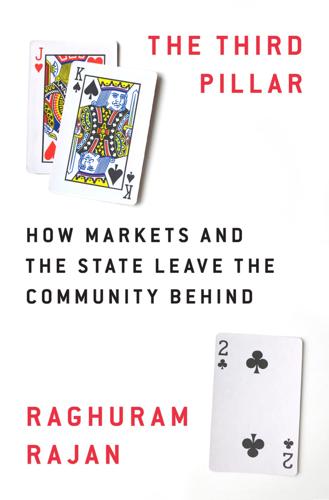
The Third Pillar: How Markets and the State Leave the Community Behind
by
Raghuram Rajan
Published 26 Feb 2019
Instead of an electorate hopeful that beneficial change was around the corner, it created one that feared change and did not trust the ruling upper-middle-class elite to look beyond their own interests. Populist politicians only needed an issue to fan the smoldering rage into flames. In the United States, it was the Affordable Care Act, also known as Obamacare. In Europe, it was immigration. We will look at all this more closely in this chapter. THE MANY FACES OF POPULISM A populist movement, as we have seen, is one that believes the ruling elite are corrupt and undemocratic, that the masses have been treated poorly, and that the system ought to be changed because the general will of the people demands it.
…
Indeed, the financial crisis triggered two essential factors that researchers find explains increased votes for populism across developed countries—economic distress as measured by an increase in unemployment and distrust in the political institutions of the country.40 All that was needed was a spark. THE AMERICAN TRIGGER In the United States, the Affordable Care Act, or Obamacare, was an important catalyst in the organizing of the Tea Party movement, a forerunner of the populist nationalist movement. Berkeley sociologist Arlie Russell Hochschild, who studied blue-collar workers in Louisiana, offers an account of Tea Party supporters’ views. As she surmises through her interviews, the white Southern male believed he had been trudging steadily in line toward the American dream, respecting the rules of the game.41 The line moved more slowly than it had in his father’s days, as economic opportunity dwindled.
…
ABCDEFGHIJKLMNOPQRSTUVWXYZ INDEX The page numbers in this index refer to the printed version of this book. The link provided will take you to the beginning of that print page. You may need to scroll forward from that location to find the corresponding reference on your e-reader. Acemoglu, Daron, 94, 185 Adele, 193 affirmative action, 300–302 Affordable Care Act (Obamacare), 144, 214, 239–41 African Americans, 137, 157–58, 229–31 Civil Rights movement and, 138, 157, 229, 230, 235 agglomeration economies, 220–21 aging populations, 260, 284, 286, 292–93, 324, 342–43, 348, 396 agriculture, 78, 121, 148–49, 152, 184, 275 AIDS, 183, 184 airlines, 161, 165, 166, 197–98 Alesina, Alberto, 137 Amazon, 178, 384 Ambedkar, B.

The Rise and Fall of American Growth: The U.S. Standard of Living Since the Civil War (The Princeton Economic History of the Western World)
by
Robert J. Gordon
Published 12 Jan 2016
Other complaints include ever-changing lists of drugs that are covered, that require high copays, or that are not covered at all.127 The complexity and restrictions of Obamacare contrast notably with the simplicity of Medicare and its single-payer system, from which most doctors and hospitals accept payments. In its effort to obtain passage of the Affordable Care Act in 2010, the Obama administration did not attempt to base the plan on the single-payer model or even to provide a public payer option, apparently fearing an onslaught of opposition from lobbyists for the private insurance industry. Although it is much too soon to gauge the effects of Obamacare on health wellness indicators such as life expectancy, it is encouraging that, as shown in figure 14–7, the long-term increase in the share of medical care spending in GDP appears to have stopped, at least temporarily, during 2010–13, even before Obamacare enrollments began in 2014.
…
And they agree with Dranove that despite cost savings and no adverse impact on health, “managed care is not very popular.”123 The long evolution of managed care with all its complexity did not change the basic facts that the U.S. medical care system remained by far the most expensive in the world while providing only partial coverage. On the eve of the passage of the Patient Protection and Affordable Care Act of 2010, better known as Obamacare, 16 percent of U.S. citizens lacked health coverage, higher than the 12 percent who had lacked insurance in 1987.124 The burden of lack of coverage has mostly, contrary to the popular narrative, fallen not on the unemployed or extremely poor, but instead on the working poor.
…
See movies Motorola 8000 (mobile phone), 431 motor vehicles: registrations of, 161–62, 376–77; See also automobiles movies, 7, 173, 198–205, 322; invention of, 197–98; television’s competition with, 410, 420–21; during World War II, 414–15 MP3 (file format), 435 Mumford, Lewis, 104 Muncie (Indiana): automobile ownership in, 165; diet in, 68; gardens in, 46; heating systems in, 126; home ownership in, 301, 303; housing in, 110–13; migration to, 101; running water in, 124; telephones in, 182; work hours in, 260 municipal water systems, 217 municipal waterworks, 123, 124 Munos, Bernard, 479 Murphy, Kevin, 243 Murray, Charles, 631, 632 Murrow, Edward R., 196, 414 music, 411; digital media for, 435–38; on phonograph records, 186–90, 204, 411; post-World War II, 427–29, 439; on radio, 192, 195, 196, 421 Myspace (social network), 456 Nader, Ralph, 400 nails, 110 narcotic drugs, 222–23 National Broadcasting Company (NBC), 194, 413 National Bureau of Casualty and Surety Underwriters, 309 National Bureau of Standards, 562 National Cancer Act (1971), 470 National Industrial Recovery Act (1933–1935), 542 National Labor Relations Act (Wagner Act; 1935), 543 natural gas, 634 NBC Symphony, 196 Nelson, Richard, 573 Netflix, 436–37 net investment, 586–87 networks: for cell phones, 430–31; Internet as, 442–43, 453–57; for medical care, 494–95; radio, 194; social, 456–57; television, 416–17, 425–26 Newcomen,, Thomas, 568 New Deal, 15, 18; legislation and programs of, 315–17; Social Security during, 516; wages increased during, 541–43, 548 new molecular entities (NMEs), 479 New Orleans, Battle of, 4 news, 433–35; Internet for, 443; movie newsreels, 200; post-World War II broadcasting of, 411; radio broadcasting of, 196; World War II broadcasts of, 413–14 newspapers, 172, 174–77; in 1870, 49; decline of, 433–35 Newsweek (magazine), 434 New York (New York): air travel between Chicago and, 396–97; air travel between Los Angeles and, 398; bacteriological laboratory in, 218; buses in, 160; early television in, 415–16; elevated trains in, 147; General Slocum disaster in, 239; housing in, 102–3; Ladies’ Protective Health Association in, 221; long-distance telephone service for, 183, 185; omnibus service in, 143–44; rail transport between Chicago and, 133, 135, 136, 140; subways in, 130, 148; tenements in, 97; Triangle Shirtwaist Factory fire in, 272; World’s Fair (1939–1940) in, 356, 363, 413, 592 New York Stock Exchange, 582 nickelodeons, 198–99, 205 Nixon, Richard, 357, 419 nonwhites: life expectancy of, 212; See also blacks Nordhaus, William: on global warming, 634; on Moore’s Law, 446; on price of light, 119; on value of health and life expectancy, 242–44, 323 nursing schools, 230 nutrition. See diet; food Obama, Barack, 628–29 Obamacare (Patient Protection and Affordable Care Act; 2010), 493–95, 496–97 obesity, 345–47, 371, 469 O’Brien, Jeffrey, 479 occupations: from 1870 to 2009, 254–56; distribution of, 52–54; gender differences in, 509–10; licensing of, 649; polarization hypothesis on, 615–16; transformations in, 249 O’Conner, Sandra Day, 505–6 The Official Guide of the Railways, 138 oil changes, for automobiles, 386 old age.
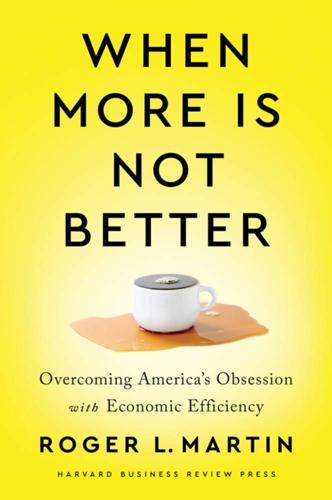
When More Is Not Better: Overcoming America's Obsession With Economic Efficiency
by
Roger L. Martin
Published 28 Sep 2020
The two political parties fight hard to put through legislation and are opposed as vigorously as possible to each other’s efforts in that vein, because once legislation is in place, it is hard to change. Think about the Affordable Care Act—aka Obamacare. For six years after its passage, the Republican party ran against Obamacare, promising to “repeal and replace.” Despite achieving the triple win of the presidency, the Senate, and the House in the 2016 election, the Republican party was incapable of either repealing or replacing Obamacare. All gamers who invested in making profits off of Obamacare will have decades to ply their profitable trade. Similarly, it takes years for stock-market operations or regulations to change, even after it is clear that the system is being gamed, partly because the hugely wealthy gamers often end up capturing the exchanges, as we saw with the NYSE and its Mahwah trading operation.
…
Kevin Morris and Peter Dunphy, “AVR Impact on State Voter Registration,” Brennan Center for Justice, 2019, https://www.brennancenter.org/sites/default/files/2019-08/Report_AVR_Impact_State_Voter_Registration.pdf. Index AARP, 192 activist investors, 155, 158–159 adaptation, 82–83, 84, 103–106, 129–130, 142–143 AdSense, 154 Advanced Micro Devices, 129 Affordable Care Act, 92 agricultural workers, 192 Ahir, Hites, 82 almond industry, 73–75 Alphabet, 134 Amazon, 134, 192 American Dream, 2 American International Group (AIG), 137 analogic reasoning, 25–26 Anheuser-Busch InBev (ABI), 123–124 anomalies, 111–112 antitrust legislation, 53–56, 152, 153 Apple iOS, 131 Argyris, Chris, 167, 178 Aristotle, 183 Aspen Publishers, 77 AT&T, 53–54, 130–131 Atlanta testing scandal, 45–46, 53 Australia, 206 auto exports, 151 Avishai, Ellie, 171 Bain & Company, 175 balance, 183–184 balanced scorecard, 129 Bank Act (Canada), 139, 143 bank bailouts, 137–138 Bank Holding Company Act, 108 bankruptcies, 97–98, 137 banks, 137–142, 151 baseball, 101–102 Bass, Jo Ann, 116, 118 Belgium, 157 bell curve, 33, 72 See also Gaussian distribution Bernanke, Ben, 78, 79 bid-ask spreads, 55–56 Bieber, Justin, 65 Black Monday, 52 Blue Chip Economic Indicators forecast, 77–78, 82 bond market, 109–111 bond-rating agencies, 109–111 Boston Consulting Group, 175 Box, George, 25 boycotts, 189, 192 Bracken, Michael, 147–149 Bridgewater Associates, 31 Bristol University, 184 budgets, 124, 126, 173, 199–200 Buffett, Warren, 157 Bush, George W., 30 business adaptation in, 129–130 proxies in, 49–53 business executives, 113 agenda for, 115–135 backgrounds of, 120–121 reductionism and, 121–122 business models, 27–29 business schools, 32, 174–176, 180 business siloes, 32, 122 business strategy, 175–176 butterfly effect, 81 buycotts, 189, 192 buying groups, 192 buy recommendations, 112–113 cable TV, 130, 131 Canada antitrust policies in, 55 financial system of, 138–142, 151 metaphor for, 26 voter registration in, 205–206 capital efficiency, 97–99 capitalism, 4, 12 See also democratic capitalism discontent with, 12–13 survival of, 210 capital markets, 50, 55, 85, 86, 99, 109–110, 112, 129, 155 capital-markets policy, 55 Cargill, 133 cash flows, 97–98 central limit theorem, 35, 60 certainty, teaching, 170–173, 181, 185 Chambers, John, 51–52 chaos theory, 81 Chavez, Cesar, 192 Chicago Board of Trade, 64, 90 chief executive officers (CEOs), 64, 86–88, 121, 155 See also business executives China, 151, 210 Churchill, Winston, 26 circuit-breaker system, 108 Cisco Systems, 51–52 citizens, 114 agenda for, 187–207 collective action by, 192–197, 207 engagement of, 198–201 interviews of, 147–148 model of, 145 passive, 198 purchasing power of, 188–192, 207 reciprocal political relationships and, 197–200 responsibility of, 189–190 voting by, 201–206 civil-law system, 105–106 Clayton Antitrust Act, 53 Clinton, Bill, 54 cloud computing, 131 clustered industries, 67–70 collapsing sand pile example, 61–62 collective action, 192–197, 207 college students, 172–173 commercial banks, 108 common-law system, 105–106 communism, 15 comparative advantage, 40–41, 56 compensation theory, 146 competition, 63–65, 131–135, 151 competition policy, 53–54 competitive advantage, 67, 71 Competitive Advantage of Nations, The (Porter), 17, 67 complex adaptive systems, 80, 176–178, 182, 211–212 See also natural systems complexity design for, 100–103 teaching about, 176–177 complexity theory, 61–62, 81 Congressional Budget Office (CBO), 31, 78, 79 connectedness, 106–113 consensus estimates, 86, 87 Consensus Forecasts, 82 consolidation See also mergers industry, 71–73 consumer protection, 54 continuous adaptation, 82–83, 105–106 Contract with America, 198, 199 Costco, 125 Cowan, George, 177 Crawford, Cindy, 64, 65 creativity-intensive jobs, 68–70 Criterion-Referenced Competency Tests (CRCT), 45–46 customer experience, 117, 122–123 customer feedback, 130, 135 customer loyalty, 27–29, 48 customer value, 130 Dalio, Ray, 31 Darwin, Charles, 129–130 data directly observable, 178–181 interpretation of, 172, 178–179 Data Resources Inc.
…
See No Child Left Behind Act neoclassical Keynesian economics, 23–24, 25 Nestlé, 192 Net Promoter Score (NPS), 28, 29, 48 network effects, 191–192 New Deal, 12, 107, 159 new-economy companies, 71 New England Complex Systems Institute, 177 New York Stock Exchange (NYSE), 64, 88–91, 92, 93 Nicomachean Ethics (Aristotle), 183 1970s, 5–12, 24 No Child Left Behind Act (NCLB), 29–30, 45, 49 nonreductionist thinking, 118–119 normal distributions, 33–38 North American Free Trade Agreement (NAFTA), 66, 150 Norton, David, 129 NYSE. See New York Stock Exchange Obamacare, 92 Office of the Superintendent of Financial Institutions (OFSI), 139–141 off-shoring, 155 oligopolies, 63 optimal financial structure, 173 options trading, 55 outsourcing, 155 Pareto, Vilfredo, 59 Pareto distribution, 46, 57, 59–76, 100 challenge of, 75–76 in companies, 71–73 of income, 161–162 monocultures and, 73–75 Parker, Jeffrey, 86 Parkland shooting, 197 participatory budgeting, 199–200 Penner, Elliot, 188 perfection, 103–106, 113, 126 performance management, 173 Pershing Square, 158 Persona Project, 2, 4, 14–16, 206 Phillips curve, 24 pitch-count restrictions, 102 platform businesses, 71 policy making long-term thinking and, 155–159 mental proximity and, 145–149 revision and, 142–145 political economy, 38 political leaders, 113–114 agenda for, 137–163 political parties, 92, 201–205 political relationships, 197–200 politicians, 197–205 politics, disengagement from, 3, 198 Porter, Michael, 17, 67, 128 power, abuse of, 152–153 power blackouts, 106–107 Power Law distribution.
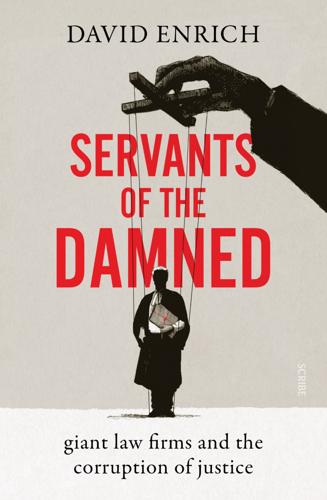
Servants of the Damned: Giant Law Firms and the Corruption of Justice
by
David Enrich
Published 5 Oct 2022
BY THE TIME THE Jones Day lawyers had started lining up Catholic groups to sue over the contraception mandate in the Affordable Care Act, the firm was already leading a multifaceted assault on the health care law. The American Lawyer, in an article detailing the firm’s willingness to brawl with the government, described Obamacare as “Jones Day’s Moby Dick.” In one case, Jones Day submitted a legal brief on behalf of three former Republican attorneys general who wanted to kill the health care law. In another, Carvin represented the National Federation of Independent Business as it sued to invalidate the Affordable Care Act’s foundational requirement that all individuals have health insurance.
…
Once, on a golf outing in London, a partner, Sebastian Orton, made the mistake of mentioning to Brogan that his wife worked for a local Labour Party group. Orton told me that Brogan started squawking about the evils of socialism. In the spring of 2012, Mitt Romney was emerging as the Republican nominee to challenge Barack Obama for the White House. Obama’s signature legislative achievement—the Affordable Care Act, otherwise known as Obamacare—promised to be a central flashpoint in the general election. Republicans were looking for any vehicle to attack it. One such avenue was the law’s requirement that employers’ health plans cover the costs of their workers’ birth control. And so Jones Day lawyers were fanning out to Catholic groups, offering to represent them pro bono in lawsuits challenging the contraception mandate.
…
ON OCTOBER 13, 2017, FOUR Jones Day lawyers signed their names to an important agreement they had spent months negotiating with the U.S. government. More than a year had passed since the Supreme Court punted on Zubik v. Burwell, the case in which Jones Day, representing dozens of Catholic organizations, had sued to invalidate the Affordable Care Act’s requirement that employer health plans cover workers’ contraception. The deadlocked court had urged Jones Day, the Catholic groups, and the government to hash out a compromise. That had proved impossible with Obama in the White House. But the Trump administration—staffed with Jones Day lawyers like Noel Francisco, who had brought the cases in the first place—was a much more conciliatory negotiating partner.
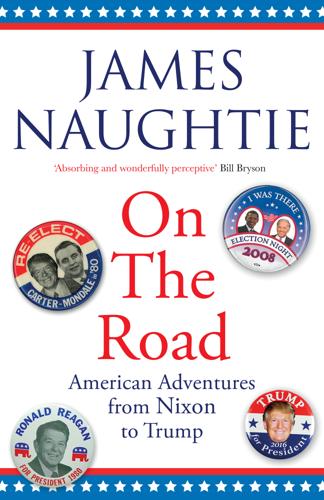
On the Road: Adventures From Nixon to Trump
by
James Naughtie
Published 1 Apr 2020
I visited a couple who lived just south of the Ohio River, with Cincinnati just over the state line. Bobby Alexander, in his early sixties, had recently retired from the army, and was helping to organise the Northern Kentucky Tea Party, appalled by Obama and all his works, especially the Affordable Care Act – Obamacare! – which had been passed six months earlier, a significant extension of healthcare benefits to millions of Americans who had no insurance, though a long way from the universal cover many reformers wanted. To Bobby it was socialism, pure and simple. We had a friendly conversation in which I asked him in passing why he thought Margaret Thatcher – a hero, of course – had made a point in her three winning election campaigns of pledging faith in the National Health Service.
…
We had a friendly conversation in which I asked him in passing why he thought Margaret Thatcher – a hero, of course – had made a point in her three winning election campaigns of pledging faith in the National Health Service. This proved to be a conundrum that he couldn’t fathom. It troubled him, but certainly didn’t change his view of Obamacare, which, alongside infringements of gun rights, any liberalisation of abortion, gay marriage and increased federal spending on anything, was for him an assault on the freedoms in defence of which he’d worn his uniform. He and his wife Gloria made my producer Jasper Corbett and me most welcome in their home.
…
He didn’t provide any evidence, but was believed. ‘We’re only one justice away,’ he told them. ‘One justice away!’ Apocalyptic stuff. Coming back to earth, one questioner who told a story, tentatively, of a family member facing critical illness who had been able to have medical treatment that he couldn’t have afforded without Obamacare, was firmly put down. It was a revivalist meeting, and that was all. A few days afterwards, at Cruz headquarters as the votes came in, they celebrated victory over Trump (‘To God be the glory!’ were the first words of the candidate when he appeared for the crowd). But the euphoria didn’t last. In New Hampshire, where economic concerns were more important to most Republican voters than moral renewal, Trump crushed his opponents with a promise to breathe fire into the economy.

Undoing the Demos: Neoliberalism's Stealth Revolution
by
Wendy Brown
Published 6 Feb 2015
Margaret Thatcher, “Speech to Australian Institute of Directors Lunch,” September 15, 1976, Margaret Thatcher Foundation, http://www. margaretthatcher.org/document/103099. 45. While its critique is supremely important, contemporary prescriptive posthumanism expresses this historical conjuncture and colludes with it. 280 notes Index adjunct teaching, 194, 197–98. Adorno, Theodor, 119–20. Affordable Care Act (Obamacare), 168, 254 n. 2. Agamben, Giorgio, 19, 232 n. 45. Alienation, 38, 65, 77, 96, 209. Allende, Salvadore, 20, 151. Arendt, Hannah, 32, 43, 92, 233 n. 45. See also good life, the; “mere life.” AT&T Mobility LLC v Conception, 152. Austerity politics: as contemporary era of neoliberalism, 49, 71–72, 210, 213, 219; connection to sacrifice, 71–72, 134, 210, 212–13, 216, 232 n. 44, 276 n. 21; in Southern Europe, 38, 212; responsibilization and, 232 n. 44.
…
Newfield, Christopher, 188, 192, 261 n. 6, 264 n. 20. Nietzsche, Friedrich, 133. Normative order of reason, 117–18. See also political rationality. obama, barack, 49; 2013 State of the Union address, 24–27, 40, 226 n. 13, 226 n. 23; college rating scheme, 178, 225 n. 11; on sacrifice, 276 n. 21. See also sacrifice; austerity. Obamacare, see Affordable Care Act. Occupy Wall Street, 24, 30, 203, 217, 219, 232 n. 40; UC Berkeley and, 250 n. 43. Offe, Claus, 68. “Omnes et singulatim,” 71, 130. See also governmentality; Foucault, Michel. Ordoliberalism, 49, 59, 60, 64, 66; diferences from Chicago School, 59–60; Hayek and, 59; historical inf luences on, 59–60, 213.
…
Graham Burchell (New York: Picador, 2004), p. 163; Terry Flew, “Michel Foucault’s The Birth of Biopolitics and Contemporary Neo-liberalism Debates,” Thesis Eleven 108.1 (2012), p. 60. 2. Jack Jackson notes that this is not an even or consistent process. Obamacare, he argues, was a significant challenge to neoliberalization. Jack Jackson, “Not Yet an End: Neoliberalism and the Jurisprudence of Obamacare,” unpublished paper presented at the 2013 Annual Meeting of the American Political Science Association. Certainly, Jackson has a point, but the neoliberal form of Obamacare as a national health plan can be lost on no one. There is also a question of whether it will survive. 3. Citizens United v. Federal Election Commission, 130 S.
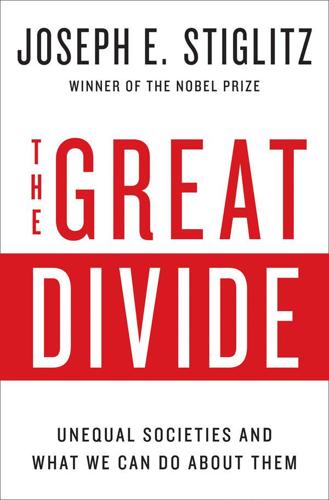
The Great Divide: Unequal Societies and What We Can Do About Them
by
Joseph E. Stiglitz
Published 15 Mar 2015
Today, access to health care is among the most universally accepted rights, at least in the advanced countries. America, despite the implementation of the Affordable Care Act, is the exception. It has become a country with great divides in access to health care, life expectancy, and health status. In the relief that many felt when the Supreme Court did not overturn the Affordable Care Act, the implications of the decision for Medicaid were not fully appreciated. Obamacare’s objective—to ensure that all Americans have access to health care—has been stymied: 24 states have not implemented the expanded Medicaid program, which was the means by which Obamacare was supposed to deliver on its promise to some of the poorest.
…
For starters, access to medicine matters. With the U.S. among the few advanced countries that does not recognize access as a basic human right, and more reliant than others on the private sector, it is no surprise that many Americans do not get the medicines they need. Though the Patient Protection and Affordable Care Act (Obamacare) has improved matters, health-insurance coverage remains weak, with almost half of the 50 U.S. states refusing to expand Medicaid, the health care financing program for America’s poor. Moreover, the U.S. has one of the highest rates of childhood poverty among the advanced countries (which was especially true before austerity policies dramatically increased poverty in several European countries), and lack of nutrition and health care in childhood has lifelong effects.
…
Take health care. America is unique among the advanced countries in not recognizing access to health care as a basic human right. And that means if you are a poor American, your prospects of getting adequate, let alone good, medical care are worse than in other advanced countries. Even after passage of the Affordable Care Act (ACA), almost two dozen states have rejected expanding vitally needed Medicaid, and more than forty million Americans still lacked health insurance at the beginning of 2014. The dismal statistics concerning America’s health care system are well known: while we spend more—far more—on health care (both per capita and as a percentage of gross domestic product) than other countries, health outcomes are worse.

A Generation of Sociopaths: How the Baby Boomers Betrayed America
by
Bruce Cannon Gibney
Published 7 Mar 2017
It is a liability made larger by the Boomers’ lack of antitrust enforcement, which permitted huge consolidation in drug, insurance, and hospital companies. As for Obamacare, which barely squeaked through, it is too soon to tell. Certainly, Obamacare’s implementation has been rocky, and it appears that the law could be significantly less effective than anticipated, though it does seem to be improving matters meaningfully. Despite its compromises, Obamacare may be the one truly significant social accomplishment of the Boomers, and perhaps their only substantial gift to young people, as it allows those under twenty-six to remain on parental policies. At least for now, Obamacare should not be discounted in the moral calculus, whatever its practical results and likely gutting post-2016.
…
Since the period 1982–1984, health-care costs have more than quadrupled in gross terms and have been rising faster than inflation overall.23 Medical inflation has slowed over the past few years because of involuntary sequestration and Obamacare’s mandated prices, which over the long term will be roughly as effective as ordering the earth to stand still. The Medicare Trustees accordingly believe Obamacare’s price fiats “are uncertain,” will “probably not be viable indefinitely,” with their actuaries being blunter, saying the price limits have a “strong possibility” of “not be[ing] viable in the long range,” and the government’s overall auditor says the same thing.24 Why?
…
Nixon helped regulate the environment through legislation and by establishing the Environmental Protection Agency. He supported safer working conditions by creating the Occupational Safety and Health Administration. He proposed health-care reform, suggesting expansion of state-administered programs to offer insurance to all Americans, which—Obamacare notwithstanding—remains a dream unfulfilled. With the Fair Labor Standards Act, he increased the minimum wage, and he supported the Equal Rights Amendment, which would have helped ensure wage parity between men and women. Even the arts, the habitat of pinko intellectuals Nixon so detested, received enormous increases in federal funding.
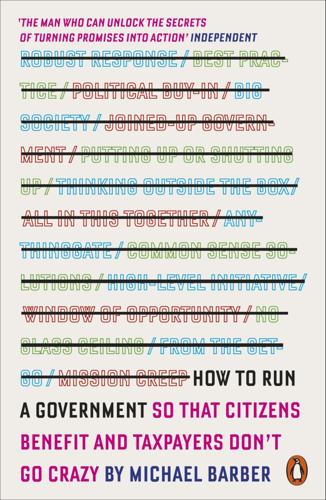
How to Run a Government: So That Citizens Benefit and Taxpayers Don't Go Crazy
by
Michael Barber
Published 12 Mar 2015
It has to be one of the classic tales of defeat snatched from the jaws of victory. In the autumn of 2013, President Obama faced down the Republicans who had forced him to close government. He refused to buckle to their blackmail; he would not concede on his vaunted health reform, popularly known as Obamacare. After all, he pointed out, Congress had passed Obamacare into law; to allow a congressional minority to overturn it through a blackmail threat would undermine American democracy and future administrations of whatever party. Polls showed that the American people were behind the president, leaving the Tea Party no option but to beat a shame-faced retreat.
…
As the story unfolded in a blaze of talk shows, the president’s political victory disintegrated. Trust in Obamacare unravelled as his personal promises turned out to be unfulfilled. Jeffrey D. Zients, an extremely competent operator whom I had met previously and come to admire, made good progress, but the president suffered excruciating months of delay and took a blow to his credibility from which he may never recover. And in spite of Zients’s excellent efforts, the website remains, shall we say, suboptimal, and the timetable has slipped. Not just Obamacare, but the Obama presidency had been damaged, perhaps irreparably, by what in this book we would call a ‘delivery failure’.
…
There may be something close to gridlock in modern Washington, but that is no excuse. As Governor Martin O’Malley put it at a seminar in London in 2014, ‘Failure to drive delivery contributes to gridlock, not the other way round.’ Profound, generational reforms such as Obamacare are too important to be left to government by spasm. They depend on government by routine. If the Obama administration had put the routines in place, not just on Obamacare but across, say, four or five priorities of personal importance to the president, they would also have developed the capacity to learn from delivery in one sphere lessons applicable in others. Arne Duncan, for example, has been the most successful education secretary in US history, a point acknowledged across the political divide in Washington.
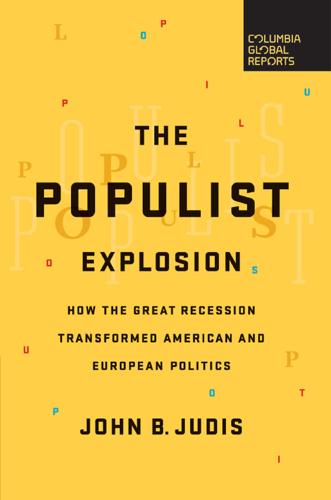
The Populist Explosion: How the Great Recession Transformed American and European Politics
by
John B. Judis
Published 11 Sep 2016
The Tea Party position was summed up in a bumper sticker that read, “You are not entitled to what I have earned.” The Tea Party also viewed the Affordable Care Act that Congress passed in 2010 as a program aimed at getting people who already had insurance to pay higher premiums and co-payments, so that those who didn’t have insurance could afford it. Seniors on Medicare, who had paid for their insurance, would also see their benefits reduced in order to cover the cost of the Affordable Care Act. Emily Ekins, who did extensive interviews with Tea Party members, writes that the Tea Partiers “tended to view the ACA as a redistributive transfer program that they would be disproportionately responsible for funding.”
…
Judis, “America the Liberal,” The New Republic, Nov. 19, 2008. 55prepare the nation for a new age: https://www.whitehouse.gov/blog/2009/01/21/president-barack-obamas-inaugural-address. 55did not prosecute: http://www.g-a-i.org/u/2012/08/DOJ-Report-8-61.pdf. 55shake business confidence: See Noam Scheiber, The Escape Artists: How Obama’s Team Fumbled the Recovery, Simon & Schuster, 2011, pp. 170–8. 55growth of Medicare spending: See Thomas B. Edsall, “The Obamacare Crisis,” The New York Times, November 19, 2013 and “Is Obamacare Destroying the Democratic Party,” The New York Times, December 2, 2014. 56“Chicago Tea Party”: See John B. Judis, “Tea Minus Zero,” The New Republic, May 10, 2010. 56160,000 members: Theda Skocpol and Vanessa Williamson, The Tea Party and the Remaking of Republican Conservatism, Oxford University Press, 2012, p. 22. 57“You are not entitled to what I have earned”: Skocpol and Williamson, p. 66. 57ACA as a redistributive transfer program: Emily Elisabeth Ekins, “Tea Party Fairness: How the Idea of Proportional Justice Explains the Right-Wing Populism of the Obama Era,” UCLA diss., 2015, pp. 74–75. 57services by illegal immigrants: Skocpol and Williamson, p. 71. 57took jobs from native-born Americans: See Kazin, pp. 35–36. 58sending him big checks: John B.
…
These are not ordinary demands that populists believe will be subject to immediate negotiation. The populists believe the demands are worthy and justified, but they don’t believe the establishment will be willing to grant them. Sanders wants “Medicare for all” and a $15 minimum wage. If he wanted the Affordable Care Act to cover hearing aids, or to raise the minimum wage to $7.75, that wouldn’t define a clash between the people and the establishment. If Trump were to demand an increase in guards along the Mexican border, or if Denmark’s People’s Party campaigned on a reduction in asylum-seekers, these would not open up a gulf between the people and the elite.
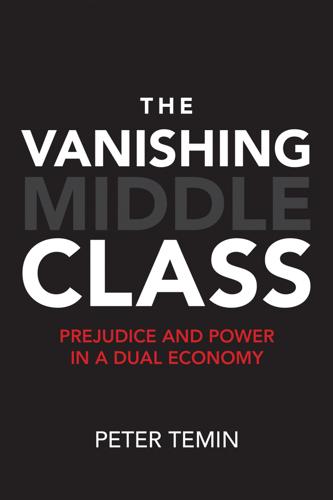
The Vanishing Middle Class: Prejudice and Power in a Dual Economy
by
Peter Temin
Published 17 Mar 2017
The states that opted out of the free extension of Medicaid were clustered in the South, reflecting again the racecraft involved in such decisions on compensation of care. Part of the anger against the Affordable Care Act, popularly known as “Obamacare,” is because its benefits are seen in racist terms by some critics as gifts from one black man—who happens to be the president—to the black population. This factor may be most important to less educated whites. Another reason for the anger is that Obamacare raised taxes on the very rich. In fact, the Obama administration raised taxes in two ways: by letting some tax breaks for people earning over half a million dollars to expire, and by the Affordable Care Act provisions raising taxes on the rich to support healthcare for the poor.
…
“The Long-Run Effect of Public Housing Demolition on Labor Market Outcomes of Children.” Economics Department, University of Michigan, Ann Arbor, MI, March 27. Clotfelter, Charles T. 2004. After Brown: The Rise and Retreat of School Segregation. Princeton: Princeton University Press. CNN. DATE. “Poll: ‘Obamacare’ vs. ‘Affordable Care Act.’” CCN Political Unit. http://politicalticker.blogs.cnn.com/2013/09/27/poll-obamacare-vs-affordable-care-act/. Accessed September 22, 2016. Coates, Ta-Nehisi. Between the World and Me. New York: Spiegel and Grau, 2015. Cohen, Patricia. 2015a. “Gasoline-Tax Increase Finds Little Support.” New York Times, January 2. Cohen, Patricia. 2015b.
…
Medicare for older people is run by the federal government; Medicaid for poor people is run by states. As noted earlier, state control often is a way to deny benefits for disadvantaged people. African Americans and recent Latino immigrants have been denied Medicaid benefits by lack of funds after the 2008 financial crisis and by state politicians objecting to the Affordable Care Act. The Affordable Care Act that President Obama signed into law in 2009 was approved by the Supreme Court in 2012 with the caveat that states could opt out of the part that was run through an expansion of Medicaid. Many states chose to deny the expansion of Medicaid to their residents even though the federal government would pay all the costs for the first few years and most of the costs thereafter.
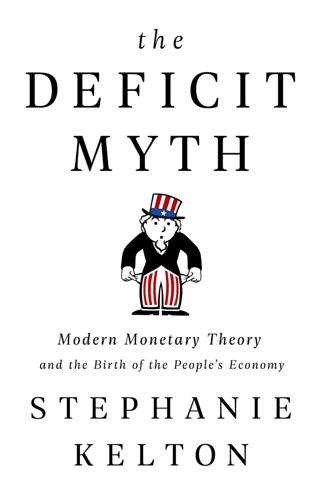
The Deficit Myth: Modern Monetary Theory and the Birth of the People's Economy
by
Stephanie Kelton
Published 8 Jun 2020
His findings show that if the Republicans had succeeded in annulling the Affordable Care Act in 2017, 540,000 people would have died over the next decade because they would have lacked health-care coverage—but an additional 320,000 would die from lack of coverage even if the Republican effort was unsuccessful. That’s an important point: even under Obamacare, millions of Americans are still uninsured.26 Add it all up, and it shouldn’t be surprising the US still lags well behind similar developed countries in access to care, even after passage of the Affordable Care Act in 2010. Our health-care deficit leads to lost time for work and for play, but also to the worst lost time of all: the years with friends and loved ones that so many people lose because they die too soon.
…
Gaby Galvin, “87M Adults Were Uninsured or Underinsured in 2018, Survey Says,” U.S. News & World Report, February 7, 2019, www.usnews.com/news/healthiest-communities/articles/2019-02-07/lack-of-health-insurance-coverage-leads-people-to-avoid-seeking-care. 22. Tami Luhby, “Is Obamacare Really Affordable? Not for the Middle Class,” CNN, November 2016, money.cnn.com/2016/11/04/news/economy/obamacare-affordable/index.html. 23. Boesler, “Almost 40% of Americans Would Struggle to Cover a $400 Emergency.” 24. Bob Herman, “Medical Costs Are Driving Millions of People into Poverty,” Axios, September 2019, www.axios.com/medical-expenses-poverty-deductibles-540e2c09-417a-4936-97aa-c241fd5396d2.html. 25.
…
Lori Konish, “137 Million Americans Are Struggling with Medical Debt. Here’s What to Know if You Need Some Relief,” CNBC, November 12, 2019, ww.cnbc.com/2019/11/10/americans-are-drowning-in-medical-debt-what-to-know-if-you-need-help.html. 26. Matt Bruenig, “How Many People will Obamacare and AHCA Kill?” (blog), MattBruenig Politics, mattbruenig.com/2017/06/22/how-many-people-will-obamacare-and-ahca-kill/. 27. Catherine Rampell, “It Takes a B.A. to Find a Job as a File Clerk,” New York Times, February 19, 2013, www.nytimes.com/2013/02/20/business/college-degree-required-by-increasing-number-of-companies.html. 28. Leslie Brody, “New York City Plans to Give More 3-Year-Olds Free Early Childhood Education,” Wall Street Journal, January 10, 2019, www.wsj.com/articles/new-york-city-plans-to-give-more-3-year-olds-free-early-childhood-education-11547165926?
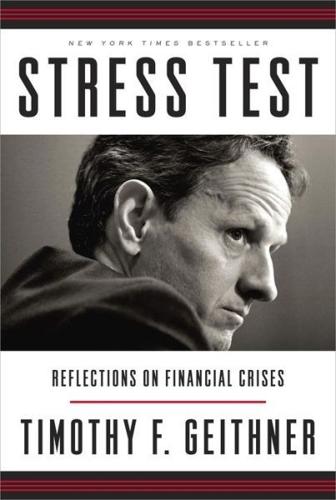
Stress Test: Reflections on Financial Crises
by
Timothy F. Geithner
Published 11 May 2014
The Speaker and his staff kept insisting they needed a scalp for the right; at one point, he proposed we scrap Obamacare’s individual mandate for health insurance, an obvious nonstarter. We were getting a bit nervous about our side, too. Harry Reid and Nancy Pelosi had told the President they could support a grand bargain, but the outlines of the deal made the Democratic leaders uncomfortable. It would raise substantially less revenue than Simpson-Bowles or a draft proposal by a bipartisan Senate group known as the Gang of Six. And the entitlement reforms were going to be a tough vote for Democrats, especially with Republicans still insisting on some kind of Obamacare scalp. I remember during one Roosevelt Room prep session before I appeared on the Sunday shows, I objected when Dan Pfeiffer wanted me to say Social Security didn’t contribute to the deficit.
…
(Data as of June 30, 2008; Government Sponsored Enterprises include only Fannie Mae, Freddie Mac, and the Federal Home Loan Banks, and do not include other GSEs or Ginnie Mae.) I sometimes wondered where this newfound right-wing enthusiasm for fiscal discipline had been during the Bush years, when unfunded wars, tax cuts, and a new Medicare prescription drug benefit had helped turn the Clinton surpluses into deficits. By contrast, Obamacare included reforms aimed at reining in the rising medical costs that threatened our fiscal future, and the Congressional Budget Office estimated that it would reduce future deficits overall despite its subsidies to extend care to the uninsured. Then again, the original Tea Party protested an unelected king who raised taxes, while Obama was an elected president who had lowered taxes, so consistency wasn’t really the point.
…
This was especially true in the Senate, where Republicans were using the filibuster with unprecedented regularity, blocking just about anything that didn’t have the sixty votes needed to overcome it. For the second half of 2009, the Democrats had exactly sixty senators, which led to side deals like the “Cornhusker Kickback” that clinched Nebraska Senator Ben Nelson’s vote on Obamacare. But as the President’s policies became less popular, many Democratic senators began keeping their distance. Moderates from Republican states didn’t want to look like big spenders. Liberals thought we were too restrained in our spending and too close to Wall Street. With lockstep opposition from Republicans, it became increasingly difficult to get anything through Congress.
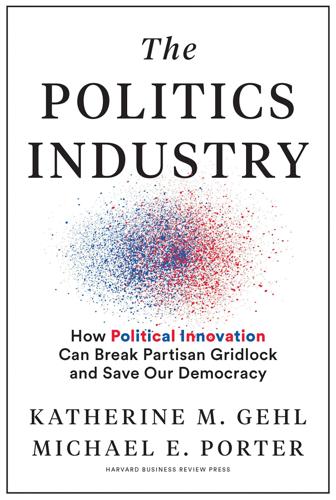
The Politics Industry: How Political Innovation Can Break Partisan Gridlock and Save Our Democracy
by
Katherine M. Gehl
and
Michael E. Porter
Published 14 Sep 2020
Greg Orman, A Declaration of Independents: How We Can Break the Two-Party Stranglehold and Restore the American Dream (Austin, TX: Greenleaf Group Book Press, 2016), 61. 28. Lee Drutman, Breaking the Two-Party Doom Loop: The Case for Multiparty Democracy in America (New York; Oxford: Oxford University Press, 2020), 31. 29. Russell Berman, “Cruz: Political ‘Tsunami’ Needed to Win Fight to Defund Obamacare,” The Hill, August 25, 2013, https://thehill.com/video/sunday-shows/318647-cruz-tsunami-needed-to-defund-obamacare. 30. For overview of the shutdown, see Walter J. Oleszek, “The Government Shutdown of 2013: A Perspective,” in Party and Procedure in the United States Congress, 2nd Edition, ed. Jacob Straus and Matthew Glassman (2017). 31. Leigh Ann Caldwell, “Architect of the Brink: Meet the Man behind the Government Shutdown,” CNN, updated October 1, 2013, http://www.cnn.com/2013/09/27/politics/house-tea-party/index.html. 32.
…
With the exception of Republican Senator Jim Bunning of Kentucky, who did not vote. United States Senate. “Roll Call Vote 11th Congress – 1st Session,” https://www.senate.gov/legislative/LIS/roll_call_lists/roll_call_vote_cfm.cfm?congress=111&session=1&vote=00396. 34. Tessa Berenson, “Reminder: The House Voted to Repeal Obamacare More Than 50 Times,” Time, March 24, 2017, http://time.com/4712725/ahca-house-repeal-votes-obamacare/. 35. For a great analysis of show votes, see Frances Lee, Insecure Majorities: Congress and the Perpetual Campaign (Chicago: The University of Chicago Press, 2016). 36. Former Republican Senator Olympia Snowe put it best when she said, “Much of what occurs in Congress today is what is often called ‘political messaging.’
…
If no agreement is reached before the new fiscal year begins, parts of the government are shut down. In 2013, both a divided government and increased polarization around health-care reform gripped Washington. While Democrats controlled the Senate and the White House, Republicans held the House of Representatives and were determined to repeal and replace the Affordable Care Act (ACA).29 No Republican could survive a primary without pledging to do absolutely everything in his or her power to undo the act.30 In late 2013, that promise came due. As the end of the fiscal year approached, Republican forces were mobilizing for the standoff. In August, eighty House members signed a letter urging Speaker of the House John Boehner to use the budget appropriations process to defund the ACA.31 A legion of industry interest groups fell into line.
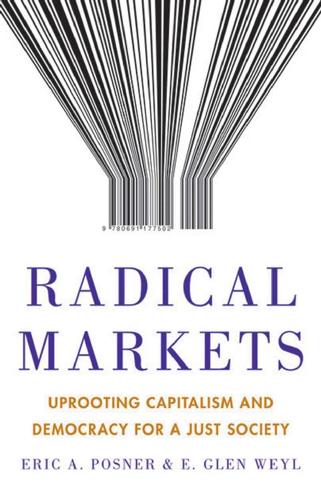
Radical Markets: Uprooting Capitalism and Democracy for a Just Society
by
Eric Posner
and
E. Weyl
Published 14 May 2018
The QV results are thus much more plausible as a representation of population preferences than is the artificial W shape from Likert.44 Second, while Likert conceals the range of intensity of preferences by grouping all, or nearly all, of the responses at the extremes, QV reveals these gradations. QV shows, for example, the greater intensity of preferences for repealing Obamacare, compared to those for retaining it, which helped fuel the success of Republicans in the 2016 election. FIGURE 2.4: Participant opinions on Obamacare under a standard Likert (left) and QV (right) survey. “Vote strength” in both graphs represents degree of support (on left) or opposition (on right) for Obamacare. Source: Adapted from David Quarfoot, Douglas von Kohorn, Kevin Slavin, Rory Sutherland, David Goldstein, & Ellen Konar, Quadratic Voting in the Wild: Real People, Real Votes, 172 Pub.
…
If she cares about many issues, she must decide how to allocate her votes across them. She may discover, for example, that while she cares a lot about abortion rights, she doesn’t want to use up so many credits to vote in favor of them that she can’t even buy one vote in order to take a position on Obamacare or the minimum wage. Typically, respondents (especially those with less formal training in mathematics) quickly run into a constraint, running out of credits, and then returning to correct course. Economist Sendhil Mullainathan and psychologist Eldar Shafir have shown in their 2013 book that running into this type of “scarcity” quickly focuses the minds of participants so that they complete the survey carefully.42 In practice, it also seems to deeply engage users: they typically spend a third longer working on QV surveys than a standard Likert survey, even though the same fraction in both cases completed the survey.
…
To test whether QV manages to solve the problems with Likert, in 2016 Decide’s chief data scientist and now professor of mathematics education David Quarfoot, along with several co-authors, ran a nationally representative survey with thousands of participants that took versions of the same poll using Likert, QV, or both depending on which group they were assigned to.43 Figure 2.4 pictures a representative set of responses, on the question of repealing Obamacare, with the Likert survey on the left (with its signature W-shape) and the results from QV on the right. Two things are noteworthy. First, QV produces a roughly bell-shaped distribution, the sort of distribution of responses that characterizes most individual preferences. The QV results are thus much more plausible as a representation of population preferences than is the artificial W shape from Likert.44 Second, while Likert conceals the range of intensity of preferences by grouping all, or nearly all, of the responses at the extremes, QV reveals these gradations.
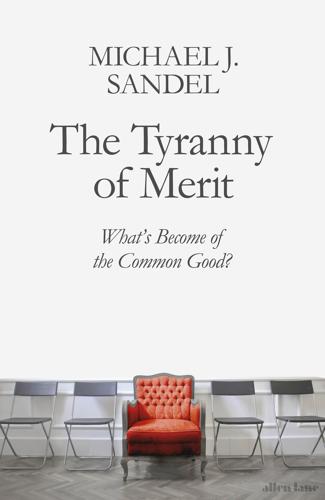
The Tyranny of Merit: What’s Become of the Common Good?
by
Michael J. Sandel
Published 9 Sep 2020
And right now, those are the people—who’ve done things the right way—that are seeing their costs skyrocketing.” 44 The congressman’s case against Obamacare reiterates the harsh meritocratic logic that runs from the Puritans to the prosperity gospel: If prosperity is a sign of salvation, suffering is a sign of sin. This logic is not necessarily tied to religious assumptions. It is a feature of any ethic that conceives human freedom as the unfettered exercise of will and attributes to human beings a thoroughgoing responsibility for their fate. In 2009, as Obamacare was first being debated, John Mackey, the founder of Whole Foods, wrote an op-ed in The Wall Street Journal arguing against a right to health care.
…
“If a believer gets sick and dies,” Bowler writes, “shame compounds the grief. Those who are loved and lost are just that—those who have lost the test of faith.” 42 The harsh face of prosperity gospel thinking can be seen in the debate about health care. 43 When Donald Trump and Republicans in Congress attempted to repeal and replace Obamacare, most argued that their market-friendly alternative would increase competition and reduce costs, while protecting people with pre-existing conditions. But Mo Brooks, a conservative Republican congressman from Alabama, made a different argument. He acknowledged that the Republican plan would require those with greater health needs to pay more.
…
Newkirk II, “The American Health Care Act’s Prosperity Gospel,” The Atlantic , May 5, 2017. 44. Brooks quoted in Newkirk, ibid., and in Jonathan Chait, “Republican Blurts Out That Sick People Don’t Deserve Affordable Care,” New York , May 1, 2017. 45. John Mackey, “The Whole Foods Alternative to ObamaCare,” The Wall Street Journal , August 11, 2009. See also Chait, ibid. 46. Mackey, ibid. 47. Hillary Clinton, “Address Accepting the Presidential Nomination at the Democratic Convention in Philadelphia, Pennsylvania,” July 28, 2016, at presidency.ucsb.edu/documents/address-accepting-the-presidential-nomination-the-democratic-national-convention . 48.
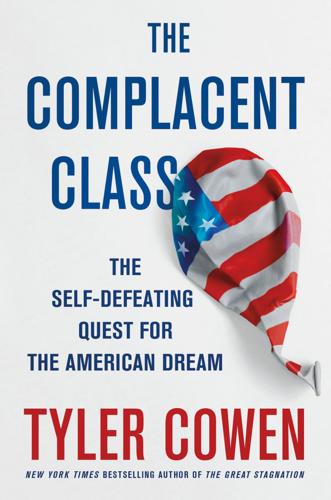
The Complacent Class: The Self-Defeating Quest for the American Dream
by
Tyler Cowen
Published 27 Feb 2017
See also internet dating matching assortative mating and book sellers and choice and class and crime and dating and eBay effects of influence of and jobs and living standards and marketing and music industry and pets and segregation and strivers Medicaid Medicare Mellander, Charlotta Melville, Herman Merkel, Angela Mexico and migration and outsourcing middle class and the Complacent Class and democracy income and wages and mobility Middle East migration African American and education history of interstate as investment and matching and Mexico and Millennial Generation and regional specialization and Texas See also immigration; mobility Millennial Generation and car culture and entrepreneurialism and grand projects and matching Million Man March Minsky, Hyman mobility and African Americans and American South and childrenn cross-generational cross-state and dynamic society and education effects of mobility decline history of American mobility income and innovation labor in media and the arts and politics reasons for migration reasons for mobility decline and segregation symbolism of Tocqueville on See also migration Moby-Dick (Melville) monopolies Moretti, Enrico Morrison, Van Mortensen, Dale multiculturalism Murray, Charles A. music industry Musk, Elon neo-Nazi movement Newton, Huey P. Nigeria NIMBY (Not In My Backyard) mentality North Africa Obama, Barack Obamacare. See Affordable Care Act Occupy Wall Street movement oil industry oil price shock (1973) On the Road (Kerouac) outsourcing pantheism Pareto, Vilfredo patents Patriot Act pets philanthropy Pinker, Steven Pissarides, Christopher play, outdoor polarization policing political science poverty and mobility and segregation Princeton University prison riots productivity and cities diffusion problem firm-specific productivity and innovation and the internet and matching and mobility productivity per worker hour total factor productivity (TFP) worker productivity profiling progress and the Complacent Class and democracy and innovation and mobility model of history and segregation progressivism protests.
…
I don’t, by the way, count Obamacare on this list of grand projects. No matter what you think of it as policy, it provided health insurance to about 10 to 15 million of America’s previously uninsured 40 million–plus population, with the exact number for new coverage still evolving. That helps many of those individuals, but it is hardly a game-changer in terms of a broader social trajectory, especially since many of those people already were receiving partial health care coverage and, furthermore, the Obamacare exchanges are experiencing some serious problems. If anything, Obamacare has locked in the basic features of the previous U.S. health care system rather than revolutionizing them.
…
The American market also has consolidated toward four major airlines, a far cry from the 1980s deregulatory dream of a large number of small budget airlines competing fiercely across most major routes. Pending mergers are likely to bring the number of major health insurance companies, in the aftermath of the Affordable Care Act, from five to three, with hospitals undergoing significant consolidation as well. All of these corporate changes are yet another way of measuring a status quo that is pretty comfortable, stable, and inert.9 Those are only a few examples, and clearly some sectors have become far more competitive.
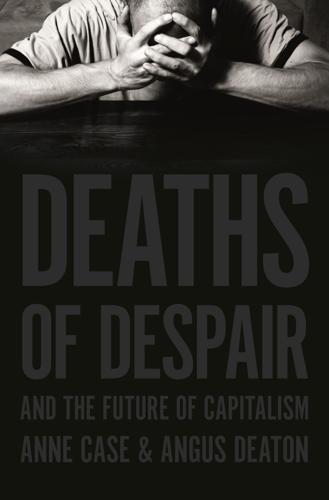
Deaths of Despair and the Future of Capitalism
by
Anne Case
and
Angus Deaton
Published 17 Mar 2020
Lobbyists oppose one another, but there are no effective lobbyists, or lobbyists of comparable power and size, who are arguing the case for the people who are paying for the enrichment of the healthcare industry or who can act as a countervailing power against it. During periods of legislative activity, the healthcare lobbyists have sometimes been singularly effective. Obamacare was passed without consideration of a single-payer system or a public option, and the US has nothing like the British system of evaluation. Hospitals, doctors, and pharma companies were effectively paid off in order to support the passage of the Affordable Care Act.54 This was necessary to get more uninsured people into the system, but it prevented any cost saving, a trade-off that was almost certainly necessary then given the power of the lobbies.
…
See also drug overdoses; opioids acetaminophen, 117 Achenbach, Joel, 267n2 addiction, x, 2, 4, 37, 95–96, 115–16, 120, 261; black market and, 124; characteristics of, 39; costs of, 104; cures for, 129; depression and, 212; developing, 117; hangover of, 69; to heroin, 122, 123; medication-assisted treatment for, 109; opioids and, 112, 122; pain and, 4; people predisposed to, 192; risk for, 118; seen as moral weakness, 28; suicide and, 84; treating, 247 Advil, 117 advocacy organizations for pain sufferers, 124 Affordable Care Act, 210. See also Obamacare Afghanistan, 125 African Americans, 5, 8, 38, 68, 140, 148, 172–73, 174, 224, 275n25; black culture, 189; contrasting outcomes for, 183; drug overdoses and, 119; exclusion of, 166; fentanyl and, 114, 188; happiness and, 181; heart disease and, 44; improvements in lives of, 186; inner-city, 67; job loss and, 258; life expectancy of, 27; misfortunes of, 69; mortality rates and, 6, 31, 62; mortality rates for white Americans and, 64–65; pain and, 90–91; poverty and, 137; religion and, 178; social protection and, 225 age effects, 35; deaths of despair and, 59; drinking and, 106; life evaluation and, 182; mental health and, 78; pain and, 87–89; poor health and, 76 aging, 84, 88, 90 Aid to Families with Dependent Children program, 172 airlines, 231, 233; increasing concentration of, 235 Akcigit, Ufuk, 285n2 Alabama, 43, 100, 140, 268n5 Al-Anon, x alcohol: average drinks per occasion, 106; social life and, 103; in Soviet Union, 106–7; taxes on, 104–5.
…
Doctors try not to prescribe to such people, but it is unclear how they are supposed to know, particularly given the time pressure that they face, and even people who are at risk and have a previous history of abuse can be in real pain. Doctors were being asked to police and prevent abuse in a way that was beyond their ability under the circumstances in which they work. Some commentators have argued that the rollout of Obamacare was in part responsible for the epidemic, that the expansion of Medicaid made opioids more widely available. But the timing on this is wrong, because the epidemic was in full swing before any Medicaid expansion. By contrast, Medicaid has played an important role in making available affordable treatment for people with opioid abuse disorder, with levels of therapy much higher in states that expanded Medicaid after 2014.31 The producers, directly and through prescription benefit managers, did everything possible to increase sales and profits, even when it was clear that the drugs were being abused.
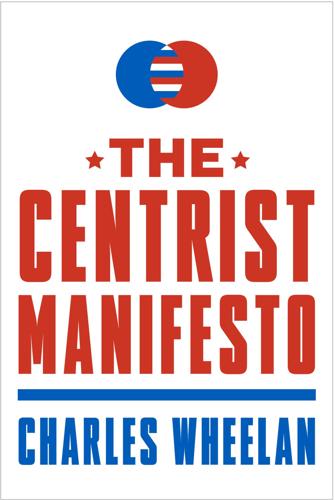
The Centrist Manifesto
by
Charles Wheelan
Published 18 Apr 2013
America’s major entitlement programs—Social Security, Medicare, and Medicaid—are unsustainably expensive. The longer we go without addressing the problem, the more dangerously indebted the nation will become. The only way to preserve America’s important safety net is to fix it. Our health-care system is inefficient and expensive—with or without Obamacare. We spend significantly more on medical care than all other developing countries, but we get significantly less in terms of good health. Life expectancy in the United States is lower than the average for all other developed countries—and the gap is growing, not shrinking.3 Our infrastructure is crumbling.
…
The Obama health-care reforms did not do this. Although there are many potentially sensible ideas tucked in the details of the law, the thrust of the reform was to make an unaffordable system bigger. Meanwhile, the Republicans have no meaningful plan for cost containment at all. Mitt Romney repeatedly vowed to repeal Obamacare on “Day One” of his administration. We never heard much about what would happen on “Day Two”—when he would still have faced an inefficient and unaffordable system, albeit one that no longer promised insurance to all Americans. The idea that competition among private insurers can be used to drive down public health expenditures is completely untested, has not worked in the private sector, and has not been embraced by any serious health economist.
…
Worse still, the Republicans have strenuously opposed any efforts to use cost-effectiveness as a criterion for public health expenditures because this would be the first step toward “death panels” (Sarah Palin’s one enduring contribution to our national health-care discussion). To get our budget back in order, we have to reform Medicare and Medicaid. And to do that, we need to reform health care in general, which would have enormous benefits for the private sector as well. The nasty debate around Obamacare has proved how hard this will be. Health-care reform is a policy area where Centrist voices can add great value. It is also one of the few places where—with sensible policy changes—we might actually spend less and get more. Rebuild our international institutions. We need a revamped set of international institutions to handle all of the modern issues that transcend national borders.
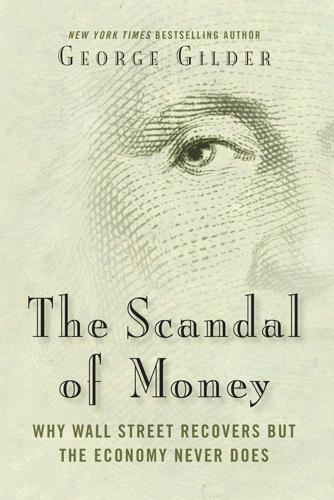
The Scandal of Money
by
George Gilder
Published 23 Feb 2016
The Dodd-Frank Act is an invitation to nationalize the large banks as too big to fail and to marginalize the small ones as too little to succeed. Free of all legislative constraint, the federal Consumer Financial Protection Bureau is regulating all consumer finance, from investment advisors to pawn shops. Obamacare (also known as the Affordable Care Act) is extending its web of taxation and control over all healthcare, requiring sixteen thousand new Internal Revenue Service agents to make it all work. Redressing the crisis of inequality will be expanded taxation of capital and savings capped by a progressive wealth tax—a program that may begin with Hillary Clinton’s proposed hike in the tax on capital gains.
…
Keynes and the Reshaping of the Global Economy (New York, NY: Pegasus Books, 2015), epilogue. 4.Maurice McTigue, “Rolling Back Government, Lessons from New Zealand,” Hillsdale College Imprimis 33, no. 4 (April 2004). 5.George Gilder, The Israel Test: Why the World’s Most Besieged State Is a Beacon of Freedom and Hope for the World Economy (New York, NY: Encounter Books, 2012). 6.Steve Forbes with Elizabeth Ames, Reviving America: How Repealing Obamacare, Replacing the Tax Code, and Reforming the Fed will Restore Hope and Prosperity (New York, NY: McGraw Hill Education, 2016), 124 and passim. 7.Metcalfe’s Law ordains that the power and value of a network rises roughly by the square of the number of compatible devices linked to it. 8.Judy Shelton, Fixing the Dollar Now: Why U.S. Money Lost Its Integrity and How We Can Restore It (Washington, DC: Atlas Economic Research Foundation, 2011). 9.Ibid., 40–44. 10.Ibid., 48, citing Alan Greenspan, “Can the U.S. Return to a Gold Standard?,” Wall Street Journal, September 1, 1981. Index A Access to Energy, 48 Affordable Care Act, 6 Allied Powers, 151 Amazon, 119, 122, 160, 170 America, Americans, 55 economy and, xii, xvii–xviii, 5, 15, 25, 51, 54, 58, 66–68, 88–89, 107–8, 115, 121, 128, 150, 154, 160 GDP and, xiii, 130. See also gross domestic product (GDP) Great Recession and, xii, 55, 57 mobility in, 4 politics in, 3 relationship with China, 14, 39–51, 154.
…
Keynes and the Reshaping of the Global Economy (New York, NY: Pegasus Books, 2015), epilogue. 4.Maurice McTigue, “Rolling Back Government, Lessons from New Zealand,” Hillsdale College Imprimis 33, no. 4 (April 2004). 5.George Gilder, The Israel Test: Why the World’s Most Besieged State Is a Beacon of Freedom and Hope for the World Economy (New York, NY: Encounter Books, 2012). 6.Steve Forbes with Elizabeth Ames, Reviving America: How Repealing Obamacare, Replacing the Tax Code, and Reforming the Fed will Restore Hope and Prosperity (New York, NY: McGraw Hill Education, 2016), 124 and passim. 7.Metcalfe’s Law ordains that the power and value of a network rises roughly by the square of the number of compatible devices linked to it. 8.Judy Shelton, Fixing the Dollar Now: Why U.S.
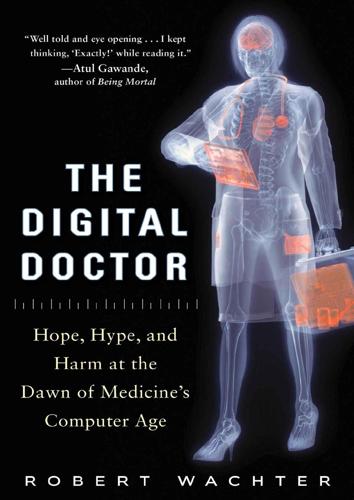
The Digital Doctor: Hope, Hype, and Harm at the Dawn of Medicine’s Computer Age
by
Robert Wachter
Published 7 Apr 2015
Index Please note that index links point to page beginnings from the print edition. Locations are approximate in e-readers, and you may need to page down one or more times after clicking a link to get to the indexed material. accountable care organizations, 59, 188 ACOs. See accountable care organizations Adams, Timothy, 231 Adler-Milstein, Julia, 248 Affordable Care Act (ACA), 15, 16, 239 See also Obamacare AI. See artificial intelligence (AI) AI winter, 102, 107 AIDS activists, 195–196 alerts, 134, 143–153, 251 ignoring, 135–137 ways to safely reduce number of alerts, 145–146 Althaus, Deb, 86 Altmann, Erik, 83 American College of Surgeons, 36 APIs, 192–193, 216 application programming interfaces.
…
See Health Insurance Portability and Accountability Act (HIPAA) Hirschtick, Robert, 71–72 HITECH, 16, 17–18, 66, 69, 82, 115, 188, 205, 207, 212, 213, 216, 224, 227, 236, 247 Hogan, Sean, 94 hold harmless clauses, 88–90 Holmes, Sherlock, 97 Holt, Matthew, 237 home care, IT-enabled, 261–263 hospital standardization, 36 See also standards hospitals, future changes, 258–260 How We Die (Nuland), 97 human-technology collaboration, 276–277 Hwang, Jason, 12 Hype Cycle, 246–247 IDX, 66 informatics, 7 information, vs. knowledge, 56–57 information artifacts, 7 Ingelfinger, Franz, 272–273 innovation, 235–242 complementary innovations, 245 obstacles to, 239 The Innovator’s Prescription (Christensen, Grossman and Hwang), 12 Institute of Medicine report on medical mistakes, 5 report on patient safety, 132 intelligent underwear, 115–116 interoperability, 13–14, 214, 215–216 Epic Systems, 223 iPatient, 27–28, 267, 277 irony of automation, 162 Isabel, 106–111 IT-enabled home care, 261–263 iterative hypothesis testing, 98 Jacobsen, Alan, 78, 147–148 Jha, Ashish, 248, 250 The Joint Commission, 36, 144 Jones, Ken, 224 Jones, Spencer, 248–249 Kaiser Permanente, 177, 183–185 My Health Manager, 184 Kasparov, Garry, 95, 276 Kassirer, Jerome, 97–98 Khosla, Vinod, 93–96, 102, 112, 113, 121, 273 knowledge, vs. information, 56–57 Kocher, Bob, 15–17, 247 Kodak, 49 Koppel, Ross, 72, 86, 88–89 Kowalczyk, Liz, 144 Krasner, Missy, 186 Kreda, David, 89 kwashiorkor, 80–83 Laennec, René, 32 Laret, Mark, 156 Lauer, Michael, 119 Law of Clinical Parsimony, 98 learned intermediaries, 89 Leckart, Steven, 179, 184 Levin, David, 62 Levitt, Brooke, 127–128, 159–164 See also Pablo Garcia medical error case Levy, Frank, 94 Lift Labs, 241, 242 little AI, 113 Louis, Pierre, 33 Lucca, Jenny, 129, 135–137, 139–141, 149 See also Pablo Garcia medical error case Luetmer, Patrick, 51–52, 56 Madrigal, Alexis, 113–114 Mallon, William, 60 malpractice, and medical records, 37 Manjoo, Farhad, 112 Mark, Roger, 146 market failure, 12 Martin, Edward, 36 Massachusetts General Hospital, 36, 143, 206, 222, 268 Maude, Jason, 106–109 Mayer, Marissa, 185 Mayo, Charlie, 4–5 Mayo, Will, 4–5 Mayo Clinic, 1, 4–7, 36, 51, 52 computer systems, 8, 216, 244 McAfee, Andy, 94–95, 276 McCall Smith, Alexander, 156–157 McKesson, 86 Meaningful Use, 18, 85, 205–206, 207–208 Stage 2, 208–212 Stage 3, 212–213 VDT requirements, 209 and vendors, 212–213 measurement of quality, 274–275 measurement problems, 249 medical AI, 96, 106 See also Isabel; Watson supercomputer medical mistakes Institute of Medicine report, 5 mode error, 140–141 overdoses, 127–130 Swiss cheese model, 131–132 See also Pablo Garcia medical error case medical records, 30–34 classifying patients with a single number, 36 and clinical research, 33–34 as confidential and public documents, 41 doctor’s journal style, 36 and malpractice, 37 and multitasking, 150–151 the paper chart, 43–44 patients’ access to, 173–174 and patients’ rights, 171–172 Problem-Oriented Medical Record, 46 and third-party payers, 37–39 See also doctor’s notes; EHRs Medicare, 38, 75, 80–82, 242 Merry, Alan, 156–157 microchips, 189–191 micromanagement, 274 Miller, Wallace, Sr., 47–48 Milstein, Arnie, 273–274 mismanagement, 249 mode error, 140–141 modern therapeutic distancing, 33 Morgagni, Giovanni, 31 Mosier, Kathleen, 162–163 Mostashari, Farzad, 208, 210–211, 230 motion artifacts, 145 multitasking, 150–151 Murnane, Richard, 94 My Health Manager, 184 MyChart portal, 133 Myers, Bob, 83, 147–149 NEMO syndrome, 127, 128, 165, 166 New England Journal of Medicine, 23–24 nighthawks, 60–61 nondisclosure clauses, 88–90 nonnormal situations, 78 Northwestern Memorial, 71–72 NPs. See nurse practitioners Nuland, Sherwin, 97 numerical method, 33 nurse practitioners, 7–8 Obama, Barack, 7, 9, 15, 247 Obamacare, 188, 207 See also Affordable Care Act (ACA) Occam’s Razor, 98, 102 Office of the National Coordinator for Health Information Technology, 10, 14, 15, 17, 18, 89, 115, 192, 207 budget, 11–12 controversy over Meaningful Use, 208–213 ONC. See Office of the National Coordinator for Health Information Technology ONCHIT.
…
In seeking the answer to that question, Gross and Tecco interviewed dozens of venture capitalists and entrepreneurs. Each interview brought them closer to understanding the obstacles to IT innovation in healthcare. They boiled the problem down to three main issues. The first was investor uncertainty: at the time, nobody knew whether the Affordable Care Act would pass and what its real impact on the healthcare marketplace would be. Until things settled out, healthcare’s longstanding market problems, particularly the lack of incentives for patients and clinicians to invest in tools that might improve quality or efficiency, would continue to cast a pall on IT investments large (EHRs) and small (wellness apps).
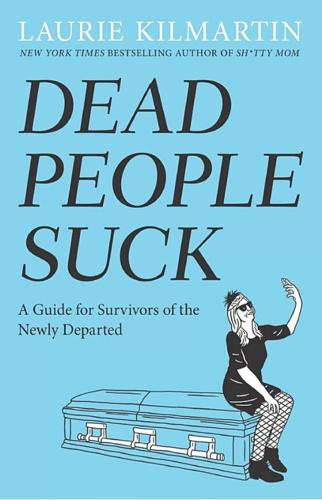
Dead People Suck: A Guide for Survivors of the Newly Departed
by
Laurie Kilmartin
Published 13 Feb 2018
Your entire to-do list can be postponed until your next life. YOUR UNENDING RAGE WTF—My Dad Is Dead and [fill in the blank, I like Dick Cheney] Is Still Alive? When Dad was alive and healthy, he railed against Obamacare. He believed Sarah Palin, who said a death panel would come for him. In reality, Medicare covered his entire treatment, and his caretakers tried to keep him alive for as long as possible. I think Dad would have loved actual Obamacare—the health care that President Obama (and every modern president) receives. Do these people ever die? In 2016, Jimmy Carter was cured from brain cancer at age 92. And 76-year-old Dick Cheney, who was probably the president, has had five heart attacks and a heart transplant.
…
Bush celebrated his 90th birthday by skydiving. That’s right, someone pushed a president out of an airplane, and he still lived. Both Ronald Reagan and Gerald Ford were 93 when they died and I’m sure their doctors were fired for incompetence. If Dad had been given Obama’s actual care, he’d be alive today, complaining about Obamacare. Sometime after your loved one dies, you’ll hear the name of a famous person who is alive and older than your dead person, and you will be struck with envy and bitterness. Thank God. Any emotion that’s not sadness is a gift. Enjoy it, use it. Go for a run, clean out a closet. But keep it aimed at a faraway target—a celebrity or a Nazi.
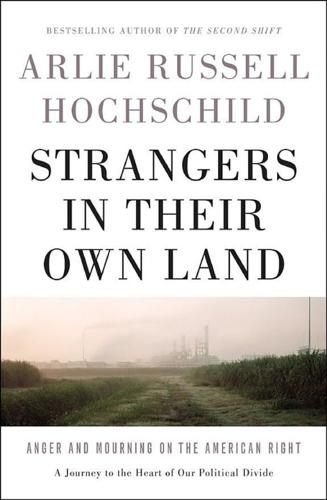
Strangers in Their Own Land: Anger and Mourning on the American Right
by
Arlie Russell Hochschild
Published 5 Sep 2016
.; Perry, Romney, Cain Close on GOP Side,” WWL-TV, October 13, 2011, http://www.wwltv.com/story/news/politics/2014/08/29/14408560. WWL-TV polled 602 likely Louisiana voters. 57and voted for the Keystone pipeline Ibid. 57“If it ain’t good for y’all, I ain’t voting for it” Scott Lewis, “Boustany and Landry Fight over Obamacare, Medicare, Negative Campaigns and Oilfield Jobs [Audio],” Cajun Radio, October 31, 2012, http://cajunradio.com/boustany-and-landry-fight-over-obamacare-medicare-negative-campaigns-and-oilfield-jobs-audio/?trackback=tsmclip. 59the EPA listed eight as “impaired” and the ninth as “unassessed” A January 24, 2015, search for Lafayette, LA, using the EPA’s “MyEnvironment” tool yielded these findings.
…
Lester, James, James Franke, Ann Bowman, and Kenneth Kramer. “Hazardous Wastes, Politics, and Public Policy: A Comparative State Analysis.” Western Political Quarterly 36 (1983): 255–85. Lewis, Scott. “Boustany and Landry Fight Over Obamacare, Medicare, Negative Campaigns and Oilfield Jobs [Audio].” Cajun Radio (October 31, 2012). http://cajunradio.com/boustany-and-landry-fight-over-obamacare-medicare-negative-campaigns-and-oilfield-jobs-audio/?trackback=tsmclip. Little, Amanda. “Will Conservatives Finally Embrace Clean Energy? New Yorker (October 29, 2015). Lindsey, Hal. The Late Great Planet Earth. Grand Rapids, MI: Zondervan, 1970.
…
He agreed with them that Louisiana “gave out drilling permits like candy.” He agreed with them on fracking, and on getting industry to repair the coast their actions had destroyed. He agreed on alternative energy. Louisiana was 42nd out of 50 states on that one. He didn’t agree with liberals on funding Head Start, Pell college grants, Obamacare, or Social Security. And that was fine. But in the back of his mind, Mike wanted to add the environment to the agenda of the Tea Party. How tough a sell would that be? He wanted to find out. The Disaster Before the Sinkhole Disasters could occur, get forgotten, and occur again. Like Harold and Annette Areno, Mike was now a rememberer.
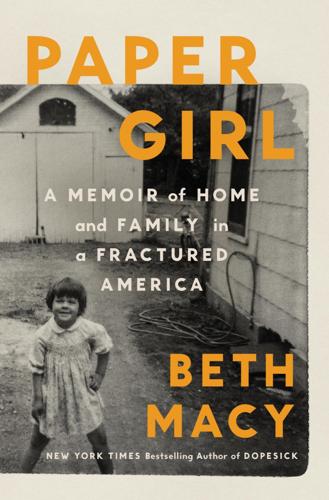
Paper Girl: A Memoir of Home and Family in a Fractured America
by
Beth Macy
Published 6 Oct 2025
See adverse childhood experiences acta non verba (deeds not words), 113 active-shooter training, 253 addiction, 7, 34, 44, 103, 178, 208, 212 adult children of addicted people, 138–39 cell phones, 223 drugs, 67, 219, 221, 288, 307 generational opioid, 104–5 admission rates, higher education, 69 adverse childhood experiences (ACEs), 92, 154, 301 advertisements, 53, 56, 116, 117–18, 177, 254 Affordable Care Act (Obamacare), 171, 181, 306 African Americans, 31, 33, 53, 81–82, 120, 149, 175. See also slavery BLM, 163, 205 lynchings, 32, 224–25, 227–28 racism and, 90, 107, 118, 148, 150–53, 163, 168, 228–29, 255 Agricultural Society, 251 agriculture, 28, 70, 108, 247–48, 251, 294.
…
See also reporters editors, 54–55, 63–64, 73, 176, 177 fact-checking and, 164, 176, 223 local, 53–57, 288, 305 national, 56, 178, 179, 181, 274, 295 on social media, 53, 178, 180, 186 Newsmax, 52, 161, 186 NewsNation, 306 newspapers, 164, 181 decline, 8, 52, 53, 54–55, 57–58, 63, 108, 186, 223, 256, 297 delivery routes, 7–8, 39, 69–70, 72, 167–68 editors, 54–55, 63–64, 73, 177 publishers, 32, 55–56, 63 The New York Times (newspaper), 50, 164, 181, 184, 227, 257, 274 decline, 55, 256 with fact-checking, 164 1619 Project, 182 Nieman Fellowship for Journalism, 53 Nixon, Richard, 82, 118 No Child Left Behind Act, 202 nonbinary people, 238–39 non-college track, 201, 201–2, 210 non-voters, 308 North Carolina, 255 North Shore Leader (newspaper), 55 NPR. See National Public Radio nuclear power, 176–77 O O, the Oprah Magazine, 51 Oath Keepers, 305 Obama, Barack, 47, 81, 173, 183, 185–86, 200, 205 Obama, Michelle, 63, 173 Obamacare. See Affordable Care Act OCJ. See Ohio Capital Journal offshoring, 9, 46, 81, 84 Ohio, 150, 155, 190, 212, 273–74. See also Marysville; Urbana southernization of, 149 statehouse leaders, 176–77 Ohio Capital Journal (OCJ) (online news site), 176, 177 Ohio Department of Education, 200, 210, 295 Ohio Gun Owners, 251–52, 299, 301 Ohio Hi-Point Career Center, 97, 198–200, 199, 264 Ohio Homeschooling Parents, 207 Ohio Magazine, 297 Ohio State University (OSU), 26, 45, 69, 74, 143 Oklahoma, 197 One Long Night (Pitzer), 292 online news, 176, 177 online school, 68 On Tyranny (Snyder), 299 open enrollment, public schools, 146–47, 198 opioids, 57 crisis, 11, 14, 81, 95–96, 104–5, 178, 198, 212, 295 OxyContin, 74, 105, 198, 288, 307 orphanages, 11, 50, 127 OSU.
…
* * * — In mid-February, my ex-boyfriend Bill, a hard-core smoker who carried a canister of loose nicotine and rolling papers with him wherever he went, came down with a serious case of pneumonia. He had told me in the summer of 2023, “At this point I’m thinking if something gets me, it gets me.” He called the Affordable Care Act nothing but a fraud on “regular-ass people” and added, “If I just keel over at seventy-six, it’ll be good.” Lacking health insurance, he went to the hospital later than he probably should have for his pneumonia and died a few days later of heart failure. Bill Monaghan (second from left) was the most liberal person I knew in the mid-1980s.
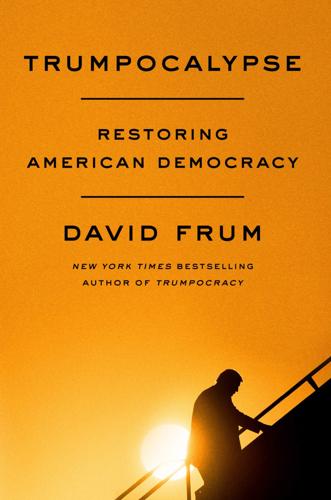
Trumpocalypse: Restoring American Democracy
by
David Frum
Published 25 May 2020
Why do Americans find it so uniquely difficult to act effectively in the public interest? We saw an answer during the Obamacare debate of 2010. Obamacare was attacked as “socialism.” Yet the people most responsive to these attacks—older voters—were themselves already enrolled (or looking forward soon to enrolling) in Medicare, a system much more socialistic than anything contemplated by the Affordable Care Act. In fact, a lot of the anger against the Affordable Care Act flowed from seniors’ and soon-to-be-seniors’ anxiety lest the Affordable Care Act cut into the funding for their socialized medicine. In other countries, the health-care system supports social unity.
…
Frum, Twitter, January 20, 2017, 8:06 a.m., https://twitter.com/davidfrum/status/822430065208291328. Index The pagination of this digital edition does not match the print edition from which the index was created. To locate a specific entry, please use your ebook reader’s search tools. Abadi, Haider al-, 40 abortion, 43, 123 abuse of power, 127 Adenauer, Konrad, 178 Affordable Care Act (ACA, 2010; “Obamacare”), 129–30, 134–36, 138, 140 Afghanistan, 41, 43, 45, 172 Africa, 108, 157, 166, 174 African Americans, 16, 80, 107, 117–18, 123, 150, 182 agriculture, 13, 122, 161, 163 AIVD (Dutch intelligence), 45 Alabama, 80, 123, 184 Alaska, 122, 123 Alfa Bank, 126 Alinsky, Saul, 19 allies, 127, 171, 177, 180 al-Qaeda, 96 Al Smith dinner, 100–101 Alternative for Germany, 66 Amazon rain forest, 161 America First, 47, 49–50 America First Action SuperPAC, 64 American Conservative, 59 American Enterprise Institute, 147–48 American exceptionalism, 175–76 American Spectator, 176 Americans with Disability Act (1990), 130 Anderson, John, 105 Angola, 108 animal rights movement, 61 Anti-Defamation League (ADL), 57 Antifa, 60, 69 anti-majoritarianism, 71–86 anti-Semitism, 56–57, 61, 197 anti-vaxxers, 66, 196–97 Appalachia, 138 Applebaum, Anne, 174 AR-15 rifles, 106 Arab Barometer, 172–73 Arendt, Hannah, 147 Arizona, 81–82, 99, 118, 123, 185 Assad, Bashar al-, 88–89 Assange, Julian, 196 Associated Press, 55 asylum seekers, 22, 108, 145 Atatürk, Kemal, 88 Atlantic, 20, 33 Australia, 41, 44–45, 162, 177 authoritarianism, 44–45, 48–49, 61–62, 70, 145, 176–77, 189, 193, 199 Axios, 40 baby boomers, 14, 77, 135–36, 142, 150 Baghdad, embassy attacks, 172 Baghdadi, Abu Bakr al-, 95–97 Bahrain, 26 Baier, Bret, 48 Baker, Howard, 85 banking and finance, 25–26, 174 Bannon, Steve, 88–89, 113 Barr, Bill, 36, 125 Baton Rouge, 80 Beck, Glenn, 75, 83, 149–50 Benczkowski, Brian, 126 Bennet, Michael, 107 Bevin Matt, 138 Biden, Hunter, 89 Biden, Joe, 88, 107, 113, 126 bigotry, 6, 111–12, 118 birth rates, 147–48, 167–68 Black Panthers, 61 Blasey Ford, Christine, 109 Bolsonaro, Jair, 64–65, 162 Bolton, John, 189 Boston Globe, 43 Bowers, Robert, 56–57 Brazil, 65, 161–62, 179 Breitbart, 58, 59, 63, 149 Brexit, 41, 45, 63, 143, 173 Bridgeland, John, 151 Britain (United Kingdom), 36, 40–42, 44–45, 64, 97, 143, 156, 160, 162, 177 British Crown Prosecution Service, 36 British National Health Service, 135, 137, 140 British Parliament, 98 British Royal Society, 151 Bruce Mansfield plant, 118 bubonic plague, 156 Buchanan, James, 198 Burisma company, 89 Bush, George H.W.
…
The parties hardened their positions on these core issues only after 2008, a sign of the post-recession era’s ultra-polarization. The consequence has been the frustration of both parties’ highest hopes. The Democrats did enact the Affordable Care Act in 2010, but they have not been able to protect it from Republican sabotage at the federal and state level. Nor have they themselves clutched the program to their hearts. Through 2019, insurgent Democrats like Bernie Sanders and Elizabeth Warren criticized the Affordable Care Act almost as savagely as any Republican. They promised to replace the ACA with a wholly new approach to health care, a universal federally managed “Medicare for All.”
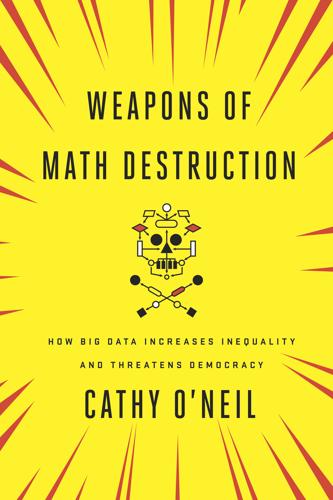
Weapons of Math Destruction: How Big Data Increases Inequality and Threatens Democracy
by
Cathy O'Neil
Published 5 Sep 2016
$3 trillion per year: Chad Terhune, “U.S. Health Spending Hits $3 Trillion as Obamacare and Rising Drug Costs Kick In,” Los Angeles Times, December 2, 2015, www.latimes.com/business/healthcare/la-fi-health-spending-increase-20151202-story.html. Nearly one dollar of every five: Scott Thomas, “Nation’s Total Personal Income Approaches $13 Trillion,” Business Journals, December 4, 2012, www.bizjournals.com/bizjournals/on-numbers/scott-thomas/2012/12/nations-total-personal-income.html. The Affordable Care Act, or Obamacare: US Department of Labor, “The Affordable Care Act and Wellness Programs,” fact sheet, accessed January 9, 2016, www.dol.gov/ebsa/newsroom/fswellnessprogram.html.
…
It involves growing surveillance, including lots of data pouring in from the Internet of Things—the Fitbits, Apple Watches, and other sensors that relay updates on how our bodies are functioning. The idea, as we’ve seen so many times, springs from good intentions. In fact, it is encouraged by the government. The Affordable Care Act, or Obamacare, invites companies to engage workers in wellness programs, and even to “incentivize” health. By law, employers can now offer rewards and assess penalties reaching as high as 50 percent of the cost of coverage. Now, according to a study by the Rand Corporation, more than half of all organizations employing fifty people or more have wellness programs up and running, and more are joining the trend every week.
…
Plenty of hardworking and trustworthy people lose jobs every day as companies fail, cut costs, or move jobs offshore. These numbers climb during recessions. And many of the newly unemployed find themselves without health insurance. At that point, all it takes is an accident or an illness for them to miss a payment on a loan. Even with the Affordable Care Act, which reduced the ranks of the uninsured, medical expenses remain the single biggest cause of bankruptcies in America. People with savings, of course, can keep their credit intact during tough times. Those living from paycheck to paycheck are far more vulnerable. Consequently, a sterling credit rating is not just a proxy for responsibility and smart decisions.
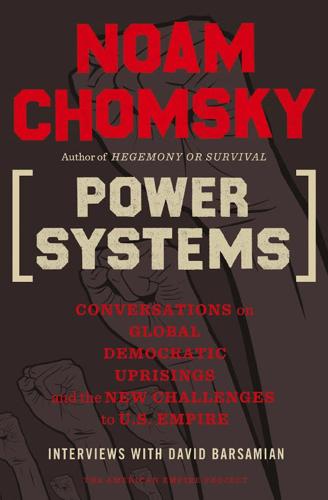
Power Systems: Conversations on Global Democratic Uprisings and the New Challenges to U.S. Empire
by
Noam Chomsky
and
David Barsamian
Published 1 Nov 2012
Concern in the United States is notably less than in comparable countries. And the drop that Klein is describing is exactly what they report. It’s very hard to doubt that that’s connected with the propaganda campaign that has been quite openly conducted. In fact, a couple of years ago, right after the insurance company victories on the health reform bill, so-called Obamacare, there was a report in the New York Times about leaders of the American Petroleum Institute and other business groups looking to the victory in the health care campaign as a model to undermine concern about global warming.34 In the Republican presidential debates, for example, even to mention global warming would be to commit political suicide.
…
Federal Election Commission, 173–74 civil liberties, 69–73, 175 military detention and, 70–73 civil rights movement, 24, 30–31, 45, 65–66, 72, 150, 167, 176 climate change, 75, 121–25, 159 Clinton, Bill, 58, 83, 90, 170 Clinton, Hillary, 162 COINTELPRO, 73, 74, 120 collective bargaining, 40–41 Colombia, 7, 72, 145, 160, 164 colonialism, 3–5, 9, 46, 51 Communist Party, 23–24, 27, 29, 75, 118 Congress, U.S., 27, 32, 41–42, 85 Congress of Industrial Organizations, 23, 68 consensus, 74–75 Constitution, U.S., 72, 85, 174–75 consumerism, 36, 37, 80 corporations, 10, 24, 26, 27, 31–32, 38, 41, 76–77, 81, 103, 119, 152, 174 piracy issue, 107–8 Cuba, 4, 160, 161 culture, and language, 138–40 deaf-blind, 134–35 debt, 8, 87, 152, 168 student, 152 decolonization, 5, 46 democracy, 47, 54, 62, 79–81, 84–85, 109, 112, 143–44, 150, 151, 158–59, 172 Democratic Party, 32, 41–42 demonstrations, 29–33, 35, 40–43, 73–77 Arab Spring, 44–55, 60–64, 67, 112–13, 168 civil rights, 24, 30–31, 45, 65–66, 72, 150, 167, 176 Occupy, 47, 65–69, 74–77, 118–21, 146, 168, 177 student, 73–74 Depression, 23, 27, 28 deregulation, 48, 173–74 Dewey, John, 147, 148, 149 Dink, Hrant, 89, 91 dissidents, 144–45 doctrinal system, 8, 10, 36, 38, 158, 159 Dönitz, Karl, 116 Draghi, Mario, 169 drugs, 160–62 Durand Line, 99 Duvalier, Jean-Claude, 17 Economic Policy Institute, 168 economy, 4, 32, 76–78, 97, 121, 168, 171 Arab Spring, 44–55, 60–64, 67 Chinese, 7–10 financial crisis, 23, 48, 86–89, 168–69 global shift of power, 5–13, 58, 76–77 Indian, 7, 10–11, 20–23 stimulus, 33 U.S. decline, 4–10, 56, 59–60 education, 37, 82, 147–56, 165–68 battle over, 147–56 higher, 150–53, 165–68 K-to-12, 153–56 privatization of, 38–39, 156, 167–68 public, 37–39, 147–48, 153–56, 166–68 science, 154–55 Egypt, 35, 51, 53, 61, 67 Arab Spring, 44–49, 54, 60–64, 67, 168 Einstein, Albert, 143 Eisenhower, Dwight, 125 electoral politics, 102–13, 117–19 electronic books, 104 Ellsberg, Daniel, 15, 113 El Salvador, 145 Emerson, Ralph Waldo, 148, 156 Enlightenment, 116, 147, 148 environment, 12, 75, 121–25, 158–59, 163–65, 176 climate change, 75, 121–25, 159 fracking, 164–65 Erdoan, Recep Tayyip, 89, 90, 93 Europe, 5, 6, 9, 47, 51, 58, 161 economic crisis, 47, 86–89, 168–69 European Central Bank (ECB), 86–87, 169 European Union, 87, 89, 92 evolution, 128, 129, 137–38 Facebook, 145, 146 Federal Bureau of Investigation (FBI), 15, 71, 73 Federal Reserve, 86–87 financial crisis, 23, 48, 86–89, 168–69 Financial Times, 66, 76, 78, 123 Finland, 153, 154 Foreign Affairs, 59, 61 fossil fuels, 21, 22, 49–55, 122–24, 164, 165 fracking, 123, 164–65 France, 46, 50, 52, 68, 112–13, 170 Fraser, Doug, 25 Freedom of Information Act, 110 Gadhafi, Mu’ammar, 50, 53 Galileo, 143, 144 Gates, Bill, 11 Gaza, 93 General Motors, 33, 80 genetics, 126–27, 129, 140 Germany, 15, 27, 51, 58, 118, 153 economic policy, 88 Nazism, 28–29, 115–16 Weimar Republic, 25, 27–29 World War II, 115–16 GI bill, 152 Ginsberg, Benjamin, The Fall of the Faculty, 168 globalization, 5, 20–22, 170 financial crisis, 86–89, 168–69 labor, 9–12, 76–77, 169–70 shift of power, 5–13, 58, 76–77 Goldman Sachs, 42 Google, 107 government, 78–85, 150, 158 big, 81, 82 security, 107–13 “Grand Area” planning, 57 Great Britain, 5, 8–9, 16, 17, 21, 35, 50, 52, 61, 79, 107, 139, 172 colonialism, 9, 20 government, 79 slavery, 36 World War II, 115, 116 Greece, 87 Guantánamo, 72–73 Guatemala, 21 gun culture, 162–63 Gwadar, 22 Haiti, 11, 13–14, 17 Hale, Kenneth, 136, 139–41 Hanif, Mohammed, A Case of Exploding Mangoes, 106 Haq, Abdul, 16 Harvard University, Institute of Politics, 158 Havel, Václav, 145 health care, 24, 76, 82, 157 Obamacare, 124 Heilbrunn, Jacob, 111 Hindenburg, Paul von, 27–28 historical amnesia, 97–98 Hitler, Adolf, 28–29, 32, 88 Holder v. Humanitarian Law Project, 70–71 Honduras, 7, 110–11 House of Representatives, U.S., 85 Human Development Index, 13 “Human Intelligence and the Environment” (Chomsky), 42 Humanitarian Law Project, 70–71 human rights, 109, 113 violations, 89–92, 95–96, 145 Humboldt, Wilhelm von, 149 Hume, David, 79, 81 Hussein, Saddam, 17, 71, 95 imperialism, 1–33 saltwater fallacy, 3–4 terminology, 3 India, 7, 9, 10–11, 17–23, 38, 50, 51, 107, 164 Bhopal explosion, 174 British rule, 20 -China relations, 20–22 economic growth, 7, 10–11, 20–23 -Israel relations, 20, 21 natural resources, 17–20 neoliberalism and, 19–22 TAPI pipeline and, 17–18 -U.S. relations, 20–22 war, 20 indignados, 47 Indonesia, 17 intellectual culture, 79, 81, 104–6, 141 intellectual property rights, 107–8 International Energy Association (IEA), 121–22 International Monetary Fund (IMF), 47 International Organization for a Participatory Society, 171 international relations (IR) theory, 8, 63 Internet, 105–13 security, 107–13 iPhone, 145–46 Iran, 18, 60, 62, 63, 90–91, 93, 95–98, 111, 112, 114 nuclear threat, 112 TAPI pipeline and, 18 Iran-Iraq War, 97 Iraq, 16–17, 21, 60, 61 Kurds, 95–96 nationalism, 55–56 U.S. war in, 16–17, 55–56, 62–63, 114–16 Islam, 60 political, 49, 61 radical, 61, 100 Israel, 20, 21, 96, 112 -India relations, 20, 21 -Lebanon relations, 63 Palestinian conflict, 46 -Turkey relations, 92–94 -U.S. relations, 21 Jacob, François, 129 James, William, 130 Japan, 5, 8, 58, 131, 139 Jefferson, Thomas, 3, 172 job creation, 76, 87 Kagan, Elena, 70 Karachi, 22 Keller, Bill, 144 Keller, Helen, 134, 135 Kennan, George, 57 Kennedy, John F., 2–3 Vietnam policy, 2–3, 97 Khadr, Omar, 72–73 King, Martin Luther, 30–31, 66, 105 Klein, Naomi, 123, 124 Kurds, 21, 89–92, 95–96 labor, 38, 81, 87, 169 anti-labor movements, 40 Arab Spring, 44–55, 60–64, 67 Chinese, 9–10, 11–12 collective bargaining, 40–41 demonstrations and strikes, 29, 33, 35, 40–43, 68, 120, 146 Depression-era, 23, 40, 67–68 global, 9–12, 76–77, 169–70 organized, 23–25, 39–41, 67–68, 147, 171 rustbelt, 11–12 solidarity, 39–41 unemployment, 22–23, 38, 66, 76 unions, 24–26, 33, 39–41, 68, 79, 147, 171 language, 126–42 biological acquisition of, 129–36 culture and, 138–40 sensory deprivation and, 134–35 similarity of, 140–41 study of, 137–38, 142 universal grammar, 126–59 Latin America, 4–7, 22, 61, 160–62, 164 drugs, 160–62 integration of, 6–7, 47, 161 U.S. military bases in, 6–7 Laxness, Halldór, 106 Lebanon, 63 Lee, Ching Kwan, 11 Left, 23, 25, 32–33, 59, 117, 147, 149, 150, 151 student, 73–74 Left Forum, 25, 27, 33 libertarianism, 157, 158, 163 Libya, 50–54, 91 no-fly zone, 50–52 Lippmann, Walter, 81 Madison, James, 84, 85 Magna Carta, 59, 72, 116 Mandela, Nelson, 71 Manning, Bradley, 113, 114 Marcos, Ferdinand, 17 market system, 80–81 Marx, Karl, 173, 175 Massachusetts Institute of Technology, 13, 37, 105, 122, 134, 136, 149 mathematics, 137, 138 McCain, John, 103 McCarthyism, 24 McKiernan, Kevin, 95 media, 32, 66, 150, 151 mental slavery, 34–35, 101–25 Mexico, 11, 152–53, 162, 175 Middle East, 17, 44–64, 89–100, 111 Arab Spring, 44–55, 60–64, 67, 112–13, 168 oil, 21, 49–55 Turkish-Israeli relations, 92–94 uprisings, 44–64 military, 5, 98 Arab Spring, 44–55, 60–64 detention, 70–73 police, 119–20 U.S. bases in Latin America, 6–7 Mobutu Sese Seko, 17 Mondragon, 171 Montgomery, David, The Fall of the House of Labor, 23 Morgenthau, Hans, 63–64 The Purpose of American Politics, 64 Morocco, 46 Mubarak, Hosni, 45, 47, 62 Nader, Ralph, 150 NAFTA, 163, 175 Nasser, Gamal Abdel, 61 National Defense Authorization Act, 70 Native Americans, 22 natural gas, 17–18, 164–65 natural resources, 17–22, 164–65 Navy, U.S., 6–7, 14, 52, 116 Nazism, 28–29, 115–16 New Deal, 23, 82 New York, 67, 100, 166 New York Times, 60, 81, 89–91, 124, 144–45, 160 Ngo Dinh Diem, 2, 3 Ngo Dinh Nhu, 2, 3 Nicaragua, 7 9/11 attacks, 14, 15–16, 139 Nixon, Richard, 125, 150 No Child Left Behind, 153 Non-Proliferation Treaty, 18 North Africa, 46–48, 57, 60 North Atlantic Treaty Organization (NATO), 50, 51, 91, 92 Norway, 115 nuclear weapons, 97, 98, 100, 110, 112, 176 Nuremberg Trials, 115–16 Nystrom, Paul, 36 Obama, Barack, 7, 33, 63, 90–91, 93, 110, 111, 114, 153, 162, 164 Afghanistan War and, 14–15 civil liberties and, 70–73 Libya and, 51–52 organized labor and, 41–42 2008 election, 102–3 Obamacare, 124 Occupy movements, 47, 65–69, 74–77, 118–21, 146, 168, 177 oil, 21, 22, 49–55, 124 Orwell, George, 19, 97 Pakistan, 16, 17, 22, 61, 98–100, 110 drone attacks on, 18–19, 98–99 nuclear industry, 98–100, 110 TAPI pipeline and, 18 Palestine, 46, 72 -Israel conflict, 46 Palmer raids, 68 Pamuk, Orhan, 91 Panama, 7 Panetta, Leon, 114 Pashtuns, 99 Patterson, Anne W., 99, 110 Paul, Rand, 157, 162, 163 Paul, Ron, 75, 124–25, 157, 163 pensions, 12, 22, 24, 26 Peres, Shimon, 93 Peshawar, 16 pharmaceutical companies, 107–8 Philippines, 4, 17 Pinochet, Augusto, 61 piracy, 107–8 political Islam, 49, 61 Political Science Quarterly, 82 police repression, 119–20 politics, 32, 41, 57, 59, 121, 142–45, 171 electoral, 102–3, 117–19 labor demonstrations and, 41–43 poverty, 6, 66, 82, 84 Powell, Colin, 115 Powell, Lewis, 150–51 Powell memorandum, 150–51 power systems, 34–35, 69 aristocrats and democrats, 160–78 chains of submission and subservience, 34–43 global shift, 5–13, 58, 76–77 language and education, 126–59 mental slavery, 101–25 new American imperialism, 1–33 uprisings, 44–64 privatization, 11, 38, 39, 40, 156–57, 167 Progressive Labor (PL), 73 propaganda system, 35–40, 66, 80, 82, 102, 119, 122–24 property rights, 84, 85 public, power of the, 78–81 public education, 37–39, 147–48, 153–56, 166–68 public relations, 35, 79–81, 102–3 Qasim, Abd al-Karim, 61 Race to the Top, 153 racism, 3, 31, 92 Ravitch, Diane, 154 Reagan, Ronald, 62, 71, 82, 95, 99 recession, 23, 48, 86–89 Red Scare, 23, 68, 120 Reich, Robert, 170, 172 Reilly, John, 122 Republican Party, 41, 57, 75, 76, 124, 125 Revolutionary Armed Forces of Colombia (FARC), 72 Ribbentrop, Joachim von, 115 Right, 23, 32, 150–51 Riyadh, 52 Romney, Mitt, 57–58, 75 Roosevelt, Franklin D., 14, 23, 54 Roy, Arundhati, 22, 29, 31 Russia, 17–18, 20, 50, 61, 98, 102, 145 rustbelt, 11–12 Saharawi movement, 46 saltwater fallacy, 3–4 Saudi Arabia, 21, 49, 52, 61, 99, 111, 144 science, 142–43, 144 education, 154–55 modern, 143 sectarianism, 73–74 Seib, Gerald, 54 self-destruction, 42–43 Senate, U.S., 63, 85 sensory deprivation, 134–35 Shiites, 52–53 Singh, Manmohan, 19 Sino-Indian War, 20 slavery, 3, 34, 36, 51 end of, 34, 35, 36 mental, 34–35, 101–25 Slim, Carlos, 11 Smith, Adam, 8–9 social Darwinism, 157 social media, 105, 107, 145–47 Social Security, 39, 156–57 solidarity, 38–41, 146–47, 159 South Africa, 21, 50–51 apartheid, 71 South America, 6, 7, 57, 60, 161 Southeast Asia, 4, 60 South Korea, 9, 17 Spain, 4, 6, 33, 87 sports, college, 154–55 Stack, Joseph, 25–26, 29 Stalin, Joseph, 61 Stohl, Bev, 105 Stop Online Piracy Act, 107 strategic hamlets, 2 student activism, 73–74 submission and subservience, chains of, 34–43 Summit of the Americas (2012), 160–61 sunbelt, 11, 12 Sunnis, 52–53 Supreme Court, U.S., 70, 150 Buckley v.
…
Humanitarian Law Project, 70–71 Honduras, 7, 110–11 House of Representatives, U.S., 85 Human Development Index, 13 “Human Intelligence and the Environment” (Chomsky), 42 Humanitarian Law Project, 70–71 human rights, 109, 113 violations, 89–92, 95–96, 145 Humboldt, Wilhelm von, 149 Hume, David, 79, 81 Hussein, Saddam, 17, 71, 95 imperialism, 1–33 saltwater fallacy, 3–4 terminology, 3 India, 7, 9, 10–11, 17–23, 38, 50, 51, 107, 164 Bhopal explosion, 174 British rule, 20 -China relations, 20–22 economic growth, 7, 10–11, 20–23 -Israel relations, 20, 21 natural resources, 17–20 neoliberalism and, 19–22 TAPI pipeline and, 17–18 -U.S. relations, 20–22 war, 20 indignados, 47 Indonesia, 17 intellectual culture, 79, 81, 104–6, 141 intellectual property rights, 107–8 International Energy Association (IEA), 121–22 International Monetary Fund (IMF), 47 International Organization for a Participatory Society, 171 international relations (IR) theory, 8, 63 Internet, 105–13 security, 107–13 iPhone, 145–46 Iran, 18, 60, 62, 63, 90–91, 93, 95–98, 111, 112, 114 nuclear threat, 112 TAPI pipeline and, 18 Iran-Iraq War, 97 Iraq, 16–17, 21, 60, 61 Kurds, 95–96 nationalism, 55–56 U.S. war in, 16–17, 55–56, 62–63, 114–16 Islam, 60 political, 49, 61 radical, 61, 100 Israel, 20, 21, 96, 112 -India relations, 20, 21 -Lebanon relations, 63 Palestinian conflict, 46 -Turkey relations, 92–94 -U.S. relations, 21 Jacob, François, 129 James, William, 130 Japan, 5, 8, 58, 131, 139 Jefferson, Thomas, 3, 172 job creation, 76, 87 Kagan, Elena, 70 Karachi, 22 Keller, Bill, 144 Keller, Helen, 134, 135 Kennan, George, 57 Kennedy, John F., 2–3 Vietnam policy, 2–3, 97 Khadr, Omar, 72–73 King, Martin Luther, 30–31, 66, 105 Klein, Naomi, 123, 124 Kurds, 21, 89–92, 95–96 labor, 38, 81, 87, 169 anti-labor movements, 40 Arab Spring, 44–55, 60–64, 67 Chinese, 9–10, 11–12 collective bargaining, 40–41 demonstrations and strikes, 29, 33, 35, 40–43, 68, 120, 146 Depression-era, 23, 40, 67–68 global, 9–12, 76–77, 169–70 organized, 23–25, 39–41, 67–68, 147, 171 rustbelt, 11–12 solidarity, 39–41 unemployment, 22–23, 38, 66, 76 unions, 24–26, 33, 39–41, 68, 79, 147, 171 language, 126–42 biological acquisition of, 129–36 culture and, 138–40 sensory deprivation and, 134–35 similarity of, 140–41 study of, 137–38, 142 universal grammar, 126–59 Latin America, 4–7, 22, 61, 160–62, 164 drugs, 160–62 integration of, 6–7, 47, 161 U.S. military bases in, 6–7 Laxness, Halldór, 106 Lebanon, 63 Lee, Ching Kwan, 11 Left, 23, 25, 32–33, 59, 117, 147, 149, 150, 151 student, 73–74 Left Forum, 25, 27, 33 libertarianism, 157, 158, 163 Libya, 50–54, 91 no-fly zone, 50–52 Lippmann, Walter, 81 Madison, James, 84, 85 Magna Carta, 59, 72, 116 Mandela, Nelson, 71 Manning, Bradley, 113, 114 Marcos, Ferdinand, 17 market system, 80–81 Marx, Karl, 173, 175 Massachusetts Institute of Technology, 13, 37, 105, 122, 134, 136, 149 mathematics, 137, 138 McCain, John, 103 McCarthyism, 24 McKiernan, Kevin, 95 media, 32, 66, 150, 151 mental slavery, 34–35, 101–25 Mexico, 11, 152–53, 162, 175 Middle East, 17, 44–64, 89–100, 111 Arab Spring, 44–55, 60–64, 67, 112–13, 168 oil, 21, 49–55 Turkish-Israeli relations, 92–94 uprisings, 44–64 military, 5, 98 Arab Spring, 44–55, 60–64 detention, 70–73 police, 119–20 U.S. bases in Latin America, 6–7 Mobutu Sese Seko, 17 Mondragon, 171 Montgomery, David, The Fall of the House of Labor, 23 Morgenthau, Hans, 63–64 The Purpose of American Politics, 64 Morocco, 46 Mubarak, Hosni, 45, 47, 62 Nader, Ralph, 150 NAFTA, 163, 175 Nasser, Gamal Abdel, 61 National Defense Authorization Act, 70 Native Americans, 22 natural gas, 17–18, 164–65 natural resources, 17–22, 164–65 Navy, U.S., 6–7, 14, 52, 116 Nazism, 28–29, 115–16 New Deal, 23, 82 New York, 67, 100, 166 New York Times, 60, 81, 89–91, 124, 144–45, 160 Ngo Dinh Diem, 2, 3 Ngo Dinh Nhu, 2, 3 Nicaragua, 7 9/11 attacks, 14, 15–16, 139 Nixon, Richard, 125, 150 No Child Left Behind, 153 Non-Proliferation Treaty, 18 North Africa, 46–48, 57, 60 North Atlantic Treaty Organization (NATO), 50, 51, 91, 92 Norway, 115 nuclear weapons, 97, 98, 100, 110, 112, 176 Nuremberg Trials, 115–16 Nystrom, Paul, 36 Obama, Barack, 7, 33, 63, 90–91, 93, 110, 111, 114, 153, 162, 164 Afghanistan War and, 14–15 civil liberties and, 70–73 Libya and, 51–52 organized labor and, 41–42 2008 election, 102–3 Obamacare, 124 Occupy movements, 47, 65–69, 74–77, 118–21, 146, 168, 177 oil, 21, 22, 49–55, 124 Orwell, George, 19, 97 Pakistan, 16, 17, 22, 61, 98–100, 110 drone attacks on, 18–19, 98–99 nuclear industry, 98–100, 110 TAPI pipeline and, 18 Palestine, 46, 72 -Israel conflict, 46 Palmer raids, 68 Pamuk, Orhan, 91 Panama, 7 Panetta, Leon, 114 Pashtuns, 99 Patterson, Anne W., 99, 110 Paul, Rand, 157, 162, 163 Paul, Ron, 75, 124–25, 157, 163 pensions, 12, 22, 24, 26 Peres, Shimon, 93 Peshawar, 16 pharmaceutical companies, 107–8 Philippines, 4, 17 Pinochet, Augusto, 61 piracy, 107–8 political Islam, 49, 61 Political Science Quarterly, 82 police repression, 119–20 politics, 32, 41, 57, 59, 121, 142–45, 171 electoral, 102–3, 117–19 labor demonstrations and, 41–43 poverty, 6, 66, 82, 84 Powell, Colin, 115 Powell, Lewis, 150–51 Powell memorandum, 150–51 power systems, 34–35, 69 aristocrats and democrats, 160–78 chains of submission and subservience, 34–43 global shift, 5–13, 58, 76–77 language and education, 126–59 mental slavery, 101–25 new American imperialism, 1–33 uprisings, 44–64 privatization, 11, 38, 39, 40, 156–57, 167 Progressive Labor (PL), 73 propaganda system, 35–40, 66, 80, 82, 102, 119, 122–24 property rights, 84, 85 public, power of the, 78–81 public education, 37–39, 147–48, 153–56, 166–68 public relations, 35, 79–81, 102–3 Qasim, Abd al-Karim, 61 Race to the Top, 153 racism, 3, 31, 92 Ravitch, Diane, 154 Reagan, Ronald, 62, 71, 82, 95, 99 recession, 23, 48, 86–89 Red Scare, 23, 68, 120 Reich, Robert, 170, 172 Reilly, John, 122 Republican Party, 41, 57, 75, 76, 124, 125 Revolutionary Armed Forces of Colombia (FARC), 72 Ribbentrop, Joachim von, 115 Right, 23, 32, 150–51 Riyadh, 52 Romney, Mitt, 57–58, 75 Roosevelt, Franklin D., 14, 23, 54 Roy, Arundhati, 22, 29, 31 Russia, 17–18, 20, 50, 61, 98, 102, 145 rustbelt, 11–12 Saharawi movement, 46 saltwater fallacy, 3–4 Saudi Arabia, 21, 49, 52, 61, 99, 111, 144 science, 142–43, 144 education, 154–55 modern, 143 sectarianism, 73–74 Seib, Gerald, 54 self-destruction, 42–43 Senate, U.S., 63, 85 sensory deprivation, 134–35 Shiites, 52–53 Singh, Manmohan, 19 Sino-Indian War, 20 slavery, 3, 34, 36, 51 end of, 34, 35, 36 mental, 34–35, 101–25 Slim, Carlos, 11 Smith, Adam, 8–9 social Darwinism, 157 social media, 105, 107, 145–47 Social Security, 39, 156–57 solidarity, 38–41, 146–47, 159 South Africa, 21, 50–51 apartheid, 71 South America, 6, 7, 57, 60, 161 Southeast Asia, 4, 60 South Korea, 9, 17 Spain, 4, 6, 33, 87 sports, college, 154–55 Stack, Joseph, 25–26, 29 Stalin, Joseph, 61 Stohl, Bev, 105 Stop Online Piracy Act, 107 strategic hamlets, 2 student activism, 73–74 submission and subservience, chains of, 34–43 Summit of the Americas (2012), 160–61 sunbelt, 11, 12 Sunnis, 52–53 Supreme Court, U.S., 70, 150 Buckley v.
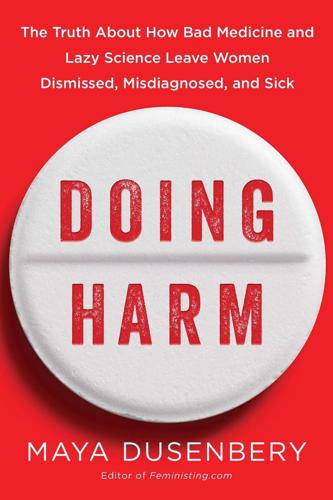
Doing Harm: The Truth About How Bad Medicine and Lazy Science Leave Women Dismissed, Misdiagnosed, and Sick
by
Maya Dusenbery
Published 6 Mar 2018
Kaiser Family Foundation, October 21, 2016, http://kff.org/womens-health-policy/fact-sheet/womens-health-insurance-coverage-fact-sheet/. Health care reform also corrected . . . Jessica Arons and Lucy Panza, “Top 10 Obamacare Benefits at Stake for Women,” ThinkProgress, May 24, 2012, https://thinkprogress.org/top-10-obamacare-benefits-at-stake-for-women-5ff541dfdf53#.36n0gciws. Insurers are now required . . . “Preventive Services Covered Under the Affordable Care Act,” U.S. Department of Health and Human Services, September 23, 2010, www.hhs.gov/healthcare/facts-and-features/fact-sheets/preventive-services-covered-under-aca/. Still, 11.2 million women, many of them low-income women of color . . .
…
And putting comparatively less effort into understanding the bodies of one half of the population, and the ailments that happen to especially affect them, has left gaps in our scientific knowledge that have deprived us all. BARRIERS TO ACCESS This book focuses on how gender bias affects medical knowledge and the care women receive when they enter the medical system, but it is worth spending some time considering the obstacles that many women have to overcome to access the medical system at all. The Affordable Care Act provided some key benefits to women especially, which, as of this writing, they still have. Before it went into effect, approximately 20 percent of women ages eighteen to sixty-four were uninsured. By 2015, that figure had dropped to about 11 percent. Health care reform also corrected some long-standing unjust practices of the insurance industry.
…
Index The pagination of this digital edition does not match the print edition from which the index was created. To locate a specific entry, please use your ebook reader’s search tools. abortion, 16–17, 23, 26, 63 addiction, 47, 55 Addison’s disease, 148 adverse childhood experiences (ACE), 89 Affordable Care Act (ACA), 13–14, 17 Albee, Robert, Jr., 224 allergies, 297–98 All in My Head (Kamen), 195 Alzheimer’s disease, 3, 20, 27, 47, 243 Ambien (zolpidem), 43–44 American Association of Clinical Endocrinologists, 160 American Autoimmune Related Diseases Association (AARDA), 2, 138, 140, 142, 144, 145, 147, 148 American College of Obstetricians and Gynecologists, 26, 52 American College of Rheumatology, 200 American Gynecological Society, 214 American Heart Association, 110 American Medical Association (AMA), 7, 16, 52, 141; AMA Journal of Ethics article, 77; English’s open letter, 263; JAMA studies on gender pay gap and gender bias, 10 American Psychological Association (APA), Personality Characteristics of Patients with Pain, 195 American Thyroid Association, 159 anesthesia, 43, 53 anti-NMDA receptor encephalitis, 167–69 anxiety, 50, 70, 91; misdiagnosis of other diseases as, 122–24, 146, 151, 154, 159; panic disorder, 124–25, 277; POTS undifferentiated from, 277; somatization and, 78, 82, 89, 92; symptoms attributed to, 61–62, 78, 80–82, 89, 122–24, 126–29, 151, 199 Aronowitz, Robert A., 288 arrhythmias, 110–11 Association of American Medical Colleges, online curriculum database, 54 asthma, 41, 73, 241, 242, 297, 302 Atkins, Chloë, My Imaginary Illness, 102, 103 attention deficit disorder, 117 Aucott, John, 291–92 Authors of Our Own Misfortune?
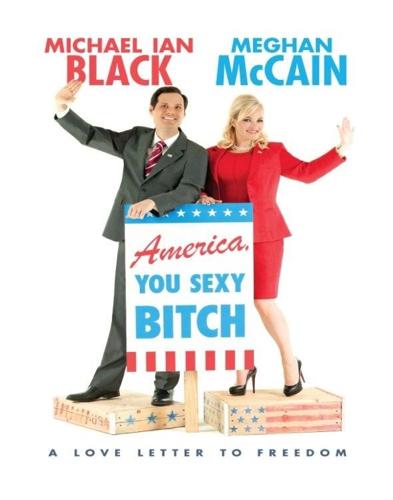
America, You Sexy Bitch: A Love Letter to Freedom
by
Meghan McCain
and
Michael Black
Published 31 May 2012
They live in a comfortable but creaky townhouse on the south side of London, and every summer they come to the States to summer at an old beach house her family has had since the thirties. I’m curious to hear about the British National Health Service, a single-payer system, which has become a bogeyman here in the United States. The Republicans routinely point to Canada and England as examples of the path on which Obamacare is leading us, and never in a complimentary fashion. They never say, for example, “Obamacare will make our health care system like England’s! And it will be great! Cucumber sandwiches for everybody!” Whether or not we are ultimately headed for a single-payer system I have no idea, but I am curious to hear what Jessica’s experience with it is like, since she’s dealt with both the American and British systems.
…
Depending on which civic organization you choose to believe, the world’s first rodeo was either in Payson, Arizona, in 1884, Pecos, Texas, in 1883, or Deer Trail, Colorado, in 1869. But I’m not going to quibble with the residents of Prescott because I am a guest in their town and because they all have guns. While we’re cleaning up after lunch, the conversation turns to health care, or specifically “Obamacare,” which Jackie hates. Jackie hates Obama generally and his new health care law specifically. Even Jackie, hard ass Jackie, is willing to concede that there are parts of the Obama health care plan she likes. The preexisting condition stuff, for example. But she worries that our health care system, “the finest in the world,” will become like Mexico’s.
…
I’m in no mood, so of course the minute my butt hits the cushiony blue seats, Michael starts spewing some nonsense about health care and we begin the morning by bickering like an old married couple. By now he must be fully aware that health care and national defense are possibly the two issues that I am most conservative and he is most liberal about. Well, even though I’m pretty sure there’s a big brick wall in my future, we start discussing Obamacare on the bus on the way to the swamp tour. Michael’s argument starts with Republicans being heartless, and that we all need “to give a little more for the common good,” and that “health care should be free to every American.” I naturally feel like Uncle Scrooge when I say that universal health care would bankrupt this country if enacted into law.
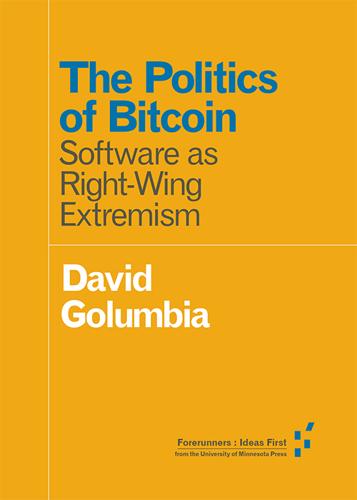
The Politics of Bitcoin: Software as Right-Wing Extremism
by
David Golumbia
Published 25 Sep 2016
Reflecting on some surprising alliances between today’s technology giants and the lobbying groups and of the world’s major extractive resource companies, Ames (2015) writes that even if we still give Google and Facebook the benefit of the doubt, and allow that their investments in the Cato Institute and the Competitive Enterprise Institute weren’t directly motivated by killing Obamacare and throwing millions of struggling Americans back into the ranks of the uninsured and prematurely dying—nevertheless, they are accessories, and very consciously so. Big Tech’s larger political goals are in alignment with the old extraction industry’s: undermining the countervailing power of government and public politics to weaken its ability to impede their growing dominance over their portions of the economy, and to tax their obscene stores of cash.
…
Bibliography Abel, Andrew B., Ben S. Bernanke, and Dean Croushore. 2008. Macroeconomics. 3rd ed. Boston: Pearson. Allen, Katie. 2013. “Gold Price Volatility Hits Pawnbroker’s Profits.” The Guardian (September). http://www.theguardian.com/. Ames, Mark. 2015. “Google Is Helping to Fund the Group That’s Trying to Kill Obamacare in the Supreme Court.” Pando Daily (March 18). http://pando.com/. Andolfatto, David. 2013. “Why Gold and Bitcoin Make Lousy Money.” Economist’s View (April). http://economistsview.typepad.com. Andreessen, Marc. 2014. “Why Bitcoin Matters.” New York Times (January). http://dealbook.nytimes.com/.
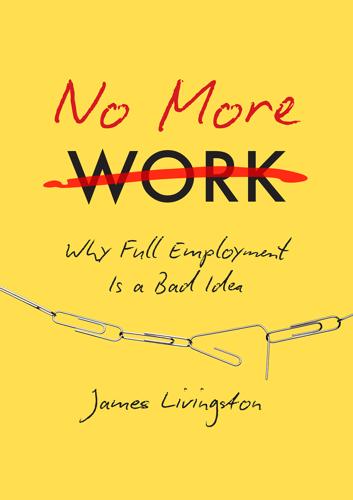
No More Work: Why Full Employment Is a Bad Idea
by
James Livingston
Published 15 Feb 2016
Here is how Edsall, the New York Times columnist, summarized the progressive political morality of full employment in December 2013: The economics of survival have forced millions of men, women, and children to rely on “pity-charity liberal capitalism” [Edsall is here quoting Konczal]. The state has now become the resource of last resort, consigning just the people progressives would like to turn into a powerful force for reform to a condition of subjugation—living out their lives on government subsidies like Medicaid, the Earned Income Tax Credit, and now Obamacare.1 The only alternative to this vaguely, benignly fascistic version of liberalism, according to Edsall and Konczal, is a “bold” public policy commitment to full employment, presumably because more jobs mean less dependence on the state for income supplements, aka transfer payments, entitlements, and government subsidies.
…
Then notice how a potential “force for reform” is made pliant, docile, and inert because it doesn’t just receive, it relies on government subsidies. If you didn’t know any better, you’d think a Tea Party enthusiast wrote this paragraph after finishing Atlas Shrugged, particularly in view of the reference to Obamacare as a government subsidy that will subjugate the poor, to be sure, but also create a permanent constituency for the Democrats, the party of “pity-charity liberal capitalism.” From this standpoint, there’s no middle ground between work, on the one hand, and dependence on the other—between having a job and being subjugated by the state (or the party).
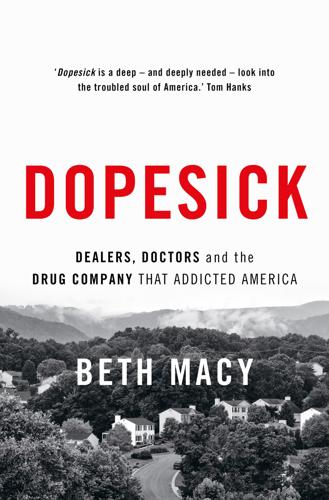
Dopesick: Dealers, Doctors and the Drug Company That Addicted America
by
Beth Macy
Published 4 Mar 2019
“It was like we had a Dementor from Harry Potter”: Author interview, Jamie Waldrop, Nov. 6, 2017. a former pro baseball player who’d progressed: Author interviews, Terrence Engles, Jan. 4, 2016, and subsequent interviews. “RomneyCare”: Kenneth Rapoza, “If ObamaCare Is So Bad, How Does RomneyCare Survive?,” Forbes, Jan. 20, 2012. sacrificing $6.6 million a day in federal funds: “McAuliffe Pushes Virginia Medicaid expansion After GOP’s Failure to Repeal Obamacare,” CNN Wire, March 27, 2017. Republican House of Delegates speaker William Howell claimed an expansion would take state resources from education, transportation, and public safety, even though 90 percent of the bill would be footed by the federal government.
…
Unlike Campanello’s Massachusetts, Virginia could not rely on anything close to RomneyCare, the 2006 initiative signed into law by then–Bay State governor Mitt Romney, guaranteeing insurance coverage to 99 percent of the state. Virginia’s legislature had repeatedly turned down attempts to pass Medicaid expansion in the wake of the Affordable Care Act, sacrificing $6.6 million a day in federal funds and insurance coverage for four hundred thousand low-income Virginians—a frequent source of frustration for opioid-affected families and health care advocates. In states where Medicaid expansions were passed, the safety-net program had become the most important epidemic-fighting tool, paying for treatment, counseling, and addiction medications, and filling other long-standing gaps in care.
…
With no money for repairs, school administrators resorted to temporary measures to divert the vultures, erecting giant inflatable tube men, the silly beacons you see waving from car dealerships. The fifty-four-year-old teacher hadn’t had insurance in decades, not since she was pregnant and qualified for Medicaid; her husband, a former Walmart worker disabled by a series of strokes, was on Medicare. Because Virginia hadn’t approved the Affordable Care Act Medicaid expansion, she patched together free coverage at RAM events and occasional visits to Tyson’s mobile unit when it came to town. She had to be practically dying before she went to see her family doctor, who accepted cash at a discount rate of $63 per visit. * In a state with an increasingly flimsy safety net, people like Tyson had been left to clean up the politicians’ mess.

Humble Pi: A Comedy of Maths Errors
by
Matt Parker
Published 7 Mar 2019
Well, it could be anything from 2.5 metres to 3.49 metres (or maybe something like 2.500 metres to 3.499 metres, depending on rounding conventions). It seems some politicians are as smart as a kid in Year 7. In the first year of Donald Trump’s presidency, his White House was trying to repeal the Affordable Care Act (ACA), or Obamacare, as it had been branded. When doing this through legislation proved harder than they seem to have expected, they turned to rounding. For while the ACA laid down the official guidelines for the healthcare market, the Department of Health and Human Services was responsible for writing the regulations based on the ACA.
…
Kilometres are actually a combination of the distance unit of a metre with the ‘size unit’ of one thousand. But with money, these size units cause problems. This was the basis of a meme passed around in 2015 when Obama’s Affordable Care Act was up and running, but not without teething problems (and the ACA Marketplace insurance plans don’t all cover dental work). An easy target for criticism was the cost of setting up Obamacare. A figure of $360 million was passed around as the cost of introducing the program, which is a large amount of money: over a third of a billion dollars. So people on the right of the political spectrum looked for ways to highlight just how much money it was.
…
I appreciate that people are far less critical when it comes to evidence which supports their political beliefs, but I’d like to believe that even the most self-affirming pieces of evidence must at least pass some rudimentary sense-check filter before being promulgated. I cling to the theory that at least the threat of public embarrassment will stop people from endorsing patently implausible claims. Part of me cannot be convinced that anyone arguing for this Obamacare meme is not a troll and in it for the lulz. But to give them the benefit of the doubt, let’s try to work out why this false assertion was so tenacious. My favourite version of this argument online has the protagonist back up the claim that $360 million divided by 317 million people is a million dollars each (with cash to spare) by breaking it down like this: There are 317 people and you have 360 chairs.
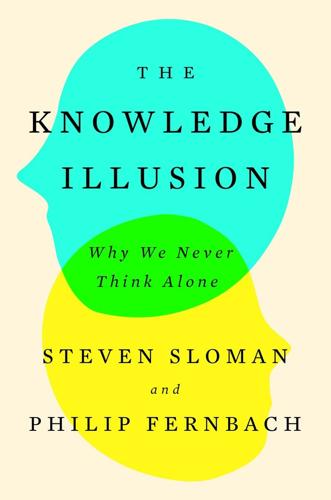
The Knowledge Illusion
by
Steven Sloman
Published 10 Feb 2017
NINE Thinking About Politics Few recent issues have excited Americans (and American political candidates) as much as the Affordable Care Act (more familiar as Obamacare) that became law in 2010. This law has been the subject of numerous debates and served as one of the pillars of the Republican attack on Barack Obama’s presidency. The Republicans in Congress voted multiple times to repeal or change the law. Yet, even though it has engendered much excitement and posturing on both sides, few people actually understand the law. In fact, a survey by the Kaiser Family Foundation in April 2013, found that more than 40 percent of Americans were not even aware that the Affordable Care Act is law (12 percent thought that it had been repealed by Congress—it hadn’t).
…
Our tendency to mentally substitute individuals for complicated entities can be seen in how we talk about institutions. Americans talk about the Eisenhower administration or the Kennedy administration as if the president of the United States personally carries out all the functions of the executive branch of government. The Affordable Care Act runs to about 20,000 or so pages of legalese. It is commonly referred to as Obamacare. How much of it do you think Barack Obama himself wrote? Our guess is none. Our presidents may or may not be great leaders, but they are definitely human beings. It is certainly fair to hold them responsible for the actions of their administrations, but not because they actually performed those actions.
…
See artificial intelligence (AI) machines and widgets problem from Cognitive Reflection Test, 82 The Matrix (film), 261 McGaugh, James, 38 McHargue, Mike (“Science Mike”), 160–62 McKenzie, Craig, 235 mechanical adjustments, difficulty making, 70–71 mechanic example of education’s purpose, 219–20 medical information example of accessible knowledge, 125 memory AJ (memory case study), 38–40, 96 estimating the size of human, 25–26 “Funes the Memorious” (Borges), 37–39 hyperthymesia, 38–40, 47–48, 96 storing details, downside of, 47–48 Mendeleev, Dmitri, 199–200 military strategy example of complexity, 32–33 mind location of the, 101–05 watering can handle example, 101–02 Minsky, Marvin, 86 modus ponens reasoning, 54, 58 moral dumbfounding, 181–82 moving text window example of human cognition, 93–95 Ms. Y’s lethargy example of causal reasoning, 59–61 Musk, Elon, 141 natural world example of complexity, 29–31 Newton, Isaac, 69–70 nudges, behavioral, 248–49 Nyhan, Brendan, 159 Obama, Barack, 197 Obamacare. See Affordable Care Act On Motion (Galilei), 66 opposition to science and technology Bodmer Report, 156–59 food irradiation, 167–68 genetically modified organisms (GMOs), 155, 165–67 vaccination, 155–56 optic flow, 98–100 bee example, 100 doorway example, 99–100 highway lines example, 99 wheat field example, 98–99 organ donation example of libertarian paternalism, 248–49 ox’s weight example of crowdsourcing, 148 Pallokerho-35 Finnish soccer club example of crowdsourcing, 148 Parker, Elizabeth, 38 Pavlov, Ivan, 50 perception, 46–47 Perkins, David, 222 phobias, 104 physics curving bullets example, 69–70 Newton’s laws of motion, 69–70 placeholders, knowledge, 125–26 plants vs. animals, 40–42.
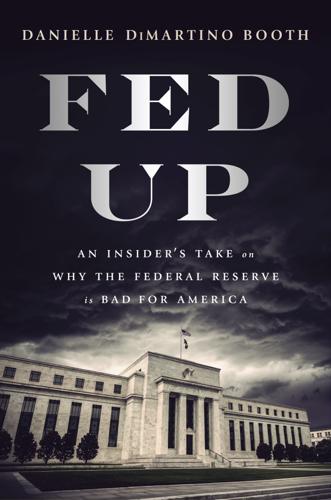
Fed Up: An Insider's Take on Why the Federal Reserve Is Bad for America
by
Danielle Dimartino Booth
Published 14 Feb 2017
Why, then, had the Texas economy surpassed: FRBD: Richard Fisher, “The Limits of the Powers of Central Banks (With Metaphoric References to Edvard Munch’s Scream and Sir Henry Raeburn’s The Reverend Robert Walker Skating on Duddingston Loch (speech, St. Andrews University, June 5, 2012), www.dallasfed.org/news/speeches/fisher/2012/fs120605.cfm. In addition to businesses: Obamacare bill: The Patient Protection and Affordable Care Act, obamacarefacts.com/obamacarebill/. Even before the August 2012: Jon Hilsenrath, “How Bernanke Pulled the Fed His Way,” Wall Street Journal, September 28, 2012. “They have gone about their usual”: Mamta Badkar, “Stephen Roach: WSJ Report Jon Hilsenrath Is the Chairman of the Fed,” BusinessInsider.com, July 25, 2012.
…
Annual borrowing costs for the United States since 2008 have hovered around 1.8 percent, thanks to an overly accommodating Fed, which allowed a dysfunctional Congress and the administration of former President Barack Obama to kick the responsibility down the road. Massive spending programs, however ill conceived, got funded with little opposition. Obamacare, anyone? According to the Congressional Budget Office (CBO), since 2008 federal debt held by the public has nearly doubled and now stands at 75 percent of gross domestic product (GDP). If this lunacy doesn’t end, debt will be 110 percent of GDP by 2036, exceeding the post–World War II peak of 106 percent.
…
Fisher credited state and local governments whose tax, spending, and regulatory policies were oriented toward job creation. But the Fed continued to look at the nation’s unemployment metrics as a whole without examining what was working at the state level. In addition to businesses not knowing what the Fed was going to do, Obamacare, signed into law by the president on March 23, 2010, added another level of uncertainty, encouraging businesses to wait until the dust settled. Even before the August 2012 FOMC meeting, Bernanke began making dozens of phone calls to FOMC members to gather support for a proposal he planned to present at the September meeting.
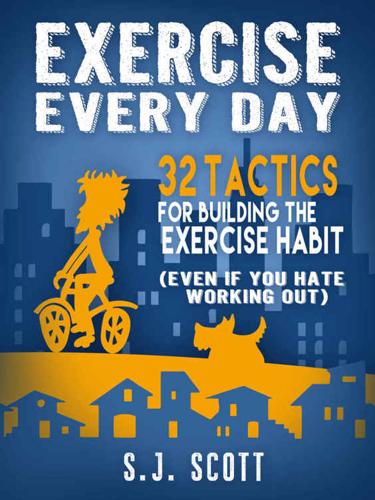
Exercise Every Day: 32 Tactics for Building the Exercise Habit (Even If You Hate Working Out)
by
S.J. Scott
Published 19 Mar 2015
While I do recommend joining a gym to have an alternative solution for when the weather is inclement, you should always be budget-conscious. When the cost of shoes or exercise equipment makes you balk, compare it to the medical costs people incur because they have neglected their bodies and avoided exercise for a lifetime. Even in the days of Obamacare (or specifically in the days of Obamacare, depending upon your financial situation), healthcare can be really, really, really expensive. How much better is it to invest in your health and well-being now than to pay for painful and expensive medical care in the years to come? HOW TO IMPLEMENT Step One: Use sites like eBay and Craigslist to search for lightly used equipment or check with family and friends to see if they happen to have stuff in their basement you could borrow or purchase on the cheap.
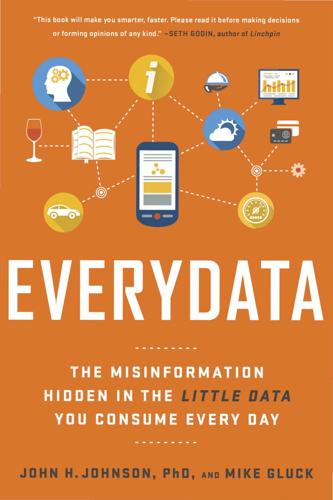
Everydata: The Misinformation Hidden in the Little Data You Consume Every Day
by
John H. Johnson
Published 27 Apr 2016
,” CNBC, accessed August 16, 2015, http://www.cnbc.com/2015/08/13/are-red-or-blue-states-better-job-creators.html; “Climate Battle Will Likely Divide Red States and Blue States Down a Green Line,” National Journal, accessed August 15, 2016, http://www.nationaljournal.com/next-america/newsdesk/climate-epa-regulation-obama-states-20150803; Steve Benen, “‘Obamacare’ Thrives in Nation’s Largest Blue State,” the Maddow Blog, accessed August 16, 2015, http://www.msnbc.com/rachel-maddow-show/obamacare-thrives-nations-largest-blue-state. 4. All maps are from http://www-personal.umich.edu/~mejn/election/2012/. Mark Newman, “Maps of the 2012 US Presidential Election Results,” from the personal page associated with the University of Michigan website, updated November 8, 2012, http://www-personal.umich.edu/~mejn/election/2012/.
…
The Electoral College is an example of aggregated data—a type of summary statistic that can often be misleading because it can mask variation in the data. You’ve probably seen media reports that analyze all of the supposed differences between red states and blue states, with stories highlighting differences in everything from job creation to environmental regulations to Obamacare.3 But is there really that much of a divide in terms of the way we think, act, and vote? Or will we see a different story as we go deeper into the data? Let’s take a closer look at the voting data, starting with a map of the 2012 election results (figure 3-1) from Mark Newman at the University of Michigan (note that red is light gray and blue is dark gray in this map).4 When you look at red states versus blue states, you see lots of divisions.
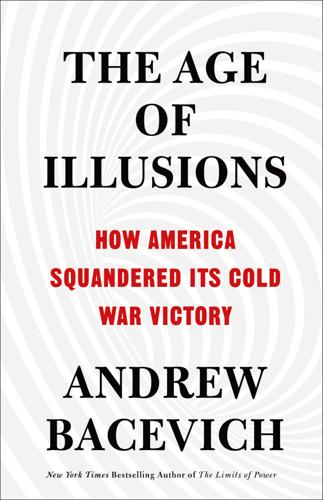
The Age of Illusions: How America Squandered Its Cold War Victory
by
Andrew J. Bacevich
Published 7 Jan 2020
His successor immediately set out to dismantle most of what comprised his legacy. Whether motivated by principle, petulance, or ill-disguised racism, Republican efforts to undo all that Obama had accomplished require us to reinterpret his presidency—even before the initial interpretation has fully formed. If Obamacare, the Paris accord on climate change, the Iran nuclear deal, and restoring U.S. diplomatic ties with Havana don’t define his legacy, what does? Allow me to suggest one possibility: Our forty-fourth president’s signature achievement was to briefly prolong the life of the Emerald City consensus. He did this by temporarily propping up elements of that consensus already showing signs of impending failure and pivoting toward a domestic freedom agenda to which his immediate predecessors had given only intermittent attention.
…
He promised to reauthorize torture and “load up” the U.S. military prison at Guantánamo “with some bad dudes.”23 He vowed to quit NATO, abandon the Iran nuclear deal, move the American embassy in Israel to Jerusalem, and jettison every trade deal that did not demonstrably benefit the U.S. economy. He would terminate Obamacare on “day one,” appoint pro-life judges, and revive “Merry Christmas” as a holiday greeting. By unfurling the black banner of “America First,” he implicitly subverted the foundational myth of contemporary history—World War II as a “Good War” that gave credence to America’s providentially assigned liberating mission.
…
See globalized neoliberalism neo-populism Neptune Spear, Operation New Deal New Hampshire primary New Orleans, Battle of New Republic new world order Bill Clinton and Buchanan and Bush Jr. and Bush Sr. and globalization and Wilson and New York Daily News New York Times Niebuhr, Reinhold Nixon, Richard Nobel Peace Prize Noriega, Manuel North American Free Trade Agreement (NAFTA) North Atlantic Treaty Organization (NATO) North Korea Novak, Robert nuclear arms Iran and North Korea and Nuremberg tribunal Obama, Barack accomplishments of Afghanistan and bin Laden and economy and election of 2008 and freedom and Hillary Clinton and Iraq and Nobel Prize and primaries of 2016 and ranking of RMA and Trump and Obamacare Obergefell v. Hodges Occupational Safety and Health Administration (OSHA) Occupy Movement opioid crisis Oslo Peace Accords Paine, Thomas Pakistan Panama Paris Accord on climate change Partisan Review Pataki, George patriarchy Paul, Rand Pax Americana globalized capitalism and policing of peace dividend peace-through-dominion Pearl Harbor attacks pensions People Perot, H.
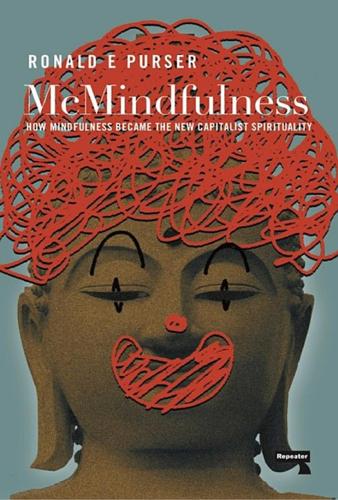
McMindfulness: How Mindfulness Became the New Capitalist Spirituality
by
Ronald Purser
Published 8 Jul 2019
In Mindful Work, David Gelles hails Aetna’s supposedly benevolent CEO, Mark Bertolini, for offering mindfulness training to a third of its fifty thousand employees.30 The program produced annual per capita productivity gains of $3000, while cutting employee healthcare costs by $2000, saving $6.3 million in total. Mindful employees are good for big business. Meanwhile, the supposedly mindful Aetna lied about its reasons for withdrawing from Obamacare, which had expanded access to medical insurance. While the company said that mounting losses had required it to pull out of Obamacare exchanges in eleven states, the real reason, according to US District Judge John Bates, was “to evade judicial scrutiny over its merger with Humana,” a $34 billion deal which had been blocked by the Department of Justice for antitrust reasons one month earlier.31 Corporate mindfulness programs don’t train their participants to challenge business practices — that would require a search outside oneself, something modern mindfulness has studiously avoided.
…
Vision Books, 1982. 27 https://link.springer.com/article/10.1023/A:1006978911496 28 Robert L. Park, Voodoo Science: The Road from Foolishness to Fraud. Oxford University Press, 2001. 29 http://nomosjournal.org/2013/08/searching-for-integrity/ 30 David Gelles, Mindful Work. Houghton Mifflin Harcourt, 2015. 31 https://money.cnn.com/2017/01/24/investing/aetna-obamacare-humana-merger/ 32 https://www.nytimes.com/2018/06/14/opinion/sunday/Meditation-productivity-work-mindfulness.html chapter Nine: Mindful Merchants 1 https://globalwellnessinstitute.org/industry-research/2018-global-wellness-economy-monitor/ 2 https://www.mindful.org/its-not-mcmindfulness/ 3 https://www.awakenedworldpilgrimage.com/ 4 https://www.whil.com/companies 5 Edward L.
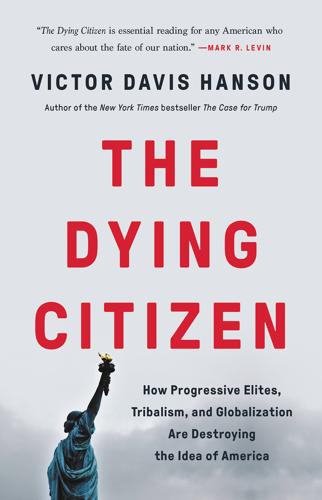
The Dying Citizen: How Progressive Elites, Tribalism, and Globalization Are Destroying the Idea of America
by
Victor Davis Hanson
Published 15 Nov 2021
Popular culture and contemporary politics have more or less institutionalized an ascendant model of citizenship quite unlike that once seen as based on the autonomous family—at least in terms of the middle-class college educated. Take the example of a popular political ad of 2010 designed to sell the Affordable Care Act to the general public. The poster boy for the campaign was not analogous to the American Gothic married couple. The iconic advocate became known as “Pajama Boy.” As the Obamacare promoter, a young man in thick, black retro-rimmed glasses was supposed to win our empathy. He appeared confident and self-aware. Yet he was wearing black-and-red-plaid children’s-style pajamas, sipping from a mug, with an all-knowing expression of seasoned certainty on his face.
…
For the largely failed “moral” efforts of Augustus to restore Roman rural “virtue” and the Italian agrarian moral code by rewarding marriage and child raising and by punishing sumptuary habits, see Michele George, ed., The Roman Family in the Empire: Rome, Italy, and Beyond (Oxford: Oxford University Press, 2005), esp. 32–61; cf. the classic account of Augustus’s moral reforms: Ronald Syme, The Roman Revolution (Oxford: Oxford University Press, 1939), 448–456. 22. Herodotus, 1.30.2–5. 23. For “Pajama Boy,” see Rich Lowry, “Pajama Boy, an Insufferable Man-Child,” Politico, December 18, 2013, www.politico.com/magazine/story/2013/12/opinion-rich-lowry-obamacare-affordable-care-act-pajama-boy-an-insufferable-man-child-101304. 24. James Taranto, “The Lovely Life of Julia,” Wall Street Journal, May 3, 2012, www.wsj.com/articles/SB10001424052702304743704577382170789179442; cf. Eugene Kiely, “‘The Life of Julia,’ Corrected,” FactCheck.org, May 8, 2012, www.factcheck.org/2012/05/the-life-of-julia-corrected. 25.
…
So a certain media furor over Trump often erupted in repeated, obscene, and unprofessional anti-Trump outbursts by CNN journalists, contributors, and anchors—whether it was Anderson Cooper trashing a pro-Trump panelist by profanely retorting, “If he took a dump on his desk, you would defend it,” or CNN religious scholar Reza Aslan referring to Trump as “this piece of sh-t,” or perhaps the late CNN host Anthony Bourdain joking in an interview about poisoning Trump, or CNN New Year’s Eve host Kathy Griffin’s infamous photo in which she is holding a bloody effigy of Trump’s severed head.67 Once journalists lose their reputations for disinterested reporting, they forfeit respect. Government entities then sense that, rather than serving as deterrents who keep officials honest, reporters can be enlisted as allies or indeed played. For example, critical to the selling of the Affordable Care Act to voters were the later cynical admissions of health expert Jonathan Gruber, who ex post facto bragged that he simply used a compliant media to dupe the public: This bill was written in a tortured way to make sure [the Congressional Budget Office (CBO)] did not score the [individual] mandate as taxes.
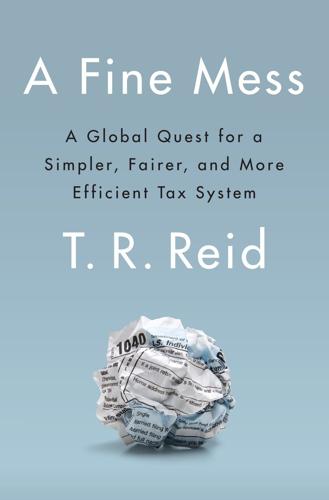
A Fine Mess
by
T. R. Reid
Published 13 Mar 2017
It is Congress that writes the tax laws. It’s Congress that adds hundreds of new exemptions, allowances, credits, and calculations to the tax code every year. It was Congress that decided to give the IRS responsibility for managing the health insurance subsidies flowing to millions of Americans under the Affordable Care Act (ObamaCare)—and then cut the agency’s staff after assigning it this major new task. It was Congress that assigned to the IRS the management of the earned income tax credit (EITC), which has become one of the nation’s largest support programs for low-income Americans. It was Congress that crafted the much-hated alternative minimum tax, which spawned whole new dimensions of complexity, and hours of additional work, for millions of families.
…
Index The page numbers in this index refer to the printed version of this book. The link provided will take you to the beginning of that print page. You may need to scroll forward from that location to find the corresponding reference on your e-reader. Abbott, Tony, 190 AbbVie, 157 accelerated depreciation, 55, 62 Affordable Care Act, 209, 218, 246 Afghanistan, 79, 167 Africa, 152, 201, 228 airline industry, 189–90 Alaska Permanent Fund, 192–93 alcohol tax, 37–38, 40, 105 Alliance Boots, 157–58 allowances, 2, 52–53, 60–61, 70, 72, 74, 165–66, 209. See also depletion/depreciation allowances; tax breaks alternative minimum tax, 210, 255 Amawhe, Achilles, 35, 47 American Jobs Creation Act, 168–69 Americans for Tax Reform, 245 America We Deserve, The (Trump), 98 ancient Rome, 30, 34 Andorra, 194–95 Apple Inc., 145, 148–51, 153–54, 161, 164, 170, 229 appraisers/appraisals, 83–84, 124, 129–30 Argentina, 145, 239 art, 83–84, 124, 133 Asia, 59, 201 audits, 40, 55, 143–44, 161, 163, 211, 223, 255 Austen, Jane, 121 austerity measures, 34, 42, 52, 112, 127, 129 Austin, Texas, 26 Australia and carbon tax, 8, 189–91 tax deductions in, 36, 41, 89–90 tax rates of, 19, 21, 146, 175 tax revenues of, 15, 17 VAT in, 228, 239, 243, 255 Austria, 14, 17, 19–20, 44, 78, 86, 132, 146 automobile industry, 21, 39–40, 71–74, 156, 164.
…
The whole thing is so complicated that the error rate is 27%, which means one out of four filers, and the IRS, have to spend even more time trying to get it right. This has prompted a mini-industry of tax fraud, with shysters going door-to-door in low-rent neighborhoods offering to fill out the EITC forms (for a fee, of course) whether the client actually qualifies or not. Similarly, the tax credits for people buying health insurance on the ObamaCare exchanges are generally aimed at low-income taxpayers and are also ridiculously complicated. There’s another significant cost as well to all this complexity. A tax code so byzantine that people can’t understand how much they have to pay badly undermines the spirit of voluntary payment that is essential to a successful tax regime.
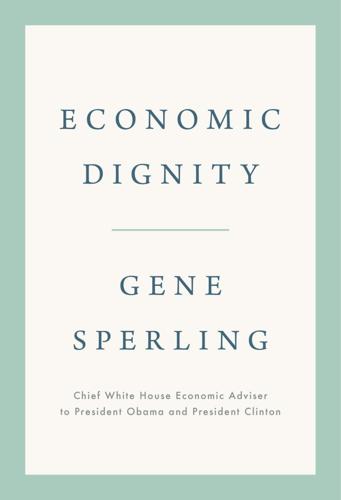
Economic Dignity
by
Gene Sperling
Published 14 Sep 2020
Similarly, the 2015 repeal bill Senators Rubio and Sasse voted for would have led to higher premiums, the collapse of the individual market, and more than 20 million people losing health insurance. Matt Broaddus and Edwin Park, “Affordable Care Act Has Produced Historic Gains in Health Coverage,” Center on Budget and Policy Priorities, December 15, 2016, https://www.cbpp.org/research/health/affordable-care-act-has-produced-historic-gains-in-health-coverage. 18. Robert Pear, “Marco Rubio Quietly Undermines Affordable Care Act,” New York Times, December 9, 2015, https://www.nytimes.com/2015/12/10/us/politics/marco-rubio-obamacare-affordable-care-act.html. 19. Paul Ryan famously warned that low-income workers face marginal tax rates of 80 or 90 percent from taxes and loss of benefits.
…
Gene Sperling, “If You Like Choice, Competition, and Entrepreneurship, You Should Like Obamacare,” Forbes, March 28, 2014, https://www.forbes.com/sites/theapothecary/2014/03/28/if-you-like-choice-competition-and-entrepreneurship-you-should-like-obamacare/. 31. Linda J. Blumberg, Sabrina Corlette, and Kevin Lucia, “The Affordable Care Act: Improving Incentives for Entrepreneurship and Self-Employment,” Timely Analysis of Immediate Health Policy Issues (Washington, DC: Urban Institute, May 2013), 1, https://www.urban.org/research/publication/affordable-care-act-improving-incentives-entrepreneurship-and-self-employment. 32.
…
United States, 72, 116 Norway, GDP, 5 Nozick, Robert, 224, 340n Nussbaum, Martha, 44 Obama, Barack (Obama Administration), 85 American Recovery and Reinvestment Act of 2009, 221, 266–67 Auto Task Force, 137–38, 139–40 combating discrimination against long-term unemployed, 52–53, 213 Clean Power Plan, 141 Cummings’s funeral eulogy, 224 Executive Order 13563, 135 expansion of EITC, 160 gainful employment regulations, 113–14 international tax policy, 124 mortgage forbearance, 132, 137 proposal related to UBI to Rise, 143 Sperling as national economic adviser, xiii–xiv, xix, 37–38, 39–40, 52–53, 132, 143, 213, 250, 290 State of the Union address (2014), 46 Obama, Michelle, 214 Obamacare. See Affordable Care Act Obergefell v. Hodges, 18 Ocasio-Cortez, Alexandria, 103 Occupational Safety and Health Administration (OSHA), 71, 73, 74–75, 235 OECD (Organisation for Economic Cooperation and Development), 35, 50, 96, 121, 129, 132, 183–84, 198, 249, 285 offshoring, 128, 139–41, 295 oil, 5, 71–72, 116 Oldham, Greg, 226–27 Oliver, John, 238 Oman–United States Free Trade Agreement, 123 On the Clock (Guendelsberger), 236–37 opioid addictions, 60, 61, 96, 206, 315n Opportunity@Work, 284 Oreopoulos, Philip, 273 Orszag, Peter, 9, 247 Osterman, Paul, 283 Oxfam, 80, 81, 249 paid family and medical leave, 34–37, 96, 310n Palladino, Lenore, 119, 121 Parks, Rosa, xviii patents, 98–99, 124 “pattern bargaining,” 253–54 Paul, Rand, 93 Paycheck, Johnny, 243–44 payday lending, 84–85 Pell Grants, 54, 55, 111, 275 Pelosi, Nancy, 166, 179 Pepsi, 263 Perkins, Frances, 69–71, 158 personal bankruptcies, 9, 49–50 personal care aides, 217–20 pesticide use, 76 Petersen, Anne Helen, 238 Petronijevic, Uros, 273 Philippon, Thomas, 115 Phillips curve, 266–67 Piche-Lichtman, Michelle, 92–93 Pinto, Sergio, 60 Pisano, Gary, 140 Pittston Coal strike, 68 Platform to Employment (P2E), 213–14 Pollock v.

The Financial Crisis and the Free Market Cure: Why Pure Capitalism Is the World Economy's Only Hope
by
John A. Allison
Published 20 Sep 2012
For further analysis and a well-thought-out plan for privatizing social security by two long-term experts, see Peter Ferrara and Michael Tanner, A New Deal for Social Security (Washington, DC: Cato Institute, 1998). 5. For a detailed examination and critique of the Patient Protection and Affordable Care Act (Obamacare), see Michael tanner, Bad Medicine: A Guide to the Real Costs and Consequences of the New Health Care Law (Washington, DC: Cato Institute, 2011). 6. See, for example, Brian Riedl, “A Guide to Fixing Social Security, Medicare, and Medicaid,” Heritage Foundation, Backgrounder #2114, March 2008, http://www.heritage.org/research/reports/2008/03/a-guide-to-fixing-social-security-medicare-and-medicaid. 7.
…
Medicare and Medicaid are much bigger problems than social security. Unless there are changes, the cost of Medicare and Medicaid will consume our total GNP by 2050. The system will have to be fixed. The new healthcare program (Obamacare) only aggravates the problems in the system by promoting more healthcare demand and spending while curbing incentives for the providers of healthcare. I will not offer a diagnosis of Obamacare except to state that, as designed, it is mathematically certain to fail.5 It creates massive incentives for private employers to push their employees onto the government program. It will increase, not decrease, cost.

Shaky Ground: The Strange Saga of the U.S. Mortgage Giants
by
Bethany McLean
Published 13 Sep 2015
Quarter after quarter, they posted stunning multibillion-dollar losses, which required huge draws from Treasury. In early 2009, the Treasury amended its agreement to increase the total amount of funding available for Fannie and Freddie from $200 billion to $400 billion—half the 10-year estimated cost of Obamacare. On Christmas Eve, 2009, the Treasury amended the agreement again to remove any cap on the funding for the next three years. In addition, the Federal Reserve began to buy Fannie and Freddie securities to help the perception that they were safe. According to Paul Willen, a senior economist at the Boston Federal Reserve, between 2008 and 2014 the Fed would purchase $2.8 trillion of agency mortgage-backed securities.
…
Fannie and Freddie provide services that are absolutely essential to the American way of life,” he wrote in the fund’s annual report. “They help make the popular 30-year fixed-rate mortgage available and affordable. They provide liquidity and stability to the nation’s housing finance system—during good and, especially, in bad times. No one does it better.” He compares housing reform to Obamacare. “Obama can get a do-over when he says, ‘You can keep your insurance!’ ‘Oops, you can’t keep your insurance!’” he says. “But you cannot mess up the plumbing of housing finance. If you do, within two weeks, credit will totally dry up. No one will be able to get a mortgage.” There is disagreement among investors on many details of how a plan would work.
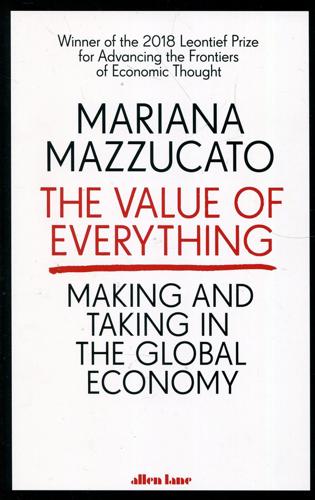
Value of Everything: An Antidote to Chaos The
by
Mariana Mazzucato
Published 25 Apr 2018
M., ‘Patient choice and private provision decreased public provision and increased inequalities in Scotland: A case study of elective hip arthroplasty', Journal of Public Health, 39(3) (2017), pp. 593-60. Kliff, S., ‘Meet Serco, the private firm getting $1.2 billion to process your Obamacare application', Washington Post, 16 July 2013: https://www.washingtonpost.com/news/wonk/wp/2013/07/16/meet-serco-the-private-firm-getting-1-2-billion-to-process-your-obamacare-application/?utm_term=.33eeeadf4a01 Kokalitcheva, K., ‘Uber now has 40 million monthly riders worldwide', Fortune, 20 October 2016: http://fortune.com/2016/10/20/uber-app- riders/ Krueger, A. O., ‘The political economy of the rent-seeking society', American Economic Review, 64(3) (1974), pp. 291-303.
…
Other cases include failure to lock doors, poor hygiene and a reduction in staffing levels.'61 The fines, however, are minuscule in proportion to the profits made by both Serco and G4S - and such companies, rather than being penalized for carelessness and reckless cost-cutting, are being rewarded with more contracts. The applications procedures for Obamacare were outsourced in 2013 to Serco in a $1.2 billion contract.62 Indeed, US Federal government outsourcing contracts to such companies are rapidly rising. A recent GAO report shows that in 2000 contract spending was $200 billion, while in 2015 it was $438 billion.63 This amount represented almost 40 per cent of government's discretionary spending.
…
Crouch, The Knowledge Corrupters: Hidden Consequences of the Financial Takeover of Public Life (Cambridge: Polity Press, 2016). 61. https://www.theguardian.com/society/2016/apr/15/g4s-fined-100-times-since-2010-prison-contracts 62. https://www.washingtonpost.com/news/wonk/wp/2013/07/16/meet-serco-the-private-firm-getting-1-2-billion-to-process-your-obamacare-application/?utm_term=.0ffc214237a8 63. United States Government Accountability Office, ‘Contracting data analysis; Assessment of government-wide trends', March 2017: https://www.gao.gov/assets/690/683273.pdf. 64. As reported in J. A. Sekera, The Public Economy in Crisis: A Call for a New Public Economics (Springer International Publishing, 2016); J.

Good Economics for Hard Times: Better Answers to Our Biggest Problems
by
Abhijit V. Banerjee
and
Esther Duflo
Published 12 Nov 2019
She went for broad inclusivity, not narrow sectarianism. More recently, in the United States we are struck by the curious history of the once much hated Affordable Care Act, or Obamacare. As the signal policy initiative of the much despised black Kenyan Muslim Barack Obama, it was something that many Republican governors refused to have anything to do with, and many refused federal subsidies to expand Medicaid, a key mechanism to extend health care coverage under the Affordable Care Act. Yet by the 2018 midterm election initiatives to expand Medicaid were on the ballot in the deep-red states of Utah, Nebraska, and Idaho.
…
Partisan politics has played a role in this disaster. When someone who has lost their job needed healthcare, a recourse was supposed to be Obamacare. Unfortunately, many Republican states like Kansas, Mississippi, Missouri, and Nebraska decided to make a show of resisting the federal government by denying their citizens this option. This pushed some people to apply for disability status in order to get healthcare. Indeed, after the adoption of the Affordable Care Act (a.k.a. Obamacare), disability claims increased by 1 percent in states that refused to expand Medicaid, while they decreased by 3 percent in expansion states.55 But the causes run deeper.
…
In fact, Democrats and Republicans do not even speak the same language anymore.62 Matthew Gentkzow and Jesse Shapiro, two economists who are leading scholars of the media, write about members of the US House of Representatives: “Democrats talk about ‘estate taxes,’ ‘undocumented workers’ and ‘tax breaks for the wealthy,’ while Republicans refer to ‘death taxes,’ ‘illegal aliens,’ and ‘tax reform.’ The 2010 Affordable Care Act was ‘comprehensive health reform’ to Democrats and a ‘Washington takeover of health care’ to Republicans.” It is now possible to predict the political affiliation of a congressman simply by listening to the words they use. Unsurprisingly, partisanship (defined as the ease with which an observer can infer a congressperson’s party from a single sentence) has exploded in recent decades.

Evil Geniuses: The Unmaking of America: A Recent History
by
Kurt Andersen
Published 14 Sep 2020
Instead, the aroused and properly coordinated Tea Party was crucial to hobbling the Obama presidency. A year after the movement arose, the Affordable Care Act was passed—but barely, thanks to full-bore work by the economic right’s hydra-headed political operation. Even though the new law wouldn’t go into effect for four years—and would enable 20 million more Americans to have health coverage, nearly half of them as new customers of private insurance companies—the political operation nevertheless convinced millions of Americans to be frightened of the prospect, to hate Obamacare. That project was helped, as if providentially, by a signature success of the right’s judicial long game: at the beginning of the year, the Supreme Court issued its Citizens United v.
…
During his five and a half years in office, federal spending on social services doubled. He would have gone even further if Congress had cooperated. Democrats controlled the House and Senate, but with smaller majorities than during the Kennedy and Johnson administrations. Nixon proposed a universal health insurance plan not unlike Obama’s Affordable Care Act, which Republicans forty years later would call socialism. Still more remarkably, his administration pushed a grand welfare reform plan that would have provided a guaranteed basic family income equal to around $16,000, thereby tripling the number of Americans receiving public assistance and quadrupling federal social welfare spending altogether.*2 I’ve catalogued this despised Republican president’s leftish policies in the early 1970s to suggest how accustomed Americans had become over the previous forty years to their national government cushioning them from some of the sharpest insecurities and injustices of raw capitalism.
…
Federal Election Commission decision, effectively prohibiting serious election finance laws and giving big business (and unions, as if) free rein to spend money on campaigns.* And in that fall of 2010, Democrats lost their large majorities in both the Senate and House. Extremely reasonable, extremely center-left Obama horrified the Kochs and their friends, in particular his successful passage of the Affordable Care Act after a year in office. When the Republicans won back Congress—that is, saved America from Obama—Charles told a reporter that while “I’m not saying he’s a Marxist, he’s internalized some Marxist models—that is, that business tends to be successful by exploiting its customers and workers.” In the same article, his brother called Obama “the most radical president we’ve ever had as a nation” who, in less than two years, had “done more damage to the free enterprise system and long-term prosperity than any president we’ve ever had.”
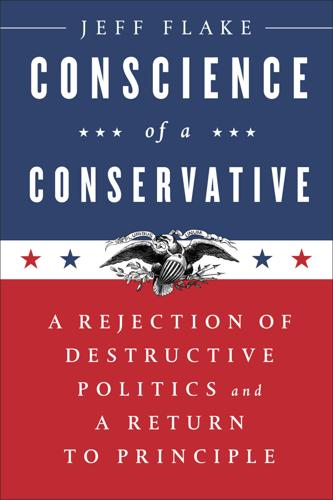
Conscience of a Conservative: A Rejection of Destructive Politics and a Return to Principle
by
Jeff Flake
Published 31 Jul 2017
It was Nixon who made the mistake of hiking the capital gains tax, which had a stultifying effect on the economy, only to be corrected, interestingly enough, when Jimmy Carter signed into law a massive capital gains tax cut, which resulted in an explosion of venture capital in the late 1970s. Politics, then, is highly paradoxical. Any honest appraisal of history shows us that it is not at all a zero-sum exercise and that the battle lines are seldom drawn straight. Some of the ideas in what became known as Obamacare were conceived by scholars at the Heritage Foundation as “conservative” ideas, and even Hayek was in favor of some form of what might be called universal health care. All of which is proof that conservatives can have honest differences of opinion on policy matters, among themselves and with others—or be open to entirely new ideas—without being thought heretical.
…
That is the way the system once worked and is how it has worked when we are at our best. But if those might be considered examples of how the legislative process works when it works best, there are many more examples of the system at its abysmal worst. For instance, just because the deliberations over Obamacare in 2009 were a thoroughly partisan affair—and they were—does not mean that Republicans should compound the mistake by planning its repeal behind closed doors. Legislation executed without hearings and written by only one side is always a bad idea, regardless of who does it. It is, simply put, no way to do important work.

The New Class Conflict
by
Joel Kotkin
Published 31 Aug 2014
This is reflected by increasing alienation not only from the Republicans, who remain enormously unpopular, but increasingly from President Obama and the Democrats as well.108 According to generational chronicler and long-time Democratic activist Morley Winograd, this alienation stems in part from millennials’ experience with government, which often seems clunky and ineffective. “Millennials,” he notes, “have come to expect the speed and responsiveness from any organization they interact with that today’s high tech makes possible.” Experiences from the NSA scandal to long lines at the DMV to the botched website rollout for Obamacare, he suggests, cause “millennials to be suspicious of, if not downright hostile to, government bureaucracies.”109 Ultimately, most Americans, not only millennials, express concern about the evolving class structure, but they remain skeptical about the government’s ability to do much about it. Less than one in five Americans trusts the federal government.
…
Pew Charitable Trusts, Economic Mobility Project, http://www.pewstates.org/projects/economic-mobility-project-328061. 45. Richard Henderson, “Industry Employment and Output Projections to 2020,” Monthly Labor Review, vol. 135, no. 1 (January 2012): 65–83. 46. Phillip Longman and Paul S. Hewitt, “After Obamacare,” Washington Monthly, January/February 2014, p. 39. Dan Mangan, “Medical Bills Are the Biggest Cause of U.S. Bankruptcies: Study,” CNBC.com, June 25, 2013, http://www.cnbc.com/id/100840148; Christina LaMontagne, “NerdWallet Health finds Medical Bankruptcy Accounts for Majority of Personal Bankruptcies,” NerdWallet, March 26, 2014, http://www.nerdwallet.com/blog/health/2014/03/26/medical-bankruptcy. 47.
…
Charles Murray, Losing Ground: American Social Policy 1950–1980 (New York: Basic Books,1984), pp. 14, 25. 27. Harrington, Towards a Democratic Left. 28. Galbraith, The New Industrial State, pp. 32–33, 288–89; Bell, The Coming of Post-Industrial Society, p. 41. 29. Callahan, Fortunes of Change, p. 13; Kathy Robertson, “Obamacare Means Big Business for Lawyers,” Sacramento Business Journal, February 15, 2013; Elizabeth Lesly Stevens, “Will Law School Students Have Jobs after They Graduate?” Washington Post, October 31, 2012. 30. Chris Moody, “Washington, D.C. Area Now the Richest in the Nation,” Yahoo News, October 19, 2011, http://news.yahoo.com/blogs/ticket/washington-d-c-area-now-richest-nation-191806412.html; Chris Edwards, “Overpaid Federal Workers,” Downsizing the Federal Government (Cato Institute), August 2013, http://www.downsizinggovernment.org/overpaid-federal-workers; Charles Lane, “Federal Washington Cashes in on Connections,” Washington Post, January 6, 2014. 31.
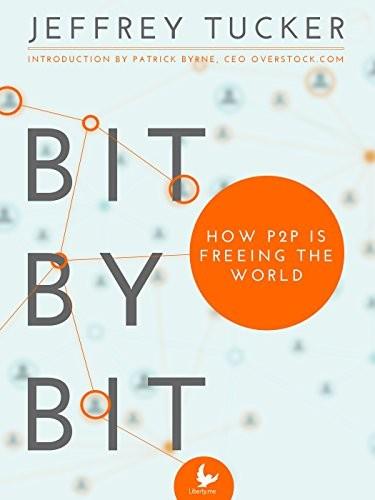
Bit by Bit: How P2P Is Freeing the World
by
Jeffrey Tucker
Published 7 Jan 2015
Entrepreneurs are already experimenting with an Uber model of delivering some form of healthcare online. In some areas, they will bring a nurse to you to give you a flu shot. Other health services are on the way, causing some to speculate on the return to at-home medical visits paid out of pocket (rather than via insurance). 7 What does this innovation do for centralist solutions like Obamacare? It changes the entire dynamic of service provision. The medical establishment is already protesting that this consumer-based, one-off service approach runs contrary to primary and preventive care—a critique that fails to consider that there is no reason why P2P technology can’t provide such care.
…
The producer-consumer relationship is direct, or, at least, much more so than in the past. Anyone can be a news broadcaster. If you don’t like what that news broadcaster is saying, you can make a response news broadcast and post it right where it can be seen by the same people. We can safely predict that under Obamacare, P2P relationships in health-care provision are going to become more common. With insurers under ridiculous amounts of pressure to provide every conceivable service at controlled prices, service is going to decline, giving rise to direct fiduciary relationships between patients and caregivers. We are going to be cooperating directly.
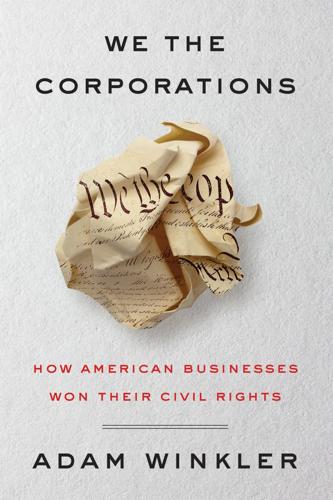
We the Corporations: How American Businesses Won Their Civil Rights
by
Adam Winkler
Published 27 Feb 2018
They called corporations “people,” yet pierced the corporate veil, looking right through the corporate form to base the decision on the rights of the corporations’ members. The centerpiece of Romney’s presidential campaign was a promise to repeal and replace President Obama’s signature legislation: the Patient Protection and Affordable Care Act. Popularly known as “Obamacare,” the healthcare law triggered a wave of legal challenges, including a historic, high-profile Supreme Court case on the law’s mandate that nearly all individuals have or buy health insurance. In a 2012 decision that surprised many court watchers, the court upheld the health insurance mandate in a narrow 5–4 decision in which Chief Justice John Roberts sided with the court’s four liberal justices.
…
Perhaps Roberts was not willing to go along again with such an aggressive approach in another highly politically charged case that threatened to undermine his stated desire for a legacy as a minimalist who kept the court out of politics.2 AT THE IOWA STATE FAIR SOAPBOX, PRESIDENTIAL CANDIDATE MITT ROMNEY SAID, “CORPORATIONS ARE PEOPLE, MY FRIEND.” There was, however, one legal challenge to a smaller piece of Obamacare that succeeded, and it involved the rights of corporations. Hobby Lobby Stores, Incorporated, a national chain of craft stores with over 23,000 employees, filed suit against an Obamacare regulation that required large employers to include birth control in their employees’ health insurance plans. The owners of Hobby Lobby, David and Barbara Green and their three children, were Evangelical Christians who believed some of the mandated forms of birth control caused abortion, which the Greens opposed on religious grounds.
…
See Conkling, The Life and Letters of Roscoe Conkling, 3:451, 462, 676–677. 3. For a thorough account of the controversy, see Howard Jay Graham, Everyman’s Constitution: Historical Essays on the Fourteenth Amendment, the “Conspiracy Theory,” and American Constitutionalism (1968); Malcolm J. Harkins III, “The Uneasy Relationship of Hobby Lobby, Conestoga Wood, the Affordable Care Act, and the Corporate Person: How a Historical Myth Continues to Bedevil the Legal System,” 7 Saint Louis University Journal of Health Law & Policy 201 (2014). 4. On the Supreme Court’s courtroom in the 1880s and the society women who attended oral argument, see Clare Cushman, Courtwatchers: Eyewitness Accounts in Supreme Court History (2011), 20, 105–106. 5.
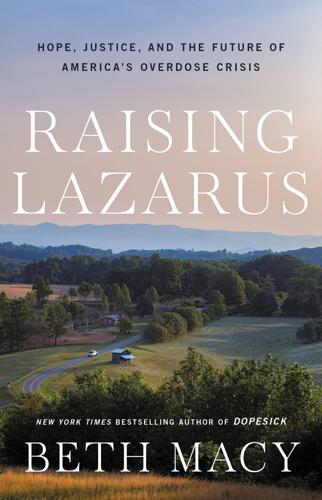
Raising Lazarus: Hope, Justice, and the Future of America’s Overdose Crisis
by
Beth Macy
Published 15 Aug 2022
And while doctors had for decades recommended cocaine and heroin for everything from hay fever to menstrual cramps for White patients—one could literally order hypodermic needles and Bayer-manufactured heroin from the Sears & Roebuck catalog—people without prescriptions who were dependent on those drugs were suddenly branded criminals in 1914, forced by the new law to seek their medicines-turned-illicit-drugs in chaotic and dangerous black markets. The question of whose pain is legitimate and therefore deserving of public intervention has been a recurring political battle in the United States ever since, from early struggles over returning soldiers’ benefits to the battle over the Affordable Care Act. The Harrison Act became a mechanism for reinforcing racism as a means for holding on to wealth and political power. From reefer madness to “super predators,” instead of crafting public health safety nets to combat problematic drug use, lawmakers found it easier and more politically expedient to respond with tough-on-crime laws based on fear-based dogma.
…
Moore was hopeful that “something would click this time” when his nephew chose to go back to the Christian rehab rather than face jail or go into outpatient treatment. Still, every time his phone rang late at night, Moore cringed. No one, including Moore’s nephew, should have to decide between a jail cell and a rehab that had already failed to work. Mississippi has not expanded Medicaid under the Affordable Care Act—the nation’s No. 1 tool for providing access for OUD treatment for the uninsured. The state consistently ranked either dead last or next to last on all health rankings, and it had cumbersome access barriers for people seeking methadone and buprenorphine treatment, including in rehab centers.
…
could literally order: Joe McKendry, “Sears Once Sold Heroin,” The Atlantic, March 2019, https://www.theatlantic.com/magazine/archive/2019/03/sears-roebuck-bayer-heroin/580441/. forced by the new law: David Herzberg, White Market Drugs, Big Pharma and the Hidden History of Addiction in America (Chicago: University of Chicago Press, 2020). battle over the Affordable Care Act: Jennifer M. Silva, We’re Still Here: Pain and Politics in the Heart of America (New York: Oxford University Press, 2019), 15. indirectly express: Michelle Alexander, The New Jim Crow: Mass Incarceration in the Age of Colorblindness (New York: New Press, 2012), 69. “Prohibition policies”: David Herzberg, author interview, December 11, 2020.

The End of Accounting and the Path Forward for Investors and Managers (Wiley Finance)
by
Feng Gu
Published 26 Jun 2016
MITIGATE ACCOUNTING COMPLEXITY Here is the Lev-Gu law of the dynamics of regulation: Regulatory systems strive to be even more complex than the structures or institutions they were charged to regulate. A race to the bottom, so to speak. If you doubt the universality of our law, think of the 1,990 pages of the original 2009 Affordable Health Care Act (Obamacare), ballooning to about 20,000 pages four years later,31 or the Dodd–Frank Wall Street Reform and Consumer Protection Act, originally at 848 pages, and mushrooming to 13,789 pages as of July 2013 (and still going strong—the length, we mean).32 And not only in America: No regulatory agency rivals the European Union in scope, intrusion, and complexity of regulation.
…
He proposed providing a triple-column income statement: a column informing on fact-based revenues and expenses, a second to summarize the estimates in revenues and expenses, and a “totals” column, identical to today’s income statement (see Yuji Ijiri, Cash Is a Fact, but Income Is a Forecast, working paper (Pittsburgh: Carnegie Mellon University, 2002)). No doubt, such a clear separation of facts from estimates will be highly informative to investors. 31. The 1,990-page number is from Computational Legal Studies, November 8, 2009. Rep. Richard Hudson (R-NC.) speaking on “Fox and Friends” on May 13, 2013, said: “Implementation [of Obamacare] has also become a bureaucratic nightmare, with some 159 new government agencies, boards, and programs busily enforcing the 20,000 pages of rules and regulations already associated with this law.” 32. Joe Mont, “Three Years in, Dodd-Frank Deadlines Missed as Page Count Rises,” Compliance Week (July 22, 2013). 33.
…
AARP members, impact 149 Acceleration (operations) 7 Accounting 31–32 advocacy 240 bottom line 116–117 complexity 61 fighting 223–224 mitigation 221–222 reasons 222 complication 61–62 contribution, trivialization 46–47 decline 81 defense 70 estimates domination 95–96 impact 98–100 increase 100–101 problems 79 proliferation, reversal 219–221 reliability, enhancement 98 events 105–107 expenses, breakdown (usage) 175–176 facts 94 absence 79 fairness 35–36 fault 50 fiction 94 graveyards 86 impact, intention 17–18 information (usefulness loss), investor interest 68–70 link, absence 104–105 losses 57–58 procedures, structure (impact) 35 recognition, delay 105–106 records, triggers 79–80 reform agenda 213 regulations, proliferation 56–57 relevance decrease 37, 41, 89f loss 88–90 reporting, direction (change) 214 revitalization 213–214 ROE 22 rules, change (demand) 90 Strategic Resources & Consequences Report issue 197 treatment. See Intangible assets. uncertainty/vagueness, example 94–95 usefulness, quest 62 Accounts receivable 96 Acquired intangibles, certainty 84 Adjusted coefficient of variation (R2 ) 33, 89, 108 Affordable Health Care Act (Obamacare) 221 Agent-driven policies 152 Agents, importance 152–153 All-in sustaining costs (AISC) 204 Allstate advertising campaign 155 Drive Wise car device 152 online customers 156 rate-increasing policy 151 Alphabet (Google) 120 Amazon, patents 78 247 248 Ambiguity, increase 68–69 American Airlines, balance sheet 87 Amgen, Inc. market share data, inconsistency 169 sales 169 Amortization 95 estimate 79 Analyst forecasts 45, 46f performance-related information source 44 release 46–47 Analysts ambiguity, increase 64f guidance 15–17 impact 62 pipeline questions, Pfizer response 200–201 pipeline-related questions, number/percentage 202f questions 114–115 Annual earnings releases 44 Annual report, extensiveness 5 Apple brand, value 234 car streaming market 140 patents 78 problem 90 Arm’s-length transactions 83–84 Assets amortization 216–217 conceptual assets 82 deployment, outcomes 125 fair valuation 37–38 fair values 61 obsolescence 124 real assets 82 recognition 78 treatment (intangible assets) 214–217 write-downs 109 write-offs 37, 97 AstraZeneca 166 Actavis acquisition 164 drug extension 174 stock price loss 104–105 Auden McKenzie 164 SUBJECT INDEX Bad debt expense 220 Bad-debt reserve 79 Balance sheet 4, 5 corporate balance sheets, recognition 78 distortion 37 usage 7 Bayer, brand (value) 234 Berkshire Hathaway 153 Beta tests 105 Biotech, Strategic Resources & Consequences Report 163 Blackberry patents, problem 90 Blue Book 97 Boeing, innovation strategies 85 Book-to-bill ratio 204 Book value impact 31f investor usage 32–33 problems 34–35 regression 89f relevance-loss 34–35 share 35f Book value of equity (BV) 38 Bottom line 116–117 Brands 234 creation 134 development 153 enhancement 175 British Petroleum (BP) household name 180 problems 189 Buffett, Warren 37, 53, 97, 153 Build-to-order business model 232 Businesses enterprises evolution 53 long-term objective 119–120 failure 90 fundamentals 58 organization, change 6–7 processes 78, 83 IT support 122–123 volatility, decrease 71–73 BV.
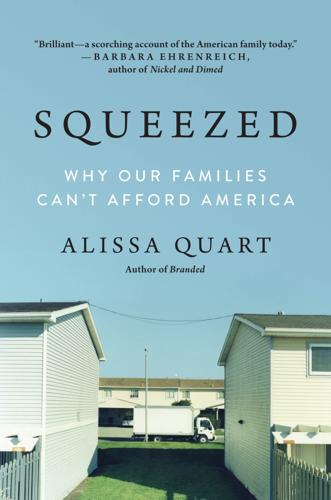
Squeezed: Why Our Families Can't Afford America
by
Alissa Quart
Published 25 Jun 2018
The average American adult: Lydia Saad, “The ‘40-Hour’ Workweek Is Actually Longer—by Seven Hours,” Gallup News, August 29, 2014, http://news.gallup.com/poll/175286/hour-workweek-actually-longer-seven-hours.aspx. the number of part-timers working: Ben Casselman, “Yes, Some Companies Are Cutting Hours in Response to ‘Obamacare,’” FiveThirtyEight, January 13, 2015, https://fivethirtyeight.com/features/yes-some-companies-are-cutting-hours-in-response-to-obamacare/. According to U.S. Bureau of Labor Statistics: “Employment Projections,” U.S. Bureau of Labor Statistics, Washington, D.C., https://data.bls.gov/projections/occupationProj. one such company, Kid Care Concierge: Kid Care Concierge, http://kidcareconcierge.com/.
…
Beyond a broad allowance for families, the elemental solution would be high-quality, across-the-board, way-better-subsidized day care. For families headed by one parent or where parents both work, the need for a day-care system is clear—something akin in philosophy and reach to the much-embattled Obamacare—for the adequate nurturance of children across our land. That decent child care is currently a sign of social privilege is simply outrageous. Broad-based, accessible, adequately subsidized day care would also make the lives of day-care workers like those you’ve met in Squeezed more secure as well; the women earning their livings in the child-care field are usually subsisting in dedicated poverty.

Melting Pot or Civil War?: A Son of Immigrants Makes the Case Against Open Borders
by
Reihan Salam
Published 24 Sep 2018
Just under one third (32 percent) of unauthorized immigrant adults lived in families below the poverty level, and 62 percent lived in families earning less than 200 percent of the poverty level. Only 14 percent lived in families earning more than 400 percent of the federal poverty level, the cutoff for Obamacare subsidies. A narrow 51 percent majority of unauthorized children lived in families earning less than the federal poverty level, 78 percent lived in families earning less than 200 percent of the poverty level, and only 8 percent lived in families earning more than 400 percent. This is despite the fact that employment among unauthorized immigrants is high: 79 percent of men and 48 percent of women were employed in 2011.23 This makes for a total of just under 7.25 million unauthorized laborers in the U.S. workforce, a figure that doesn’t include those who do informal work.
…
See also “chain migration” Liu, Chen, 83–84, 141, 175 lone-wolf terrorists, 3 Los Angeles, majority-minority crossover, 20–21 low-skill immigrants (immigration), 22–24, 151–52 Americas First policy, 131–34 bullet biters and, 5–6 classic arguments for, 95–96, 151–52 coming majority-minority crossover, 22–24 development in source countries, 131–34 globalization backlash, 123–28 impact on native wages, 101–2, 115 limits on, 12–13, 27–29, 84, 130, 173–75 middle-class melting pot and, 27–28 political powerlessness of, 22–24 short run and long run, 99–102 Singapore model, 97–99, 102 skills gap, 81 Swedish model, 96–97 low-skill workers, 12–13, 99–102 automation and, 5–6, 12–13, 95–96 economic self-interest and, 106–7 labor supply and, 99–102 offshoring and, 12–13, 95–96, 102–7 McIntosh, Craig, 83–84, 139–40, 141, 175 mainstream and disadvantaged groups, 65–69 majority-minority crossover, 19–26 Maloney, Maureen, 159 Martin, David, 163–64 Mayflower, 15 median income, 22, 35 Medicaid, 46, 49, 126 Medicare, 136 megacities, 139–48, 156 melting pot, 14, 15–19, 65–67, 155 brief history of idea, 15–17 mainstream and disadvantaged groups, 65–69 toward a middle-class, 26–29 Melting Pot, The (play), 15 Mendoza, Mary Ann, 159 Mexican Americans, 41, 68, 69–72, 85–87 Mexican immigrants assimilation, two stories of, 69–72 children and role of education, 42–43, 86, 87 development in Mexico and, 134–35, 138–39 mainstream and the margins, 68 Mexican seasonal workers (bracero program), 111–12, 119 Mexico antipoverty programs, 134–35 Central American migrants, 133–35, 138–39 GDP per capita (PPP), 133 per capita income, 133, 134 poverty rate, 34 regulating flow of migration to U.S., 138–39 U.S. retirees in, 135–38 midcentury America, 16–17, 79, 80 middle-class melting pot, 26–29 migrant worker programs, 58–60, 98–99, 111–14 minimum wage, 47–48, 97, 107 model minority illusion, 38–44 monogenerational immigration systems, 57–61, 102 multigenerational immigration systems, 57–61 Muslim immigrants, 3–4, 89–90 Napoleonic Wars, 73 National Academies of Sciences, Engineering, and Medicine (NAS), 53–55, 56 National Affairs, 162 nativism, 91, 105 naturalization, 23 New Deal, 14, 16–17, 80 New York City attempted bombing of 2017, 2–3, 4, 6–7 author’s immigrant story, 63–64, 67–68, 75–76 Bangladeshi community, 64, 74–78 civil unrest in, 181–82 New York Times, The, 61 New York University, 121 Nigeria per capita income, 132–33 population growth, 140 “non-zero-sum mobility,” 79 Northwestern University, 52 Obama, Barack, 9–11, 49 Obamacare, 174 offshoring, 12–13, 94–96, 102–7, 123, 135 of caregiving, 137–38 South Korean model, 103–4 virtual immigration, 148–50 Okun, Arthur, 118 open border advocates, 4–5, 8–11, 84, 113, 115, 188. See also immigration advocates open borders immigration policies, 59, 108–9 open vs. closed borders, 11 Page, Marianne, 178 parental leave, 47 people smuggling, 82, 134 per capita income, 131–33 Perdue, David, 169 Personal Responsibility and Work Opportunity Act of 1996, 50–51 Peters, Margaret E., 105 Pethokoukis, James, 117 “place discount,” 149 points-based immigration system, 4, 169–73 population growth, 140–41 Posner, Eric, 113–14, 128, 162, 171 Postel, Hannah, 111–12 postwar America, 16–17, 79, 80 poverty rates, 22–25, 34, 35–36, 43 presidential election of 2016, 90–91, 157–58, 159–60 Princeton University, 168 Pritchett, Lant, 108–9, 111, 113 productivity, 28, 80, 96, 156 progressive tax code, 55–56 pro-immigration advocates.

Doctored: The Disillusionment of an American Physician
by
Sandeep Jauhar
Published 18 Aug 2014
There are many downsides to having too many doctors on a case. Specialists’ recommendations are often at cross-purposes. The kidney doctor advises “careful hydration”; the cardiologist, discontinuation of intravenous fluid. Because specialists aren’t paid to confer with one another or coordinate care—at least as of this writing; Obamacare is looking to put into place payment systems that will do just this—they often leave primary attendings without a clear direction as to what to do. More important, patients don’t always require specialists. Patients often have “overlap syndromes” (we used to call it aging), which cannot be compartmentalized into individual problems and are probably best managed by a good general physician.
…
Another option is to use bundled payments. A major driver of overutilization is that doctors are paid piecework. There is less of an incentive to increase volume if payments are packaged (e.g., for an entire hospitalization) rather than discrete for every service. Yet another possibility is “accountable care organizations” advanced by Obamacare, in which teams of doctors would be responsible (and paid accordingly) for their patients’ clinical outcomes. Of course, such a scheme would force doctors to work together and to coordinate care. Unfortunately, most doctors, notoriously independent and already smothered in paperwork, have generally performed poorly in this regard.
…
Another said, speaking for many in private practice who stand to lose the most from policy proposals to restrict fee-for-service and encourage greater use of nurse practitioners and physician’s assistants to do what was formerly doctors’ work, “We look forward to a future of a fully implemented Obamacare where physicians are but meaningless pawns in the hands of those who are pushing this absurd social experiment.” Such irrational anger, the almost operatic self-pity, has become commonplace. I encountered it countless times those first few years at LIJ. Colleagues would complain: We are not being allowed to work in a market economy.

Falter: Has the Human Game Begun to Play Itself Out?
by
Bill McKibben
Published 15 Apr 2019
(In case you’re wondering: in the event of a “potentially uncontained military conflict in which the global superpowers get involved,” the yield curve on Eurobonds would “likely flatten due to weaker risk appetite.”)12 Because this is so contrary to our nature, eventually even the U.S. political system will work its way back to some kind of balance. The Koch brothers may well have hit their zenith. Political scientists crunching the polling data said that the Kochs’ two signature laws (the attempted repeal of Obamacare and the successful tax “reform” package) were the “most unpopular pieces of major domestic legislation of the past quarter-century,” the journalist Michael Tomasky points out. Of the nine most popular recent laws, he observes, “eight pursued what could broadly be defined as liberal goals, like gun control and environmental protection.”13 For the last few years, America’s most liked politician, by far, has been a socialist, Bernie Sanders, who campaigned on the antilibertarian slogan “Not Me, Us,” and who holds up Scandinavia as a model.
…
Millennia after they’ve lost the ideological fights, the sea level will still be rising. They’ve scrawled their names into geological history, ugly graffiti that scientists will be deciphering millions of years into the future (assuming there are scientists). Many of the same people managed to cripple Obamacare, too, which is a tragedy—it means lots of people will suffer unnecessarily and die. But when eventually our politics escapes their grip, it won’t be impossible to build a health care system like those in all the other nations of the world. Climate change is different. Once the Arctic melts, there’s no way to freeze it back up again, not in human time.
…
Koch, Mary Koch, William “Bill” Kodas, Michael Kona Korea Krueger, Alan Kumkum Bhagya (soap opera) Kurzweil, Fredric Kurzweil, Ray Kyoto Protocol labor law labor unions Lahore, Pakistan laissez-faire Lanier, Jaron Las Vegas lead poisoning Leap Manifesto Lear, Norman Leary, Timothy Lee, Kai-fu LeFevre, Robert leukemia leverage Lewis, Seko Serge Lexington, Battle of libertarianism Libertarian Party life expectancy lightning strikes limestone limits Limits to Growth, The (Meadows) Lindbergh, Charles lobster fisheries Locklear, Samuel Lomé, Togo London Los Angeles Los Angeles Times Louisiana Lovelock, James Lowndes County, Alabama Luntz, Frank Lyme disease Machine Intelligence Research Institute MacLean, Nancy Maduro malaria Mallory, George Maltese Falcon (yacht) Mann, Michael Manson, Charles manufacturing MAOA gene variant marine species Maris, Bill markets marlin Mars Marsh, George Perkins Marshall Islands mass extinctions Matchright maturity Mauryan Empire Mayans Mayer, Jane McArthur Forest Fire Danger Index McCain, John Medicaid Medicare Megafire (Kodas) Mehlman, Maxwell Mekong Delta meltwater pulse 1A Mercer, Robert Merkle, Ralph Merritt Island Wildlife Refuge methane Mexico Miami Beach Microsoft migration Mill, John Stuart Miller, Dean Milner, Yuri Milosevic, Slobodan Minsky, Marvin Mises, Ludwig von Mississippi Delta MIT Technology Review Mongolia Monsanto Montgomery Bus Boycott Mont Pelerin movement Montreal Montreal Protocol More, Max mortality Moses, Robert Mount Kenya MSTN gene Muir, John Mumbai Murdoch, Rupert Musk, Elon Nabokov, Vladimir nanobot blood cells National Academy of Medicine National Academy of Sciences National Aeronautics and Space Administration (NASA) National Cancer Institute National Coal Association National Energy Policy Act (proposed) National Geographic National Governors Association National Journal National Oceanic and Atmospheric Administration (NOAA) national parks and monuments Native Americans natural gas Nature Nawabshah, Pakistan Nazi Germany Nectome neoliberalism Neolithic period Nepal Netherlands New Deal NewsCorp New York New Yorker New York Times Magazine Nietzsche, Friedrich Niviana, Aka Nixon, Richard Nokia nonviolence North America North American Free Trade Agreement (NAFTA) North Carolina North Korea Norway Novartis nuclear power Nuclear Test Ban Treaty nuclear weapons nutrition Obama, Barack Obamacare Objectivist oceans. See also sea ice; sea level rise; acidification of carbon absorbed by dead zones in oxygen production in plastic waste in warming of Octopus (yacht) Off-Grid Electric Office of Energy Efficiency and Renewable Energy oil oil and gas industry climate change research and ideology and leverage and methane leaks and Paris accords and Oklahoma Olduvai Gorge Oman Omohundro, Stephen M.

The Patient Will See You Now: The Future of Medicine Is in Your Hands
by
Eric Topol
Published 6 Jan 2015
In 2014, the Institute of Medicine issued a report on medical education, assessing the physician workforce with a key conclusion about the looming shortage: “does not find any credible evidence to support such claims.”106e Echoing this conclusion, a most unlikely bipartisan combination of authors—Scott Gottlieb and Ezekiel Emanuel—representing extreme views of the Republican and Democratic parties, respectively, wrote a pointed piece, “No, There Won’t Be a Doctor Shortage.”107 While acknowledging the aging of the population and the increased demand related to thirty million newly insured Americans via the Affordable Care Act, they declared: “The road to Obamacare has seen its share of speed bumps, as well as big potholes. But a physician shortage is unlikely to be one of its roadblocks.”107 Beyond echoing the use of nurses, pharmacists, dieticians, health aides, and other nonphysicians, and the profound waste in American health care (as reviewed in Chapter 8), they aptly point out: “Innovations, such as sensors that enable remote monitoring of disease and more timely interventions, can help pre-empt the need for inpatient treatment.”107 And that is just the beginning of how innovative technology and unplugged medicine can markedly improve the efficiency of physicians.
…
So although the AMA has more than 100,000 practicing physicians in its ranks, it represents only 15 percent of practicing physicians in the country.26 This reflects substantial attrition from the 1950s when the AMA had roughly 75 percent of American physicians as members. Despite representing only a minority of physicians in the United States, the AMA has immense lobbying power with the government and a history of exerting this force on health care policy, such as with the Affordable Care Act, the origins of Medicare, and the influence of health maintenance organizations. In the interest of full disclosure, back in 2012, I had a bit of a flap with the AMA after the Wall Street Journal published an interview with me on innovation in medicine, which contained the following: WSJ: What are roadblocks for moving to this new world?
…
* She became one of about 250,000 women each year who have such testing. At the time this was done, there was only one company that did sequencing of BRCA genes—Myriad Genetics—and the cost was between $3,000 and $4,500. Health insurance companies would have defrayed this cost because of fulfilling coverage criteria. In 2014, with the implementation of the Affordable Care Act in the United States, insurers are now required to fully reimburse the cost of BRCA sequencing for women with qualifying risk. † And while on the subject of family, it will be important for Jolie’s three biologic children to have BRCA genomic screening. Someday one of them, when having children of their own, could have their eggs or embryos screened for in vitro fertilization to be certain the BRCA mutation is not passed along
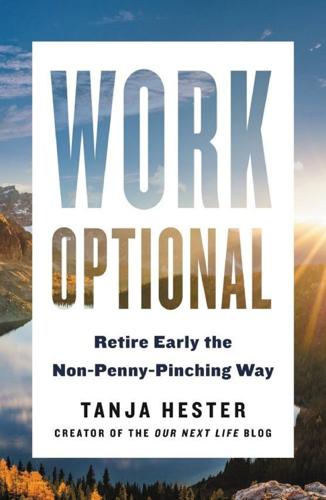
Work Optional: Retire Early the Non-Penny-Pinching Way
by
Tanja Hester
Published 12 Feb 2019
And until recently, this system made early retirement and all forms of work-optional living much more challenging than they are now, because people younger than Medicare-qualification age (65) had few options for obtaining health insurance on their own. That all changed with the passage of the Affordable Care Act (ACA) in 2010, also known as Obamacare. In addition to creating an individual marketplace that allows people to buy plans directly from insurers instead of having to go through an employer or expensive insurance broker, the ACA also made most types of preventive care entirely free, it allowed kids to stay on their parents’ insurance until age 26, and it outlawed old practices of denying coverage for preexisting conditions.
…
Health Savings Accounts (HSAs) Though it’s called a savings account, an HSA can be an excellent investment vehicle for early retirement and traditional retirement because it can function as both a savings account and an investment account in which you allocate funds to the investment vehicles of your choice based on what your account provider offers. The Affordable Care Act (ACA) includes a provision that allows employers to offer high-deductible health plans and allows individuals to buy similar plans on the health care exchanges that then allow the individual to open an HSA, a portable investment account that allows individuals to save for large health care expenses.
…
Maintain the Right Insurance While insurance is not a guarantee that you’ll never have large, out-of-pocket expenses, carrying the right insurance in early retirement will insulate you financially against some of the worst challenges. We’ve discussed at length the importance of maintaining excellent health insurance. According to Families USA, two-thirds of medical bankruptcies happen among people with health insurance—and that’s a stat that reflects the passage of the Affordable Care Act, when many more people are insured now. It’s a critical reminder not just to stay insured but also to keep yourself protected by solid insurance with good coverage levels and a reasonable out-of-pocket maximum that you could theoretically afford to pay every year. If paying a particular plan’s out-of-pocket maximum for a few years would devastate your early retirement finances, find another insurance plan with a lower max.
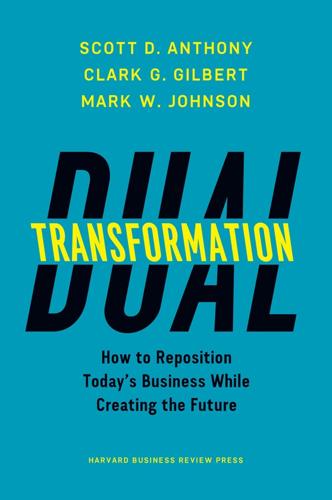
Dual Transformation: How to Reposition Today's Business While Creating the Future
by
Scott D. Anthony
and
Mark W. Johnson
Published 27 Mar 2017
In 2011, health insurance companies certainly appeared to have the Porterian wind at their backs. Spending on health care had grown from roughly 6 percent of gross domestic product in the 1960s to almost 20 percent, a number that dwarfs the spending of any other country in both absolute and relative terms. Although the 2010 Affordable Care Act, colloquially known as Obamacare, had the potential to put pricing pressures on pharmaceutical and medical device companies, it looked like a panacea to insurance companies. After all, a key provision of the act was that every American needed to have health insurance, which meant that roughly fifty million uninsured people became target customers.
…
TABLE 5-1 Early signals of disruption at three companies Early warning sign Aetna (2010) Netflix (2008) Turner (2007) Change in customer loyalty Not material, but insurance providers generally are not “loved” brands Not material Channel proliferation driving decrease in ratings Venture funding Health care IT had been funded aggressively for 10+ years New content models had been funded aggressively New content models had been funded aggressively Policy change Affordable Care Act Nothing material Nothing material Emergence of disruptors at the fringes Google and Microsoft attempting to create electronic medical records, new online-only insurance models YouTube, Hulu, and other online streaming services emerging Netflix, YouTube, and Facebook present but nascent Customer habit change Customers using web to diagnose; postrecession cost consciousness Fringe customers with high bandwidth watching on laptops and phones vs.
…
Index AbbVie, 19 Ablaza, Gerry, 111, 127–128, 142, 184–185, 189 on aligning leadership and boards, 193 on importance of senior support, 192–193 acquisitions for capability development, 66–69 crises of commitment and, 158–163 pharmaceutical industry, 22–23 at SingPost, 51, 52–53 at Singtel, 145 ACS, 67 additive manufacturing, 202–203 adjacencies, 22–23 Adobe acquisitions and partnerships at, 67 business model innovation at, 40, 42 commitment to transformation A at, 44 experimentation at, 148–149 focus at, 117 postdisruption job to be done at, 39 transformation A at, 31–32, 33 transformation journey at, 181 AdSense, 48 Adult Rock Band, 186 advertising at Google, 48, 61, 77 at Manila Water, 127 newspapers and, 3, 77 at Turner, 96, 99 AdWords, 48, 61 Aetna, 23, 87, 182–183 crises of conflict at, 168 decision making at, 99–102 early warning signs at, 108 purpose at, 177 Affiliated Computer Services (ACS), 14, 64 Affordable Care Act, 100 Alibaba Group, 52–53, 67, 201–202, 203 “aliens,” in transformations, 68–69 alignment, 193–194 overestimation of, 119 transformation blurbs and, 129 Alipay, 201–202 Alliance Boots, 60 Alphabet, 47–48, 54 Altman, Elizabeth, 62 Amara, Roy, 104 Amazon, 53–55, 66 business model of, 106 drone-based deliveries, 203 statement of purpose, 178 Amazon Web Services (AWS), 53–55 America Online, 27 Amobee, 145, 188 Andreessen, Marc, 2–3, 206 Andreessen Horowitz, 206 Android, 4, 92 Anthony, Scott D., 62–63, 72–73, 81 on disruptive potential of YouTube, 108 on risk management, 65 Apple, 4, 8 acquisitions and partnerships at, 67 developer kit, 152 focus at, 116, 132 influence of Xerox on, 13 iPhone, 4, 92–93 transformation journey at, 181–182 arbitration, 86–87 Arizona State University (ASU), 56–57, 59, 183–184 partnerships with, 67 Arrested Development, 35 Ayala Corporation, 117, 143–144 Ayala Group, 184 Aztec empire, conquest of, 43 Baffrey, Robert “Boogz,” 127 Baier, Wolfgang, 52, 53 balance in capabilities link, 75 crises of commitment and, 158–160 curiosity to explore and, 139 between transformations A and B, 173–175 Balsillie, Jim, 4 banking, 151–152, 200–202 Barnes & Noble, 12–13 barriers to consumption, identifying, 61–62 Baxter International, 64, 86 behavior celebrating desired, 149–150 changes in customer, 105 predictors of, 63 Bell Labs, 115 Benioff, Marc, 27–28, 151 Berkshire Hathaway, 156 Berners-Lee, Tim, 3 Bertolini, Mark, 23, 87, 100–102, 168, 182–183 on aligning leadership and boards, 193 on communication, 195 on crises of commitment, 187 on crises of conflict, 190 on focus, 194 on quieting critics, 191–192 Bezos, Jeff, 53–55 BlackBerry, 4 Blank, Steve, 65, 153 Blockbuster Video, 32–33, 34 boards, 11, 166–167, 193–194 Boeing Planner, 78 Bohm, David, 130 Borders, 12–13 Boston Red Sox, 1, 3 boundaries, determining, 121–123, 215 Brigham Young University-Idaho (BYU-Idaho), 9, 59 business model at, 41, 42 commitment to transformation A at, 44 exchange team at, 84 identity change at, 170 the job to be done at, 37–38 postdisruption job to be done at, 39 superheroes at, 174–175 transformation B at, 57–58 Bryan, J.
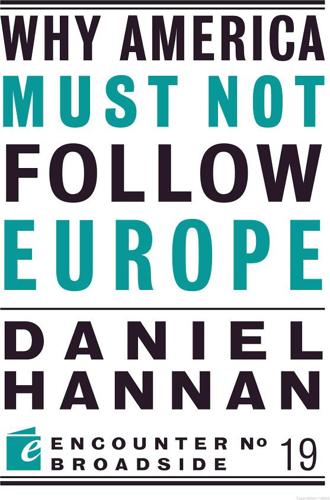
Why America Must Not Follow Europe
by
Daniel Hannan
Published 1 Mar 2011
Europe is falling further and further behind, sustaining its living standards by borrowing, dwindling as a force in the world. The U.S., which has expanded its federal government by 30 percent since 2008, seems determined to duplicate that error. REPEALING STATE HEALTH CARE: IF IT WERE DONE WHEN ’TIS DONE, THEN ’TWERE WELL IT WERE DONE QUICKLY Once ObamaCare takes hold, it won’t easily be undone. The moment politicians become responsible for treating the sick, it becomes almost impossible to suggest any significant overhaul of the system – or indeed, any reduction in the budget. I can best demonstrate this phenomenon with a personal recollection. In August 2009, I was asked on Fox News whether I’d recommend the British health care model to Americans.
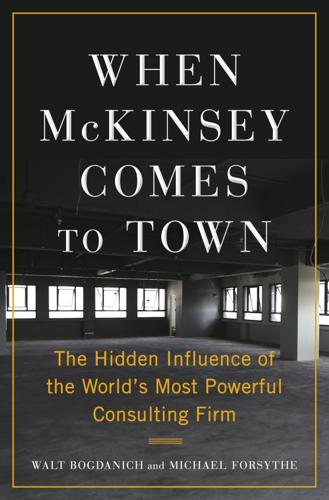
When McKinsey Comes to Town: The Hidden Influence of the World's Most Powerful Consulting Firm
by
Walt Bogdanich
and
Michael Forsythe
Published 3 Oct 2022
Many of those contracts involved advising government agencies that regulate McKinsey’s private clients in pharmaceuticals, hospitals, and insurance. * * * — McKinsey’s health-care team played an important—and much-criticized—role in the debate over President Obama’s signature domestic achievement, the Affordable Care Act, the most significant health-care legislation since Medicare and Medicaid half a century earlier. The law ended years of failed Democratic attempts to help the uninsured. Millions of Americans would now have access to affordable insurance because Medicaid expanded to include not just the poor but also the near poor.
…
The law infuriated Republican leaders, who perceived it as a step toward a government takeover of health care. Health insurers publicly supported the legislation but privately tried to kill it by secretly channeling tens of millions of dollars through the U.S. Chamber of Commerce to lobby against the bill. The insurance industry didn’t defeat the Affordable Care Act, but did weaken it by pressuring legislators to remove the “public option,” a provision that would have allowed the government to offer competing coverage as a hedge against excessive insurance company profits. President Obama dropped that provision to win the deciding vote of Senator Joe Lieberman of Connecticut, home to several major insurance companies.
…
“The findings of this survey are so markedly out of sync with the other assessments that it has raised legitimate questions about the product, including how and why it was created,” Democrats on the House Ways and Means Committee wrote in a letter to McKinsey’s managing partner, Dominic Barton. “The report itself states that McKinsey ‘educated respondents’ about the implications of the Affordable Care Act, with no indication of the content of this ‘education.’ ” Senator Max Baucus, chairman of the Senate Finance Committee, wrote a similar letter to Barton. “It isn’t every day that the chairman of the Senate Finance Committee and three House committees simultaneously demand that a company cough up the internals of a survey like this one,” the Washington Post columnist Greg Sargent wrote.

Enlightenment Now: The Case for Reason, Science, Humanism, and Progress
by
Steven Pinker
Published 13 Feb 2018
The United States is famously resistant to anything smacking of redistribution. Yet it allocates 19 percent of its GDP to social services, and despite the best efforts of conservatives and libertarians the spending has continued to grow. The most recent expansions are a prescription drug benefit introduced by George W. Bush and the eponymous health insurance plan known as Obamacare introduced by his successor. Indeed, social spending in the United States is even higher than it appears, because many Americans are forced to pay for health, retirement, and disability benefits through their employers rather than the government. When this privately administered social spending is added to the public portion, the United States vaults from twenty-fourth into second place among the thirty-five OECD countries, just behind France.34 For all their protestations against big government and high taxes, people like social spending.
…
Social Security has been called the third rail of American politics, because if politicians touch it they die. According to legend, an irate constituent at a town-hall meeting warned his representative, “Keep your government hands off my Medicare” (referring to the government health insurance program for seniors).35 No sooner did Obamacare pass than the Republican Party made it a sacred cause to repeal it, but each of their assaults on it after gaining control of the presidency in 2017 was beaten back by angry citizens at town-hall meetings and legislators afraid of their ire. In Canada the top two national pastimes (after hockey) are complaining about their health care system and boasting about their health care system.
…
Most of us are deluded about our degree of understanding of the world, a bias called the Illusion of Explanatory Depth.91 Though we think we understand how a zipper works, or a cylinder lock, or a toilet, as soon as we are called upon to explain it we are dumbfounded and forced to confess we have no idea. That is also true of hot-button political issues. When people with die-hard opinions on Obamacare or NAFTA are challenged to explain what those policies actually are, they soon realize that they don’t know what they are talking about, and become more open to counterarguments. Perhaps most important, people are less biased when they have skin in the game and have to live with the consequences of their opinions.
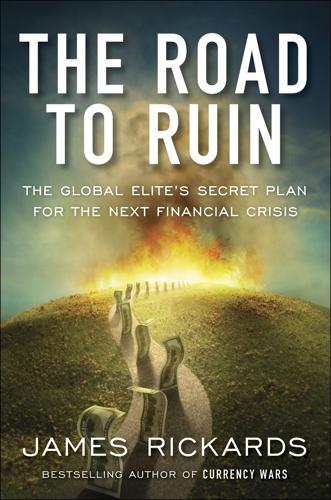
The Road to Ruin: The Global Elites' Secret Plan for the Next Financial Crisis
by
James Rickards
Published 15 Nov 2016
The net to the worker is the same, and an inefficient pretense of private salaries and public taxation is eliminated. Schumpeter’s suggestion has found new life in policy proposals for a Basic Guaranteed Income championed in various forms by Bernie Sanders on the left and Charles Murray on the right. The expansion of food stamps, disability payments, Obamacare, Medicare, and the earned income credit are all forms of government income maintenance, evidence of a movement toward true socialism. Schumpeter said democracy was not an ideology in which the will of the people was fulfilled. Instead it was a process by which elites competed for leadership roles.
…
Fascism is above all belief in the state rather than God or the individual as a source of authority and normative conduct. The fascist project is ratchet-like; it does not always move, but when it does it cannot be reversed. There are long periods like the 1920s and 1980s when the progressive-neofascist project makes little headway. Still, when fascism breaks through as with the New Deal, the Great Society, and Obamacare, the changes are here to stay. Each breakthrough enhances state power at liberty’s expense. Dependency is increased at the expense of self-reliance. Americans barely notice. Fascism’s advance is often aided by a crisis; an application of shock doctrine. Wilson’s authoritarian tendencies were empowered by the First World War.
…
In a fascist system, a Faustian bargain is struck between big business and big government. Fascists are perfectly willing to allow private companies and private property to exist. They are unwilling to allow private realms to stand in the way of state power. Hospitals and health insurers may be private enterprises, but their products, prices, and policies are controlled by Obamacare. Google, Twitter, and Apple may be private companies, but Internet access and fees are regulated by the Federal Communications Commission, an agency established in 1933 by FDR, almost sixty years before the World Wide Web was launched. Banks are private entities, but are highly regulated under Dodd-Frank, the Federal Reserve Act, and a litany of other statutes.

Give People Money
by
Annie Lowrey
Published 10 Jul 2018
“In essence, the United States’ peculiar private-based health-care system exists at least in part because of the country’s commitment to maintaining racial hierarchies,” explains the Atlantic writer Vann R. Newkirk II. “The results were deep racial disparities in almost every major disease, an enduring gap in lifespans and mortality, and the creation of entirely separate medical and public-health infrastructures.” Such discrimination persists, even after the passage of the Affordable Care Act. Consider the Obama-era expansion of the Medicaid program to nondisabled, childless adults below or near the poverty line. In a 2012 Supreme Court ruling, states were granted the right to opt out of the federally financed expansion effort. As of mid-2017, just two of the eleven states that made up the Confederacy had taken the expansion, Louisiana and Arkansas.
…
Millions of low-income families would benefit from having more choice over how to spend such safety-net dollars that way, instantly rendering those dollars more valuable. The United States could also get rid of welfare and create a universal child benefit, something that would eliminate child poverty, support women, and help to build a healthier generation. We could make our existing programs simpler and more universal too. Getting rid of Obamacare’s complicated set of subsidies and letting everyone buy into Medicare or Medicaid is a very different policy proposal than a UBI, but one motivated by the same ideas. Ditto with making the tax code more transparent and less laden with loopholes and shelters, or turning programs like welfare into an entitlement based on income, with no complicated application paperwork, asset testing, or work requirements.
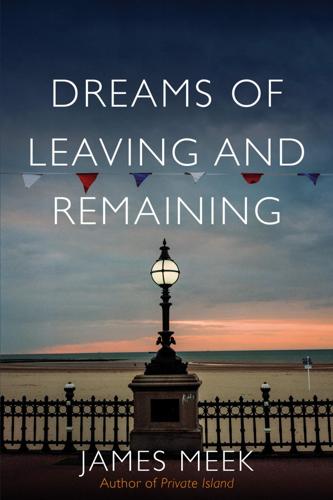
Dreams of Leaving and Remaining
by
James Meek
Published 5 Mar 2019
In February, dismayed by hostility among healthcare adepts to the American associations of ‘accountable care’, NHS England came up with a new name: Integrated Care Systems. Since we’ve already had ICS standing for something else, let’s stick with ‘accountable care’. What is it? In the United States, it was spelled out in the Affordable Care Act, also known as Obamacare, as a way for hospitals, community practitioners and local clinics to integrate into a single system to provide complete healthcare to a set of elderly Americans receiving the form of US healthcare that most resembles Britain’s NHS – the mainly taxpayer-funded, partly free at the point of delivery system for over-sixty-fives known as Medicare.
…
It was a first for me to hear somebody say, as Louise did: ‘Don’t get me wrong, I’m not for the workhouse. But …’ Building up slowly, then with increasing enthusiasm, determination and evidence of considerable prior thought, Louise Warren laid out an ideal of healthcare and welfare in general that lay somewhere between mid-Victorian England and the modern, pre-Obamacare United States: an England of private medical insurance, self-reliance, self-help, of a reckoning for feckless welfare recipients who don’t understand that pay TV is a luxury, of decent poor people fallen on hard times being helped by acts of charity in the same way the Lincolnshire Chronicle’s ‘simple, kindly country folk’ helped Maud Elizabeth-Norman in 1924, an England which (despite seventy years of evidence to the contrary) simply could not afford to run a national health service from public funds.

Calypso
by
David Sedaris
Published 28 May 2018
She started explaining what had taken her from North Carolina to Central America, but then the flight attendant came to take a drink order from the guy next to me, and I missed it. Just as I was tuning back in, a man across the aisle tried to open his overhead bin. It was stuck for some reason and he pounded on it, saying to anyone who would listen, “This is like Obamacare: broken.” Several of the passengers around me laughed, and I noted their faces, vowing that in the event of a crisis, I would not help lead them to an emergency exit. You people are on your own, I thought, knowing that if anything bad did happen, it would likely be one of them who’d save me. It would be just my luck.
…
We could see them in their kitchens and family rooms, watching TV or standing before open refrigerators. They were white, for the most part, and conservative, the sort of people we’d grown up with at the country club, the kind who’d have sat in the front of the plane and laughed when the man across the aisle compared his broken overhead bin to Obamacare. That said, we could have knocked on any of these doors, explained our situation, and received help. “These folks have a house but don’t know which one it is!” I could imagine a homeowner shouting over his shoulder into the next room. “Remember when that happened to us?” It’s silly, but after a while I started to panic, thinking, I guess, that we could die out there.
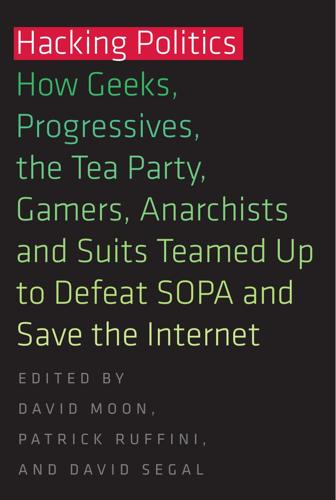
Hacking Politics: How Geeks, Progressives, the Tea Party, Gamers, Anarchists and Suits Teamed Up to Defeat SOPA and Save the Internet
by
David Moon
,
Patrick Ruffini
,
David Segal
,
Aaron Swartz
,
Lawrence Lessig
,
Cory Doctorow
,
Zoe Lofgren
,
Jamie Laurie
,
Ron Paul
,
Mike Masnick
,
Kim Dotcom
,
Tiffiniy Cheng
,
Alexis Ohanian
,
Nicole Powers
and
Josh Levy
Published 30 Apr 2013
For example, some Pentagon officials might want to discredit those sharing information about how the American public were misled into believing Saddam Hussein had weapons of mass destruction. Federal Reserve Chairman Ben Bernanke might seek to prevent exposing the role of the Federal Reserve in bailing out up both American and European banks. Some supporters of the Patient Protection and Affordable Care Act (or “Obamacare”) might want the government’s fact checkers to discredit those who expose how the pharmaceutical industry and the insurance lobby provided sought to enrich themselves by supporting the bill. Taxpayers should not be forced to subsidize a propaganda machine designed to keep them from knowing the truth about their government.
…
Over the last decade, pharmaceutical interests have spent almost two billion dollars lobbying U.S. government branches to meet commercial goals, such as preventing drug price negotiations and new importation laws to lower domestic prices. Additionally, the Obama administration made a deal with the pharmaceutical industry; the administration would drop its tacit support of drug importation in exchange for industry support of Obamacare and modest price rebates to government health care programs. Had SOPA become law, search engines, domain registrars and registries, credit card companies, payment processors and advertisers would be encouraged to refuse their services to safe online pharmacies. Supporters of SOPA obtusely pointed to the bill’s language on online pharmacies to argue that the bill was not only about protecting intellectual property and copyrights but protecting lives.
…
Specifically, government guarantees of health care—a Medicare-for-all program, more efficient than the private insurance system—and pensions more robust than Social Security—would give Americans some assurance that they wouldn’t starve. They’d enable entrepreneurship, as health care access is a concern that forces people to scurry towards and hold onto jobs they don’t want instead of starting their own shops (though this predicament will be somewhat improved under Obamacare). The appropriate societal response to hard economic times and workers’ desires for portable retirement plans isn’t to convert traditional pensions into 401(k)s—rather, it’s to institute a robust federal pension system. A step between here and there would be to adopt the plans most Europeans have access to—much more robust even under austerity than the crumbs we toss at American seniors.
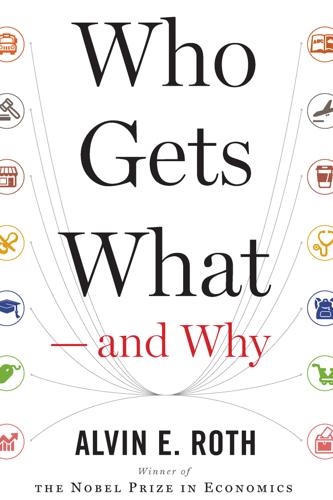
Who Gets What — and Why: The New Economics of Matchmaking and Market Design
by
Alvin E. Roth
Published 1 Jun 2015
Changing the market for health care is famously difficult; national political campaigns have been waged over it. More than four decades ago, President Richard Nixon tried and failed to set up a nationwide system that would provide health care for all. Only in the past couple of years has another attempt, the Affordable Care Act, or Obamacare, been enacted, and it is still hotly contested. But if I had to guess where the beginnings of good design might emerge, it would be in the health-care policies of large companies that self-insure their workers. Such companies benefit from keeping their workers healthy, as well as from reducing the costs of caring for them once they become ill.
…
The English language gives us a head start on that, speaking as it does not only of job markets but also of marriage markets. Index Abdulkadiroğlu, Atila, 35, 107, 153 on school choice, 126–28, 165, 241, 243 activity rules, 187–88 advertising, targeted, 189–92 “Advice to a Young Tradesman, Written by an Old One” (Franklin), 200–201 Affordable Care Act, 224 Airbnb, 99–103, 116 algorithms Boston Public Schools, 122–28 computerized markets and, 225–26 deferred acceptance, 141–44 in Boston Public Schools system, 162–65 in New York school choice program, 155–61 for financial marketplaces, 82–89 Internet dating sites, 176–77 kidney exchange, 35–38, 39–41 for medical residencies, 136–43 Roth-Peranson, 148–49 stable outcomes from, 139–43 Alliance for Paired Donation, 44, 49 Amazon, 20–21, 22 congestion management in, 24 simplicity in, 26 American Economic Association, 174, 175 Android, 21–22 anonymity, in commodity markets, 19–20 antibiotics, 133–34 Apple, 19 iPhone, 21–22, 24 application and selection processes, 5.
…
See also repugnant markets NEPKE, 8, 37, 38, 42, 44, 49, 50 New England Journal of Medicine, 45 New England Organ Bank, 36 New England Program for Kidney Exchange (NEPKE), 8, 37, 38, 42, 44, 49, 50 New York City school system, 8, 106–10, 112, 122, 153–61 benefits of revised, 160–61 old compared with new, 155–58 preferences in, 153–54, 156–60 New York State attorney general, 86, 88 New York Stock Exchange, 82–83 New York Times, 110 Nguyen, Hai, 38–39 Niederle, Muriel, 75–76, 176–77 Nixon, Richard, 224 nonsimultaneous chains in kidney exchange, 43–46, 49, 51–52, 235 NRMP, 7–8, 146 Obamacare, 224 objectification, 203 Ockenfels, Axel, 118, 120–21 Oklahoma Land Rush, 57–59, 80, 113–14 once-per-second market, 86, 88 OpenTable, 218 operating systems, 21–22 Orange Bowl, 61–62, 66 orthopedic surgeons, 78–80 Ostrovsky, Mike, 86–87 package bidding, 188–89, 225–26 parking decisions, 72–73, 125–26 Pathak, Parag, 107, 126, 149, 153, 165 payment systems credit cards, 23–26 in Internet marketplaces, 24, 104, 117 mobile, 26–27 privacy in, 119 PayPal, 24, 117, 119 Payzant, Tom, 126, 129 peacocks, 177–78 penicillin, 133–34 Peranson, Elliott, 147–48, 157 performance evaluation, 64 political campaign contributions, 203 politics free markets and, 226–28 in kidney exchanges, 49–51 polycystic kidney disease, 38–39 polygamy, 199 Posner, Richard, 91 price and pricing, 9.

The Powerful and the Damned: Private Diaries in Turbulent Times
by
Lionel Barber
Published 5 Nov 2020
Especially former campaign strategist Steve Bannon, ‘the wildest of the wild cards’. Many of the staffers are barely 30, they all have an opinion and there’s next to no process. Cohn’s job is to instil discipline and set priorities. The president’s agenda is staggeringly ambitious: tax reform, a bonfire of regulations, a $1 trillion infrastructure programme and the repeal of Obamacare. Cohn lost out in the Goldman succession. His new job has visibly energised him. How long will he last? The answer was a little over a year before he finally resigned. Bob Woodward’s book Fear later alleged that while in office Cohn had removed a draft letter – cancelling a trade agreement with South Korea – from Trump’s desk so the president could not sign it.
…
Dishevelled with longish, curly grey hair, he cuts a charismatic figure. His sentences are dotted with references to martial history, especially the Civil War. On opposite walls: a whiteboard chock-a-block with policies and a six-column list of campaign pledges under the words ‘Make America Great Again’. Among the most eye-catching: repeal of Obamacare, branding China a currency manipulator, hiring Americans and changing the accounting rules for US companies. Bannon wants to overturn the global economic system which has benefited Wall Street, Hollywood and Silicon Valley as well as Milan and Chelsea. Globalisation has ‘gutted’ the American economy, he bellows.
…
Lee) 182, 182n Lehman Brothers x, xiv, xv, 5n, 37, 46, 81, 85, 86, 87, 101–2, 104, 105, 107, 121, 160, 199, 432 Le Pen, Marine 349, 353, 380 Leveson Inquiry xv, 177–8, 191–2, 194–5, 197, 200–202, 220, 221, 222–3, 227, 236, 237, 239, 257n Leveson, Lord Justice 177, 194, 195, 201–2 Lewis, Leo 181 Lewis, Simon 143 Lewis, Will 135, 135n Liberal Democrats xv, 135, 135n, 151, 158, 158n, 159, 195–6, 274, 275, 275n, 284, 288, 290, 354 Libor rate 168, 212 Libya 142, 177, 180, 259, 330, 355, 387 Li, Frank 207–8 liquidity, financial 69, 70, 86, 94, 103, 117, 323 Lisbon treaty, EU 64, 64n, 67, 381 Liu Xiaoming x, 206–7, 374–5 Llewellyn, Ed 308–9 Lloyds Bank 19 Long-Term Capital Management (LTCM) 86, 86n Luce, Ed 130, 190 Maastricht treaty (1992) 64n, 342, 389, 426, 433 Mackay, Angela 284 Mack, John 85, 86 MacLeod, Lisa 147, 203 Macron, Emmanuel 353, 412–13 MacShane, Denis 41 Mail on Sunday 58, 197, 220–21, 227, 265 MailOnline 357 Ma, Jack 233 Major, John 139, 157, 217n, 290, 320, 342n, 414 Major, Tony 240–41, 254–5, 272 Ma Kai 271 Makinson, John 189, 282 Malema, Julius 260–61 Mallet, Victor 245, 392–3 Malmström, Cecilia 328 Mandela, Nelson 51, 52, 53 Mandelson, Peter 65, 190, 244 Manningham-Buller, Eliza 20–22 Marchionne, Sergio 375–6 Markle, Meghan 422 Marks and Spencer 235–6, 244 Marriage, Madison 368–9, 370, 371, 372, 373–4, 382, 384 Massoudi, Arash 295, 296 Mayer, Marissa 73–4 May, Theresa ix, xvi, 274, 310, 323, 324, 326, 327, 328, 333–4, 339, 342–3, 345–6, 349–50, 353–4, 358, 359–60, 365, 373, 375, 381, 388, 399–400, 402, 406, 410, 411, 413, 414, 420, 425 Mbeki, Thabo 51–3 McCain, John 96, 99 McChrystal, Stan 148–9, 148n, 150 McClean, Paul 356–7, 395 McCoy, Danny 188 McCrum, Dan 404, 405, 407, 421 McDonnell, Finola 406–7 McGregor, Heather 14 McKinsey 122, 197, 243, 245, 306 McLaren, Malcolm 155–6 McMaster, Lieutenant General H.R. 366, 366n McNulty, Sheila 35 Media Standards Trust 220–21 Medvedev, Dmitry xiv, 89, 90–91, 329, 417 Melbourne Mining Conference 386–7 Meng Wanzhou 399 Merkel, Angela ix, xiv, xvi, 95–7, 153, 199, 211, 253, 274, 309, 323, 326, 358–9, 367, 368, 420, 426, 433–5, 437 Merrill Lynch 16, 86, 102 #MeToo 357, 369, 370 Metropolitan Police 165 Meyer, Christopher 139 Micklethwait, John 238, 258 Middleweek, James 20 MI5 20–22 Miliband, David 162, 163–4, 193 Miliband, Ed 162, 164, 193, 273, 286, 290 Miller, Maria 220, 223 Mill, John Stuart 423, 423n Mirror Group 197, 227 MI6 21, 180 Misra, Rajeev 383 Mitchell, Tom 390 Modi, Narendra ix, 244–6, 309, 348, 407–9 Molotov, Vyacheslav 90, 90n Monti, Mario 196, 203–4, 367–8 Moreno, Glen 114–15, 294 Morgan Stanley 85, 86, 102, 113 Morgan, John Pierpont 93 Morgan, Piers: The Insider 11 mortgage-backed securities 62, 84, 85, 114 Mosbacher, Georgette 242, 333, 358, 366 MPs expenses scandal 135–6 Mubarak, Hosni 54 Mudie, George 127 Mueller investigation, US 374, 374n Mugabe, Robert 52, 53, 261 Mulcaire, Glenn 190 Mulvaney, Mick 366, 366n Münchau, Wolfgang 172, 180 Murdoch, James 63 Murdoch, Rupert xv, 5, 5n, 28, 59–61, 65, 67, 161–2, 177, 191, 222, 267–8, 282, 289, 291, 317, 318 Murphy, Paul 27, 291, 368, 369, 382, 384, 405, 421 Murray, John 386 Musk, Elon 221–2 Myanmar 229–31, 233 Narayanan, M.K. 169 National Security Agency (NSA) 236–7 National Union of Journalists (NUJ) xiv, 202, 203, 240, 311 NatWest Bank 22, 22n Navalny, Alexei 328–9, 329n Nayef, Mohammed bin 308 Nazarbayev, Nursultan 142, 176, 176n Netanyahu, Benjamin ix, xiv, 102, 108, 109, 109n Netflix 398–9, 439 Neville-Rolfe, Lucy 23 Newman, Cathy 15, 15n News Corporation 5n, 268 News International 161–2, 165, 191 News of the World xv, 11, 139, 165, 177, 190, 191, 223, 223n, 237, 324n Newton, Gordon 9, 391 New Yorker 381 New York Post 119 New York Stock Exchange 86, 234 New York Times 35, 59, 61, 161, 165, 189, 216n, 224, 225, 258, 298, 332 NHS (National Health Service) 180, 180n, 232, 289, 313, 422 Nikkei xv, xvi, 281, 283, 284–5, 295–300, 295n, 301–3, 304, 305–6, 310–11, 312, 321, 339, 371, 373, 374, 390, 391, 394, 403, 407, 428, 431 Nikkei Asian Review 403 9/11 terrorist attacks (2001) 76, 236 Nixon, Richard 10, 45, 241, 267 non-doms 82–3, 83n, 319 Noonan, Peggy 317 North Korea 54, 182, 253–4, 348, 349, 366, 374, 376, 397 Northern Rock 45, 70, 77, 88, 127 Oakeshott, Isabel 316 Obama, Barack xii, 55, 68, 82, 96, 96n, 97, 98, 99, 113–14, 117, 130–31, 132, 148n, 162, 163, 187, 188, 189, 204, 219, 222, 233, 236, 307, 320, 331, 333, 342, 348, 378, 396, 413, 435 Obamacare 342, 348 Obama, Michelle 204 Office of Budget Responsibility (OBR) 106 Okada, Naotoshi 284, 298, 299, 404 Oliver, Craig 180 Olympics: (2008) 98–9; (2012) 98–9, 243 Olympus Corporation 298 1MDB (Malaysian state investment fund) 167 O’Neal, Stan 16, 148 Osborne, George xv, 81, 82, 97, 106, 156–7, 159, 174, 193, 209, 255, 259, 273–4, 289, 308, 318–19, 324, 345, 377, 378, 413 Owen, Geoffrey 252, 411 Owen, Jane 174–5, 264, 270 Oxford Union 41, 41n, 340 Page, Bruce 62 Page, Larry 326 Pakistan 41n, 132, 161, 168, 169, 170, 171–2, 203, 309, 363 Palestinians xv, 54–5, 107, 108, 109, 208, 378 Palin, Sarah 99 Pandit, Vikram 85, 113 Parker, Alan 153, 153n Parker, George 152, 153, 157, 320, 322–3, 359 Parker, Lieutenant General Nick 150 Patten, Chris 217, 217n Paulson, Hank 31, 31n, 55–6, 57, 87, 104 Payne, Sebastian 313, 410 Pearson x, 3, 3n, 5, 8, 15, 18, 19, 29, 43, 66, 73, 114, 115, 128, 189, 213, 218, 251, 253, 257, 282, 288–9, 292, 293, 294–7, 302–3, 311 Pence, Mike 333 Penguin Books 189, 282 Perkins, Zelda 357 Peston, Robert 70, 127 Pfizer 263 phone-hacking xv, 41, 76, 139, 162, 165, 166, 177, 190–91, 195, 223, 223n, 236, 268, 291 PIGS (acronym for southern European nations) 100–101 Pilling, David 165, 355, 356 Piris, Jean-Claude 341, 426 Polman, Paul 352, 353 Portugal 99–100, 148, 212, 238 Powell, Colin 54, 330 Powell, Jonathan 68, 68n Prabodhan 244–5 Presidents Club 368–9, 370–72, 373 Press Complaints Commission (PCC) 139, 165–6, 165n, 178, 192, 197, 201, 202, 221 Press Standards Board of Finance (Pressbof) 197 Prince, Chuck 69 private equity xiv, 46, 68, 69, 113, 114, 233, 243, 352 Purdy, Matt 332 Putin, Vladimir ix, xii, xvi, 89, 89n, 91, 120–21, 137, 205, 237–9, 238n, 256, 275, 277, 307, 328, 329, 330, 335, 348, 380, 401, 405, 406, 416–20, 432, 434 Qatar 74, 122, 212, 377 quantitative easing (QE) 199, 241 quants 187 Quinn, Sally 276 Raab, Dominic 410, 410n Rachman, Gideon 26, 26n, 43, 359 Rafsanjani, Akbar Hashemi 249–50, 249n Rajan, Raghuram 246–7, 246n Rajoy, Mariano 155, 219, 225–6 Rake, Michael 122, 212 Ramaphosa, Cyril 51, 262 Rathbone, John Paul 100, 140, 141, 428 Read, Ian 263 Reagan, Ronald 117, 129, 186, 188, 232, 249, 315, 317, 366, 397 Rees-Mogg, Jacob 327, 340, 341, 373, 388, 424 Rees-Mogg, William 340 Reliance Communications 247 Reliance Group 40 Remnick, David 381 Ren Zhengfei 183–4, 399 Renzi, Matteo 239–40 Republican Party, US 96, 130, 187–8, 242, 314, 315, 316, 331, 333, 363, 366n, 374 Reuters 147n, 258, 295–6, 298, 403, 417 Rice, Condoleezza 53–5, 108, 330 Richard III (Shakespeare) 192–3 Ridding, John 29, 135, 147–8, 215, 234, 257, 258n, 282, 288, 292, 293, 295, 296, 297, 299, 301, 312, 406–7, 430 Rio Tinto 286, 386 Robbins, Ollie 414–15 Robinson, Gwen 185, 230–31 Robinson, Nick 318 Rogers, Ivan 326 rogue traders 193 Rollins, Ed 366–7 Romney, Mitt 219 Roosevelt, Teddy 130, 140, 348 Rothermere, Jonathan 377 Rothschild 296, 353 Rothschild, Lynn Forester de 265, 265n Rouhani, Hassan ix, 249, 250–51, 267 Rousseff, Dilma 140, 142 Royal Bank of Scotland (RBS) xiv, 22–3, 22n, 75, 122 RPC (law firm) 421 Rubin, Robert 84, 172, 228 Rudd, Kevin 144, 144n Rudd, Roland 322 Rumsfeld, Donald 54, 330 Rupert, Johann 428, 428n Rusbridger, Alan x, 76, 139, 191–2, 197, 290–91, 395 Russell, Alec 51, 53, 189, 302, 321–2, 381, 429, 430 Russia ix, 56, 70, 81, 88–91, 91n, 120–21, 138–9, 161, 163, 228, 229, 237–9, 237n, 238n, 239, 256–7, 259, 275, 276–7, 307, 328–31, 335, 348, 349n, 374n, 376–7, 376n, 377n, 391, 405, 408, 416–20, 434 Rwanda ix, 142, 340, 354–6 Saatchi, Charles 243, 243n Salman, Mohammed bin x, xii, xvi, 306–8, 326, 361, 362, 376–9, 383, 392 Salmond, Alex 272, 273, 361–2 Salvini, Matteo 380 Samsung 182, 182n Sandberg, Sheryl 394 Sandbu, Martin 172 Sands, Peter 244–5, 245n Santander UK 210, 210n Santos, Juan Manuel 141 Sarkozy, Nicolas 62, 91–2, 185, 259, 412, 413, 435 Saudi Arabia xii, xvi, 107, 306–8, 360–61, 362, 376–9, 383, 392 Saudi Aramco 307, 308 Scardino, Marjorie x, 5–6, 8, 9, 14, 18, 26, 29, 32, 43, 66, 73, 83, 85, 93, 115, 147, 213, 218, 251, 282, 294, 411 Scavino, Dan 347 Schama, Simon 266–7 Schmidt, Eric 74, 160–61 Schroders 235, 235n Schwab, Klaus 120 Schwarzman, Christine 104 Schwarzman Scholars programme, Tsinghua university, Beijing 120 Schwarzman, Steve x, xiv, 46–7, 103–4, 118–20, 333, 377 Scotland 22, 22n, 250, 290, 344, 350, 361–2, 438; independence/independence referendums 253, 258–9, 266–7, 269, 271, 272, 273, 319, 320, 413, 438 Scotsman 13, 22, 361 Scott, C.P. 440 Scottish National Party (SNP) 272, 273, 290, 350, 361 Scowcroft, Brent 55 Second World War (1939–45) 128–9, 400 Seibert, Steffen 433 Sein, Thein 230 self-driving cars 215 Selmayr, Martin 406 Sevastopulo, Demetri 181, 346, 396 7/7 suicide bombings, London 21, 21n S4Capital 386 ‘shadow banking system’ 134 Shakespeare, William 192–3, 270, 323 shale gas 238 Shariatmadari, Hossein 249 short selling 103, 405, 407, 421 Shrimsley, Robert 13, 28, 102, 107, 117–18, 333, 371, 372, 430, 431 Shwe, General Than 230 Silicon Valley xv, 73, 74, 183, 184, 200, 213, 214–16, 236, 291, 348, 358, 394 Silva, Lula da 140, 142–3 Silverman, Gary 102 Simpson, Wallis 201 Singhal, Amit 214–15 Singh, Manmohan 38–9 Skapinker, Mike 298 Skripal, Sergei 376–7, 417, 419 Sky Television 41, 63, 127, 267–8, 316–17 Smith, Adam 124, 266, 297 Smith, Terry 14–15, 17–18, 19–20, 20n, 32, 139, 201–2, 218, 243, 372 Smollett, Tobias 297, 297n Snowden, Edward xv, 202, 236–7, 270–71, 291, 395 Snowdon, Lord 75, 76 SoftBank 325, 325n; Vision Fund 308, 326, 378, 383 Solana, Javier 219 Son, Masayoshi 325–6, 325n Soros, George 190, 231 Sorrell, Martin 32–3, 46, 60–61, 191, 293, 370, 371, 374, 381–2, 383–6, 385n South Africa 51–3, 109, 147, 229–30, 260, 402, 424, 428, 428n, 429 South Korea 23, 181, 182, 182n, 242, 342, 366, 366–7n, 435, 438 Spacey, Kevin 192–3 Spain 84, 100–101, 148, 153–5, 212, 219, 225–6, 238, 363, 388 Spiegel, Peter 15, 200, 211, 302, 357, 389 Squire, Sarah 264 Sri Lanka 169, 356 Stalin, Joseph 48, 50, 64, 95, 207, 331 Standard Chartered Bank 244–5, 245n Stephens, Mark 174–5 Stephens, Philip 190, 209–10, 228, 354 Stevenson, Dennis 19, 128 Stoppard, Tom 300–301 Stott, Michael 403 Stringer, Sir Howard 17, 17n, 298, 299, 301 Studzinski, John 317 Sturgeon, Nicola 272 ‘sub-prime’ mortgages 62n, 69, 114 Sullivan, Martin 36, 37, 37n Sulzberger, Arthur 225 Summers, Larry 189–90 Sun 41, 100, 162, 165n, 223 Sunday Mirror 75–6 Sunday Times 7, 62, 68, 135n, 192, 317 Susman, Louis B. x, 68, 204, 222 Svanberg, Carl-Henric 409–10 Svenska Dagbladet 240–41 Swannell, Robert 235–6 Swift, Jonathan 297, 297n Syria xiv, 55, 102, 110–11, 177, 259, 355 Taliban 133, 149, 150, 170 Taseer, Salman 169–70 Tate Modern 319 taxation 83n, 106, 125, 131, 143, 143n, 160, 187, 189, 193, 263, 287, 318, 333, 342, 343, 363n, 368, 410, 439 Taylor, Ian 287, 387–8 Team Sky 216, 219 Tencent xii, 440 Tendulkar, Sachin 247 Tesco 23–4 Tesla 221–2, 221n Tett, Gillian xiv, 44–5, 74–5, 102, 147, 190, 346, 347, 389 Thain, John 86–7 Thatcher, Margaret 117, 128, 129, 186, 217n, 229, 231–3, 244, 316, 317, 320, 426, 429, 438 Thompson, Mark 162, 216–17, 216n, 332 Thomson, Robert 5, 5n, 60 Thornhill, John 302 3G 352, 353 Times, The 5, 5n, 28, 35, 60, 151, 165, 165n, 192, 255, 264, 340 Timmins, Nick 47–8 Timothy, Nick 342, 349, 350 Today programme 318 Tortoise 28, 389 Toynbee, Polly 82–3 Trans-Pacific Partnership (TPP) 391, 392 Trichet, Jean-Claude 61–2, 188, 416 Trump, Donald ix, xii, xv, xvi, 58, 97, 131, 133, 184, 211, 251, 312, 314, 315, 316, 317, 331, 332–3, 334–5, 339, 340, 341–2, 345, 346–9, 350, 353, 359, 364, 366–7, 366n, 367n, 374, 376, 378, 380, 381, 390, 391, 394n, 396, 397–8, 399, 406, 409, 412, 419, 420, 432, 434, 435, 437 Turnbull, Andrew 47–51 Tutwiler, Margaret 86 Twitter 210–11, 224, 225, 320, 326–7, 347 Uber 357–8 UBS 179n, 193 UKFast 401 UKIP 253, 259, 262, 274, 284, 412 Ukraine 12n, 27n, 91, 253, 256–7, 259, 275, 330; Orange Revolution 253, 256 Unilever 263, 352, 353 United Arab Emirates xiv, 102 United States: FT move into 3–4; Presidential Election (2008) 68, 82, 96–7, 96n, 98, 99, 113–14, 220; Presidential Election (2012) 220; Presidential Election (2016) 312, 314, 330, 331, 332, 346, 374n; trade war with China xvi, 390, 397 see also individual president name Uribe, lvaro 140, 141–2, 380 Vadera, Shriti 244, 301 Vanity Fair 7, 75, 206 Venezuela 141, 261, 418–19 Verizon 236 Vickers, Paul 197, 227 Vietnam War 132–3, 233, 284 Viner, Kath 291 Virgin Islands 178 Vitol 286, 287, 387 Volkswagen 292 Wall Street Journal 5n, 35, 59–61, 65, 66, 92–3, 135n, 258, 282, 289, 298, 305, 381, 382 Wang Jianlin 213, 233 Wang Qishan 390 Warner, Mark 187 Washington Post 10, 15, 35–6, 51, 57, 59, 60n, 258, 276, 282, 332, 392 Watergate scandal 10, 222n Waters, Richard 215, 270–71 Weber, Axel 178–9, 179n Weibo 234 Weidmann, Jens 368, 415 Weinstein, Harvey 204, 357, 358, 370 Wen Jiabao xiv, 117, 123–6 West Bank 108 Weston, Galen 198, 198n WhatsApp 210, 395 Wheatley, Jonathan 143 White House correspondents’ dinner (2007) 55 WikiLeaks xv, 161, 174–5, 291 Wilkes, John 194, 194n, 195 Williams, Jon 149 Williams, Archbishop of Canterbury, Rowan 168, 169 Williams, Ted 402–3, 404, 432 Williamson, Hugh 96 Wilson, Harold 227, 388 Wilson, Kevin 255, 272, 321 Wimbledon Championships 33–4, 118, 211–12, 242n Wirecard xiii, 401, 404–5, 407, 421 Wolf, Martin x, 38–9, 43, 66, 102, 109, 129–30, 136, 172, 190, 209–10, 232, 256, 271, 436 Wolfowitz, Paul 55–6, 56n, 57, 63 Wong, Joshua 351 Woodford, Michael 298–9, 300–301 Woodford, Stephen 34 Woodward, Bob 276, 342 World Bank x, 56, 56n, 57, 63, 118 World Economic Forum, Davos 46–7, 85–6, 118–23, 225, 360–61, 371, 380, 385, 398 WPP 33, 370, 381, 382, 384–6 Wright, Peter 197, 220, 227 Xi Jinping 99, 241, 242, 303, 304, 305, 335, 347–8, 374–5, 390, 397, 409, 439 Yakovenko, Alexander 237–8, 376–7, 405 Yakunin, Vladimir 276–7 Yale University, Poynter fellowship lecture 134–5 Yanukovich, Viktor 27n, 256, 330 Yemen 307, 377 Zapatero, José Luis Rodríguez 153–5, 225 Zardari, Asif Ali 170, 171–2 Zimbabwe 52, 53, 261 Zoellick, Bob x, 63, 417, 437, 437n Zuckerburg, Mark 394 Zuma, Jacob 52, 53, 261–2 THIS IS JUST THE BEGINNING Find us online and join the conversation Follow us on Twitter twitter.com/penguinukbooks Like us on Facebook facebook.com/penguinbooks Share the love on Instagram instagram.com/penguinukbooks Watch our authors on YouTube youtube.com/penguinbooks Pin Penguin books to your Pinterest pinterest.com/penguinukbooks Listen to audiobook clips at soundcloud.com/penguin-books Find out more about the author and discover your next read at penguin.co.uk EBURY UK | USA | Canada | Ireland | Australia New Zealand | India | South Africa Ebury is part of the Penguin Random House group of companies whose addresses can be found at global.penguinrandomhouse.com.
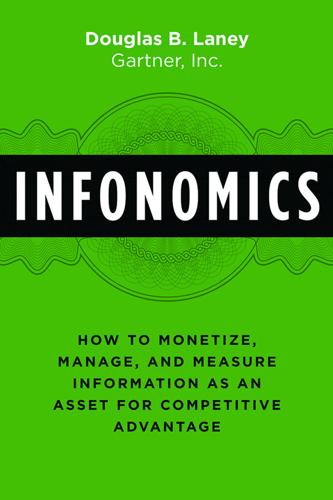
Infonomics: How to Monetize, Manage, and Measure Information as an Asset for Competitive Advantage
by
Douglas B. Laney
Published 4 Sep 2017
Clinical pathways are structured, multidisciplinary plans of care designed to support the implementation of clinical guidelines and protocols.31 As databases of electronic medical records (EMRs) are quickly replacing years of pen-and-paper-based diagnoses, lab results, surgical records, and notes from doctors, nurses, physical therapists, etc., this wealth of data is a fuel spawning additional innovations in health care—particularly mining it to develop new or improved clinical pathways. The imperative is there too. In the U.S., Medicare, Medicaid, and the Affordable Care Act (Obamacare) each incentivize health care providers for the quality of care, and disincentivize repeat visits by a patient for the same ailment. With this kind of innovating in mind, Mercy Hospitals, one of the top five health systems in the U.S., worked with advanced analytics provider Ayasdi to identify situations in which clinical variation could be narrowed, and narrowed toward protocols which provided better outcomes.
…
.%20FIDELITY%20&%20GUARANTY%20INSURANCE%20COMPANY. 11 http://caselaw.canada.globe24h.com/0/0/british-columbia/supreme-court-of-british-columbia/1995/08/30/seaboard-life-insurance-company-v-babich-1995–1335-bc-sc.shtml. 12 http://caselaw.findlaw.com/us-2nd-circuit/1470623.html. 13 http://openjurist.org/89/f3d/850/home-indemnity-company-v-hyplains-beef-lc. 14 www.smh.com.au/technology/technology-news/federal-court-rejects-application-for-telstra-to-supply-personal-metadata-20170120-gtvc85.html. Index 3 “V”s of big data 101n9 Abe’s Market 39 accessibility 249 accounting: accountants and information 227–9; cashing in on information 229; information 201–5; probable economic value 229–30 ACNielsen 12, 22 Acxiom 229 Adams, Paul 168 Advanced Drain Systems (ADS) 97 Affordable Care Act (Obamacare) 98 Albala, Mark 261 algorithm(s) 84, 88–9, 94, 96, 98, 137, 199, 230–1, 279, 286, 289–91 Amazon 36, 132, 211, 217n2 American Institute of Certified Public Accountants (AICPA) 21, 205–6 analytics: actionable decision-making 89–93; advanced 289–90; advanced analytics advantage 83–5; business intelligence implementation 82; descriptive 82–3; diagnostic 82–3; exploiting Big Data 86–9; Gartner analytic ascendency model 83; identifying monetizable insights 93–9; information management 99–100; information monetization 75–6; predictive 82–3; prescriptive 82–3; value 266 application program interfaces (APIs) 34, 73 applied asset management: governance 186–9; information strategy 177–81; information vision 174–7; infrastructure 196–8; metrics 182–6; people 189–92; process 193–6; roles for infosavvy organization 198–200 Aquatics Informatics 114 Archer Daniels Midland 8 Armstrong, Neil 1 Arthur Andersen 205, 217 artificial intelligence (AI) 85, 90, 115, 286, 289–90 Art of War, The (Sun Tzu) 144n4 asset, definitions 2–3, 9–11, 214–15 asset management: barriers to information 114–16; fiduciary responsibility 164; financial methods 163–5; intangibles 168–9; lessons from sustainability 138–43; see also applied asset management; physical asset management AULIVE 12 Australian Computer Society Data Taskforce 222 Australian Privacy Commissioner 233 Automated Teller Machines (ATMs) 43–4 Auto Trader 23 Ayasdi 14, 27n6, 42, 98 balance sheet assets 158–9; physical asset management 9, 116, 158–63, 176, 184, 188–9, 198, 235 Bardin, Noam 35 bartering: favorable terms and conditions 38–9; goods and services 37–8; relationships 38–9 Becker, Gary 128 Becker, Mark 30 Beechcraft Cessna 292 Beechwood House Publishing 255–6 Bekenstein Bounds 273 Bell Helicopter 292 Bespoke Data Organisation 225 Beyer, Mark 186 Big Data 10, 12, 26n2, 49n1, 59, 212; exploiting 85–9; health insurance company 107; information trend 287; processing 40–1; roadblocks to information monetization 287–8; term 86, 101n8; variety of information 88–9; velocity of information 85–6; volume of information 87 biodiversity 136 Bippert, Doug 84 Birchler, Urs 272 blockchain 291 Bloomberg 12, 211, 229 blunderfunding 244, 268n5 Boone, Ryan 40 Box, George 246 BrightPlanet 65 Brownstein, John 96 Brynjolfsson, Erik 272 Brzmialkiewics, Caryl 44 Buchanan, Stewart 107 Bugajski, Joe 281 business: asset 10; climate 136; information 48–9; introducing a new line of 33–4; models 24–6; performance 43–4 business intelligence (BI) 14, 77, 81, 198, 211, 292; analytics 82; beyond basic 81–6; innovation 97–9; see also analytics business-to-business (B2B) 15, 38 business-to-consumer (B2C) 15 business value of information (BVI) 253–4 Bütler, Monka 272 Buytendijk, Frank 34, 281 Caltex 63 Capability Maturity Model Integration (CMMI) 148 cash 14–16, 20–1, 28, 35, 37, 39, 42–4, 96, 128, 161, 165, 188, 209, 227, 229, 257, 260, 293 Casonato, Regina 132 Casper, Carsten 244 Center for Disease Control 65; Youth Risk Behavior Surveillance System (YRBSS) 89 chief data officer (CDO) 3, 9, 17, 25: analytics 106–7; balancing act of 288–9; concept of 190; emergence of 293; hiring 211; information ecosystem 138; information leader 56–6, 155; information management 154; leadership 112; role of 192, 199–200 chief financial officer (CFO) 3, 100, 105, 107, 165, 200, 213, 245, 250 chief executive officer (CEO) 15, 32, 34, 40, 57, 100, 112, 155, 168, 175, 190, 200 chief information officer (CIO) 3, 40, 42, 58–9, 81, 106, 112, 132, 134, 175–6, 190, 200 China 35, 64, 159, 224 Christiaens, Stan 106 Cicero Group 148, 265, 269n25 Citigroup13–14, 16 Clark, Christina 243 Coca-Cola 83–4, 88, 132 Cohen, Jack 91 Coles Supermarkets 192 Collibra 106, 163 commercial data 63 commercial general liability (CGL) 241–2 competitive differentiation 36–7 completeness 248, 252 Comprehensive Capital Analysis and Review (CCAR) 14 Connotate Software 62, 65 consistency 248 content management, contending approaches for 154–5 Corbin, Stacey 63 Cordner, Matt 292 costs, defraying information management and analytics 40–1 cost savings, monetization success 74 cost value of information (CVI) 256–7, 261–2, 274–5 cultural attitudes, information management 114 customer acquisition and retention 29–31 customer relationship management (CRM) 140 D&B 22, 57, 63–4, 229 DalleMule, Leandro 176, 184 dark data 32, 42, 62–3, 141; information asset 61–2; understanding 94–5 data as a service (DAAS) 181–2 database management system (DBMS) 134, 302 Data Driven Leaders Always Win (Zaidi) 234 data governance 188–9; see also governance, information Data Management Association International (DAMA) 148 data ownership 20; see also ownership data preparation 17, 73–4, 189; for monetization use 72–3 data quality: assessing 246–9; objective metrics 248; subjective metrics 249 Data Republic 63 data science 289–90 Datateam Business Media (DBM) 221 Davis, Lord Justice 221 DB2 database 115, 228 DBS Bank 43–4 decision making: actionable 85, 89–93; complexity, activity and change 89–90; governance, risk and compliance (GRC) 91–2; optimizing business processes 90–1; scenario planning 92–3 deinformationalization 36 Deming, Edward 243 derivative data 279 Desai, Samir 58 Deutsche Telekom 225 Dibble, Bill 94 differential data 278 digerati 210 digital detritus 42 digital industry, intellectual property of 288 diminishing marginal utility 276–8; law of 276 Direct Eats 39 direct information monetization 66–8 Disney World 83 distinct data 278 diversity, people 191–2 Dollar General 32, 36, 40 Dominick, Lauren 92 Drucker, Peter 243 DSCI 63 Dun & Bradstreet see D&B Duncan, Alan 160, 272 economic attribution, monetization success 74 economics: applying concepts to information 272–3; as dismal science 271; principles 271–2; see also infonomics economic value of information (EVI) 258–9, 266 economy 11, 147, 192, 205–6, 217, 242, 272 ecosystem: definition 132–3; entities 135–6; features 136; influences 137; management 137–8; processes 136–7; sustainability principles 138–43, 180; see also information ecosystem Ehlers, Brian 183 elasticity, information pricing and 275–6 Electronic Communications Privacy Act of 1986 224 endowment effect 279 enterprise architect 10 enterprise asset management (EAM): infrastructure 197–8; systems 162 enterprise content management (ECM) 154, 181 Enterprise Data Management (EDM) Council 148 enterprise information management (EIM): impediments to maturity 111–14; leadership issues 112; levels of maturity 109–11; maturity model 108–11, 174; metrics 182–4; vision 174–7 enterprise resource planning (ERP) 140 Equifax 12, 57, 63 Equinox Fitness Clubs 58 Evans, Nina 114 Everedge 168 existence 249 exogenous information 16, 165; see also external information Experian 57, 63, 213 Experience Matters 106, 114, 148, 181, 186 external information 11, 31, 36, 55, 60–1, 165, 195, 292 Facebook 11, 21–2, 31, 34, 64, 211–13, 218n10, 232 faint signals, identifying 95–6 feasibility checklist 69–70; economical 72; ethical 72–3; legal 72; manageable 71; marketable 71; practical 70–1; scalable 71; technological 71 Federal Aviation Administration (FAA) 46 fiduciary 164, 189, 234 Financial Accounting Standards Board (FASB) 21, 206 financial valuation models, information assets 251, 255–61 Fisher, Jennifer 260 Fisher, Tony 272 Fisher, William W., III 169 FleetRisk Advisors 92 Francis, James C., IV 224 fraud and risk, identifying and reducing 44–5 Freedom of Information Act (FOIA) 17, 45–6 Friedman, Milton 128–9 Friedman, Ted 247, 268n12 fundamental valuation models, information assets 251–5 Gaia hypothesis 144n5 Ganschow, Karen 54 Gartner: enterprise information management (EIM) maturity model 108–11, 297–302; financial valuation models 251, 255–6; fundamental valuation models 251–5; Hype Cycle 281, 284n7; information asset valuation models 250; information value models 262; Magic Quadrants 68 Geis, Alex 33 General Data Protection Regulations (GDPR) 240n24 generally accepted accounting principles (GAAP) 21, 116, 217, 245 generally accepted information principles 116–19, 120n13; assumptions 117; constraints 117–18; principles 118–19 Georgia Aquarium 29–30 geographic 18, 35, 96, 235 Gledhill, David 43 goods and services, bartering 37–8 Google 11, 21, 47, 76, 211, 213, 217n2 governance: applied asset management 188–9; challenges and remedies 187; data entry 187; governance, risk and compliance (GRC) 91–2, 152; information 188, 234; information management 186–9; information management challenges 299–300; proving benefits of information 264 government 9, 17, 22–3, 41, 45–8, 61, 64, 95–6, 105, 115, 193, 206, 223–5, 237, 276, 286 Grayson-Rizzuto, Kimberly 39 Grossman, Larry 46 Hadoop 41 Hamilton, Stuart 114 Hawthorne effect 243, 268n4 Hawthorne Works 243 Health and Human Services Department 44 HealthMap 95–6 HERE Life 38 Hershberger, John 111 Higgins, Mike 97 Hillard, Rob 148, 272 Hogan, Tom 107 Holloway, Todd 32 Horrisberger, Jim 83 House of Cards (TV series) 59 Hubbard, Douglas 260 Human Capital (Becker) 128 human capital management 165–8, 184 Hutton, James 144n7 Hype Cycle 281, 284n7 IBM 87, 91, 115, 148 IMDB 34 Indigenous Land Corporation 63 indirect information monetization 68–9 industry average 283 Infinity Property and Casualty 94 infodiversity 180 infonomics 272, 285–6; concept of 3; definition 9; future of 292–5; improving information yield 281–4; information pricing and elasticity 275–6; information-related trends 286–91; managing information 106; marginal utility of information 276–9; opportunity cost for information choices 279–80; production possibilities of information 280; supply and demand of information 274–5 Informatica 163 information: accountants and 227–30; accounting for 214–17; as asset 2, 205–7; asset realization 207–8; business models and profitability 24–6; characteristics of 18–26; control of 228–9, 233; data vs 25–6, 26n4; digitalization of 288; economic alternatives for 13–14; getting more than cash for 14–16; as liability 216; liquidity of 20–1; monetizing, managing and measuring 9–11; multimedia 2; opportunity cost for information 279–80; pricing elasticity 275–6; probable economic value of 229–30; real world evidence of economic value of 210–13; replicability 23; reusable nature of 19; as second language 143–4; stop giving it away 18; supply and demand of 274–5; taxing situation 21–2; thinking beyond 16–17; transferability 23–4; uncovering hidden treasures 17–18; value of 208–10; see also ownership Information Age 3, 95, 136, 149, 160, 216 informationalize 36 informationalized product 75 information as a second language (ISL) 143–4, 192 information asset management (IAM) 107, 176; information yield 281–4; unified approach to 169–70; vision 176–7; see also applied asset management information assets 59–66; commercial data 63; commercial general liability (CGL) 241; dark data 62–3; financial valuation models 249, 255–60; fundamental valuation models 251–6; inventory 60; measuring 242–6; new supply chain model for 128–31; operational data 61; privacy and security 291; public data 64; social media data 64–5; valuation models 249–60; web content 65–6 information curation 17 information ecosystem: classic ecosystem entities concepts 135; ecosystem entities 135; ecosystem features of 136; ecosystem influences 137; ecosystem management 137–8; ecosystem processes 136–7; lessons from sustainability 138–43; preparing for 131–8; recycle 142–3; reduce 140–1; refuse 139–40; remove 143; repurpose 141–2; reuse 141; role of information in 133–5 information keiretsus 132 information lifecycle: expense 267; process challenges 301–2 information management 105–8; barriers to asset management 114–16; challenges and principles 119; cultural attitudes about 114; future of infonomics 292; generally accepted information principles 116–19; governance challenges 299–300; impediments to maturity 111–14; information metrics challenges 299; infrastructure challenges 302; leadership 112; levels of information maturity 109–11; maturity model 108–11, 174; monetization success 74; monetization to 99–100; people-related challenges 300–1; priority control 113–14; process challenges 301–2; resources 113–14; strategy challenges 298; vision challenges 297–8 information measurement, future of infonomics 294–5 information owners 222; see also ownership information ownership 222, 226–8, 232–4 information performance gap 262 information product management 56–9 information property rights 303–5; rulings affirming 303–4; rulings denying 304–5; see also information ownership; ownership information security 244 information supply chain (ISC) 8, 119; activities 131; metrics for 126–7; model for information assets 128–31; preparing for information ecosystem 131–8; scenarios 126; SCOR (Supply Chain Operations Reference) model 124–5; see also information ecosystem Information Technology Infrastructure Library (ITIL) 151–2 information valuation models 263–7; benefits of information governance 264; expanded revenue 266; innovation and digitalization 265; monetization and analytics 265–6; prioritizing IAM investments 264; reducing information lifecycle expense 267 information vision gap 262 information yield 281–4; concept 281; curve 281 infosavvy 3, 11; chief data officer (CDO) 199–200; growing market valuations 245; investors prizing, companies 211–13; roles for organization 198–200 infrastructure 12, 40–1, 47, 108, 139, 150–1, 192, 196–8, 267, 286, 290–1, 299, 302; information 290–1; information management 196; information management challenges 302 innovation 3, 26, 31, 46, 76, 97–9, 107, 113, 161, 236, 246, 265, 287, 289, 298, 301 innovation and digitalization, value 265 Instagram 34 Institute of Electrical and Electronics Engineers (IEEE) 147 intangible assets 168–9 integrity 248 intellectual property (IP) 62, 116, 128, 130, 168, 176, 181, 230–1, 288 International Accounting Standards Board (IASB) 214 International Accounting Standards (IAS) 214–15, 217 International Astronomical Union 148 International Federation of Library Association and Institutions (IFLA) 157 International Financial Reporting Standards (IFRS) 214–15; criteria 219n19 International Organization for Standardization (ISO): ISO 8000 170n2; ISO 15489–1:2016 152, 170n8, 171n10; ISO 19770–1 149; ISO 19770–2 149; ISO 19770–3 150; ISO 19770–4 150; ISO 30300:2011 170n9; ISO 55001 158; ISO/IEC 20000 170n7; ISO/IEC 27001 147, 170n3; IT asset management (ITAM) 149–50; IT service management (ITSM) 150–1 intrinsic value of information (IVI) 251–2 Intuit’s TurboTax 36 inventory, information asset 60 investor awareness, monetization success 76 IT asset management (ITAM): International Organization for Standardization (ISO) standards 149–50 IT service management (ITSM) 150–1; information strategy 180–1 J.D.
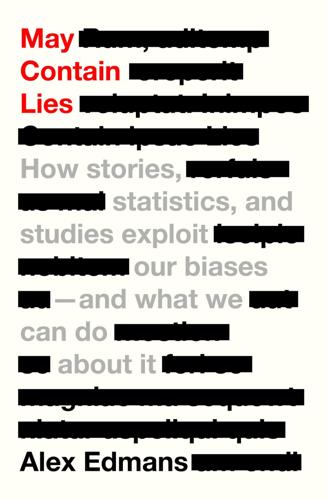
May Contain Lies: How Stories, Statistics, and Studies Exploit Our Biases—And What We Can Do About It
by
Alex Edmans
Published 13 May 2024
Seven Democratic Representatives proposed HR 3200, the America’s Affordable Health Choices Act. Among other things, it would require all citizens above poverty level to buy private insurance, with government subsidies for low-income households, thereby ensuring access to healthcare for all Americans. The bill later morphed into the Affordable Care Act, commonly known as Obamacare, which was signed into law the following March. Few could have anticipated the political storm that Section 1233 of HR 3200, which took up a mere ten of its 1,017 pages, would ignite. This section suggested reimbursing doctors for consultations to Medicare patients about end-of-life-care options and ‘living wills’ in which people set out how they’d like to be treated if they later became incapacitated.
…
An experimental study of the mechanisms of cultural cognition’, Law and Human Behavior 34, 501–16. 8 Kahan, Dan M. et al. (2015): ‘Geoengineering and climate change polarization: testing a two-channel model of science communication’, ANNALS of the American Academy of Political and Social Science 658, 192–222. 9 Ranehill, Eva et al. (2015): ‘Assessing the robustness of power posing: no effect on hormones and risk tolerance in a large sample of men and women’, Psychological Science 26, 652–6. 10 Nyhan, Brendan and Jason Reifler (2015): ‘The effect of fact-checking on elites: a field experiment on U.S. state legislators’, American Journal of Political Science 59, 628–40. 11 Henry, Emeric, Ekaterina Zhuravskaya and Sergei Guriev (2022): ‘Checking and sharing alt-facts’, American Economic Journal: Economic Policy 14, 55–86. 12 Pennycook, Gordon et al. (2020): ‘The implied truth effect: attaching warnings to a subset of fake news headlines increases perceived accuracy of headlines without warnings’, Management Science 66, 4944–57. Index academic journals ask an expert 223–4 assessing balance 224 evaluation 223 sources 223 see also articles academic studies 69 academics 225 Academy of Management 195 Academy of Music 61 Action Man 7 adjunct professors 227 adoption 93–4, 102 Aesop 276–7 Affordable Care Act ‘Obamacare’ (2010) 80–81 Age of Discovery 170 Aggarwal, Ishani 240 Allen, David 229 alternative hypotheses 23–5, 33, 34, 98–9 Amazon 161, 246, 251–2 American Economic Review 221 amygdala 29, 30, 34, 38, 232, 276 Andersen, Arthur 219–20 anonymous brainstorming 246, 258 Apple 90–92, 93, 94, 106, 107, 200 Apple Watch 18 Aptamil Profutura First Infant Milk 147 Arabesque 79 Aristotle 214–15 On the Art of Cutting Metals (Taylor) 194 Art of War, The (Sun Tzu) 11 articles accuracy of 231–2 peer-reviews of 217–18 sharing 230–31 see also academic journals Atkins diet 40–42, 46, 51 Atkins, Robert Coleman 39–42 Attenborough, Sir David 86 attention-grabbing numbers 154 authors bias 225–6 of books 228–9 credentials 226–8, 229–30, 234 autism 221 awareness 259–60 Bacon, Francis 25 Bad Blood (Carreyrou) 219 Balloun, Joe 34 Barber, Brad 97–8 Batty, David 145–6 Bay of Pigs invasion 235–7, 244 Bayesian inference 23–4, 216 Bayesian updating 216 BBC Verify 270 Beast Barracks 202–3 Beatles, The 66 belief polarization 32, 38 Bennedsen, Morten 182 Bertrand, Marianne 175–6 best-fit lines 136, 160 see also regression best practice 273–4 Bethlehem Steel 194–5 Bezos, Jeff 102 biased interpretation 33, 35, 37 biased search 33, 34–5, 36–7, 38 biases 9–10 of academics 225 awareness of 259–60 of organizations 225 sources of 225–6 systematic inspection of 225–6 see also confirmation bias; twin biases bilirubin 144 binarization 137–8 binary inputs 139–40, 141 binary thinking 42–5, 46–7, 55 black-and-white thinking 11, 39–56, 200 Atkins diet 40–42, 46, 51 binary thinking 42–5, 46–7, 55 categorical thinking 51–3, 56 caveman logic 43–5 dangers of 45–55 good and bad 42, 46–7, 51, 53, 54, 55–6, 76, 93, 140 granular world 45, 51–2, 56 hunter gatherers 43–4 marbled world 45, 53–5, 56 moderate world 45–50, 55 positive and negative effects of 48–9 rules 44 shades of grey 42, 45, 49 10,000-hours rule 59–61, 62–4, 64–6 Black Lives Matter 75 bladder effect 27–8 Blair, Tony 259 blinkered scepticism 27–8, 32, 37–8 blue-sky thinking 245, 257 BMC Pregnancy and Childbirth 143–4 boardroom diversity 74–5, 79 see also gender diversity Bobbitt, John Franklin 196 body language 221 Boer, Peter 249 Bolton, Patrick 252–3 books 228, 282 author credentials 228–9 best-selling 268–9 code of conduct 273–4 endorsements 274 evidence 67 fact-checking websites 270–71, 277, 282 health warning 272, 282 peer-reviews of 223 publication process 273–4 self-help genre 229 single big ideas 105 Bootle, Roger 213–14 Boston Globe 176 Bower, Joe 290–91 Bown, Stephen 171 brain, components of 92–3 see also amygdala brainstorming 245, 248, 257 breast milk, natural 144 breastfeeding 143 benefits 143, 147–8 bottle feeding and 143–4, 147, 148 challenges of 146 child IQ 143–4, 145–7 common causes 146–7, 148 formula and 143–5, 148 mother’s IQ 146–7 studies in 144, 145, 148 Breitbart News 231 Brexit 6, 213–15 British Medical Journal 145–6, 208, 218 Brock, Timothy 34 Built to Last (Collins and Porras) 110–12, 201, 224, 270 Bundy, McGeorge 235 Burke, Arleigh 239, 240 Busemeyer, Jerome 48 Bush, George W. 29–30 Business Insider 219 Cabell 218 cadets 202–3, 206 Cameron, David 160, 161 Capital Economics 213, 214 carbohydrates 41–2, 46–7, 51 Card, David 183–5 careers 108, 110 Carney, Dana 269 Carreyrou, John 219 Casino de Monte-Carlo 101 Castro, President Fidel 235, 244 categorical thinking 51–3, 56 causation 142–67, 166 breastfeeding studies 143–8 correlation and 148–54, 163–6, 173 instruments 179 randomized control trials (RCTs) 173, 174–6, 177 cause and effect 86, 105–6, 113, 114 caveman logic 43–5 CEOs bonuses and innovation 78–9 executive pay report 67–9 remuneration packages 78–9 certification 219–20 chess 34 Scholar’s Mate 32–3 Chicago Tribune 176 choices 279–80 cholesterol 51 CIA (Central Intelligence Agency) 235, 236, 237 civil discourse 275–80 Clement, Russell 52 climate change 53–4, 256, 265–6, 267–8 clock changes 127–8 Cochrane Reviews 222 codes of conduct 273–4 cognitive diversity 238–9, 240, 244 building groups 241 Cold War 235 Coleman, Robert see Atkins, Robert Coleman collective intelligence 240 Collins, Jim 110–12 colostrum 145 Columbus, Christopher 171 common causes 146–7, 148, 149, 152, 166 dividends 157 employee satisfaction 157 equality/inequality 160 instruments 178–9 momentum 157 regression 158–9 unobservable 162 common sense 124, 163, 187–9, 202, 207–8 confirmation bias 11, 17–38, 161, 199, 200 Bayesian inference 23–4 Belle Gibson story 17–20, 103–4 biased interpretation 33, 35, 37 biased search 33, 34–5, 36–7, 38 blinkered scepticism 27–8, 32, 37–8 Bruce Lisker story 21–3, 24 denial 25–8 effects of 30–32 Elizabeth Holmes story 20–21, 219 emotion-based advice 20 evidence 28–32 knowledge backfiring 35–7 motivated reasoning 27–8 naïve acceptance 25–7, 32, 37–8 origins of 28–30 truth 21–6 wrongful convictions 24–5 Conservative Climate Caucus 267 consider the opposite technique 260, 261 constructive criticism 253–5 continuous choices 52 continuous inputs 139–40, 141 control groups 111–13, 139 natural experiments 185–6 randomized control trials (RCTs) 174–5, 177 control samples 99, 102 controls 158 Cook, Scott 250 cooking the books 138–40 Cornell University Medical School 39 correlation 148, 166 causation and 148–54, 163–6, 173 common causes 170 inputs and outputs 162–3 reverse causation 167, 170 counterarguments 214–16 counterfactual 98 Covey, Stephen 216 COVID-19 75, 78, 150, 151 credentials, of authors 226–7, 234 exaggeration of 229–30 quality of institution 227–8 research qualifications 226–7 track record 227 Cribsheet: A Data-driven Guide to Better, More Relaxed Parenting, from Birth to Preschool (Oster) 147 critical thinking 261–5, 281 cross-sectional studies 31 Cruz, Ted 265, 266 Cuban Missile Crisis 235, 237–8, 239–40, 244–5 Cuddy, Amy 221, 269, 274 cultural cognition hypothesis 266, 281 Cultural Cognition Project (Yale Law School) 267 curiosity 263–4, 281 Curtis, John 267 Darwin, Charles 111 data 12, 13 absence of 78–9 circular 77–8 is evidence 168–91 common sense 187–9 instruments 177–83 natural experiments 185–6, 190 randomized control trials (RCTs) 173, 174–6, 189–90 unnatural experiments 186–7 is not evidence 119, 140, 148–9, 166 causation see causation cooking the books 135–40 data mining see data mining measurement of 75 partial picture 76 self-reported 76, 77 smarter thinking 286–8 data mining 140–41, 220 choosing inputs and outputs 119–25 common sense 124 cooking the books 138–40 dangers of 127, 131 defence against 129–30 definition 119 discretization or binarization 137–8 guarding against 123–5 hypothesis 129–30 measuring inputs and outputs 125–30 robustness 123 sample mining 131–5 DBS 254–5 Deepwater Horizon 25–8 default decisions 248 degrees, university 108–9 DeLosh, Edward 48 Delphi method 246, 248, 258 Democratic Party (US) 80 demographic diversity 238, 243, 244 denial 25–8 Denning, Steve 69, 70–71 Der, Geoff 145–6 descriptions 151, 152, 167 detailed opinions 251 devil’s advocates 254–7 difference-in-differences calculation 185 disclosure 218–19 discretization 137–8 discussants 253–5 disgust research 51–2 disputes 275–7 dissenting viewpoints 214–16, 255–6, 282 diversity 75, 135, 243 Best Company status 116–18 research on 117–19 see also boardroom diversity; cognitive diversity; demographic diversity; gender diversity; social diversity dividends 157 doctorates 227 dopamine 30 Dorchester Hotel 115–16 Dr Atkins’ Diet Revolution 40–41 Dreary, Ian 145–6 Duckworth, Angela 203–6, 207 EBITDA 74 Economist 50, 160 Ederer, Florian 60 Edison, Thomas 34 Edmans, Professor Alex 68 education priority of grades 197 school curriculum 196 scientific management 196–7 scripted curriculum 197 standardized tests 196 teachers’ initiative 198 Eichler, Joseph 90 Eisenhower, Dwight 235, 236, 239 Ellison, Larry 20, 102 emotion 93 employee satisfaction common causes 157 control groups 158 100 Best Companies to Work for list 156–7, 189 regression 158 endogenous inputs 149, 166–7 outcome of another process 150–51, 166 traits 149–50 voluntary choices 149 endogenous parts of instruments 178–9, 180, 182 endorsements 274–5, 281 endorsers 274–5, 282 energy sector 53–4 Engineers Without Borders 251 Enron 219–20 equality 159–61 Ericsson, K.
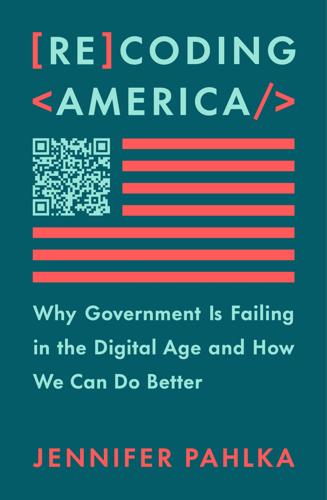
Recoding America: Why Government Is Failing in the Digital Age and How We Can Do Better
by
Jennifer Pahlka
Published 12 Jun 2023
See Stephen Cooper, “A Guide to UDP (User Datagram Protocol),” Comparitech, August 11, 2022, https://www. https://www.comparitech.com/net-admin/guide-udp-user-datagram-protocol/#Data_Security. 7. “Federal Enterprise Architecture Framework, Version 2,” https://obamawhitehouse.archives.gov/sites/default/files/omb/assets/egov_docs/fea_v2.pdf. 8. Charles Ornstein, “A Cheat Sheet for the Obamacare Hearings,” ProPublica, November 25, 2013, https://www.propublica.org/article/a-cheat-sheet-for-the-obamacare-hearings. 9. Weaver, “A Tale of Technical Policy.” CHAPTER 5: THE KODAK CURSE 1. “Computer Chaos: Billions Wasted Buying Federal Computer Systems,” Investigative Report of Senator William S. Cohen, October 12, 1994, Subcommittee on Oversight of Government Management, Senate Governmental Affairs Committee. 2.
…
Although terrified by the enormous task at hand, I asked my board for a leave of absence and warily accepted for a one-year term. I promptly relearned the lesson I had learned at Code for America: the problem was even bigger yet than I had realized. Three months into my new job, I watched the much-heralded launch of healthcare.gov, which would administer Obama’s signature policy initiative, the Affordable Care Act. The site immediately crashed. With millions to enroll and hundreds of thousands attempting to log on at any given moment, it managed on its first day to serve a total of eight people. While getting the site to work absorbed practically every waking moment for my boss and many of my colleagues, my job in DC took me farther afield.
…
But except for me and my few close colleagues, even the nerds at the CTO’s office were supposed to work on technology policy, not on digital delivery of government’s promises. Among other things, this meant that Todd had been kept at arm’s length during the development of healthcare.gov, the website that was to administer the health insurance exchanges mandated by the Affordable Care Act. Like most government software projects, development of the site had been contracted out, in this case through sixty separate contracts going to thirty-four different vendors.8 The lead company on the project was a firm called CGI Federal.9 It was known at the time mostly for enterprise resource planning software—a category of back-office software you don’t need to understand, other than to recognize that asking CGI to make a website that practically a third of the entire country would use made about as much sense as asking the military to build Instagram.

Dataclysm: Who We Are (When We Think No One's Looking)
by
Christian Rudder
Published 8 Sep 2014
subgroups on Twitter by messaging pattern example words characteristic speech percent of sample nigga, poppin, chillin shortened endings (e.g., -er => -a or -ing => -in) 14 tweetup, metrics, innovation tech buzzspeak 12 inspiring, webinar, affiliate, tips marketing self-help 11 etsy, adorable, hubby crafting lingo 5 pelosi, obamacare, beck, libs partisan talking points 4 bieber, pleasee, youu, <33 lengthened endings (repeated last letter) 2 anipals, pawesome, furever animal-based puns 1 kstew, robsessed, twilighters amalgamations/puns around the Twilight movies 1 It’s important to note that the study grouped users by their words alone, who they messaged, and what they wrote—these language clusters were not determined a priori.
…
People at the top and bottom of this list use the same framework to speak at cross-purposes: No one should … political bias of the person posting … die because they cannot afford health care … –0.87 more liberal … be frozen in carbonite because they couldn’t pay Jabba the Hutt … –0.37 … die because of zombies if they cannot afford a shotgun … –0.30 … have to worry about dying tomorrow, but cancer patients do … –0.02 … be without a beer because they cannot afford one … +0.22 … die because the government is involved with health care … +0.88 … die because Obamacare rations their health care … +0.96 … go broke because government taxes and spends … +0.97 more conservative In 1950, at the dawn of the age of television, the American Political Science Association actually called for more polarization in national politics—the parties had grown too close together, the electorate didn’t have clear choices.
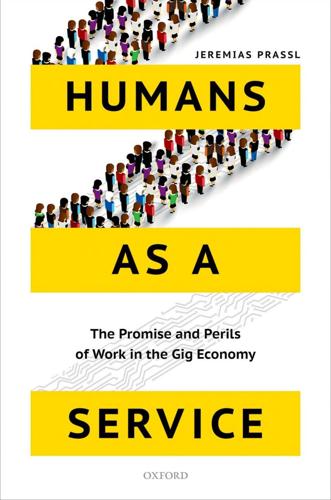
Humans as a Service: The Promise and Perils of Work in the Gig Economy
by
Jeremias Prassl
Published 7 May 2018
Mailin Aasmäe, ‘ETCS and Uber collaborate in seeking solutions for the devel- opment of the sharing economy’, Republic of Estonia Tax and Customs Board (9 October 2015), http://www.emta.ee/eng/etcb-and-uber-collaborate-seeking- solutions-development-sharing-economy, archived at https://perma.cc/47YA- Z49P; Jurate Titova, ‘Uber signs MoU with the City of Vilnius’, Uber Newsroom (2 November 2015), https://newsroom.uber.com/lithuania/uber-vilnius-memo- randum-with-the-city-of-vilnius/, archived at https://perma.cc/RV4R-HN7X 31. Ina Fried, ‘Gig economy companies like Uber are helping the Feds spread the word about Obamacare’, Recode (25 October 2016), http://www.recode. net/2016/10/25/13389860/gig-economy-uber-obamacare-burwell, archived at https://perma.cc/P6S8-JYDS 32. Work and Pensions Committee, Written Evidence: Self-employment and the Gig Economy (HC 847, 2016–17), Uber, Hermes and Deliveroo workers questioned on challenges of self-employment, http://www.parliament.uk/business/com- mittees/committees-a-z/commons-select/work-and-pensions-committee/ news-parliament-2015/self-employment-gig-economy-evidence-16–17/, archived at https://perma.cc/R7CX-GWCG; Sarah Butler, ‘Uber driver tells MPs: I work 90 hours but still need to claim benefits’, The Guardian (6 February 2017), http://www.theguardian.com/business/2017/feb/06/uber-driver-mps- select-committee-minimum-wage, archived at https://perma.cc/Z2D5-SCW3 33.
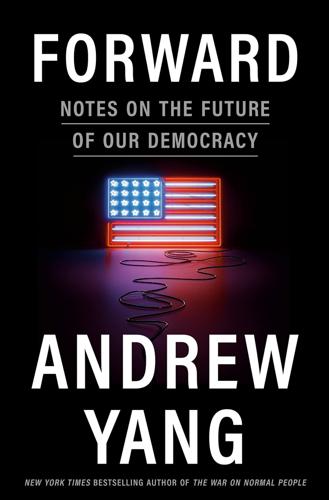
Forward: Notes on the Future of Our Democracy
by
Andrew Yang
Published 15 Nov 2021
Our bureaucracies are too often embarrassingly or tragically ineffective and inefficient, and generally no one is held accountable when they fail. * * * — THESE BLUNDERS CROSS party lines. What was President Obama’s signal achievement? Almost certainly the passage of the Affordable Care Act in 2010. In 2013, after years of buildup, HealthCare.gov was launched in order to implement the Affordable Care Act. You might remember the ad campaign in 2013 telling us about HealthCare.gov in the run-up to the website launch. An estimated $684 million was spent nationwide telling us to go to HealthCare.gov upon its launch on October 1, 2013. Unfortunately, the website had massive problems on its first day, going down within two hours of launch.
…
Prescription drug use American Psychological Association, “Mental Health Issues Increased Significantly in Young Adults over Last Decade,” ScienceDaily, March 15, 2019. Deaths of despair Steven H. Woolf and Heidi Schoomaker, “Life Expectancy and Mortality Rates in the United States, 1959–2017,” JAMA, Nov. 26, 2019. Health-care costs have Julio C. Ramos et al., “Medical Bankruptcy: Still Common Despite the Affordable Care Act,” American Journal of Public Health 109, no. 3 (March 2019): 431–33. Here are some of the indicators Katherine Gehl and Michael Porter, The Politics Industry: How Political Innovation Can Break Partisan Gridlock and Save Our Democracy (Boston: Harvard Business Review Press, 2020), 81. Economists estimate that 42 percent Jose Maria Barrero, Nicholas Bloom, and Steven J.
…
Out of the hundreds of thousands of visitors on October 1, 2013, a total of six users completed and submitted their applications and selected an insurance plan on the day of launch. The website became a national punch line. On The Daily Show, Jon Stewart joked to Kathleen Sebelius, the secretary of health and human services at the time, “I’m going to try and download every movie ever made, and you’re going to try to sign up for Obamacare, and we’ll see which happens first.” To fix HealthCare.gov and build up the website’s capacity, private contractors, including Mikey Dickerson from Google, headed to Washington, D.C. By December 1, the website could handle 35,000 concurrent users, still far below demand but a big improvement.
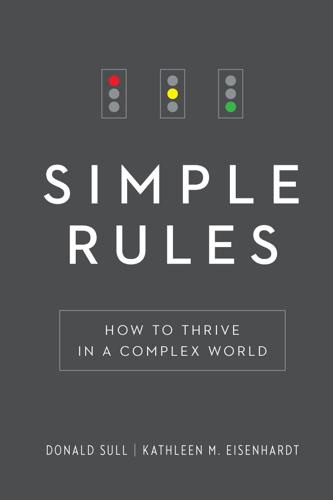
Simple Rules: How to Thrive in a Complex World
by
Donald Sull
and
Kathleen M. Eisenhardt
Published 20 Apr 2015
. [>] “You have to work: Andy Reinhardt, “Steve Jobs on Apple’s Resurgence: ‘Not a One-Man Show,’” Business Week Online, May 12, 1998, http://www.businessweek.com/bwdaily/dnflash/may1998/nf80512d.htm. [>] Much of the complexity: Scott A. Hodge, “Out with the Extenders, In with the New Obamacare Taxes,” Tax Foundation, Tax Policy Blog, December 31, 2013, http://taxfoundation.org/blog/out-extenders-new-obamacare-taxes. [>] A recent study found: Sophie Shive and Margaret Forster, “The Revolving Door for Financial Regulators” (working paper, University of Notre Dame, May 17, 2014), available at Social Science Research Network, http://ssrn.com/abstract=2348968 or http://dx.doi.org/10.2139/ssrn.2348968. [>] Andy Haldane is: John Cassidy, “The Hundred Most Influential People: Andy Haldane,” Time, April 23, 2014, http://time.com/70833/andy-haldane-2014-time-100/. [>] At a recent conference: Andrew G.

The Authoritarian Moment: How the Left Weaponized America's Institutions Against Dissent
by
Ben Shapiro
Published 26 Jul 2021
In fact, Obama’s personal story was part and parcel of this appeal: he could justifiably claim to unite the most contentious strains of America in his own background, being the child of a white mother and a black father, raised in Hawaii but ensconced in the hard-knock world of Chicago, born to a single mother and raised by grandparents but educated at Columbia and Harvard Law School. Obama was, as he himself stated, a “blank screen on which people of vastly different political stripes project their own views.”3 By 2012, however, Obama had cast aside those ambiguities. He was the architect of Obamacare, the creator of Cash for Clunkers and “shovel-ready jobs,” a critic of police departments across the country, a newfound expositor of same-sex marriage, a defense-cutting, tax-increasing, big-spending progressive. His progressivism had prompted an ardent response from the American Right: the Tea Party movement and Obama’s loss of Congress in 2010.
…
Obama even wrote that he deployed Vice President Joe Biden to Capitol Hill to negotiate with Senate Minority Leader Mitch McConnell (R-KY) instead of doing so directly because of his awareness that “negotiations with the vice president didn’t inflame the Republican base in quite the same way that any appearance of cooperation with (Black, Muslim socialist) Obama was bound to do.” Obama and Michelle both chalked up Tea Party opposition to Obamacare to racism as well.40 Given Obama’s personal rejection of opponents as benighted racists, it was no wonder that in 2012 he charted a different course than in 2008. Instead of running a campaign directed at a broad base of support, Obama sliced and diced the electorate, focusing in on his new, intersectional coalition, a demographically growing agglomeration of supposedly victimized groups in American life.

We Are Never Meeting in Real Life
by
Samantha Irby
Published 14 Apr 2017
Ugh, I was feeling bad about my shoes at this fancy “cocktail lounge” the other night with this bitch I don’t like that much who I know for a fact is greater-than-slash-equal to me in levels of poverty, and she made an elaborate show of heaving her giant designer purse onto the bar so she could dig through it to find the laundry money she was going to use to pay for her Sazerac. “That’s a really nice bag,” I said genuinely, taking a sip of my light bill. “Did you recently receive a settlement of some kind?” She laughed heartily and poured her Obamacare deductible down her throat in one long swallow. “Girl, nah, I bought this with money I should’ve spent on my car payment.” I clinked the ice in my checking account overdraft fees and nodded solemnly in agreement. A lot of us are living like this, right? Taking cabs and ordering takeout Thai on payday, then walking the three blocks to work from the train with a bologna sandwich in our bags a week or so later?
…
All this might be easier if I could punch something, but I’m not a punch-something person. I’m a “sit in the dark in the bathroom with a package of sharp cheddar cheese slices” person. Except I don’t even really eat cheese anymore. Plus I can’t fight. I’m soft, man. And I don’t have any answers. The world is scary and terrible and people out here don’t want Obamacare to fix a paper cut let alone offer some discounted mental health care, so what is left for us to do? Talk about it? Stop being afraid of it? Shut down those who want to dismiss us as fragile or crazy?! I went on Lexapro, but after three weeks I had stopped sleeping and fuck that. Maybe it doesn’t work that way for everyone, but I’d rather be angry and well rested than tired and happy.

Waco Rising: David Koresh, the FBI, and the Birth of America's Modern Militias
by
Kevin Cook
Published 30 Jan 2023
In her account, Hillary Clinton told deputy White House counsel Vincent Foster, Tripp’s boss, to order the tear gas operation. Why? Political infighter Roger Stone provided the answer. “Hillary Clinton gave the go order,” Stone declared. “She wanted Waco off the front pages so she could do Hillarycare,” a precursor of the medical-insurance program later known as Obamacare. Vince Foster’s death was a puzzle piece in the theories of Stone and Alex Jones. A forty-eight-year-old lawyer from Hope, Arkansas, who suffered from clinical depression and loathed his White House job, Foster had written a suicide note that read, “I was not meant for the job or the spotlight of public life in Washington.”
…
See Branch Davidians Mount Carmel compound Mount Zion MREs MTV Mulloney, Dan “My Sharona” (song) Nahum Napolitano, Janet National Enquirer National Firearms Act National Rifle Association (NRA) National Security Agency (NSA) NBC Nebuchadnezzar neo-Nazis Ness, Eliot Netflix Newbold College New Mexico Newport, Kenneth Newsweek New York Times Nichols, Terry Nightline (TV show) Nineteenth District Court of Texas Nobrega, Natalie Noesner, Gary Noriega, Manuel North Carolina Central College Nova Religio NPR nuclear war Numbers, book of Oath Keepers Obama, Barack Obamacare Oklahoma City bombing Oldham, Tony Old Testament O’Neill, John (John 5) Operation Desert Storm Operation Nifty Package Operation Trojan Horse Oprah Winfrey Show, The (TV show) Ottman, Gladys Pace, Alexa Pace, Charles Palestine, Texas, commune Palestine Liberation Organization Panama City raid of 1989 Paramount TV Pardo, Mary Parkland Hospital (Dallas) Passover Patriot movement Paul the Apostle (Saul of Tarsus) PBS Peeler, Jim Pence Mike People Peoples Temple.

#Republic: Divided Democracy in the Age of Social Media
by
Cass R. Sunstein
Published 7 Mar 2017
An especially interesting line of research explores how members of Congress are using hashtags, often framing issues in their preferred ways and promoting echo chambers that serve their interests.29 A central finding is that while Democrats and Republicans discuss overlapping issues, they use notably different hashtags. Among Democrats, the most popular issues in the relevant period include health care (#ACA, for the Affordable Care Act), student loans (#DontDoubleMyRate), and employment (#JOBS). The Republicans’ top issues are not so different: employment (#4jobs), themselves (#tcot), and health care (#Obamacare). But the two parties do use radically different frames. The term #ACA, preferred by Democrats, has a positive or neutral valence about the Affordable Care Act, whereas #Obamacare and #Fullrepeal, favored by Republicans, are clearly meant to be negative. Like political activists, members of Congress can be seen as hashtag entrepreneurs.
…
For them, bad news for humanity and the planet is, in a sense, good news (because it is affirming), and good news for humanity and the planet is, in an important sense, taken as bad news. These findings help explain polarization on many issues, and the role of social media in increasing it. With respect to the Affordable Care Act, for example, people encounter good news, to the effect that it has helped millions of people obtain health insurance, and also bad news, to the effect that health care costs and insurance premiums continue to increase. For the act’s supporters, the good news will have far more impact than the bad; for the opponents, the opposite is true.
…
INDEX ABC, 152, 179, 181, 198 abortion, 66, 81, 90, 191–92, 208–9 accountability, 9, 24, 46, 50, 138–39, 262, 268n19 activists, 80, 82, 178, 234–35, 242 advertising: Facebook and, 4; freedom of speech and, 193, 198, 200–202, 205–6; improving, 224, 229–30; Internet and, 28; Pandora and, 33; polarization and, 63; public forums and, 34; radio and, 28; republicanism and, 257–58; spreading information and, 146, 152–53; television and, 28; V-chip and, 219 Affordable Care Act (ACA), 81, 129 African Americans, 59, 66, 70, 79–80, 100, 109, 135, 154, 163, 259 AIDS, 110 algorithms, 3, 15, 21–22, 28–29, 32, 122–24, 257, 265n2 Alien and Sedition Acts, 203 All Lives Matter movement, 59, 80–82, 259 Al-Qaeda, 236, 238–39, 242, 247 Amazon, 22, 31–33, 150, 188, 222, 229 American Civil War, 51, 211 American Prospect magazine, 184 Anderson, Chris, 149–50 AOL, 171 Apple, 246 Arab Spring, 38–39, 138, 162 architecture of control, 1–2, 4, 6 architecture of serendipity, 5 Aristotle, 46 Arpanet, 182–83 artificial intelligence (AI), 3, 5, 21 AT&T, 183–84 Attention and Effort (Kahneman), 18 Auletta, Ken, 31 authoritarianism, x, 11, 38, 73, 98, 108, 160, 165, 254 automobiles, 8, 26, 186, 267n2 backfiring corrections, 93–97, 111 balkanization, 66, 70, 73, 89, 111, 259 Barlow, John Perry, 178 baselines, 23–24 Beatles, 104 behavior: architecture of serendipity and, 5; behavioral science and, 17–18, 59, 103, 160; browsing habits and, 5, 21–22, 116, 124; Carnegie and, 160; citizens and, 160–62, 167–68; consumers and, 26; cybercascades and, 98–99, 103, 109, 114–18, 123–24, 130; emotion and, 16–17, 82, 96–97, 242; Facebook and, 16; general-interest intermediaries and, 17–18 (see also general-interest intermediaries); group, 5; legal issues and, 220–21; manipulation and, 17, 28–29, 95, 164; mass media and, 19; minimization of effort and, 18; monopolistic, 28–29, 195; online, 22, 65, 83, 98, 116–17, 130, 234–35; polarization and, 59, 61, 65–66, 83; recruitment tactics and, 9, 63, 68, 192, 212, 234, 236, 239–43, 245, 248–50, 255; regulation and, 187, 195; republicanism and, 257, 263; social media and, 22, 65, 83, 98, 116–17, 130, 234–35; special-interest intermediaries and, 20; terrorism and, 234–35 Benkler, Yochai, 153–55 Bergen, Peter, 283n22 Berger, J.
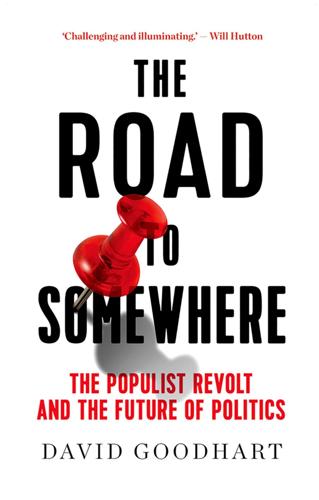
The Road to Somewhere: The Populist Revolt and the Future of Politics
by
David Goodhart
Published 7 Jan 2017
Those who voted leave earning less than £20,000 were only 10 points ahead of those voting leave who earn over £60,000 while nearly 50 points separated those with no qualifications and those with higher degrees: Matthew Goodwin and Oliver Heath, ‘Brexit vote explained; poverty, low skills and lack of opportunities’, Joseph Rowntree Foundation, 31 August 2016, https://www.jrf.org.uk/report/brexit-vote-explained-poverty-low-skills-and-lack-opportunities 4.Dame Louise Casey, ‘The Casey Review: A Review into Opportunity and Integration’, December 2016, https://www.gov.uk/government/uploads/system/uploads/attachment_data/file/575973/The_Casey_Review_Report.pdf 5.See for example Marisa Abrajano and Zoltan Hajnal, White Backlash: Immigration, Race and American Politics, Princeton, NJ: Princeton University Press, 2015; also Alberto Alesina and Edward Glaeser, Fighting Poverty in the US and Europe: A World of Difference, Oxford: Oxford University Press, 2004. 6.Gillian Tett, ‘Did Obamacare Help Trump?’, Financial Times, 2 December 2016. See also http://www.theatlantic.com/politics/archive/2015/03/support-for-the-affordable-care-act-breaks-down-along-racial-lines/431916/?utm_source=eb 7.Some 77 per cent wanted immigration reduced either ‘a little’ or ‘a lot’ in 2013 polling. ‘Immigration: A nation divided?’, British Social Attitudes Survey 31, 2014, http://bsa.natcen.ac.uk/media/38190/bsa31_immigration.pdf 8.British Socal Attitudes survey (henceforth BSA), 2013.
…
Ethnic differences too can be, and are, absorbed into the national ‘we’ but it is not always a swift or easy process and liberal societies are reluctant to force the pace. The evidence suggests that ethnically heterogeneous societies show lower levels of support for redistribution and thus in the longer run have weaker welfare states.5 This is now emerging in Europe having long been evident in the US. (Trump’s furious opposition to Obamacare, perceived as obliging the mainly white suburbs and small towns to subsidise the mainly non-white inner cities through their insurance premiums, is said to be another reason for his victory.)6 And what if the Anywhere vs Somewhere divide is itself contributing to the feeling that we are no longer a single society?
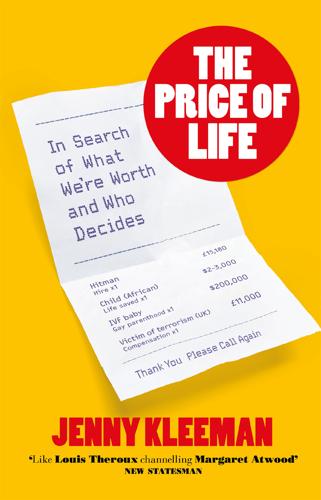
The Price of Life: In Search of What We're Worth and Who Decides
by
Jenny Kleeman
Published 13 Mar 2024
letter=q $77,000 in Taiwan McDougall, Jean A.; Furnback, Wesley E., Wang, Bruce C. M.; and Mahlich, Jörg, ‘Understanding the global measurement of willingness to pay in health’, National Library of Medicine (2020). https://www.ncbi.nlm.nih.gov/pmc/articles/PMC7048225/ Obamacare ‘Public Law 111–148: The Patient Protection and Affordable Care Act’, 111th Congress (23 March 2010). https://www.congress.gov/111/plaws/publ148/PLAW-111publ148.pdf $50,000 to $200,000 ‘2020‒2023 Value Assessment Frame-work’, Institute for Clinical and Economic Review (31 January 2020). https://icer.org/wp-content/uploads/2020/10/ICER_2020_2023_VAF_102220.pdf ‘One way or another Whipple, Tom, ‘Lifesaving drug Spinraza, rejected for NHS, wins $3m prize’, The Times (18 October 2018). https://www.thetimes.co.uk/article/lifesaving-drug-spinraza-rejected-for-nhs-wins-3m-prize-qlflw5h6t February 2022 ‘NHS to roll out life-saving gene therapy for rare disease affecting babies’, NHS England (4 February 2022). https://www.england.nhs.uk/2022/02/nhs-to-roll-out-life-saving-gene-therapy-for-rare-disease-affecting-babies/ European regulator ‘Orchard Therapeutics Receives EC Approval for Libmeldy™ for the Treatment of Early-Onset Metachromatic Leukodystrophy (MLD)’, Orchard Therapeutics. https://ir.orchard-tx.com/news-releases/news-release-details/orchard-therapeutics-receives-ec-approval-libmeldytm-treatment Over 3,000 babies a year ‘Abortion statistics, England and Wales: 2020’, Department of Health and Social Care (2020). https://www.gov.uk/government/statistics/abortion-statistics-for-england-and-wales-2020/abortion-statistics-england-and-wales-2020#key-points-in-2020 £8,000 ‘NHS deal on spinal muscular atrophy at home treatment’, NHS England (19 November 2021). https://www.england.nhs.uk/2021/11/nhs-deal-on-spinal-muscular-atrophy-at-home-treatment/ Novartis gives away ‘When a lottery “wins” sick babies life-saving drugs’, BBC News, 30 January 2020. https://www.bbc.co.uk/news/world-us-canada-51181840 ‘real-life hunger games’ Jani-Friend, Isabelle, ‘Zolgensma Lottery: A Real Life Hunger Games’, Just Treatment (3 February 2020). https://justtreatment.org/news/2020/1/29/zolgensma-lottery-a-real-life-hunger-games Chapter 9 16,975 people ‘Number of COVID-19 patients in hospital’, Our World in Data. https://ourworldindata.org/grapher/current-covid-patients-hospital?
…
Using QALYs means accepting that healthcare will be rationed, but you might get a bigger portion per person depending on where you are. This is politically toxic in the USA, where ‘rationing’ in healthcare has become a dirty word. America has resisted using QALYs to dictate willingness to pay for healthcare; Barack Obama banned their use in cost-effectiveness analyses in the Medicare programme (also known as Obamacare) on the grounds that an arbitrary value applied to diseases across the board would discourage innovation into drugs for rare diseases. But even if QALYs are not formally used, there is a limit to the amount insures are prepared to pay for a treatment, which, of course, means there’s a price of life calculation.

Lonely Planet's Best of USA
by
Lonely Planet
Healthcare for All The ruling on same-sex marriages came just days after another important ruling. This one related to the Affordable Care Act (ACA), President Obama’s program to extend healthcare through subsidies to millions of uninsured Americans. The court upheld key provisions of the law (the second time the Supreme Court had ruled on Obamacare), though the future of the ACA remains far from certain. Since the law’s implementation the House and Senate had tried (unsuccessfully) to repeal Obamacare more than 50 times. Despite congressional obstructionism, the program has been a success, allowing over 16 million uninsured Americans to obtain coverage.
…
Although stymied by congressional obstructionists, Obama had many notable successes during his two terms. He helped open relations with Cuba, oversaw the raid that brought down Osama bin Laden and passed a significant stimulus program that helped create jobs and kept the US out of a major economic meltdown. Perhaps most importantly, he oversaw the passage of the Affordable Care Act, which brought healthcare to millions of previously uninsured Americans. 8000 BC Widespread extinction of Ice Age mammals. Indigenous peoples hunt smaller game and start gathering native plants. 7000 BC–100 AD During the ‘Archaic period,’ the agricultural ‘three sisters’ (corn, beans, squash) and permanent settlements become established. 1492 Italian explorer Christopher Columbus ‘discovers’ America, eventually making three voyages throughout the Caribbean. 1607 Jamestown is founded, though life there is grim: 80 of 108 settlers die during the first year. 1620 The Mayflower lands at Plymouth with 102 English Pilgrims.
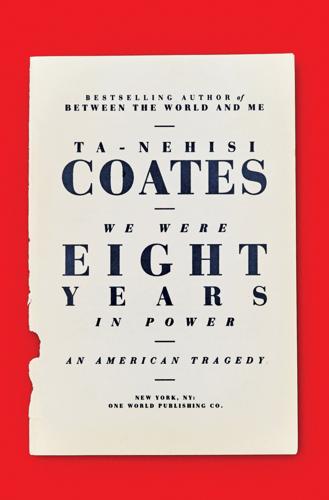
We Were Eight Years in Power: An American Tragedy
by
Ta-Nehisi Coates
Published 2 Oct 2017
Aid to Families with Dependent Children was originally written largely to exclude blacks—yet by the 1990s it was perceived as a giveaway to blacks. The Affordable Care Act makes no mention of race, but this did not keep Rush Limbaugh from denouncing it as reparations. Moreover, the act’s expansion of Medicaid was effectively made optional, meaning that many poor blacks in the former Confederate states do not benefit from it. The Affordable Care Act, like Social Security, will eventually expand its reach to those left out; in the meantime, black people will be injured. “All that it would take to sink a new WPA program would be some skillfully packaged footage of black men leaning on shovels smoking cigarettes,” the sociologist Douglas S.
…
The results of this negative investment are clear—African Americans rank at the bottom of nearly every major socioeconomic measure in the country. Obama’s formula for closing this chasm between black and white America, like that of many progressive politicians today, proceeded from policy designed for all of America. Blacks disproportionately benefit from this effort, since they are disproportionately in need. The Affordable Care Act, which cut the uninsured rate in the black community by at least a third, was Obama’s most prominent example. Its full benefit has yet to be felt by African Americans, because several states in the South have declined to expand Medicaid. But when the president and I were meeting, the ACA’s advocates believed that pressure on state budgets would force expansion, and there was evidence to support this: Louisiana had expanded Medicaid earlier in 2016, and advocates were gearing up for wars to be waged in Georgia and Virginia.
…
He understands the emotional power of protest, the need to vent before authority—but that kind of approach does not come naturally to him. Regarding reparations, he said, “Sometimes I wonder how much of these debates have to do with the desire, the legitimate desire, for that history to be recognized. Because there is a psychic power to the recognition that is not satisfied with a universal program; it’s not satisfied by the Affordable Care Act, or an expansion of Pell Grants, or an expansion of the earned-income tax credit.” These kinds of programs, effective and disproportionately beneficial to black people though they may be, don’t “speak to the hurt, and the sense of injustice, and the self-doubt that arises out of the fact that [African Americans] are behind now, and it makes us sometimes feel as if there must be something wrong with us—unless you’re able to see the history and say, ‘It’s amazing we got this far given what we went through.’
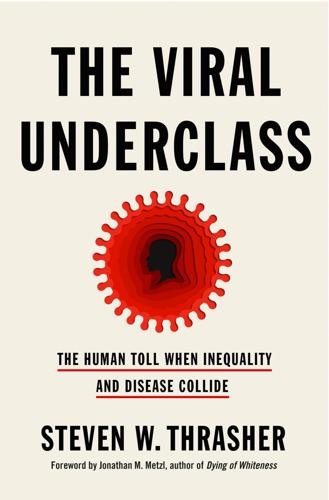
The Viral Underclass: The Human Toll When Inequality and Disease Collide
by
Steven W. Thrasher
Published 1 Aug 2022
For example, in the United States, when a worker loses their job (and with it, their health insurance), they are offered the “choice” of buying into their former employer’s insurance plan via the 1985 Consolidated Omnibus Budget Reconciliation Act (more often known by its sinister acronym, COBRA). Since 2011, they could also buy into a plan under the Affordable Care Act (“Obamacare”), where the onus is on the unemployed worker to make the right choice in a market exchange. But if the premiums for a family are hundreds or even thousands of dollars a month to buy into COBRA or Obamacare, how much “choice” does a newly unemployed worker actually have? The last scene of Parasite helps explain why many members of the middle and underclass in societies around the globe reacted to the COVID-19 pandemic with far less fury at oligarchs than they might have.
…
Sean once told me one of the main reasons that HIV criminalization concerned him was because it meant that the “government was creating a different law based on an immutable characteristic,” which relegated people living with HIV to second-class citizenship. On paper, U.S. laws do not generally discriminate explicitly against people for things they cannot change about their bodies, like race. But people living with HIV, including children born with the virus, are permanently consigned to explicit legal discrimination. And prior to when the Affordable Care Act banned the practice, laws governing health insurance allowed people with many preexisting medical conditions to be discriminated against by being denied coverage. Consider how the Missouri AIDS law allowed prosecutions for actions, according to the HIV Center on Law and Policy, “posing no or negligible risk of HIV transmission, such as spitting and biting” as felonies, with up to fifteen years in prison.
…
It transforms how people experience us, relate to us, and, most important, remember us. We are no longer remembered as vibrant and engaged but as feeble, ineffectual, even pathetic.” For this, Emanuel wanted to be dead by seventy-five. Emanuel is no fringe crank; he is a professor at the University of Pennsylvania’s medical school and an architect of President Obama’s Affordable Care Act. And despite this clearly ableist stance—and even though he reaffirmed it in 2019—Emanuel was appointed to then-President-elect Joe Biden’s COVID-19 transition task force in 2020. Similarly to how racism privileges whiteness and punishes people of color, ableism privileges able-bodied people and punishes people who are disabled in law, culture, and the built environment, among other arenas.

Green Tyranny: Exposing the Totalitarian Roots of the Climate Industrial Complex
by
Rupert Darwall
Published 2 Oct 2017
Barack Obama1 This book is about freedom. It is about its loss as a result of policies designed to slow down what is presumed to be man-made global warming. Avoiding planetary catastrophe gives a president and the executive branch a higher dispensation than that granted by the Constitution. Obamacare was implemented under the Affordable Care Act. Implementation of the Clean Power Plan was by administrative fiat and the Senate bypassed when the United States ratified the 2015 Paris Agreement: America’s eighteenth-century Constitution is not going to be allowed to impede a project in which society is to be radically transformed through the agency of the state.
…
For the sake of our kids and the health and safety of all Americans, that has to change, Barack Obama, August 20152 On August 2, 2015, President Obama announced the finalized Clean Power Plan rule. It was worth the wait. According to that morning’s New York Times, it would be tougher than earlier versions. The President had come to see the plan in terms similar to the Affordable Care Act in being central to his legacy and had moved to strengthen the rule. Earlier versions would have allowed states to lower emissions by transitioning from coal to gas. The final rule would push electric utilities to bring forward investments in renewables and set off a wind and solar boom, raising wind and solar’s share of generating capacity from 22 to 28 percent, the report said.3 The projected share of renewable energy would put the United States where Germany had been four years earlier, in 2011.* Germany’s renewable energy disaster wasn’t mentioned when the President launched the Clean Power Plan.
…
Please use the search function of your e-Reading device to locate the terms listed.” 1968ers, The 1Sky 21st Century NGO, The (2003) 350.org ABC Nightline Nightly News Acheson-Lilienthal Report acid rain media coverage of research funding reports on role of power plant emissions in Adenauer, Konrad Adobe Systems Incorporated Adorno, Theodor F-scale Advisory Council on Global Change (WGBU) World in Transition: A Social Contract for Sustainability (2011) Advisory Group on Greenhouse Gases (AGGG) Affordable Care Act AFL-CIO Agricultural College of Uppsala Air France Algeria Algiers Allianz Insurance Group Allensbach Institute Alternative for Germany (AfD) Altius Associates Altmaier, Peter Amazon.com AMBIO American Association for the Advancement of Science American Bird Conservancy American Cancer Society American Enterprise Institute American Geophysical Union American Jewish Council Studies in Prejudice (1950) American Journal of Sociology American Lung Association (ALA) formation of (1892) American Meteorological Society American University American Wind Energy Association Amery, Carl Nature as Politics (1976) Amin, Idi Amnesty International Andropov, Yuri Antholis, William Anti-Nuclear Contact Book (1977) Apple, Inc.

Poverty for Profit
by
Anne Kim
Medicare and Medicaid are the nation’s largest health insurance providers and among the largest in the world.12 In 2021, the programs insured 135 million low-income, elderly, or disabled Americans—or about 40 percent of the U.S. population.13 Medicaid pays for nearly half of all births, as well as most of the long-term care services provided to seniors and Americans with disabilities.14 (Roughly 12.2 million elderly and disabled Americans are covered by both programs—so-called dual eligibles.)15 The share of seniors uninsured in 2021 was a scant 1.2 percent, thanks to Medicare, while just 5 percent of children were uninsured, thanks to Medicaid.16 The Medicaid expansion included in the Affordable Care Act of 2010 (“Obamacare”) saved an estimated 19,200 lives from 2014 to 2017, according to one landmark study, and reduced annual mortality rates for older adults by as much as 64 percent.17 The immensity of the programs also means oceans of spending—and with it vast potential for both profit and profiteering.
…
“FACT SHEET: The Inflation Reduction Act Supports Workers and Families,” The White House, press release, August 16, 2022, https://www.whitehouse.gov/briefing-room/statements-releases/2022/08/19/fact-sheet-the-inflation-reduction-act-supports-workers-and-families/. Index Aarrow Bail Bonds (Richmond, Virginia), 155–56, 299n14 Access Securepak, 178, 180, 310n176 Ace Cash Express, 1, 133 Adams and Associates, Inc., 92, 98 Affordable Care Act of 2010 (“Obamacare”), 103 Aid to Families with Dependent Children (AFDC), 17–18, 35, 59–60 Alabama: Job Corps centers, 97; LIHTC tax credits allocated to, 202 Alert, Inc., 163–64, 166 Alexander, Shana, 139–40 All Smiles, 116 Alternate Perspectives Inc. (API), 96 American Bail Coalition, 159, 162–63 American Dental Association (ADA), 107, 111; Health Policy Institute (HPI), 108, 109 American Dental Education Association, 108 American Job Centers (AJCs), 64, 68, 73.

The Unwinding: An Inner History of the New America
by
George Packer
Published 4 Mar 2014
They were people like her—not country club Republicans, just people who felt something was wrong. And she had brought them together. That was the beginning of Karen Jaroch’s life in politics. Summer brought Obamacare and a nationwide rebellion. On August 6, Tampa’s Democratic congresswoman, Kathy Castor, held a town hall meeting in a room that was far too small for the fifteen hundred people trying to get in. Things descended into chaos when members of the 9/12 Project, enraged by Castor, enraged by Obamacare, enraged that the doors to the jammed room had been shut on hundreds of protesters, started shouting, “You work for us! You work for us! Tyranny! Tyranny!”
…
If he could have grown up at any time it would have been in the fifties, which was the last great time in America. He hated to say it but it was true. Dean tried to do anything he could for Matt, but after Matt went five months without being able to pay his rent, Dean had to ask him to move out. The Andy Griffith Show was still popular in the region (even after Andy made an ad for Obamacare), with reruns every afternoon, because the original for Mayberry RFD was the town of Mount Airy, up at the Virginia border—now just another hard-hit textile town trying its best keep up a quaint appearance on Main Street for the sake of the tourists, shop windows displaying posters and photos and memorabilia with those goofy, reassuring, all-white faces from the show.
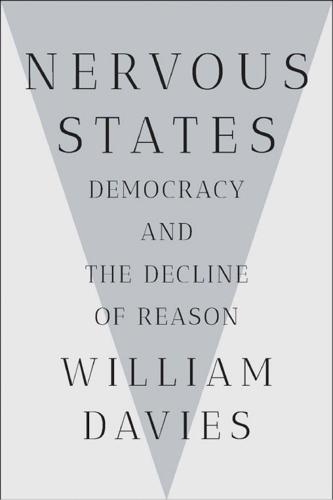
Nervous States: Democracy and the Decline of Reason
by
William Davies
Published 26 Feb 2019
They have been superseded and discarded, and really have no reason to persist as they are. In the United States, attacks on socialized health insurance have obvious implications for the mortality rate among poor Americans. One estimate in 2017 suggested that, if the Republican Party succeeded in repealing “Obamacare,” an additional 208,500 people would die within a decade.25 The question arises whether libertarians necessarily view this as a bad thing—do they consider those lives worth living? Or are they satisfied with a sort of market-based eugenics where competition determines biological success and failure?
…
Kennedy International Airport, New York, x, xiii, 41 Johns Hopkins University, 176 Jones, Alexander, 131 Kant, Immanuel, 128, 130 Kemelmacher-Shlizerman, Ira, 188 Kennedy Jr., Robert, 23 Kepler, Johannes, 35 Keynes, John Maynard, 165 King Jr., Martin Luther, 21, 224 knowledge economy, 84, 85, 88, 151–2, 217 known knowns, 132, 138 Koch, Charles and David, 154, 164, 174 Korean War (1950–53), 178 Kraepelin, Emil, 139 Kurzweil, Ray, 183–4 Labour Party, 5, 6, 65, 80, 81, 221 Lagarde, Christine, 64 Le Bon, Gustave, 8–12, 13, 15, 16, 20, 24, 25, 38 Le Pen, Marine, 27, 79, 87, 92, 101–2 Leadbeater, Charles, 84 Leeds, West Yorkshire, 85 Leicester, Leicestershire, 85 Leviathan (Hobbes), 34, 39, 45 liberal elites, 20, 58, 88, 89, 161 libertarianism, 15, 151, 154, 158, 164, 173, 196, 209, 226 Liberty Fund, 158 Libya, 143 lie-detection technology, 136 life expectancy, 62, 68–71, 72, 92, 100–101, 115, 224 Lindemann, Frederick Alexander, 1st Viscount Cherwell, 138 Lloyds Bank, 29 London, England bills of mortality, 68–71, 75, 79–80, 81, 89, 127 Blitz (1940–41), 119, 143, 180 EU referendum (2016), 85 Great Fire (1666), 67 Grenfell Tower fire (2017), 10 and gross domestic product (GDP), 77, 78 housing crisis, 84 insurance sector, 59 knowledge economy, 84 life expectancy, 100 newspapers, early, 48 Oxford Circus terror scare (2017), ix–x, xiii, 41 plagues, 67–71, 75, 79–80, 81, 89, 127 Unite for Europe march (2017), 23 London School of Economics (LSE), 160 loss aversion, 145 Louis XIV, King of France, 73, 127 Louisiana, United States, 151, 221 Ludwig von Mises Institute, 154 MacLean, Nancy, 158 Macron, Emmanuel, 33 mainstream media, 197 “Make America Great Again,” 76, 145 Manchester, England, 85 Mann, Geoff, 214 maps, 182 March For Our Lives (2018), 21 March for Science (2017), 23–5, 27, 28, 210, 211 marketing, 14, 139–41, 143, 148, 169 Mars, 175, 226 Marxism, 163 Massachusetts Institute of Technology (MIT), 179 Mayer, Jane, 158 McCarthy, Joseph, 137 McGill Pain Questionnaire, 104 McKibben, William “Bill,” 213 Megaface, 188–9 memes, 15, 194 Menger, Carl, 154 mental illness, 103, 107–17, 139 mercenaries, 126 Mercer, Robert, 174, 175 Mexico, 145 Million-Man March (1995), 4 mind-reading technology, 136 see also telepathy Mirowski, Philip, 158 von Mises, Ludwig, 154–63, 166, 172, 173 Missing Migrants Project, 225 mobilization, 5, 7, 126–31 and Corbyn, 81 and elections, 81, 124 and experts, 27–8 and Internet, 15 and Le Bon’s crowd psychology, 11, 12, 16, 20 and loss, 145 and Napoleonic Wars, xv, 127–30, 141, 144 and Occupy movement, 5 and populism, 16, 22, 60 and violence, opposition to, 21 Moniteur Universel, Le, 142 monopoly on violence, 42 Mont Pelerin Society, 163, 164 moral emotion, 21 morphine, 105 multiculturalism, 84 Murs, Oliver “Olly,” ix Musk, Elon, 175, 176, 178, 183, 226 Nanchang, Jiangxi, 13 Napoleonic Wars (1803–15), 126–30 chappe system, 129, 182 and conscription, 87, 126–7, 129 and disruption, 170–71, 173, 174, 175, 226 and great leader ideal, 146–8 and intelligence, 134 and mobilization, xv, 126–30, 141, 144 and nationalism, 87, 128, 129, 144, 183, 211 and propaganda, 142 Russia, invasion of (1812), 128, 133 Spain, invasion of (1808), 128 National Aeronautics and Space Administration (NASA), 23, 175 National Audit Office (NAO), 29–30 national citizenship, 71 National Defense Research Committee, 180 National Health Service (NHS), 30, 93 National Park Service, 4 National Security Agency (NSA), 152 national sovereignty, 34, 53 nationalism, 87, 141, 210–12 and conservatism, 144 and disempowerment, 118–19 and elites, 22–3, 60–61, 145 ethnic, 15 and health, 92, 211–12, 224 and imagined communities, 87 and inequality, 78 and loss, 145 and markets, 167 and promises, 221 and resentment, 145, 197, 198 and war, 7, 20–21, 118–19, 143–6, 210–11 nativism, 61 natural philosophy, 35–6 nature, 86 see also environment Nazi Germany (1933–45), 137, 138, 154 Netherlands, 48, 56, 129 Neurable, 176 neural networking, 216 Neuralink, 176 neurasthenia, 139 Neurath, Otto, 153–4, 157, 160 neurochemistry, 108, 111, 112 neuroimaging, 176–8, 181 Nevada, United States, 194 new atheism, 209 New Orleans, Louisiana, 151 New Right, 164 New York, United States and climate change, 205 and gross domestic product (GDP), 78 housing crisis, 84 JFK Airport terror scare (2016), x, xiii, 41 knowledge economy, 84 September 11 attacks (2001), 17, 18 New York Times, 3, 27, 85 newspapers, 48, 71 Newton, Isaac, 35 Nietzsche, Friedrich, 217 Nixon, Robert, 206 no-platforming, 22, 208 Nobel Prize, 158–9 non-combatants, 43, 143, 204 non-violence, 224 North Atlantic Treaty Organization (NATO), 123, 145, 214 North Carolina, United States, 84 Northern Ireland, 43, 85 Northern League, 61 Northern Rock, 29 Norwich, Norfolk, 85 nostalgia, xiv, 143, 145, 210, 223 “Not in my name,” 27 nuclear weapons, 132, 135, 137, 180, 183, 192, 196, 204 nudge techniques, 13 Obama, Barack, 3, 24, 76, 77, 79, 158, 172 Obamacare, 172 objectivity, xiv, 13, 75, 136, 223 and crowd-based politics, 5, 7, 24–5 and death, 94 and Descartes, 37 and experts, trust in, 28, 32, 33, 51, 53, 64, 86, 89 and Hayek, 163, 164, 170 and markets, 169, 170 and photography, 8 and Scientific Revolution, 48, 49 and statistics, 72, 74, 75, 82, 88 and telepathic communication, 179 and war, 58, 125, 134, 135, 136, 146 Occupy movement, 5, 10, 24, 61 Oedipus complex, 109 Office for National Statistics, 63, 133 Ohio, United States, 116 oil crisis (1973), 166 “On Computable Numbers” (Turing), 181 On War (Clausewitz), 130 Open Society and Its Enemies, The (Popper), 171 opiates, 105, 116, 172–3 opinion polling, 65, 80–81, 191 Orbán, Viktor, 87, 146 Organisation for Economic Co-operation and Development (OECD), 72 Oxford, Oxfordshire, 85 Oxford Circus terror scare (2017), ix–x, xiii, 41 Oxford University, 56, 151 OxyContin, 105, 116 pacifism, 8, 20, 44, 151 pain, 102–19, 172–3, 224 see also chronic pain painkillers, 104, 105, 116, 172–3 Palantir, 151, 152, 175, 190 parabiosis, 149 Paris climate accord (2015), 205, 207 Paris Commune (1871), 8 Parkland attack (2018), 21 Patriot Act (2001), 137 Paul, Ronald, 154 PayPal, 149 Peace of Westphalia (1648), 34, 53 peer reviewing, 48, 139, 195, 208 penicillin, 94 Pentagon, 130, 132, 135, 136, 214, 216 pesticides, 205 Petty, William, 55–9, 67, 73, 85, 167 pharmacology, 142 Pielke Jr., Roger, 24, 25 Piketty, Thomas, 74 Pinker, Stephen, 207 plagues, 56, 67–71, 75, 79–80, 81, 89, 95 pleasure principle, 70, 109, 110, 224 pneumonia, 37, 67 Podemos, 5, 202 Poland, 20, 34, 60 Polanyi, Michael, 163 political anatomy, 57 Political Arithmetick (Petty), 58, 59 political correctness, 20, 27, 145 Popper, Karl, 163, 171 populism xvii, 211–12, 214, 220, 225–6 and central banks, 33 and crowd-based politics, 12 and democracy, 202 and elites/experts, 26, 33, 50, 152, 197, 210, 215 and empathy, 118 and health, 99, 101–2, 224–5 and immediate action, 216 in Kansas (1880s), 220 and markets, 167 and private companies, 174 and promises, 221 and resentment, 145 and statistics, 90 and unemployment, 88 and war, 148, 212 Porter, Michael, 84 post-traumatic stress disorder (PTSD), 111–14, 117, 209 post-truth, 167, 224 Potsdam Conference (1945), 138 power vs. violence, 19, 219 predictive policing, 151 presidential election, US (2016), xiv and climate change, 214 and data, 190 and education, 85 and free trade, 79 and health, 92, 99 and immigration, 79, 145 and inequality, 76–7 and Internet, 190, 197, 199 “Make America Great Again,” 76, 145 and opinion polling, 65, 80 and promises, 221 and relative deprivation, 88 and Russia, 199 and statistics, 63 and Yellen, 33 prisoners of war, 43 promises, 25, 31, 39–42, 45–7, 51, 52, 217–18, 221–2 Propaganda (Bernays), 14–15 propaganda, 8, 14–16, 83, 124–5, 141, 142, 143 property rights, 158, 167 Protestantism, 34, 35, 45, 215 Prussia (1525–1947), 8, 127–30, 133–4, 135, 142 psychiatry, 107, 139 psychoanalysis, 107, 139 Psychology of Crowds, The (Le Bon), 9–12, 13, 15, 16, 20, 24, 25 psychosomatic, 103 public-spending cuts, 100–101 punishment, 90, 92–3, 94, 95, 108 Purdue, 105 Putin, Vladimir, 145, 183 al-Qaeda, 136 quality of life, 74, 104 quantitative easing, 31–2, 222 quants, 190 radical statistics, 74 RAND Corporation, 183 RBS, 29 Reagan, Ronald, 15, 77, 154, 160, 163, 166 real-time knowledge, xvi, 112, 131, 134, 153, 154, 165–70 Reason Foundation, 158 Red Vienna, 154, 155 Rees-Mogg, Jacob, 33, 61 refugee crisis (2015–), 60, 225 relative deprivation, 88 representative democracy, 7, 12, 14–15, 25–8, 61, 202 Republican Party, 77, 79, 85, 154, 160, 163, 166, 172 research and development (R&D), 133 Research Triangle, North Carolina, 84 resentment, 5, 226 of elites/experts, 32, 52, 61, 86, 88–9, 161, 186, 201 and nationalism/populism, 5, 144–6, 148, 197, 198 and pain, 94 Ridley, Matt, 209 right to remain silent, 44 Road to Serfdom, The (Hayek), 160, 166 Robinson, Tommy, ix Roosevelt, Franklin Delano, 52 Royal Exchange, 67 Royal Society, 48–52, 56, 68, 86, 133, 137, 186, 208, 218 Rumsfeld, Donald, 132 Russian Empire (1721–1917), 128, 133 Russian Federation (1991–) and artificial intelligence, 183 Gerasimov Doctrine, 43, 123, 125, 126 and information war, 196 life expectancy, 100, 115 and national humiliation, 145 Skripal poisoning (2018), 43 and social media, 15, 18, 199 troll farms, 199 Russian Revolution (1917), 155 Russian SFSR (1917–91), 132, 133, 135–8, 155, 177, 180, 182–3 safe spaces, 22, 208 Sands, Robert “Bobby,” 43 Saxony, 90 scarlet fever, 67 Scarry, Elaine, 102–3 scenting, 135, 180 Schneier, Bruce, 185 Schumpeter, Joseph, 156–7, 162 Scientific Revolution, 48–52, 62, 66, 95, 204, 207, 218 scientist, coining of term, 133 SCL, 175 Scotland, 64, 85, 172 search engines, xvi Second World War, see World War II securitization of loans, 218 seismology, 135 self-employment, 82 self-esteem, 88–90, 175, 212 self-harm, 44, 114–15, 117, 146, 225 self-help, 107 self-interest, 26, 41, 44, 61, 114, 141, 146 Semi-Automatic Ground Environment (SAGE), 180, 182, 200 sentiment analysis, xiii, 12–13, 140, 188 September 11 attacks (2001), 17, 18 shell shock, 109–10 Shrecker, Ted, 226 Silicon Fen, Cambridgeshire, 84 Silicon Valley, California, xvi, 219 and data, 55, 151, 185–93, 199–201 and disruption, 149–51, 175, 226 and entrepreneurship, 149–51 and fascism, 203 and immortality, 149, 183–4, 224, 226 and monopolies, 174, 220 and singularity, 183–4 and telepathy, 176–8, 181, 185, 186, 221 and weaponization, 18, 219 singularity, 184 Siri, 187 Skripal poisoning (2018), 43 slavery, 59, 224 smallpox, 67 smart cities, 190, 199 smartphone addiction, 112, 186–7 snowflakes, 22, 113 social indicators, 74 social justice warriors (SJWs), 131 social media and crowd psychology, 6 emotional artificial intelligence, 12–13, 140–41 and engagement, 7 filter bubbles, 66 and propaganda, 15, 18, 81, 124 and PTSD, 113 and sentiment analysis, 12 trolls, 18, 20–22, 27, 40, 123, 146, 148, 194–8, 199, 209 weaponization of, 18, 19, 22, 194–5 socialism, 8, 20, 154–6, 158, 160 calculation debate, 154–6, 158, 160 Socialism (Mises), 160 Society for Freedom in Science, 163 South Africa, 103 sovereignty, 34, 53 Soviet Russia (1917–91), 132, 133, 135–8, 177, 180, 182–3 Spain, 5, 34, 84, 128, 202 speed of knowledge, xvi, 112, 124, 131, 134, 136, 153, 154, 165–70 Spicer, Sean, 3, 5 spy planes, 136, 152 Stalin, Joseph, 138 Stanford University, 179 statactivism, 74 statistics, 62–91, 161, 186 status, 88–90 Stoermer, Eugene, 206 strong man leaders, 16 suicide, 100, 101, 115 suicide bombing, 44, 146 superbugs, 205 surveillance, 185–93, 219 Sweden, 34 Switzerland, 164 Sydenham, Thomas, 96 Syriza, 5 tacit knowledge, 162 talking cure, 107 taxation, 158 Tea Party, 32, 50, 61, 221 technocracy, 53–8, 59, 60, 61, 78, 87, 89, 90, 211 teenage girls, 113, 114 telepathy, 39, 176–9, 181, 185, 186 terrorism, 17–18, 151, 185 Charlottesville attack (2017), 20 emergency powers, 42 JFK Airport terror scare (2016), x, xiii, 41 Oxford Circus terror scare (2017), ix–x, xiii, 41 September 11 attacks (2001), 17, 18 suicide bombing, 44, 146 vehicle-ramming attacks, 17 war on terror, 131, 136, 196 Thames Valley, England, 85 Thatcher, Margaret, 154, 160, 163, 166 Thiel, Peter, 26, 149–51, 153, 156, 174, 190 Thirty Years War (1618–48), 34, 45, 53, 126 Tokyo, Japan, x torture, 92–3 total wars, 129, 142–3 Treaty of Westphalia (1648), 34, 53 trends, xvi, 168 trigger warnings, 22, 113 trolls, 18, 20–22, 27, 40, 123, 146, 148, 194–8, 199, 209 Trump, Donald, xiv and Bannon, 21, 60–61 and climate change, 207 and education, 85 election campaign (2016), see under presidential election, US and free trade, 79 and health, 92, 99 and immigration, 145 inauguration (2017), 3–5, 6, 9, 10 and inequality, 76–7 “Make America Great Again,” 76, 145 and March for Science (2017), 23, 24, 210 and media, 27 and opinion polling, 65, 80 and Paris climate accord, 207 and promises, 221 and relative deprivation, 88 and statistics, 63 and Yellen, 33 Tsipras, Alexis, 5 Turing, Alan, 181, 183 Twitter and Corbyn’s rallies, 6 and JFK Airport terror scare (2016), x and Oxford Circus terror scare (2017), ix–x and Russia, 18 and sentiment analysis, 188 and trends, xvi and trolls, 194, 195 Uber, 49, 185, 186, 187, 188, 191, 192 UK Independence Party, 65, 92, 202 underemployment, 82 unemployment, 61, 62, 72, 78, 81–3, 87, 88, 203 United Kingdom austerity, 100 Bank of England, 32, 33, 64 Blitz (1940–41), 119, 143, 180 Brexit (2016–), see under Brexit Cameron government (2010–16), 33, 73, 100 Center for Policy Studies, 164 Civil Service, 33 climate-gate (2009), 195 Corbyn’s rallies, 5, 6 Dunkirk evacuation (1940), 119 education, 85 financial crisis (2007–9), 29–32, 100 first past the post, 13 general election (2015), 80, 81 general election (2017), 6, 65, 80, 81, 221 Grenfell Tower fire (2017), 10 gross domestic product (GDP), 77, 79 immigration, 63, 65 Irish hunger strike (1981), 43 life expectancy, 100 National Audit Office (NAO), 29 National Health Service (NHS), 30, 93 Office for National Statistics, 63, 133 and opiates, 105 Oxford Circus terror scare (2017), ix–x, xiii, 41 and pain, 102, 105 Palantir, 151 Potsdam Conference (1945), 138 quantitative easing, 31–2 Royal Society, 138 Scottish independence referendum (2014), 64 Skripal poisoning (2018), 43 Society for Freedom in Science, 163 Thatcher government (1979–90), 154, 160, 163, 166 and torture, 92 Treasury, 61, 64 unemployment, 83 Unite for Europe march (2017), 23 World War II (1939–45), 114, 119, 138, 143, 180 see also England United Nations, 72, 222 United States Bayh–Dole Act (1980), 152 Black Lives Matter, 10, 225 BP oil spill (2010), 89 Bush Jr. administration (2001–9), 77, 136 Bush Sr administration (1989–93), 77 Bureau of Labor, 74 Central Intelligence Agency (CIA), 3, 136, 151, 199 Charlottesville attack (2017), 20 Civil War (1861–5), 105, 142 and climate change, 207, 214 Clinton administration (1993–2001), 77 Cold War, see Cold War Defense Advanced Research Projects Agency (DARPA), 176, 178 Defense Intelligence Agency, 177 drug abuse, 43, 100, 105, 115–16, 131, 172–3 education, 85 Federal Bureau of Investigation (FBI), 137 Federal Reserve, 33 Fifth Amendment (1789), 44 financial crisis (2007–9), 31–2, 82, 158 first past the post, 13 Government Accountability Office, 29 gross domestic product (GDP), 75–7, 82 health, 92, 99–100, 101, 103, 105, 107, 115–16, 158, 172–3 Heritage Foundation, 164, 214 Iraq War (2003–11), 74, 132 JFK Airport terror scare (2016), x, xiii, 41 Kansas populists (1880s), 220 libertarianism, 15, 151, 154, 158, 164, 173 life expectancy, 100, 101 March For Our Lives (2018), 21 March for Science (2017), 23–5, 27, 28, 210 McCarthyism (1947–56), 137 Million-Man March (1995), 4 National Aeronautics and Space Administration (NASA), 23, 175 National Defense Research Committee, 180 National Park Service, 4 National Security Agency (NSA), 152 Obama administration (2009–17), 3, 24, 76, 77, 79, 158 Occupy Wall Street (2011), 5, 10, 61 and opiates, 105, 172–3 and pain, 103, 105, 107, 172–3 Palantir, 151, 152, 175, 190 Paris climate accord (2015), 205, 207 Parkland attack (2018), 21 Patriot Act (2001), 137 Pentagon, 130, 132, 135, 136, 214, 216 presidential election (2016), see under presidential election, US psychiatry, 107, 111 quantitative easing, 31–2 Reagan administration (1981–9), 15, 77, 154, 160, 163, 166 Rumsfeld’s “unknown unknowns” speech (2002), 132 Semi-Automatic Ground Environment (SAGE), 180, 182, 200 September 11 attacks (2001), 17, 18 Tea Party, 32, 50, 61, 221 and torture, 93 Trump administration (2017–), see under Trump, Donald unemployment, 83 Vietnam War (1955–75), 111, 130, 136, 138, 143, 205 World War I (1914–18), 137 World War II (1939–45), 137, 180 universal basic income, 221 universities, 151–2, 164, 169–70 University of Cambridge, 84, 151 University of Chicago, 160 University of East Anglia, 195 University of Oxford, 56, 151 University of Vienna, 160 University of Washington, 188 unknown knowns, 132, 133, 136, 138, 141, 192, 212 unknown unknowns, 132, 133, 138 “Use of Knowledge in Society, The” (Hayek), 161 V2 flying bomb, 137 vaccines, 23, 95 de Vauban, Sébastien Le Prestre, Marquis de Vauban, 73 vehicle-ramming attacks, 17 Vesalius, Andreas, 96 Vienna, Austria, 153–5, 159 Vietnam War (1955–75), 111, 130, 136, 138, 143, 205 violence vs. power, 19, 219 viral marketing, 12 virtual reality, 183 virtue signaling, 194 voice recognition, 187 Vote Leave, 50, 93 Wainright, Joel, 214 Wales, 77, 90 Wall Street, New York, 33, 190 War College, Berlin, 128 “War Economy” (Neurath), 153–4 war on drugs, 43, 131 war on terror, 131, 136, 196 Watts, Jay, 115 weaponization, 18–20, 22, 26, 75, 118, 123, 194, 219, 223 weapons of mass destruction, 132 wearable technology, 173 weather control, 204 “What Is An Emotion?”
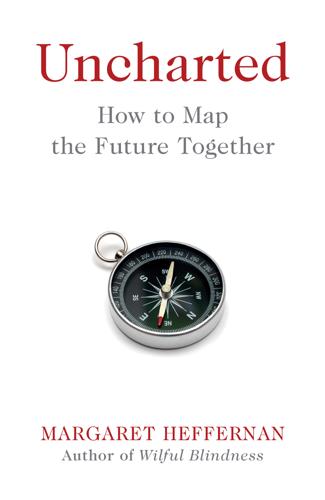
Uncharted: How to Map the Future
by
Margaret Heffernan
Published 20 Feb 2020
Why was it so hard to have a decent, straightforward conversation with patients? An outspoken critic of the role that money plays in medicine, he found the fact that hospitals could do well by serving people so badly unacceptable. Ring wasn’t alone in asking these questions. The struggle to pass Obamacare, an inadequate solution that was the first politically acceptable proposal for fifty years, had left most professionals in the industry jaded, cynical and resigned. That it had had to be defended, not enlarged, only made matters worse. Experiments? The whole system felt like a failed experiment – bloated, corrupt, too big, too old and too complex to change.
…
Archibald, 53 Moorcraft, Penny, 289–90, 291 morality, 14, 20, 26, 62, 95, 139, 159, 177, 222, 223, 265, 280, 286, 312, 317 Morning Star, 200 Morrison, Toni, 42, 194 motivation, 36, 41, 118, 126, 164, 216–18, 252, 255 Moyes, Richard, 308–9 Mozart, Amadeus, 71 MRI scanning, 43, 136, 210 Mulally, Alan, 253 Mullis, Kay, 83 multiple schlerosis (MS), 82, 89 Munch, Edvard, 15, 274 Munich Agreement (1938), 53 MUSE, 70, 72–3 Mussolini, Benito, 71 Myers–Briggs Type Indicator (MBTI), 73–5, 80, 97 Myers, Isabel, 73, 74 Narragansett Pier, 13 narrative, fallacy of, 47 National Assembly of Wales, 309 National Economic Council (US), 28 National Health Service (NHS), 259 National Institute for Allergy and Infectious Diseases (US), 260 National Rifle Association (NRA), 268 National Union of Miners (NUM), 270 natural disasters, 4, 15 Natural History Unit (NHU), 109 NBC, 111 neighbourhood care, 125 neighbourhood schools, 133 neighbours/neighbourhood, 2, 5, 6, 41, 94–5, 125, 133, 279, 312 Neruda, Pablo, 151 Nessi, Marzio, 213–17, 227 neuroticism, 92 neutrino detectors, 204 New Hampshire University, 114 New Lens scenarios, 156–7 New York Stock Exchange, 260 New York Times (NYT), 208 newgenics, 98 Newton, Isaac, 19 Next, 117 Ngo Dinh Diem, 54 NGOs, 56, 166 NHS, 259 Nine West, 117 Nipah, 298, 302 N95, 246 Nobel Prize, 24, 69, 70, 89, 98, 207, 216, 219 Nokia, 246–7, 249–51 nomenklatura, 121 Nordmarka, 190 normal line, 19, 23 Norris, Peter, 254 not-knowing, 62, 67, 100, 102, 108, 172, 177, 191, 193, 201, 205, 242, 268, 295, 314 noucentisme, 225 novel methodology, 30 NRA, 268 nuclear warfare, 205–6, 299, 308 nursery history, 59 Obama, Barack, 56 Obamacare, 128 Obrador, Andrés Manuel López, 173 OECD, 30 oil industry, 154–8 Old Vic Theatre, 276 ‘Olivia’ anecdote, 271–4, 295 Olympic Games, 227 O’Mahony, Yulia, 118–19, 120–1 O’Neil, Cathy, 5, 78 OPEC, 155 openness, 92 operating systems, 246–7 optimism, 8–9, 22, 161, 187, 229, 264, 286, 317 oracles, 2, 28 organic agriculture, 113 Organisation for Economic Co-operation and Development (OECD), see OECD Organizational Health Index (OHI), 247 Orwell, George, 226 Ostrich, 166 OurLivesOurVote, 268 outcome, 62–3 overload, 44 overreach, 234 Oxford Martin School, 29, 30 Oxford University, 95, 215 OXXO, 151 pandemics, 57–9, 298, 300 (see also epidemic) paradox, 156–7 parenting, 70–3 Paris Accord, 116, 159 Parkinson’s disease, 82 Parks, Rosa, 56 passive investment funds, 27, 29 passive observation, 26, 40, 103, 269, 314 passivity, 96, 102 Patagonia, 200 Patau’s syndrome, 89 patented machine learning, 70 Paterson, Katie, 180, 185–6, 190, 191–2, 194 pathogens, 297 Patrick, Peter, 144, 147 PayLess, 117 Peace Prize, 219 penicillin, 84 Pentland, Alex, 101 Pentland’s well-ordered moor, 103 perfectionism, 9, 80, 100, 126, 138, 285, 318 personality, 65, 73–6, 80, 91–2 personality tests, 76 Persons, Warren, 16, 20–1, 23, 26, 31, 41 PET scanning, 210 Petretti, Silvia, 263, 267, 321 philosophers, 177 photovoltaics, 160 Picasso, Pablo, 15, 178, 197, 226 Pinnington, Elizabeth, 169 ‘Pits and Perverts’ benefit ball, 264 ‘plastic straw’ moments, 315 Plomin, Robert, 91–3, 94–6 Plummer, Daryl, 34–6 poetry, 151, 190, 194, 196, 278 Pol Pot, 287 Polaroid, 248 political discontent, 4 polling, 75 pollution, 2, 14, 111, 282 polymerase chain reaction (PCR), 83 Popper, Karl, 51, 61, 232 Porter, Michael, 115 Post Office Tower, London, 226 Pound, Ezra, 194 Power Rangers, 68 Prague Spring, 55 precision education, 96 predetermination, 7, 46, 50, 153, 174, 178 prediction, 4, 6, 13–103, 120, 166, 183, 199, 219, 258, 280, 298, 301, 313, 321 pro-creation tickets, 97 probability, 37–41, 87, 89, 93, 155–6, 161, 247 procreative benevolence, 98 Profectus, 304 profiling, 5, 20, 33, 69, 73–89, 100–2, 297 progress, 2–3, 8, 15, 51, 70, 83–4, 98, 114, 175, 182, 269, 274, 280, 303, 309, 317 propaganda, 1, 9, 26, 31, 32, 40–1, 62, 100, 286 prophets, 5, 39, 285 prospection, 1–2 Prosperity Paradox, 156 protease inhibitors, 265–7 protest, history of, 59 protoDUNE, 204, 216 Proust, Marcel, 176 pseudo-science, 21, 195 psychographic profiling, 76, 84 psychological profiling, 5 public trust, 221, 234 punditry, 5, 7, 16, 18, 20, 27–30, 35–6 Pygmalion effect, 76 Rabbit, Peter, 15 RadioShack, 117 Rand Corporation, 152 Rand Kardex Company, 18 Ranney, Ambrose, 14 rationing, 93, 96 Reader, Sally, 291 Reagan, Ronald, 28, 260 Rees, Martin, 317–18 referenda, 39, 140–7 Reid, Richard, 85 rejection, 7, 26, 37, 78, 102, 132, 144, 155–6, 196, 223, 226, 277, 313 religion, 2, 4, 20, 139, 224, 238, 239, 278, 285, 295, 307 religious strife, 4 Rembrandt, 277 Renner, Michael J., 94 Reos Partners, 167, 322 Repository for Germinal Choice, 98 revolution, 15, 55, 60, 91, 122, 125, 163, 184, 193 Rift Valley fever, 302–3 Rilke, René, 185 Ring, David, 128, 130–1, 133–5, 137 Roche, 79 Rockport, 117 Rohe, Mies van der, 226 Rosenzweig, Mark R., 94 ‘Rosina’ anecdote, 173 RTÉ, 145 Rubbia, Carlo, 207, 216 rules-bound games, 107–8 Rumi, 296 Russell, Bertrand, 97 Russia Today (RT), 111 Sagrada Família, 224–8, 232 St Margaret’s Hospice, 289–94, 321 St Patrick’s Cathedral, 260 Samaritans, 119 same-sex marriage, 140 Sanford Underground Research Facility, 204 Sanger Centre, 219–21, 224, 231, 232 Santayana, George, 51 Saquinavir, 266 Sargent, Singer, 15 SARS, 298 Saunders, Cicely, 289 scenario planning, 155–75 Schatz, Albert, 15 schizophrenia, 92, 93, 96 Schoenberg, Arnold, 197 Schrödinger, Erwin, 206 Schubert, Franz, 277 scientific management, 120, 199 Scotland, independence sort by, 39 Seagram Building, 226 Sears, 117 Second World War, 54, 73, 80, 99, 147, 152, 162, 164, 273–4, 279 seedbanks, 306, 316 segregation, 33, 97, 129 self-discipline, 19, 230 self-interest, 23, 29, 36, 174 Sencer, David, 58–9 sensitive humility, 192 Shafak, Elif, 191 Shakespeare, William, 31, 108–9, 184, 195, 198, 275–6 shamanism, 2 Sharper Image, 247 Sheffield Health Geeks, 118 Shell Oil Corporation, 154–66 passim short-termism, 78, 308 sickle-cell anaemia, 89 Siilasmaa, Risto, 248–50 ‘Silence = Death’ campaign, 265 Silicon Valley, 33, 129, 246, 285 Skidelsky, Robert, 25 Sky, 111 ‘sleeping beauties’, 82 sleight of hand, 3 Sloane Kettering Cancer Center, 296 social connection, 103 social efficiency, 101 ‘social rubbish’, 97 social turmoil, 4 soft data, 156, 159, 168 ‘something for everyone’, 76 soothsaying, 2 Sophocles, 177 Spence, Basil, 226 Spiritual Association of the Devotees of Saint Joseph, 224 SSC, 209 stability, 17–18, 22, 56, 113, 154, 158, 282 Standard Life (SL), 251 Stanford, 273 statistics, 16, 20, 23, 40, 74, 82, 92, 136, 139, 178 stereotyping, 79–80, 93, 95, 151 sterilisation, 97 Stonyfield, 113–14, 115 Strauss, Levi, 274 Stravinsky, Igor, 15 streptomycin, 15 Suez Crisis, 53 Sugrañes, Domènec, 225 Suharto, Tommy, 254 Sulston, John, 219 Sumpter, Donald, 195 super-collider projects, 185, 204–32 super-forecasting, 37, 38, 41, 63 SUperSYmmetry (SUSY), 216 surrender, 7, 36, 96, 102, 103, 202, 242, 319 Sustainable Development Goals (SDGs), 309 SUSY, 216 Svalbard, 306–7, 316 swine flu, 57, 58 Symbian, 247 Syngenta, 160 Szabłowski, Witold, 121 Tambo, Oliver, 258 Tate, 186 taxation, 28 taxi drivers/driving, 42–6, 63, 181, 314 TB, 14–15, 19, 41 Terrence Higgins Trust (THT), 257–8, 268 terrorism, 15, 36, 85–6, 173, 305 test-tube baby, first-ever, 222 Tetlock, Philip, 5, 27–8, 36–7, 40 Texas University, 129, 163 Thamotheram, Raj, 279, 294 Thatcher, Margaret, 209 Thiel, Peter, 286 Third Law of Motion, 19 THT, 257–8, 268 Thunberg, Greta, 269, 317 Tóibín, Colm, 179 Toys “R” Us, 248 track record, 5, 28, 41 trade wars, 4 Transcend, 283 transformation programmes, 116, 166, 199 transhumanism, 280, 283–7 Trump, Donald, 4, 28, 39, 40, 170, 176 trust, 2, 9, 17, 19, 28, 41, 54, 70, 103, 108, 112, 140, 151, 163–5, 172, 182–7, 201, 211, 221–2, 234, 244, 249, 252, 255, 266, 270, 302, 304–7, 316, 318 tuberculosis, see TB 21/7, 85 23andMe, 95 Twitter, 4 tyranny, 7, 63, 121–2 Umbert, Esteve, 229–30 Unified Planning Machine, 154 United Arab Emirates (UAE), 312 United Nations (UN), 309, 313 unknowns, density of, 17 urban crowding, 14 US Congress, 1, 24, 58, 264 utopia, 6, 103, 312, 313 vaccines, 14, 57–8, 297–304, 298–304 Venter, Craig, 219 Vera Drake, 185, 192 Vidal, Francesc de Paula Quintana i, 227 Vietnam War, 53–4 Vision for Slovenia, 162–5 volatility, 3, 4, 17–18, 147, 155, 157, 224, 237 W boson, 207, 216 Wack, Pierre, 154, 155–6, 159, 168 Waksman, Selman, 15 Wall Street, 20 Walmart, 151 war on cancer, 82 Warnock Commission, 222, 223, 234 Warnock, Mary, 222–3, 316 Washington Mutual, 248 wasteful exuberance, 20 Webb, Beatrice and Sidney, 97 wellbeing, 118, 156, 164, 309, 312 Wellbeing of Future Generations Act (2015) (Wales), 309, 310, 311, 313 Wellcome Sanger Institute, 219, 224, 231 Wellcome Trust, 85 Wells, H.

The Intelligence Trap: Revolutionise Your Thinking and Make Wiser Decisions
by
David Robson
Published 7 Mar 2019
There is even some evidence that, thanks to motivated reasoning, exposure to the opposite point of view may actually backfire; not only do people reject the counter-arguments, but their own views become even more deeply entrenched as a result. In other words, an intelligent person with an inaccurate belief system may become more ignorant after having heard the actual facts. We could see this with Republicans’ opinions about Obamacare in 2009 and 2010: people with greater intelligence were more likely to believe claims that the new system would bring about Orwellian ‘death panels’ to decide who lived and died, and their views were only reinforced when they were presented with evidence that was meant to debunk the myths.40 Kahan’s research has primarily examined the role of motivated reasoning in political decision making – where there may be no right or wrong answer – but he says it may stretch to other forms of belief.
…
99. 39 Kahan, D.M. (2017), ‘Ordinary Science Intelligence’: A Science-Comprehension Measure for Study of Risk and Science’, Journal of Risk Research, 20(8), 995?1016. 40 Nyhan, B., Reifler, J. and Ubel, P.A. (2013), ‘The Hazards of Correcting Myths about Health Care Reform’, Medical Care, 51(2), 127?32. For a discussion of the misperceptions around ObamaCare, see Politifact’s Lie of the Year: ‘Death Panels’, Politifact, 18 December 2009, http://www.politifact.com/truth-o-meter/article/2009/dec/18/politifact-lie-year-death-panels/. 41 Koehler, J.J. (1993), ‘The Influence of Prior Beliefs on Scientific Judgments of Evidence Quality’, Organizational Behavior and Human Decision Processes, 56(1), 28–55.
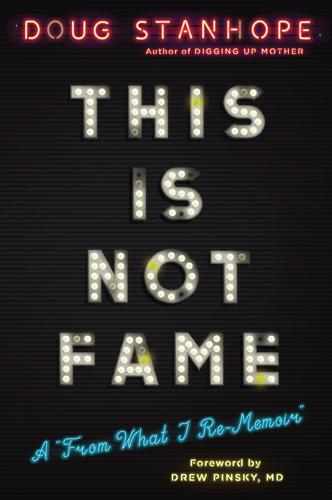
This Is Not Fame: A "From What I Re-Memoir"
by
Doug Stanhope
Published 5 Dec 2017
They emailed me posthaste after the update and offered their services. Anesthesia is 99 percent of the game as far as I’m concerned. So long as I’m unconscious, I could have my dry cleaner do the alterations. But they had a surgeon friend that was game and who waived her fee as well. Yes. Her. Thanks I assume to Obamacare and the comedy of Amy Schumer, gals too can be doctors now. This was a hot Japanese lady surgeon with ropey arms who probably mountain bikes and didn’t laugh at my examination room jokes and could have been twenty-eight or seventy the way Asian women tend to go. My immediate concern was that this selfless act of charity on her part might change my ingrained hatred of women and Asians.
…
Fondler on, 211–212 Irishwomen bit on, 179 Napster, 109–110, 208, 298 permanent record on, 293, 296–298 trolls, 235, 238 interviews 20/20, 52, 54–56 country-western station in Shreveport, LA, 66–67 KWHL in Anchorage, AK, 86 local TV news in San Francisco, 57–59 Muslim woman prank, 63–64 Steve Yerrid impersonation, 65–66 “In the Arms of the Angel” (McLachlan), 255 Inverness, Scotland, 204 Irishwomen, 174, 176, 177, 179 Jack the Wig, 8 Jeff Dunham, 306 Jefferies, Jim, 187, 208 The Jerk, 146 Jerry Springer Show, 48–56, 148, 259 Jimi, 255 jock strap at the beach episode, 223 “Johnny Depp Never Called Me” material, 279 Jokers Comedy Club, 95, 300 Jonathan, 31 Just for Laughs comedy festival, 183–185 Just for Spite festival, 184 Kaufman, Andy, 77 Kelly, Jim, 297 Kenny, 85 Kerry, 138 KettleBells, 257 Kilborn, Craig, 27 Kilkenny comedy festival, 176–177 Kilkenny, Ireland, 174, 176–178 Killer Termites, 238, 239 Kirschner, Jay, 17, 209, 212, 215, 220 Kitchen Nightmares (TV series), 260 Koot’s (Chilkoot Charlie’s), 80, 83–92 Koresh, David, 12 Kreischer, Bert, 288 Krystal, 30–33 KWHL, 86, 89 Laff Stop, 48 Lakers game, 258–259 Lange, Artie, 164, 165, 166 Las Vegas, 157 Late Night with Jimmy Fallon, 268 Led Zeppelin, 196 Leno, Jay, 177 Levine, Kristine, 305–306 limos, 50, 199, 205 Litla-Hraun prison show, 132–134 locked-in syndrome, 231 London, England, 142–144 Lonnie, 98, 100–102 lotteries, winning, 295 Lou, 98, 100 Louisville, KY, 196 “low-watt gurgler in a high-back chair,” 301, 302, 303 Luker, 105–107 Maher, Bill, 22–25 mailing list, 18, 109, 184 Man-Dick and the nad-matter, 77–78 The Man Show, 26, 58, 59, 75, 76, 79, 145, 148, 264 Manson, Marilyn, 279, 281 marijuana, 265 Marino, Dan, 297 Maron, Marc, 292 Martin, Dean, 264 Martin, Steve, 104, 146 May, Big Fat Ralphie, 41, 88 meeting Bingo, 302–303 Metallica, 110 meth, 72, 84, 190, 287–288 Mexico, corruption in, 154 midgets, 85, 86 Midvale, UT, 97, 102 Mill Valley, CA, 110 Minneapolis, 30, 34, 157, 300 Mitchell, Tim, 272–273 mixed-bill shows, 177, 184 Montreal, Canada, 183, 184, 185 Montreal comedy festival, 93–94 Moon, Keith, 192 Morris, Garrett, 283 mother’s suicide, 225, 227 Muamba, Fabrice, 235–236 Murphy, Morgan, 202 mushrooms, 41, 80, 81, 84, 135–136, 256–257, 269, 280 naked onstage, 91–92, 93–94, 94–95 naked pool-dives, 24–25, 27 naked selfies of women, 228 name dropping, 282–283, 307 Napster, 109–110, 208, 298 Navarro, Dave, 269 Netflix, 263, 276, 309 New Orleans, 311–312 Newswipe (TV series), 128, 260 Nicklinson, Tony, 230, 231–232, 235, 238 Night Shift (TV series), 127 900 numbers, 41–42 No Class Tour at Ohio University, 167–170 No Refunds special, 128, 281, 283 noise ordinance in Bisbee, 305, 306 nose job, 37, 38 Notaro, Tig, 207 Nowhere Man, 305 Nurse Betty, 253 O’Briain, Dara, 177, 178 O’Connell, Mike, 186, 188 O’Donnell, Daniel, 203 Obamacare, 254 obsession, 33 Ocean Beach, CA, 225 The Office, 161 Ohio University show, 167–170 Okinawan girl joke, 90 Omaha, 95 Onnit, 257 open-mic comedy, 7–8 opening acts, 87, 184, 198, 271–275 OxyContin, 226 Pahrump, NV, 72 The Palms Casino Resort, 164, 165 parade, St. Patrick’s Day, 96–97 parties, 16–18, 21, 22–23, 162, 209 partying, 22–23, 28 Paula, 31, 32 Paulie, 148–149 Pearson, Allison, 231–232, 234–235, 238 pedophile’s release from prison, 175, 180 pedophile-baiting online, 43 penis exposure, 99–100, 102 Perlman, Josh, 6 Pervert Park (documentary), 224 PETA, 255 Phillips, Henry, 74, 188, 198, 199, 201, 202, 205, 255 phobias, 231 phone sex, 40–44 pig-in-the-trailer episode, 10–13 PiL (Public Image Ltd band), 60 pissing, 189, 245–247, 258 pizza under the table episode, 285–286 plagiarism, 233 poker event, 161–162 police at Super Bowl parties, 306 police interrogation at Costa Rica airport, 117–122 Politically Incorrect, 22 porn shoot, 157–158 porn stars, 160, 161, 162 portrait of Stanhope and Bingo, 225, 226 pranks, 61, 63–64, 65–66, 75–76, 89–91, 103–104, 266, 271–272, 272–273, 274–275 Dog Eats Own Leg video, 105–107 interview with “dancer,” 74–75 radio interviews, 59–61, 63–66 TV news interview prank, 58–59 Premium Blend (TV series), 45 prescription drugs, 189.
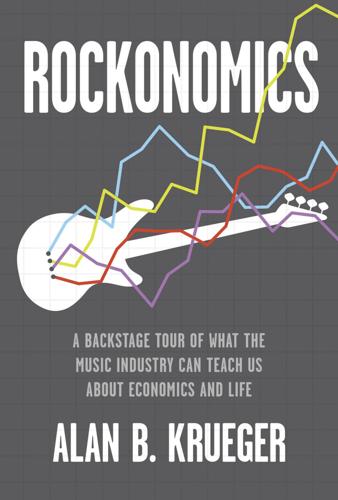
Rockonomics: A Backstage Tour of What the Music Industry Can Teach Us About Economics and Life
by
Alan B. Krueger
Published 3 Jun 2019
Musicians have long been at the vanguard of the gig economy, facing many of the same problems that gig workers face today: obtaining health insurance, saving for the future, paying down debt, planning for taxes, and recordkeeping. In 2013, before Obamacare established health insurance exchanges and provided income-based subsidies for individuals to purchase insurance, 53 percent of musicians lacked health insurance, which was triple the uninsured rate for the population as a whole.8 Self-employed workers as a whole saw a greater rise in health insurance coverage after Obamacare passed than other employees. The health insurance coverage rate of musicians jumped to 86 percent by 2018.9 Not surprisingly, musicians and other freelancers have generally been more supportive of the controversial law than the public as a whole.10 Given the mental stresses and physical wear and tear that a musical career entails, the low rate of health insurance coverage historically has been a serious problem for musicians.

Mindf*ck: Cambridge Analytica and the Plot to Break America
by
Christopher Wylie
Published 8 Oct 2019
One couple told me about the thousands of dollars they owed for their insurance deductibles and how they would sometimes skimp on their prescriptions because they had to repair their car that month. They’d agreed to the interview because the $100 they received would get them closer to covering next month’s costs. But who did they blame for their insurance costs? Not their employer’s bad health plan or a lack of decent pay—they blamed Obamacare. They genuinely thought it was rolled out simply to help more undocumented workers come to America in a grand plan of liberal social engineering to keep the Democrats in power through more Democrat-leaning Latino voters, which in their minds made insurance and hospitals more expensive. People would feel better about their day after an hour-long session in the Fox News rage room—they could groan out their stress, and afterward their problems at work or home were someone else’s fault.
…
It meant that their struggles could be wholly externalized, sparing them the stark reality that maybe their employer didn’t care enough about them to give them a living wage. It would be too painful to admit that perhaps they were being taken advantage of by someone they saw every day rather than the faceless enemy of Obamacare and “illegals.” This was my longest exposure to Fox News, and all I could think about was how the network was conditioning people’s sense of identity into something that could be weaponized. Fox fuels anger with its hyperbolic narratives because anger disrupts the ability to seek, rationalize, and weigh information.

How Big Things Get Done: The Surprising Factors Behind Every Successful Project, From Home Renovations to Space Exploration
by
Bent Flyvbjerg
and
Dan Gardner
Published 16 Feb 2023
But I worked with McKinsey, and indeed we found that IT disasters were even worse than transportation disasters. But otherwise it was a broadly similar story of cost and schedule overruns and benefit shortfalls.9 That was startling. Think of a bridge or a tunnel. Now picture the US government’s HealthCare.gov website, which was a mess when it first opened as the “Obamacare” enrollment portal. Or imagine the information system used by the National Health Service in the United Kingdom. These IT projects are made of code, not steel and concrete. They would seem to be different from transportation infrastructure in every possible way. So why would their outcomes be statistically so similar, with consistent cost and schedule overruns and benefit shortfalls?
…
Skamris, ref1 Holmes, Elizabeth, ref1 home and kitchen renovations, ref1, ref2, ref3, ref4, ref5, ref6, ref7, ref8, ref9, ref10 honest numbers, ref1 Hong Kong, ref1, ref2, ref3, ref4, ref5 Hoover, Herbert, ref1, ref2 Hoover Dam, ref1, ref2, ref3 Hopper, Dennis, ref1 Hornsea Project, United Kingdom, ref1 Hughes, Robert, ref1 hurricanes, ref1 hydroelectricity, ref1 ice melt, ref1 Ickes, Harold, ref1 ignorance, ref1 IKEA, ref1 illusion of explanatory depth, ref1 inchstone approach, ref1 Incredibles, The (movie), ref1 Infinite Jest (Wallace), ref1 information technology (IT) projects, ref1, ref2, ref3, ref4, ref5, ref6, ref7, ref8, ref9, ref10, ref11, ref12, ref13, ref14, ref15 (see also specific projects) Inside Out (movie), ref1, ref2 inside view (detail), ref1, ref2, ref3 Instagram, ref1 International Energy Agency, ref1, ref2 International Olympic Committee (IOC), ref1 International Renewable Energy Agency, ref1 Internet, ref1 intuitive judgments, ref1, ref2, ref3, ref4, ref5 iPod, ref1 Ireland, ref1 Iron Law of Megaprojects, ref1, ref2 iterations (see planning) Ive, Jony, ref1 James Webb Space Telescope, ref1, ref2 Japan, ref1, ref2, ref3, ref4, ref5, ref6, ref7 Jaws (movie), ref1, ref2 Jay-Z, ref1 Jobs, Steve, ref1, ref2, ref3, ref4, ref5 Johnson, Lyndon B., ref1 Jørgensen, Hans Lauritz, ref1, ref2 Judaism, ref1 Justice, US Department of, ref1 Kahneman, Daniel, ref1, ref2, ref3, ref4, ref5, ref6, ref7, ref8, ref9 Kazan, Elia, ref1, ref2 Kennedy, John F., ref1 King Kong, ref1 Kissinger, Henry, ref1 Klein, Gary, ref1, ref2 Kmart, ref1 Kramer, Eddie, ref1, ref2, ref3 kurtosis, ref1 LaGuardia Airport, New York, ref1 Lamb, William, ref1, ref2 large numbers, law of, ref1 Larsen, Henning, ref1 Lasko, Jim, ref1, ref2 Last Movie, The (movie), ref1 Lawrence of Arabia (movie), ref1 lean startup model, ref1 Lean Startup, The (Ries), ref1, ref2 Led Zeppelin, ref1 Lego, ref1, ref2, ref3, ref4, ref5, ref6, ref7 Lennon, John, ref1 Levi Strauss, ref1 Levinson, Marc, ref1 Levy, Steven, ref1 lightbulbs, ref1, ref2 Lincoln, Abraham, ref1, ref2 Lincoln Center, New York City, ref1 lock-in, ref1, ref2, ref3 London, Olympic Games in, ref1 Los Angeles, California, ref1, ref2, ref3, ref4 Lötschberg Base Tunnel, Switzerland, ref1 Machiavelli factor, ref1 Madrid Metro, ref1, ref2, ref3 Maersk, ref1 Mandelbrot, Benoit, ref1, ref2 Marriott hotel, New York City, ref1 Mass Transit Railway (MTR), Hong Kong, ref1, ref2, ref3, ref4, ref5 masterbuilders, ref1 maximum virtual product model, ref1, ref2 McAllister, Ian, ref1 McKinsey & Company, ref1 McLean, Malcolm, ref1 Mead, Margaret, ref1 mean, regression to, ref1 means and ends, ref1, ref2 megaprojects, ref1, ref2, ref3 adjustments and, ref1, ref2, ref3, ref4 airports, ref1, ref2, ref3, ref4, ref5, ref6, ref7, ref8 anchoring and, ref1, ref2, ref3, ref4, ref5, ref6, ref7, ref8 budgets and cost overruns, ref1, ref2, ref3, ref4, ref5, ref6, ref7, ref8, ref9, ref10, ref11, ref12, ref13, ref14, ref15, ref16, ref17, ref18, ref19, ref20, ref21, ref22, ref23, ref24, ref25, ref26, ref27, ref28, ref29, ref30, ref31, ref32, ref33, ref34, ref35, ref36, ref37, ref38, ref39, ref40, ref41, ref42, ref43 commitment, escalation of, ref1, ref2 ending world hunger, as a megaproject, ref1, ref2 estimates and, ref1, ref2, ref3, ref4, ref5, ref6, ref7, ref8, ref9 experience and (see experience) fat-tailed distribution and, ref1, ref2, ref3, ref4, ref5, ref6, ref7, ref8, ref9 forecasting and, ref1, ref2, ref3, ref4, ref5, ref6, ref7, ref8, ref9 heuristics for better leadership, ref1 home and kitchen renovations, ref1, ref2, ref3, ref4, ref5, ref6, ref7, ref8, ref9, ref10 information technology (IT) projects, ref1, ref2, ref3, ref4, ref5, ref6, ref7, ref8, ref9, ref10, ref11, ref12, ref13, ref14, ref15 inside view (detail) and, ref1, ref2, ref3 Lego and, ref1, ref2, ref3, ref4, ref5, ref6, ref7 modularity and, ref1, ref2, ref3, ref4, ref5, ref6, ref7 movie production, ref1, ref2, ref3, ref4, ref5, ref6 normal distribution and, ref1, ref2, ref3, ref4 outside view (accuracy) and, ref1, ref2, ref3 planning and, ref1, ref2, ref3, ref4, ref5, ref6, ref7, ref8, ref9, ref10, ref11, ref12, ref13, ref14, ref15, ref16 rail projects, ref1, ref2, ref3, ref4, ref5, ref6, ref7, ref8, ref9, ref10, ref11, ref12, ref13, ref14, ref15, ref16, ref17, ref18, ref19, ref20 reference-class forecasting (RCF) and, ref1, ref2, ref3, ref4, ref5, ref6, ref7 right to left, thinking from, ref1, ref2, ref3, ref4, ref5, ref6 risk mitigation and, ref1, ref2, ref3, ref4, ref5, ref6, ref7 schedules and, ref1, ref2, ref3, ref4, ref5, ref6, ref7, ref8, ref9, ref10, ref11, ref12, ref13, ref14, ref15, ref16, ref17, ref18, ref19, ref20, ref21, ref22, ref23, ref24, ref25, ref26, ref27, ref28, ref29 teams and, ref1, ref2, ref3, ref4, ref5, ref6 think slow, act fast and, ref1, ref2, ref3, ref4, ref5, ref6, ref7, ref8, ref9, ref10, ref11, ref12, ref13 tunnels, ref1, ref2, ref3, ref4, ref5, ref6, ref7, ref8, ref9, ref10, ref11 uniqueness bias and, ref1, ref2, ref3, ref4, ref5, ref6, ref7, ref8 Mexico City, ref1 Microsoft, ref1 milestones, ref1, ref2 Miller, Diane Disney, ref1 minimum viable product model, ref1, ref2 mining, ref1, ref2, ref3 models, ref1 models and simulation, ref1, ref2, ref3, ref4, ref5 modularity, ref1, ref2, ref3, ref4, ref5, ref6, ref7 Møller, Arnold Maersk Mc-Kinney, ref1 Monju nuclear power plant, Japan, ref1, ref2, ref3, ref4 Montreal Gazette, ref1 Montreal Olympic Games (1976), ref1, ref2, ref3, ref4 Moses, Robert, ref1, ref2 movie production, ref1, ref2, ref3, ref4, ref5, ref6 Museum of Modern Art, New York City, ref1 Musk, Elon, ref1 NASA (National Aeronautics and Space Administration), ref1, ref2, ref3, ref4 National Architectural Association, ref1 National Health Service, United Kingdom, ref1 National Museum of Qatar, ref1 naturalistic decision making (NDM), ref1 negative heuristics, ref1 negative learning, ref1 Nepal school project, ref1, ref2, ref3, ref4, ref5, ref6, ref7 Netherlands, ref1, ref2 New York Public Library, ref1, ref2 New York Review of Books, The, ref1 New York Times, The, ref1, ref2, ref3 New Yorker, The, ref1 Newsday, ref1 Newsom, Gavin, ref1 Newton, Isaac, ref1 NIMBY (not in my back yard), ref1 No Time to Die (movie), ref1 Nobel Prize in Economic Sciences, ref1 normal distribution (Gaussian), ref1, ref2, ref3, ref4 Norway, ref1, ref2 Nouvel, Jean, ref1 nuclear power, ref1, ref2, ref3, ref4, ref5, ref6, ref7, ref8, ref9, ref10, ref11, ref12, ref13 Nuclear Regulation Authority, Japan, ref1 Obamacare, ref1 offshore wind farms, ref1, ref2 oil and gas projects, ref1, ref2, ref3 old project data, ref1 Olympic Fish, Barcelona, ref1 Olympic Games, ref1, ref2, ref3, ref4, ref5, ref6, ref7, ref8, ref9, ref10, ref11, ref12 one-building architect, ref1, ref2 one of those, ref1, ref2, ref3, ref4, ref5 OPEC (Organization of Petroleum Exporting Countries), ref1 opportunity costs, ref1 optimism, ref1, ref2, ref3, ref4, ref5, ref6 Organisation for Economic Cooperation and Development (OECD), ref1 organization of the artist, ref1 Ørsted, Hans Christian, ref1 Ørsted (DONG Energy), Denmark, ref1, ref2 outside view (accuracy), ref1, ref2, ref3 overconfidence, ref1 overpass collapse, ref1 Paralympic Games, ref1 Parliament Building, Scotland, ref1 past projects, ref1 Paz del Río steel mill, Colombia, ref1 Pearl River Delta Economic Zone, ref1 PensionDanmark, ref1 Pentagon, ref1, ref2, ref3 Pentagon, The: A History (Vogel), ref1, ref2 Perrow, Charles, ref1 phronesis, ref1, ref2, ref3, ref4, ref5, ref6, ref7 Piano, Renzo, ref1 pioneer companies, ref1 pipelines, ref1, ref2 Pixar Animation Studios, ref1 Pixar planning, ref1, ref2, ref3, ref4, ref5, ref6, ref7, ref8, ref9 Planet (Planet Labs, Inc.), ref1 Planet Dove satellite, ref1 planning, ref1, ref2, ref3, ref4, ref5, ref6, ref7, ref8, ref9, ref10, ref11, ref12, ref13, ref14, ref15, ref16, ref17, ref18 planning fallacy, ref1, ref2 planning fallacy writ large, ref1 Polanyi, Michael, ref1, ref2 politics, ref1, ref2, ref3, ref4, ref5, ref6 positive heuristics, ref1, ref2 positive learning curve, ref1, ref2 postpandemic investment, ref1 Potomac River, ref1, ref2 Poulsen, Henrik, ref1 power bias, ref1, ref2 Power Broker, The: Robert Moses and the Fall of New York (Caro), ref1 Power Mac G4 Cube computer, ref1 PR/FAQ (press release/frequently asked questions), ref1 presidential election of 1928, ref1 “Principle of the Hiding Hand, The” (Hirschman), ref1, ref2 Pritzker Architecture Prize, ref1 probability theory, ref1 Project Apollo, ref1 prospect theory, ref1 providential ignorance, ref1 psychological safety, ref1, ref2 psychology, ref1, ref2, ref3, ref4, ref5, ref6, ref7, ref8, ref9, ref10, ref11, ref12 Pulitzer Prize, ref1 Quartermaster Depot site, ref1, ref2 R.J.

The Road to Unfreedom: Russia, Europe, America
by
Timothy Snyder
Published 2 Apr 2018
The only major policy of 2017 was to increase pain: a tax regression law that created a budgetary argument against funding domestic programs, and which included among its provisions the deprivation of health care from many of those who needed it most. In Trump’s words, “I’ve ended the individual mandate” for health insurance. This means that the Affordable Care Act, which had extended health insurance among uninsured Americans, was in his words “basically dead over time.” According to the Congressional Budget Office, the health care provisions of the 2017 tax bill will result in the loss of health insurance for thirteen million Americans. As an envoy from the United Nations warned, these policies could make the United States “the most unequal country in the world.”
…
Once politicians believe that their job is its creation and redistribution, to speak about health becomes a provocation. Trump was called a “populist” Ed Pilkington, “Trump turning US into ‘world champion of extreme inequality,’ UN envoy warns,” TG, Dec. 15, 2017. 13 million: Sy Mukherjee, “The GOP Tax Bill Repeals Obamacare’s Individual Mandate,” Fortune, Dec. 20, 2017. Trump quotation: “Excerpts from Trump’s Interview with the Times,” NYT, Dec. 28, 2017. On one level See Katznelson, Fear Itself, 33, sic passim. Cf Zygmunt Bauman, Liquid Modernity (London: Polity, 2000): “the dearth of workable solutions at their disposal needs to be compensated for by imaginary ones.”
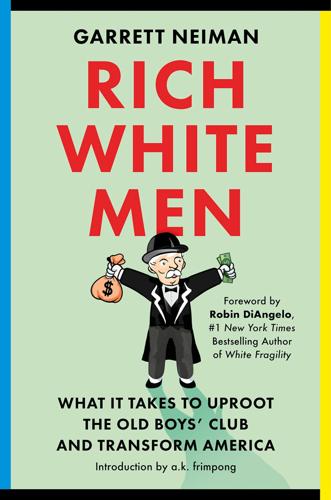
Rich White Men: What It Takes to Uproot the Old Boys' Club and Transform America
by
Garrett Neiman
Published 19 Jun 2023
Here’s How He Responded,” Los Angeles Times, February 13, 2019, https://www.latimes.com/business/hiltzik/la-fi-hiltzik-socialism-20190213-story.html; Tom van der Voort, “In the Beginning: Medicare and Medicaid,” Miller Center, July 24, 2017, https://millercenter.org/issues-policy/us-domestic-policy/beginning-medicare-and-medicaid; “Why Calling Obamacare ‘Socialism’ Makes No Sense,” ABC News, October 1, 2013, https://abcnews.go.com/ABC_Univision/Politics/calling-obamacare-socialism-makes-sense-analysis/story?id=20435162; Fred Sievert, “‘Build Back Better’? Beware of the ‘Free’ Gifts of Socialism, America,” Fox Business, November 5, 2021, https://www.foxbusiness.com/politics/build-back-better-free-gifts-socialism-fred-sievert. 33.
…
Whenever a proposal is made to level the distribution of resources, though, a common refrain among rich white men is that such a program is socialist. It’s a centuries-old tactic: before the Civil War, pro-slavery advocates labeled abolitionist newspaper editor Horace Greeley a socialist.31 Minimum wage and child labor laws faced a similar onslaught. So did Roosevelt’s New Deal, Johnson’s Medicare, Obama’s Affordable Care Act, and Biden’s Build Back Better.32 In 2008, John McCain characterized Barack Obama’s tax proposals as “socialism,” declaring in a radio address that Obama “believes in redistributing wealth, not in policies that help us all make more of it.”33 But the reality is that none of these initiatives are socialist.
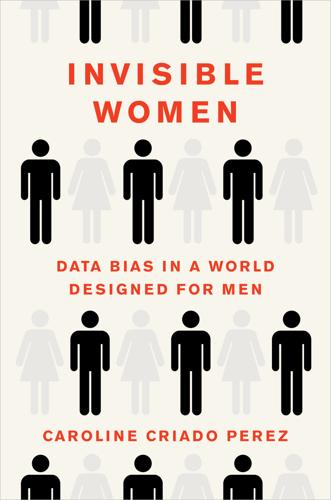
Invisible Women
by
Caroline Criado Perez
Published 12 Mar 2019
via=gdpr-consent#methodology 14 https://www.historians.org/publications-and-directories/perspectives-onhistory/may-2010/what-the-data-reveals-about-women-historians 15 https://www.historians.org/publications-and-directories/perspectives-on-history/december-2015/the-rise-and-decline-of-history-specializations-over-the-past-40-years 16 http://duckofminerva.com/2015/08/new-evidence-on-gender-bias-in-irsyllabi.html 17 https://www.theguardian.com/world/2004/jan/23/gender.uk 18 Sex Discrimination Law Review (January 2018), www.fawcettsociety.org.uk 19 Nielsen, Mathias Wullum, Andersen, Jens Peter, Schiebinger, Londa and Schneider, Jesper W. (2017), ‘One and a half million medical papers reveal a link between author gender and attention to gender and sex analysis’, Nature Human Behaviour, 1, 791–6 20 https://www.vox.com/policy-and-politics/2017/7/18/15991020/3-gop-women-tank-obamacare-repeal 21 Ransby, B. (2006), ‘Katrina, Black Women, and the Deadly Discourse on Black Poverty in America’, Du Bois Review: Social Science Research on Race, 3:1, 215–22, DOI:10.1017/S1742058X06060140 22 https://grist.org/article/hurricane-maria-hit-women-in-puerto-rico-the-hardest-and-theyre-the-ones-building-it-back/ 23 https://www.vogue.com/projects/13542078/puerto-rico-after-hurricane-maria-2/ Index of Searchable Terms academia Académie française acetylsalicylic acid Achilles tendon acute coronary syndrome adverse drug reaction (ADR) Affordable Care Act (2010) Afghanistan African Americans agency workers Agenda agriculture Ahmed, Samira Alaska alcohol algorithms Ali, Syed all-women shortlists (AWS) AllBright alt-right alternative work Alvarez, Janica Always Alzheimer’s disease ambition American Academy of Family Physicians American Academy of Pediatrics American Airlines American Civil War (1861–5) American Express American Heart Association Amnesty International anaemia anatomy Anderson, Chris angina angiograms Angola animal testing antibiotics antidepressants antihistamines antipsychotics anxiety aorta Apple Applebaum, Anne architects Argentina Aristotle Armenia Arrigoitia, Melissa Fernández artificial intelligence (AI) asbestos Asperger’s syndrome aspirin Assange, Julian Assassin’s Creed assertiveness asylums Atlantic attention deficit hyperactivity disorder (ADHD) ATX augmented-reality glasses Austen, Jane austerity.
…
Breast-pumping is huge business in the US in particular: given the lack of legally mandated maternity leave, for most American women breast-pumping is the only option if they want to follow their doctors’ recommendations and breastfeed their babies for at least six months (in fact, the American Academy of Pediatrics recommends that women try to breastfeed for at least twelve months).3 And one company, Medela, has pretty much cornered the market. According to the New Yorker, ‘Eighty per cent of hospitals in the United States and the United Kingdom stock Medela’s pumps, and its sales increased thirty-four per cent in the two years after the passage of the Affordable Care Act, which mandated coverage of lactation services, including pumps.’ But the Medela pump is just not very good. Writing for the New Yorker4 Jessica Winter described it as a ‘hard, ill-fitting breast shield with a bottle dangling from it’, which, as it sucks milk out of a woman’s breast ‘pulls and stretches the breast like it’s taffy, except that taffy doesn’t have nerve endings’.5 And although some women manage to make it work hands-free most can’t because it doesn’t fit well enough.
…
Australia gender pay gap gendered poverty Gillard ministries (2010–13) homelessness leisure time maternity. leave medical research military murders paternity. leave political representation precarious work school textbooks sexual assault/harassment taxation time-use surveys unpaid work Australia Institute Austria autism auto-plastics factories Autoblog autoimmune diseases automotive plastics workplaces Ayrton, Hertha Azerbaijan babies’ cries baby bottles Baker, Colin Baku, Azerbaijan Ball, James Bangladesh Bank of England banknotes Barbican, London Barcelona, Catalonia beauticians de Beauvoir, Simone Beer, Anna Beijing, China Belgium Berkman Center for Internet and Society Besant, Annie BI Norwegian Business School bicarbonate of soda Big Data bile acid composition biomarkers biomass fuels biomechanics Birka warrior Birmingham, West Midlands bisphenol A (BPA) ‘bitch’ bladder ‘Blank Space’ (Swift) blind recruitment blood pressure Bloom, Rachel Bloomberg News Bock, Laszlo body fat body sway Bodyform Boesel, Whitney Erin Boler, Tania Bolivia Boosey, Leslie Boserup, Ester Bosnia Boston Consulting Group Botswana Bouattia, Malia Boulanger, Béatrice Bourdieu, Pierre Bovasso, Dawn Boxing Day tsunami (2004) boyd, danah brain ischaemia Brazil breasts cancer feeding and lifting techniques pumps reduction surgery and seat belts and tactile situation awareness system (TSAS) and uniforms Bretherton, Joanne Brexit Bricks, New Orleans brilliance bias Brin, Sergey British Electoral Survey British Journal of Pharmacology British Medical Journal British Medical Research Council British National Corpus (BNC) Broadly Brophy, Jim and Margaret Buick Bulgaria Burgon, Richard Bush, Stephen Buvinic, Mayra BuzzFeed Cabinet caesarean sections Cairns, Alex California, United States Callanan, Martin Callou, Ada Calma, Justine calorie burning Cambridge Analytica Cameron, David Campbell Soup Canada banknotes chemical exposure childcare crime homelessness medical research professor evaluations sexual assault/harassment toilets unpaid work Canadian Centre for Policy Alternatives (CCPA) Canadian Institutes of Health cancer canon formation Cape Town, South A.ica carcinogens cardiac resynchronisation therapy devices (CRT-Ds) cardiovascular system care work and agriculture elderly people and employment gross domestic product (GDP) occupational health and paternity leave time-use surveys and transport and zoning Carnegie Mellon University carpenters cars access to crashes driving tests motion sickness navigation systems Castillejo, Clare catcalling Cavalli, Francesco cave paintings CCTV Ceccato, Vania cell studies Center for American Progress Center for Economic and Social Rights (CESR) Center for Talent Innovation Central Asia Centre of Better Births, Liverpool Women’s Hospital chemicals Chiaro Chicago, Illinois chief executive officers (CEO) child benefit child marriage childbirth childcare and agriculture cost of and employment and gross domestic product (GDP) and paternity leave time-use surveys and zoning children’s television China cholera Chopin, Frédéric Chou, Tracy chromosomes chronic illness/pain Chronic Pain Policy Coalition chulhas Cikara, Mina circadian rhythms Citadel classical music clean stoves cleaning climate change Clinton, Hillary clitoridectomies Clue coal mining coastguards Collett Beverly colon cancer Columbia University competence vs warmth composers Composers’ Guild of Great Britain computer science confirmation bias confounding factors Congo, Democratic Republic of the Connecticut, United States Conservative Party construction work contraception contractions cooking cookstoves Corbusier, Le Cornell University coronary stents Corpus of Contemporary American English (COCA) corrective rape cosmetology Cosmopolitan Cotton, Dany Coyle, Diane crash test dummies Crazy Ex-Girlfriend Crewe, Emma Crick, Francis Crime Prevention and Community Safety crime crime scene investigators Croatia crochet Crockety, Molly CurrMIT CVs (curriculum vitaes) Czech Republic daddy quotas Daly, Caroline Louisa Data2x Davis-Blake, Alison Davis, Wendy Davison, Peter defibrillators deforestation Delhi, India dementia Democratic Party Democratic Republic of the Congo Democratic United Party dengue fever Denmark dental devices Department for Work and Pensions depression diabetes diarrhoea diet diethylstilbestrol (DES) disabled people disasters Ditum, Sarah diversity-valuing behavior DNA (deoxyribonucleic acid) Do Babies Matter (Goulden, Mason, and Wolfinger) Doctor Who domestic violence Donison, Christopher Doss, Cheryl ‘draw a scientist’ driving dry sex Dyas-Elliott, Roger dysmenorrhea E3 Eagle, Angela early childhood education (ECE) Ebola economics Economist, The Edexcel education Edwards, Katherine Einstein, Albert elderly people Eliot, George Elks lodges Elvie emoji employment gender pay gap occupational health parental leave precarious work sexual assault/harassment and unpaid work ‘End of Theory, The’ (Anderson) endocrine disrupting chemicals (EDCs) Endocrine Society endometriosis endovascular occlusion devices England national football English language ENIAC (Electronic Numerical Integrator and Computer) Enlightenment entrepreneurs epilepsy Equal Times Equality Act (2010) erectile dysfunction Estonian language Ethiopia EuroNCAP European Parliament European Union academia bisphenol A (BPA) chronic illnesses crash test dummies employment gap endocrine disrupting chemicals (EDCs) gender-inflected languages life expectancy medical research parental leave precarious work sexual harassment taxation transport planning Evernote EverydaySexism evolution exercise extension services Facebook facial wrinkle correction fall-detection devices Fallout Family and Medical Leave Act (1993) farming Fawcett Society Fawlty Towers female Viagra feminism Feminist Frequency films Financial crash (2008) Finland Finnbogadóttir, Vigdís Finnish language firefighters first past the post (FPTP) First World War (1914–18) Fiske, Susan Fitbit fitness devices flexible working Folbre, Nancy Food and Agriculture Organization (FAO) Food and Drug Administration (FDA) football forced marriage Ford Fordham, Maureen fragile states France Franklin, Rosalind Frauen-Werk-Stadt free weights Freeman, Hadley French language Freud, Sigmund From Poverty to Power (Green) funeral rites FX gaming GapJumpers Gates Foundation Gates, Melinda gathering Geffen, David gender gender data gap academia agriculture algorithms American Civil War (1861–5) brilliance bias common sense crime Data2x female body historical image datasets innovation male universality medical research motion sickness occupational health political representation pregnancy self-report bias sexual assault/harassment smartphones speech-recognition technology stoves taxation transport planning unpaid work warmth vs competence Gender Equality Act (1976) Gender Global Practice gender pay gap gender-fair forms gender-inflected languages gendered poverty genderless languages Gendersite General Accounting Office generic masculine genius geometry Georgetown University German language German Society of Epidemiology Germany academia gender pay gap gender-inflected language Landesamt für Flüchtlingsangelegenheiten (LAF) medical research precarious work refugee camps school textbooks unpaid work Gezi Park protests (2013) Ghana gig economy Gild Gillard, Julia GitHub Glencore Global Alliance for Clean Cookstoves Global Gender Gap Index Global Media Monitoring Project Golden Globes Google artificial intelligence (AI) childcare Images maternity leave News Nexus petabytes pregnancy parking promotions search engine speech-recognition software Translate Gosling, Ryan Gothenburg, Sweden Gove, Michael Government Accounting Office (GAO) Great Depression (1929–39) Greece Green, Duncan Greenberg, Jon groping gross domestic product (GDP) Grown, Caren Guardian Gujarat earthquake (2001) Gulf War (1990–91) gyms H1N1 virus Hackers (Levy) hand size/strength handbags handprints haptic jackets Harman, Harriet Harris, Kamala Harvard University hate crimes/incidents Hawking, Stephen Haynes, Natalie Hayward, Sarah Hazards Health and Safety at Work Act (1974) Health and Safety Executive (HSE) health-monitoring systems healthcare/medicine Hearst heart attacks disease medication rhythm abnormalities surgery Heat St Heinrich Böll Foundation Helldén, Daniel Henderson, David Henry Higgins effect Henry VIII, King of England Hensel, Fanny hepatitis Hern, Alex high-efficiency cookstoves (HECs) Higher Education Statistics Agency Himmelweit, Sue hip belts history Hodgkin’s disease Holdcrofity, Anita Hollaback ‘Hollywood heart attack’ Homeless Period, The homelessness hopper fare Hopper, Grace hormones House of Commons Household Income Labour Dynamics of Australia Survey housekeeping work Howard, Todd human immunodeficiency virus (HIV) Human Rights Act (1998) Human Rights Watch human–computer interaction Hungary hunter-gatherer societies Huntingdon, Agnes Hurricane Andrew (1992) Hurricane Katrina (2005) Hurricane Maria (2017) hyperbolic geometry hysterectomies hysteria I Am Not Your Negro Iceland identity Idomeni camp, Greece Illinois, United States images immune system Imperial College London Inc Income of Nations, The (Studenski) indecent exposure Independent India Boxing Day tsunami (2004) gendered poverty gross domestic product (GDP) Gujarat earthquake (2001) political representation sexual assault/harassment stoves taxation toilets unpaid work Indian Ocean tsunami (2004) Industrial Revolution (c. 1760–1840) influenza Inmujeres innovation Institute for Fiscal Studies Institute for Women’s Policy Research Institute of Medicine Institute of Women’s Policy Research (IWPR) institutionalised rape Insurance Institute for Highway Safety Inter-agency Working Group on Reproductive Health in Crises Inter-Parliamentary Union’s (IPU) Internal Revenue Service (IRS) International Agency Research on Cancer International Conference on Intelligent Data Engineering and Automated Learning International Council of Nurses International Encyclopaedia of Women Composers International Labour Organization (ILO) International Monetary Fund (IMF) International Peace Institute International Trade Union Confederation (ITUC) interrupting intestinal enzymes iPhone Ireland IRIN irritable bowel syndrome Islamic State of Iraq and al-Sham (ISIS) isometric exercises Israel Italy Jackson, Henry Japan Jenkins, Simon Jepson, Peter job interviews job vacancies Jones, Anna Jones, Brigid Juárez, Victoria ‘just in time’ scheduling so.ware Kail, Eva Karlskoga, Sweden Karnataka Household Asset Survey Katebe, Uganda Keecoo K1 Kelly, Paul Kenya Khayelitsha, South Africa kidneys kinesiology Knausgaard, Karl Ove Knope, Leslie Koofi, Fawzia Korea Kronos Kuznets, Simon Labour Party Lammy, David Lancet Lancet Planetary Health Landesamt für Flüchtlingsangelegenheiten (LAF) language Latin America Latvia Lau, Tessa Lauer, Matt Lawrence, David Lean In (Sandberg) Lebanon Legro, Richard Leicester, Leicestershire leisure time lesbians Lesotho lethal violence Levy, Steven Lewis, Brandon Leyster, Judith Liberal Democrats Liberia libertarianism life expectancy Life of Pi Lilla, Mark Lim, Angelica Limpsfield Grange, Surrey Lin Qing Linder, Astrid literacy literature Littman, Ellen liver failure Liverpool, Merseyside lobotomies Local Government Act (1972) London, England Fire Brigade general election (2017) precarious work sexual assault/harassment transportation London School of Economics (LSE) London Review of Books Long Friday long-hours culture longevity Los Angeles Times Los Angeles, California Loughborough University Louisiana, United States Loukaitou-Sideris, Anastasia lubricant lung capacity lung diseases Macedonia Mackinnon, Catherine Maconchy, Elizabeth Made by Many Madrid, Spain malaria Malawi male universality Malmö, Sweden Malta mammary carcinogens ‘Man the Hunter’ Manchester University Martínez-Román, Adi Martino, Tami Marvel Comics maternal mortality maternity leave mathematics Mazarra, Glen McCabe, Jesse McCain, John McGill University McKinsey McLean, Charlene Medela medicine/healthcare Medline Memorial University Mendelssohn, Felix Mendes, Eva Mendoza-Denton, Rodolfo menopause menstruation mental health meritocracy Messing, Karen meta gender data gap MeToo movement Metroid mewar angithi (MA) Mexico Miami, Florida mice Microsoft migraines military Milito, Beth Miller, Maria Minassian, Alek Minha Casa, Minha Vida miscarriages Mismeasure of Woman, The (Tavris) misogyny Mitchell, Margaret Mogil, Jeffrey Mongolia Montreal University Morgan, Thomas Hunt morphine motion parallax motion sickness Motorola multiple myeloma Mumbai, India murders Murray, Andrew muscle music My Fair Lady myometrial blood ‘Myth’ (Rukeyser) nail salons Naipaul, Vidiadhar Surajprasad naive realism National Aeronautics and Space Administration (NASA) National Autistic Society National Democratic Institute National Health Service (NHS) National Highway Traffic Safety Administration (NHTSA) National Institute for Health and Case Excellence (NICE) National Institute of Health Revitalization Act (1993) National Institutes of Health (NIH) National Union of Students (NUS) natural gender languages Nature Navarro, Jannette Naya Health Inc Nea Kavala camp, Greece Neitzert, Eva Neolithic era Netflix Netherlands neutrophils New Jersey, United States New Orleans, Louisiana New Statesman New York, United States New York Committee for Occupational Safety & Health (NYCOSH) New York Philharmonic Orchestra New York Times New Yorker New Zealand Newham, London Nigeria Nightingale, Florence Nobel Prize nomunication Norris, Colleen Norway Nottingham, Nottinghamshire nurses Nüsslein-Volhard, Christiane O’Neil, Cathy O’Neill, Rory Obama, Barack Occupational Health and Safety Administration occupational health Oedipus oestradiol oestrogen office temperature Olympic Games Omron On the Generation of Animals (Aristotle) orchestras Organisation for Economic Cooperation and Development (OECD) Organisation for the Study of Sex Differences Orissa, India osteopenia osteoporosis ovarian cancer Oxfam Oxford English Dictionaries Oxford University oxytocin pacemakers pain sensitivity pairing Pakistan Pandey, Avanindra paracetamol parental leave Paris, France Parkinson’s disease parks passive tracking apps paternity leave patronage networks pattern recognition Payne-Gaposchkin, Cecilia peace talks pelvic floor pelvic inflammatory disease pelvic stress fractures pensions performance evaluations periods Persian language personal protective equipment (PPE) Peru petabytes Pew Research Center phantom-limb syndrome phenylpropanolamine Philadelphia, Pennsylvania Philippines phobias phthalates Physiological Society pianos Plato plough hypothesis poetry Poland police polio political representation Politifact Pollitzer, Elizabeth Portland, Oregon Portugal post-natal depression post-traumatic stress disorder (PTSD) poverty Powell, Colin PR2 Prada prams precarious work pregnancy Pregnant Workers Directive (1992) premenstrual syndrome (PMS) primary percutaneous coronary interventions (PPCI) Prinz-Brandenburg, Claudia progesterone projection bias prolapse promotions proportional representation (PR) Prospect Union Prospect Public Monuments and Sculptures Association public sector equality duty (PSED) public transport Puerto Rico purchasing authority ‘quantified self’ community Quebec, Canada QuiVr radiation Rajasthan, India rape RateMyProfessors.com recruitment Red Tape Challenge ‘Redistribution of Sex, The’ Reference Man Reformation refugees Renaissance repetitive strain injury (RSI) Representation of the People Act (1832) Republican Party Resebo, Christian Reykjavik, Iceland Rhode Island, United States Rio de Janeiro, Brazil risk-prediction models road building Road Safety on Five Continents Conference Roberts, David Robertson, Adi robots Rochdale, Manchester Rochon Ford, Anne Rudd, Kevin Rukeyser, Muriel Russian Federation Rwanda Sacks-Jones, Katharine Saenuri Party Safecity SafetyLit Foundation Sánchez de Madariaga, Inés Sandberg, Sheryl Sanders, Bernard Santos, Cristine Schalk, Tom Schenker, Jonathan Schiebinger, Londa School of Oriental and African Studies (SOAS) school textbooks Schumann, Clara science, technology, engineering and maths (STEM) Scientific American scientists Scotland Scythians ‘sea of dudes’ problem Seacole, Mary seat belts Second World War (1939.45) self-report bias September 11 attacks (2001) Serbia Sessions, Jefferson severe acute respiratory syndrome (SARS) sex Sex Discrimination Act (1975) sex robots sex-disaggregated data agriculture chemical exposure conflict employment fall-detection devices fitness devices gendered poverty medical research precarious work smartphones taxation transport urban design virtual reality voice recognition working hours sexual violence/harassment shape-from-shading Sherriff, Paula Shield, The shifting agriculture Sierra Leone sildenafil citrate Silicon Valley Silver, Nate Singh, Jyoti single parents single-member districts (SMD) Siri Skåne County, Sweden skeletons skin Slate Slocum, Sally Slovenia smartphones snow clearing social capital social data Social Democratic Party (SDP) social power socialisation Solna, Sweden Solnit, Rebecca Somalia Sony Ericsson Sounds and Sweet Airs (Beer) South Africa South Korea Soviet Union (1922–91) Spain Spanish language Speak with a Geek speech-recognition technology Sphinx sports Sprout Pharmaceuticals Sri Lanka St Mark’s, Venice St Vincent & the Grenadines stab vests Stack Overflow Stanford University staple crops Star Wars Starbucks Starkey, David statins statues stem cells Stevens, Nettie Stockholm, Sweden Stoffregen, Tom stoves Streisand, Barbra streptococcal toxic shock syndrome stress strokes Strozzi, Barbara Studenski, Paul Sulpicia Supreme Court Sweden Birka warrior car crashes councils crime depression gender pay gap heart attacks murders paternity leave political representation refugee camps snow clearing sports taxation unpaid work youth urban regeneration Swedish National Road and Transport Research Institute Swift, Taylor swine flu Swinson, Joanne Kate ‘Jo’ Switzerland Syria Systran tactile situation awareness system (TSAS) Taimina, Daina Taiwan Tate, Angela Tatman, Rachael Tavris, Carol taxation teaching evaluations Teaching Excellence Framework (TEF) tear gas tech industry television temperature Temperature Temporary Assistance to Needy Families tennis tenure-track system text corpora thalidomide ThinkProgress Thor three-stone fires time poverty time-use surveys TIMIT corpus Tin, Ida toilets Toksvig, Sandi tools Toronto, Ontario Tottenham, London Toyota Trades Union Congress (TUC) tradition transit captives transportation treadmills trip-chaining troponin Trump, Donald tuberculosis (TB) Tudor period (1485–1603) Tufekci, Zeynep Turkey Twitter Uberpool Uganda Ukraine ulcerative colitis Ulrich, Laurel Thatcher Umeå, Sweden Understanding Girls with ADHD (Littman) unemployment unencumbered people Unicode Consortium Unison United Association of Civil Guards United Kingdom academia austerity autism banknotes breast pumps Brexit (2016–) Fire Brigade caesarean sections children’s centres chronic illness/pain coastguards councils employment gap endometriosis Equality Act (2010) flexible working gender pay gap gendered poverty general elections generic masculine gross domestic product (GDP) heart attacks homelessness Human Rights Act (1998) leisure time maternity leave medical research military murders music nail salons occupational health paternity leave pedestrians pensions personal protective equipment (PPE) police political representation precarious work public sector equality duty (PSED) Representation of the People Act (1832) scientists Sex Discrimination Act (1975) sexual assault/harassment single parents statues stress taxation toilets transportation trip-chaining universities unpaid work Yarl’s Wood Detention Centre United Nations Children’s Fund (UNICEF) Commission on the Status of Women Data2x Economic Commission for Africa Food and Agriculture Organization (FAO) homicide survey Human Development Report and peace talks Population Fund Security Council Resolution 1325 (2000) and stoves and Switzerland and toilets and unpaid childcare Women’s Year World Conference on Women United States academia Affordable Care Act (2010) Agency for International Development (USAID) Alzheimer’s disease banknotes bisphenol A (BPA) breast pumps brilliance bias Bureau of Labor Statistics car crashes chief executive officers (CEO) childbirth, death in Civil War (1861–5) construction work councils crime early childhood education (ECE) employment gap endocrine disrupting chemicals (EDCs) endometriosis farming flexible working gender pay gap gendered poverty generic masculine Great Depression (1929–39) gross domestic product (GDP) healthcare heart attacks Hurricane Andrew (1992) Hurricane Katrina (2005) Hurricane Maria (2017) immigration detention facilities job interviews ‘just in time’ scheduling so.ware leisure time maternity leave medical research meritocracy military mortality rates murders nail salons National Institute of Health Revitalization Act (1993) occupational health personal protective equipment (PPE) political representation precarious work presidential election (2016) school textbooks September 11 attacks (2001) sexual assault/harassment single parents soccer team Supreme Court taxation tech industry toilets transportation Trump administration (2017–) universities unpaid work universal credit (UC) universality universities University and College Union University of California, Berkeley University of California, Los Angeles (UCLA) University of Chicago University of Liverpool University of London University of Manchester University of Michigan University of Minnesota University of North Carolina University of Stirling University of Sussex University of Washington University of York unpaid work agriculture and algorithms and gross domestic product (GDP) and occupational health and stoves and transport in workplace and zoning upper body strength upskirting urinals urinary-tract infections urination uro-gynaecological problems uterine failure uterine tybroids Uttar Pradesh, India Uzbekistan vaccines vagina Valium Valkrie value-added tax (VAT) Van Gulik, Gauri Venice, Italy venture capitalists (VCs) Veríssimo, Antônio Augusto Viagra Victoria, Queen of the United Kingdom video games Vienna, Austria Vietnam Vikings Villacorta, Pilar violence virtual reality (VR) voice recognition Volvo voting rights Vox voyeurism Wade, Virginia Walker, Phillip walking wallet to purse Walmart warfare warmth vs competence Warsaw Pact Washington Post Washington Times Washington, DC, United States WASHplus WaterAid Watson, James We Will Rebuild weak contractions Weapons of Math Destruction (O’Neil) West Bengal, India whiplash Wiberg-Itzel, Eva Wikipedia Wild, Sarah Williams, Gayna Williams, Serena Williams, Venus Williamson, £eresa Willow Garage Wimbledon Windsor, Ontario Winter, Jessica Wired Wolf of Wall Street, The Wolfers, Justin Wolfinger, Nicholas ‘Woman the Gatherer’ (Slocum) Women and Equalities Committee Women Will Rebuild Women’s Budget Group (WBG) Women’s Design Service Women’s Engineering Society Women’s Refugee Commission Women’s Year Woolf, Virginia workplace safety World Bank World Cancer Research Fund World Cup World Economic Forum (WEF) World Health Organization (WHO) World Meteorological Organisation worm infections Woskow, Debbie Wray, Susan Wyden, Robert XY cells Y chromosome Yale University Yarl’s Wood Detention Centre, Bedford Yatskar, Mark Yemen Yentl syndrome Yezidis Youth Vote, The youthquake Zambia zero-hour contracts Zika zipper quotas zombie stats zoning Zou, James Photo by Rachel Louise Brown CAROLINE CRIADO PEREZ is a writer, broadcaster, and feminist activist and was named Liberty Human Rights Campaigner of the Year and OBE by the Queen.

Women Talk Money: Breaking the Taboo
by
Rebecca Walker
Published 15 Mar 2022
My business emerged from the need to pay rent in a city where people bleed thousands of dollars to live in apartments far too small and dilapidated for their price tag. The $28,000 I made my first year in LA—cobbling together paychecks for freelance copywriting and editing and groveling at the altar of any place that published my essays and poetry—placed me squarely below the city’s “Very Low Income Level.”IV My father began to subsidize my Obamacare health insurance. And each month, I forked over an out-of-budget check for a one-bedroom apartment with a photogenic yet termite-ridden vaulted ceiling, one noisy and tepid AC unit, and a kitchen only slightly larger than a bathtub. I woke up most mornings to the ruckus of trash hauls, fire trucks, and the onslaught of gentrification construction.
…
My parents decided they’d try again to convince me to have WLS in preparation for the trip, in the hopes that no one would notice how much weight I’d gained since our last trip six years ago. I had no interest in WLS, but at twenty-six, I had just lost my health insurance coverage under my parents and was on Obamacare. It was working fine for my minimal medical needs, but my parents lured me with the promise of paying for better health insurance. And they’d chosen a plan that specifically covered all comprehensive costs related to WLS. They were offering more than insurance: I was promised a sports car, a new wardrobe, and plastic surgery for all the excess skin I’d have once I’d lost enough weight.
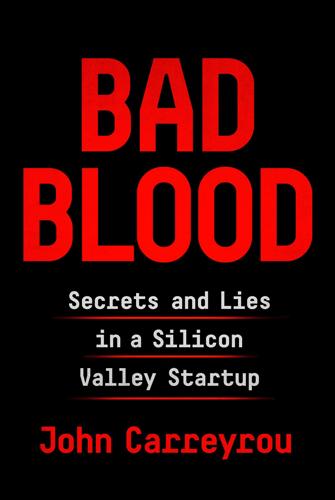
Bad Blood: Secrets and Lies in a Silicon Valley Startup
by
John Carreyrou
Published 20 May 2018
He’d gotten hooked on the subject after realizing that Safeway’s rising medical costs threatened to someday bankrupt the company if he didn’t do something to tame them. He’d pioneered innovative wellness and preventive health programs for his employees and become an advocate for universal health coverage, making him one of the only Republican CEOs to embrace many of the tenets of Obamacare. Like Dr. J, he was serious about his own health. He worked out on a treadmill at five every morning and lifted weights in the evenings after dinner. At Burd’s invitation, Elizabeth came to the supermarket chain’s headquarters in Pleasanton, on the other side of San Francisco Bay, to make a presentation.
…
Rather, it was what its name implied: an interview whose tone was usually friendly and nonconfrontational. Moreover, her message of bringing disruption to an old and inefficient industry was bound to play well with the Journal editorial page’s pro-business, anti-regulation ethos. Nor did Rago, who had won a Pulitzer Prize for tough editorials dissecting Obamacare, have any reason to suspect that what Elizabeth was telling him wasn’t true. During his visit to Palo Alto, she had shown him the miniLab and the six-blade side by side and he had volunteered for a demonstration, receiving what appeared to be accurate lab results in his email in-box before he even left the building.
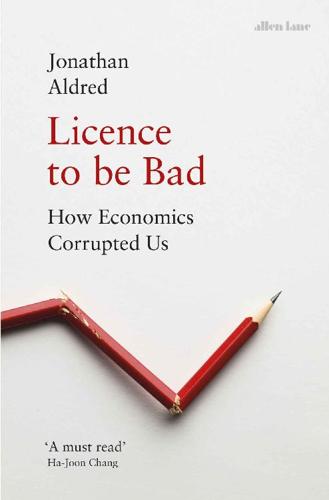
Licence to be Bad
by
Jonathan Aldred
Published 5 Jun 2019
For the US, see Stiglitz, 336–55. 51 Interview with Rupert Cornwell, Toronto Globe and Mail, 6 July 2002. 52 For more discussion and references see Mcquaig and Brooks, 121–3. 10. A TROUBLED RELATIONSHIP: MODERN ECONOMICS AND US 1 Avik, Roy, ‘ACA Architect: “The Stupidity of the American Voter” Led Us to Hide Obamacare’s True Costs from the Public’, Forbes, 10 November 2014. 2 Coyle, D. (2002), Sex, Drugs and Economics (New York: Texere), 226. 3 Caplan, B. (2007), The Myth of the Rational Voter (Princeton: Princeton University Press), 30. 4 Caplan, 201. 5 Sapienza, Paola, and Zingales, Luigi (2013), ‘Economic Experts versus Average Americans’, American Economic Review, 103 (3), 636–42. 6 Lazear, E. (2000), ‘Economic Imperialism’, Quarterly Journal of Economics, 115 (1), 99–144.
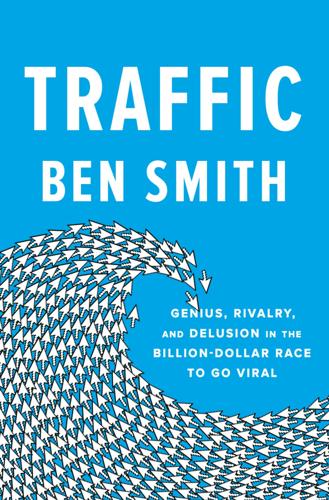
Traffic: Genius, Rivalry, and Delusion in the Billion-Dollar Race to Go Viral
by
Ben Smith
Published 2 May 2023
So I’d focused on winning the midafternoon, when office workers hit refresh on my blog at Politico. I’d persuaded a Politico techie to embed a bit of tracking software on my site so I wouldn’t have to wait for clunky updates from headquarters, and I watched it jealously, pleased when I had forty thousand views a day and thrilled when Drudge put me over one hundred thousand. But since the Obamacare battle of 2010, that traffic had plateaued. And I could see that all my sources, all my readers, even my crazy and abusive commenters, had moved on to Twitter, where I was spending more and more time too. I tried to explain some of this to Jonah, but I felt we parted in a state of mutual incomprehension.
…
See also MIT Media Lab “matchmaking” events, 15–16 Mayer, Kevin, 196, 199–200 Mayer, Marissa, 64–65 McCain, John, 167, 248–49, 251 McCain Institute, 250 McCarthy, Megan, 85 McCollum, Ashley, 193 McEnroe, John, 28 McInnes, Gavin, 97, 139, 184, 290 McKinsey consulting firm, 225 McNeill, Caitlin, 209–10 “meaningful social interactions” metric, 272–75, 284 Media Matters, 191 Meier, Barry, 249, 258 memes and Bannon’s political activism, 117 and BuzzFeed’s competition, 196, 284 and BuzzFeed’s journalism, 280 and BuzzFeed’s news and social content, 151, 167 and BuzzFeed’s traffic sources, 123, 126–27, 153 and Contagious Media Showdown, 48–49 and Gionet, 295 and political campaigns, 254 and right-wing media, 186, 188, 192 and social engagement on Facebook, 276–77 and “the Dress” viral post, 210–11 Mensch, Louise, 255–56 Mercer, Robert, 177 Merkley, Jeff, 295 MetaFilter, 3 #MeToo movement, 100 Millard, Wenda Harris, 106, 169 Miller, Katherine, 194, 240 Miller, Zeke, 166 Mini Cooper, 47 misogyny, 143, 184 MIT Media Lab, 1–2, 8, 11, 47 mobile phones, 151, 262 Modi, Narendra, 243 Morales, Oscar, 179, 240 Moreover, 16–18, 20, 51, 138 Morgan Stanley, 120 Morin, Dave, 216 Moss, Kate, 57 Mosseri, Adam, 211 Movable Type software, 34 MoveOn.org, 180–81, 237 Moyers, Bill, 98 MSN, 196 MSNBC, 255–56 MTV, 73, 110, 127–28, 154–55, 269 Mucha, Zenia, 117 mullet strategy, 79–80 Murdoch, Rupert, 53, 56, 255, 272 mybarackobama.com, 111, 114 MySpace, 93, 111 N NAACP, 135 National Review, 167 National Rifle Association (NRA), 25–28, 129, 187 native advertising, 130, 266 NBC, 268–69, 279–80, 283, 301, 303 NBCUniversal, 238, 300 Negations, 7 nepotism, 283 netroots, 29 Netscape, 207 New Black Panther Party, 187 Newmark, Craig, 281 new Right, 41, 43 NewsBlogger, 16 News Feed (Facebook) and BuzzFeed’s news and social content, 160–62 and BuzzFeed’s traffic growth, 205 and BuzzFeed’s traffic sources, 152 and funding for Ratter, 216 and origin of social media politics, 115 and social engagement on Facebook, 273 and “the Dress” viral post, 211 and Upworthy, 182–83 NewsGuild, 282 Newsweek, 33, 70 New Yorker, 207, 249 New York magazine, 54, 181 New York Observer, 57, 156 New York Post, 86 New York Times and anti-NRA efforts, 28–29 and BuzzFeed’s influence, 186 and BuzzFeed’s layoffs, 280–82 and BuzzFeed’s SPAC deal, 301 and BuzzFeed’s traffic growth, 167 and changing media environment, 218 and coverage of Trump presidency, 269 and Denton’s wedding, 213–14 and Disney’s bid to buy BuzzFeed, 196 and Facebook’s dominance of social media, 270 and Facebook’s political content, 238 on Gawker scandals, 54 and news aggregation–distribution startups, 15 Peretti’s address to board, 218–20 and political blogs, 33 and revival of legacy media, 220–30 and shifting strategy at Huffington Post, 81 and social engagement on Facebook, 275–76 and social media politics, 115 and splintering of internet media, 298 and the Steele Dossier, 248–49, 255, 256 and traffic monitoring tools, 105 Wirecutter acquisition, 287 Nguyen, Dao, 192, 244, 267, 288 Nielsen ratings, 150 Nike, 2–4, 7–8, 10–11, 27, 149, 288, 300, 302 Nisenholtz, Martin, 222, 223 Nolan, Hamilton, 176 NowThisNews, 283 “Numa Numa Dance” (video), 72 O Obama, Barack and Breitbart’s political background, 43 and BuzzFeed’s traffic sources, 155–56 and Facebook’s influence, 152, 177 and Facebook’s political content, 240 and Harman’s investment in Huffington Post, 120 and Harman’s support, 118–19 and Huffington Post’s political content, 107–8 and Huffington Post’s traffic, 70, 116 Iger’s access to, 197 and Lerer’s political clout, 149 Obamacare, 158 and online political activism, 132, 134–35, 152 and Pariser’s background, 180 presidential campaign, 102–3, 106, 109–15 and right-wing media, 186, 191 and shape of today’s internet media, 304 and the Steele Dossier, 250 Tkacik’s support for, 94, 97 and Wonkette’s political content, 31 Ocasio-Cortez, Alexandria, 277, 284 Occupy Wall Street, 166 Ochs, Adolph, 222 Oddjack blog, 55–56 OkCupid, 149 O’Keefe, James, 133–34, 135 O’Malley, Martin, 168 One D at a Time (Egan), 92 One Million Voices Against FARC, 113, 131–32 The Onion, 180 Openbook, 206 O’Reilly, Bill, 135 Oxfeld, Jesse, 56 Ozy, 195, 284–85, 286, 299 P pac-manning, 81–82 Page, Larry, 64 Palihotel, 197 Palin, Sarah, 82 Paltrow, Gwyneth, 46 paparazzi, 141–42 Pariser, Eli, 179–81, 183, 237, 269 Parsons, Richard, 25 Paul, Ron, 166 Paulson, Hank, 118 PayPal mafia, 85 paywalls, 224–26, 229, 269 Peacock streaming platform, 300 Pelosi, Nancy, 277 Peretti, Chelsea, 24, 47, 49, 58–59 Peretti, Della, 4–5 Peretti, Jonah acquisition of HuffPost, 286–87 and Arianna Huffington’s influence, 34 arrival in New York, 10, 12 and author’s background, 157–64, 247 background and education, 1–9 bet with Marlow, 1, 9, 49, 302–3 and Breitbart’s death, 178–79 and Breitbart’s departure from Huffington Post, 131–32 and Breitbart’s political background, 43 and Breitbart’s role at Huffington Post, 40 and BuzzFeed’s labor tensions, 280–86 and BuzzFeed’s news and social content, 167–69 and BuzzFeed’s office leases, 204–5, 319n204 and BuzzFeed’s SPAC deal, 300–303, 324n302 and BuzzFeed’s traffic, 122–29, 152–54, 154–56, 203–8 and competition with Huffington Post, 67–77 and Contagious Media Showdown, 51 and Daulerio’s background, 139 and Denton’s arrival in New York, 18 and Denton’s parties, 52, 58, 59 and devaluation of traffic, 264–70 and Disney’s bid to buy BuzzFeed, 196–202 and early virality projects, 24–29 and Facebook’s political content, 237–38, 244–45 and Gionet, 292 and Huffington Post’s investors, 116–18, 120 and Huffington Post’s launch, 44–50 and Huffington Post’s political content, 313n102 and Huffington Post’s strategy, 78–82 and launch of Upworthy, 180–83 meeting with New York Times board, 219–20, 222 and New York blogging scene, 21 Nike sweatshop email prank, 2–4, 7–8, 10–11, 27, 302 and political engagement, 102–8 and product marketing, 287–89 and revival of legacy media, 230 and right-wing media, 185, 191, 290 and rise of New York tech companies, 61–62 rivalry with Denton, 170–72, 177, 206, 315n126 and sale of Huffington Post, 147–51 and social engagement on Facebook, 272–74 and social media politics, 111 and the Steele Dossier, 248, 258 and “the Dress” viral post, 210–11 and venture capital investments, 213 and Zuckerberg’s purchase offer for BuzzFeed, 160–62, 165 Perpich, David, 220–27, 229–30 Perry, Rick, 158, 160 PETA, 153 Petraeus, David, 180 PewDiePie, 201 Philadelphia magazine, 138 photoshopping (photo retouching), 93 Pinterest, 182, 267, 269 Pitney, Nico, 159 plagiarism, 187, 193–94 Politico, 156, 158, 165, 180, 246 Pollak, Joel, 145 Poochareon, Ann, 47–48 Poole, Chris (“moot”), 117, 126–27, 290 populism, 166, 191, 238, 240, 243, 255, 302, 304 pornography, 57, 97–98.

The Death of Truth: Notes on Falsehood in the Age of Trump
by
Michiko Kakutani
Published 17 Jul 2018
” * * * — With tribal politics increasingly dominating Republican and Democratic politics, candidates scramble to lock down their party’s base during the primary process. Much of the Republican base now reacts instantly with knee-jerk denial when it comes to issues like gun violence, Obamacare, or global warming. Never mind statistics, expert analyses, carefully researched university or government studies, in some cases even their own self-interest—a lot of hard-core Trump supporters dismiss such evidence as never-to-be-trusted liberal or deep state politics. For these partisans, party loyalty and tribal politics matter more than facts, more than morality and decency: witness the Republicans who supported Senate candidate Roy Moore, who was accused of sexual misconduct against teenage girls, and the Trump supporters who booed John McCain, a genuine war hero, and viciously said God had punished him with cancer for standing up to Trump.

The Evolution of Everything: How New Ideas Emerge
by
Matt Ridley
He was going to ‘heal this nation’, close Guantánamo Bay, reform healthcare, bring peace to the Middle East. He was given the Nobel Peace Prize simply for having been elected. Amid such expectations he could not, poor chap, fail to disappoint. As Andrew Bacevich, a political scientist at Boston University, commented in 2013, amid the disappointments of Obamacare’s launch, ‘Obama himself may have turned out to be something of a dud, but the cult of presidential personality that has dominated American politics for decades now still persists.’ Doomed every four years to disappointment when a demigod turns out to have feet of clay, when the most powerful man in the world turns out not to have much power to change the world, the American people none the less never lose faith in the presidential religion.

Dark Towers: Deutsche Bank, Donald Trump, and an Epic Trail of Destruction
by
David Enrich
Published 18 Feb 2020
It was one that nobody knew about yet and that, even if someone had, would not have been easy to defuse or even control. The problem had a name: Val. Chapter 25 Poor Brilliant Bill The front page of The Wall Street Journal on July 23, 2014, featured five articles: one each about Israel, Obamacare, Russia, cocktail-scented household cleaning supplies, and a certain German bank. “Fed Raps Deutsche Bank for Shoddy Reporting” was the headline in the newspaper’s lower right corner. The Journal had obtained a letter sent to the bank months earlier by Daniel Muccia, a senior vice president at the Federal Reserve in New York, one of the people responsible for regulating Deutsche on a day-to-day basis.
…
See Banca Monte dei Paschi di Siena Moore, Simon, 287 Morandi, Michael, 208, 223, 226–27, 228, 230, 285 Morgan Grenfell, 24–25, 42–43 MortgageIT, 131–32, 136–37, 138, 139, 195, 340, 360 Mortgage Observer, 276–77 Moscow, John, 330–33 Moscow College of Agriculture, 213 Mountain Home Inn (Mill Valley), 256 Muccia, Daniel, 241–42, 249, 264 Mueller, Robert, 342–43 Museum Tower (New York City), 76, 95, 140 NatWest, 74 Nazi Party, 19–21, 23, 66–67, 182, 213 Neiberger, Christopher, 105, 105n Netanyahu, Benjamin, 159 New York blizzard of 1996, 71 New York Department of Financial Services, 236 New York Mercantile Exchange (NYMEX), 69 New York Observer, 172, 276, 277, 336–37 New York Palace Hotel, 14n New York Post, 301, 301n New York Rangers, 168 New York Stock Exchange, 95–96 New York Times, 140, 169, 307 New York Yankees, 168 Noble, Dan, 354 North American blizzard of 1996, 71 Northern Pacific Railway, 13, 14–15, 17–18 North Korea and Sony Pictures hack, 252–55, 281 Northwestern University, 32 Nothing Personal: A Novel of Wall Street (Offit), 308 Obama, Barack, 147, 176, 269–70, 339–40, 344 citizenship conspiracy theories, 176, 269–70 Obamacare, 241 Occupy Wall Street, 163–64 O’Connor, Sinéad, 90, 229 Office of the Comptroller of the Currency, 343 Offit, Avodah, 68 Offit, Kenneth, 68, 76 Offit, Mike, 68–72, 308 background of, 68–69 at Goldman Sachs, 69–72 Nothing Personal, 308 Trump campaign and presidency, 308–309, 334–36 Offit, Mike, at Deutsche Bank, 72–74, 170 firing, 80, 81, 308 hiring, 72–74 Trump loans, 75–80 Offit, Morris, 69 Offit, Sidney, 68, 78 O’Malley, Sean, 332 O’Neal, Stanley, 49, 86 Orange County bankruptcy, 40–41, 49, 295 Organisation for Economic Co-operation and Development (OECD), 146 Otting, Joseph, 343 OxyContin, 320 Palio di Siena, 154, 303 Panama Papers, 199, 341 Paul, Weiss, Rifkind, Wharton & Garrison, 237–38 PayPal, 322 Pelosi, Nancy, 353 Philipp, Michael, 55, 57, 63 appointment to vorstand, 85 hiring, 46–47 Mitchell and Estelle, 60–61 Mitchell’s death, 89 retirement, 101, 102 September 11 attacks (2001), 94–95 Pitt, Brad, 254 Postbank, 148, 234 Powell, Dina, 320 Presidential campaign of 2016.
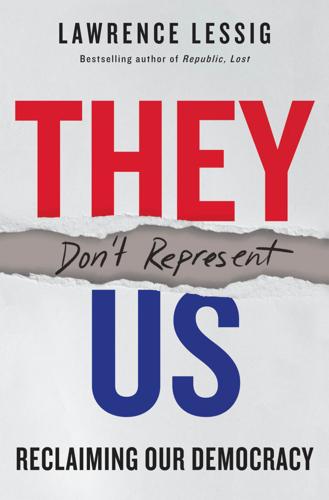
They Don't Represent Us: Reclaiming Our Democracy
by
Lawrence Lessig
Published 5 Nov 2019
He spoke about the corrupting influence of money in politics. The last time a GOP candidate for president did that (Buddy Roemer, 2012), he was pushed off the national debate stage. Trump had no time for free trade. No respect for interventionist foreign policy. He promised universal health care—better than Obamacare. He attacked Wall Street. He loved Russia. This gap signaled to the wonks that Trump could not be the Republican nominee. But of course, most Republican voters—like most voters generally—know nothing about “Republican policies.” Beyond vague clichés (which, like “fiscally responsible,” have no connection to reality), most Americans identify with identities, not policies; with tribes, not truth.81 Political parties are attitudes, not collections of party platforms.
…
Yes, the Democrats could hold the House. It is completely possible for the Democrats to take the Senate and the presidency. But if the Democratic Party tries to win platform reform the way they win the battles of ordinary politics—in the media environment that is today—then reform will be rendered as Obamacare. It will become the lightning rod of resistance and ultimately fail to bring about the changes that this democracy so desperately needs. It is possible to imagine something more. I could see a presidential candidate making a pledge equivalent to Nancy Pelosi’s—a kind of POTUS 1 to parallel HR 1.

Transaction Man: The Rise of the Deal and the Decline of the American Dream
by
Nicholas Lemann
Published 9 Sep 2019
Another urgent round of lobbying produced millions of dollars in emergency funding from the state, and using the breathing room these funds provided, the nuns sold the high school to the city, which turned it into a charter school, and the hospital to the Sinai Health System, a Jewish nonprofit organization that agreed to let Holy Cross remain a Catholic institution (that last arrangement had to go all the way to the Vatican for approval). Those moves, along with the passage of the federal law known as Obamacare, which enabled a lot of the hospital’s patients to pay for their medical care, made the hospital look safe, at least for a while. The only large new building in Chicago Lawn was the headquarters of the Chicago Police Department’s 8th District, which took up most of a block on Sixty-Third Street.
…
NBC Neal, Ann Collier Neal, Richard Neighborhood Housing Services of Chicago net neutrality Netscape networks; academic study of; as alternative to institutions and transactions; as disruptive; human need and; inequality maintained by; political application of; pre-digital; users vs. income of New Century New Deal; dismantling of; repudiation of New Democracy, The (Weyl) New Freedom New Nationalism New Republic, The New York New Yorker, The New York Times, The Nicklaus, Jack NIRA (National Industrial Recovery Act) Nissan Nixon, Richard Nobel laureates in economics Nonzero (Wright) normative, as economic term Nortel North American Free Trade Agreement nouveau riche Nudge (Thaler) Obama, Michelle Obama administration; auto industry and; donors to; during 2008 crisis; tech industry and Obamacare Obama Foundation Oberlin College Office of Management and Budget (OMB) oil prices old money O’Neill, Eugene online dating ontology “Open Letter on the Digital Economy” open marriage options market Orange County, CA O’Reilly, Tim Organization Man; rebellion against; replaced by network model; replaced by transaction model; see also corporations; General Motors; institutions Organization Man, The (Whyte) “Organization Study” (Sloan) OTC market; see also derivatives overnight lending systems Packard, David Page, Larry Painter, Patrick Palmer, Arnold PalmPilot Panetta, Leon paradigm shifts; in economics Park Forest, IL Partnoy, Frank Patil, DJ Patriot Act Paulson, Henry PayPal Pearl Harbor Pecora hearings Peltz, Nelson Penn Central Railroad pension funds; economy changed by; 401(k)s vs.; investing of; maintained by corporations Perot, Ross Perrin, Steve Peterson, Rafi Petito, Frank Pfleger, Michael phenomenology Phibro Pickens, T.

New Laws of Robotics: Defending Human Expertise in the Age of AI
by
Frank Pasquale
Published 14 May 2020
mc_cid=b2a6abaa55&mc_eid=aeb68cfb98; National Science and Technology Council, Networking and Information Technology Research and Development Subcommittee, The National Artificial Intelligence Research and Development Strategic Plan (Executive Office of the President, October 2016), https://www.whitehouse.gov/sites/default/files/whitehouse_files/microsites/ostp/NSTC/national_ai_rd_strategic_plan.pdf. 48. AI Now, The AI Now Report: The Social and Economic Implications of Artificial Intelligence Technologies in the Near-Term, September 22, 2016, https://ainowinstitute.org/AI_Now_2016_Report.pdf. 49. Dan Diamond, “Obamacare: The Secret Jobs Program,” Politico, July 13, 2016), http://www.politico.com/agenda/story/2016/07/what-is-the-effect-of-obamacare-economy-000164. 50. Alyssa Battistoni, “Living, Not Just Surviving,” Jacobin Magazine, August 2017, https://jacobinmag.com/2017/08/living-not-just-surviving/. 51. Eamonn Fingleton, In Praise of Hard Industries: Why Manufacturing, Not the Information Economy, Is the Key to Future Prosperity (New York: Houghton Mifflin, 1999); Andy Grove, “How America Can Create Jobs,” Bloomberg (July 1, 2010), https://www.bloomberg.com/news/articles/2010-07-01/andy-grove-how-america-can-create-jobs. 52.

The View From Flyover Country: Dispatches From the Forgotten America
by
Sarah Kendzior
Published 24 Apr 2015
We agree on guns—90 percent of Americans support expanded background checks on gun owners—and we largely agree on health care. Only one-third of Americans support repealing, defunding, or delaying President Obama’s health care law. These numbers decrease when the law is called by its name, the Affordable Care Act, instead of Obamacare. Seventy-two percent of Americans agree that there should not be a government shutdown. But our opinion does not matter. We are passive subjects, held hostage to a vindictive minority divorced from public will. Political scientist Daniel Drezner has noted that the government shutdown has no real precedent in American history.

The Rise and Fall of the Neoliberal Order: America and the World in the Free Market Era
by
Gary Gerstle
Published 14 Oct 2022
One such agitator, Andrew Breitbart, had in 2005 launched Breitbart.com, an irreverent right-wing digital news service that delighted in standing up for the little (white) guy and tilting against liberal establishment elites and their alleged allies in the ranks of the nation’s black and Latino poor.29 The Tea Party soared to national prominence and influence in August 2009 when its members stormed town hall meetings that had been organized by congressmen and -women to give constituents a chance to air their views on Obama’s controversial Affordable Care Act (ACA).30 Many Tea Party protestors saw “Obamacare” as the latest example of liberal elites aligning themselves with the black and Latino poor to impose a health care delivery system that the country’s good (white) citizens did not want. Tea Party activists also began to use their opposition to Obamacare to delegitimate Obama himself.31 This delegitimacy campaign rested on a spurious but serious charge: namely, that Obama had not been eligible to run for the presidency, let alone occupy the Oval Office.
…
But his eagerness to move beyond recovery efforts so quickly may have been a strategic error. It might have been wiser for him to have fought for achieving economic fairness and equality for the American people rather than on expanding social welfare. Though the Obama administration did push through Congress its major health insurance reform act, the Affordable Care Act, in spring 2010, it would take years for its effects to be felt. Meanwhile, economic inequality worsened. By 2012, the Dow Jones Industrial Average had regained the ground it had lost during the Great Recession of 2008–2009. Unemployment, on the other hand, remained far above where it had been in 2007.
…
One could do this work part-time or full-time and thus combine it with other activities—going to school, parenting, caring for an elderly parent—far more easily than if one had to report to work from nine to five, five days a week. One could labour from home, or from a nearby café wired for internet. The gig economy was laced with hopes about being one’s own boss, enjoying freedom on a daily basis, making money, and living the American dream. Obama’s Affordable Care Act facilitated the growth of this economy by making it possible for freelancers and small entrepreneurs to acquire all-important health care insurance at a reasonable cost. Neoliberalism had provided the conceptual underpinning for the gig economy by theorizing how individuals could transform themselves into entrepreneurs able to monetize material and personal assets in new ways.
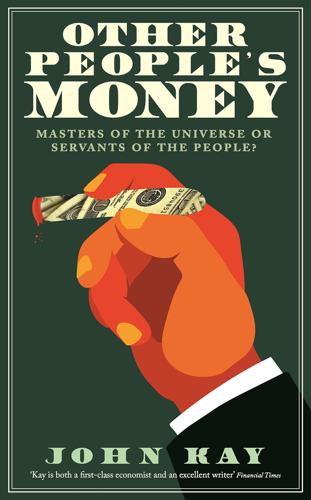
Other People's Money: Masters of the Universe or Servants of the People?
by
John Kay
Published 2 Sep 2015
‘No man is an island … therefore never send to know for whom the bell tolls; it tolls for thee.’33 Decent societies do not give people the option of being unable to afford necessary medical treatment, or of finding themselves destitute in old age, even if these options have in some sense been chosen by the individuals themselves. Or at least enough people feel that way to make it impossible, even if it were practicable, to implement solutions to the challenges of everyday risk based exclusively on personal choices and market solutions. ‘Obamacare’ – President Obama’s scheme for universal health provision in the USA – is the last skirmish in the battle to provide universal healthcare throughout the developed world. In other countries this issue is no longer contested, although the precise mechanisms and the levels of provision vary. Private health insurers, where they exist, are generally either social agencies or organisations that pool risks on behalf of employers.
…
.: Hyperion 220 Loomis, Carol 108 lotteries 65, 66, 68, 72 Lucas, Robert 40 Lynch, Dennios 108 Lynch, Peter 108, 109 M M-Pesa 186 Maastricht Treaty (1993) 243, 250 McCardie, Sir Henry 83, 84, 282, 284 McGowan, Harry 45 Machiavelli, Niccolò 224 McKinley, William 44 McKinsey 115, 126 Macy’s department store 46 Madoff, Bernard 29, 118, 131, 132, 177, 232, 293 Madoff Securities 177 Magnus, King of Sweden 196 Manhattan Island, New York: and Native American sellers 59, 63 Manne, Henry 46 manufacturing companies, rise of 45 Marconi 48 marine insurance 62, 63 mark-to-market accounting 126, 128–9, 320n22 mark-to-model approach 128–9, 320n21 Market Abuse Directive (MAD) 226 market economy 4, 281, 302, 308 ‘market for corporate control, the’ 46 market risk 97, 98, 177, 192 market-makers 25, 28, 30, 31 market-making 49, 109, 118, 136 Markets in Financial Instruments Directive (MIFID) 226 Markkula, Mike 162, 166, 167 Markopolos, Harry 232 Markowitz, Harry 69 Markowitz model of portfolio allocation 68–9 Martin, Felix 323n5 martingale 130, 131, 136, 139, 190 Marx, Groucho 252 Marx, Karl 144, 145 Capital 143 Mary Poppins (film) 11, 12 MasterCard 186 Masters, Brooke 120 maturity transformation 88, 92 Maxwell, Robert 197, 201 Mayan civilisation 277 Meade, James 263 Means, Gardiner 51 Meeker, Mary 40, 167 Melamed, Leo 19 Mercedes 170 merchant banks 25, 30, 33 Meriwether, John 110, 134 Merkel, Angela 231 Merrill Lynch 135, 199, 293, 300 Merton, Robert 110 Metronet 159 Meyer, André 205 MGM 33 Microsoft 29, 167 middleman, role of the 80–87 agency and trading 82–3 analysts 86 bad intermediaries 81–2 from agency to trading 84–5 identifying goods and services required 80, 81 logistics 80, 81 services from financial intermediaries 80–81 supply chain 80, 81 transparency 84 ‘wisdom of crowds’ 86–7 Midland Bank 24 Milken, Michael 46, 292 ‘millennium bug’ 40 Miller, Bill 108, 109 Minuit, Peter 59, 63 Mises, Ludwig von 225 Mittelstand (medium-size business sector) 52, 168, 169, 170, 171, 172 mobile banking apps 181 mobile phone payment transfers 186–7 Modigliani-Miller theorem 318n9 monetarism 241 monetary economics 5 monetary policy 241, 243, 245, 246 money creation 88 money market fund 120–21 Moneyball phenomenon 165 monopolies 45 Monte Carlo casino 123 Monte dei Paschi Bank of Siena 24 Montgomery Securities 167 Moody’s rating agency 21, 248, 249, 313n6 moral hazard 74, 75, 76, 92, 95, 256, 258 Morgan, J.P. 44, 166, 291 Morgan Stanley 25, 40, 130, 135, 167, 268 Morgenthau, District Attorney Robert 232–3 mortality tables 256 mortgage banks 27 mortgage market fluctuation in mortgage costs 148 mechanised assessment 84–5 mortgage-backed securities 20, 21, 40, 85, 90, 100, 128, 130, 150, 151, 152, 168, 176–7, 284 synthetic 152 Mozilo, Angelo 150, 152, 154, 293 MSCI World Bank Index 135 muckraking 44, 54–5, 79 ‘mugus’ 118, 260 multinational companies, and diversification 96–7 Munger, Charlie 127 Munich, Germany 62 Munich Re 62 Musk, Elon 168 mutual funds 27, 108, 202, 206 mutual societies 30 mutualisation 79 mutuality 124, 213 ‘My Way’ (song) 72 N Napoleon Bonaparte 26 Napster 185 NASA 276 NASDAQ 29, 108, 161 National Economic Council (US) 5, 58 National Employment Savings Trust (NEST) 255 National Institutes of Health 167 National Insurance Fund (UK) 254 National Provincial Bank 24 National Science Foundation 167 National Westminster Bank 24, 34 Nationwide 151 Native Americans 59, 63 Nazis 219, 221 neo-liberal economic policies 39, 301 Netjets 107 Netscape 40 Neue Markt 170 New Deal 225 ‘new economy’ bubble (1999) 23, 34, 40, 42, 98, 132, 167, 199, 232, 280 new issue market 112–13 New Orleans, Louisiana: Hurricane Katrina disaster (2005) 79 New Testament 76 New York Stock Exchange 26–7, 28, 29, 31, 49, 292 New York Times 283 News of the World 292, 295 Newton, Isaac 35, 132, 313n18 Niederhoffer, Victor 109 NINJAs (no income, no job, no assets) 222 Nixon, Richard 36 ‘no arbitrage’ condition 69 non-price competition 112, 219 Norman, Montagu 253 Northern Rock 89, 90–91, 92, 150, 152 Norwegian sovereign wealth fund 161, 253 Nostradamus 274 O Obama, Barack 5, 58, 77, 194, 271, 301 ‘Obamacare’ 77 Occidental Petroleum 63 Occupy movement 52, 54, 312n2 ‘Occupy Wall Street’ slogan 305 off-balance-sheet financing 153, 158, 160, 210, 250 Office of Thrift Supervision 152–3 oil shock (1973–4) 14, 36–7, 89 Old Testament 75–6 oligarchy 269, 302–3, 305 oligopoly 118, 188 Olney, Richard 233, 237, 270 open market operations 244 options 19, 22 Organisation for Economic Co-operation and Development (OECD) 263 Osborne, George 328n19 ‘out of the money option’ 102, 103 Overend, Gurney & Co. 31 overseas assets and liabilities 179–80, 179 owner-managed businesses 30 ox parable xi-xii Oxford University 12 P Pacific Gas and Electric 246 Pan Am 238 Paris financial centre 26 Parliamentary Commission on Banking Standards 295 partnerships 30, 49, 50, 234 limited liability 313n14 Partnoy, Frank 268 passive funds 99, 212 passive management 207, 209, 212 Patek Philippe 195, 196 Paulson, Hank 300 Paulson, John 64, 109, 115, 152, 191, 284 ‘payment in kind’ securities 131 payment protection policies 198 payments system 6, 7, 25, 180, 181–8, 247, 259–60, 281, 297, 306 PayPal 167, 168, 187 Pecora, Ferdinand 25 Pecora hearings (1932–34) 218 peer-to-peer lending 81 pension funds 29, 98, 175, 177, 197, 199, 200, 201, 208, 213, 254, 282, 284 pension provision 78, 253–6 pension rights 53, 178 Perkins, Charles 233 perpetual inventory method 321n4 Perrow, Charles 278, 279 personal financial management 6, 7 personal liability 296 ‘petrodollars’ 14, 37 Pfizer 96 Pierpoint Morgan, J. 165 Piper Alpha oil rig disaster (1987) 63 Ponzi, Charles 131, 132 Ponzi schemes 131, 132, 136, 201 pooled investment funds 197 portfolio insurance 38 Potts, Robin, QC 61, 63, 72, 119, 193 PPI, mis-selling of 296 Prebble, Lucy: ENRON 126 price competition 112, 219 price discovery 226 price mechanism 92 Prince, Chuck 34 private equity 27, 98, 166, 210 managers 210, 289 private insurance 76, 77 private sector 78 privatisation 39, 78, 157, 158, 258, 307 probabilistic thinking 67, 71, 79 Procter & Gamble 69, 108 product innovation 13 property and infrastructure 154–60 protectionism 13 Prudential 200 public companies, conversion to 18, 31–2, 49 public debt 252 public sector 78 Q Quandt, Herbert 170 Quandt Foundation 170 quantitative easing 245, 251 quantitative style 110–11 quants 22, 107, 110 Quattrone, Frank 167, 292–3 queuing 92 Quinn, Sean 156 R railroad regulation 237 railway mania (1840s) 35 Raines, Franklin 152 Rajan, Raghuram 56, 58, 79, 102 Rakoff, Judge Jed 233, 294, 295 Ramsey, Frank 67, 68 Rand, Ayn 79, 240 ‘random walk’ 69 Ranieri, Lew 20, 22, 106–7, 134, 152 rating agencies 21, 41, 84–5, 97, 151, 152, 153, 159, 249–50 rationality 66–7, 68 RBS see Royal Bank of Scotland re-insurance 62–3 Reagan, Ronald 18, 23, 54, 59, 240 real economy 7, 18, 57, 143, 172, 190, 213, 226, 239, 271, 280, 288, 292, 298 redundancy 73, 279 Reed, John 33–4, 48, 49, 50, 51, 242, 293, 314n40 reform 270–96 other people’s money 282–5 personal responsibility 292–6 principles of 270–75 the reform of structure 285–92 robust systems and complex structures 276–81 regulation 215, 217–39 the Basel agreements 220–25 and competition 113 the origins of financial regulation 217–19 ‘principle-based’ 224 the regulation industry 229–33 ‘rule-based’ 224 securities regulation 225–9 what went wrong 233–9 ‘Regulation Q’ (US) 13, 14, 20, 28, 120, 121 regulatory agencies 229, 230, 231, 235, 238, 274, 295, 305 regulatory arbitrage 119–24, 164, 223, 250 regulatory capture 237, 248, 262 Reich, Robert 265, 266 Reinhart, C.M. 251 relationship breakdown 74, 79 Rembrandts, genuine/fake 103, 127 Renaissance Technologies 110, 111, 191 ‘repo 105’ arbitrage 122 repo agreement 121–2 repo market 121 Reserve Bank of India 58 Reserve Primary Fund 121 Resolution Trust Corporation 150 retirement pension 78 return on equity (RoE) 136–7, 191 Revelstoke, first Lord 31 risk 6, 7, 55, 56–79 adverse selection and moral hazard 72–9 analysis by ‘ketchup economists’ 64 chasing the dream 65–72 Geithner on 57–8 investment 256 Jackson Hole symposium 56–7 Kohn on 56 laying bets on the interpretation of incomplete information 61 and Lloyd’s 62–3 the LMX spiral 62–3, 64 longevity 256 market 97, 98 mitigation 297 randomness 76 socialisation of individual risks 61 specific 97–8 risk management 67–8, 72, 79, 137, 191, 229, 233, 234, 256 risk premium 208 risk thermostat 74–5 risk weighting 222, 224 risk-pooling 258 RJR Nabisco 46, 204 ‘robber barons’ 44, 45, 51–2 Robertson, Julian 98, 109, 132 Robertson Stephens 167 Rockefeller, John D. 44, 52, 196 Rocket Internet 170 Rogers, Richard 62 Rogoff, K.S. 251 rogue traders 130, 300 Rohatyn, Felix 205 Rolls-Royce 90 Roman empire 277, 278 Rome, Treaty of (1964) 170 Rooney, Wayne 268 Roosevelt, Franklin D. v, 25, 235 Roosevelt, Theodore 43–4, 235, 323n1 Rothschild family 217 Royal Bank of Scotland 11, 12, 14, 24, 26, 34, 78, 91, 103, 124, 129, 135, 138, 139, 211, 231, 293 Rubin, Robert 57 In an Uncertain World 67 Ruskin, John 60, 63 Unto this Last 56 Russia defaults on debts 39 oligarchies 303 Russian Revolution (1917) 3 S Saes 168 St Paul’s Churchyard, City of London 305 Salomon Bros. 20, 22, 27, 34, 110, 133–4 ‘Salomon North’ 110 Salz Review: An Independent Review of Barclays’ Business Practices 217 Samuelson, Paul 208 Samwer, Oliver 170 Sarkozy, Nicolas 248, 249 Savage, L.J. 67 Scholes, Myron 19, 69, 110 Schrödinger’s cat 129 Scottish Parliament 158 Scottish Widows 26, 27, 30 Scottish Widows Fund 26, 197, 201, 212, 256 search 195, 209, 213 defined 144 and the investment bank 197 Second World War 36, 221 secondary markets 85, 170, 210 Securities and Exchange Commission (SEC) 20, 64, 126, 152, 197, 225, 226, 228, 230, 232, 247, 292, 293, 294, 313n6 securities regulation 225–9 securitisation 20–21, 54, 100, 151, 153, 164, 169, 171, 222–3 securitisation boom (1980s) 200 securitised loans 98 See’s Candies 107 Segarra, Carmen 232 self-financing companies 45, 179, 195–6 sell-side analysts 199 Sequoia Capital 166 Shad, John S.R. 225, 228–9 shareholder value 4, 45, 46, 50, 211 Sharpe, William 69, 70 Shell 96 Sherman Act (1891) 44 Shiller, Robert 85 Siemens 196 Siemens, Werner von 196 Silicon Valley, California 166, 167, 168, 171, 172 Simon, Hermann 168 Simons, Jim 23, 27, 110, 111–12, 124 Sinatra, Frank 72 Sinclair, Upton 54, 79, 104, 132–3 The Jungle 44 Sing Sing maximum-security gaol, New York 292 Skilling, Jeff 126, 127, 128, 149, 197, 259 Slim, Carlos 52 Sloan, Alfred 45, 49 Sloan Foundation 49 small and medium-size enterprises (SMEs), financing 165–72, 291 Smith, Adam 31, 51, 60 The Wealth of Nations v, 56, 106 Smith, Greg 283 Smith Barney 34 social security 52, 79, 255 Social Security Trust Fund (US) 254, 255 socialism 4, 225, 301 Société Générale 130 ‘soft commission’ 29 ‘soft’ commodities 17 Soros, George 23, 27, 98, 109, 111–12, 124, 132 South Sea Bubble (18th century) 35, 132, 292 sovereign wealth funds 161, 253 Soviet empire 36 Soviet Union 225 collapse of 23 lack of confidence in supplies 89–90 Spain: property bubble 42 Sparks, D.L. 114, 283, 284 specific risk 97–8 speculation 93 Spitzer, Eliot 232, 292 spread 28, 94 Spread Networks 2 Square 187 Stamp Duty 274 Standard & Poor’s rating agency 21, 99, 248, 249, 313n6 Standard Life 26, 27, 30 standard of living 77 Standard Oil 44, 196, 323n1 Standard Oil of New Jersey (later Exxon) 323n1 Stanford University 167 Stanhope 158 State Street 200, 207 sterling devaluation (1967) 18 stewardship 144, 163, 195–203, 203, 208, 209, 210, 211, 213 Stewart, Jimmy 12 Stigler, George 237 stock exchanges 17 see also individual stock exchanges stock markets change in organisation of 28 as a means of taking money out of companies 162 rise of 38 stock-picking 108 stockbrokers 16, 25, 30, 197, 198 Stoll, Clifford 227–8 stone fei (in Micronesia) 323n5 Stone, Richard 263 Stora Enso 196 strict liability 295–6 Strine, Chancellor Leo 117 structured investment vehicles (SIVs) 158, 223 sub-prime lending 34–5, 75 sub-prime mortgages 63, 75, 109, 149, 150, 169, 244 Summers, Larry 22, 55, 73, 119, 154, 299 criticism of Rajan’s views 57 ‘ketchup economics’ 5, 57, 69 support for financialisation 57 on transformation of investment banking 15 Sunday Times 143 ‘Rich List’ 156 supermarkets: financial services 27 supply chain 80, 81, 83, 89, 92 Surowiecki, James: The Wisdom of Crowds xi swap markets 21 SWIFT clearing system 184 Swiss Re 62 syndication 62 Syriza 306 T Taibbi, Matt 55 tailgating 102, 103, 104, 128, 129, 130, 136, 138, 140, 152, 155, 190–91, 200 Tainter, Joseph 277 Taleb, Nassim Nicholas 125, 183 Fooled by Randomness 133 Tarbell, Ida 44, 54 TARGET2 system 184, 244 TARP programme 138 tax havens 123 Taylor, Martin 185 Taylor Bean and Whitaker 293 Tea Party 306 technological innovation 13, 185, 187 Tel Aviv, Israel 171 telecommunications network 181, 182 Tesla Motors 168 Tetra 168 TfL 159 Thai exchange rate, collapse of (1997) 39 Thain, John 300 Thatcher, Margaret 18, 23, 54, 59, 148, 151, 157 Thiel, Peter 167 Third World debt problem 37, 131 thrifts 25, 149, 150, 151, 154, 174, 290, 292 ticket touts 94–5 Tobin, James 273 Tobin tax 273–4 Tolstoy, Count Leo 97 Tonnies, Ferdinand 17 ‘too big to fail’ 75, 140, 276, 277 Tourre, Fabrice ‘Fabulous Fab’ 63–4, 115, 118, 232, 293, 294 trader model 82, 83 trader, rise of the 16–24 elements of the new trading culture 21–2 factors contributing to the change 17–18 foreign exchange 18–19 from personal relationships to anonymous markets 17 hedge fund managers 23 independent traders 22–3 information technology 19–20 regulation 20 securitisation 20–21 shift from agency to trading 16 trading as a principal source of revenue and remuneration 17 trader model 82, 83 ‘trading book’ 320n20 transparency 29, 84, 205, 210, 212, 226, 260 Travelers Group 33, 34, 48 ‘treasure islands’ 122–3 Treasuries 75 Treasury (UK) 135, 158 troubled assets relief program 135 Truman, Harry S. 230, 325n13 trust 83–4, 85, 182, 213, 218, 260–61 Tuckett, David 43, 71, 79 tulip mania (1630s) 35 Turner, Adair 303 TWA 238 Twain, Mark: Pudd’nhead Wilson’s Calendar 95–6 Twitter 185 U UBS 33, 134 UK Independence Party 306 unemployment 73, 74, 79 unit trusts 202 United States global dominance of the finance industry 218 house prices 41, 43, 149, 174 stock bubble (1929) 201 universal banks 26–7, 33 University of Chicago 19, 69 ‘unknown unknowns’ 67 UPS delivery system 279–80 US Defense Department 167 US Steel 44 US Supreme Court 228, 229, 304 US Treasury 36, 38, 135 utility networks 181–2 V value discovery 226–7 value horizon 109 Van Agtmael, Antoine 39 Vanderbilt, Cornelius 44 Vanguard 200, 207, 213 venture capital 166 firms 27, 168 venture capitalists 171, 172 Vickers Commission 194 Viniar, David 204–5, 233, 282, 283, 284 VISA 186 volatility 85, 93, 98, 103, 131, 255 Volcker, Paul 150, 181 Volcker Rule 194 voluntary agencies 258 W wagers and credit default swaps 119 defined 61 at Lloyd’s coffee house 71–2 lottery tickets 65 Wall Street, New York 1, 16, 312n2 careers in 15 rivalry with London 13 staffing of 217 Wall Street Crash (1929) 20, 25, 27, 36, 127, 201 Wall Street Journal 294 Wallenberg family 108 Walmart 81, 83 Warburg 134 Warren, Elizabeth 237 Washington consensus 39 Washington Mutual 135, 149 Wasserstein, Bruce 204, 205 Watergate affair 240 ‘We are the 99 per cent’ slogan 52, 305 ‘We are Wall Street’ 16, 55, 267–8, 271, 300, 301 Weber, Max 17 Weill, Sandy 33–4, 35, 48–51, 55, 91, 149, 293, 314n40 Weinstock, Arnold 48 Welch, Jack 45–6, 48, 50, 52, 126, 314n40 WestLB 169 Westminster Bank 24 Whitney, Richard 292 Wilson, Harold 18 windfall payments 14, 32, 127, 153, 290 winner’s curse 103, 104, 156, 318n11 Winslow Jones, Alfred 23 Winton Capital 111 Wolfe, Humbert 7 The Uncelestial City 1 Wolfe, Tom 268 The Bonfire of the Vanities 16, 22 women traders 22 Woodford, Neil 108 Woodward, Bob: Maestro 240 World Bank 14, 220 World.Com bonds 197 Wozniak, Steve 162 Wriston, Walter 37 Y Yellen, Janet 230–31 Yom Kippur War (1973) 36 YouTube 185 Z Zurich, Switzerland 62

Who Owns the Future?
by
Jaron Lanier
Published 6 May 2013
So there will be plenty of dead-end jobs without security or benefits.* This will be despite the fact that the humans in the caregiving loop might be absolutely essential to the well-being of those being cared for. *This is being written in America, in advance of the 2012 election. It is possible that “Obamacare” will stand or fall, but in either case, the larger pattern described here will persist unless it is addressed more fundamentally than by health-care finance reform. Meanwhile, the programming of caregiving robots will be utterly dependent on cloud software that in turn will be dependent on observing millions of situations and outcomes.
…
M., 129–30, 261, 328 “Forum,” 214 Foucault, Michel, 308n 4chan, 335 4′33″ (Cage), 212 fractional reserve system, 33 Franco, Francisco, 159–60 freedom, 13–15, 32–33, 90–92, 277–78, 336 freelancing, 253–54 Free Print Shop, 228 “free rise,” 182–89, 355 free speech, 223, 225 free will, 166–68 “friction,” 179, 225, 230, 235, 354 Friendster, 180, 181 Fukuyama, Francis, 165, 189 fundamentalism, 131, 193–94 future: chaos in, 165–66, 273n, 331 economic analysis of, 1–3, 15, 22, 37, 38, 40–41, 42, 67, 122, 143, 148–52, 153, 155–56, 204, 208, 209, 236, 259, 274, 288, 298–99, 311, 362n, 363 humanistic economy for, 194, 209, 233–351 361–367 “humors” of, 124–40, 230 modern conception of, 123–40, 193–94, 255 natural basis of, 125, 127, 128–29 optimism about, 32–35, 45, 130, 138–40, 218, 230n, 295 politics of, 13–18, 22–25, 85, 122, 124–26, 128, 134–37, 199–234, 295–96, 342 technological trends in, 7–18, 21, 53–54, 60–61, 66–67, 85–86, 87, 97–98, 129–38, 157–58, 182, 188–90, 193–96, 217 utopian conception of, 13–18, 21, 30, 31, 37–38, 45–46, 96, 128, 130, 167, 205, 207, 265, 267, 270, 283, 290, 291, 308–9, 316 future-oriented money, 32–34, 35 Gadget, 186 Gallant, Jack, 111–12 games, 362, 363 Gates, Bill, 93 Gattaca, 130 Gawker, 118n Gelernter, David, 313 “general” machines, 158 General Motors, 56–57 general relativity theory, 167n Generation X, 346 genetic engineering, 130 genetics, 109–10, 130, 131, 146–47, 329, 366 genomics, 109–10, 146–47, 366 Germany, 45 Ghostery, 109 ghost suburbs, 296 Gibson, William, 137, 309 Gizmodo, 117–18 Global Business Network (GBN), 214–15 global climate change, 17, 32, 53, 132, 133, 134, 203, 266, 295, 296–97, 301–2, 331 global economy, 33n, 153–56, 173, 201, 214–15, 280 global village, 201 God, 29, 30–31, 139 Golden Goblet, 121, 121, 175, 328 golden rule, 335–36 gold standard, 34 Google, 14, 15, 19, 69, 74, 75–76, 90, 94, 106, 110, 120, 128, 153, 154, 170, 171, 174, 176, 180, 181–82, 188, 191, 192, 193, 199–200, 201, 209, 210, 217, 225, 227, 246, 249, 265, 267, 272, 278, 280, 286, 305n, 307, 309–10, 322, 325, 330, 344, 348, 352 Google Goggles, 309–10 Googleplex, 199–200 goops, 85–89, 99 Gore, Al, 80n Graeber, David, 30n granularity, 277 graph-shaped networks, 241, 242–43 Great Britain, 200 Great Depression, 69–70, 75, 135, 299 Great Recession, 31, 54, 60, 76–77, 204, 311, 336–37 Greece, 22–25, 45, 125 Grigorov, Mario, 267 guitars, 154 guns, 310–11 Gurdjieff, George, 215, 216 gurus, 211–13 hackers, 14, 82, 265, 306–7, 345–46 Hardin, Garrett, 66n Hartmann, Thom, 33n Hayek, Friedrich, 204 health care, 66–67, 95, 98–99, 100, 132–33, 153–54, 249, 253, 258, 337, 346 health insurance, 66–67, 95, 98–99, 100, 153–54 Hearts and Minds, 353n heart surgery, 11–13, 17, 18, 157–58 heat, 56 hedge funds, 69, 106, 137 Hephaestus, 22, 23 high-dimensional problems, 145 high-frequency trading, 56, 76–78, 154 highways, 79–80, 345 Hinduism, 214 Hippocrates, 124n Hiroshima bombing (1945), 127 Hollywood, 204, 206, 242 holographic radiation, 11 Homebrew Club, 228 homelessness, 151 homeopathy, 131–32 Homer, 23, 55 Honan, Mat, 82 housing market, 33, 46, 49–52, 61, 78, 95–96, 99, 193, 224, 227, 239, 245, 255, 274n, 289n, 296, 298, 300, 301 HTML, 227, 230 Huffington Post, 176, 180, 189 human agency, 8–21, 50–52, 85, 88, 91, 124–40, 144, 165–66, 175–78, 191–92, 193, 217, 253–64, 274–75, 283–85, 305–6, 328, 341–51, 358–60, 361, 362, 365–67 humanistic information economy, 194, 209, 233–351 361–367 human reproduction, 131 humors (tropes), 124–40, 157, 170, 230 hunter-gatherer societies, 131, 261–62 hyperefficient markets, 39, 42–43 hypermedia, 224–30, 245 hyper-unemployment, 7–8 hypotheses, 113, 128, 151 IBM, 191 identity, 14–15, 82, 124, 173–74, 175, 248–51, 283–90, 305, 306, 307, 315–16, 319–21 identity theft, 82, 315–16 illusions, 55, 110n, 120–21, 135, 154–56, 195, 257 immigration, 91, 97, 346 immortality, 193, 218, 253, 263–64, 325–31, 367 imports, 70 income levels, 10, 46–47, 50–54, 152, 178, 270–71, 287–88, 291–94, 338–39, 365 incrementalism, 239–40 indentured servitude, 33n, 158 India, 54, 211–13 industrialization, 49, 83, 85–89, 123, 132, 154, 343 infant mortality rates, 17, 134 infinity, 55–56 inflation, 32, 33–34 information: age of, 15–17, 42, 166, 241 ambiguity of, 41, 53–54, 155–56 asymmetry of, 54–55, 61–66, 118, 188, 203, 246–48, 285–88, 291–92, 310 behavior influenced by, 32, 121, 131, 173–74, 286–87 collection of, 61–62, 108–9 context of, 143–44, 178, 188–89, 223–24, 225, 245–46, 247, 248–51, 338, 356–57, 360 correlations in, 75–76, 114–15, 192, 274–75 for decision-making, 63–64, 184, 266, 269–75, 284n digital networks for, see digital networks duplication of, 50–52, 61, 74, 78, 88, 223–30, 239–40, 253–64, 277, 317–24, 335, 349 economic impact of, 1–3, 8–9, 15–17, 18, 19–20, 21, 35, 60–61, 92–97, 118, 185, 188, 201, 207, 209, 241–43, 245–46, 246–48, 256–58, 263, 283–87, 291–303, 331, 361–67 in education, 92–97 encrypted, 14–15, 175, 239–40, 305–8, 345 false, 119–21, 186, 275n, 287–88, 299–300 filters for, 119–20, 200, 225, 356–57 free, 7–9, 15–16, 50–52, 61, 74, 78, 88, 214, 223–30, 239–40, 246, 253–64, 277, 317–24, 335, 349 history of, 29–31 human agency in, 22–25, 69–70, 120–21, 122, 190–91 interpretation of, 29n, 114–15, 116, 120–21, 129–32, 154, 158, 178, 183, 184, 188–89 investment, 59–60, 179–85 life cycle of, 175–76 patterns in, 178, 183, 184, 188–89 privacy of, see privacy provenance of, 245–46, 247, 338 sampling of, 71–72, 191, 221, 224–26, 259 shared, 50–52, 61, 74, 78, 88, 100, 223–30, 239–40, 253–64, 277, 317–24, 335, 349 signals in, 76–78, 148, 293–94 storage of, 29, 167n, 184–85; see also cloud processors and storage; servers superior, 61–66, 114, 128, 143, 171, 246–48 technology of, 7, 32–35, 49, 66n, 71–72, 109, 110, 116, 120, 125n, 126, 135, 136, 254, 312–16, 317 transparency of, 63–66, 74–78, 118, 190–91, 306–7 two-way links in, 1–2, 227, 245, 289 value of, 1–3, 15–16, 20, 210, 235–43, 257–58, 259, 261–63, 271–75, 321–24, 358–60 see also big data; data infrastructure, 79–80, 87, 179, 201, 290, 345 initial public offerings (IPOs), 103 ink, 87, 331 Inner Directeds, 215 Instagram, 2, 53 instant prices, 272, 275, 288, 320 insurance industry, 44, 56, 60, 66–67, 95, 98–99, 100, 153–54, 203, 306 intellectual property, 44, 47, 49, 60, 61, 96, 102, 183, 204, 205–10, 223, 224–26, 236, 239–40, 246, 253–64 intelligence agencies, 56, 61, 199–200, 291, 346 intelligence tests, 39, 40 interest rates, 81 Internet: advertising on, 14, 20, 24, 42, 66, 81, 107, 109, 114, 129, 154, 169–74, 177, 182, 207, 227, 242, 266–67, 275, 286, 291, 322–24, 347–48, 354, 355 anonymity of, 172, 248–51, 283–90 culture of, 13–15, 25 development of, 69, 74, 79–80, 89, 129–30, 159, 162, 190–96, 223, 228 economic impact of, 1–2, 18, 19–20, 24, 31, 43, 60–66, 79–82, 117, 136–37, 169–74, 181, 186 employment and, 2, 7–8, 56–57, 60, 71–74, 79, 117, 123, 135, 149, 178, 201, 257–58 file sharing on, 50–52, 61, 74, 78, 88, 100, 223–30, 239–40, 253–64, 277, 317–24, 335, 349 free products and services of, 7n, 10, 60–61, 73, 81, 82, 90, 94–96, 97, 128, 154, 176, 183, 187, 201, 205–10, 234, 246–48, 253–64, 283–88, 289, 308–9, 317–24, 337–38, 348–50, 366 human contributions to, 19–21, 128, 129–30, 191–92, 253–64 identity in, 14–15, 82, 173–74, 175, 283–90, 315–16 investment in, 117–20, 181 legal issues in, 63, 79–82, 204, 206, 318–19 licensing agreements for, 79–82 as network, 2–3, 9, 11, 12, 14, 15, 16, 17, 19–21, 31, 49, 50–51, 53, 54–55, 56, 57, 75, 92, 129–30, 143–48, 228–29, 259, 286–87, 308–9 political aspect of, 13–15, 205–10 search engines for, 51, 60, 70, 81, 120, 191, 267, 289, 293; see also Google security of, 14–15, 175, 239–40, 305–8, 345 surveillance of, 1–2, 11, 14, 50–51, 64, 71–72, 99, 108–9, 114–15, 120–21, 152, 177n, 199–200, 201, 206–7, 234–35, 246, 272, 291, 305, 309–11, 315, 316, 317, 319–24 transparency of, 63–66, 176, 205–6, 278, 291, 308–9, 316, 336 websites on, 80, 170, 200, 201, 343 Internet2, 69 Internet service providers (ISPs), 171–72 Interstate Highway System, 79–80, 345 “In-valid,” 130 inventors, 117–20 investment, financial, 45, 50, 59–67, 74–80, 115, 116–20, 155, 179–85, 208, 218, 257, 258, 277–78, 298, 301, 348, 350 Invisible Hand humor, 126, 128 IP addresses, 248 iPads, 267 Iran, 199, 200 irony, 130 Islam, 184 Italy, 133 Jacquard programmable looms, 23n “jailbreaking,” 103–4 Japan, 85, 97, 98, 133 Jeopardy, 191 Jeremijenko, Natalie, 302 jingles, 267 jobs, see employment Jobs, Steve, 93, 166n, 192, 358 JOBS Act (2012), 117n journalism, 92, 94 Kapital, Das (Marx), 136 Keynesianism, 38, 151–52, 204, 209, 274, 288 Khan Academy, 94 Kickstarter, 117–20, 186–87, 343 Kindle, 352 Kinect, 89n, 265 “Kirk’s Wager,” 139 Klout, 365 Kodak, 2, 53 Kottke, Dan, 211 KPFA, 136 Kurzweil, Ray, 127, 325, 327 Kushner, Tony, 165, 189 LaBerge, Stephen, 162 labor, human, 85, 86, 87, 88, 99–100, 257–58, 292 labor unions, 44, 47–48, 49, 96, 239, 240 Laffer curve, 149–51, 150, 152 Las Vegas, Nev., 296, 298 lawyers, 98–99, 100, 136, 184, 318–19 leadership, 341–51 legacy prices, 272–75, 288 legal issues, 49, 63, 74–82, 98–99, 100, 104–5, 108, 136, 184, 204, 206, 318–19 Lehman Brothers, 188 lemonade stands, 79–82 “lemons,” 118–19 Lennon, John, 211, 213 levees, economic, 43–45, 46, 47, 48, 49–50, 52, 92, 94, 96, 98, 108, 171, 176n, 224–25, 239–43, 253–54, 263, 345 leveraged mortgages, 49–50, 61, 227, 245, 289n, 296 liberal arts, 97 liberalism, 135–36, 148, 152, 202, 204, 208, 235, 236, 251, 253, 256, 265, 293, 350 libertarianism, 14, 34, 80, 202, 208, 210, 262, 321 liberty, 13–15, 32–33, 90–92, 277–78, 336 licensing agreements, 79–82 “Lifestreams” (Gelernter), 313 Lights in the Tunnel, The (Ford), 56n Linux, 206, 253, 291, 344 litigation, 98–99, 100, 104–5, 108, 184 loans, 32–33, 42, 43, 74, 151–52, 306 local advantages, 64, 94–95, 143–44, 153–56, 173, 203, 280 Local/Global Flip, 153–56, 173, 280 locked-in software, 172–73, 182, 273–74 logical copies, 223 Long-Term Capital Management, 49, 74–75 looms, 22, 23n, 24 loopholes, tax, 77 lotteries, 338–39 lucid dreaming, 162 Luddites, 135, 136 lyres, 22, 23n, 24 machines, 19–20, 86, 92, 123, 129–30, 158, 261, 309–11, 328 see also computers “Machine Stops, The” (Forster), 129–30, 261, 328 machine translations, 19–20 machine vision, 309–11 McMillen, Keith, 117 magic, 110, 115, 151, 178, 216, 338 Malthus, Thomas, 132, 134 Malthusian humor, 125, 127, 132–33 management, 49 manufacturing sector, 49, 85–89, 99, 123, 154, 343 market economies, see economies, market marketing, 211–13, 266–67, 306, 346 “Markets for Lemons” problem, 118–19 Markoff, John, 213 marriage, 167–68, 274–75, 286 Marxism, 15, 22, 37–38, 48, 136–37, 262 as humor, 126 mash-ups, 191, 221, 224–26, 259 Maslow, Abraham, 260, 315 Massachusetts Institute of Technology (MIT), 75, 93, 94, 96–97, 157–58, 184 mass media, 7, 66, 86, 109, 120, 135, 136, 185–86, 191, 216, 267 material extinction, 125 materialism, 125n, 195 mathematics, 11, 20, 40–41, 70, 71–72, 75–78, 116, 148, 155, 161, 189n, 273n see also statistics Matrix, The, 130, 137, 155 Maxwell, James Clerk, 55 Maxwell’s Demon, 55–56 mechanicals, 49, 51n Mechanical Turk, 177–78, 185, 187, 349 Medicaid, 99 medicine, 11–13, 17, 18, 54, 66–67, 97–106, 131, 132–33, 134, 150, 157–58, 325, 346, 363, 366–67 Meetings with Remarkable Men (Gurdjieff), 215 mega-dossiers, 60 memes, 124 Memex, 221n memories, 131, 312–13, 314 meta-analysis, 112 metaphysics, 12, 127, 139, 193–95 Metcalf’s Law, 169n, 350 Mexico City, 159–62 microfilm, 221n microorganisms, 162 micropayments, 20, 226, 274–75, 286–87, 317, 337–38, 365 Microsoft, 19, 89, 265 Middle Ages, 190 middle class, 2, 3, 9, 11, 16–17, 37–38, 40, 42–45, 47, 48, 49, 50, 51, 60, 74, 79, 91, 92, 95, 98, 171, 205, 208, 210, 224–25, 239–43, 246, 253–54, 259, 262, 263, 280, 291–94, 331, 341n, 344, 345, 347, 354 milling machines, 86 mind reading, 111 Minority Report, 130, 310 Minsky, Marvin, 94, 157–58, 217, 326, 330–31 mission statements, 154–55 Mixed (Augmented) Reality, 312–13, 314, 315 mobile phones, 34n, 39, 85, 87, 162, 172, 182n, 192, 229, 269n, 273, 314, 315, 331 models, economic, 40–41, 148–52, 153, 155–56 modernity, 123–40, 193–94, 255 molds, 86 monetization, 172, 176n, 185, 186, 207, 210, 241–43, 255–56, 258, 260–61, 263, 298, 331, 338, 344–45 money, 3, 21, 29–35, 86, 108, 124, 148, 152, 154, 155, 158, 172, 185, 241–43, 278–79, 284–85, 289, 364 monocultures, 94 monopolies, 60, 65–66, 169–74, 181–82, 187–88, 190, 202, 326, 350 Moondust, 362n Moore’s Law, 9–18, 20, 153, 274–75, 288 morality, 29–34, 35, 42, 50–52, 54, 71–74, 188, 194–95, 252–64, 335–36 Morlocks, 137 morning-after pill, 104 morphing, 162 mortality, 193, 218, 253, 263–64, 325–31, 367 mortgages, 33, 46, 49–52, 61, 78, 95–96, 99, 224, 227, 239, 245, 255, 274n, 289n, 296, 300 motivation, 7–18, 85–86, 97–98, 216 motivational speakers, 216 movies, 111–12, 130, 137, 165, 192, 193, 204, 206, 256, 261–62, 277–78, 310 Mozart, Wolfgang Amadeus, 23n MRI, 111n music industry, 11, 18, 22, 23–24, 42, 47–51, 54, 61, 66, 74, 78, 86, 88, 89, 92, 94, 95–96, 97, 129, 132, 134–35, 154, 157, 159–62, 186–87, 192, 206–7, 224, 227, 239, 253, 266–67, 281, 318, 347, 353, 354, 355, 357 Myspace, 180 Nancarrow, Conlon, 159–62 Nancarrow, Yoko, 161 nanopayments, 20, 226, 274–75, 286–87, 317, 337–38, 365 nanorobots, 11, 12, 17 nanotechnology, 11, 12, 17, 87, 162 Napster, 92 narcissism, 153–56, 188, 201 narratives, 165–66, 199 National Security Agency (NSA), 199–200 natural medicine, 131 Nelson, Ted, 128, 221, 228, 245, 349–50 Nelsonian systems, 221–30, 335 Nelson’s humor, 128 Netflix, 192, 223 “net neutrality,” 172 networked cameras, 309–11, 319 networks, see digital networks neutrinos, 110n New Age, 211–17 Newmark, Craig, 177n New Mexico, 159, 203 newspapers, 109, 135, 177n, 225, 284, 285n New York, N.Y., 75, 91, 266–67 New York Times, 109 Nobel Prize, 40, 118, 143n nodes, network, 156, 227, 230, 241–43, 350 “no free lunch” principle, 55–56, 59–60 nondeterministic music, 23n nonlinear solutions, 149–50 nonprofit share sites, 59n, 94–95 nostalgia, 129–32 NRO, 199–200 nuclear power, 133 nuclear weapons, 127, 296 nursing, 97–100, 123, 296n nursing homes, 97–100, 269 Obama, Barack, 79, 100 “Obamacare,” 100n obsolescence, 89, 95 oil resources, 43, 133 online stores, 171 Ono, Yoko, 212 ontologies, 124n, 196 open-source applications, 206, 207, 272, 310–11 optical illusions, 121 optimism, 32–35, 45, 130, 138–40, 218, 230n, 295 optimization, 144–47, 148, 153, 154–55, 167, 202, 203 Oracle, 265 Orbitz, 63, 64, 65 organ donors, 190, 191 ouroboros, 154 outcomes, economic, 40–41, 144–45 outsourcing, 177–78, 185 Owens, Buck, 256 packet switching, 228–29 Palmer, Amanda, 186–87 Pandora, 192 panopticons, 308 papacy, 190 paper money, 34n parallel computers, 147–48, 149, 151 paranoia, 309 Parrish, Maxfield, 214 particle interactions, 196 party machines, 202 Pascal, Blaise, 132, 139 Pascal’s Wager, 139 passwords, 307, 309 “past-oriented money,” 29–31, 35, 284–85 patterns, information, 178, 183, 184, 188–89 Paul, Ron, 33n Pauli exclusion principle, 181, 202 PayPal, 60, 93, 326 peasants, 565 pensions, 95, 99 Perestroika (Kushner), 165 “perfect investments,” 59–67, 77–78 performances, musical, 47–48, 51, 186–87, 253 perpetual motion, 55 Persian Gulf, 86 personal computers (PCs), 158, 182n, 214, 223, 229 personal information systems, 110, 312–16, 317 Pfizer, 265 pharmaceuticals industry, 66–67, 100–106, 123, 136, 203 philanthropy, 117 photography, 53, 89n, 92, 94, 309–11, 318, 319, 321 photo-sharing services, 53 physical trades, 292 physicians, 66–67 physics, 88, 153n, 167n Picasso, Pablo, 108 Pinterest, 180–81, 183 Pirate Party, 49, 199, 206, 226, 253, 284, 318 placebos, 112 placement fees, 184 player pianos, 160–61 plutocracy, 48, 291–94, 355 police, 246, 310, 311, 319–21, 335 politics, 13–18, 21, 22–25, 47–48, 85, 122, 124–26, 128, 134–37, 149–51, 155, 167, 199–234, 295–96, 342 see also conservatism; liberalism; libertarianism Ponzi schemes, 48 Popper, Karl, 189n popular culture, 111–12, 130, 137–38, 139, 159 “populating the stack,” 273 population, 17, 34n, 86, 97–100, 123, 125, 132, 133, 269, 296n, 325–26, 346 poverty, 37–38, 42, 44, 53–54, 93–94, 137, 148, 167, 190, 194, 253, 256, 263, 290, 291–92 power, personal, 13–15, 53, 60, 62–63, 86, 114, 116, 120, 122, 158, 166, 172–73, 175, 190, 199, 204, 207, 208, 278–79, 290, 291, 302–3, 308–9, 314, 319, 326, 344, 360 Presley, Elvis, 211 Priceline, 65 pricing strategies, 1–2, 43, 60–66, 72–74, 145, 147–48, 158, 169–74, 226, 261, 272–75, 289, 317–24, 331, 337–38 printers, 90, 99, 154, 162, 212, 269, 310–11, 316, 331, 347, 348, 349 privacy, 1–2, 11, 13–15, 25, 50–51, 64, 99, 108–9, 114–15, 120–21, 152, 177n, 199–200, 201, 204, 206–7, 234–35, 246, 272, 291, 305, 309–13, 314, 315–16, 317, 319–24 privacy rights, 13–15, 25, 204, 305, 312–13, 314, 315–16, 321–22 product design and development, 85–89, 117–20, 128, 136–37, 145, 154, 236 productivity, 7, 56–57, 134–35 profit margins, 59n, 71–72, 76–78, 94–95, 116, 177n, 178, 179, 207, 258, 274–75, 321–22 progress, 9–18, 20, 21, 37, 43, 48, 57, 88, 98, 123, 124–40, 130–37, 256–57, 267, 325–31, 341–42 promotions, 62 property values, 52 proprietary hardware, 172 provenance, 245–46, 247, 338 pseudo-asceticism, 211–12 public libraries, 293 public roads, 79–80 publishers, 62n, 92, 182, 277–78, 281, 347, 352–60 punishing vs. rewarding network effects, 169–74, 182, 183 quants, 75–76 quantum field theory, 167n, 195 QuNeo, 117, 118, 119 Rabois, Keith, 185 “race to the bottom,” 178 radiant risk, 61–63, 118–19, 120, 156, 183–84 Ragnarok, 30 railroads, 43, 172 Rand, Ayn, 167, 204 randomness, 143 rationality, 144 Reagan, Ronald, 149 real estate, 33, 46, 49–52, 61, 78, 95–96, 99, 193, 224, 227, 239, 245, 255, 274n, 289n, 296, 298, 300, 301 reality, 55–56, 59–60, 124n, 127–28, 154–56, 161, 165–68, 194–95, 203–4, 216–17, 295–303, 364–65 see also Virtual Reality (VR) reason, 195–96 recessions, economic, 31, 54, 60, 76–77, 79, 151–52, 167, 204, 311, 336–37 record labels, 347 recycling, 88, 89 Reddit, 118n, 186, 254 reductionism, 184 regulation, economic, 37–38, 44, 45–46, 49–50, 54, 56, 69–70, 77–78, 266n, 274, 299–300, 311, 321–22, 350–51 relativity theory, 167n religion, 124–25, 126, 131, 139, 190, 193–95, 211–17, 293, 300n, 326 remote computers, 11–12 rents, 144 Republican Party, 79, 202 research and development, 40–45, 85–89, 117–20, 128, 136–37, 145, 154, 215, 229–30, 236 retail sector, 69, 70–74, 95–96, 169–74, 272, 349–51, 355–56 retirement, 49, 150 revenue growth plans, 173n revenues, 149, 149, 150, 151, 173n, 225, 234–35, 242, 347–48 reversible computers, 143n revolutions, 199, 291, 331 rhythm, 159–62 Rich Dad, Poor Dad (Kiyosaki), 46 risk, 54, 55, 57, 59–63, 71–72, 85, 117, 118–19, 120, 156, 170–71, 179, 183–84, 188, 242, 277–81, 284, 337, 350 externalization of, 59n, 117, 277–81 risk aversion, 188 risk pools, 277–81, 284 risk radiation, 61–63, 118–19, 120, 156, 183–84 robo call centers, 177n robotic cars, 90–92 robotics, robots, 11, 12, 17, 23, 42, 55, 85–86, 90–92, 97–100, 111, 129, 135–36, 155, 157, 162, 260, 261, 269, 296n, 342, 359–60 Roman Empire, 24–25 root nodes, 241 Rousseau, Jean-Jacques, 129 Rousseau humor, 126, 129, 130–31 routers, 171–72 royalties, 47, 240, 254, 263–64, 323, 338 Rubin, Edgar, 121 rupture, 66–67 salaries, 10, 46–47, 50–54, 152, 178, 270–71, 287–88, 291–94, 338–39, 365 sampling, 71–72, 191, 221, 224–26, 259 San Francisco, University of, 190 satellites, 110 savings, 49, 72–74 scalable solutions, 47 scams, 119–21, 186, 275n, 287–88, 299–300 scanned books, 192, 193 SceneTap, 108n Schmidt, Eric, 305n, 352 Schwartz, Peter, 214 science fiction, 18, 126–27, 136, 137–38, 139, 193, 230n, 309, 356n search engines, 51, 60, 70, 81, 120, 191, 267, 289, 293 Second Life, 270, 343 Secret, The (Byrne), 216 securitization, 76–78, 99, 289n security, 14–15, 175, 239–40, 305–8, 345 self-actualization, 211–17 self-driving vehicles, 90–92, 98, 311, 343, 367 servants, 22 servers, 12n, 15, 31, 53–57, 71–72, 95–96, 143–44, 171, 180, 183, 206, 245, 358 see also Siren Servers “Sexy Sadie,” 213 Shakur, Tupac, 329 Shelley, Mary, 327 Short History of Progress, A (Wright), 132 “shrinking markets,” 66–67 shuttles, 22, 23n, 24 signal-processing algorithms, 76–78, 148 silicon chips, 10, 86–87 Silicon Valley, 12, 13, 14, 21, 34n, 56, 59, 60, 66–67, 70, 71, 75–76, 80, 93, 96–97, 100, 102, 108n, 125n, 132, 136, 154, 157, 162, 170, 179–89, 192, 193, 200, 207, 210, 211–18, 228, 230, 233, 258, 275n, 294, 299–300, 325–31, 345, 349, 352, 354–58 singularity, 22–25, 125, 215, 217, 327–28, 366, 367 Singularity University, 193, 325, 327–28 Sirenic Age, 66n, 354 Siren Servers, 53–57, 59, 61–64, 65, 66n, 69–78, 82, 91–99, 114–19, 143–48, 154–56, 166–89, 191, 200, 201, 203, 210n, 216, 235, 246–50, 258, 259, 269, 271, 272, 280, 285, 289, 293–94, 298, 301, 302–3, 307–10, 314–23, 326, 336–51, 354, 365, 366 Siri, 95 skilled labor, 99–100 Skout, 280n Skype, 95, 129 slavery, 22, 23, 33n Sleeper, 130 small businesses, 173 smartphones, 34n, 39, 162, 172, 192, 269n, 273 Smith, Adam, 121, 126 Smolin, Lee, 148n social contract, 20, 49, 247, 284, 288, 335, 336 social engineering, 112–13, 190–91 socialism, 14, 128, 254, 257, 341n social mobility, 66, 97, 292–94 social networks, 18, 51, 56, 60, 70, 81, 89, 107–9, 113, 114, 129, 167–68, 172–73, 179, 180, 190, 199, 200–201, 202, 204, 227, 241, 242–43, 259, 267, 269n, 274–75, 280n, 286, 307–8, 317, 336, 337, 343, 349, 358, 365–66 see also Facebook social safety nets, 10, 44, 54, 202, 251, 293 Social Security, 251, 345 software, 7, 9, 11, 14, 17, 68, 86, 99, 100–101, 128, 129, 147, 154, 155, 165, 172–73, 177–78, 182, 192, 234, 236, 241–42, 258, 262, 273–74, 283, 331, 347, 357 software-mediated technology, 7, 11, 14, 86, 100–101, 165, 234, 236, 258, 347 South Korea, 133 Soviet Union, 70 “space elevator pitch,” 233, 342, 361 space travel, 233, 266 Spain, 159–60 spam, 178, 275n spending levels, 287–88 spirituality, 126, 211–17, 325–31, 364 spreadsheet programs, 230 “spy data tax,” 234–35 Square, 185 Stalin, Joseph, 125n Stanford Research Institute (SRI), 215 Stanford University, 60, 75, 90, 95, 97, 101, 102, 103, 162, 325 Starr, Ringo, 256 Star Trek, 138, 139, 230n startup companies, 39, 60, 69, 93–94, 108n, 124n, 136, 179–89, 265, 274n, 279–80, 309–10, 326, 341, 343–45, 348, 352, 355 starvation, 123 Star Wars, 137 star (winner-take-all) system, 38–43, 50, 54–55, 204, 243, 256–57, 263, 329–30 statistics, 11, 20, 71–72, 75–78, 90–91, 93, 110n, 114–15, 186, 192 “stickiness,” 170, 171 stimulus, economic, 151–52 stoplights, 90 Strangelove humor, 127 student debt, 92, 95 “Study 27,” 160 “Study 36,” 160 Sumer, 29 supergoop, 85–89 supernatural phenomena, 55, 124–25, 127, 132, 192, 194–95, 300 supply chain, 70–72, 174, 187 Supreme Court, U.S., 104–5 surgery, 11–13, 17, 18, 98, 157–58, 363 surveillance, 1–2, 11, 14, 50–51, 64, 71–72, 99, 108–9, 114–15, 120–21, 152, 177n, 199–200, 201, 206–7, 234–35, 246, 272, 291, 305, 309–11, 315, 316, 317, 319–24 Surviving Progress, 132 sustainable economies, 235–37, 285–87 Sutherland, Ivan, 221 swarms, 99, 109 synthesizers, 160 synthetic biology, 162 tablets, 85, 86, 87, 88, 113, 162, 229 Tahrir Square, 95 Tamagotchis, 98 target ads, 170 taxation, 44, 45, 49, 52, 60, 74–75, 77, 82, 149, 149, 150, 151, 202, 210, 234–35, 263, 273, 289–90 taxis, 44, 91–92, 239, 240, 266–67, 269, 273, 311 Teamsters, 91 TechCrunch, 189 tech fixes, 295–96 technical schools, 96–97 technologists (“techies”), 9–10, 15–16, 45, 47–48, 66–67, 88, 122, 124, 131–32, 134, 139–40, 157–62, 165–66, 178, 193–94, 295–98, 307, 309, 325–31, 341, 342, 356n technology: author’s experience in, 47–48, 62n, 69–72, 93–94, 114, 130, 131–32, 153, 158–62, 178, 206–7, 228, 265, 266–67, 309–10, 325, 328, 343, 352–53, 362n, 364, 365n, 366 bio-, 11–13, 17, 18, 109–10, 162, 330–31 chaos and, 165–66, 273n, 331 collusion in, 65–66, 72, 169–74, 255, 350–51 complexity of, 53–54 costs of, 8, 18, 72–74, 87n, 136–37, 170–71, 176–77, 184–85 creepiness of, 305–24 cultural impact of, 8–9, 21, 23–25, 53, 130, 135–40 development and emergence of, 7–18, 21, 53–54, 60–61, 66–67, 85–86, 87, 97–98, 129–38, 157–58, 182, 188–90, 193–96, 217 digital, 2–3, 7–8, 15–16, 18, 31, 40, 43, 50–51, 132, 208 economic impact of, 1–3, 15–18, 29–30, 37, 40, 53–54, 60–66, 71–74, 79–110, 124, 134–37, 161, 162, 169–77, 181–82, 183, 184–85, 218, 254, 277–78, 298, 335–39, 341–51, 357–58 educational, 92–97 efficiency of, 90, 118, 191 employment in, 56–57, 60, 71–74, 79, 123, 135, 178 engineering for, 113–14, 123–24, 192, 194, 217, 218, 326 essential vs. worthless, 11–12 failure of, 188–89 fear of (technophobia), 129–32, 134–38 freedom as issue in, 32–33, 90–92, 277–78, 336 government influence in, 158, 199, 205–6, 234–35, 240, 246, 248–51, 307, 317, 341, 345–46, 350–51 human agency and, 8–21, 50–52, 85, 88, 91, 124–40, 144, 165–66, 175–78, 191–92, 193, 217, 253–64, 274–75, 283–85, 305–6, 328, 341–51, 358–60, 361, 362, 365–67 ideas for, 123, 124, 158, 188–89, 225, 245–46, 286–87, 299, 358–60 industrial, 49, 83, 85–89, 123, 132, 154, 343 information, 7, 32–35, 49, 66n, 71–72, 109, 110, 116, 120, 125n, 126, 135, 136, 254, 312–16, 317 investment in, 66, 181, 183, 184, 218, 277–78, 298, 348 limitations of, 157–62, 196, 222 monopolies for, 60, 65–66, 169–74, 181–82, 187–88, 190, 202, 326, 350 morality and, 50–51, 72, 73–74, 188, 194–95, 262, 335–36 motivation and, 7–18, 85–86, 97–98, 216 nano-, 11, 12, 17, 162 new vs. old, 20–21 obsolescence of, 89, 97 political impact of, 13–18, 22–25, 85, 122, 124–26, 128, 134–37, 199–234, 295–96, 342 progress in, 9–18, 20, 21, 37, 43, 48, 57, 88, 98, 123, 124–40, 130–37, 256–57, 267, 325–31, 341–42 resources for, 55–56, 157–58 rupture as concept in, 66–67 scams in, 119–21, 186, 275n, 287–88, 299–300 singularity of, 22–25, 125, 215, 217, 327–28, 366, 367 social impact of, 9–21, 124–40, 167n, 187, 280–81, 310–11 software-mediated, 7, 11, 14, 86, 100–101, 165, 234, 236, 258, 347 startup companies in, 39, 60, 69, 93–94, 108n, 124n, 136, 179–89, 265, 274n, 279–80, 309–10, 326, 341, 343–45, 348, 352, 355 utopian, 13–18, 21, 31, 37–38, 45–46, 96, 128, 130, 167, 205, 207, 265, 267, 270, 283, 290, 291, 308–9, 316 see also specific technologies technophobia, 129–32, 134–38 television, 86, 185–86, 191, 216, 267 temperature, 56, 145 Ten Commandments, 300n Terminator, The, 137 terrorism, 133, 200 Tesla, Nikola, 327 Texas, 203 text, 162, 352–60 textile industry, 22, 23n, 24, 135 theocracy, 194–95 Theocracy humor, 124–25 thermodynamics, 88, 143n Thiel, Peter, 60, 93, 326 thought experiments, 55, 139 thought schemas, 13 3D printers, 7, 85–89, 90, 99, 154, 162, 212, 269, 310–11, 316, 331, 347, 348, 349 Thrun, Sebastian, 94 Tibet, 214 Time Machine, The (Wells), 127, 137, 261, 331 topology, network, 241–43, 246 touchscreens, 86 tourism, 79 Toyota Prius, 302 tracking services, 109, 120–21, 122 trade, 29 traffic, 90–92, 314 “tragedy of the commons,” 66n Transformers, 98 translation services, 19–20, 182, 191, 195, 261, 262, 284, 338 transparency, 63–66, 74–78, 118, 176, 190–91, 205–6, 278, 291, 306–9, 316, 336 transportation, 79–80, 87, 90–92, 123, 258 travel agents, 64 Travelocity, 65 travel sites, 63, 64, 65, 181, 279–80 tree-shaped networks, 241–42, 243, 246 tribal dramas, 126 trickle-down effect, 148–49, 204 triumphalism, 128, 157–62 tropes (humors), 124–40, 157, 170, 230 trust, 32–34, 35, 42, 51–52 Turing, Alan, 127–28, 134 Turing’s humor, 127–28, 191–94 Turing Test, 330 Twitter, 128, 173n, 180, 182, 188, 199, 200n, 201, 204, 245, 258, 259, 349, 365n 2001: A Space Odyssey, 137 two-way links, 1–2, 227, 245, 289 underemployment, 257–58 unemployment, 7–8, 22, 79, 85–106, 117, 151–52, 234, 257–58, 321–22, 331, 343 “unintentional manipulation,” 144 United States, 25, 45, 54, 79–80, 86, 138, 199–204 universities, 92–97 upper class, 45, 48 used car market, 118–19 user interface, 362–63, 364 utopianism, 13–18, 21, 30, 31, 37–38, 45–46, 96, 128, 130, 167, 205, 207, 265, 267, 270, 283, 290, 291, 308–9, 316 value, economic, 21, 33–35, 52, 61, 64–67, 73n, 108, 283–90, 299–300, 321–22, 364 value, information, 1–3, 15–16, 20, 210, 235–43, 257–58, 259, 261–63, 271–75, 321–24, 358–60 Values, Attitudes, and Lifestyles (VALS), 215 variables, 149–50 vendors, 71–74 venture capital, 66, 181, 218, 277–78, 298, 348 videos, 60, 100, 162, 185–86, 204, 223, 225, 226, 239, 240, 242, 245, 277, 287, 329, 335–36, 349, 354, 356 Vietnam War, 353n vinyl records, 89 viral videos, 185–86 Virtual Reality (VR), 12, 47–48, 127, 129, 132, 158, 162, 214, 283–85, 312–13, 314, 315, 325, 343, 356, 362n viruses, 132–33 visibility, 184, 185–86, 234, 355 visual cognition, 111–12 VitaBop, 100–106, 284n vitamins, 100–106 Voice, The, 185–86 “voodoo economics,” 149 voting, 122, 202–4, 249 Wachowski, Lana, 165 Wall Street, 49, 70, 76–77, 181, 184, 234, 317, 331, 350 Wal-Mart, 69, 70–74, 89, 174, 187, 201 Warhol, Andy, 108 War of the Worlds, The (Wells), 137 water supplies, 17, 18 Watts, Alan, 211–12 Wave, 189 wealth: aggregate or concentration of, 9, 42–43, 53, 60, 61, 74–75, 96, 97, 108, 115, 148, 157–58, 166, 175, 201, 202, 208, 234, 278–79, 298, 305, 335, 355, 360 creation of, 32, 33–34, 46–47, 50–51, 57, 62–63, 79, 92, 96, 120, 148–49, 210, 241–43, 270–75, 291–94, 338–39, 349 inequalities and redistribution of, 20, 37–45, 65–66, 92, 97, 144, 254, 256–57, 274–75, 286–87, 290–94, 298, 299–300 see also income levels weather forecasting, 110, 120, 150 weaving, 22, 23n, 24 webcams, 99, 245 websites, 80, 170, 200, 201, 343 Wells, H.

The Extreme Centre: A Warning
by
Tariq Ali
Published 22 Jan 2015
When that bill was going through Parliament to abolish the NHS, many of the peers and many of the MPs had conflicts of interest. They actually had interests in the health care companies that they were establishing. TA: It is outrageous, really. Just like the lawyer of the largest insurance company in the US who drafted the Obamacare Bill. And Alan Milburn is one of them! AP: Yes, it’s a travesty as far as democracy is concerned. It really is, and as a public health doctor it is an absolute catastrophe, because at the moment we know there are people of all ages with serious mental illnesses who cannot get access to health care; people with stroke, people with chronic illnesses, chronic diseases who are increasingly being denied access to health care.
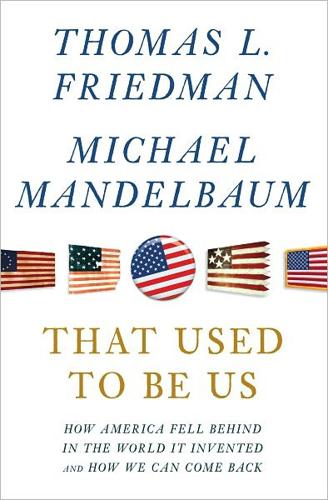
That Used to Be Us
by
Thomas L. Friedman
and
Michael Mandelbaum
Published 1 Sep 2011
The voter sent the following note out to his Christmas card list: “Senator Bennett has been our friend for a long time, and he set the record straight, and I want everybody to know that these are the facts.” The correction had little effect. Repeatedly during the campaign voters came up to him at rallies, Bennett said, and grilled him: “‘You voted for ObamaCare.’ ‘No, I didn’t.’ ‘Yes, you did. I read it on the Internet. ’ ‘You voted for ObamaCare.’ ‘You voted for the stimulus.’ ‘You voted for TARP.’ I said, ‘Look, I am the guy who changed the proposed law from $700 billion to two tranches of $350 billion, because I wanted to see if it worked before I voted for the second, and I voted against the second $350 billion because of the way the first $350 billion was headed.’
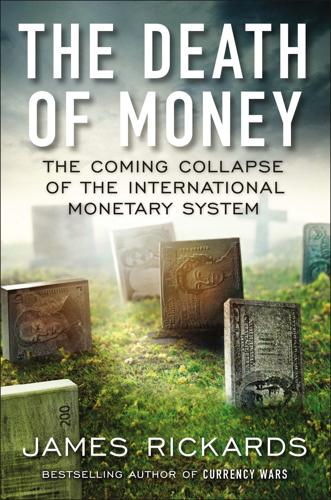
The Death of Money: The Coming Collapse of the International Monetary System
by
James Rickards
Published 7 Apr 2014
Annual borrowing in all undergraduate and graduate student loan programs surged to over $100 billion per year in 2012, up from about $65 billion per year at the start of the 2007 depression. By August 2013, total student loans backed by the U.S. government exceeded $1 trillion, an amount that has doubled since 2009. A provision contained in the 2010 Obamacare legislation provided the U.S. Treasury with a near monopoly on student loan origination and sidelined most private lenders who formerly participated in this market. This meant that the Treasury could relax lending standards to continue the flow of easy money. The student loan market is politically untouchable because higher education historically produces citizens with added skills who repay the loans and earn higher incomes over time.
…
P., 220 Morgan Stanley, 32–33, 262 Morocco, 152, 153 Mourdock, Richard, 205 M-Subzero, 280, 283–84 Mubarak, Hosni, 156 Mulheren, John, 18–19, 32–33 Mundell, Robert, 125 Mussolini, Benito, 294 Mutual Assured Destruction (MAD), 46, 63 Mutual Assured Financial Destruction, 46 “Myth of Asia’s Miracle, The” (Krugman), 94 M-Zero (M0), 280 Nakamoto, Satoshi, 254 Napoleon Bonaparte, 114 Napoleonic Wars, 115 NASDAQ Stock Market closure, August 22, 2013, 60, 296–97 National Defense University, 59 National Journal, 63 National Security Agency (NSA), 53 negative real interest rates, 183–84 neofascism, 294–95 Netherlands, 233 New Scotland Yard, 37 New York Times, The, 39, 51, 55, 133, 144 9/11 attacks continuity of government operations, failure of, 63 as failure of imagination, 256, 257 9/11 attacks, and insider trading, 17–28, 63 Mulheren’s opinion of, 18 9/11 Commission’s failure to find connection between, 21–22, 23, 25–27 Poteshman’s statistical analysis of, 22–23 signal amplification and, 24, 25, 26, 27 social network analysis of, 19–20, 25 Swiss Finance Institute study of, 23 9/11 Commission, 21–22, 23, 25–27 9/11 Truth Movement, 27 Nitze, Paul, 43 Nixon, Richard, 1, 2, 5, 58, 85, 209, 220, 235, 252, 285 Nolan, Dave, 32–33 numeraire, gold as, 219–20 Obama, Barack, 37, 57, 129, 156, 202–3, 206, 252–53 Obamacare legislation, 247–48 offensive aspects of financial war, 46 Office of Tailored Access Operations (TAO), 53–54 Oman, 152 one-child policy, China, 95, 102 O’Neill, Jim, 139–40, 146, 150 Operation Duplex-Barbara, 59 Otto I, Emperor, 114 Outline of Reform (C-20), 235 Pakistan, 30, 151, 156 panic dynamic, 62 Panic of 1907, 198 Panic of 2008, 46, 47, 52, 76, 77, 170, 188, 196, 201–2, 211, 296 panics, 224 paper gold transactions, 275–76, 284–86 Paulson, Hank, 206 Pei, Minxin, 106 permanent disability, 246 Peterson, Peter G., 51 Petraeus, David, 37 Pettis, Michael, 108–9 phase transitions, 172, 265, 289–90 Ph.D. standard, 177 physical targets, in financial war, 46 piecemeal engineering, 292 piggyback trading, 24 Plaza Accord, 1985, 118–19 Pleines, Günter, 277 Poland, 200, 233 Ponzi scheme, in wealth management products (WMPs), 102–3 Popper, Karl, 292 Portugal, 128, 200 Poteshman, Allen M., 22–23 pound sterling, 157, 161, 209 price discovery, 68 primary deficit sustainability (PDS) framework, 177–83 Project Prophesy, 28–34 Pufeng, Wang, 44, 45 Putin, Vladimir, 151 Qatar, 152 Qiao Liang (Unrestricted Warfare), 44–45 Qin Dynasty, 90 Qing Dynasty, 90, 91 quantitative easing (QE), 159–61 end of, implications of, 297 by Federal Reserve, 184–85 in Japan, 160–61 in United Kingdom, 160 quantity theory of credit (creditism), 168 quantity theory of money (monetarism), 168–69 Quantum Dawn 2, 54 Rajoy, Mariano, 134 Ramo, Joshua Cooper, 120 random numbers, 268–69 Rauf, Rashid, 37 Ray, Chris, 35–36, 38, 40 Raymond, Lenny, 35 Reagan, Ronald, 2, 63, 118, 166, 176–77, 210 Reagan administration, 235 real incomes, decline in, 78–79 regime uncertainty, 84–87, 125–26 regional trade currency blocs, 255–56 regression analyses, 4–5 Reinhart, Carmen, 182, 183 repatriation of gold, 40, 231–34 Republicans, 175–76, 179, 180, 205, 294 Reserve Bank of Australia, 52–53 revolution in military affairs (RMA), 43–44 Rise of the Warrior Cop (Balko), 294 risk financial, 85, 268–70 gold as risk-free asset, 219 investments and, 218–19 systemic, 11–12, 81, 188, 249–50, 251, 259, 270 uncertainty distinguished, 85, 268 Risk, Uncertainty and Profit (Knight), 268 Roett, Riordan, 192 Rogoff, Kenneth, 182 Rollover (film), 1, 3 Roman Empire, fall of, 5 Roosevelt, Franklin D., 85, 295 Rothschild, Nathan, 216 Rouhani, Hassan, 57, 152 Rubin, Robert, 177, 195, 196 rule-of-law society, 166–67 Russia, 139, 151, 152, 233.

Don't Burn This Book: Thinking for Yourself in an Age of Unreason
by
Dave Rubin
Published 27 Apr 2020
Women are also significantly more likely to avoid charges and convictions entirely, plus twice as likely to avoid prison if convicted—even if they have the same criminal background. Meanwhile, American men have been forced to register for Selective Service since 1980. Women are not. When you look at the facts, women seem clearly better off. They even live longer lives. This is partly because of health initiatives like Obamacare—or the Affordable Care Act (ACA)—which gave them preferential treatment. The ACA had 134 references to “women’s health” but only two that were specific to men. Staggering stuff considering the average American man will live to age 76, while the average woman will live to age 81, according to the CDC. Women win custody of the child in more than 80 percent of all divorces.
…
ABC, 148–49, 149–50 abortion, 45–49 compromise between individual rights and government role and, 49 genesis of life and, 46 left’s fetishizing of, 46 public rights versus governmental role, 48–49 survival rates of premature babies, 48 time limits for, 47, 48 Abriss, Erik, 154 Act for America, 133 admitting you don’t know something, 172–75 Adorno, Theodor, 67 Advocate, The, 85 Affleck, Ben, 18–20 Affordable Care Act (ACA), 102 Afghanistan, 70 African Americans intact families and, 91–93 systemic racism and, 89–92, 97–100 welfare state and, 92 Alain de Lille, 202 alcohol, 33–34 algorithmic manipulation of news intake, 163 Ali, Ayaan Hirsi, 6–7, 133–35 Amazon, 142 American Civil Liberties Union, 50 American Conservative Coalition, 110 American dream, as non-discriminatory, 146–47 American Revolution, 131 anti-Semitism, 108 Argentina, 101 Asian Americans, 143 Aslan, Reza, 155 assault rifles, 106 automation, 66 avoidance behavior, 129 “Baby, It’s Cold Outside” (song), 198 Backer, Benji, 110 balanced life, tips for living, 204–6 Banaji, Mahzarin, 98 Baquet, Dean, 158 Barre, Siad, 133 Bercovici, Jeff, 161 Berger, Joseph, 79–80 Bergman, Ben, 161 Berlatsky, Noah, 154 Birth of a Nation, The (film), 112 Black Hebrew Israelites, 153, 154 blatant falsehoods, 163 Block, Hyman, 137 Boghossian, Peter, 87 Booker, Cory, 155–56 books, 164 Boothe, John Wilkes, 112 borders, 40–41 Boston Tea Party, 131 Bouyeri, Mohammed, 134 Brampton, Sally, 203 Brown, Danielle, 26 Bunch, Sonny, 199 Bureau of Labor Statistics, 104 Bush, George W., 70, 131–32 Buttigieg, Pete, 159 BuzzFeed, 9, 21–22, 60, 149 Cain, Caleb, 159, 161, 162 cancel culture, 85 Capehart, Jonathan, 154 capitalism, 141–42 Carlson, Tucker, 122–24 Carnevale, Anthony, 104 “Cashing in on the Rise of the Alt-Right” (Harkinson), 77 catastrophizing, 196–97 CBD (cannabidiol), 33 CBS, 149–50 Chabloz, Alison, 52 character assassination, 16–17 Charlesworth, Tessa, 98 Charlie Hebdo terrorist attack, 20–21 China, 139–40 Churchill, Winston, 203 Civil Rights Act of 1964, 38, 112 Clarkson, Kelly, 198 classical liberalism, 7–8, 28, 29–71 abortion and, 45–49 definition, 30 drugs and, 32–36 economics and, 62–67 foreign policy and, 67–71 free speech and, 50–54 gay marriage and, 37–39 gun control and, 54–58 historical proponents of, 30–31 immigration and, 39–45 individual rights, protection of, 30–31 political language of, 96 stereotypes, neutralization of, 31 tolerance of opposing viewpoints and, 37–39 trans issues and, 59–62 class warfare, 65 Clinton, Hillary, 42, 113 CNN, 10, 21–22, 148–49, 150 Covington story and, 153, 155 Jussie Smollett news story and, 157 Russian Hoax and, 158 college professors, left-wing political brainwashing by, 151 comedy, 187–90 coming out, 3–5 Confederate flag, 112 conservatives political language of, 96 pro-life position of, 49 Cook, Tim, 146 Covington story scandal, 152–55 crack, 34–35 Cruz, Nikolas, 58 culture war, 197–201 Cuomo, Andrew, 156 Daily Beast, The, 149 Daily Show, The (TV show), 62–63, 134–35 Daily Signal, The, 92 Damore, James, 25–26 Daniels, Jessie, 92 Darcy, Oliver, 161 David and Goliath story, 183 debt, government, 66 Declaration of Independence, 31, 144 Deconstructing Harry (film), 4 defensive gun use, lives saved from, 106 DeFranco, Philip, 159, 160–61 DeGeneres, Ellen, 146 Democratic Party, historical background of Civil Rights Act, opposition to, 112 Confederate flag, creation of, 112 Dred Scott ruling and, 111 Ku Klux Klan, formation of, 111–12 Lincoln assassination and, 112 opposition to Thirteenth, Fourteenth and Fifteenth Amendments, 112 school choice, opposition to, 113 War on Poverty and, 112 Democrats = good, Republicans = bad myth, 111–13 Demos, 101 denial, 12 digital journalism, 151 discrimination, 83 Dred Scott ruling, 111 dressing as the person you want to be, 175–79 drugs, 32–36 alcohol, 33–34 government role, 34–36 marijuana, 33 nicotine, 33 Schedule I controlled substances, 34–35 state versus federal issue, 36 taxation and, 35 Dunham, Lena, 127 economic issues, 62–67 government debt, 66 government size and spending, 64 minimum wage, 62, 65–66 tax rates, 64–65 unpaid internships, 62–63 welfare, 66 Economist, The, 80 Ehrlich, Paul, 108 Elder, Larry, 87–95 “An Empirical Analysis of Racial Differences in Police Use of Force” (Fryer), 98 environmental issues, 108–10 extreme weather, 109 food shortage, 108–9 polar bears, 110 Equality Act of 1974, 38 Evans, Chris, 127 Evergreen State College, 22, 23 extreme weather, 109 Facebook, speech guidelines of, 53 fact checking, 8, 87–113 Democrats = good, Republicans = bad myth, 111–13 Elder interview and, 87–95 environmental issues, 108–10 gun control, 105–6 hate crimes, 107–8 learning and growing when faced with new facts, 94–95 nuclear family, importance of, 91–93 political languages, recognizing, 95–97 slow thinking, practicing, 96–97 systemic racism, 89–92, 97–100 wage gap, 103–5 war on women, 100–103 fake news, 9–10, 148–65 algorithmic manipulation of news intake, 163 blatant falsehoods, 163 categories of, 162–63 college professors, left-wing political brainwashing by, 151 Covington story scandal, 152–55 curating list of trusted journalists who operate in good faith, 163–64 distrust of media, 162 gut instinct, following your, 164 historical background, 149–51 institutional, 163 Jussie Smollett news story, 155–57 narrative-driven, 162 political activism and propagandism by journalists, 151–52 proprietors of, examples of, 148–49 Roose’s hit piece blaming Rubin and others for radicalizing youth, 159–62 Russian Hoax and, 157–58 family, 91–93, 112–13 Family Guy (TV show), 189 fatherless children, 91–92 Feinstein, Dianne, 44 Ferguson, Niall, 134 Field of Dreams (film), 177 Fifteenth Amendment, 112 First Amendment free speech rights, 14, 50–54 Fonda, Jane, 103 food shortage, 108–9 foreign policy, 67–71 peace through strength strategy, 67–68 red line in Syria, failure to enforce, 68 troop withdrawals, 70 Ukraine, NATO’s failure to help, 69 Forrest, Nathan Bedford, 111–12 Fourteenth Amendment, 112 Fox News, 150 France, 69, 141 free speech, 50–54, 207 combating conspiracy theories and bad ideas with, 50–51 comedy and, 189 as essential to civilized society, 52 exceptions specified by Supreme Court, 50 hate speech laws and, 52 Kaepernick’s kneeling for national anthem and, 53–54 progressive policing of, 52–53 free thinking, 7–8, 28, 29–71.
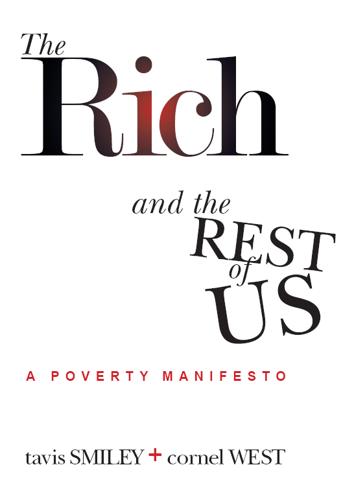
The Rich and the Rest of Us
by
Tavis Smiley
Published 15 Feb 2012
However, when we peek behind the curtain, we see who’s spiking the tea and the motivations behind their actions. The New Yorker and several other reputable media outlets have already exposed the ultra-conservative moguls and ultra-rich foundations that fund Tea Party candidates, campaigns, and propaganda. The party’s rebel yell against “big government,” “wasteful spending,” “Obamacare,” and other sensationalized issues has been scripted, packaged, and bankrolled by rich moguls like the Koch Brothers and foundations such as Freedom Works—an organization run by former GOP Congressman Dick Armey and funded by the tobacco giant Phillip Morris.53 Writing in the October 14, 2010, edition of Rolling Stone magazine, Matt Taibbi shared interesting insights about the Tea Party and the corporate insiders who created it.
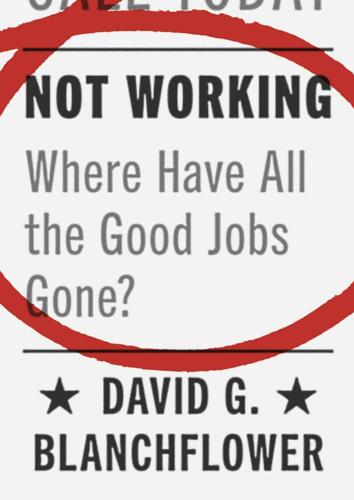
Not Working: Where Have All the Good Jobs Gone?
by
David G. Blanchflower
Published 12 Apr 2021
The contribution of these factors declined only slightly during the recovery period following the recession. The study’s results suggest that the incidence of PTFER employment may remain well above its pre-recession lows as the labor market expansion continues. There is also a suggestion that employers’ anticipation of the Affordable Care Act (ACA) health benefit mandate explains almost all the rise in PTFER. Using data from the Current Population Survey (CPS) between 1994 and 2015, Even and Macpherson (2016) find that PTFER employment in 2015 was higher than predicted based on economic conditions and the composition of jobs and workers in the labor market.
…
In The Youth Labor Market Problem: Its Nature, Causes and Consequences, ed. R. B. Freeman and D. A. Wise, 349–90. Chicago: University of Chicago Press. Eurofound. 2017. “Estimating Labour Market Slack in the European Union.” Publications Office of the European Union, Luxembourg. Even, W. E., and D. A. Macpherson. 2016. “The Affordable Care Act and the Growth of Involuntary Part-time Employment.” IZA Discussion Paper No. 9324. Ewing, W. A., D. E. Martínez, and R. G. Rumbaut. 2015. “The Criminalization of Immigration in the United States.” Special Report, American Immigration Council, July. Fairlie, R., and L. G. Kletzer. 2003. “The Long-Term Costs of Job Displacement among Young Workers.”
…
Christiansen. 2017. “Hope, Trust Deficits May Help Fuel Populism.” Gallup, April 7. Zuckoff, M. 2005. Ponzi’s Schemes. New York: Random House. INDEX Page numbers in italics refer to figures and tables. Aaronson, Daniel, 96–97 Abbey National, 159 Abowd, John, 99 added workers, 19–20 Affordable Care Act (ACA), 126, 345 Afghanistan, 244 Africa, 24, 226, 252 Aguiar, Mark, 26 Airbus, 187–88 Akerlof, George, 165 Alabama, 227 Alaska, 193 alcohol abuse, 7, 24, 36, 221, 225, 229–31, 233, 235, 267 Alesina, Alberto, 175 Alliance & Leicester (A&L), 159 Allsebrook, John, 314 Alston, Philip, 35 aluminum, 319 Amazon, 18 American Community Survey, 116, 245, 258 American Economic Association, 188–89 American Economic Review, 188–89 American International Group (AIG), 162, 188 American National Election Studies (ANES), 261 American Time Use Survey, 27, 101, 226 Andrews, Dan, 92 Annual Survey of Hours and Earnings (ASHE), 56–57 antidepressants, 36, 218, 220–24, 227, 229 Arizona, 3, 193 Armstrong, Stephen, 32–33, 35 Ashenfelter, Orley, 188–90 Assari, Shervin, 220 Auerbach, Jonathan, 234 austerity: backlash against, 341; Brexit vote linked to, 36–37, 172, 214, 276; failures of, 36, 79–80, 160, 166–67, 171–77, 214, 327–28; mental health compromised by, 32, 222, 232; public sector weakened by, 10, 246; rationale for, 80, 171, 175, 179; regressivity of, 113, 173–74, 276, 329 Australia, 60, 79, 81, 92, 134, 230, 231, 252 Austria: business and consumer confidence in, 77, 196; immigration to, 238, 250; inequality viewed in, 107; labor market protections in, 85; populism in, 259, 280, 283; recession in, 78; underemployment in, 136 automobile industry, 23, 188, 201, 268 automobile loans, 74 Azar, José, 125 Babb, Nathan R., 305 Bain, George, 182 Balestra, Carlotta, 110–11 Baltic Dry Index (BDI), 197 Bank of America, 188, 281 Bank of Canada, 160 Bank of England.

The Narrow Corridor: States, Societies, and the Fate of Liberty
by
Daron Acemoglu
and
James A. Robinson
Published 23 Sep 2019
Both features are a consequence of the peculiar U.S. model based on public-private partnerships. In 1998, before the Obamacare reforms, it was estimated that of the lowest-paid 20 percent of the labor force, only 24 percent were covered by health insurance. The same problems plague the pensions system where the benefits are skewed toward high-paid workers. Again in 1998, of the lowest-paid 20 percent of the labor force, only 16 percent were covered by a private pension, while for the highest-paid 20 percent the coverage rate was 72 percent. When Obamacare attempted to introduce a public option to give people access to low-cost insurance, this was shot down for being too reliant on the public sector.
…
B., 225 Motlana, Nthato, 431 Moukheiber, Ghassan, 62 Mthethwa, 83, 84 Muawiya, 106 Mugabe, Robert, 453, 461–62 Mughal Empire, 250, 256, 257, 259–60 Muhammad (prophet), 74–80, 90, 94, 104–7, 109, 111–13, 345, 370–72, 380, 382, 384, 388 Muhammad Ali (ruler of Egypt), 374–75 Muhammad bin Salman (Saudi crown prince), 384 Muhammad ibn Ibrahim, Sheikh (Grand Mufti), 377 muhtasib, 374, 381 Muqaddasi, al-, 109–10 Murugesan, 246–47 Mussolini, Benito, 405 mutaween (religious police), 381 Nabiev, Rahmon, 289 nadus (collectives), 259 Nahuatl, 148 Najd, Saudia Arabia, 370–73, 375, 376 Nanjing, China, 223 National Dairy Producers Corporation, 326 National Federation of Coffee Growers, 350 National Front agreement (Colombia), 447 National Guard (Georgia), 92 National Housing Act, 329 National Industrial Recovery Act, 472 National Institute for Agrarian Transformation, 293 National Insurance (UK), 464 National Labor Relations Act (U.S.), 324, 475 National Pact (Lebanon), 60, 63 National Party (South Africa), 430 National Rifle Association, 328 National School Lunch Act, 320 National Security Agency (NSA), 309, 327, 335–36, 489–90 National Socialist German Workers’ (Nazi) Party, 12–13, 390–92, 395, 396–99, 400–402, 404–5, 421, 423–24, 465 nationalization of industries, 471 Native Land Act (South Africa), 428, 430 native-place associations, 218–19 Navalny, Alexei, 287 Navigation Acts, 196 Negro Motorist Green-Book, The (Green), 69 Netherlands, 280 New Deal, 325, 329 New Territories, 221 Newcomen, Thomas, 194, 196 Newton, Isaac, 196 Nicaragua, 303 Niccolò di Bernardo, 141 Niemöller, Martin, 495 Nietzsche, Friedrich, 79–80 Nigeria, 3–7, 12, 53–56, 365, 444–47 Nine (Sienese body of electors), 129–30, 131 1984 (Orwell), 235 Nixon, Richard, 412 Njegoš (Peter II, Prince-Bishop of Montenegro), 277 Nkrumah, Kwame, 362–63, 364, 366 Nobela (witch doctor), 86 nomadic tribes, 74–75, 77, 104–5 Norman conquest, 169–71 North Korea, 234, 455, 456 Northcote-Trevelyan Report, 190 Northern Europe, 152, 153, 209 Northern Wei dynasty, 209 Northumbria, 164, 165, 167 Northwest Ordinance, 296 Norton, Caroline, 191–92, 194 Norton, George, 191 Norway, 472 Nuestras Familias, 338–40 Nyambua cult, 55–56 Oaxaca Valley, Mexico, 147, 152 Obamacare, 332 Obasanjo, Olusegun, 444 Obizzo, Lord, 413–14, 418 Odyssey (Homer), 38, 251 Offa, King of Mercia, 164 Office of Strategic Services, 334. See also Central Intelligence Agency (CIA) Ogletree, Virgil, 312 oligarchy, 36, 131, 261, 286–87 Olimova, Saodot, 288–89 On the Governance of the Palace (Hincmar), 153–54 On the Magistracies of the Roman State (John Lydus), 159 Operation Desert Storm, 386 Oracle of Delphi, 33 Orange Free State, 428 Orbán, Viktor, 425 Organisation for Economic Co-operation and Development (OECD), 331–32 Origin and Growth of Village Communities in India, The (Baden-Powell), 261 Orthodox Christians, 60–61 Orwell, George, 235 ostracism, in ancient Greece, 45 Otaybi, Juhayman al-, 380 Otto IV, Holy Roman Emperor, 417 Otto of Freising, Bishop, 128–29, 142 Ottoman Empire, 60, 276, 371, 373, 375–76, 385, 387, 439 Pacific Railroad Act, 24–25, 317 Pacto de la Concordia, 295–96 Page, Larry, 481 Palestine, 376 Pallavicino, Uberto, 418 Palmer raids, 333 Panchayati Raj Act, 261 panchayats, 245–47, 256, 261, 265 Papen, Franz von, 398 Paper Leviathan: and African nations, 360–65; and Argentinian bureaucracy, 338–41, 344–46; and Colombia, 346–50, 351–55; consequences of, 367–69; and Latin America, 355–59; mechanics of, 344–46; and paths into corridor, 434, 443–44, 450; and postcolonial world, 365–67; and social power, 367 Papin, Denis, 196 paramilitaries, 354, 395, 409 Park Chung-hee, 456 Parma, Italy, 417 Pashtuns, 7, 23–24 Pastrana, Andrés, 448 patents, 318–19 pawns (pledges), 22–23, 37, 39–40, 45 Peace of Constance, 127 Peasant Self-Defense Forces of the Middle Magdalena, 353 peasantry, 271, 279–80 Peasants into Frenchmen (Weber), 346 Peasants’ Revolt, 184 Peisistratos, 42–43 pensions, 190–91, 325–26, 332 People’s Daily (China), 230 People’s Party (U.S.), 419 perestroika, 282 Periphetes, 33–34 Peronist Party (Argentina), 343 Peru, 349, 358, 422 Peter I, King of Aragon, 182 Peter I, Prince-Bishop of Montenegro, 276 Pettit, Philip, 6–7, 9 Philippines, 425 Phillips, David Graham, 324 Phipps, John, 180 phratry/phratries, 35, 45, 58 Piacenza, Italy, 136, 418 Pienaar, François, 433–34 Pinker, Steven, 8 Pinkerton National Detective Agency, 333 Pinochet, Augusto, 406, 423 Pistoia, Italy, 415 Plaatje, Sol, 427–29 Platteau, Jean-Philippe, 388–89 Pledge of Good Pleasure, 78–79 Plutarch, 33–34, 36 Podestà (magistrate), 129–31, 133, 413, 414–18 Poland, 280, 282, 283–84, 290, 290–91 polarization, 66, 403, 421 poletai, 38 police forces, 304–6, 309–12, 327–29 Polynesian society, 87–88, 90–92 Poor Laws, 181 Popolo, 416–18 Popular Action Front (Chile; FRAP), 407–8 Popular Contention in Great Britain, 1758–1834 (Tilly), 188–89 Popular Unity (Chile; U.P.), 407–8 populism, 39, 419–23 Portales, Diego, 359 Portuguese monarchies, 281 postal service, 318, 319 postcolonial societies, 269, 294, 365–67 Potanin, Vladimir, 286 poverty, 240–41, 262, 264–65, 291–93, 308, 327, 446 Power of the Powerless, The (Havel), 281–82 praetorian prefects (Roman Empire), 158–59 Prague Spring, 282 Prajapati, 252 Prato, Italy, 140 premodern societies, 7–8, 64 presidential power, 63, 357–58 prestige goods, 103, 120 Prince, The (Machiavelli), 266, 419 pristine state formation, 79, 80, 87, 148 privatization, 123, 285–86 Procrustes, 34 Progressive era, 323–27 property rights, 99, 113, 114, 121, 138, 144, 232–33 prostrating taboo, 91 Prussia, 12–13, 266–68, 268, 270, 273–75, 277–79, 297, 393, 395, 398–402, 404, 424, 484 public education, 139–40, 190–91, 368–69, 381 public-private partnerships, 307–8, 317–21, 324–27, 331–32, 333, 337, 485–86 Puna Coast, 88, 115 Putin, Vladimir, 286, 287–88 Putumayo, Colombia, 346–49, 347 qadis, 375 Qasim, Abd Al-Karim, 385 Qianlong emperor, 212–14, 217 Qin dynasty, 203–5, 206–9, 215, 218, 222, 229, 345 Qin Shi Huang, 206 Qing dynasty, 211–18, 224–27, 229, 233 Qubilai Khan (Kublai Khan), 210 qui tam provision, 319 Quiché people (Guatemala), 291, 293 Quran, 75–76, 371–72, 377, 379, 384, 386 Quraysh tribe, 74 racism and racial discrimination, 68–69, 304–6, 321, 326–32 railroads, 24–25, 225, 317 Rajadhiraja II, 259 Rake’s Progress, The (Hogarth), 196 Ramaphosa, Cyril, 431–32 Ramayana, 243, 251 Rashtriya Garima Abhiyan, 244 Rashtriya Sam Vikas Yojana, 262 Rathenau, Walther, 396 Rattray, Robert, 19–20, 23 Rauschning, Hermann, 390 RCD-Goma, 99 Reagan, Ronald, 108, 325 Reconstruction and Development Programme, 431 Reconstruction era (U.S.), 52–53, 311 Record of Ten Days in Yangzhou, A (Wang Xiuchu), 213 Red Queen effect: and American exceptionalism, 307; and American state building, 45–46, 49–50, 52–53, 316–17, 320–21; and ancient Greece, 40–42; and Argentina, 344–45; and development of Leviathan types, 66, 69–70; and divergent effects of state power, 281; and economy inside corridor, 146; and English political development, 180–81, 188, 190; and European political development, 153, 184; and failings of Indian state, 264–65; and fostering of Shackled Leviathan, 72–73; and Hayek’s economic theory, 466–67; and impact of structural factors, 301; and Indian caste system, 240, 244, 250, 255, 262; and Industrial Revolution, 195; and legal reforms of Henry II, 172–73; and Magna Carta, 177; and norms against political hierarchy, 57; and paradox of American Leviathan, 336–37; and Polish civil society, 284 Red Turban rebellion, 211 Redemption period (U.S.), 53, 311, 312 redistribution of wealth, 316, 451, 456, 461, 467, 473–76, 484, 486–87 redlining, 329–30 Reginald of Durham, 143 Regulation Q, 478 Rehn-Meidner model, 470 Reichstag, 390, 396, 398–99, 424 Report of the Indian Famine Commission (1880), 261 Representation of the People Act, 176 Republican People’s Party (Turkey; CHP), 439–40 Republicanism: A Theory of Freedom and Government (Pettit), 6–7 research and development, investment in, 486–87, 488 Restoration Society (Fushe), 211 Revolutionary Armed Forces of Colombia (FARC), 353 Revolutionary Command Council (Iraq), 385 Reyes, Rafael, 348 Rhee, Syngman, 456 Rhenish League, 184 Rhodesia, 357 Ricardo, David, 407 Riegle-Neal Interstate Banking and Branching Efficiency Act, 479 Rig Veda, 251, 252 Riopaila Castilla, 352 Ritter von Kahr, Gustav, 396 road construction projects, 346–50, 353–55, 356 Road to Serfdom, The (Hayek), 465, 473 Roberts, William, 119 Rock Edicts of Ashoka, 255 Röhm, Ernst, 395 Rojas Pinilla, Gustavo, 351 Rolfe, John, 314 Roman Empire: and European political development, 153, 158–60, 182, 183, 199; fiscal systems, 187; and Frankish society, 154, 156–57; and Icelandic politics, 185; and Italian communes, 414 Roman Republic, 158.
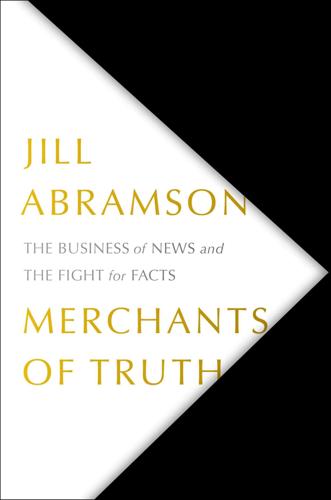
Merchants of Truth: The Business of News and the Fight for Facts
by
Jill Abramson
Published 5 Feb 2019
The astounding rate at which news stories now moved sometimes required playing agile defense. This was the dark side of a news operation struggling to maintain its values with a digital metabolism. On another big story, the U.S. Supreme Court decision on Obamacare, I instructed every editor not to publish anything until David Leonhardt, the new Washington bureau chief I had chosen, called me with a fully checked report on the decision. My caution paid off. Fox and CNN raced onto the air with wrong reports, saying Obamacare had been overturned. • • • There was a new celebrant standing next to Sulzberger at the Pulitzer event, Mark Thompson, the new CEO. In a bold move to find his “digital visionary,” the publisher had gone outside and across the ocean to hire the man who was known for pushing old Auntie Beeb into the digital age with new video technology.
…
Paul Pioneer Press, 424 Samberg, Andy, 54 Samsung, 393 Sandberg, Sheryl, 213 Sanger, David, 371, 382 Saturday Night Live (TV show), 54 Savile, Jimmy, 214 Scaramucci, Anthony, 385–86 Schafer, Gene, 223 Schmidt, Andrea, 358–59 Schmidt, Eric, 54 Schmidt, Michael, 379–80, 392 Schmitt, Eric, 92 Schoofs, Mark, 141–42, 302, 323, 345 Schreiber, Liev, 268 Schumpeter, Joseph, 153 Schweizer, Peter, 378–79 Scroll, 247 search engine optimization (SEO), 30, 31, 74, 242 Seattle Times, 249 September 11, 2001, terrorist attacks, 27, 49, 172 Sessions, Jeff, 416 Shadid, Anthony, 208–9 Shapiro, Ben, 290 Sheehan, Neil, 402 Shepherd, Jack, 38, 112 Shireman, Robert, 252 Shirky, Clay, 75–76, 193, 196 Shitty Media Men, 361 Shulgin, Alexander, 180–81 Sicardi, Arabelle, 117 Siegal, Al, 152, 189 Silver, Nate, 190, 248, 290, 375 Silverman, Craig: on BuzzFeed dress color story, 309 BuzzFeed joined by, 311 cognitive biases studied by, 309–10 fact-checking business of, 310–11 fake news investigations of, 294–95, 296–98, 299–300, 309, 320, 322, 340–41 as online media watchdog, 310 Simkins, Modjeska, 235 Simpson, Glenn, 323 Slim, Carlos, 5, 9 Times loan of, 188, 430 wealth of, 188, 259 “small world” networks, 15–16 smartphones, impact on digital news of, 32–33, 95 Smith, Ben, 224, 301, 411, 427 background of, 125 and blue-black/white-gold dress story, 146 in BuzzFeed 2016 election night coverage, 320, 321 BuzzFeed news team assembled by, 128–29, 130–31 BuzzFeed opinion pieces and, 345 in debate with Sullivan on native advertising, 137 hired as head of BuzzFeed news department, 127–28 IM interviews conducted by, 135 on impact of Facebook’s “sentiment data,” 304–5 importance of Facebook in 2016 election predicted by, 303, 305 journalism career of, 125–26, 131, 133–34 as master of chasing scoops, 131 NewsFeed podcast of, 342 news team expanded by, 141–43 at Politico, 126, 131, 134 posts critical of BuzzFeed advertisers deleted by, 139 in search for new revenue sources, 344 Steele dossier publication approved by, 323–24, 328 Twitter followers of, 126–27, 130 and use of Facebook “sentiment data,” 304 Smith, Shane, 4, 176 authenticity as prized by, 351 in buyback of Vice, 47 CEO title relinquished by, 369, 426 controversial Liberia documentary of, 169–70 embroidered background story of, 42 and evolution of Vice into serious news brand, 158, 171 extravagant spending by, 175–76 HBO weekly show as priority of, 357 international expansion stressed by, 368 Obama interviewed by, 179, 180 as out of touch with Vice employees’ concerns, 364 overtaking CNN as goal of, 346, 348, 369 sexism of, 59 transformative vision of, 60–61 and Trump’s election, 353 as Vice Media cofounder, 43–44 Vice News as envisioned by, 346, 369 and Vice News Tonight, 353 and Vice’s move into video, 56–57 and Vice’s sexist culture, 363–64 on Vice TV show Emmy nomination, 179 Virtue advertising agency created by, 158 Snapchat, 178, 249, 329, 412 Snowden, Edward, 80 NSA documents leaked by, 80, 215, 259–60, 268, 382 Times mistrusted by, 215 Social Intelligence Report, 110–11 social media, 232 credibility of news services as unimportant on, 294–95 explosion of, 30–32, 103 as news platforms, 294–95 Post content posted by, 412 power of, 5–6 as primary source of news for majority of Americans, 274 Social Network Soiree, 19 Softbank, 103 Sontag, Deborah, 402 Sorkin, Andrew Ross, 375 DealBook and, 189–90 Southern Poverty Law Center, 368 Spayd, Liz, 384, 385 Spencer, Richard, 353 Spicer, Sean, 339 Spotlight (film), 198, 255, 268 Steel, Emily, 362–63 Steele, Christopher, 323, 384 Steele dossier: critiques of BuzzFeed’s publication of, 324–25 lawsuits over, 326, 327–28 unverified claims in, 323 Steiger, Paul, 223, 408 Steiger, Wendy, 223 Steinberg, Jon, 120, 132, 135 Stelter, Brian, 184 “stickiness,” 23, 30, 204 Stopera, Dave, 116 Stopera, Matt, 104, 107, 108, 116, 288 as BuzzFeed early hire, 37–39 and BuzzFeed “List” formula, 117–18 as BuzzFeed’s relatability expert, 115–16 as expert on trend dynamics, 123 gender politics stories emphasized by, 140–41 on importance of adding reporting to BuzzFeed mix, 123–24 and “making a thing a thing,” 287 in move to BuzzFeed newsroom, 128–29 nostalgic posts by, 118 as trend dynamics expert, 123, 144 in 2012 election coverage, 135 Strange Justice (Mayer and Abramson), 196 Sullivan, Andrew, 22, 94, 137 Sullivan, Margaret, 324, 380, 385 Sulzberger, Annie, 65 Sulzberger, Arthur Gregg, 193, 203, 426 Abramson’s relationship with, 395, 396 as candidate for Times publisher position, 65, 394–96 innovation demanded by, 396, 398 named Times editor, 395, 396 reporting career of, 395 “Times Innovation Report” and, 218–20, 394 Times news staff joined by, 197 as Times publisher, 373, 430 on Times’s mistakes in election coverage, 376 Sulzberger, Arthur Ochs, Jr., 1, 5, 9, 407 Abramson fired by, 221–24 Abramson named as executive editor by, 201–2 Abramson’s relationship with, 197–98, 207–8, 216, 402 and blurring of line between news and business departments, 69–70, 189 business-side job cuts by, 191 Chinese princelings story and, 206, 207 Google investment declined by, 97 Keller and, 66, 67–68 lasting achievements of, 427, 429 “last man standing” strategy of, 70–71 liberal views of, 78 news staff cuts and, 70–71, 186, 187, 190–91 premium projects envisioned by, 189 and purchase of Post’s share in International Herald Tribune, 66, 86 retirement party of, 429–30 Robinson fired by, 202–3 shareholder unhappiness with, 63, 74 Times’s future as envisioned by, 62–63 unflattering articles on, 64, 74–75, 79, 183, 187 and Wall Street Journal rivalry, 183 website paywall ordered by, 193–94 Sulzberger, Arthur Ochs, Sr. “Punch,” 81, 202 Sulzberger, Willa, 430 Sulzberger-Ochs family, 261, 429 commitment to quality journalism of, 225–26 rivalries among, 394 stock dividends forgone by, 75 super-sharers, 111–12 Supreme Court, U.S., Obamacare decision of, 212 Swisher, Kara, 240 Syed, Nabiha, 323, 326–28, 427 Syria, foreign correspondents in, 174–75, 208–9 Szalwinski, Richard, 44–46 T (Times style magazine), 210 Talese, Gay, 74–75 Talking Points Memo (blog), 73, 94, 129 Tapper, Jake, 325 T Brand Studio, 163, 347, 367, 393, 399–400, 401 television news: aging audience for, 60 celebrity stories on, 60 decline of public trust in, 60 1960s high point of, 59–60 staff cuts by, 94 Thiel, Peter, 273, 326 Thomas, Clarence, 196 Thomas, Shawna, 351 Thompson, Hunter S., 133 Thompson, Marilyn, 417 and gutting of McConnell story, 236 as Lexington Herald-Leader editor, 235–36 long-form journalism as strength of, 233–37 peripatetic career of, 235–37 as Post reporter and editor, 233–35 Strom Thurmond exposé by, 234–35 Thompson, Mark, 215, 389–90, 395, 398 Abramson’s relationship with, 212–14, 215 and blurring of line between news and business departments, 218 digital innovation pushed by, 398 Gibson’s hiring encouraged by, 220–21 named Times CEO, 203, 212 native advertising embraced by, 214 office downsized by, 397 paid products developed by, 213, 214, 215, 218 Savile scandal and, 214 “Times Innovation Report” and, 400 Times websites’ international reach expanded by, 398 Thune, John, 293 Thurmond, Strom, 234–35 Time, 30 Time.com, 245 Time Inc., 3–4 “Times Innovation Report,” 218–20, 394, 400 Times Insider, 250 Times Journeys, 401 Times Mirror, 67, 71 Times Select, 68, 74, 191–92, 193 Time Warner, 348 Title IV student loans, 91 Today (TV show), 146 Todd, Chuck, 339 Too Big to Fail (Sorkin), 190 Tozzi, Lisa, 141, 315 Tracy, Marc, 135 “traffic farms,” 282–83 Tremaine, Jeff, 51 Trend-Detector, 34, 38 Tribune Company, 71, 88, 182 Tronc, 414, 425 Trump, Donald: Access Hollywood tape and, 370, 377 Bezos and Amazon attacked by, 418–19, 426 border wall and, 293 on BuzzFeed’s publication of Steele dossier, 324 charitable giving claims of, 408–11 and Charlottesville violence, 354–55 election of, 224, 370–71 entertainment value of, 288 “fake news” term co-opted by, 340 Haberman’s relationship with, 388–89 as media creature, 6–7 Muslim country travel ban of, 326–27 political rise of, 288–89, 305 Post investigations of, 407–8, 426 Russian business connections of, 383–84 sexual harassment charges against, 370 Steele dossier on, 323–24 Times coverage originally craved by, 388 Times investigations of, 376, 382, 426 tweets by, 386, 387–88, 405, 418 in 2014 BuzzFeed interview, 305–6 in war on news media, 2, 7, 9, 376, 387–89, 426–27 in withdrawal from Paris climate accord, 351 Trump, Donald, in 2016 election campaign, 279 Bannon and, 298 Breitbart News and, 289–90 BuzzFeed’s coverage of, 302, 305–6, 313–14 “crooked” Hillary rants of, 377, 379 Facebook psychographic data used by, 298 Facebook’s Dark Post tool used by, 299 fake news in support of, 277, 296, 297, 299–300, 315 journalists banned from rallies of, 307–8 media coverage monopolized by, 290, 308 voter suppression operations of, 299 Trump administration: “alternative facts” and, 339–40 Post investigations of, 416 Trump Foundation: New York State lawsuit against, 411 supposed charitable giving by, 408–11, 419 Try Guys videos, 335 Tumblr, 145 Tumulty, Karen, 249, 406 Turner, Ted, 125 Twitter, 53, 130, 237, 288, 418 BuzzFeed’s morning news show on, 343, 345 #dressgate on, 145 launch of, 32 as news platform, 291 political conversation on, 126–27, 131 Tyrangiel, Josh, 350–51, 366–67 Upshot (Times blog), 248, 290 Upworthy, 414, 415 VandeHei, Jim, 97–99 Vanity Fair, 99, 187, 223 Variety, 176 Varney, Stuart, 420 Vea snacks, 393 Veles, Macedonia, 297 Veltroni, Martina, 359–61, 362 verticals, content organized by: at BuzzFeed, 123, 132, 342–43 at Vice, 161–62, 164, 167–68 Viacom, 57, 153, 154 Vice (HBO weekly show), 167, 178–80, 347, 350, 355, 366, 426 Emmy and Peabody awards won by, 179 Mojica as overseer of, 357 Vice (magazine), 147 advertisers’ wariness of, 47, 49–50 circulation growth of, 48, 56, 150 founded as Voice of Montreal, 43–45 Morton’s first articles for, 150 Morton’s immersion stories for, 151–52 9/11 attack and, 49 “Racist Issue” of, 46 in relocation to New York, 45 transgressive ethos of, 46, 47, 48–49, 148 Vice Broadcasting System (VBS.tv), 56–57, 154 see also Vice Media, video unit of Vice Canada, 358–59, 365 Vice Guide to Travel, The (video series), 57–58, 152 Viceland, 355, 359, 364, 365, 366, 367 Vice Media, 4, 8 ad agency of, see Virtue advertising revenues of, 177, 178, 347 blurring of line between advertising and news at, 158–66, 367 clients’ censorship of stories at, 164–65 coming-of-age of, 150–51 content creation as focus of, 154 Creators Project of, 162–63, 347 ethical standards as lacking at, 147, 171–72 extravagant spending on events and drugs by, 175 as failing to make lasting impact on visual journalism, 426 financial problems of, 349–50, 365 Fred Stanton Award won by, 180 Freston as full-time advisor to, 154–55 Gross Jar at, 149–50 institutionalized sexism at, 176–77, 348–49, 362, 363–64 internal disarray of, 348 investments in, 154, 177, 349 investor and advertiser defections from, 365–66 Jonze’s repositioning of, as video brand, 50 as lacking legitimacy as news brand, 158 licensing fees charged by, 177, 178, 180, 347, 367 low wages paid by, 175, 348, 357 McInnes’s exit from, 58, 181, 369 Morton hired by, 147–48 Morton named website editor of, 150 need for continuing growth at, 169, 180 new business model of, 160 nondisclosure agreements demanded by, 177, 349, 360, 361, 368–69 out-of-court settlements paid by, 361, 363 overseas revenues of, 178, 347, 367 prized youth demographic of, 347 quality news and, 10 record label of, see Vice Records reporters’ safety training ignored by, 172–73 retail stores of, 46, 150 sexist culture of, 59 sexual harassment at, 349, 361–65, 368, 426 steep learning curve of, 5 Szalwinski and, 45–46, 47 tension between transgressive ethos and corporate goals of, 59 traditional news media challenged by, 2, 4, 6 unionization of, 349 valuation of, 177, 329, 349, 365 Veltroni’s lawsuit against, 361, 362 verticals of, 161–62, 164, 167–68 Vice Media, video unit of, 329 “Chicago Interrupted” documentary of, 166 controversial Liberia documentary of, 169–70 “cool” as operative word at, 147 enormous output of, 346–47, 367 growing audience of, 59 “Heavy Metal in Baghdad” documentary of, 166, 173 as immersive journalism, 155–58, 174 “Islamic State” documentary of, 174–75 Jonze in creation of, 56–58, 152 North Korean documentaries of, 166–67 risks taken by reporters of, 172–75 Times profile of, 60–61 Vice Guide to Travel series of, 152 YouTube as platform for, 153–54, 158, 178, 368 see also Vice News Vice News, 178, 350 alt-right investigations of, 346 awards won by, 356 Charlottesville violence covered by, 353–55 Emmys won by, 355 HBO shows of, see Vice (HBO weekly show); Vice News Tonight as lacking connection to Washington insiders, 352 lack of security training at, 357–58 as loss leader, 357 Mojica replaced by Tyrangiel as head of, 350, 352, 356, 360 overtaking CNN as goal of, 346, 348, 369 Shane Smith’s vision for, 346, 369 and Trump’s election, 353 Vice News Tonight (HBO nightly show), 350–55, 366 Vice Records, 46, 56, 150, 155 video, pivot to, 328–29, 347 BuzzFeed and, 332, 336 Facebook and, 332 Vice and, 50 Vietnam Moratorium, 84 Vietnam War, 4 Village Voice, 130, 141 Vine, 332 virality, 76 as BuzzFeed’s organizing logic, 35–36, 111–12, 113–19 cats and, 36 evangelism and, 115 Marlow and, 16 native advertising and, 122–23 news media transformed by, 13 Nguyen and, 113–14 Peretti’s early experiments with, 8, 16–19 political dimension of, 18 relatability and, 115–16 Watts and, 15–16 see also contagious media Viral Rank, 35 Virtue (advertising agency), 158, 160–61, 165, 347, 369 Vladeck, Anne C., 217 Voice of Montreal, 43–45 in relocation to New York, see Vice (magazine) Volvo, 161 Vox, 239, 248, 266, 275, 405 Wallace, David Foster, 57, 168 Wall Street Journal, 64, 70, 159, 160, 189, 228, 349–50, 365, 375, 391 Abramson at, 195–96 as Chartbeat client, 245 expanded coverage of, 183 Facebook Instant Articles program eschewed by, 281 international reach of, 83 Murdoch’s acquisition of, 67, 183, 226, 229 paying digital readers of, 183, 192 Times’s rivalry with, 183 Wang, Peggy, 15, 37, 121 Warren, Denise, 215 Warrick, Joby, 92 Warzel, Charlie, 312–13, 320, 321, 338 Washington Post, 3–4, 66, 208, 220, 377, 381, 389, 391 Arc technology of, 267, 414 banned from Trump rallies, 308 Bezos’s expansion of news staff of, 404 Bezos’s purchase of, 1–2, 5, 257–61 blogs of, 23 broken business model of, 226 Buffett and, 83, 88 building scale emphasized by, 412 Chartbeat metrics used by, 245 classified advertising in, 83 Coll’s exit from, 88, 90 declining advertising revenues of, 8, 89, 254 declining reputation of, 251–52, 255–56 “Democracy Dies in Darkness” slogan of, 421 Don Graham era at, see Graham, Donald E.

WTF?: What's the Future and Why It's Up to Us
by
Tim O'Reilly
Published 9 Oct 2017
Contrast this with the normal regulatory model, which focuses on the rules rather than the outcomes. How often have we faced rules that simply no longer make sense? How often do we see evidence that the rules are actually achieving the desired outcome? The laws of the United States, and most other countries, have grown mind-bogglingly complex. The Affordable Care Act was nearly two thousand pages long. By contrast, the National Highway Bill of 1956, which led to the creation of the US Interstate Highway System, the largest public works project in history, was twenty-nine pages. The Glass-Steagall Act of 1933, which regulated banks after the Great Depression, was thirty-seven pages long.
…
Regulators should consider the possible harms to the people whose data is being collected, and work to eliminate those harms, rather than limiting the collection of the data itself. When people are denied health coverage because of preexisting conditions, that is their data being used against them; this harm was restricted by the Affordable Care Act. By contrast, the privacy rules in HIPAA, the 1996 Health Insurance Portability and Accountability Act, which seek to set overly strong safeguards around the privacy of data, rather than its use, have had a chilling effect on many kinds of medical research, as well as patients’ access to their very own data.
…
Bradford DeLong, Concrete Economics (Boston: Harvard Business Review Press, 2016). 139 families trying to navigate the maze: Stephanie Ebbert and Jenna Russell, “A Daily Diaspora, a Scattered Street,” Boston Globe, June 12, 2011, http://archive. boston.com/news/education/k_12/articles/2011/06/12/on_one_city_street_school _choice_creates_a_gap/?page=full. 143 in the shoes of those they mean to serve: Jake Solomon, “People, Not Data,” Medium, January 5, 2014, https://medium.com/@lippytak/people-not-data-47434 acb50a8. 143 “the poor struggle with daily”: Ezra Klein, “Sorry Liberals, Obamacare’s Problems Go Much Deeper than the Web Site,” Washington Post, October 25, 2013, https://www.washingtonpost.com/news/wonk/wp/2013/10/25/oba macares-problems-go-much-deeper-than-the-web-site/. 144 “the best startup in Europe we can’t invest in”: Saul Klein, “Government Digital Service: The Best Startup in Europe We Can’t Invest In,” Guardian, November 25, 2013, https://www.theguardian.com/technology/2013/nov/15/govern ment-digital-service-best-startup-europe-invest. 145 GDS Design Principles: “GDS Design Principles,” UK Government Digital Service, retrieved March 31, 2017, http://www.gov.uk/design-principles. 145 “Start with needs”: After Mike Bracken left the GDS, the first principle was rewritten to leave out the revolutionary idea that existing government processes might be getting in the way of user needs.
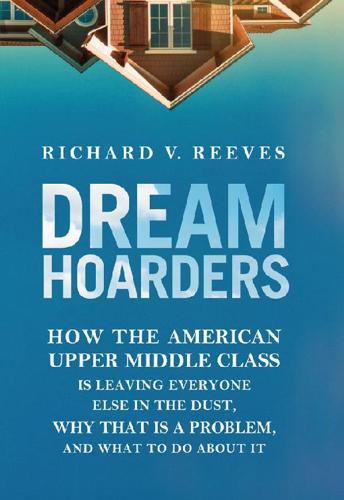
Dream Hoarders: How the American Upper Middle Class Is Leaving Everyone Else in the Dust, Why That Is a Problem, and What to Do About It
by
Richard V. Reeves
Published 22 May 2017
It is worth noting, too, that if all states implemented Medicaid expansion—at a cost to the federal government of around $952 billion over ten years—millions more low-income women would be able to access family planning services more easily.8 It is worth noting that Vice President Mike Pence, as governor of Indiana, was one of ten Republican governors accepting Medicaid expansion under Obamacare. Concerns about access to LARCs, especially among conservatives, typically center on moral issues. Many conservatives have authentic, deep, often religiously based views about sex and contraception. But I fear that they are out of step. Most Americans under the age of thirty-five agree with the following statement: “It is all right for unmarried eighteen year olds to have sexual intercourse if they have strong affection for each other.”9 The key is to ensure that the liberalization of attitudes toward sex does not lead to a liberalization of attitudes toward the moral responsibility to plan when, how, and with whom we bring children into the world.
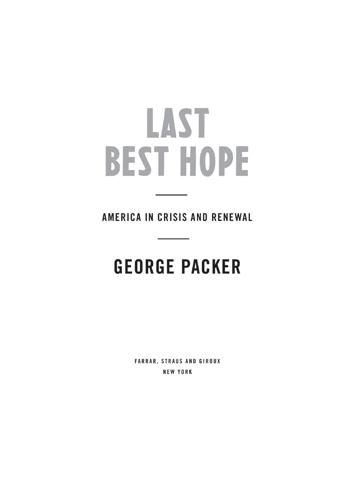
Last Best Hope: America in Crisis and Renewal
by
George Packer
Published 14 Jun 2021
Midwestern retirees who depended on social security had to ignore the fact that the representatives they kept electing, such as the libertarian Paul Ryan, wanted to slash their benefits. Veterans of Iraq and Afghanistan returned to Indiana and Texas embittered at having lost their youth in unwinnable wars, while conservative pundits kept demanding new ones. A Tea Party protester at a town hall meeting on Obamacare shouted, “Keep your government hands off my Medicare!” These contradictions were headed for a reckoning. As late as 2012, the Republican convention (in Tampa) was still a celebration of Free America and unfettered capitalism. Romney told donors at a fundraiser that the country was divided into makers and takers, and the 47 percent of Americans who took would never vote for him.
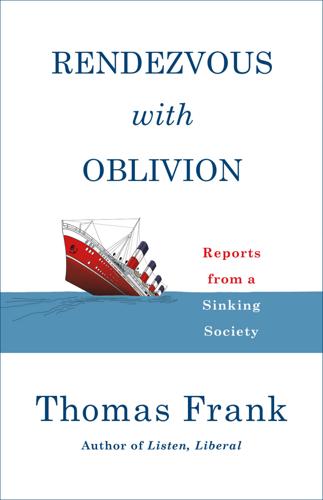
Rendezvous With Oblivion: Reports From a Sinking Society
by
Thomas Frank
Published 18 Jun 2018
Instead of encouraging the lowly to work hard and get “prepared for the new economy,” moaned the Post columnist Michael Gerson, the senator was merely offering them goodies—free health care and college—in the manner of outmoded “20th century liberalism.” Others took offense at Sanders’s health care plan because it envisioned something beyond Obamacare, which had been won at such great cost. This brings us to the question of qualifications, a nonissue for most voters that nevertheless caused enormous alarm among the punditry for a good part of April 2016. Columnist after columnist and blogger after blogger offered judgments on how ridiculous, how very unjustified it was for Sanders to suggest Clinton wasn’t qualified for the presidency, and whether Clinton hadn’t started the whole thing first by implying Sanders wasn’t qualified, and whether she was right when she did or didn’t make that accusation.
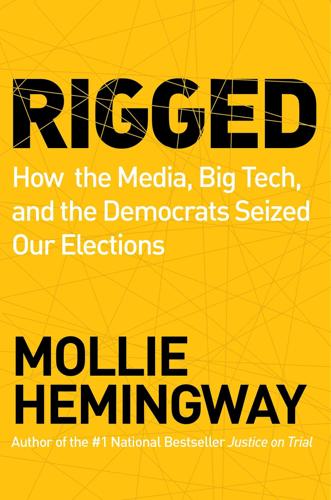
Rigged: How the Media, Big Tech, and the Democrats Seized Our Elections
by
Mollie Hemingway
Published 11 Oct 2021
The day after the election, Franken had lost the race to Republican senator Norm Coleman, but by only 727 votes.59 In swooped Elias and his team of attorneys and experts, who systematically set out over the course of six months to turn the 727-vote loss into a 312-vote victory.60 The ultimate decision in Franken’s favor gave Democrats a supermajority in the Senate, which they used to enact the sweeping health care legislation known as Obamacare. The Republicans never knew what hit them. In his landmark book The Victory Lab, Sasha Issenberg describes how Elias’s team used data-driven methods to secure victory. Al Franken’s lawyers began the recount not by trying to have all ten thousand challenged absentee ballots counted, but only the ones that went for the Democratic senator.
…
“We are just trying to make sure the integrity of the next election isn’t compromised.”64 The Franken election affected the Senate monumentally, securing for President Barack Obama a sixtieth vote that made it possible to pass filibuster-proof legislation. If Elias hadn’t changed the outcome of Al Franken’s election, Obamacare probably would not have passed. Not every recount went as well for Elias. Florida Republican Rick Scott narrowly defeated incumbent senator Bill Nelson in 2018. But late votes from Broward County in Florida pulled the election to within the .25 percent margin needed for a hand recount. It had already reached the .5 percent margin required for a machine recount.

Sandy Hook: An American Tragedy and the Battle for Truth
by
Elizabeth Williamson
Published 8 Mar 2022
Two weeks after the shooting, Pieczenik emailed Infowars a racist, antisemitic screed, accusing then attorney general Eric Holder of funding the “NON-EXISTENT Newtown Massacre!” “Welcome to the New Reichstag!!” Pieczenik wrote in an email released in court proceedings. “Is a black president above reproach for having lied continuously to the American people about Osama bin Laden; Benghazi; Newtown Massacre; and of course, folks, Obamacare?” Pieczenik went on like that for three pages. He hammered the same theme on Infowars for several years. * * * — James Fetzer, a bombastic, self-promoting philosophy professor retired from the University of Minnesota Duluth, had repelled his academic colleagues with his wacky theories since the early 1990s.
…
And now people are seeing that, they’re saying, ‘You know, Trump predicted Osama bin Laden,’ which actually is true. And then two years later, a year and a half later, he knocked down the World Trade Center.” Trump had not in fact “predicted Osama bin Laden.” Trump meandered through talking points on terrorism, Iran, Iraq, China, Obamacare, trade, his poll numbers, and his crowd sizes. Jones nodded along for a while, placing an index finger to his lips in a show of rapt attention. But then he started cutting Trump off, pushing for more. Jones had a big, paranoid following to impress. Yapping over the older man’s braying monotone, Jones began nudging Trump further out there, to satisfy his listeners.

Robot Rules: Regulating Artificial Intelligence
by
Jacob Turner
Published 29 Oct 2018
: The California Insurance Conundrum”, Santa Clara Law Review, Vol. 54 (2014), 69, http://digitalcommons.law.scu.edu/lawreview/vol54/iss1/3, accessed 1 June 2018. 114Olga Khazan, “Why So Many Insurers Are Leaving Obamacare: How Rejecting Medicaid and Other Government Decisions Have Hurt Insurance Markets”, The Atlantic, 11 May 2017, https://www.theatlantic.com/health/archive/2017/05/why-so-many-insurers-are-leaving-obamacare/526137/, accessed 1 June 2018. 115J.Ll.J. Edwards, “The Criminal Degrees of Knowledge”, Modern Law Review, Vol. 17 (1954), 294. 116Extreme carelessness may not suffice for murder, though it could be enough for the lesser crime of “manslaughter”.

The Misadventures of Awkward Black Girl
by
Issa Rae
Published 10 Feb 2015
Hearing him talk about it and acknowledge what happened gave me a sense of closure and comfort in knowing that I could actually talk to him about it. About anything, really. * * * My father is now remarried, settling in with his new wife. And though I find myself tip-toeing around her with forced politeness, I don’t find myself as hesitant to get inside his head. When I’m ready to go down that road, I will. Today, with the Obamacare California deadline looming, my dad calls me to make sure I have health insurance. “Hey, Dad,” I answer. “Sign up for the California Care. Google it and tell your sister.” I’m driving on Edgewood to a meeting in Hollywood. “Dad, I been had insurance. I’m grown,” I say playfully, laughing because my dad still doesn’t know exactly what it is that I do.
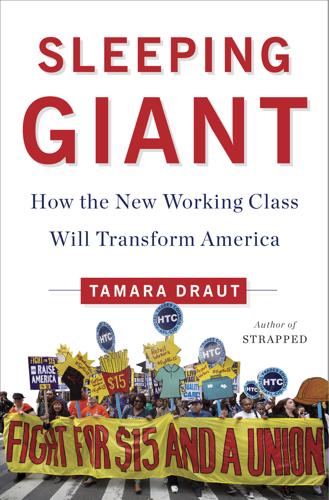
Sleeping Giant: How the New Working Class Will Transform America
by
Tamara Draut
Published 4 Apr 2016
If you don’t let them know you’re not coming in, they won’t work you the next day or so when you do come in,” she said. Because Rhonda isn’t considered an official employee, she doesn’t get health insurance from her job. She applied for health insurance through the new exchanges created by the Affordable Care Act and found out she didn’t earn enough money to qualify and needed to apply for Medicaid. She’s still waiting on a return phone call after applying. For now, her whole family is uninsured and must rely on clinics for care, “praying to God” that nothing serious happens. Because Rhonda and her husband can’t afford after-school programs or summer camp, their twelve-year-old son stays home by himself when school is out.
…
The real power is that through union dues, the labor movement can amass significant resources to engage in voter turnout, agenda setting, and issue advocacy, all on behalf of ordinary Americans. It’s that amassing of political power that is so threatening to conservatives and corporate America. After all, big labor has been responsible for advances in our day-to-day lives that still make conservatives livid: Medicare, Medicaid, and, yes, Obamacare too; unemployment insurance; Social Security; the forty-hour workweek; pensions (what’s left of them, anyway), and the minimum wage. These are just the greatest hits; many other humane advances in our lives owe their existence to labor unions. Power in America might be thought of as being historically represented by two scales.

Freedom Without Borders
by
Hoyt L. Barber
Published 23 Feb 2012
This would include Social Security, representing 40 Freedom Without Borders $63 trillion of the total, and which pays out retiree pensions, and health care benefits to Medicare recipients. These facts are part of why the total figure sounds so high, but imagine what the deficit will look like after Obamacare kicks in? Further, illegal immigrants also contribute to the rising deficit. Should this deficit double again in four years, as it did in the previous four, we’ll be looking at $260 trillion in national debt. What comes after trillion? Europe is in bad shape, as well, with the sovereign debt problems of at least a half a dozen countries threatening the entire European Union, including Europe’s ability to keep it together.
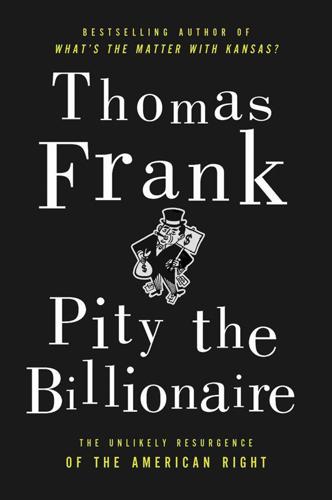
Pity the Billionaire: The Unexpected Resurgence of the American Right
by
Thomas Frank
Published 16 Aug 2011
It’s hard to convince a man sweating over a fifty-page income-tax return that the state has gone away or that markets are now in charge. And after 2008 there were some good reasons to believe—to fear—that the regulatory state was back, most obviously the universal health-care law signed by President Obama in 2010. Not only did Obamacare contain a—yes—burdensome provision that would have required businesses to issue 1099 forms for nearly every expenditure they made (it was promptly repealed in early 2011), but it required businesses with fifty or more employees to provide health insurance for workers, possibly stripping away one of the greatest competitive advantages that such firms possess.* If “capitalism” is the system in which you eke out a living installing plumbing or selling farm equipment, it is understandable that you feel that government interferes enough in capitalism already.
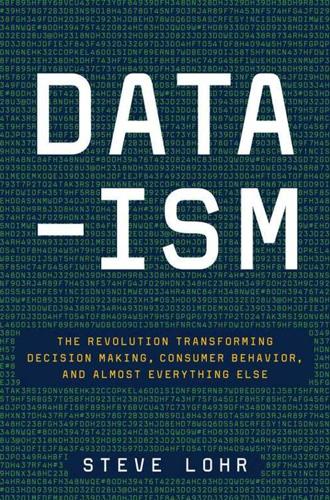
Data-Ism: The Revolution Transforming Decision Making, Consumer Behavior, and Almost Everything Else
by
Steve Lohr
Published 10 Mar 2015
Take a hypothetical but plausible example: a company’s call-center reports, customer data, and social-media tracking show that single Asian, black, and Hispanic women with urban zip codes are most likely to complain about the quality of products and service. But Asian women whose complaints are resolved become some of your most valuable customers. Should Asians get preferred treatment over black and Hispanic women when resolving complaints? Or a health insurer is seeking to grow by enrolling previously uninsured Americans. Under the Obamacare legislation, an insurer cannot discriminate against people with preexisting conditions. But applying data science to health blogs, browsing habits, social media, and profiles from data brokers can identify people most likely to have diabetes or depression. Do you systematically exclude those people from your marketing?

Confessions of a Crypto Millionaire: My Unlikely Escape From Corporate America
by
Dan Conway
Published 8 Sep 2019
Not only was I a god, but with this historic ETH boom, I was also Nostradamus. I’d never exhibited an ability to prognosticate before. Previously, I’d always been trying to catch up to new trends just as they petered out. At Safeway, I had tried to become an expert in healthcare policy too late, just as Obamacare made the real experts highly valuable. In the 1990s, I signed up for swing dance lessons after watching Swingers, right before the fad disappeared. But now, like a character out of the Bible who does something insane because God told him to, I’d ended up being right about ETH. I was right in the middle of one of the most profound disruptions the world would ever see.
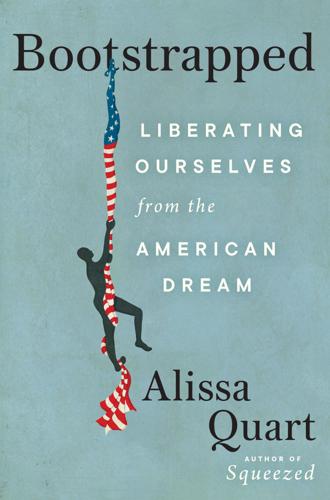
Bootstrapped: Liberating Ourselves From the American Dream
by
Alissa Quart
Published 14 Mar 2023
The results were catastrophic. Instead of inspiring financially stressed people to find jobs, the new policies simply introduced more convolutions. Thousands lost coverage, despite meeting the work requirements, and a Harvard study found no significant change to employment status. While the Affordable Care Act of the Obama administration had led to gains in insurance coverage overall, health-care costs continued to plague many Americans, and in 2017, eleven million Americans said they had had “catastrophic medical expenses.” GoFundMe, created in 2010 with lighter campaigns in mind, has become a major social service provider: it has gotten to the point where even the company’s founder complained publicly about GoFundMe’s new role: Robert Solomon, the CEO of GoFundMe, told CBS in 2019, “We weren’t ever set up to be a health-care company, and we still are not.”
…
A Fundamental Delusion (Lerner), 65 achievement, x–xii, 12, 34, 68, 130, 142, 188, 198, 223, 228 administrative burden, 108–11, 114, 209, 224 Administrative Burden: Policymaking by Other Means (Herd), 108 advantages, x, 62, 67, 172, 230, 244n See also privilege Adverse Childhood Experiences (ACE), 191–95, 202, 258n advocacy, 5–6, 111, 131, 141, 191–93, 212–15, 223 affluence, 39–40, 44, 47, 157, 168 Affordable Care Act, 109 Aflalo, Yael, 62–64 Aid to Families with Dependent Children, 125 Alger, Horatio, 6, 14, 39–50, 174, 218 Paul the Peddler, 40 pedophilia of, 41–43 Ragged Dick, 39–41, 240n Tony the Tramp, 40 Alone (TV show), 35–36 altruism, xi, 107, 125, 167, 171, 209 Amazon, 58, 89, 118, 135, 140, 149, 162 AmaZen, 248n Amazonians United, 149 ambition, x, 18, 20, 27, 54, 56, 130, 244n American Dream, Part I: Creators of, 3–50 American Dream, Part II: Brokers of, 53–99 American Dream, Part III: Burdens of, 103–50 American Dream, Part IV: Toward a New, 153–215 “American Genius,” 17, 49, 68 American Psychological Association, 65, 91, 249n American Red Cross, 209 American Rescue Plan, 131–32, 219 American Sniper (film), 16 Amoruso, Sophia, 61 anxiety, 5, 15, 80, 86, 94, 98, 167 Apostles of the Self-Made Man (Cawelti), 74 Apple, 46, 58, 88, 242n appropriation, 32, 61, 83–84, 148 Arendt, Hannah, 98 Arroyo, Raymond, 95 asymmetrical giving, 252n Atlas Shrugged (Rand), 45–46 Auntie Network, 166–67 autonomy, 14, 22, 50, 121, 124, 168 as “relational autonomy,” 16, 32, 230, 261n Ayn Rand Institute, 48 Barton, Clara, 209 Bazzi, Samuel, 36 Berardi, Franco “Bifo,” 149 Berlant, Lauren, x–xi Bernhard, J.
…
In 2015, while Wanek was at the helm: From a 2015 OSHA news release, accessed on March 4, 2022, https://www.osha.gov/news/newsreleases/region5/02022015. entitled Mean Girl, writes: Lisa Duggan, Mean Girl: Ayn Rand and the Culture of Greed (Oakland, CA: University of California Press, 2019). Rand inspired Whole Foods Market’s CEO John Mackey: John Mackey, “The Whole Foods Alternative to ObamaCare,” Wall Street Journal, August 11, 2009, https://www.wsj.com/articles/SB10001424052970204251404574342170072865070. and was contributor to her book Capitalism: The Unknown Ideal: The subtitle of this book cracks me up, as capitalism can seem to be the only ideal Americans universally know. Ayn Rand, Capitalism: The Unknown Ideal, first edition (New York: New American Library, 1966).
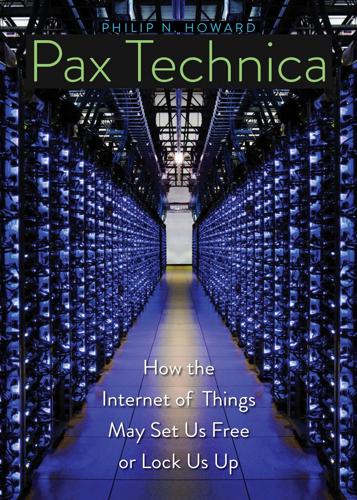
Pax Technica: How the Internet of Things May Set Us Free or Lock Us Up
by
Philip N. Howard
Published 27 Apr 2015
Incapacitating your opponents’ information infrastructure in the hours before an election has become part of the game, though there have been a few criminal convictions of party officials caught working with hackers to attack call centers, political websites, and campaign headquarters. Republican National Committee official James Tobin was sentenced to ten months in prison for hiring hackers to attack Democratic Party phone banks on Election Day in 2002. Partisans continue to regularly launch denial-of-service attacks; attackers consistently target Affordable Care Act (“Obamacare”) websites, for example. If an aggressive move with technology provides some competitive advantage, some campaign manager will try it. So the question is not whether political parties in democracies will start using bots on one another—and us—but when. They could be unleashed at a strategic moment in the campaign cycle, or let loose by a lobbyist targeting key districts at a sensitive juncture for a piece of legislation.

Talk on the Wild Side
by
Lane Greene
Published 15 Dec 2018
Other Twitter users, less prestigious or widely followed, will want to be part of the same conversation, and adopt that variant of the hashtag. The old ones often die out. (Sometimes, adoption of a hashtag can even signal group membership; after the passage of the Affordable Care Act in America in 2010, Republicans preferred #Obamacare and Democrats preferred #ACA.) In other words, this is more spontaneous order. Quickly on Twitter, more slowly in the spoken language, and more slowly still in writing, words change meaning, new ones are born, and other ones die. There is change in the system, but it functions as a system, not as a lot of randomly fluctuating pieces.
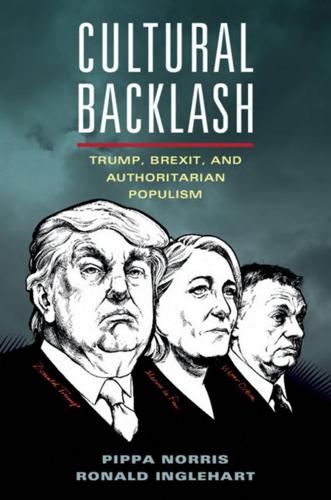
Cultural Backlash: Trump, Brexit, and Authoritarian Populism
by
Pippa Norris
and
Ronald Inglehart
Published 31 Dec 2018
He addressed this group’s concern by raising their moral status, describing ‘hard-working’ Americans as victims of globalization, voicing concern about elites, drawing strong moral boundaries toward undocumented immigrants, refugees, and Muslims, and stressing the traditional role of men as protectors of wives, mothers, and daughters.26 In practice, the Trump administration has joined Republicans in Congress to scrap many government regulations that protect families and the environment and undermined the Affordable Care Act (Obamacare). Tax reform, the major legislative achievement of Trump’s first year in office, has closely followed the traditional agenda of the GOP leadership, donors, and organized interests, enriching corporations by reducing taxes on profits, capital gains, and dividends, and benefitting big ticket donors, like the Koch brothers, while also weakening healthcare and exacerbating government debt.
…
Some economic priorities are right- wing: this includes supporting small-state laissez faire economic policies, which reflect the mainstream Republican Congressional leadership and the role of the GOP Freedom Caucus on issues such as the aggressive deregulation of environmental protection, seeking to repeal Obamacare, and rolling back corporate taxes. His economic policy positions strongly 220 Classifying Parties favor the rich, exemplified by the regressive 2017 Tax Cut and Jobs Act cutting the corporate tax rate permanently from 35 percent to 21 percent, with benefits flowing mainly to wealthy executives and shareholders.

Hillbilly Elegy: A Memoir of a Family and Culture in Crisis
by
J. D. Vance
Published 27 Jun 2016
Here’s a small sample of emails or messages I’ve seen from friends or family: •From right-wing radio talker Alex Jones on the ten-year anniversary of 9/11, a documentary about the “unanswered question” of the terrorist attacks, suggesting that the U.S. government played a role in the massacre of its own people. •From an email chain, a story that the Obamacare legislation requires microchip implantation in new health care patients. This story carries extra bite because of the religious implications: Many believe that the End Times “mark of the beast” foretold in biblical prophecy will be an electronic device. Multiple friends warned others about this threat via social media.
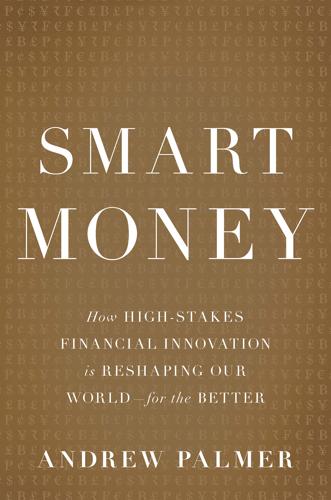
Smart Money: How High-Stakes Financial Innovation Is Reshaping Our WorldÑFor the Better
by
Andrew Palmer
Published 13 Apr 2015
And before you object that this rise was caused by the need to save the banks and the economies they wrecked, the financial crisis explains only some of this hike: on average, around half of these rises took place before the start of the crisis.2 As populations age, the chunk of public spending that is growing fastest is on such entitlements as pensions and health care. The Congressional Budget Office in the United States reckons that the total cost of entitlements such as Social Security (pensions), Medicare (health care for the elderly), Medicaid (health care for the poor), and the subsidies involved in Obamacare will rise inexorably over the coming years, from 9.8 percent of GDP in 2013 to 13.6 percent by 2035.3 The problem for democratic governments is that cutting back on entitlements is both the most obvious fiscal fix and the least attractive politically. The easier option, as the name suggests, is to try to reduce the pot of money for “discretionary programs,” where the state will not have to renegotiate guaranteed commitments to its citizens.

But What if We're Wrong? Thinking About the Present as if It Were the Past
by
Chuck Klosterman
Published 6 Jun 2016
This, I realize, is not a universally held position, and not just among the people who still think he was born in Kenya. With a year remaining in Obama’s tenure, New York magazine polled fifty-three historians about his legacy, most of whom gave him lukewarm reviews. Several pointed to his inability to unite the country. Others lauded ObamaCare while criticizing his expansion of the Oval Office itself. But those critiques remind me of someone looking at the career of Hank Aaron and focusing on his throwing arm and base running. It’s not merely that Obama was the first black president. It’s that he broke this barrier with such deftness and sagacity that it instantaneously seemed insane no black person had ever been elected president before.
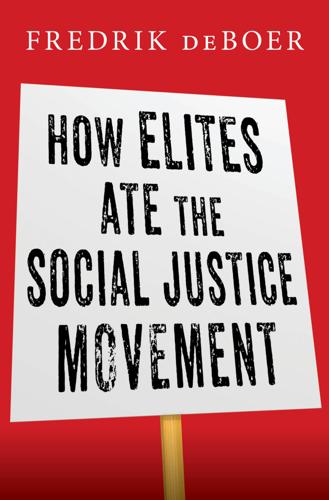
How Elites Ate the Social Justice Movement
by
Fredrik Deboer
Published 4 Sep 2023
That so many were willing to chalk up a white woman’s electoral failures to racism tells you something about the rhetorical environment in contemporary liberalism. Trump’s presidency amounted to a steady parade of gaffes and crises. Trump found it difficult to enact a legislative agenda: he failed to meaningfully change policy on his campaign’s signature issue of immigration, his Obamacare repeal effort failed to get past members of Congress in his own party, and the only major legislation he successfully passed was a large tax cut for the wealthy and corporations, hardly in keeping with the populist feints he had deployed on the campaign trail. That Republicans could force through tax cuts and no other major bills tells you something about the nature of American democracy.

No Such Thing as a Free Gift: The Gates Foundation and the Price of Philanthropy
by
Linsey McGoey
Published 14 Apr 2015
This evidence vindicated Healy’s concerns.26 He was later awarded an undisclosed settlement by the University of Toronto, and was offered a visiting professorship at the university. Both the Healy and Olivieri cases are seen as instrumental in reshaping policies across North America on the corporate funding of medical research. In a bid to make funding more visible, recent provisions included in the United States’ 2010 Patient Protection and Affordable Care Act require pharmaceutical manufacturers to file annual reports with the government about their financial ties to individual doctors and institutions. Conflicts of interest are, of course, not restricted to universities. They’re equally visible in politics, both at the personal level, where campaign contributions are seen as buying influence, and in foreign policy, where ‘tied aid’ development schemes require recipient nations to spend aid dollars on products manufactured in donor countries.
…
.: and the Commodity Exchange Act, 211; and gaining control of charity sector, 109; and imposition of position limits for stock market, 212; and social duty to extend government aid, 110 Rotary International, 154, 157 Rothstein, Jesse, 141 Roy, Arundhati, 229 Roy, Sanjit “Bunker”, 67, 68 Sachs, Jeffrey, 38–9 Salmon, Felix, 16–7 Schaffer, Harwood, 221–2 Schambra, William, 136–7 Schmidt, Eric, 64, 242 Scott, James, 239, 240, 241 Scott, Lee, 67 Shah, Sonia, 160, 168 Sherman, John, 45–6 Sherman Antitrust Act, 45, 53 Shiva, Vandana, 229 Skoll, Jeff: and eBay, 63; and philanthropy, 63; and Skoll World Forum, 63–5, 86–7, 112; and social entrepreneurship, 65, 68–9, 86–7 Skoll Foundation, 65, 66, 69 Smith, Adam: and concept of the invisible hand, 16, 17, 37; and need for government regulation, 94; and patents, 179; political economy of, 90; and trade restrictions, 200 Soros, George, 9, 21, 214; and 2012 Skoll World Forum, 63; and funding a pro-immigration platform, 24; and investment in commodities indices, 213 South Africa, 188, 189, 191 Spencer, Herbert: and idea of noninterference of government, 49; and social Darwinism, 48–9 Standard Oil: Department of Justice suit against, 4, 54; and Supreme Court’s decision to split up company, 53 steel industry, 43, 49, 50 Stuckler, David, 174, 224, 228 Sun Oil Company, 59–60 Tanzania, 82, 205 Tarbell, Ida, 54–5 taxes: and avoidance of by Vodafone, 82, 84–5; and charitable donations, 84–5, 230–1; and corporate taxes, 110; and double exemption, 85; and double taxation, 84–5; and Nick Hanauer’s talk on tax measures, 108–9; and public’s subsidy of philanthropy, 232–4; and tax breaks for organizations, 27, 94, 228, 229, 230–1, 243; and tax codes, 8; and tax-free bonds, 110; and tax incentives for philanthropic foundations, 23, 230, 232–3, 241; and Tax Reform Act of 1969, 62, 232–3; in the United States, 107 Tea Party movement, 198, 200, 243 TED (Technology Entertainment Design) events: and Chris Anderson, 108–9; and cost of, 64, 65; and entrepreneurs, 14; and Peter Singer, 146 Thatcher, Margaret, 111–2, 238 Theil, Peter, 242–3, 245 think-tanks, 61, 106–7, 109, 238 Tucker, William Jewett, 11, 14 UNICEF, 154, 157 United Kingdom: and austerity cuts, 74–5; and Big Society Capital bank, 74; and Big Society initiative, 74–6; and Cameron’s spending cuts for nonprofit sector, 74–5; and Conservatives, 111; and Department for International Development, 81, 82; and difficulty with war veterans’ compensation, 76; and dignity of receiving aid from government, 75; economy of, 171; and food prices, 210; and funding for Vodaphone’s M-PESA system, 81–2; Ghana’s independence from, 170; and halting of affordable housing programme, 74; and homelessness, 75; and idea of social contract, 75–6; and Labour Party’s victory, 246–7; and largest charity Wellcome Trust, 149; and Medical Research Council, 83; and mercantilism, 90; and national insurance programmes, 75; and philanthrocapitalism, 76; and public offering of Royal Mail, 100; and spending on global health issues, 154; and think-tanks, 238 United Nations: and Anand Grover, 165; and Food and Agricultural Organization, 19, 210; and microcredit loans, 78; and United Nations Foundations, 192; and World Food Programme’s Purchase for Progress, 207–8, 216; and World Health Organization, 8, 19, 225 United States: and Affordable Care Act, 105; and aid to developing regions, 38–9; and Chamber of Commerce, 137; and charitable giving, 17, 40; and CIA’s fake vaccination drive, 156–7; and Civil Rights movement, 73; and clinical trials for drugs, 167–8; and commodities markets, 210–4; and companies in poor nations, 172; and contraception, 22, 102; and debate over safety of Gardasil vaccines, 163–4; and Department of Justice anti-trust case against Microsoft, 9, 184, 185; and DOJ’s suit against Standard Oil, 4, 53; and Departments of Justice and Agriculture, 209; economy of, 149, 171, 199–200, 211; and expertise in fighting diseases, 150; feelings about Gates Foundation in, 21; and food insecurity, 210; foreign policy of, 157; and global food aid, 203–4; Harrison, Benjamin, 45; and Hoover administration, 109–11; and immigration policy, 132; and income inequality, 107–8; and lack of political will for reform, 234; and laws regarding price-fixing and product bundling, 185; and Lewis and Clark, 113; and list identifying countries in violation of intellectual property rights, 188–9; and lobbying efforts of multinational companies, 225; and McKinley tariff, 45; and National Guard, 10, 43; and New Deal policy of lowering oil costs, 60; and the Panic of 1857, 211; and People’s Party, 43; and President Harrison, 45; and prisons, 113–5, 131; and racial climate of the early 20th century, 58; and railroad expansion, 113; and regulatory laxity; and Republicans, 111; and scandal in Luzerne Country, PA, 114–5; and securities law, 64; and segregation, 46; and shaping of education sector by Gates Foundation, 27–8; and Sherman Antitrust Act, 45; and Silicon Valley, 8, 83; and spending on global health issues, 154, 160; and stock market crash of 1929, 110, 211; and subsidies to farm industry, 217; and US Food and Drug Administration, 105; and US National Science Foundation, 83; and wealthiest one per cent, 18 University of Chicago, 58, 59, 236–7 University of Edinburgh, 167 University of Oxford: and Mandeville’s essays attacking charity, 91; as site of Skoll World Forum, 63–5, 86–87 University of Toronto: and Apotex as corporate donor, 104; and Centre for Addiction and Mental Health, 104; and David Healy, 104–5; and donor Eli Lilly, 104–5; and James Orbinski, 153; and threatening or dismissing academics, 103–4 USAID, 78, 203–4, 217 US Centers for Disease Control and Prevention, 193 US-Central America Free Trade Agreement, 201–2 US Congress: and the Commodity Exchange Act, 211; and donor-advised funds, 231–2; and Gensler’s testimony about harmful speculation in energy and agriculture, 213; and philanthropic foundations, 234; and report on Gore’s effort to overturn South African legislation, 188; and Rockefeller Foundation, 3–4, 6 Veblen, Thorstein, 115–6 Vodafone, 81–2, 85 Wainer, Howard, 134–5 Walmart, 25, 67 Walsh Commission on Industrial Relations, 52; and public concerns over wealth concentration, 234; and testimony of Rockefeller Sr., 53 Walton Family Foundation: and contributions to education, 122; criticisms of, 24–5, 230; and investments, 123; and primary and secondary for-profit schools, 9; and tax-avoiding trusts, 24–5; and Walton family, 23, 25–6 Ward, Lester Frank, 51, 84 Washington, Booker T.: and efforts to advance education for African Americans, 10, 47; as supporter of ‘separate but equal’ doctrine, 46 Weber, Max, 53 Wellcome, Henry, 149 Wickersham, George, 95–96 Wilson, Woodrow, 52, 58, 234 Woestehoff, Julie, 135–6 World Bank: and International Monetary Fund, 172; and Joseph Stiglitz, 172; and lending requirements for Ghana, 170; and microcredit loans, 78, 79; and ranking of countries, 2; and tax avoidance loopholes, 204–5 World Economic Forum, 30, 64; and attendance during 2009 crisis, 86; and founder Klaus Schwab, 66 World Food Programme, 207–8 World Health Organization: and accountability, 8, 196; budget of, 8; and campaign against smallpox, 155; and cash grants from large corporations, 226; and conference in Moscow, 226–7; and cutting of jobs, 226; and delay of guidance on early use of HIV treatment, 194–6; and earmarked funding for fighting diseases, 224; and eradication of malaria, 160; establishment of, 150; and fight against polio, 154, 157–8; and global health issues, 26, 149, 191; investments of, 149; and involvement of Gates, 154, 196; and League of Nations Health Organization, 150; and list of companies manufacturing safe AIDS drugs, 191; and Melinda Gates, 244; and Pan American Health Organization, 226; and policy-setting, 19; and regulations for businesses, 226; and report on diet and physical activity, 225; and voluntary contributions, 224 World Trade Organization, 186, 187, 189, 201 Young, Michael, 72–3 Yunus, Muhammad: and awarding of Nobel Peace Prize in 2006, 77; and Grameen Bank, 78, 79; and microcredit loans, 7, 78–9; and social innovation, 73 Zambia, 204, 205 Zuckerberg, Mark, 23, 24 Zunz, Olivier, 60, 110
…
A typical article tends to read like this one, by Barry Ellsworth, in an op-ed for the online news bulletin Allvoices.com: ‘Charles and David Koch are at it again’, Ellsworth writes, this time using their wealth to back a creepy ‘Carenival’ complete with games, jugglers, knife throwers, and acrobats whose sole purpose is to scare people away from Obamacare … some billionaires like Microsoft founder Bill Gates and Facebook’s Mark Zuckerberg use some of their vast riches to advance the cause of mankind through humanitarian donations. Then there are those like the coal-loving Koch brothers, who seem to delight in using their money to throw up roadblocks to programmes that would benefit the vast majority of Americans.38 The problem with this type of commentary is that it is a little like professing that you believe in democracy but only if your preferred party is the sole candidate.
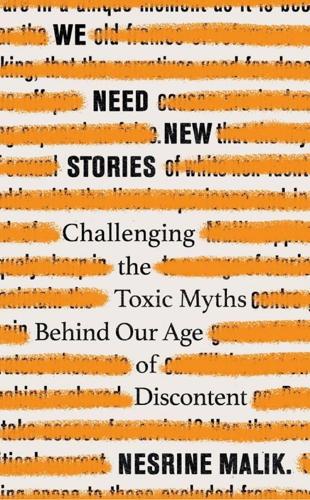
We Need New Stories: Challenging the Toxic Myths Behind Our Age of Discontent
by
Nesrine Malik
Published 4 Sep 2019
Racial politics also backfire in other less obvious but in aggregate, life-shortening ways. In Dying of Whiteness: How the Politics of Racial Resentment is Killing America’s Heartland, author Jonathan Metzl argues that the cultural associations of ‘whiteness’ encourage white people to adopt political views, such as opposition to gun laws or the Affordable Care Act, that reduce their own life expectancy. ‘They could look at the wealthy persons or corporations or donors who were actually causing policies that were worsening their lives, or they could look at the people they believed were taking away their resources,’ Metzl summarised in a Vox interview.
…
The Trump administration also reversed a directive that forced universities to quickly investigate on-campus sexual assault. Former president Barack Obama had enacted the requirement, which lowered the burden of proof and cut federal funding if schools weren’t compliant, in 2011. Trump rolled back another Obamacare provision requiring employers to offer health insurance that covered birth control. He signed a law that lets local governments withhold federal funding from healthcare providers like Planned Parenthood that offer abortions, along with myriad other women’s healthcare treatments like breast cancer screenings.

A Book for Her
by
Bridget Christie
Published 1 Jul 2015
She said she liked the one of me as an ant inside a cardboard box surrounded by sugar, and suggested we made a film about FGM. Not dressed as ants, obviously. Her idea was that I could interview her in a funny, ignorant way about FGM, which would highlight all the ignorance surrounding it. Leyla had just watched Barak Obama’s interview about ObamaCare on Zach Galifianakis’s Between Two Ferns on the website Funny or Die, and she thought we could do something similar. In order to pay for our short film, Leyla and I needed some quick cash, because we wanted to film it before our benefit that was coming up and show it there. The quickest way we were going to get some was for me to go on ITV1’s Celebrity Squares.
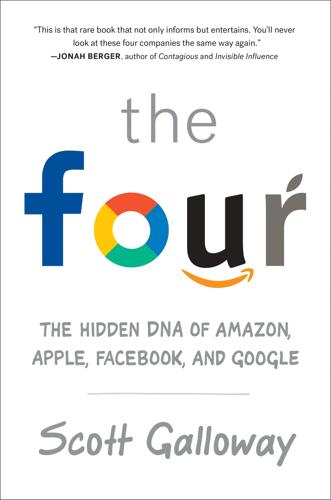
The Four: How Amazon, Apple, Facebook, and Google Divided and Conquered the World
by
Scott Galloway
Published 2 Oct 2017
In the case I’m most familiar with, the New York Times, I saw that editors not only wanted to get the news right; they tried to achieve a balance in the stories they edited. If there was a bunch of news that seemed to appeal to the left—say, Dreamers being deported or big chunks of Antarctica breaking off and melting—they’d try to get some conservative balance, maybe a David Brooks column attacking Obamacare. Now people can argue forever about whether the shrinking ranks of responsible media actually achieve balance and get it “right.” Still, they try. When the editors are debating which stories to feature, they at least consider their mission to inform. Not everything is clicks and dollars. But for Facebook, it is.

What's the Matter with White People
by
Joan Walsh
Published 19 Jul 2012
At her funeral, my cousin told me it was the last phone call she had made. Other than that, no one in my family mentioned the O’Reilly segment at all. • • • The political bullying continued. By August, the Tea Party movement exploded into congressional town halls, where raging protesters shouted down Democrats and Republicans alike, demanding that they block “Obamacare.” Hundreds descended on a Tampa Democrat’s meeting, and a local newspaper described the event as “more like a wrestling cage match than a panel discussion on national policy.” Maryland representative Frank Kratovil was hung in effigy, Long Island representative Tim Bishop needed a police escort from an angry town hall to his car, and North Carolina representative Brad Miller reported death threats.
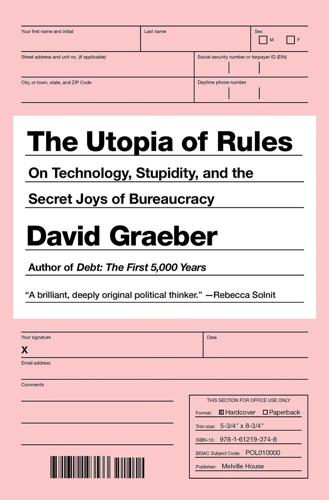
Bureaucracy
by
David Graeber
Published 3 Feb 2015
In a way, the famous TV character of Archie Bunker, an uneducated longshoreman who can afford a house in the suburbs and a non-working wife, and who is bigoted, sexist, and completely supportive of the status quo that allows him such secure prosperity, is the very quintessence of the corporatist age. 19. Though it is notable that it is precisely this sixties radical equation of communism, fascism, and the bureaucratic welfare state that has been taken up by right-wing populists in America today. The Internet is rife with such rhetoric. One need only consider the way that “Obamacare” is continually equated with socialism and Nazism, often, both at the same time. 20. William Lazonick has done the most work on documenting this shift, noting that it is a shift in business models—the effects of globalization and offshoring really only took off later, in the late nineties and early 2000s.
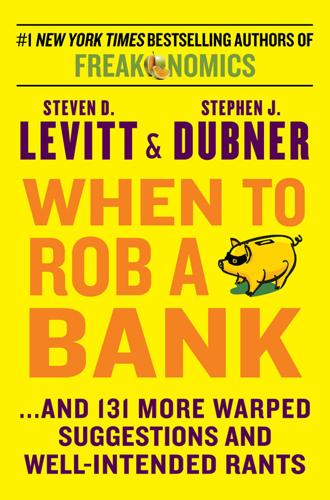
When to Rob a Bank: ...And 131 More Warped Suggestions and Well-Intended Rants
by
Steven D. Levitt
and
Stephen J. Dubner
Published 4 May 2015
That story has riled up some people, including an economics blogger named Noah Smith, who rails on us and defends the NHS. I should start by saying I have nothing in particular against the NHS, and I also would be the last one to ever defend the U.S. system. Anyone who has ever heard me talk about Obamacare knows I am no fan of it, and I never have been. But it doesn’t take a whole lot of smarts or a whole lot of blind faith in markets to recognize that when you don’t charge people for things (including health care), they will consume too much of it. I guarantee you that if Americans had to pay out of their own pockets the crazy prices that hospitals charge for services, a much smaller share of U.S.
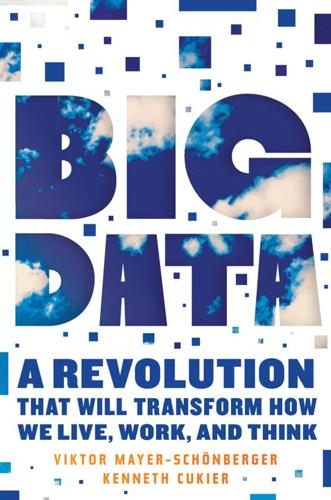
Big Data: A Revolution That Will Transform How We Live, Work, and Think
by
Viktor Mayer-Schonberger
and
Kenneth Cukier
Published 5 Mar 2013
It cost the company millions of dollars to create and maintain. Now consider Google. It arguably has the world’s most complete spell checker, in basically every living language. The system is constantly improving and adding new words—the incidental outcome of people using the search engine every day. Mistype “iPad”? It’s in there. “Obamacare”? Got it. Moreover, Google seemingly obtained its spell checker for free, reusing the misspellings that are typed into the company’s search engine among the three billion queries it handles every day. A clever feedback loop instructs the system what word users actually meant to type. Users sometimes explicitly “tell” Google the answer when it poses the question at the top of the results page—“Did you mean epidemiology?”
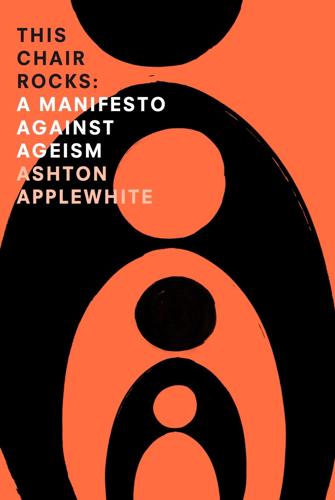
This Chair Rocks: A Manifiesto Against Ageism
by
Ashton Applewhite
Published 10 Feb 2016
Fishman, “As Populations Age, a Chance for Younger Nations,” New York Times magazine, October 14, 2010. 12 Thomas Edsall, “Who is Poor?” New York Times, March 13, 2013. 13 Frank Furedi, preface to The Imaginary Time Bomb by Phil Mullan (London: I.B. Tauris & Co., 2002), xii. 14 Longman, op. cit. 15 Martha Albertson Fineman and Stu Marvel, “The right’s latest Obamacare lie: Scapegoating America’s seniors,” Slate.com, November 7, 2013. 16 A. Palangkaraya and J. Yong, “Population ageing and its implications on aggregate health care demand: empirical evidence from 22 OECD countries,” International Journal of Health Care Finance Econ (2009), 391–402. doi: 10.1007/s10754-009-9057-3. 17 DE Kingsley, “Aging and Health Care Costs: Narrative Versus Reality,” Poverty & Public Policy, 2015;7(1):3–21. doi: 10.1002/pop4.89 World Health Organization, “World Report on Ageing and Health,” 2015. 18 Matthew C.
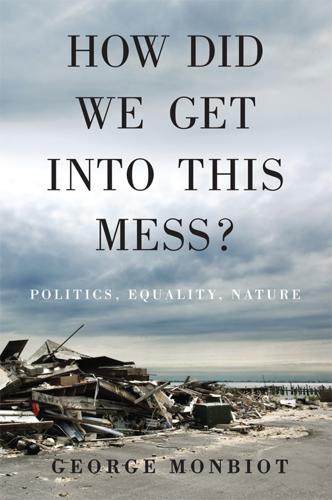
How Did We Get Into This Mess?: Politics, Equality, Nature
by
George Monbiot
Published 14 Apr 2016
Bombing’, haaretz.com. 17Paul Sperry, 15 December 2013, ‘Inside the Saudi 9/11 Coverup’, nypost.com. 18Guardian, ‘The BAE Files (series)’, theguardian.com. 19David Leigh and Rob Evans, 5 February 2010, ‘BAE and the Saudis: How Secret Cash Payments Oiled £43bn Arms Deal’, theguardian.com. 20Andrew Bousfield and Richard Brooks, 19 September 2014, ‘Shady Arabia and the Desert Fix’, Private Eye. 44. A Global Ban on Leftwing Politics 1David Cameron, 23 January 2013, ‘EU speech at Bloomberg’, gov.uk. 2George Monbiot, 14 October 2013, ‘From Obamacare to Trade, Superversion Not Subversion Is the New and Very Real Threat to the State’, theguardian.com. 3McCabe Centre for Law and Cancer, ‘Philip Morris Asia Challenge under Australia–Hong Kong Bilateral Investment Treaty’, mccabecentre.org. 4Corporate Europe Observatory, 3 June 2013, ‘A Transatlantic Corporate Bill of Rights’, corporateeurope.org. 5Thomas McDonagh, 2013, Unfair, Unsustainable, and Under the Radar, The Democracy Center, democracyctr.org. 6Glyn Moody, 23 July 2013, ‘Eli Lilly Raises Stakes: Says Canada Now Owes It $500 Million for Not Granting a Patent It Wanted’, techidirt.com. 7McDonagh, Unfair, Unsustainable, and Under the Radar; Public Citizen, March 2013, ‘U.S.
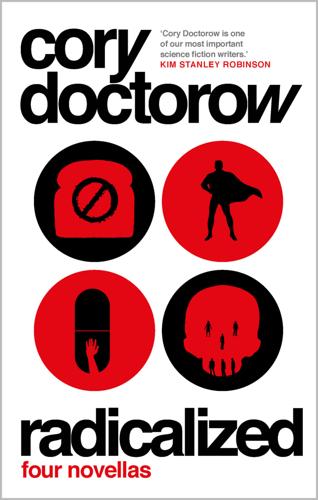
Radicalized
by
Cory Doctorow
Published 19 Mar 2019
He’d been en route home from his Capetown summit on Air Force One when the news broke, and after huddling with his communications team, he’d sat down with the press corps and delivered an unhinged, rambling statement that ranged over America’s “best health-care in the world,” the evils of “something for nothing culture,” and the ongoing project to “clean up the Obamacare disaster” before getting onto the main attraction: calling the shooter a “terrorist.” The word rang in Joe’s ears. His earbuds felt sweaty and itchy. He’d been a teenager on 9/11 and his strongest memory from then was this new word, “terrorist,” and its weird resonances, like it described an orc, ravening and remorseless, superhuman and subhuman at once.

Live Work Work Work Die: A Journey Into the Savage Heart of Silicon Valley
by
Corey Pein
Published 23 Apr 2018
He no longer took time off on the weekends, or put in less than a twelve-hour day during the workweek, without triggering feelings of overwhelming guilt and the subtle scorn of his colleagues, who were also his friends. As for money, he earned less as a CEO than he would have if he had taken a regular job at the company. He had no health insurance, not even Obamacare. His apartment sucked. His litany continued. I tried pointing out Adrian’s many achievements: He had found investors! He had raised millions of dollars! He was walking the path to greatness! He was like a role model to millions! “If I had to do it all over again,” he told me, shoulders slumped, “I’d have gone to work for the government.”
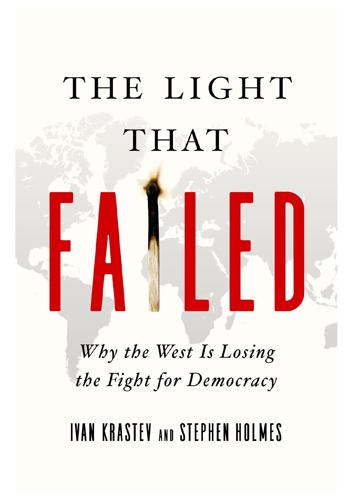
The Light That Failed: A Reckoning
by
Ivan Krastev
and
Stephen Holmes
Published 31 Oct 2019
Understanding this characteristically populist gambit will help explain why the liberal response to Trump, while often admirably professional and intellectually persuasive, has been so disappointingly weak politically. Liberals despise Trump for pulling out of the Paris Accord and the Iranian nuclear deal, trying to destroy Obamacare, giving generous tax cuts to the rich while withdrawing funding from programmes that benefit the poor, putting underage children separated from their parents at the Mexican border into cages, making light of the abominations committed by autocrats he admires, using the term ‘globalist’ to suggest that Jewish Americans are disloyal, and so forth.

Dark Matters: On the Surveillance of Blackness
by
Simone Browne
Published 1 Oct 2015
The root word -veillance is differently applied and invoked, for example, with the terms “überveillance” (often defined as electronic surveillance by way of radio-frequency identification or other devices embedded in the living body), “redditveillance” (the crowdsourcing of surveillance through publicly accessible CCTV feeds, photographs uploaded to online image sharing platforms such as Flickr, and online discussion forums, such as Reddit and 4chan), and “dataveillance,” to name a few.51 Lyon has outlined the “potency of dataveillance” in a surveillance society, which, he writes, is marked by “a range of personal data systems, connected by telecommunications networks, with a consistent identification scheme.”52 The prefix data- signals that such observing is done through data collection as a way of managing or governing a certain population, for example, through the use of bar-coded customer loyalty cards at point of sale for discounted purchases while also collecting aggregate data on loyalty cardholders, or vehicles equipped with transponders that signal their entry and exit on pay-per-use highways and roads, often replacing toll booths. The Guardian newspaper named “surveillance” and “sousveillance” as the words that mattered in 2013 alongside “Bitcoin,” “Obamacare,” and “binge-watching.”53 For Steve Mann, who coined the term “sousveillance,” both terms—sousveillance and surveillance—fall under the broad concept of veillance, a form of watching that is neutral. Mann situates surveillance as the “more studied, applied and well-known veillance” of the two, defining surveillance as “organizations observing people” where this observing and recording is done by an entity in a position of power relative to the person or persons being observed and recorded.54 Such oversight could take the form of red-light cameras that photograph vehicles when drivers violate traffic laws, or the monitoring of sales clerks on shop floors with CCTV, as well as, for example, punch clocks that track factory workers’ time on the floor to more ubiquitous forms of observation, productivity monitoring, and data collection, such as remote desktop viewing or electronic monitoring software that tracks employees’ non-work-related Internet use.

Rise of the Robots: Technology and the Threat of a Jobless Future
by
Martin Ford
Published 4 May 2015
Consolidate the Industry and Treat Health Insurance as a Utility One of the primary messages that leaps out from an analysis of the prices charged by providers is that Medicare—the government-run program for people aged sixty-five and over—is by far the most efficient portion of our health care system. As Brill writes, “Unless you are protected by Medicare, the health care market is not a market at all. It’s a crapshoot.” The implementation of the Affordable Care Act (Obamacare) will certainly improve the situation as far as individuals who previously lacked insurance are concerned, but it does relatively little to actively rein in hospital costs; instead, the inflated costs will be shifted to insurers and then ultimately to taxpayers in the form of the subsidies that were put in place to make health insurance affordable to people with moderate incomes.
…
.* However, the reality is that the vast majority of medical school graduates are not especially interested in entering family practice, and they are even less excited about serving rural areas of the country. Various studies predict a shortage of up to 200,000 doctors within the next fifteen years as older doctors retire, the Affordable Care Act plan brings as many as 32 million new patients into the health insurance system, and an aging population requires more care.11 The shortage will be most acute among primary-care physicians as medical school graduates, typically burdened by onerous levels of student debt, choose overwhelmingly to enter more lucrative specialties.
…
* In the United States, the constitutional authority to create a single-payer system—regardless of whether it is run by the government or by private corporations—probably derives from the government’s ability to levy a tax on everyone to pay for the system. Therefore, all or a portion of the premiums would be paid by the government. This is already the case with the insurance subsidies associated with the Affordable Care Act. In other words, the federal government can force everyone to pay for a single-payer system through taxes, but it cannot prohibit a parallel private system. So there still would likely be additional services available to those willing and able to pay out of pocket, just as there are private schools.
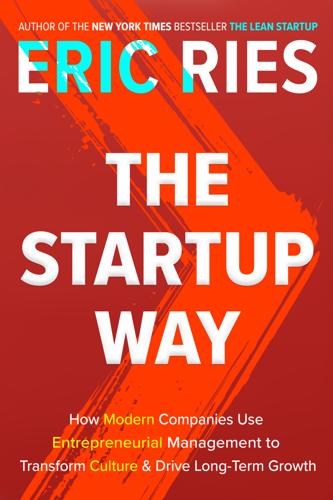
The Startup Way: Making Entrepreneurship a Fundamental Discipline of Every Enterprise
by
Eric Ries
Published 15 Mar 2017
But compared to the Department of Health and Human Services (roughly 80,000 employees and counting1)? The political maelstrom of Obamacare? Is your situation really more challenging than that? In October of 2013 Mikey Dickerson, a site reliability engineer at Google, made a phone call that changed not only his life but the lives of millions of Americans. He had worked on President Barack Obama’s 2012 reelection campaign and had been watching in horror the recent news about HealthCare.gov, the technological centerpiece of the Affordable Care Act, which the Obama administration had launched on October 1. The online marketplace, built at a cost of $800 million over three years by a collection of fifty-five different contractors,2 had immediately crashed.
…
The question was how to make his talents a regular part of the work he did at GE, rather than an occasional flash of brilliance that burned out quickly. Even the federal government found it had similar creative people, and they were the foundation of a technological transformation that began when President Obama took office and is still going on. It included not only the rescue of HealthCare.gov, the site launched to facilitate the Affordable Care Act in 2013, which immediately melted down, but also the creation of new organizations within the government like the United States Digital Service and the Technology Transformation Service (all of which you’ll read more about in later chapters). These people exist in every organization—including yours.
…
The entrepreneurial principles we’ve discussed can and should be used in developing policy as well. In fact, we’ve already seen several examples of this entrepreneurial mindset applied in policy domains: stories about how government agencies used lean methods to create the means for delivering policy that had already been made—the Affordable Care Act, the College Scorecard, the immigration paperwork at USCIS. This is an important step, and I urge all policymakers to follow these examples.1 This chapter is about how we might be able to run fruitful policy-making experiments that will help leaders face their current challenge: creating conditions that will allow the next generation of entrepreneurs to thrive.

Markets, State, and People: Economics for Public Policy
by
Diane Coyle
Published 14 Jan 2020
This leaves many people without medical coverage. (Other nations such as Switzerland, France, and Germany have either private insurance funding where the insurance coverage is mandatory or a social insurance scheme.) In 2014 15% of Americans—about one in seven—were uninsured and had no access to Medicare. The 2010 Affordable Care Act (“Obamacare”) was intended to tackle this problem, and by 2015 the proportion of those without coverage had fallen to 10%. The US therefore has a costly system by comparison with other countries, as described above, spending a higher share of its GDP on health care yet with poor health outcomes by international standards and less access to care for the people at the bottom of the income scale.
…
The share of GDP spent on health will continue to rise for reasons of demography as well as technical advances and increasing costs of health care services. Nevertheless, many Americans are strongly opposed to a different approach and the Affordable Care Act was controversial. Choice in the market is seen as the most important principle, and there is a far stronger tradition of individualism than in Europe. The US Congress has reduced the initial increase in the scope of coverage through the Affordable Care Act, and the policy outcome is far from settled (as of 2019). In the context of this chapter, however, the point is that the largely privately funded US system is regressive whereas in other OECD member countries public spending on health care is progressive: like other forms of public service, such as education and transport, it involves a significant transfer of resources through the tax system to people on low incomes.
…
This may be good for health outcomes, but society ends up with an economically inefficient, high level of treatment (like the US, which spends more as a share of GDP on health care than other OECD nations but has worse average health outcomes). Most governments provide health care, provide insurance, or mandate regulated health insurance. The United States does so through the Medicare and Medicaid programs; more recently, its Affordable Care Act represents an extension of the principle of addressing the market failures in this domain—although it is of course a divisive partisan issue. There are also health events that are not really insurable at all because they are, on the contrary, so likely to happen—such as the minor illnesses of old age and indeed death.

Economists and the Powerful
by
Norbert Haring
,
Norbert H. Ring
and
Niall Douglas
Published 30 Sep 2012
As insurance is all about administration and marketing, this can be a very important drawback (Kirchgässner 2007). Many other kinds of insurance, including health insurance, are likely to exhibit similar patterns. Thus there might be good reasons in this particular case for a government endorsed monopoly. Indeed, even though the US Patient Protection and Affordable Care Act 2010 (“Obamacare”) is badly designed, if implemented correctly its fundamental economic principles are sound. Ireland, which is one of the few countries in Europe to have a fully privatized health care system, is introducing compulsory health insurance from 2014 as a means of saving public money and achieving universal coverage, exactly as the US should have.

Trick Mirror: Reflections on Self-Delusion
by
Jia Tolentino
Published 5 Aug 2019
It is very easy, these days, for student borrowers to end up underwater—indebted for a degree that’s worth much less than what they paid. There are lots of similarities between the housing bubble and the tuition bubble. Like subprime mortgages, student loans at for-profit colleges are nearly always extended in bad faith. The Obama administration nationalized most of the student loan industry as part of the 2010 Affordable Care Act legislation, and so this web of securitized debt is government business, and it is expanding rapidly—student debt ballooned to over $1.5 trillion in 2018. But there’s one major difference between housing debt and education debt: at least for now, if you hope to improve your life in America, you can’t quite turn away from a diploma the way you can a white picket fence.
…
He promised to prosecute Hillary Clinton, to drop Bowe Bergdahl out of an airplane without a parachute, to make Nabisco produce Oreos in America, to make Apple produce iPhones in America, to bring back all the jobs to America, to get rid of gun-free zones in schools, to give everyone who killed a police officer the death penalty, to deport all the undocumented immigrants, to spy on mosques, to defund Planned Parenthood, to “take care of women,” to get rid of Obamacare, to get rid of the EPA, to make everyone say “Merry Christmas,” to build an “artistically beautiful” wall between the United States and Mexico that would be the “greatest wall that you’ve ever seen,” to make Mexico pay for that wall, and—funniest of all, sort of—to never take a vacation as president.

Doing Time Like a Spy
by
John Kiriakou
Published 11 May 2017
Third, thank you very much for your very generous contributions to my family. I’ve told several of you that I could only make it through this nightmare because of friends and supporters like you, and I mean it. Health care is a major topic of debate in the national press, especially now that the Affordable Care Act (Obamacare) is law. Health care is also a major topic of conversation and debate here at Loretto, although we prisoners don’t have much authority to change the status quo. Loretto is considered to be a Level 2 medical facility; that is, it is supposed to be equipped with a medical unit that can handle prisoners with chronic problems like diabetes, emphysema, and other issues.

The Space Barons: Elon Musk, Jeff Bezos, and the Quest to Colonize the Cosmos
by
Christian Davenport
Published 20 Mar 2018
It was as if Columbus had discovered the New World and no one followed. THE WHITE HOUSE was losing the public relations battle. Neil Armstrong, of all people, had come out against the decision. For the Obama administration, the timing could not have been worse. It was in the middle of the fight to push through the health-care initiative, the Affordable Care Act, popularly known as Obamacare, and it didn’t need any distractions. Particularly not one in space, which wasn’t a high priority. And it certainly did not need America’s heroes criticizing the nation’s chief executive. This needed to be fixed, and fast. So the White House decided to bring out the president himself to help remedy what was turning into an increasingly difficult problem.
…
It was years behind schedule: https://www.youtube.com/watch?v=sDNdYgh5124. Robert Bigelow: Christian Davenport, “An Exclusive Look at Jeff Bezos’s Plan to Set Up Amazon-like Delivery for ‘Future Human Settlement’ of the Moon”, Washington Post, March 2, 2017. INDEX Advanced Research Projects Agency (ARPA), 60–62, 129 Affordable Care Act, 161 Afghanistan, attack on, 127 Air Force, US, 6, 30, 51–52, 129–130, 247 air launch concept, 80–81 Aldrin, Buzz, 21, 62, 161, 172, 197, 257 Alexa, 254 Alexander, Bretton, 170, 179–180 Allen, Paul, 6 anxiety over powered flight tests, 91–92, 108 Branson’s collaboration on SpaceShipOne, 108 commercial space flights, 4 developing spaceplanes and shuttles, 269 human space travel research, 268 passion for space and aviation, 84–85, 265–267 Scaled Composites, 84 SpaceShipOne flights, 89–90, 96 Stratolaunch Alsbury, Michael, 212–214, 231–232 Amazon as funding for space exploration, 253–254 business strategy, 14–15 early obscurity, 17–18 infrastructure development, 260–261 maintaining the startup culture, 75 start up of, 72–73 Anderson, Eric, 249 Anderson, Pamela, 106 Ansari X Prize, 5 Branson’s purchase of SpaceShipOne, 92 congressional hearing on industry oversight, 124–125 Paul Allen and the commercial space movement, 265–266, 268 Paul Allen’s plan with Rutan, 85 SpaceShipOne, 80, 87 Trevor Beattie’s ticket to, 112–113 See also SpaceShipOne Antares rocket, 210 Apollo 8 program, 257 Apollo astronauts, death of, 274–275 Apollo missions drawdown following, 116–117, 160–162 Explorers Club, 196–197 Mars as natural successor to, 69–70 Musk and Bezos’s aspirations, 235 Musk’s desire to transcend, 38–39 Saturn V rocket recovery, 189–192 young men in control of, 121 Apophis (asteroid), 36–37 Ares rockets, 139–140, 156–157, 159–160, 162 Argus, Operation, 62 Armstrong, Neil, 21, 62, 142, 161, 172, 235, 255, 275 artificial intelligence, 254 asteroids as habitats, 71 collisions, 32, 36–37 mining, 249 Obama on deep space exploration, 161–162 Atlas V rocket, 130–131, 173, 206, 248 Atomic Energy Commission (AEC), 61–62 Augustine, Norman, 159 autonomous rockets, 222–223 Bader, Douglas, 103 Bailey, F.
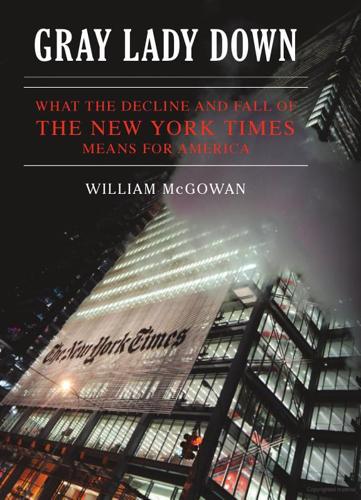
Gray Lady Down: What the Decline and Fall of the New York Times Means for America
by
William McGowan
Published 16 Nov 2010
“His vision was of a country racked with fear and bent on vengeance, one that imposed invidious choices on the world and on itself. When we listened to President Obama speak in Cairo on Thursday, we recognized the United States.” The Times’ infatuation with Obama continued in its support for his health care agenda, popularly known as “Obamacare.” To be sure, the Times had its truck with the effort. But its criticism did not focus on the shadowy horse-trading behind the bill, nor on how it would affect the deficit, nor on the constitutional issue of the federal government forcing citizens to buy insurance or face a penalty. Its major criticism came from Obama’s left, especially when he backed away from the so-called “public option,” and seemed to be dragging his feet in using his bully pulpit to lobby lawmakers, particularly Democratic representatives who might lose their seats in the midterm elections.
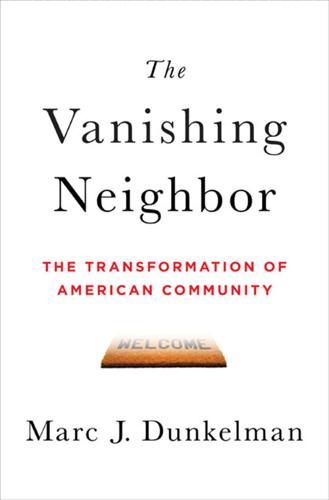
The Vanishing Neighbor: The Transformation of American Community
by
Marc J. Dunkelman
Published 3 Aug 2014
Metro West Daily News, October 24, 2011. 19Peter Orszag, “Pension Funding Scare Won’t Frighten All States,” Bloomberg View, October 23, 2012. 20Binyamin Appelbaum and Robert Gebeloff, “Even Critics of Safety Net Increasingly Depend on It,” New York Times, February 12, 2012. 21Glenn Kessler, “Sarah Palin, ‘Death Panels’ and ‘Obamacare,’ ” Washington Post, June 27, 2012. 22Christine Montross, “The Woman Who Ate Cutlery,” New York Times, August 3, 2013. Chapter 15: The Marshmallow Test 1Paul Tough, How Children Succeed (New York: Houghton Mifflin Harcourt, 2012), 62. 2Walter Mischel, Yuichi Shoda, and Philip K. Peake, “The Nature of Adolescent Competencies Predicted by Preschool Delay of Gratification,” Journal of Personality and Social Psychology 54, no. 4 (1988): 688–89. 3Yuichi Shoda, Water Mischel, and Philip K.
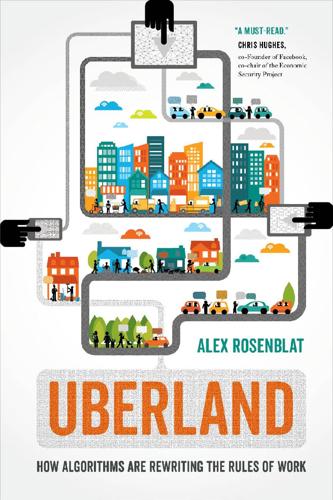
Uberland: How Algorithms Are Rewriting the Rules of Work
by
Alex Rosenblat
Published 22 Oct 2018
he asks, before launching into a tirade of conspiracy theories about black supremacy, Black Lives Matter riots, and illegal aliens, whom he asserts comprise 90 percent of the employees in factories. With a practiced mental calm, I gently meet his provocations with light, curious inquiries and answer questions he has about socialized medicine in Canada. Ted generously concedes it must work better in its Canadian form, though he’s aggressively derisive of Obamacare. He also adds that he’s almost Jewish, though he hasn’t brought himself to fully convert yet, before turning the subject to government efforts to put gluten in bananas (even though they are naturally gluten-free). Driving is a full-time job for Ted while he goes to school to study computer science, though he’s struggling to meet his rising health-care costs, between the cost of school and his driver earnings.
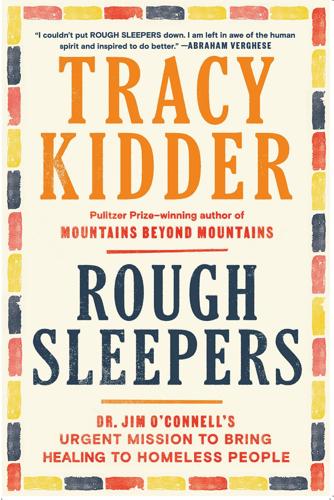
Rough Sleepers: Dr. Jim O'Connell's Urgent Mission to Bring Healing to Homeless People
by
Tracy Kidder
Published 17 Jan 2023
And it was obvious that he’d begun to imagine a role for himself with the Street Team, as Jim’s assistant on the front lines—an unsanctioned, not yet fully formed idea of a place for himself in the world, which had the urgent quality of a thing conceived in desperation. 3 The Social Director For Jim, 2017 was a year of worries. First of all, “Trump”—shorthand for the president’s attempts to eradicate Obamacare. If successful, it would bring deep cuts in funding for poor people’s medicine and, Jim feared, maybe kill the Program. A troubling philosophical issue also loomed. He served on a panel that was compiling a study of studies for the National Academies of Sciences. The aim was to show that housing for homeless people improved their health and saved the public money, and yet no studies fully supported those widely held claims, none at least that met the standards of the academics on the committee.

How to Stand Up to a Dictator
by
Maria Ressa
Published 19 Oct 2022
They talked about affirmative action in the police force, how standards had been lowered three times to hit the quota, and how that wasn’t fair. They talked about immigration and how everyone has to sacrifice for those who don’t want to work (never mind that we were a family of immigrants from Italy and the Philippines). My parents live in Florida, voted for Clinton, then switched to Trump after Obamacare raised the prices of their medicines. My siblings and I sensed their anger being fueled by something. When Facebook took down the Russian information operations, their accounts went down, too. When voices started rising at the table, I told my family that we should guard against hate. Vinnie told me that Toms River, with its ninety-five thousand residents, had been mentioned by the Buffalo shooter in his 180-page manifesto a week earlier because of its growing Hasidic community.1 The police had increased security around the area, and the Ocean County prosecutor had tamped down fears: “I can state, unequivocally, that there is no evidence that the shooter had any intention or inclination to travel to anywhere in Ocean County.”

Think Like a Rocket Scientist: Simple Strategies You Can Use to Make Giant Leaps in Work and Life
by
Ozan Varol
Published 13 Apr 2020
noredirect=on&utm_term=.b81dd6679eee; Wyatt Andrews and Anna Werner, “Healthcare.gov Plagued by Crashes on 1st Day,” CBS News, October 1, 2013, www.cbsnews.com/news/healthcaregov-plagued-by-crashes-on-1st-day; Adrianne Jeffries, “Why Obama’s Healthcare.gov Launch Was Doomed to Fail,” Verge, October 8, 2013, www.theverge.com/2013/10/8/4814098/why-did-the-tech-savvy-obama-administration-launch-a-busted-healthcare-website; “The Number 6 Says It All About the HealthCare.gov Rollout,” NPR, December 27, 2013, www.npr.org/sections/health-shots/2013/12/27/257398910/the-number-6-says-it-all-about-the-healthcare-gov-rollout; Kate Pickert, “Report: Cost of HealthCare.Gov Approaching $1 Billion,” Time, July 30, 2014, http://time.com/3060276/obamacare-affordable-care-act-cost. 2. Marshall Fisher, Ananth Raman, and Anna Sheen McClelland, “Are You Ready?,” Harvard Business Review, August 2000) https://hbr.org/2000/07/are-you-ready. 3. Fisher, Raman, and McClelland, “Are You Ready?” 4. Richard Feynman, Messenger Lectures, Cornell University, BBC, 1964, www.cornell.edu/video/playlist/richard-feynman-messenger-lectures/player. 5.
…
As the data began to flow in, the engineers’ screens told a rapidly unfolding life-and-death story. They watched, with jaws dropped, as everything turned red. Catastrophe ensued. Shortly after launch, it crashed and burned. THIS WAS NO rocket launch. Instead, it was the unveiling of healthcare.gov—a centerpiece of the Affordable Care Act—a landmark piece of legislation enacted during President Barack Obama’s term to provide affordable health insurance to Americans. The legislation was the promise, and the website was the fulfillment—or was supposed to be the fulfillment. Americans would use the website to shop for and purchase insurance.
…
Users were unable to perform basic functions like create new accounts. The website miscalculated health-insurance subsidies and sent users into inescapable loops. Only six people were able to sign up for insurance on the first day of the website’s operation. How was healthcare.gov—so critical to the success of the Affordable Care Act—so badly botched? Why did a platform that cost nearly $2 billion fail to perform basic commands? Rockets and websites are different beasts, but they have at least one thing in common. They’ll crash unless you follow a cardinal rocket-science principle called test as you fly, fly as you test.

MONEY Master the Game: 7 Simple Steps to Financial Freedom
by
Tony Robbins
Published 18 Nov 2014
Keep more of your hard-earned income, and that’s money that you could invest and compound to achieve your vision of Financial Freedom quicker. In fact, if you’re a high-income earner, living in a high-income state like California (as I used to), your total tax bill (including income, investment, payroll, Obamacare, and Social Security) clocks in at 62%. Which means that unless you have an efficient tax strategy, you get to keep only 38 cents out of every dollar you earn. There’s no good reason to pay more than you have to—in fact, it’s your right as an American not to pay more than you have to. As Billings Learned Hand, one of the most influential judges of all time, stated: Anyone may arrange his affairs so that his taxes shall be as low as possible; he is not bound to choose that pattern which best pays the Treasury.
…
Then in 2012 California raised taxes on the highest income earners by more than 30%, to 13.3%. After a lifetime of paying through the nose on state income taxes (historically among the most punishing in the country), the tax situation got even worse. My effective tax rate—after federal and state income taxes, Social Security, investment taxes, payroll taxes, and the Obamacare tax—shot up to 62%. That meant I was left with 38 cents on every dollar. Just 38 cents! And on top of that, the new state income tax increase was made retroactive, meaning that I was going to have to pay additional tax on income I had already earned that year. They changed the rules of the game after the fact!
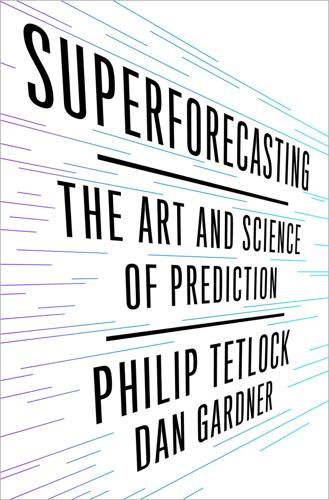
Superforecasting: The Art and Science of Prediction
by
Philip Tetlock
and
Dan Gardner
Published 14 Sep 2015
If the forecast said there was a 70% chance of rain and it rains, people think the forecast was right; if it doesn’t rain, they think it was wrong. This simple mistake is extremely common. Even sophisticated thinkers fall for it. In 2012, when the Supreme Court was about to release its long-awaited decision on the constitutionality of Obamacare, prediction markets—markets that let people bet on possible outcomes—pegged the probability of the law being struck down at 75%. When the court upheld the law, the sagacious New York Times reporter David Leonhardt declared that “the market—the wisdom of the crowds—was wrong.”15 The prevalence of this elementary error has a terrible consequence.
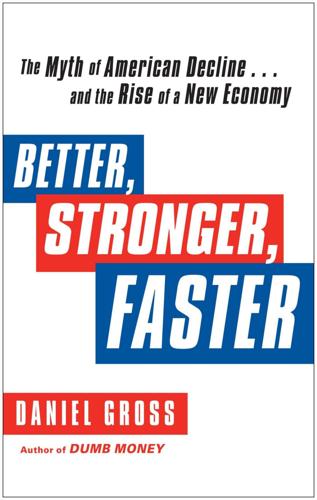
Better, Stronger, Faster: The Myth of American Decline . . . And the Rise of a New Economy
by
Daniel Gross
Published 7 May 2012
According to the Center for Budget and Policy Priorities, if we pursue the “do-nothing option”—if Washington remains gridlocked over vital policy issues—the Bush-era tax cuts on income, investments, and estates will expire; the payroll tax holiday will end; the alternative minimum tax will hit ever larger numbers of taxpayers; spending cuts in Medicare passed in 1997 will finally take hold; the automatic sequestration of spending for defense and social programs envisioned in the Super Committee gambit will take place; and Obamacare will be implemented. All told, the combination of higher taxes and spending that is now the default, no-action option would reduce deficits by $7.1 trillion over ten years.4 The trade deficit, which peaked in 2006 at $753 billion, shrank to $381 billion in 2009, and started to grow again as the economy recovered, to $500 billion in 2010 and $558 billion in 2011.
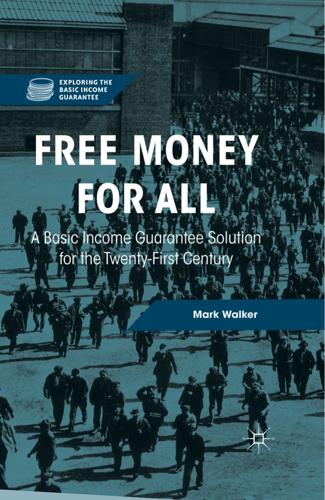
Free Money for All: A Basic Income Guarantee Solution for the Twenty-First Century
by
Mark Walker
Published 29 Nov 2015
There is absolutely no indication that the additional trillion dollars buy the average American significant benefit. Admittedly, it does serve the interests of some, including the wealthiest. So, no single health system will appeal to the interests of everyone. Hard choices must be made: should we have a system that benefits the majority or the wealthiest? The present system, even in its revised “Obamacare” form, favors the latter. It may be objected that if we opt for a Canadian-style health care system, taxes would have to go up dramatically to finance the increased cost. The answer to this is the mind-blowing statistics I detailed above. The US government already spends more than Canada per person.
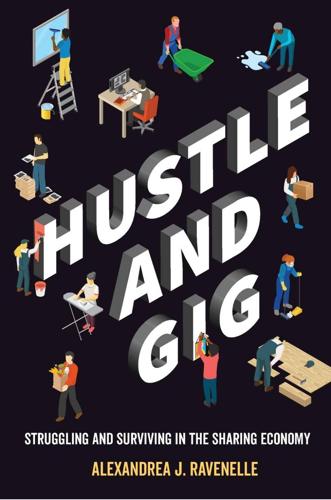
Hustle and Gig: Struggling and Surviving in the Sharing Economy
by
Alexandrea J. Ravenelle
Published 12 Mar 2019
Or an ‘opt-in’ that gives consumers the option of adding a nominal amount to their payment that would go to a benefits fund for workers.”90 “Somebody may be doing very, very well as an Etsy seller and Airbnb user and Uber driver and part-time consultant[,] . . . but if they hit a rough patch, they have nothing to stop them until they fall, frankly, back upon government assistance programs,” the senator explained, calling the portable benefits an “emergency fund”: “It might be a fund to take care of a disability if you get hurt. It might work with some existing retirement programs. Part of it would be, depending on what happens with Obamacare, an ability to help deal with health care expenses. I think there will be a variety of models.”91 While the portable benefits plan may be helpful for Success Stories and Strugglers whose main employment comes from the sharing economy, Strivers who have alternative employment may not be as well served under such a plan.

Word by Word: The Secret Life of Dictionaries
by
Kory Stamper
Published 14 Mar 2017
This trend has been much more common in the U.K.: “Bored by, of, or with?,” Oxford Dictionaries (blog), April 24, 2016, www.oxforddictionaries.com. “trying to chisel in on the beer racket”: Merriam-Webster Unabridged, s.v. “chisel, verb.” And now we see the word “muggle”: “The Supreme Court’s reading and defense of Obamacare meant to him that ‘words no longer have meaning’ and he decried his fellow justices for their ‘interpretive jiggery-pokery.’ That last insult was an unusual one, and it led the muggles of the Internet to wonder where they’d heard it before.” Marina Koren, “Antonin Scalia and the Supreme Court of Jiggery-Pokery,” National Journal, June 25, 2015.

A Year of Living Danishly: My Twelve Months Unearthing the Secrets of the World's Happiest Country
by
Helen Russell
Published 14 Sep 2015
Morten insists that Danish healthcare is in a good place: ‘In Denmark, we spend 12 per cent of our GDP on healthcare that works well, is efficient and is for everyone. In the US, for example, they spend 18 per cent of their GDP on healthcare but there’s no equality or sharing – so some people have nothing.’ The UK spends just 9.6 per cent, according to WHO figures. There’s a lot of interest in the Danish system from the Obamacare lobby, and Morten regularly meets with supporters in the US, keen to find out more. But many Americans remain reluctant to share their personal information. ‘A lot of people still hate the idea of the public sector seeing or owning their data,’ says Morten. ‘Some people think the whole thing sounds too much like communism, that it makes you “unfree”.
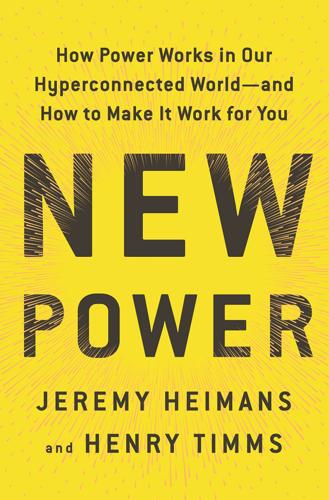
New Power: How Power Works in Our Hyperconnected World--And How to Make It Work for You
by
Jeremy Heimans
and
Henry Timms
Published 2 Apr 2018
He started that speech by noting with surprise just how many people were in attendance, and then offered a rambling tour d’horizon of the epic failings of America and his unique capacity to put things right. China was beating America. So was Japan. So was Mexico. The situation in the Middle East was a disaster. Obamacare was a disaster. Obama was a disaster. “I beat China all the time.” “Nobody builds walls better than me.” “I’ve done an amazing job.” “I don’t have to brag. I don’t have to.” “We need—we need somebody—we need somebody that literally will take this country and make it great again.” Many rolled their eyes, dismissing him as they would their mad uncle muttering obscenities at the television.

Messing With the Enemy: Surviving in a Social Media World of Hackers, Terrorists, Russians, and Fake News
by
Clint Watts
Published 28 May 2018
His social media pontifications promote topics and themes that play to his audience’s preferences more than they describe actual policies or reality. The online herds that supported, promoted, and now sustain President Trump shared certain preferences: anti-immigration, anti-Muslim, nationalist rather than globalist, toughness in general but particularly against the Islamic State, low taxes, repeal of Obamacare, and even standing for the national anthem rather than kneeling. The more a narrative grows in popularity, the more Trump amplifies it. The more he champions what the audience likes, the more support he accrues from this preference bubble. Trump wins the crowd regardless of whether he wins anything for the crowd.

The Quiet Damage: QAnon and the Destruction of the American Family
by
Jesselyn Cook
Published 22 Jul 2024
Leah would sit at the dinner table, her food barely touched, listening to the woman who had taught her to always advocate for others—who had gone into law to fight for the less fortunate—now fuming about the taxes she was required to pay to support people on welfare. Every time Leah pointed out the hypocrisy, Emily would snap that she had simply opened her eyes to reality. She even grumbled over the phone about the Obamacare provision barring insurance companies from denying coverage to those with preexisting health conditions, which had resulted in higher premiums and out-of-pocket costs for her. Leah couldn’t believe what she was hearing. For the first eighteen years of her life, she had relied on a legal framework enabling children with certain disabilities to be covered under Medicaid.
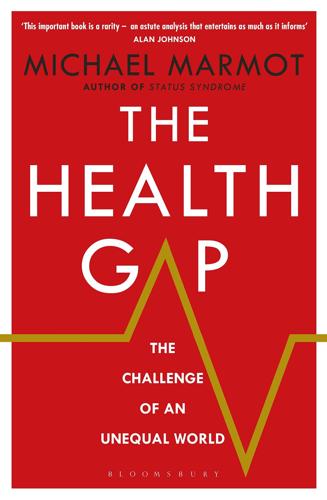
The Health Gap: The Challenge of an Unequal World
by
Michael Marmot
Published 9 Sep 2015
In the US much of the discussion of ‘disparities’ – the American term for health inequalities or health inequity – is indeed about health care. Such concern is hardly surprising given that although the US spends more on health care than any other country, about one-sixth of its population lack health insurance, and hence have had difficulties in access to care. This should change with the Affordable Care Act, Obamacare. Well-meaning US colleagues have urged me not to talk about social determinants of health in the US because it might detract attention from inequities in access to care. An example of why they might be concerned was given to me by a US colleague. Medicaid pays for health care for the poor.
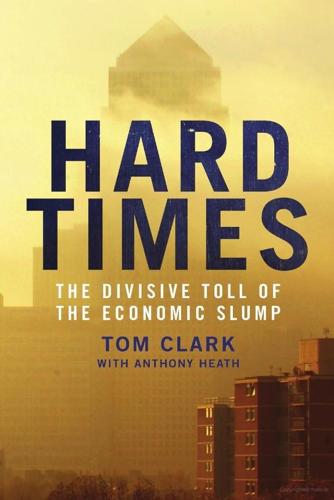
Hard Times: The Divisive Toll of the Economic Slump
by
Tom Clark
and
Anthony Heath
Published 23 Jun 2014
printable=true¤tPage=all For the resulting technical design flaws of the package, see Joseph E. Stiglitz, Freefall: America, free markets, and the sinking of the world economy, Norton, New York, 2010. 24. Table 1 of the Congressional Budget Office's revised and final ‘Estimates for the insurance coverage provisions of the Affordable Care Act [Obamacare] updated for the recent Supreme Court decision’, at: www.cbo.gov/sites/default/files/cbofiles/attachments/43472–07–24–2012-CoverageEstimates.pdf 25. Ryan Lizza, ‘The second term’, New Yorker, 18 June 2012, at: www.newyorker.com/reporting/2012/06/18/120618fa_fact_lizza?printable=true 26.

The Upstarts: How Uber, Airbnb, and the Killer Companies of the New Silicon Valley Are Changing the World
by
Brad Stone
Published 30 Jan 2017
Kalanick sat on one side of the long table and, after dinner, gave a short speech and answered questions. Emil Michael sat on the other side, across from New York Daily News publisher Mort Zuckerman and Arianna Huffington. Next to them sat Ben Smith, the editor in chief of BuzzFeed, who asked Kalanick in the Q-and-A session how he felt about the Affordable Care Act, aka Obamacare. When the table returned to private conversations, Michael asked Smith why he had posed a political question, and Smith volunteered that he was hoping that Kalanick would give an answer that revealed libertarian leanings. That led to a broader conversation about the news media and its scruples, the exact content of which would become a topic of blistering controversy.

The Golden Passport: Harvard Business School, the Limits of Capitalism, and the Moral Failure of the MBA Elite
by
Duff McDonald
Published 24 Apr 2017
“Perhaps the easiest coalitions to form will be those that merge parts of the capitalistic and managerial; the most difficult probably will be efforts to bridge between socialism and capitalism.” He was right about that last point—to this day, the tension between capitalism and socialism continues to be a vexing one for the country. Consider the passage of Obamacare. But he was dead wrong about the former—capitalism and managerialism did not form a coalition; capitalism chewed managerialism up and spit out the bones. In defense of Michael Jensen, then, it is somewhat of an overstatement to suggest he participated in the murder of managerialism, because by the time he was spreading his ideas about corporate and managerial purpose, managerialism was already dead.
…
P., Jr., 77 Morgan Stanley, 455, 460 Morgens, Howard, 190–93, 195 Moriarty, Rowland, 332 Morison, Elting, 244 Morrison, Roger, 202 Moss, David, 249 Motivation, Productivity, and Satisfaction of Workers, The (Zaleznik et al), 308 Munger, Charlie, 480, 482 Murphy, Kevin, 371, 375 Murphy, Liam, 540 Murphy, Tom, 51, 76, 163, 169, 170–71, 172 “Musings on Management” (Mintzberg), 483 “Myth of the Well-Educated Manager, The” (Livingston), 290–92 My Years with General Motors (Sloan), 194, 245 Nader, Ralph, 523 Nakamura, Kaneo, 153–54, 157 Nanda, Ashish, 235–36, 521–22 Nash, Laura, 436 National Football League (NFL), 403 National Research Council, 80, 83 Nature Conservancy, 561 “Nature of Man, The” (Meckling and Jensen), 368 Networks and Organizations (Nohria), 559 “Never Overestimate the Power of the Computer” (Lewis), 296 Nevin, John, 493–94 “New Capitalism” movement, 87 New Enterprises and Small Business Management (Day and Donham), 326 Newhall, Chuck, 322 New Industrial State, The (Galbraith), 342 New Jersey Bell Telephone, 111 New Yorker, 516–17, 534; article on MBAs in consulting firms, 212 New York Stock Exchange, 469, 476 New York Times: article on Ackman, 480; article on Romney, 507; Bok looking for new dean, 337, 338; on Burke, 526; Cabrera in, 551; Clark quote, 500; conflict-of-interest policies, 404–5; David’s statement, 141; exposé of Amazon, 90; Frei on women MBA students, 569–70; gender equity at HBS, 570, 571; HBS as a golden passport, 1; HBS grading differential, 241; HBS online learning articles, 572–73; on HBS’s TUP, 160; Jensen interview, 381; Khurana in, 550; Kristof report, 166; LeBoutillier editorial, 435; Leonhard’s article, 494–95; on Levitt, 263; Martin article, 461; Material Service bribing of state officials, 346; on MBAs at McKinsey, 210; McArthur cancels interview, 341; Mintzberg interview, 485; Morgens in, 191–92; Porter’s article, 362; Shad op ed, 431–32; Stahlman’s article, 301; Tufano on Enron, 520 New York Times Magazine, 345, 360 Nixon, Richard, 354, 469, 507 Nohria, Nitin (dean), 17, 51, 52, 157–58, 194, 261, 331, 350, 408, 559, 564–74, 577 ; board memberships, 574; case method and, 565–66; digital learning, 571–74; fund-raising, 532, 533, 535, 536; inclusion as goal of, 241; “It’s Time to Make Management a True Profession,” 306, 439, 566; MBA Oath, 565, 567–68; salary of, 532; women at HBS and, 569–71 Norquist, Grover, 505–6 Norton, David S., 44, 444 Noyce, Bob, 320 Obama, Barack, 238; Obamacare, 384 Ochs, Adolph S., 105 O’Donnell, Joseph, 162 Official MBA Handbook, The, 461 “Of Harvard, Elitism, and Amorality” (LeBoutillier), 435 Olsen, Kenneth H., 126 Olsen, R. Paul, 283 O’Neal, Stan, 548 One Market Under God (Frank), 57, 161, 490 Organization Man, The (Whyte), 144, 184, 350 Orth, Charles, 398 Orwell, George, 379–80 Osgood, Mary Elizabeth, 237 O’Toole, James, 224 Overdorf, Michael, 303 Ovitz, Michael, 371 Paine, Lynn Sharp, 437 Palepu, Krishna, 408–9, 521 Palihapitiy, Chamath, 329–30 Palmisano, Sam, 404 Pareto, Vilfredo, 78, 81, 111, 112, 113, 244 Parker, Dorothy, 23 Parks, Sharon, 437 Parsons, Talcott, 356–57, 244 Pascal, Amy, 534 Patton, Arch, 538–39 Paulson, Hank, 74, 466, 475–77, 561; financial crisis of 2007–10 and, 548; Goldman Sachs and, 477–78; HBS given $400 million, 478; Paulson Institute, 561 Paulson, John, 68, 466, 477–79, 531, 533, 535 Pechter, Richard, 468 Peck, Gregory, 186 Pellegrini, Paolo, 478 Perkins, Donald, 106, 332 Perkins, Thomas, 120, 127, 322 Pershing Square Capital Management, 466, 479, 481 Person, Harlow, 38 Pestillo, Peter, 163 Peters, Tom, 417, 513 Petriglieri, Gianpietro and Jennifer, 311, 313 Pfeffer, Jeffrey, 314, 317, 424 Pickens, T.

Augmented: Life in the Smart Lane
by
Brett King
Published 5 May 2016
Technologies like gene therapy, personalised medicine and smart drugs will no doubt be part of treatment regimens, but the real art for cities will be changing citizen behaviour so that overall healthcare issues are reduced or minimised. Costs will be a fraction of those of the healthcare systems today. In this future, Obamacare won’t be an issue because the cost of care will have been dramatically reduced. Call it socialism 2.0—social care that doesn’t require the massive budgets we’ve come to expect. Smart Pollution Reduction Pollution of water and air is a major challenge for modern metropolises. Large cities such as Jakarta, Beijing and Mexico City have tens of thousands who fall ill because of such pollution.
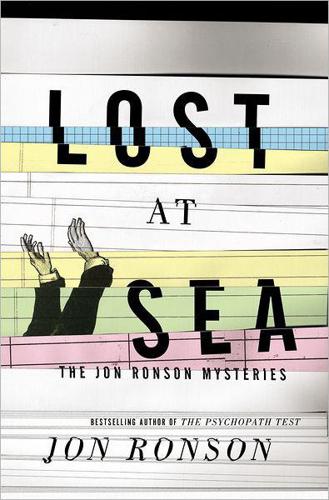
Lost at Sea
by
Jon Ronson
Published 1 Oct 2012
The cost of everything, like health insurance, gas, and groceries, has been going up by leaps and bounds. Some things have even seemed to double. Versus our income not changing that much.” I tell them about the health system in my native UK—free health care for everyone. I say I remember Glenn Beck trying to scare America by saying that if Obamacare went through, things would end up like Britain, with a savage, failing, socialist health-care system. “But it’s not failing,” I say. “It’s great. And nobody has to pay anything.” (Actually, it’s funded by national taxation, and some parts of it work more efficiently than others, but you’d be hard-pressed to find a Brit who doesn’t feel essentially proud and defensive of the system.)
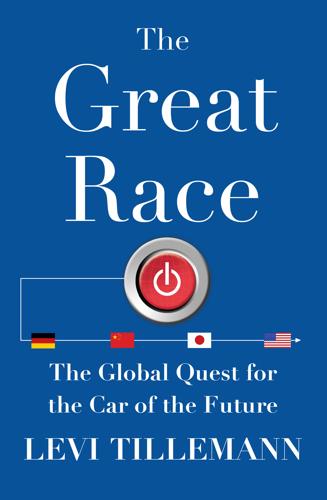
The Great Race: The Global Quest for the Car of the Future
by
Levi Tillemann
Published 20 Jan 2015
National Highway Traffic Safety Administration, accessed February 8, 2012, http://stnw.nhtsa.gov/cars/rules/rulings/cafe/alternativefuels/background.htm. Bank of Japan. 2012. BOJ Time-Series Data Search. Barboza, David. 2009. “Still Dancing in Her Dreams.” New York Times, April 17. BBC. 2009. “Profile: Geely Automobile.” BBC News, December 23. Bell, Larry. 2012. “Obamacar: Bad Karma for Taxpayers.” Forbes, September 25. Berkshire Hathaway. 2008. Berkshire Hathaway 2008 Annual Report. Block, Fred, and Matthew R. Keller. 2009. “Where Do Innovations Come From? Transformations in the US Economy, 1970–2006.” Socio-Economic Review 7:3: 459–83. Bloomberg TV. 2012. “BYD May be Warren Buffett’s ‘Rare Mistake.’ ” June 30.
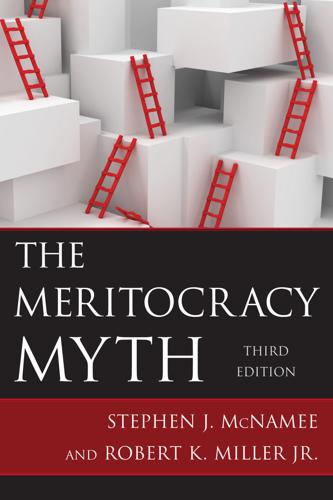
The Meritocracy Myth
by
Stephen J. McNamee
Published 17 Jul 2013
Cumulative wear and tear on the body over time occurs under conditions of repeated high stress. Another reason for the health-wealth connection is that the rich have greater access to quality health care. Even with the recent passage of the Patient Protection and Affordable Health Care Act in 2010 (more commonly referred to as Obamacare), access to quality health care in America is still largely for sale to the highest bidder. Under these conditions, prevention and intervention are more widely available to the more affluent. Finally, not only does lack of income lead to poor health, but poor health leads to reduced earnings. That is, if someone is sick or injured, he or she may not be able to work or may have limited earning power.
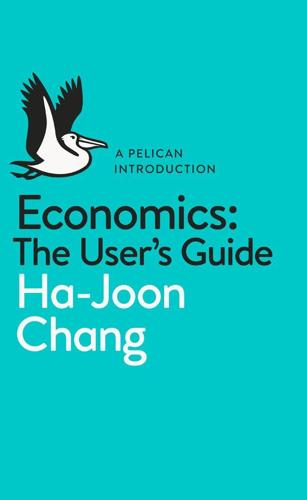
A Pelican Introduction Economics: A User's Guide
by
Ha-Joon Chang
Published 26 May 2014
The ‘one-dollar-one-vote’ rule of the market drastically constrains the ability of those with less money to refuse undesirable options given to them by the underlying distribution of income and wealth (recall my criticism of Paul Krugman on low wages in Chapter 4). Moreover, we can be susceptible to beliefs that go against our own interests (‘false consciousness’ from Chapter 5). This tendency makes many losers from the current system defend it: some of you may have seen American pensioners protesting against ‘Obamacare’ with placards saying ‘Government hands off my medicare’ when medicare is – well, let me put it delicately – a government-funded and -run programme. Acknowledging the difficulties involved in changing the economic status quo should not cause us to give up the fight to create an economy that is more dynamic, more stable, more equitable and more environmentally sustainable than what we have had for the last three decades.
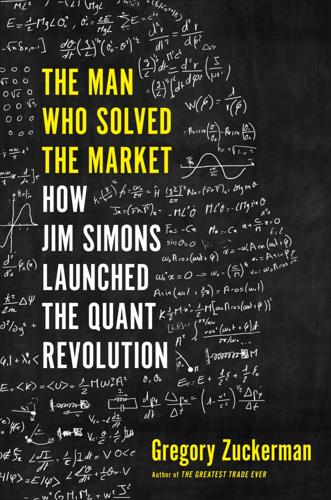
The Man Who Solved the Market: How Jim Simons Launched the Quant Revolution
by
Gregory Zuckerman
Published 5 Nov 2019
In January, Magerman called Rebekah Mercer on her cell phone, but she didn’t pick up. He tried her again, leaving a message that he wanted to help. Magerman got a return call, but it was from Bob Mercer. Despite his usual shyness, Mercer seemed eager to discuss the merits of Trump and various contentious political topics. They disagreed about climate change, Obamacare, and the value of a border wall, but their tone remained civil. “He will blow things up,” Mercer said about Trump. “That’s what I’m worried about,” Magerman said. “Do you really want to bring back the fear of nuclear war?” Magerman asked. Mercer said he wasn’t all that concerned about nuclear war.

Nomad Capitalist: How to Reclaim Your Freedom With Offshore Bank Accounts, Dual Citizenship, Foreign Companies, and Overseas Investments
by
Andrew Henderson
Published 8 Apr 2018
If you are a sole proprietor, you will still have to pay Social Security and Medicare tax because you are not an employee of a foreign company. However, if you have an offshore company, you are treated as the employee of that foreign company. And, since employees of non-US companies do not pay US payroll tax, you can avoid that, too. US citizens who qualify for the FEIE are also exempt from maintaining health insurance under Obamacare. If you are a US citizen who wants to spend more than one month each year back home, or you are a citizen of any other industrialized country, things get a bit more subjective. US citizens who establish a ‘bona fide residence’ overseas can spend nearly four months each year in the US, but with far stricter requirements to qualify.
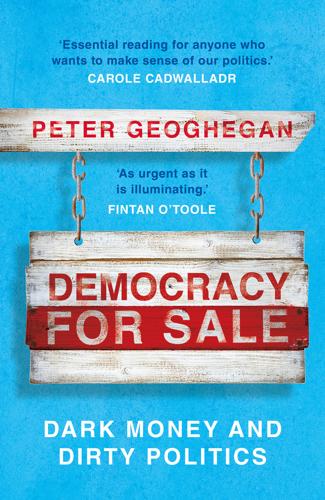
Democracy for Sale: Dark Money and Dirty Politics
by
Peter Geoghegan
Published 2 Jan 2020
Inhofe’s stance was supported by big oil companies, and his 2014 re-election campaign was funded by BP.28 Fox’s American connections began to prompt questions back home. David Cameron, who was attempting to detoxify the Tories, was accused of supporting privatised healthcare after another Atlantic Bridge-advising Republican senator wrote that he had concluded that Obamacare was “nuts” after Daniel Hannan told him “about the socialised medicine in Britain”. The pair had met in the green room of a Fox News studio.29 Cameron publicly admonished his MEP.30 After the Conservatives’ narrow election victory in 2010, the Atlanticists finally had a place in the British government.
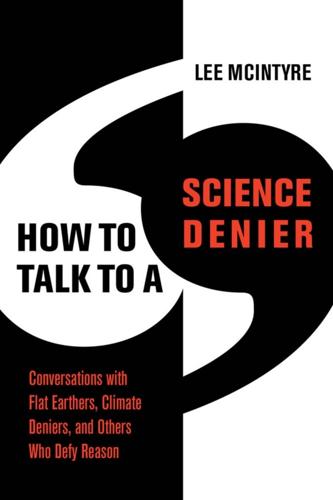
How to Talk to a Science Denier: Conversations With Flat Earthers, Climate Deniers, and Others Who Defy Reason
by
Lee McIntyre
Published 14 Sep 2021
In her research, based on survey data, Mason found that the strength of a person’s affiliation with a political identity was a much greater predictor of how they felt about the “other side” than the ideological content that might lie behind the identity. Subjects were surveyed on their opinions on six issues: immigration, gun control, same-sex marriage, abortion, Obamacare, and the deficit. Then they were asked how they felt about marrying someone of the opposite political affiliation. Or being friends with them. Or simply spending time with them. What Mason found was that the identity-based label had twice as much predictive value for how subjects felt about the “other side” as did their opinion on any of the six issues!
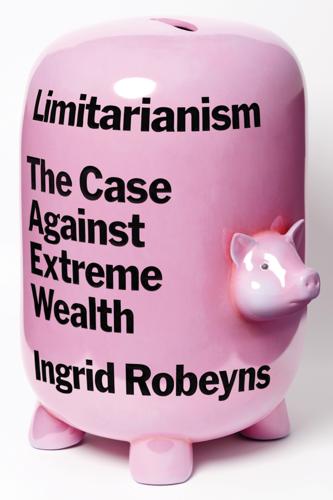
Limitarianism: The Case Against Extreme Wealth
by
Ingrid Robeyns
Published 16 Jan 2024
See also World Economic Forum (WEF) declining marginal value of money 146, 184 degrowth 213 democracy collective decision-making and 74–5 commodification of citizenship 77–80 corruption in 48 Davos Men and 91–3 equality and 31 illiberal democracies 73, 77, 94 kleptocratic practices in 51–2 liberal democracies 73–4, 94, 141, 180, 219, 222 lobbyists and 84 media outlets, super-rich ownership of and 86–9 neoliberalism and 216 persuasion and xxvi philanthropy and 175–9 political funding and 80–84 property-owning democracy 213 research body/think tank donations and 89–90 transnational capitalist class 92 Universal Declaration of Human Rights and 72 wealth undermining 71, 72–95, 106, 116–17, 139 Democratic Party, US xxi denial machine 104–6, 113 dental care 26 deregulation 35, 54, 89, 90, 210 Desmond, Matthew: Poverty, by America 37 dichotomous thinking 208 Dietsch, Peter 222 direct cash transfers 152 business practices, harmful 52 corporate irresponsibility 55 corruption 47–52 crimes against humanity and 43–5 dirty money 41–71, 76, 78, 105, 112, 118, 124, 166, 222 labor rights, violation of 57 letting others pay for your mistakes 54 tax dodging 60–8 disabilities 14, 31, 56, 75, 132, 133, 155, 157, 171, 200 discovery argument 177–8 discrimination 125 Disney xxv, 156, 172 Disney, Abigail xxv, 32, 156, 172–4, 193–4, 195, 199, 217 Disneyland, California 156 distributive justice 106 Dominion 88 doughnut economy 213 Dow Chemical Company 56–7 Drèze, Jean 21 drought 99 Duke University 204 Dutch Labour Party 141 Duty Free Shoppers (DFS) 164–5 economic growth 22, 34, 39, 159, 189 economic power, balance of 219–221 economic systems 33, 91, 120, 181, 229 alternative/new 208–14 economy of the common good 213 education access to xv, 14, 18, 143 class/social integration and 30, 33, 35, 218 disabilities/developmental disorders and 157–8 free high-quality xv, 14, 143 neoliberalism and 217 non-financial incentives 163 effective altruism 179 efficiency 31, 170–71, 172, 210, 216 elephant graph 21 Elizabeth II, Queen 7 empathy 198, 199, 217 Engelhorn, Marlene 8, 65 entrepreneurship xxv, 11 climate change and 106 good life and 141 inheritance and 133, 134, 139 institution-building and 149 neoliberalism and 159, 162 philanthropy and 18, 164, 166 poverty 36, 92 “profits before people” philosophy and 57 tax and 35, 60, 62, 70, 161 World Economic Forum and 42 envy xiii, xx–xxii equality awareness of inequality levels xii, 8, 190, 204–6 capitalism and see capitalism class and 31–2 climate change and 97, 101, 104 democracy and 72–6, 80, 82–5, 94–5, 190 doughnut economy and 213 envy and xxii equal opportunity 73, 142 gender and race dimension to wealth inequality 28 Global North/Global South trade relations and 23, 136 health of economy and 39 importance of inequality 36–7 increase in inequality xii, xxiii, 2–3, 5, 27–9, 32–3, 38, 41, 61, 122, 200, 210, 218 inheritance and 122, 123 limitarianism and xviii, xx–xxi, 212 London and see London morality, wealth inequality and xiii, xiv, xvii, xxv, xxvi, 15, 16, 24, 36, 118, 120, 122, 125, 134, 136, 138, 148, 161, 187, 188, 193, 194, 197, 198, 199, 212, 225 neoliberalism and 34–5 Oxfam report on inequality 3, 17 pay and 126, 131, 132, 224 philanthropy and 168, 169, 172, 175–6 political upheaval and 189 poverty and see poverty structural action and xv super-rich warn against xxi, 188–9 types of inequality 25–26 wealth inequalities within countries, increasing 27–8 wealth inequalities within countries, size of 26 work and 220–21 Equatorial Guinea 47, 76 ethical limit xviii, 12, 15–6, 93, 117, 139, 186 European Commission 79, 84 European Union (EU) 78, 79, 84, 87, 105, 223 Extinction Rebellion 114 Exxon Mobile 96, 98, 105 famine 99, 149 fashion industry 57–8, 135, 142, 223 “fast” fashion 57–8, 135, 142 Feeney, Charles “Chuck” xxiii, 164–7, 218 Felber, Christian 213 financial crisis (2008) xii, 2, 9, 54, 55, 210 Financial Times 128 fiscal action xvi, xvi fiscal agency 221–2 “flexible” jobs 210 flooding 75, 99, 113 Floyd, George 191, 192 Follow This 97 Food and Drug Administration, US 53 food banks 2, 156, 167, 176 food consumption 108 food poverty 150 Forbes xi, 23, 50, 53, 58, 66, 133, 135, 157, 165 Forum voor Democratie (Forum for Democracy) 51 Fox News 87–8 France 24, 25, 27, 31, 45, 46, 92 Free University of Amsterdam’s Climate and Sustainability Law Clinic 102 full determinism 131–2 Gates, Bill xi, xxi, 8, 18, 137, 165, 177; How to Avoid a Climate Disaster 113 gender 21, 28, 73, 190, 194 General Motors 98, 194 Gilens, Martin 83 Giridharadas, Anand 91, 92; The Persuaders xxvi Giving What We Can 185 Glasser, Susan 89 globalization 20, 26, 32, 92 Global North extreme wealth concentrated in 25 fashion brands in 58 migration into 79, 94 mixed economy in 209 oil business and 48 refugees in 79 unequal exchange and 23, 136, 153 Global South climate change and 94 crop yields in 100 exploitation of 21, 23, 136, 153 extreme poverty in 2 golden visas and 80 labor in 154 limitarian ethos and 186 unequal exchange and 23, 136 Global Wealth Report 24 golden passport 77–8 golden visa 77–80 Goldman Sachs xvii Good Ancestor Movement 183, 192 good life xxiii, 11–3, 124, 141, 148, 182, 186, 201 Goodman, Peter 91, 92 Google 66, 137 Google Holdings 66 Green, Fergus 224 Greene King 47 Greenfield, Lauren 195; Generation Wealth 195 greenhouse gases 36, 85, 90, 96–7, 100, 101, 106, 108 Greenpeace 96 green transition 105, 108, 111, 114–116 greenwashing 115 Grenada 47 gun regulation 90 Gupta, Rajat 196 Haarmann, Claudia 235 Haarmann, Dirk 149 Haiti 46 Hamm, Jon 129 Hanauer, Nick: “The Pitchforks are Coming … for Us Plutocrats” 188–9 Harvard Business School 204 Harvard University 90 Haslett, D. W. 122 Hayman, Jake 183, 192 healthcare 14, 18, 30, 34, 35, 48, 132, 155–7, 165, 183, 200, 209 deficits 157 insurance 14, 143, 157, 170, 200 Obamacare 90 universal xv, 37 Hertel-Fernandez, Alexander 90 Hickel, Jason 19, 22, 136 Hitler, Adolf 43 Hobbes, Thomas 119 homelessness 1, 143, 155 Housel, Morgan: The Psychology of Money 196, 198 housing xv, 14, 30, 37, 75, 110, 111, 143, 156, 183, 209, 217–8, 228 Hughes, Kathleen 156, 217 human development indicators, 171 Hungary 73 hunger 17, 36, 99, 153, 154, 158 I, Daniel Blake (film) 171, 217 IG Farben 44 ignorance, wealth inequality and 205 illiberal democracies 73, 77, 94 incentives objection 160–61 income basic 138, 150–52, 174, 178, 213 inequality xiii, 25–6, 28, 39, 168, 204 Minimum Income Standard 10 tax 33, 37, 39, 61, 70, 77, 160–61, 186 India 19, 21, 24, 55–6, 113 inequality.
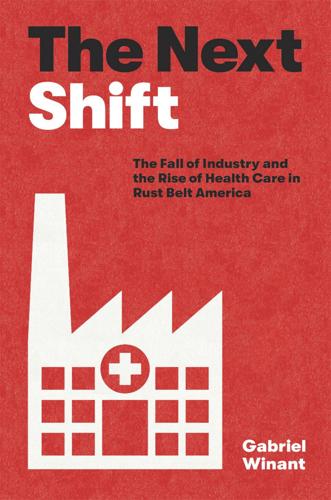
The Next Shift: The Fall of Industry and the Rise of Health Care in Rust Belt America
by
Gabriel Winant
Published 23 Mar 2021
After Bill Clinton’s effort to reform health care failed in the 1990s because of the entrenchment of too many social constituencies in their respective fractions of the health system, the next two presidents drew the lesson that any proposal with a chance of success had to buy off rather than rebuke major industries. The extension of Medicare coverage to prescription drugs in 2003 and then the Patient Protection and Affordable Care Act (ACA) of 2010 both incorporated this lesson centrally. In the latter case, grassroots opposition to Barack Obama’s plan took the form, as it had in 1994, of a defense of social insurance. “Keep your government hands off my Medicare,” a much-derided slogan, bespoke not irrational false consciousness but rather the generational defense of social policy incumbency.1 Needless to say, neither Medicare Part D nor the ACA put to rest the basic dysfunctions of American health care.
…
“Healthcare workers like me are taking care of people with serious diseases and chronic illnesses—lifting them, emptying catheters, giving them baths. For that, I am only making $13.32 an hour. Is that really all I am worth?”16 List of In-text Abbreviations ACA Patient Protection and Affordable Care Act ACCD Allegheny Conference on Community Development AFDC Aid to Families with Dependent Children AHERF Allegheny Health Education and Research Foundation BCC Black Construction Coalition BLS Bureau of Labor Statistics CIK Committee to Improve Kane CIO Congress of Industrial Organizations CMP Central Medical Pavilion CNA certified nursing assistant DPC Dues Protest Committee DRG diagnostic related group ENA Experimental Negotiating Agreement ET Edgar Thomson Works FTE full-time equivalent HCFA Health Care Financing Administration HHS Department of Health and Human Services HMO health management organization HSA health systems agency HUD Department of Housing and Urban Development J&L Jones & Laughlin Steel LPN licensed practical nurse LTV Ling-Temco-Voight Steel MHCD Medical and Health Care Division of the University of Pittsburgh NAACP National Association for the Advancement of Colored People NAM New American Movement NLRA National Labor Relations Act NLRB National Labor Relations Board PUH Presbyterian-University Hospital PPO preferred provider organization PPS prospective payment system RN registered nurse SEIU Service Employees International Union TEFRA Tax Equity and Fiscal Responsibility Act TRA Trade Readjustment Act UE United Electrical Workers UNPC United Negro Protest Committee UPMC University of Pittsburgh Medical Center URA Urban Redevelopment Agency USWA United Steelworkers of America USS United States Steel Corporation USX United States Steel Corporation’s new name in 1986 WPIC Western Psychiatric Institute and Clinic WROAC Welfare Rights Organization of Allegheny County List of Bibliographical Abbreviations 1199 AF National Union of Hospital and Health Care Employees Local 1199 Additional Files, 1955–1986, Kheel Center for Labor-Management Documentation and Archives, Catherwood Library, Cornell University.
…
Morgan and Andrea Louise Campbell, The Delegated Welfare State: Medicare, Markets, and the Governance of Social Policy (New York: Oxford University Press, 2011); Brian H. Balogh, “ ‘Keep Your Government Hands Off My Medicare’: A Prescription that Progressives Should Fill,” Forum 7, no. 4 (December 2009), 1–21; Daniel P. Gitterman and John P. Scott, “ ‘Obama Lies, Grandma Dies’: The Uncertain Politics of Medicare and the Patient Protection and Affordable Care Act,” Journal of Health Politics, Policy, and Law 36, no. 3 (June 2011), 555–563. 2. Suzanne Mettler, The Submerged State: How Invisible Government Policies Undermine American Democracy (Chicago: University of Chicago Press, 2011); Morgan and Campbell, The Delegated Welfare State. 3. David H.
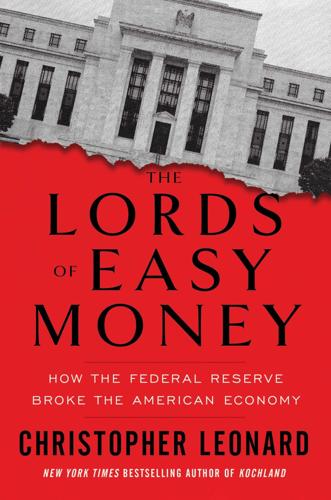
The Lords of Easy Money: How the Federal Reserve Broke the American Economy
by
Christopher Leonard
Published 11 Jan 2022
This was echoed by others, like the economist Mark Zandi, who estimated that the unemployment rate wouldn’t fall back to 4 percent until 2014 unless Congress passed a major stimulus bill. Barack Obama did sign the stimulus bill a month later, but it was the last major fiscal action in response to the crash. Congress turned its energies after that to the passage of the Affordable Care Act and a financial reform bill called the Dodd-Frank Act. The conservative Tea Party movement gathered strength as these measures were debated and helped Republicans take control of the House during the midterm elections of 2010. All of this put even more pressure on central banks to act. Paul Tucker, a senior official at the Bank of England, experienced the pressure firsthand.
…
One of Bell’s greatest achievements, back when he was a Senate staffer, was helping the Reagan administration create a novel legislative maneuver called “reconciliation,” which allowed the president to pass a budget through the Senate with a bare majority of votes, bypassing the filibuster. Reconciliation was later used to pass Obamacare and the Trump tax cuts, earning Bell a level of notoriety on the Hill, a fact that he advertised decades later with pride. “I talked to somebody a couple of days ago and she said: ‘You’re the motherfucker that invented reconciliation, aren’t you?’ Her exact words,” Bell recounted. Bell’s Salomon Brothers office was located in the Willard Hotel, just across the street from the Treasury Building.

The Job: The Future of Work in the Modern Era
by
Ellen Ruppel Shell
Published 22 Oct 2018
half of all American workers earn less than $30,000 US Social Security Administration, “Wage Statistics for 2015,” accessed February 2, 2018, https://www.ssa.gov/cgi-bin/netcomp.cgi?year=2015. with a whopping $8,000 deductible eHealth, “Ten Years of Health Insurance Costs,” https://resources.ehealthinsurance.com/affordable-care-act/much-obamacare-cost-2017. “Rapid advancements in the field of robotics” UNICRI Centre for Artificial Intelligence and Robotics (The Hague, The Netherlands), homepage, http://www.unicri.it/in_focus/on/UNICRI_Centre_Artificial_Robotics. Nor can it be dismissed as a mere happy side effect For thinking along this line I am indebted to many economists, historians, and philosophers, and to the persuasive reasoning of Harvard philosopher Michael J.
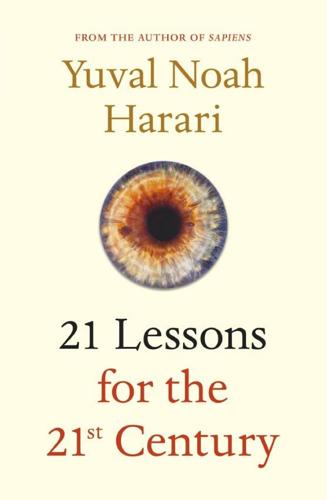
21 Lessons for the 21st Century
by
Yuval Noah Harari
Published 29 Aug 2018
People rarely appreciate their ignorance, because they lock themselves inside an echo chamber of like-minded friends and self-confirming newsfeeds, where their beliefs are constantly reinforced and seldom challenged.3 Providing people with more and better information is unlikely to improve matters. Scientists hope to dispel wrong views by better science education, and pundits hope to sway public opinion on issues such as Obamacare or global warming by presenting the public with accurate facts and expert reports. Such hopes are grounded in a misunderstanding of how humans actually think. Most of our views are shaped by communal groupthink rather than individual rationality, and we hold on to these views out of group loyalty.
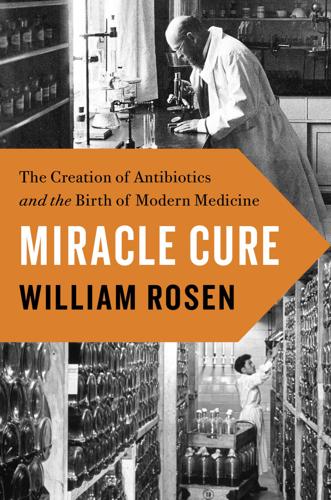
Miracle Cure
by
William Rosen
Published 14 Apr 2017
Or, more accurately, heroic medicine. The era of heroic medicine is generally used to describe the period, roughly 1780–1850, during which medical education and practice was highly interventional, even when the interventions did at least as much harm as good. The dates are slightly deceptive. Medical practice, from Hippocrates to Obamacare, has constantly oscillated between interventional and conservative approaches; the perfect point of balance is a moving target for physicians, and seems likely always to be. Consider the persistence of the humoral theory of disease. Bloodletting, for example, was first popularized by the second-century Greek physician Galen of Pergamon as a way of balancing the four humors: blood, phlegm, and black and yellow bile.
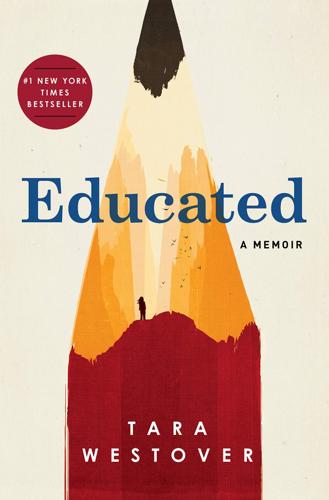
Educated
by
Tara Westover
Published 20 Feb 2018
I talked about England. Grandpa mentioned my mother, and when he spoke of her it was with the same look of awe that I had seen in the faces of her followers. I didn’t blame him. From what I’d heard, my parents were powerful people in the valley. Mother was marketing her products as a spiritual alternative to Obamacare, and she was selling product as fast as she could make it, even with dozens of employees. God had to be behind such a wondrous success, Grandpa said. My parents must have been called by the Lord to do what they have done, to be great healers, to bring souls to God. I smiled and stood to go. He was the same gentle old man I remembered, but I was overwhelmed by the distance between us.
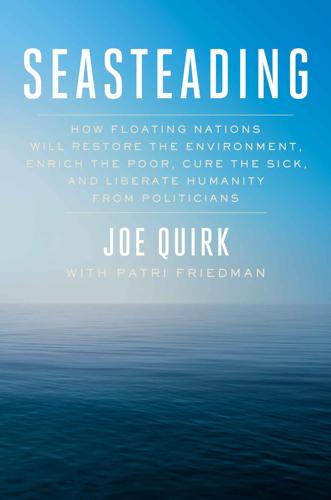
Seasteading: How Floating Nations Will Restore the Environment, Enrich the Poor, Cure the Sick, and Liberate Humanity From Politicians
by
Joe Quirk
and
Patri Friedman
Published 21 Mar 2017
“costs more than the Pentagon budget”: Ricardo Alonso-Zaldivar, Associated Press, “Report: U.S. Healthcare System Wastes $750B a Year,” September 7, 2012, http://bigstory.ap.org/article/report-us-health-care-system-wastes-750b-year. “The growth of American-style hospitals around the world”: E. Jim, “Can Medical Tourism Save Us from Obamacare?” Reason TV, January 29, 2013, http://reason.com/reasontv/2013/01/29/free-trade-health-care. enticing 2015 price comparisons: Compare Cost | Health Tourism, Health Care, Medical Travel | MedicalTourism.com. (2015). accessed March 4, 2016, www.medicaltourism.com/Forms/price-comparison. Hickory Springs Manufacturing, or HSM, a furniture manufacturer in North Carolina, offers its workers a choice: B.

After the Fall: Being American in the World We've Made
by
Ben Rhodes
Published 1 Jun 2021
This helped avert at home the more painful and extended reality of the crisis that gripped Europe and other parts of the world, beginning an unprecedented stretch of economic growth and job creation in the United States. But it also preserved the inequality multiplying like a virus within our system. We would have only two years with Democratic control of Congress. During that time, Obama took frenetic action to point the ocean liner in a new direction. Obamacare to enlarge the social safety net and give more people access to health services. A package to save the American auto industry. Competent management of the bailout to recover the public’s money. Stimulus funding to plug holes in infrastructure and seed clean energy industries. Increased regulation of Wall Street to avoid further crises.
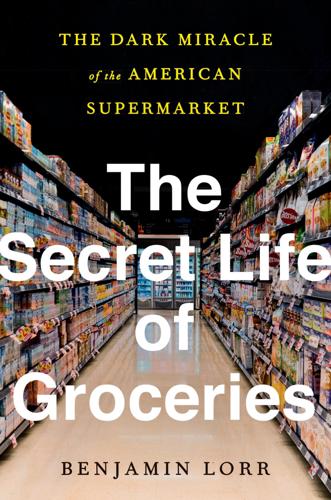
The Secret Life of Groceries: The Dark Miracle of the American Supermarket
by
Benjamin Lorr
Published 14 Jun 2020
As quoted in the original French in The Waste Land but translated into English here. Andy . . . along with five thousand other employees who got the ax: Errol Schweizer to author. See also Tom Huddleston Jr., “Whole Foods Cutting 1500 Jobs,” Fortune, September 28, 2015. John Mackey came out against universal health care: Emma G. Keller, “Whole Foods CEO John Mackey calling Obamacare fascist is tip of the iceberg,” The Guardian, January 18, 2013. Whole Foods–Amazon takes the next logical step . . . cuts medical benefits for its part-time workers: Hayley Peterson, “Whole Foods is cutting medical benefits for part-time workers,” Business Insider, September 12, 2019. ABCDEFGHIJKLMNOPQRSTUVWXYZ INDEX The page numbers in this index refer to the printed version of this book.
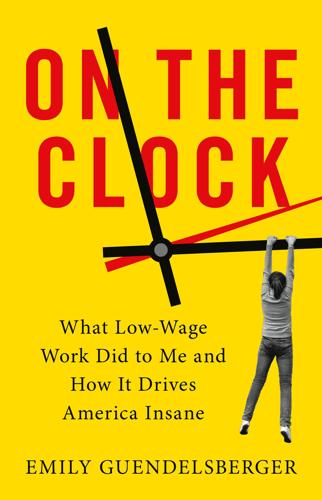
On the Clock: What Low-Wage Work Did to Me and How It Drives America Insane
by
Emily Guendelsberger
Published 15 Jul 2019
When was the last time they worked a bad job, or one without insurance? When was the last time they had a personal conversation with anyone working at McDonald’s, or an Amazon warehouse, or a call center? Do they know anyone who had kids as a teenager, or got MRSA from their job, or actually had to use Obamacare, or didn’t go to college, or has been in prison? What does in the weeds mean to them? If my newspaper hadn’t closed, I think, I might have written a quick Szechuangate blog post, probably treating all the people going to insane lengths for an advertising gimmick as dumb but harmless. Those people in line looked pretty similar to people I knew—I’d have automatically extended empathy to them.
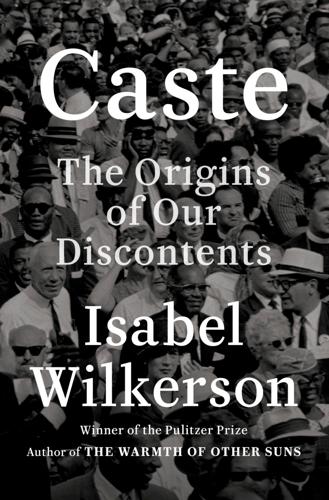
Caste: The Origins of Our Discontents
by
Isabel Wilkerson
Published 14 Sep 2020
In his book Dying of Whiteness, Metzl told of the case of a forty-one-year-old white taxi driver who was suffering from an inflamed liver that threatened the man’s life. Because the Tennessee legislature had neither taken up the Affordable Care Act nor expanded Medicaid coverage, the man was not able to get the expensive, lifesaving treatment that would have been available to him had he lived just across the border in Kentucky. As he approached death, he stood by the conviction that he did not want the government involved. “No way I want my tax dollars paying for Mexicans or welfare queens,” the man told Metzl. “Ain’t no way I would ever support Obamacare or sign up for it. I would rather die.” And sadly, so he would. CHAPTER TWELVE A Scapegoat to Bear the Sins of the World Every year, on the day of atonement, the ancient Hebrews took two male goats and presented them before the Lord at the entrance to the tent of meeting.
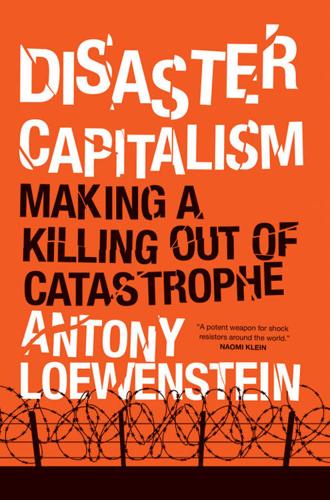
Disaster Capitalism: Making a Killing Out of Catastrophe
by
Antony Loewenstein
Published 1 Sep 2015
Occasionally, mainstream politicians criticized Serco, G4S, and other providers, but they did little to enforce greater accountability.20 Founded in 1929, Serco has been ubiquitous in British life, running ferries, London’s Docklands Light Railway, the National Physical Laboratory, prisons, defense contracts, education authorities, waste management, and a host of other operations. It has over 100,000 employees globally and controls prisons in Australia, New Zealand, and Germany. It operated with a $1.25 billion contract from the Obama administration to implement Obamacare, despite a Serco whistle-blower having alleged that its staff had “hardly any work to do” during a botched program. Both Serco and G4S were complicit in overcharging by tens of millions of pounds for the electronic tagging of prisoners—some of whom were found to have been dead at the time—from the 2000s onwards.
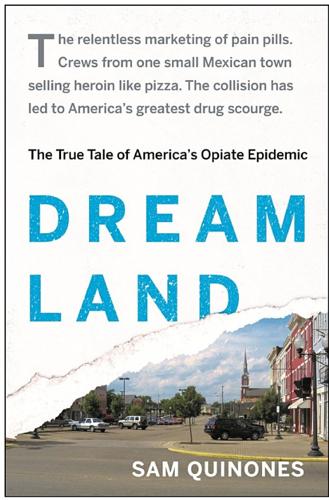
Dreamland: The True Tale of America's Opiate Epidemic
by
Sam Quinones
Published 20 Apr 2015
“Muscling” black tar heroin, in turn, leads to infections, rotting skin, botulism, even gangrene.) In the 1970s, East Coast heroin dealers, mostly blacks by then, began printing brands on glassine bags broadcasting the supposed potency of the drug inside, or the headlines of the day: brands like Hell Date, Toxic Waste, Knockout, NFL, Obamacare, Government Shutdown. Over the decade the drug that square America despised became the choice drug of despised America: urban outcasts, wandering con men, homosexuals, pickpockets, artists, and jazz musicians populated the early heroin world. Underground classics such as William Burroughs’s Junky described its nonconformist denizens, and mesmerized later generations intent on rebellion.
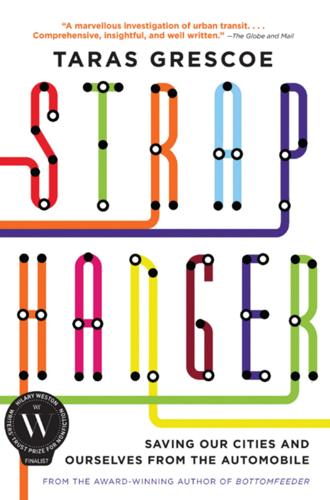
Straphanger
by
Taras Grescoe
Published 8 Sep 2011
From his front door, I realized, a person could still maintain the illusion that the American suburb had remained the best of all possible worlds. Not with a Bang Driving east along Interstate 10, you hear Phoenix long before you see it, as a kind of nonstop, dyspeptic plaint frothing over the AM dial. Between tirades about Obamacare, Glenn Beck encourages listeners to purchase bullion as a hedge against the impending collapse of the “paper-money economy.” A longtime listener, first-time caller on the Barry “Barely Famous” Young Show opines that the United States should quit all the talk and just turn Iran into an ashtray, already.

Twitter and Tear Gas: The Power and Fragility of Networked Protest
by
Zeynep Tufekci
Published 14 May 2017
The online activity of Tea Party supporters also focused heavily on making sure that this freshman class of members adhered to policy stances favored by the groups.42 Researchers also found that Tea Partiers were often full of misconceptions about the provisions of policy proposals, for example, the existence of “death panels” in Obamacare. However, the activists had encyclopedic knowledge of the political process by which policy gets made and implemented: veto points, committee agendas, which person needs to be called when. In fact the Tea Party activists appeared to exhibit such a deep “mastery of the legislative process and arcane party rules” that researchers thought they would do as well as political scientists who specialize in these narrow and obscure topics—topics crucial to anyone who cared about passing legislation.43 They focused intensely on process—and how to block or shift it to their liking.

Nine Pints: A Journey Through the Money, Medicine, and Mysteries of Blood
by
Rose George
Published 22 Oct 2018
Though I do admire a satirical show named Silicon Valley that portrayed a mogul who employed a Blood Boy for regular rejuvenating transfusions. On The Late Show, wrote Tad Friend in a New Yorker exploration of the longevity industry, Stephen Colbert told young people that President Trump was going to replace Obamacare with mandatory parabiosis. “He’s going to stick a straw in you like a Capri Sun.”27 I would prefer an antiaging emphasis that is not about extension but betterment, that can alleviate Alzheimer’s, Parkinson’s, and the other diseases that have stepped into our longer life spans to end them. I have seen how someone dies of dementia, and if that can be cured with blood, fetch me a straw
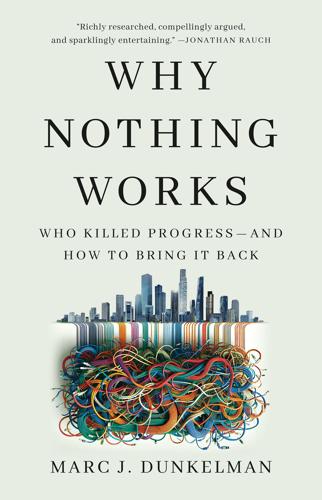
Why Nothing Works: Who Killed Progress--And How to Bring It Back
by
Marc J Dunkelman
Published 17 Feb 2025
Issues that framed government as a salve—proposals to raise family incomes, expand access to health care, and save the earth from a climate catastrophe—were less heartrending.14 In essence, a movement that’s purported to be bent on growing government appears, upon closer inspection, more driven to paring it back. That’s not to argue that progressives aren’t, in many instances, eager to expand public authority. Obamacare broadened Washington’s mandate, and three of the Biden administration’s biggest early achievements—the bipartisan infrastructure bill, the Inflation Reduction Act, and the CHIPS and Science Act—had the effect of expanding government’s reach. But if those triumphs were each a big deal, they elicited less attention among progressives than questions of endemic racism, access to abortion, and immigrant rights.
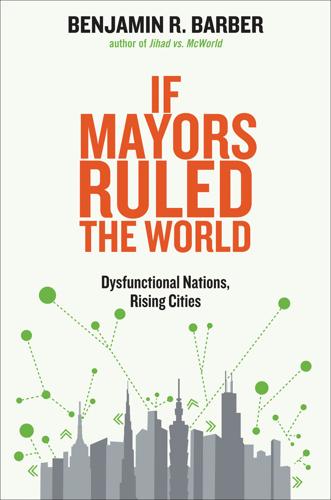
If Mayors Ruled the World: Dysfunctional Nations, Rising Cities
by
Benjamin R. Barber
Published 5 Nov 2013
It is well-paid jobs with some prospect of longevity, that come with health benefits and pensions, that create a sustainable economy and a just urban landscape. The evidence of the last few years in the United States suggests that new jobs are paid less well than old (vanished) jobs and come without pensions or comparable benefits—although the Affordable Care Act (Obamacare), if states allow it to be fully implemented, will help. “Few Cities Have Regained Jobs They Lost,” trumpets the New York Times, citing a report focused on the absence of any real help from the federal government during the recession years.57 Worse still, while “a majority of the jobs that were lost” during the recession were middle income, “a majority of those added during the recovery have been low-paying.”58 The result is less a jobs deficit than a “good jobs deficit,” which thwarts a long-term full recovery for many cities.
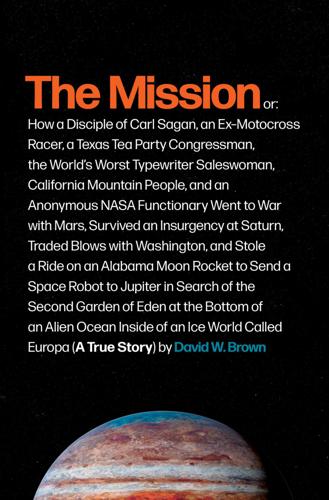
The Mission: A True Story
by
David W. Brown
Published 26 Jan 2021
Culberson was by then in his ascendancy in congressional appropriations, with increasing sway in Republican politics by way of the emergent Tea Party movement, of which he was a founding member in the House, spurred by frustrations with Democratic success passing the Affordable Care Act. He was philosophically disposed toward low taxes and slashed spending; “Obamacare,” as it was sometimes called, offended him.446 Still, some things needed a little coin. When John the junior subcommittee member funded JIMO all those years ago, the NASA administrator took a look at the budget (the law of the land) and the report (pretty please do JIMO), and tossed the report in the trash.
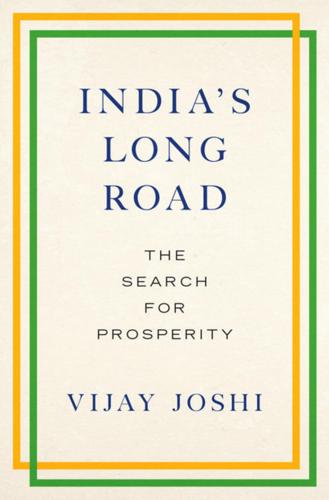
India's Long Road
by
Vijay Joshi
Published 21 Feb 2017
In Canada and many Northern European countries, the choice has been to offer a uniform state health insurance package to all, but to allow public as well as private providers of care; private insurance markets are purely supplementary. In contrast, the United States relies mostly on private insurance markets, which is why there are large numbers of uninsured people, a situation which the recent introduction of ‘Obamacare’ has begun to correct.36 [ 190 ] Stability and Inclusion 191 India has begun to introduce a state insurance system for secondary care, viz. the Rashtriya Swasthya Bima Yojana (RSBY) scheme, which takes roughly a single-payer, Canadian–North European track.37 The scheme covers those below the poverty line (BPL) as defined by the Planning Commission, i.e. around 60 million families (300 million individuals).
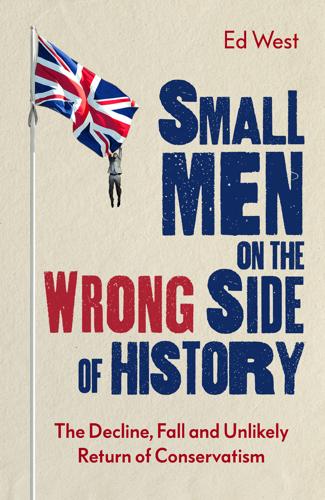
Small Men on the Wrong Side of History: The Decline, Fall and Unlikely Return of Conservatism
by
Ed West
Published 19 Mar 2020
Distrust in the American media really ramped up with the Barack Obama election campaign, again with good reason. In July 2008 a poll found Americans believed by 3 to 1 that journalists favoured Obama; by October that figure was 8 to 1. By September 2009 a large majority of Americans believed the media were ‘promoting the Obama presidency’ and Obamacare ‘without objective criticism’.5 Politico’s John Harris, referring to his time at the Washington Post, wrote: ‘A couple years ago, you would send a reporter out with Obama, and it was like they needed to go through detox when they came back – “Oh, he’s so impressive, he’s so charismatic,” and we’re kind of like, “Down, boy.”’6 The Obama election to me was another one of those Diana moments when I thought everyone around me had lost their minds, except in this case it was upper-middle-class graduates and media folk rather than Daily Express readers at it.
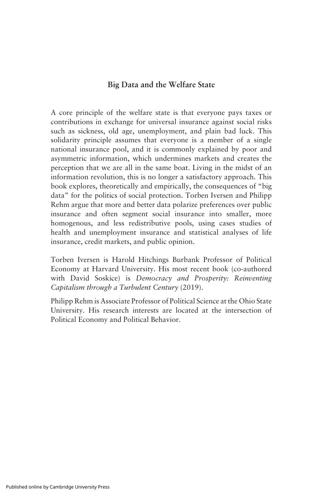
Big Data and the Welfare State: How the Information Revolution Threatens Social Solidarity
by
Torben Iversen
and
Philipp Rehm
Published 18 May 2022
We also conduct several case studies of change. Since the mid-1970s, for example, statewide private health insurance in the USA has been broken up into smaller pools, usually based on large companies (called “self-insurance”). The result has been a sharp reduction in the crosssubsidization of risks (Hacker 2004). The Affordable Care Act (ACA) seeks to equalize access by switching more people to publicly subsidized plans, but the rest of the system continues to fragment. The American case clearly illustrates the political tug-of-war between the growing segmentation of private insurance and the centralizing force of state programs.
…
Journal of the American Medical Informatics Association: JAMIA 8(4): 317–23. Conde-Ruiz, J. Ignacio and Paola Profeta. 2007. “The Redistributive Design of Social Security Systems.” The Economic Journal 117(520): 686–712. Corman, Juliane and David Levin. 2016. “Support for Government Provision of Health Care and the Patient Protection and Affordable Care Act.” Public Opinion Quarterly 80(1): 114–79. Cortez, Elif Kiesow. 2020. Data Protection Around the World: Privacy Laws in Action. Springer Nature. Costa-Font, Joan and Valentina Zigante. 2016. “The Choice Agenda in European Health Systems: The Role of Middle-Class Demands.” Public Money & Management 36(6): 409–16.
…
https://doi.org/10.1017/9781009151405.008 Published online by Cambridge University Press Index 23andMe, 62 401(k) plans, 33, 64 actuarial science: fair premiums and, 2, 17, 68, 72, 89, 99–100, 190–191; historical perspective on, 45, 48–49, 65, 68; labor markets and, 160, 163n2, 177, 179, 184; prices and, 2; private markets and, 72, 81, 83, 89, 99–100; sound principles of, 10; tables for, 45, 49, 65; trackers and, 3 adverse selection: Akerlof on, 6; credit markets and, 112; gatekeeping and, 193; historical perspective on, 13, 45–50, 54, 65, 67; life expectancy and, 45; opting out and, 30, 54, 199; partisanship and, 37; pooled equilibrium and, 40–42; private information and, 40–42; private markets and, 72, 82n17, 83, 88; regulation and, 37–38; risk and, 1–2, 4, 6, 13, 30, 34, 45– 46, 49–50, 54, 65, 67, 72, 82, 112, 199, 202; theoretical model and, 30; time inconsistency and, 30, 34 Affordable Care Act (ACA), 11, 50n2, 60– 61, 63, 91, 94, 97 Ahlquist, John S., 109 AIA Australia, 79–80 AIDS, 86 Akerlof, George A., 6, 12, 19, 23–25, 27, 29, 190, 196 algorithms, 10, 12, 81, 93, 116n7, 119, 202 “Alliance for Sweden” campaign, 184 Alphabet, 5, 62 Amazon, 5, 62 American National Election Survey (ANES), 97–99 Ansell, Ben W., 109 Apple, 5, 62, 79 Arndt, Christoph, 182–183 artificial intelligence (AI), 5, 27, 62, 81–82, 202 Australia, 80, 90, 102, 107 Austria, 80, 90, 102, 107, 147 autocorrelation, 87 automobiles, 3 bad state, 20–21, 25n9, 40, 41, 112n5, 114, 142n27, 143–145, 190 bankruptcy, 31, 33, 46, 74, 96 banks: default and, 116, 132, 197; Fannie Mae and, 65, 109, 116–117, 121; financial crises and, 14, 61, 65, 116n7; Freddie Mac and, 65, 109, 116–117, 119–130, 140n25, 197; governmentsponsored enterprises (GSEs) and, 116– 121; loans and, 65, 105, 116, 131–132, 202; mortgages and, 131 (see also mortgages); small-town, 105 Barr, Nicholas, 12, 19, 24–25 Bayesianism, 15n1, 26, 56, 113, 143, 160, 164 Besley, Timothy, 93 Beveridge model, 53 Big Data: consequences of, 5; differential risk pools and, 63; financialization and, 138; informed patients and, 22; poor people and, 138; private markets and, 13, 219 https://doi.org/10.1017/9781009151405.009 Published online by Cambridge University Press 220 Index 63, 191; uncertainty reduction by, 13; utility and, 119; variety of available data, 108 Big Tech, 81, 201 Bildt government, 11, 177 Bismarckian system, 52–53, 58, 67, 191, 199–201 Blue Cross Blue Shield, 1, 49–50, 60 Boadway, Robin, 19 Bradley, David, 188 budget constraints, 20, 36n20, 42–43 burial insurance, 47–48 Busemeyer, Marius R., 39–40 Bush, George W., 17 Calico, 62 Canada, 90, 102, 107 CAT scans, 1 Clareto, 77–78 Clinton, Bill, 116 Code on Genetics, 93 coercion, 15, 25 collective bargaining, 64, 159, 195 commercial banks, 116–117, 131n14 commercial insurance: customer exclusions and, 193; digitalization and, 76; mutual aid societies (MASs) and, 45–50, 54–55, 67; unemployment insurance funds (UIFs) and, 66 Comparative Political Data Set, 102 Comparative Study of Electoral Systems (CSES), 176 COVID-19 pandemic, 61, 74, 77, 86n20, 100, 189 credible information, 28, 38, 39 credit guarantee schemes (CGSs), 115 credit markets: access to, 105–106; adverse selection and, 112; banks and, 105 (see also banks); collective bargaining and, 64, 159, 193; default and, 108–120, 128, 131–136, 141–146, 196–197; democracy and, 105, 117; discretionary income and, 100, 105, 108–115, 118, 138, 140, 142, 196; education and, 7, 33, 110, 115, 138, 141; empirical applications and, 196– 198; employment and, 108, 133–135; FICO scores and, 121–130, 149, 151– 158; flat-rate benefits and, 37, 114–115, 132, 144–146; Germany and, 107, 131, 135n23, 147; Gini coefficient and, 121– 127, 129, 138; government-sponsored enterprises (GSEs) and, 116–121; historical perspective on, 64–65; homeownership and, 108, 116, 131–140; inequality and, 106–115, 118–131, 138, 140, 144, 196–198; information and, 64– 65, 112–113; interest rates and, 105, 108, 111–132, 138–144, 152, 156; liquidity and, 109; loans and, 118–119 (see also loans); middle class and, 106; model for, 110–117, 141–144; mortgages and, 131 (see also mortgages); partisanship and, 118; pensions and, 64–65, 114, 131n14, 135n20, 141; Placebo outcomes and, 126–127, 146, 156–157; poor people and, 115, 133–140, 196; poverty and, 115; redistribution and, 109, 115, 124, 128, 144; reform and, 116–117, 120, 131– 137, 140; regression analysis and, 125– 126, 127, 130, 146, 147–158; regulation and, 14, 109–111, 115–131, 138, 140; rich people and, 133–137, 140, 196; risk and, 105, 108–120, 128–146; savings and loans (S&Ls), 116–117; segmentation and, 40, 159, 192; Single Family LoanLevel Dataset and, 121; subsidies and, 109, 116, 118, 131n14, 138, 139, 144; taxes and, 114–115, 139, 144; transfers and, 109, 114–115, 144; unemployment and, 108–109, 131–138; United States and, 106–107, 109, 117, 121, 124, 131, 139–140; wealth and, 108, 110, 111n2, 133, 140; welfare and, 105, 108–115, 131–138, 140 credit reports, 76 crime, 21n4 CT scans, 27, 83 deductibles, 17, 50, 195 DeepMind, 62 default: credit markets and, 108–120, 128, 131–136, 141–146, 196–197; flat-rate benefits and, 144–146; historical perspective on, 63; income relationship and, 146; information and, 7; private markets and, 80; theoretical model and, 17 democracy: asymmetric information and, 22–25; credit markets and, 105, 117; future issues, 199; historical perspective on, 51–52, 56, 63–64, 67–68; inequality and, 12, 70, 188; intergenerational https://doi.org/10.1017/9781009151405.009 Published online by Cambridge University Press Index transfers and, 190; labor markets and, 163, 183; market failure and, 19–30; mutual aid societies (MASs) and, 16; private markets and, 13, 70, 73, 89, 100; rich people and, 2, 73, 183; social protection and, 2, 56; symmetric information and, 25–29; theoretical model and, 16, 19–20, 30, 32nn15–16, 33; transfers and, 16, 30, 67, 190; uncertainty and, 8; welfare and, 8 Denmark, 8–9, 90, 92, 102, 107, 109, 117, 147, 183, 193, 197–198 Department of Motor Vehicles, 75 destitution, 45, 67 diagnostics, 10, 27, 49, 62, 81, 83–88, 94, 100, 193 digitalization, 76–79 disability, 34, 38, 44, 63, 75, 139, 197 Discovery Limited, 79 discretionary income: credit markets and, 100, 105, 108–115, 118, 138, 140, 142, 196; risk and, 100, 105, 108–115, 138; welfare and, 110–111 discrimination, 2, 5, 35, 38–39, 63, 81, 88, 93–94, 100, 116, 199, 202 “double payment” problem, 9, 13, 37, 39, 68, 89, 92, 94–95, 100, 198–199 education: additional schooling, 107; advantages of, 200; credit markets and, 7, 33, 110, 115, 138, 141; double-payment problem and, 9; employment and, 11, 33, 60, 66, 69, 159, 161–162, 165, 174, 179, 183–184, 192, 197–198; health and, 9, 60, 66, 84, 93, 95–96, 159, 192–193, 197; income and, 9, 11, 17, 33, 60, 64, 69, 92–96, 110, 115, 138, 141, 161, 174, 192, 197; labor markets and, 159, 161– 162, 165, 167, 174, 179, 183–184, 198; mutual aid societies (MASs) and, 192; private markets and, 84, 92–95, 96n24; rich people and, 9, 40, 60, 92, 95; risk and, 7, 11, 17, 33, 40, 60, 66, 69, 84, 93, 115, 138, 141, 159, 161–162, 165, 174, 179, 183–184, 192, 197n3, 198; social media and, 196; unemployment and, 11, 60, 66, 159, 161–162, 165, 174, 179, 183–184, 192, 197n3, 198 elasticity, 111 elderly: health and, 2, 7, 18, 29, 34, 96–97, 99; higher expenses of, 195; insecurity 221 and, 8, 18; labor markets and, 159, 171, 173, 185–186; market feasibility and, 16– 18, 30–35; Medicare and, 2, 7, 9, 17, 59– 60, 96–99, 133; mutual aid societies (MASs) and, 44, 47–49, 55; old-age insurance and, 4–5, 13, 31, 159; pensions and, 56 (see also pensions); poverty and, 46–47; private markets and, 18, 96–97; public spending on, 29n13; time inconsistency and, 7, 16–18, 30–35, 47, 56, 89, 96, 193; welfare and, 4, 7–8, 13– 14, 18, 33, 53–54, 58, 105, 188, 193, 199 electronic health records (EHRs), 76–79 empirical implications of theoretical models (EITM) approach, 201 Employee Retirement Income Security Act, 50n2, 60–61 employment: credit markets and, 108, 133– 135; education and, 11, 33, 60, 66, 69, 159, 161–162, 165, 174, 179, 183–184, 192, 197–198; health insurance and, 2, 4– 5, 10, 13, 18, 20, 34–35, 44, 50–51, 55, 58, 60, 66, 159–160, 191–192, 197; historical perspective on, 50, 58, 66, 69n9; homeownership and, 134–137; insiders vs. outsiders and, 66; Job Pact and, 182; labor market risks and, 159, 162, 165, 167, 174n9, 179–181, 184; Law on Employment Protection, 180; mobility and, 49, 66, 68, 189, 191–192, 200; mutual aid societies (MASs) and, 48– 49 (see also mutual aid societies (MASs); retirement and, 33 (see also retirement); sickness pay and, 44, 48; unemployment insurance funds (UIFs) and, 11, 14, 66, 177–184, 192, 198–199 employment protection, 159, 162, 180 Equitable Life Assurance Society, 49 error correction model (ECM), 87, 103 Esping-Andersen, Gosta, 52, 199 European Observatory on Health Systems and Policies (EOHSP), 93 European Social Survey (ESS), 174, 176, 186–187 Fair Housing Act, 12, 116n7 Fannie Mae, 65, 109, 116–117, 121 Federal Housing Administration (FHA), 117 FICO score: Gini coefficient and, 121–127, 129, 138; interest rates and, 121–130; loans and, 121–130, 149, 151–158 https://doi.org/10.1017/9781009151405.009 Published online by Cambridge University Press 222 Index financial crises, 14, 61, 65, 116n7 financialization, 7, 14, 16, 33, 65, 106–110, 115, 138–139 Finland, 90, 102, 107, 147 Fitbit, 79 flat-rate benefits, 37, 114–115, 132, 144–146 Food and Drug Administration, 62 Foote, Christopher, 120–121, 131 Fordism, 47, 106, 162 fragmentation: information revolution and, 58–67; labor markets and, 50n2; political polarization and, 2; risk pools and, 2, 12, 188; solidarity and, 58–67; unemployment insurance and, 11–12 France, 80, 90, 102, 107, 147 fraternal sciences, 47, 52 Freddie Mac, 65, 109, 116–130, 140n25, 197 Friedman, Rachel, 15n1, 19, 191 funded systems: adverse selection and, 45; information and, 18; intergenerational transfers and, 7; pension systems, 7, 17, 33, 53, 55, 58, 64, 193, 201; retirement and, 16, 33, 45, 64, 96; transfers and, 7, 16, 47, 64, 96 GDP, 64, 70, 83, 86n21, 87–91, 104, 139 Generali, 80 genetics, 18, 38, 62–63, 81–88, 93–94, 191, 193 German General Social Survey (ALLBUS), 171–172, 173, 185–186 German Socio-Economic Panel (GSOEP), 134–137, 165–172 Germany, 195; credit markets and, 107, 131, 135n23, 147; Hartz reforms and, 14, 65, 131–137, 140, 198; health insurance and, 17; health savings plans and, 7, 33; labor markets and, 165–172, 173, 185– 186, 198; private markets and, 80, 89n23, 90, 91, 96n25, 102; unemployment and, 14, 65, 165, 168– 173, 185–186, 198 Ghent system, 177, 179–180, 182, 184, 198 Gingrich, Jane R., 59 Gini coefficient, 121–127, 129, 138 Goering, John, 116n7 good state, 20–21, 25n9, 40, 41, 112n5, 114, 142n27, 143–144 Google, 62, 73 Gordon, Robert, 49 Gottlieb, Daniel, 48, 50n3 government-sponsored enterprises (GSEs), 116–121 GPS, 3 Great Depression, 30, 46, 117, 189 Grogan, Colleen M., 99 group plans, 49–50 Hacker, Jacob, 60 Hall, John, 93 Hariri, Jacob Gerner, 109 Harsanyi, John, 15–16 Hartz IV reforms, 14, 65, 131–137, 140, 198 health: data devices and, 62–63; diagnostics and, 10, 27, 49, 62, 81, 83–88, 94, 100, 193; disease, 10, 44, 62, 67, 79, 84, 86– 87, 100–102; education and, 9, 60, 66, 84, 93, 95–96, 159, 192–193, 197; elderly and, 2, 7, 18, 29, 34, 96–97, 99; genetics and, 18, 38, 62–63, 81–88, 93– 94, 191, 193; rich people and, 2, 4, 8–9, 58, 60, 91, 95, 193; younger generation and, 4, 6–7, 13, 17–18, 30–31, 48, 56, 67, 86, 92, 96, 101, 193–195 Healthcare NExt, 81 Health Information Technology and Economic and Clinical Health Act, 76 health insurance: Affordable Care Act (ACA), 11, 50n2, 60–61, 63, 91, 94, 97; artificial intelligence (AI) and, 81–82; choice between public/private, 94–99; electronic health records (EHRs), 76–79; empirical applications and, 193–196; employment and, 2, 4–5, 10, 13, 18, 20, 34–35, 44, 50–51, 55, 58, 60, 66, 159– 160, 191–192, 197; guaranty associations and, 33; historical perspective on, 44, 49– 51, 55, 58, 60–64; illness and, 8, 13–14, 20, 25, 48, 62–63, 75, 96, 108, 110, 171, 173, 185–186, 188; information and, 4– 8, 11, 13, 60–64, 192–196; laboratories and, 81, 83, 87; labor markets and, 159; medical data and, 75; Medical Information Bureau (MIB) and, 72n4, 75, 78–79; prescription databases and, 75, 77; private markets and, 70–102, 104, 201; Republican Party and, 94; as second largest insurance, 70; segmentation and, 70; supplementary private, 88–94; https://doi.org/10.1017/9781009151405.009 Published online by Cambridge University Press Index theoretical model and, 17–19, 33–37; trackers and, 76, 79–81, 100; underwriting and, 17, 92–94, 100; voluntary private, 63, 89–93 Health Insurance Portability and Accountability Act (HIPAA), 63n8, 78 health savings plans, 7, 17, 33, 96, 195 HealthVault, 62 Hicks, Timothy, 59, 197n3 high information, 8, 10, 25–27, 38, 56–58, 64, 82n17, 200 Home Mortgage Disclosure Act (HMDA), 120n10 homeownership: credit markets and, 108, 116, 131–140; employment and, 134– 137; GSEOP and, 134–137; Hartz IV reforms and, 14; mortgages and, 106 (see also mortgages); private markets and, 93; Sample Survey of Income and Expenditure (EVS) and, 134–135, 137; stratified rates of, 198; subsidies and, 131, 138–139, 197; VPHI and, 93; welfare and, 131–138 homophily, 164 housing, 11–12, 115–117, 121, 132–133, 138–141, 192 Human API portal, 77–78 human genome, 62, 81, 83 IBM, 62 Ignacio Conde-Ruiz, J., 53 illness, 8, 13–14, 20, 25, 48, 62–63, 75, 96, 108, 110, 171, 173, 185–186, 188 immigrants, 46, 167 individual retirement accounts (IRAs), 47, 64, 193 industrialization, 17, 96n25; deindustrialization and, 12, 30, 179, 188– 189; health insurance and, 195; historical perspective on, 44, 49, 51, 56; knowledge economy and, 192; middle class and, 6, 15, 51, 53–54; mutual aid societies (MASs) and, 44, 190; uncertainty and, 189; urbanization and, 189 inequality: credit markets and, 106–115, 118–131, 138, 140, 144, 196–198; democracy and, 12, 70, 188; future issues and, 201; Hartz IV reforms and, 14; historical perspective on, 59–61, 64–65; increased, 2, 7, 14, 16, 19, 33, 59, 61, 64– 65, 70–71, 100, 106, 108–113, 118, 128, 223 130, 138, 140, 188–189, 197–198, 201; information and, 2, 5, 7, 12, 14; labor markets and, 198; mortgages and, 119– 131; private markets and, 70–71, 82, 92, 100; reduction of, 92, 112, 118, 138, 188–189, 198; regulation and, 119–131; risk and, 2, 7, 12, 14, 19, 33, 59–61, 65, 82, 92, 100, 108, 111–114, 130, 138, 144, 188–189, 196–198, 201; segmentation and, 59, 61, 188–189, 196; taxes and, 19, 60, 100, 188–189; theoretical model and, 16, 19, 33 information: actuarial science and, 49 (see also actuarial science); asymmetric, 2–4, 8, 15, 20–27, 38, 39, 55, 56, 63, 74, 82n17, 160, 190, 199, 202; Big Data, 5, 13, 22, 63, 108, 119, 138, 191; credible, 28, 38, 39; credit markets and, 64–65, 112–113; Department of Motor Vehicles and, 75; diagnostics and, 10, 27, 49, 62, 81–88, 94, 100, 193; division of insurance pools and, 5–10; electronic health records (EHRs) and, 76–79; funded systems and, 18; health insurance and, 4–8, 11, 13, 60–64, 192–196; high, 8, 10, 25–27, 38, 56–58, 64, 82n17, 200; human genome, 62, 81, 83; incomplete, 2, 12, 18, 29, 55, 66; inequality and, 2, 5, 7, 12, 14, 119–131; laboratories and, 81, 83, 87; labor markets and, 160–165; life insurance and, 4–7, 10, 13, 72–73, 82– 88, 101–103, 104, 193–193; loans and, 112–113, 118–119; low, 8, 10, 14, 18, 25–26, 28, 38, 39, 56, 57, 67, 199; market failure and, 6, 9, 19–30, 190; market feasibility and, 16–19, 30–37, 46, 58, 160, 199; Medical Information Bureau (MIB) and, 72n4, 75, 78–79; Moore’s Law and, 61–62, 83n18; mortgages and, 119–131; mutual aid societies (MASs) and, 6, 8, 10–13, 199; ownership of, 202; pensions and, 64–65; preferences and, 18–19, 35–37; prescription databases and, 75, 77; privacy and, 10, 26–29, 40–42, 63, 78, 94, 202; regulation and, 2, 14, 18, 38, 63– 65, 70, 73, 81, 87–89, 93–94, 100, 110, 117–131, 140, 199, 202; revolution in, 2, 4, 13, 35, 39, 55, 58–73, 82, 88, 94, 100, 108, 188, 201; risk and, 1–15, 18–30, 35– 37, 160–165; segmentation and, 2, 5–6, https://doi.org/10.1017/9781009151405.009 Published online by Cambridge University Press 224 Index 8, 11–14, 16, 18, 58–59, 66–67, 70, 89, 94, 159, 162, 165, 177, 180, 188–189, 192, 196; social insurance and, 2–13, 189–190, 193, 198; social solidarity and, 53–60; symmetric, 20, 25–29, 39, 55, 82n17; trackers and, 3–4, 29, 79–80, 191; uncertainty and, 16 (see also uncertainty); underwriting and, 74–75; unemployment insurance and, 65–67, 183; welfare and, 2–14 information and communication technology (ICT), 4, 8, 119, 131, 189 integration, 2, 5 interest rates: changing, 17; credit markets and, 105, 108, 111–132, 138–144, 152, 156; Denmark and, 198; equalization of, 65; FICO scores and, 121–130; Gini coefficient and, 121–127, 129, 138; mortgages, 14, 65, 116–124, 128, 138– 140, 197; segmentation and, 52, 58, 70 International Monetary Fund (IMF), 106, 107 Ireland, 90, 102, 107, 147 ISCO, 174 Italy, 90, 102, 107, 147, 203 Japan, 58, 66, 90, 91, 102, 107 Jawbone, 79 Job Pact, 182 John Hancock Life Insurance, 4, 29, 77–78, 80 Kaiser Family Foundation Poll, 99 Keen, Michael, 19 Korpi, Walter, 53, 193 laboratories, 81, 83, 87 labor markets: actuarial approach and, 160, 163n2, 177, 179, 184; collective bargaining and, 64, 159, 193; democracy and, 163, 183; disability and, 34, 38, 44, 63, 75, 139, 197; education and, 159, 161–162, 165, 167, 174, 179, 183–184, 198; elderly and, 159, 171, 173, 185– 186; empirical applications and, 198– 199; employment protection, 159, 162, 180; fragmentation and, 50n2; Germany and, 165–172, 173, 185–186, 198; Ghent system and, 177, 179–180, 182, 184, 198; health insurance and, 159; inequality and, 198; information and, 160–165; Law on Employment Protection, 180; market failure and, 184; partisanship and, 177, 183; poor people and, 160, 176; preferences and, 14, 66, 160, 163, 165– 177; public system and, 165, 177, 182– 183; redistribution and, 172, 174–176, 183, 186–187; reform and, 165, 177– 182, 198; regression analysis and, 166, 172, 173, 185–186; regulation and, 159; segmentation and, 14, 50, 67, 159, 162, 165, 177, 180, 182, 188, 192, 198; social insurance and, 159–160, 163, 177; subsidies and, 182, 185; Swedish unemployment insurance and, 177–183; taxes and, 159, 177, 180, 181; uncertainty and, 160, 163n2; unemployment protection, 46, 159, 164, 197n3; unions and, 159, 161, 164, 174, 177–184, 200; United States and, 66; voters and, 163–164, 184; wage protection, 159 Latin America, 66 Law on Employment Protection, 180 layoffs, 110 legal issues: clerical marriage, 44; discrimination, 116; intergenerational contracts and, 31; social media, 81; symmetric information and, 26 Lexis Nexis Risk Classifier, 76 life expectancy: adverse selection and, 45; historical perspective on, 45, 48–51; increased data on, 10, 45; predicting, 18, 193; premiums and, 17; private markets and, 72, 83–87; risk and, 34 life insurance: artificial intelligence (AI) and, 81–82; commercialization of, 45–50, 54– 55, 67; credit reports and, 76; Department of Motor Vehicles and, 75; diagnostics and, 10, 27, 49, 62, 81, 83– 88, 94, 100, 193; division of insurance pools and, 5, 7; electronic health records (EHRs) and, 76–79; empirical applications and, 193–196; funded plans and, 7, 16–18, 33, 45, 48, 53, 58, 96, 193–195; guaranty associations and, 33; historical perspective on, 44–49, 55, 58, 63; information and, 4–7, 10, 13, 72–73, 82–88, 101–103, 104, 193–193; laboratories and, 81, 83, 87; Lexis Nexis Risk Classifier and, 76; market penetration of, 82–88, 101–103, 104; https://doi.org/10.1017/9781009151405.009 Published online by Cambridge University Press Index Medical Information Bureau (MIB) and, 72n4, 75, 78–79; micro-targeted products and, 73; permanent, 72; prescription databases and, 75, 77; private markets and, 70–94, 100–102, 103–104; purpose of, 71–72; theoretical model and, 16–17, 29, 33–38; trackers and, 76, 79–81, 100; underwriting and, 71, 73–82, 87–88, 100–101 liquidity, 109 loans: access to, 65, 105–106, 110; bank, 65, 105, 116, 131–132, 202; credit markets and, 118–119; default and, 108 (see also default); discretionary income and, 100, 105, 108–115, 118, 138, 140, 142, 196; FICO scores and, 121–130, 149, 151–158; flat-rate benefits and, 37, 114–115, 132, 144–146; Gini coefficient and, 121–127, 129, 138; Hartz reform and, 65, 132; inequality and, 119–131; information and, 112–113, 118–119; interest rates and, 110 (see also interest rates); liquidity and, 109; model for, 110– 117, 141–144; mortgages, 110 (see also mortgages); private markets and, 83; regulation and, 115–131; risk and, 65, 100, 105, 108–109, 111–117, 130, 132, 138, 141–142, 196, 202; Single Family Loan-Level Dataset and, 121; welfare and, 110–111, 113–115, 131–138 loan-to-value ratio, 124, 131, 156 Loewenstein, Lara, 120–121, 131 low information, 8, 10, 14, 18, 25–26, 28, 38, 39, 56, 57, 67, 199 lump sum payments, 33, 35–36, 114 McFadden pseudo R-squared measure, 166–172, 173, 185–186 Maclaurin, Colin, 45 market failure: asymmetric information and, 22–25; classic framework for, 19– 30; democracy and, 19–30; historical perspective on, 53, 57, 67; information and, 6, 9, 190; labor markets and, 184; mutual aid societies (MASs) and, 6, 67; private markets and, 94; redistribution and, 6, 12, 67, 191, 200; symmetric information and, 25–29; theoretical model and, 12, 15, 18–20, 29 market feasibility, 160, 199; historical perspective on, 46, 58; information and, 225 16–18, 30–35; preferences and, 18–19, 35–37; time inconsistency and, 16–18, 30–35 market-mediated funded systems, 201 Medicaid, 8, 10, 60, 68, 96–99, 193 Medical Information Bureau (MIB), 72n4, 75, 78–79 Medical Literature Analysis and Retrieval System Online, 84 Medical Subject Headings (MeSH), 84 Medicare, 2, 7, 9, 17, 59–60, 96–99, 193 Meltzer-Richard model, 114 Microsoft, 5, 62, 81 micro-tracking, 3 middle class: credit markets and, 106; education and, 199; industry and, 6, 15, 51, 53–54; mortgages and, 65, 106; preferences of, 59, 196, 200; private markets and, 69, 71, 92, 97, 200; theoretical model and, 5; universal public system and, 30; voters, 32, 51, 61, 193; welfare and, 6, 8, 13, 15, 54, 68–69, 193– 195, 199 Misfit, 79 MLC On Track, 80 mobility, 49, 66, 68, 189, 191–192, 200 Moore’s Law, 61–62, 83n18 moral hazard, 10, 45, 48, 184, 198 mortality: artificial intelligence (AI) and, 81–82; Lexis Nexis Risk Classifier and, 76; life expectancy and, 10, 17, 34, 45, 48–51, 72, 83–87, 193; private markets and, 72, 75–76, 79, 81, 84, 86, 101–102 mortgages: credit markets and, 106, 109– 140, 146, 147; FICO scores and, 121– 130, 149, 151–158; Gini coefficient and, 121–127, 129, 138; Home Mortgage Disclosure Act (HMDA) and, 120n10; inequality and, 119–131; information and, 119–131; interest rates and, 14, 65, 116–124, 128, 138–140, 197; middle class and, 65, 106; private markets and, 198; redlining and, 11, 116, 202; regulation and, 14, 65, 109, 115, 117– 131, 138, 140, 197; risk and, 14, 65, 109, 115–117, 120, 128, 132, 134–138, 197, 202; Single Family Loan-Level Dataset and, 121; underwriting, 120, 207–208 Motor Vehicle Reports, 75 MRI scans, 1, 27, 83 Murray, Charles, 51–52 https://doi.org/10.1017/9781009151405.009 Published online by Cambridge University Press 226 Index mutual aid societies (MASs): asymmetric information and, 23, 25, 199; burial insurance, 47–48; commercialization of, 45–50, 54–55, 67; democracy and, 16; destitution and, 45, 67; double bind of, 48, 50, 54, 67, 190; dues to, 46; education and, 192; elderly and, 44, 47–49, 55; Equitable Life Assurance Society, 49; failure of, 12; heyday of, 51; historical perspective on, 10–11, 13, 44–57, 65, 67, 192; immigrants and, 46; increase of, 44; industrialization and, 44; information and, 6, 8, 10–13, 199; limitations of, 6; market failure and, 6, 67; New England Mutual Life Insurance Company, 49; New York Life Insurance Company, 49; as partial solution, 190; protections by, 44; role of, 11; Scottish Presbyterian Widows Fund, 44–46, 49, 83, 193; sickness pay and, 44, 48; solidarity and, 46, 53–58; taxes and, 47; theoretical model and, 15–16, 23, 25, 32; timeinconsistency and, 6–7, 16, 32, 45, 47– 48, 54, 56, 199; transfers and, 6, 48, 57– 58; unions and, 192; United States and, 44, 46, 49, 55; welfare and, 6, 8, 10, 12– 13, 15–16, 25, 48, 51–52, 54, 56; widespread use of, 44 National Human Genome Research Institute, 62 National Laboratory of Medicine, 84 Netherlands, 90, 91, 102, 107, 147 New England Mutual Life Insurance Company, 49 New York Life Insurance Company, 49 New York State Department of Financial Services, 80–81 New Zealand, 90, 102, 107 Norway, 90, 92, 102, 107, 147 Obama, Barack, 76, 81, 90 occupational unemployment rates (OURs), 174n0 OECD Health Statistics, 89, 101 opting out: adverse selection and, 30, 54, 199; Akerlof and, 24; Bismarckian system and, 53; cost of, 19, 29; deterrents against, 9; private markets and, 25; privileged, 15; public system and, 8–9, 15, 19, 24–25, 30, 37, 54, 57, 59, 64, 71, 89n23, 94–96; segmentation and, 8; selfinsurance and, 11–12, 20–22, 50n2, 51, 57, 60, 67, 73, 93, 190; theoretical model and, 15, 19, 24–25, 29–30, 37, 41 Oscar Health Insurance, 80 Palme, Joakim, 53, 193 Park, Sunggeun (Ethan), 99 participation, 9, 67, 95, 102, 184 partisanship: adverse selection and, 37; coercion and, 6; Comparative Political Data Set and, 102; credit markets and, 118; historical perspective on, 59; labor markets and, 177, 183; preferences and, 12, 19, 59, 200; private markets and, 71, 92, 94, 97, 101–102, 103–104, 195; regulation and, 37–38; theoretical model and, 37–38; welfare and, 12 pay-as-you-go (PAYG) systems: credible government commitment to, 7; historical perspective on, 46–48, 53–58, 64, 67; market-mediated funded systems and, 201; private markets and, 96; redistribution and, 16, 18, 32, 53, 64, 67; subsidies and, 18, 67; time-inconsistency and, 16, 31–35, 47, 56, 96, 191, 193; transfers and, 16, 47, 55, 191; voters and, 193; welfare and, 16, 18, 33, 48, 53, 193; younger generation and, 16, 18, 31, 33, 47–48, 56, 64, 67, 96, 193 pay-how-you-drive (PHYD), 3 pensions: credit-based insurance and, 64– 65; credit markets and, 64–65, 114, 131n14, 135n20, 141; funded systems and, 7, 17, 33, 53, 55, 58, 64, 193, 201; historical perspective on, 51, 53–60, 64– 65; information and, 64–65; marketmediated funded systems and, 201; PAYG and, 31 (see also pay-as-you-go (PAYG) systems); private markets and, 18, 36, 70, 82; taxes and, 19, 31 “piggy bank”, 12, 24 Placebo outcomes, 126–127, 148, 156–157 “Politics of Medicaid, The: Most Americans Are Connected to the Program, Support Its Expansion, and Do Not View It as Stigmatizing” (Grogan and Park), 99 Ponzi schemes, 48 poor people: attitudinal gap and, 176; becoming, 7; cost of insurance and, 30; credit markets and, 115, 133–140, 196; https://doi.org/10.1017/9781009151405.009 Published online by Cambridge University Press Index labor markets and, 160, 176; Medicaid and, 8, 10, 60, 68, 96–99, 193; Medicare and, 2, 7, 9, 17, 59–60, 96–99, 193; private markets and, 96, 98, 100; support of by rich people, 4; transfers and, 7–8, 55, 115, 200; welfare and, 68 (see also welfare) Portugal, 90, 102, 147 Potential Years of Life Lost (PYLL), 86–87, 101–102, 104 poverty: credit markets and, 115; destitution, 45, 67; elderly and, 46–47; fear of, 7–8; historical perspective on, 46– 47, 55, 67–68; insurance against, 7–9, 193; private markets and, 71, 96, 99; transfers and, 13 Precision Medicine Initiative, 81 preferences: bifurcation of, 30, 163; constrained, 9, 59, 199; divergence in, 192; first-best, 9, 95; formation of, 35– 37; increased information and, 18–19, 35–37; labor markets and, 14, 66, 160, 163, 165–177; market feasibility and, 18– 19, 35–37; mass, 18; middle class, 59, 196, 200; partisan, 12, 19, 59, 200; polarization of, 2, 9, 12, 14, 16, 20, 37, 39, 66–67, 163, 169, 172, 176, 184; policy, 11–12, 14, 19, 26, 37, 67, 172, 184; political, 160, 163–177, 184, 186; private markets and, 95, 96n24, 99; public spending and, 18, 37, 59, 95, 192; redistribution, 12, 16, 18, 21n4, 35, 172, 174, 200, 203; risk and, 2, 12, 14, 16, 18, 21, 26, 30, 35, 37, 39, 57, 59, 66–67, 160, 163–176, 184, 192, 199–200, 203; shaping, 19, 59, 66, 160, 200; uncertainty and, 16, 26, 66, 199; welfare and, 2, 9, 12, 18, 21, 30, 37, 39, 68, 203 prescription databases, 75, 77 Preston, Ian, 93 price discrimination, 38 price nondiscrimination, 39 privacy, 10, 26–29, 40–42, 63, 78, 94, 202 private markets: actuarial approach and, 72, 81, 83, 89, 99–100; adverse selection and, 72, 82n17, 83, 88; Big Data and, 13, 63, 191; democracy and, 13, 70, 73, 89, 100; education and, 84, 92–95, 96n24; elderly and, 18, 96–97; Germany and, 80, 89n23, 90, 91, 96n25, 102; health insurance and, 70–102, 104, 201; homeownership and, 227 93; inequality and, 70–71, 82, 92, 100; life expectancy and, 72, 83–87; life insurance and, 70–94, 100–102, 103– 104; market failure and, 94; middle class and, 69, 71, 92, 97, 200; mortality and, 72, 75–76, 79, 81, 84, 86, 101–102; mortgages and, 198; opting out and, 25; partisanship and, 71, 92, 94, 97, 101– 102, 103–104, 195; pay-as-you-go (PAYG) systems and, 96; pensions and, 18, 36, 70, 82; poor people and, 96, 98, 100; poverty and, 71, 96, 99; preferences and, 95, 96n24, 99; public system and, 71, 82, 91–97, 100; reform and, 89–92; regression analysis and, 83; regulation and, 19, 37–38, 70, 73, 80–81, 87–94, 97, 100, 102; risk and, 70–100; segmentation and, 2, 5, 8, 11, 13–14, 18, 40, 53, 58–59, 63, 67, 70, 89, 94, 165, 180, 196; social insurance and, 70, 96; subsidies and, 94; taxes and, 89, 92, 100; time-inconsistency and, 71, 89, 96–99; top-up plans and, 9, 89, 179–182, 195; transfers and, 80n15, 81, 96; uncertainty and, 101; unemployment and, 4; United States and, 8, 18, 44, 51, 70, 74, 77–84, 89n23, 90, 91–99, 102–103, 195; voters and, 101; wealth and, 70, 97, 100; welfare and, 19, 37–38, 70; younger generation and, 84–86, 92, 96–97, 101 professional associations, 49, 66, 159, 161, 164, 179 Profeta, Paola, 53 Prudential, 80 Prussia, 44 Przeworski, Adam, 19 public spending, 29n13, 37, 68, 139, 145, 192, 199 public system: historical perspective on, 54, 57, 59, 63–64; information and, 8–9; labor markets and, 165, 177, 182–183; left’s support for, 19, 37–38; opting out and, 8–9, 15, 19, 24–25, 30, 37, 54, 57, 59, 64, 71, 89n23, 94–96; private markets and, 71, 82, 91–97, 100; taxes and, 9, 15, 19, 25, 31, 37, 39, 54, 60, 195, 200; theoretical model and, 15–20, 24– 25, 28–30, 35, 37–40; top-up plans and, 9, 36, 89, 179–182, 195; uncertainty and, 8, 15–16, 30, 61, 67 Putnam, Robert, 203 https://doi.org/10.1017/9781009151405.009 Published online by Cambridge University Press 228 Index Qualcomm, 80 Rawls, John, 8, 15n1, 54, 67 recessions, 46, 189 reciprocity, 46, 203 Recovery Act, 76 redistribution: credit markets and, 109, 115, 124, 128, 144; division of insurance pools and, 5; historical perspective on, 46, 53, 58, 60, 64, 67; intergenerational, 32, 67; labor markets and, 172, 174–176, 183, 186–187; literature on, 21n4, 189; lumpsum benefits and, 36; market failure and, 6, 12, 67, 191, 200; pay-as-you-go (PAYG) systems, 16, 18, 32, 53, 64, 67; preferences and, 12, 16, 18, 21n4, 35, 172, 174, 200, 203; risk, 5, 17, 30, 38, 53, 58, 60, 172, 174–176, 183, 186–187, 197, 200; time-inconsistency and, 30; transfers and, 16, 30, 64, 109, 144, 188– 189, 200; welfare and, 6, 12, 16, 18, 21, 36, 38, 53, 56, 58, 68, 115, 188, 191, 197, 203; younger generation and, 16, 30, 64 redlining, 11, 116, 202 reform, 201; credit markets and, 116–117, 120, 131–137, 140; Hartz IV, 14, 65, 131–137, 140, 198; historical perspective on, 65, 67; labor markets and, 165, 177– 182, 198; private markets and, 89–92; regulation and, 14, 18, 65, 89, 117; Scottish Reformation, 44; unemployment, 14, 29, 65, 67, 131–137, 165, 177–182, 198; voters and, 18, 29 regression analysis: credit markets and, 125–126, 127, 130, 146, 147–158; discontinuity results and, 148; labor markets and, 166, 172, 173, 185–186; private markets and, 83 regulation: adverse selection and, 37–38; constraints from, 2, 63, 68, 94, 111; credit markets and, 14, 109–111, 115–131, 138, 140; historical perspective on, 50, 60–65, 68; inequality and, 119–131; of information, 2, 14, 18, 38, 63–65, 70, 73, 81, 87–89, 93–94, 100, 110, 117– 131, 140, 199, 202; labor markets and, 159; loans and, 115–131; mortgage markets and, 14, 65, 109, 115, 117–131, 138, 140, 197; partisanship and, 37–38; private markets and, 19, 37–38, 70, 73, 80–81, 87–94, 97, 100, 102; redistribution and, 172, 174–176, 183, 186–187; reform and, 14, 18, 65, 89, 117; risk and, 2, 14, 18–19, 33, 42, 50, 60–61, 64–65, 70, 73, 81, 89, 94, 109, 115–120, 130–131, 138, 140, 159, 195, 197, 199, 202; role of, 37–38, 115–118; segmentation and, 2, 6, 11–14, 16, 18, 40, 50, 52–53, 58–67, 70, 89, 94, 159, 162, 165, 177, 180, 188–189, 192–193, 196, 198; tax, 19, 50, 63, 115, 195, 199; trackers and, 80–81; welfare and, 37–38 Reinfeldt, Fredrick, 92, 177 Republican Party, 94 retirement: adverse selection and, 45; Employee Retirement Income Security Act and, 50n2, 60–61; funded systems and, 16, 33, 45, 64, 96; individual retirement accounts (IRAs), 47, 64, 193; pensions and, 64–65 (see also pensions); Social Security, 47, 67 rich people: attitudinal gap and, 176; credit markets and, 133–137, 140, 196; democracy and, 2, 73, 183; education and, 9, 40, 60, 92, 95; health and, 2, 4, 8– 9, 58, 60, 91, 95, 193; self-insurance and, 11–12, 20–22, 50n2, 51, 57, 60, 67, 73, 93, 190; selfinsuring by, 12, 22; support of poor by, 4 risk: adverse selection and, 1–2, 4, 6, 13, 30, 34, 45–46, 49–50, 54, 65, 67, 72, 82, 112, 199, 202; Akerlof model and, 6, 12, 19, 23–25, 27, 29, 190, 196; argument synopsis on, 189–192; average, 16, 22– 23, 24n7, 25n8, 28, 38, 54–55, 57, 59, 163n2; aversion to, 20, 22n6, 29n14, 36– 37, 41–42, 54, 56; credit markets and, 105, 108–120, 128–146; default, 144–146 (see also default); discretionary income and, 100, 105, 108–115, 138, 196; distribution of, 5, 16–17, 29–30, 38, 53–60, 108, 112, 128n13, 132, 140, 183, 189, 191, 197–200; education and, 7, 11, 17, 33, 40, 60, 66, 69, 84, 93, 115, 138, 141, 159, 161–162, 165, 174, 179, 183– 184, 192, 197n3, 198; flat-rate benefits and, 144–146; historical perspective on, 44–69; inequality and, 2, 7, 12, 14, 19, 33, 59–61, 65, 82, 92, 100, 108, 111–114, https://doi.org/10.1017/9781009151405.009 Published online by Cambridge University Press Index 130, 138, 144, 188–189, 196–198, 201; information and, 1–15, 18–30, 35– 37, 160–165; labor markets and, 159– 185; Lexis Nexis Risk Classifier and, 76; life expectancy and, 34; loans and, 65, 105, 108–109, 111–112, 115–117, 130, 132, 141–142, 202; market failure and, 184 (see also market failure); medical data and, 75; moral hazard and, 10, 45, 48, 184, 198; mortgages and, 14, 65, 109, 115–117, 120, 128, 132, 134–138, 197, 202; pooling of, 1–16, 19, 22–29, 38–42, 50–51, 54–55, 58–68, 72, 128, 159–160, 171, 177, 179–180, 184–185, 188, 191, 200–203; preferences and, 2, 12, 14, 16, 18, 21, 26, 30, 35, 37, 39, 57, 59, 66–67, 160, 163–176, 184, 192, 199–200, 203; private markets and, 70–100; redistribution and, 5, 17, 30, 38, 53, 58, 60, 197, 200; regulation and, 2, 14, 18–19, 33, 42, 50, 60–61, 64–65, 70, 73, 81, 89, 94, 109, 115–120, 130–131, 138, 140, 159, 195, 197, 199, 202; segmentation and, 189; subsidies and, 1, 4, 11, 17–18, 23, 25, 28, 30, 54, 61, 67, 109, 116, 118, 185, 192, 197, 199; theoretical model and, 15–43; timeinconsistency and, 7, 30–35, 45, 47, 54, 56, 89, 96, 191, 199; traditional classification of, 3; uncertainty and, 8, 13, 16, 26, 30, 36, 56, 61, 66–67, 160, 163, 191, 196, 199; unemployment and, 5, 8– 14, 18, 20, 26, 29, 35, 44, 46, 51, 60, 65– 67, 108–109, 131–132, 136–138, 159– 166, 169, 171–174, 177–180, 183–184, 188, 191–192, 197–198; voters and, 18, 25, 29, 61, 64, 163, 184, 188–191, 197n3, 199; welfare and, 2, 6–30, 33, 36– 39, 48, 51–58, 68–69, 105, 108–109, 115, 138, 140, 188, 191, 193, 197, 201, 203 Rogers, Will, 108 Rothschild, Michael, 19, 25, 41 Rothstein, Bo, 52 Rueda, David, 162 Sample Survey of Income and Expenditure (EVS), 134–135, 137 SAP government, 182–183 savings: credit markets and, 114, 116–117, 133, 157; health savings plans and, 7, 17, 229 33, 96; private markets and, 96–97; wealth and, 1, 7–8, 17, 20–21, 29, 33–34, 36, 46–47, 51, 66, 96–97, 114, 116–117, 133, 136, 141, 160, 180, 190, 193 savings and loans (S&Ls), 116–117 Scottish Mutual, 55 Scottish Presbyterian Widows Fund, 44–46, 49, 83, 193 Scottish Reformation, 44 segmentation: choice and, 8; concept of, 6; credit markets and, 40, 159, 192; health insurance and, 70; historical perspective on, 50, 52–53, 58–59, 61, 63, 66–67; inequality and, 59, 61, 188–189, 196; information and, 2, 5–8, 11–18, 58–59, 66–67, 70, 89, 94, 159, 162, 165, 177, 180, 188–189, 192, 196; information levels and, 2, 5; integration and, 2, 5; interest rates and, 52, 58, 70; labor markets and, 14, 50, 67, 159, 162, 165, 177, 180, 182, 188, 192, 198; opting out and, 8; private markets and, 2, 5, 8, 11, 13–14, 18, 40, 53, 58–59, 63, 67, 70, 89, 94, 165, 180, 196; regulation and, 2, 70, 89, 94; risk and, 2, 6, 11, 13–14, 16, 18, 40, 50, 52–53, 58–59, 61, 63, 66–67, 70, 89, 94, 159, 162, 165, 177, 180, 188– 189, 192–193, 196, 198; state programs and, 11, 18, 50, 52–53, 159, 188; theoretical model and, 16, 18, 40; unemployment insurance and, 177–183; welfare and, 8, 18, 52–53, 188 self-insurance, 11–12, 20–22, 50n2, 51, 57, 60, 67, 73, 93, 190 self-interest, 19, 29, 52, 191 Shapley decomposition, 169, 170, 170 sickness pay, 44, 48 Single Family Loan Level Dataset, 121 social capital, 51–52, 203 social insurance: future politics of, 199–201; historical perspective on, 44, 51–52, 54, 56–60, 65, 67; information and, 2–13, 189–190, 193, 198; labor markets and, 159–160, 163, 177; private markets and, 70, 96; theoretical model and, 15, 19, 21n4, 30, 35, 37, 39 social media, 80–81 social networks, 11–12, 14, 18, 25, 66–67, 164, 183–184, 196 Social Security, 47, 67 https://doi.org/10.1017/9781009151405.009 Published online by Cambridge University Press 230 Index solidarity: COVID-19 pandemic and, 61; cross-class, 8, 14, 18, 203; emergence of, 53–58; fragmentation of, 58–67; information revolution and, 58–67, 71, 201; mutual aid societies (MASs) and, 46, 53–58; reciprocity and, 203; uncertainty and, 66, 160, 196; unemployment insurance and, 183, 192; welfare and, 8, 18, 40n21, 201, 203 Spain, 90, 102, 147 Stiglitz, Joseph, 19, 25 Stolle, Dietlind, 52 Study Watch, 62 subsidies: credit markets and, 109, 116, 118, 131n14, 138, 139, 144; historical perspective on, 54, 61, 67; homeownership, 131, 138–139, 197; labor markets and, 182, 185; pay-as-yougo (PAYG) systems and, 18, 67; private markets and, 94, 192; risk and, 1, 4, 11, 17–18, 23, 25, 28, 30, 54, 61, 67, 109, 116, 118, 185, 192, 197, 199; tax, 4, 37, 54, 199 supplementary health insurance, 88–94 Swaan, Abram de, 50–51 Sweden, 11, 38, 66, 90, 102; “Alliance for Sweden” campaign, 184; Bildt and, 11, 177; credit markets and, 107, 147; Democrats, 182–183; Ghent system and, 177, 179–180, 182, 184, 198; Job Pact and, 182; Law on Employment Protection and, 180; Left Party, 182; politics of private markets and, 180; Reinfeldt and, 92, 177; SAP government and, 182–183; unemployment insurance funds (UIFs) and, 180–184; unions and, 182 Swedish Confederation of Professional Associations (SACO), 179–180, 182 Swedish Confederation of Professional Employees (TCO), 180, 182 symmetric information, 20, 25–29, 39, 55, 82n17 taxes: coercive, 12; credit markets and, 114– 115, 139, 144; credits, 9, 195, 199; deductions, 50, 92, 115, 199; flat-rate, 37, 114–115, 132, 144–146; historical perspective on, 47, 50, 54–56, 60, 63, 66; inequality and, 19, 60, 100, 188–189; labor markets and, 159, 177, 180, 181; mutual aid societies (MASs) and, 47; paying for social protection by, 4, 8, 15, 19, 25, 31, 198–200; pensions and, 19, 31; power to, 54, 191; preference formation and, 35–37; price nondiscrimination and, 39; private markets and, 89, 92, 100; public system and, 9, 15, 19, 25, 31, 37, 39, 54, 60, 195, 200; regulation and, 19, 50, 63, 115, 195, 199; subsidies and, 4, 37, 54, 199; transfers and, 8, 114–115, 144, 188–191, 200; voters and, 25, 31, 188–191 time-inconsistency: adverse selection and, 30, 34; asymmetric information and, 56, 190, 199; elderly and, 7, 16–18, 30–35, 47, 56, 89, 96, 193; historical perspective on, 45, 47–48, 54, 56; intergenerational bargains and, 47, 191, 193; market feasibility and, 16–18, 30–35; mutual aid societies (MASs) and, 6–7, 16, 45, 47–48, 54, 56, 199; overlapping generations models and, 32; pay-as-you-go (PAYG) systems and, 16, 31–35, 47, 56, 96, 191, 193; persistence of, 7; private markets and, 71, 89, 96–99; redistribution and, 30; risk and, 7, 30–35, 45, 47, 54, 56, 89, 96, 191, 199; theoretical model and, 30– 35; voters and, 32, 191, 193, 199; younger generation and, 6–7, 16–18, 30–35, 47–48, 56, 96, 190, 194 top-up plans, 9, 36, 89, 179–182, 195 trackers, 3–4, 29, 76, 79–81, 100, 191 transfers: credit markets and, 109, 114–115, 144; democracy and, 16, 30, 67, 190; funded systems and, 7, 16, 47, 64, 96; intergenerational, 6–7, 13, 55, 56, 190; mutual aid societies (MASs), 6, 48, 57– 58; pay-as-you-go (PAYG) systems, 16, 47, 55, 191; poor people and, 7–8, 55, 115, 200; poverty and, 13; private markets and, 80n15, 81, 96; redistribution and, 16, 30, 64, 109, 144, 188–189, 200; taxes and, 8, 114–115, 144, 188–191, 200; theoretical model and, 16, 20, 30, 47–48, 55, 56–57, 64–65, 67; younger generation and, 6–7, 13, 16, 30, 47–48, 56, 67, 96, 190 uncertainty: democracy and, 8; incomplete information and, 8, 66–67; industrialization and, 189; labor markets and, 160, 163n2; preferences and, 16, 26, https://doi.org/10.1017/9781009151405.009 Published online by Cambridge University Press Index 66, 199; private markets and, 101; public system and, 8, 15–16, 30, 61, 67; risk and, 8, 13, 16, 26, 30, 36, 56, 61, 66–67, 160, 163, 191, 196, 199; solidarity and, 66, 160, 196; voters and, 31, 61, 101, 163, 199; welfare and, 8, 13, 36, 56, 189, 191 underwriting: actuarial science and, 49; artificial intelligence (AI) and, 81–82; COVID-19 pandemic and, 74, 77; current practices of, 73–76; Department of Motor Vehicles and, 75; diagnostics and, 10, 27, 49, 62, 81, 83–88, 94, 100, 193; digitalization and, 76–79; electronic health records (EHRs) and, 76–79; health insurance and, 17, 92– 94, 100; innovations in, 76–82; laboratories and, 81, 83, 87; Lexis Nexis Risk Classifier and, 76; life insurance and, 71, 73–82, 87–88, 100–101; Medical Information Bureau (MIB) and, 72n4, 75, 78–79; mortgages, 120–121, 207–208; prescription databases and, 75, 77; trackers and, 3–4, 29, 76, 79–81, 100, 191; unemployment insurance funds (UIFs) and, 180 unemployment: benefits during, 14, 65, 109, 131–133, 136n24, 137–138, 169–172, 173, 182–184, 185, 198, 200; credit markets and, 108–109, 131–138; disability and, 44, 139, 197; education and, 11, 60, 66, 159, 161–162, 165, 174, 179, 183–184, 192, 197n3, 198; Germany and, 14, 65, 165, 168–173, 185–186, 198; high levels of, 180, 182, 184; historical perspective on, 44, 46, 51, 55, 60, 65–67; homeownership and, 134– 137; information and, 8–14; insurance for, 4, 11, 14, 34, 35, 46, 55, 65–67, 159– 160, 163, 165, 177–184, 192, 198; lost income and, 109, 188; occupational unemployment rates (OURs), 174n0; private markets and, 4; reform and, 14, 29, 65, 67, 131–137, 165, 177–182, 198; risk and, 5, 8–11, 13–14, 18, 20, 26, 29, 35, 44, 46, 51, 60, 65–67, 108–109, 131– 132, 136–138, 159–166, 169, 171–174, 177–180, 183–184, 188, 191–192, 197– 198; theoretical model and, 16, 18, 20, 25, 26n10, 29–30, 35; United States and, 198 231 unemployment insurance funds (UIFs), 11, 14, 66, 177–184, 192, 198–199 unemployment protection, 46, 159, 164, 197n3 unions: fall of, 12, 188; historical perspective on, 58, 66; Job Pact and, 182; labor markets and, 159, 161, 164, 174, 177–184, 200; rise of, 12; Sweden and, 182; unemployment insurance funds (UIFs) and, 11, 14, 66, 177–184, 192, 198–199 UnitedHealth, 80 United Kingdom, 80, 90, 93, 147 United States: 401(k) plans, 33, 64; Bush and, 17; Clinton and, 116; credit markets and, 106–107, 109, 117, 121, 124, 131, 139–140; employer-based coverage, 58; Fair Housing Act and, 12; Fannie Mae, 65, 109, 116–117, 121; financial crisis of, 14; fraternal societies and, 47, 52; Freddie Mac, 65, 109, 116–117, 119–130, 140n25, 197; Great Depression, 30, 46, 117, 189; guaranty associations and, 33; healthcare costs in, 29n13, 62; health savings accounts (HSAs), 17, 195; individual retirement accounts (IRAs), 193; information revolution and, 58–60; labor markets and, 66; Medicaid, 8, 10, 60, 68, 96–99, 133; Medicare, 2, 7, 9, 17, 59–60, 96–99, 193; mutual aid societies (MASs) and, 44, 46, 49, 55; Obama and, 76, 81, 90; private markets and, 8, 18, 44, 51, 70, 74, 77–84, 89n23, 90, 91–99, 102–103, 195; Republican Party and, 94; self-insurance and, 11; Social Security, 47, 67; as stingy welfare state, 197; unemployment and, 198 universal public system, 18, 30, 91 University of Edinburgh, 45 urbanization, 6, 30, 51, 189 US Genetic Information Nondiscrimination Act (GINA), 38, 63, 93, 94 Verily Life Sciences, 62, 81 Vitality Health, 79–80 voluntary private health insurance (VPHI), 63, 89–93 voters: Comparative Study of Electoral Systems (CSES), 176; labor markets and, 163–164, 184; median, 25, 32, 64; https://doi.org/10.1017/9781009151405.009 Published online by Cambridge University Press 232 Index middle-class, 1; pay-as-you-go (PAYG) systems and, 193; private markets and, 101; reform and, 18, 29; risk and, 18, 25, 29, 61, 64, 163, 184, 188–191, 197n3, 199; self-interested, 29; taxes and, 25, 31, 188–191; time inconsistency and, 32, 191, 193, 199; uncertainty and, 31, 61, 101, 163, 199 wage protection, 159 Wallace, Robert, 45 wealth: credit markets and, 108, 110, 111n2, 133, 140; discretionary income and, 100, 105, 108–115, 118, 138, 140, 142, 196; historical perspective on, 56; mobility and, 49, 66, 68, 189, 191–192, 200; private markets and, 70, 97, 100; public system and, 15; savings and, 1, 7–8, 17, 20–21, 29, 33–36, 46–47, 51, 66, 96– 97, 114–117, 133, 136, 141, 160, 180, 190, 193; self-insurance and, 11–12, 20–22, 50n2, 51, 57, 60, 67, 73, 93, 190, 192 Webster, Alexander, 45 welfare: Bismarckian, 52–53, 58, 67, 191, 199–201; credit markets and, 105, 108– 115, 131–138, 140; democracy and, 8; destitution and, 45, 67; discretionary income and, 110–111; elderly and, 4, 7–8, 13–14, 18, 33, 53–54, 58, 105, 188, 193, 199; Golden Age of, 54; historical perspective on, 44–58, 68–69; homeownership and, 131–138; information and, 2–14; loans and, 110–111, 113–115, 131–138; middle class and, 6, 8, 13, 15, 54, 68–69, 193– 195, 199; mutual aid societies (MASs) and, 6, 8, 10, 12–13, 15–16, 25, 48, 51– 52, 54, 56; partisanship and, 12; pay-asyou-go (PAYG) systems and, 16, 18, 33, 48, 53, 193; preferences and, 2, 9, 12, 18, 21, 30, 37, 39, 68, 203; private markets and, 19, 37–38, 70; public system and, 19; redistribution and, 6, 12, 16, 18, 21, 36, 38, 53, 56, 58, 68, 115, 188, 191, 197, 203; regulation and, 37–38; risk and, 2, 6–30, 33, 36–39, 48, 51–58, 68–69, 105, 108–109, 115, 138, 140, 188, 191, 193, 197, 201, 203; role of, 188; segmentation and, 8, 18, 52–53, 188; solidarity and, 8, 18, 40n21, 201, 203; theoretical model and, 15–25, 30–33, 36–40; uncertainty and, 8, 13, 36, 56, 189, 191 Westcott, Edward Noyes, 108 Wiedemann, Andreas, 109 Wienk, Ron, 116n7 Willen, Paul, 120–121 World Health Organization (WHO), 86, 93 World War II era, 4, 30, 36, 51, 189 younger generation: deductibles and, 17; health and, 4, 6–7, 13, 17–18, 30–31, 48, 56, 67, 86, 92, 96, 101, 193–195; health savings plans and, 7, 17, 33, 96; market feasibility and, 16–18, 30–35; pay-asyou-go (PAYG) systems and, 16, 18, 31, 33, 47–48, 56, 64, 67, 96, 193; private markets and, 84–86, 92, 96–97, 101; redistribution and, 16, 30, 64; support of elderly by, 4; time-inconsistency and, 6–7, 16–18, 30–35, 47–48, 56, 96, 190, 193; transfers and, 6–7, 13, 16, 30, 47–48, 56, 67, 96, 190 https://doi.org/10.1017/9781009151405.009 Published online by Cambridge University Press CAMBRIDGE STUDIES IN COMPARATIVE POLITICS Other Books in the Series (continued from page ii) Laia Balcells, Rivalry and Revenge: The Politics of Violence during Civil War Lisa Baldez, Why Women Protest?

Termites of the State: Why Complexity Leads to Inequality
by
Vito Tanzi
Published 28 Dec 2017
The payments (for health care costs and educational expenses) are not classified as taxes. However, they increase the expenses for the individuals themselves, and, with regard to the enterprisefinanced insurance costs for health care, they increase the costs especially for small enterprises. The latter has been a complaint about the Obama health reform law, the Affordable Care Act, called Obamacare, which has increased these costs for many small enterprises. The consequence of these policies has been that in the United States many workers have come to not see the government as a friend, one ready to come to their aid. When, over the years, health care costs and educational costs increased faster than the rate of inflation, and real wages stopped growing, while taxes on many households in the middle income classes remained unchanged, complaints and resentments about some programs rose.
…
In the following fifty years, “to better alleviate poverty and better meet the needs of low-income individuals and families,” the following “major” programs were added to the safety net: the Supplementary Security Income (SSI) program of 1972, the Women, Infants, and Children (WIC) program of 1975, the Child Support Program of 1975, the Low Income Home Energy Assistance Program (LIHEAP) of 1981, the Children’s Health Insurance Program (CHIP) of 1997, Medicare Part D (Low Income Subsidy) of 2003, and the Affordable Care Act (ACA) of 2010. In addition to these major programs, there were dozens of smaller ones. In the decades after the fall of the Soviet Union, a large part of the cost of these programs was financed by the resources that came from the reduction in military spending, and from reductions in spending for infrastructures and for government-financed R&D.
…
See Marginal tax rates negative income tax, 212 progressive taxes, 52–53, 228, 343–44 rates, 135 reduction of, 77, 87 social contract and, 90–91 social costs of, 189 stabilization policies and, 56–57, 238, 240–41 statutory rates versus effective rates, 367–68, 377 “stealth taxes,” 144 tax expenditures, 52–53, 134, 135, 232–33, 380–81 tax incentives, 135, 380–81 value added taxes income redistribution and, 207, 211, 212 public spending and, 53 revenue growth and, 385 stabilization policies and, 240 voluntariness of, 90–91 wealth tax, 341–42 welfare policies and, 45, 48–49 Tax avoidance Gini coefficient and, 331 globalization and, 369–70 by high net worth individuals (HNWIs), 370, 382 rise in, 379 tax competition, 370, 378 tax evasion versus, 333–34 tax havens, 369–70, 378 tax planning, 368, 369, 381 “Taxman” (song), 53 Taylor, Fred M., 26 Ten Commandments, 79, 328 “Termites of the market,” 119–20, 199 “Termites of the state,” 119–20, 198, 199, 232, 264, 314 Thatcher, Margaret, 33, 59, 64, 77, 87, 98, 180, 398 The Theory of Moral Sentiments (Smith), 312, 321 The Theory of Public Finance (Musgrave), 176–77, 187 Think tanks, 336–38, 394–95 “Third Way,” 395 Tinbergen, Jan, 82, 381 Tobin, James, 4, 56, 272 Tocqueville, Alexis de, 7–8, 89, 210, 400 “Too big to fail” financial institutions and, 84, 119, 168, 169 monopolies and, 79–80 moral hazard and, 138, 156–57 Trade, 34 Trade agreements, 354 Traditional justice, 100 Transaction activity in financial sector, 330 Transparency, public institutions and, 296–97 Transparency International, 120, 297 Truman, Harry, 43 Trump, Donald, 129, 150, 316–17, 335, 340, 345 Tullock, Gordon, 313–14 Tutorial role of government, 65, 141–42, 162, 189–90 2007–2008 Financial Crisis generally, 333 deregulation and, 109 easy credit and, 107–8 globalization and, 237 government intervention and, 156 Southeast Asian financial crisis (1997–1998) compared, 243–44 Ukraine, Gini coefficient in, 317 Unemployment compensation, 237–38 Unions decline in, 398 in Germany, 231 government control of, 23 Hayek on, 231 historical background, 19 importance of, 23 income inequality and decline in, 342 Index in Italy, 23, 231 Keynes on, 230–31 in US, 342 United Kingdom Beveridge Report, 41–43, 50 Brexit, 279 challenges to welfare policies in, 60, 61 economic planning in, 27 entrepreneurs in, 307 executive compensation in, 364 financial institutions in, 157 income inequality in, 315 infrastructure in, 316–17 intellectual property in, 357–58 laissez faire in, 31 limited role of government in, 98 marginal tax rates in, 376, 377 market fundamentalism in, 35–36 Poor Laws, 50 progressive taxes in, 53, 343–44 public goods in, 180 public ownership in, 135 regulations in, 279 “revolving door policies” in, 335–36 stabilization policies in, 59 supply-side economics in, 76–78, 395 taxation in, 53, 371 welfare policies in, 214, 219 welfare state in, 41–42 women’s suffrage in, 20 United States administrative capability of governments in, 67–68 Affordable Care Act, 208, 213, 274–75 Agriculture Department, 126, 127, 194–95 Aid to Dependent Children, 207 authorizations in, 145 balanced budget rules in, 73 bureaucracy in, 233 Census Bureau, 391–92 central bank in, 49, 188, 244 challenges to welfare policies in, 60, 61 Children’s Health Insurance Program, 213 Child Support Program, 213 Clean Air Act, 276 Clean Energy Act, 276 Clean Water Act, 276 Code of Federal Regulations, 126–27, 172, 277 Community Health Centers, 213 Congressional Budget Office, 72–73, 180–81, 380 Constitution generally, 99, 250, 270 amendment of, 250 Bill of Rights, 43–44 445 general principles, 268 intellectual property and, 176, 193, 362 slavery and, 249–50 workers’ rights and, 250 Consumer Financial Protection Bureau, 128 consumption in, 316 contingent liabilities in, 138, 140–41 corporate taxation in, 161 Council of Economic Advisors, 56 Credit Card Accountability Responsibility and Disclosure Act of 2009, 128 Declaration of Independence, 43–44, 99 Defense Advanced Research Project Agency (DARPA), 194–95 Defense Department, 334 defense spending in, 178 dependent workers in, 250 deregulation in, 82 Dodd-Frank Wall Street Reform and Consumer Protection Act, 109, 126, 128 Economic Opportunity Act of 1964, 213 Economic Report of the President (1962), 56, 71 education in, 208 entrepreneurs in, 307 Environmental Protection Agency, 183, 276, 277, 281 executive compensation in, 169, 363, 364 ex post income distribution in, 118 “fake goods” in, 149 Fannie Mae, 138, 140–41 federalism in, 260, 284 Federal Register, 126–27, 277 Federal Reserve Bank, 49, 244 Federal Reserve System, 19, 113, 334 fees and fines in, 142 financial institutions in, 126, 157 financial penalties in, 169–70 “fireside chat,” 43–45, 48, 50 Food and Drug Administration, 276 food stamps, 206, 213, 221 Freddie Mac, 138, 140–41 Full Employment Act of 1948, 49 Gini coefficient in, 317, 391–92 Government Accountability Office (GAO), 290 guns in, 165 Head Start, 213 Health and Human Services Department, 127, 213 health care in, 208, 222–23, 298 income inequality in, 161–62, 208–9, 221, 224, 227, 315–16, 389, 391–92 income redistribution in, 200 446 Index United States (cont.) income tax in, 19, 24–25, 208 infrastructure in, 234, 316–17 intellectual property in, 176, 193, 204, 347, 357–58, 362 Internal Revenue Service, 276, 372 Joint Economic Committee, 2 Justice Department, 126, 169–70 “Keynesian Revolution” in, 42, 56 laissez faire in, 17–19, 30, 31 Landis Report, 57–58 life expectancy in, 390–91 limited role of government in, 98 Low Income Home Energy Assistance Program, 213 marginal tax rates in, 375–77 market fundamentalism in, 35–36 Medicaid, 166, 180–81, 213, 221 Medicare, 166, 213 “military-industrial complex” in, 178 National Aeronautics and Space Administration (NASA), 179, 194–95 National Ambient Air Quality Standards (NAAQS), 277, 281 National Institutes of Health, 194–95 National Strategic Computing Initiative, 196–97 New Deal, 4, 22, 32, 67–68, 207 normative approach to role of government in, 110 occupational licensing in, 125–26 Outdoor Recreation Review Commission, 3 Patent and Trademark Office, 347 Pension Protection Act of 2006, 128 pensions in, 222–23 populism in, 74 Progressive Era, 18, 223 progressive taxes in, 52–53, 343–44 protection of property in, 202 public ownership in, 135, 136 public spending in, 23–24, 40–41, 77–78, 190 regulations in, 173, 276, 277, 279 research in, 194–97 “revolving door policies” in, 335–36 Safe Drinking Water Act, 276 “safety nets” in, 207–8 safety-related regulations in, 146–47 “Second Bill of Rights,” 43–45 Securities Act of 1933, 57 Securities and Exchange Commission, 84–85, 276 Securities Exchange Act of 1934, 57 Sixteenth Amendment, 24 slavery in, 249–50, 265–66 stabilization policies in, 55–59 statutes in, 274–75, 276 stimulus in, 239–40 Supplemental Nutrition Assistance Program, 126, 316 supply-side economics in, 76–78, 395 Supreme Court, 251, 253, 267–69 taxation in, 52–53, 190, 367, 368, 371, 380 tax expenditures in, 232–33, 380–81 tax reduction in, 77, 87 Treasury Department, 127, 334 unions in, 342 upward mobility in, 391 “War on Poverty,” 43, 48, 56, 58, 229, 388 welfare policies in, 43–45, 212–14 Women, Infants and Children (WIC), 213 Universal welfare programs, 214 Upward mobility, 391 Urban Institute, 368 Urbanization externalities and, 91, 163–64 income inequality and, 206 legal rules and, 254 limited role of government, effect on, 97 regulations, effect on, 130 U.S.
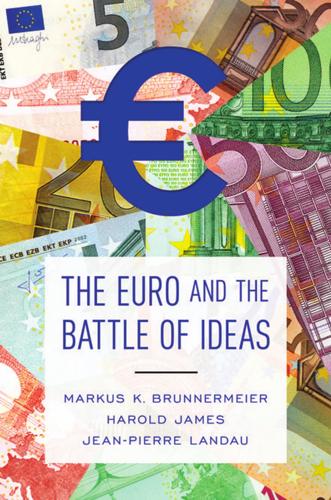
The Euro and the Battle of Ideas
by
Markus K. Brunnermeier
,
Harold James
and
Jean-Pierre Landau
Published 3 Aug 2016
But some countries had resisted, as they did not want to rock the boat and let the IMF leave Europe. The resolution of the clash came from a political process, as a result of negotiations in the US Congress, where the Republican majority was persuaded by some US economists, in particular by Stanford’s John Taylor, to insert this measure (rather than some domestic content, such as ending Obamacare) into the legislative package that increased the IMF quotas in response to the global financial crisis. Taylor had first floated the idea as a Wall Street Journal article.42 The IMF was not sorry to see the end of the exemption. In a devastating retrospective judgment, it acknowledged that the bending of the usual and traditional IMF rules had delayed “remedial measures risks impairing the member’s prospects for success and undermining safeguards for the Fund’s resources.”43 It also increased private sector risk by subordinating private claims to Fund credit, and it had thus not achieved its stated goal of minimizing contagion.
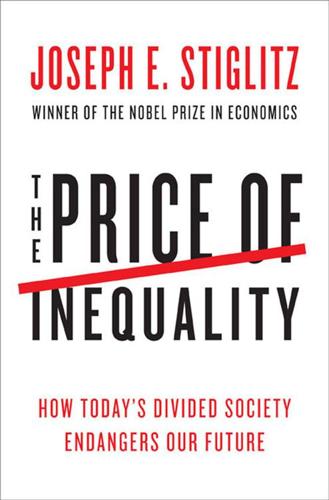
The Price of Inequality: How Today's Divided Society Endangers Our Future
by
Joseph E. Stiglitz
Published 10 Jun 2012
See Suzanne Mettler, “Reconstituting the Submerged State: The Challenges of Social Policy Reform in the Obama Era,” Perspectives on Politics 8, no. 3 (2010): 803–24. This partially accounts for the quandary that states that are the largest recipients of federal assistance tend to be most against government programs. See also the anecdote described below, in the next section, involving the elderly objecting to Obama-care because it threatened to socialize Medicare. 5. See Michael I. Norton and Dan Ariely, “Building a Better America—One Wealth Quintile at a Time,” Perspectives on Psychological Science 6, no. 1 (2011): 9–12. 6. See the survey on the perception of inequality in the world, conducted by the Fondation Jean-Jaurès, available at (in French) http://www.jean-jaures.org/Publications/Dossiers-d-actualite/Enquete-sur-la-perception-des-inegalites-dans-le-monde (accessed March 4, 2012). 7.
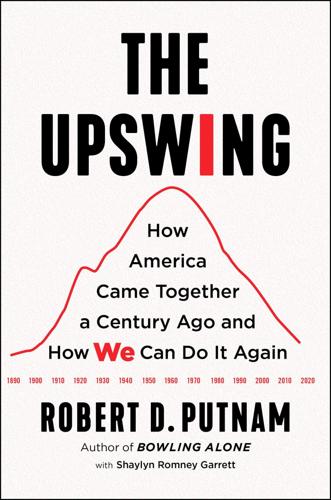
The Upswing: How America Came Together a Century Ago and How We Can Do It Again
by
Robert D. Putnam
Published 12 Oct 2020
To be sure, many Democrats favored charter schools as a kind of midway approach between public schools and private schools. 55 For a similar interpretation of the role of racial politics in the origin and timing of polarization, see McCarty, Polarization, chap. 5. We return to the issue of race and polarization in Chapter 6. 56 These six key votes were Obama’s stimulus package, Dodd-Frank financial regulation, Lily Ledbetter gender pay equity, Obamacare (first creating it and then overturning it), and the 2017 Trump tax cuts. 57 See Jane Mayer, Dark Money: The Hidden History of the Billionaires Behind the Rise of the Radical Right (New York: Doubleday, 2016); Theda Skocpol and Alexander Hertel-Fernandez, “The Koch Network and Republican Party Extremism,” 14, no. 3 (September 2016): 681–99, doi:10.1017/S1537592716001122; and https://en.wikipedia.org/wiki/Lewis_F.

American Gun: The True Story of the AR-15
by
Cameron McWhirter
and
Zusha Elinson
Published 25 Sep 2023
Next to the photo were the words “323 by these.” Below was a photo of a hammer: “496 by these.” Below the hammer were photos and stats for people killed by knives, drunk driving, and medical malpractice. At the bottom of the meme was this sentence: “You are SIX HUNDRED TIMES MORE LIKELY to DIE by using your OBAMACARE, than by a semi-automatic rifle. Sooo, feel sick?” Waltz followed up with a flurry of posts and reposts. He started reading about the Three Percenters, a militia movement founded in 2008 that believed only 3 percent of the colonists had fought to gain American independence. The loosely organized group believed an armed citizenry was needed in modern times as a bulwark against governmental tyranny.

Never Bet Against Occam: Mast Cell Activation Disease and the Modern Epidemics of Chronic Illness and Medical Complexity
by
Lawrence B. Afrin M. D.
,
Kendra Neilsen Myles
and
Kristi Posival
Published 15 Jan 2016
But with mast cell disease perceived (correctly) as a complex disease (and that’s just with awareness of mastocytosis, let alone MCAS), physicians know that they generally can’t make money taking care of mast cell disease patients – at least, not within the structures of most of the health care financing systems on earth today. Although the Affordable Care Act (“Obamacare”) is a step toward reformation, the vast majority of the current U.S. health care financing system still compensates physicians for only two things: seeing patients (regardless of whether such encounters actually help the patients) and performing procedures on patients (regardless of whether such procedures actually help the patients).

Future Crimes: Everything Is Connected, Everyone Is Vulnerable and What We Can Do About It
by
Marc Goodman
Published 24 Feb 2015
Though one might think such scenarios are relegated solely to the realm of science fiction, news broke as part of the WikiLeaks scandal that the U.S. government had allegedly sent diplomatic cables to its embassies overseas instructing personnel to attempt to collect the DNA of world leaders—presumably not to enroll them in Obamacare. While most bio-hackers today are hacking for good, among the masses will undoubtedly be a number of bad apples and even criminal elements. Over time, there will be biological equivalents for all major categories of computer crime today. For example, hacking your genetic information may well be the identity theft of tomorrow—especially as DNA becomes widely used for authentication.
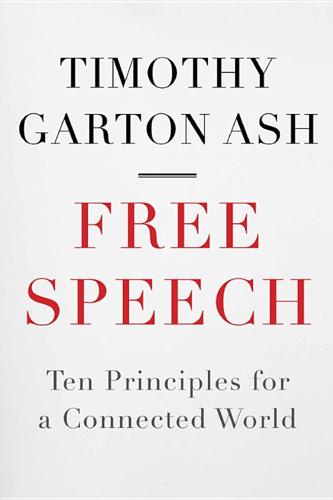
Free Speech: Ten Principles for a Connected World
by
Timothy Garton Ash
Published 23 May 2016
Rather it was the private power of a handful of big cable and phone companies, including Comcast, Verizon and AT&T, which had spent hundreds of millions of dollars in lobbying, so that they could make hundreds of millions more dollars by charging other big companies, such as Netflix, for speeding their content down a fast lane.29 These companies, their lobbyists and their supporters in the US Congress argued that the profits made would help companies provide better internet access for all Americans. They also invoked the freedom of the market against some leftist, egalitarian version of free speech. (Republican senator Ted Cruz called net neutrality ‘Obamacare for the internet’.30) But this was not persuasive. The whole history of information and communications businesses, especially in the United States, suggested a tendency towards monopoly, or at least oligopoly, with a concentration of economic power in the paws of a few big cats. What was needed was actually more effective freedom of the market: that is, a well-regulated level playing field, so that new, agile entrants could sharpen the competition.
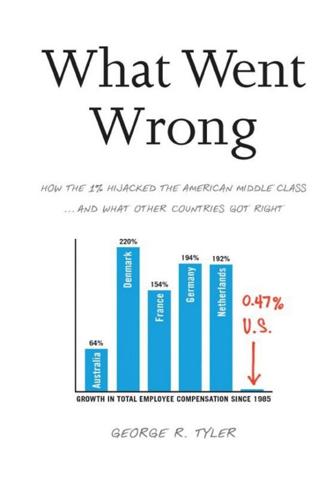
What Went Wrong: How the 1% Hijacked the American Middle Class . . . And What Other Countries Got Right
by
George R. Tyler
Published 15 Jul 2013
Jeffrey Smith, “DeLay Trial a Window Into Influence,” Washington Post, Dec. 1, 2010. 17 Justin Fox, “What the Founding Fathers Really Thought about Corporations,” HBR Blog Network, Harvard Business Review, e-mail exchange between Justin Fox and Brian Murphy, April 1, 2010, http://blogs.hbr.org/fox/2010/04/what-the-founding-fathers-real.html 18 John Kay, “Beware the Bailout Kings and Backbench Barons,” Financial Times, May 20, 2009. 19 Luke Mitchell, “Understanding Obamacare,” Harper’s Magazine, December 2009. 20 Hedrick Smith, Who Stole the American Dream (New York: Random House, 2012). 21 Charles Morris, “A Recession Can Clear the Air,” Washington Post, Nov. 16, 2008. 22 Northeast Public Power Association (NEPPA), “Deregulation Continues to Impact Retail Electric Prices in Region,” NEPPA News Line, vol. 43, no. 12, December 2007.

J.K. Lasser's Your Income Tax 2014
by
J. K. Lasser
Published 5 Oct 2013
If the grace period is adopted, FSA funds that are unused at the end of a plan year can be applied to expenses incurred within the first 21/2 months of the following year. - - - - - - - - - - Health-care FSA Starting in 2013 (plan years beginning after 2012), the maximum salary-reduction contribution that can be made to a health FSA is $2,500. Employers may set a lower limit. The $2,500 limit was required by the 2010 Patient Protection and Affordable Care Act (i.e., “Obamacare” health-care reform legislation). Plans that do not require the $2,500 limit are not qualifying cafeteria plans; all plan benefits are includible in the employees’ gross income. The $2,500 limit might be increased for 2014 by an inflation adjustment; see the e-Supplement at jklasser.com.
…
If you paid medical or dental expenses by credit card in 2013, the deduction is allowed in 2013, although you do not pay the charge bill until 2014. If you pay expenses online, the payment date shown on your online bank statement governs. - - - - - - - - - - Law Alert Deduction Threshold Increases Starting in 2013 Under the 2010 Affordable Care Act (Obamacare), the floor for deducting medical expenses increases for most taxpayers starting with 2013 returns. The floor, which has been 7.5% of adjusted gross income (AGI), is now 10% of AGI. However, if you or your spouse is age 65 or over by the end of the year, you may continue to use the 7.5% floor through 2016
…
In your planning for 2014, you may need to increase your withholdings or estimated tax installments to account for the new taxes. 28.1 Additional Medicare Taxes Take Effect in 2013 28.2 Additional 0.9% Medicare tax on Earnings 28.3 Additional 3.8% Medicare Tax on Net Investment Income 28.1 Additional Medicare Taxes Take Effect in 2013 To help pay for health care reform, the 2010 Patient Protection and Affordable Care Act enacted two new taxes that can impact higher-income taxpayers starting in 2013. Depending on the types of income you have, you may be subject to both taxes. Taxpayers with wages and/or self-employed earnings over $200,000 if single, or $250,000 if married filing jointly, are subject to an Additional Medicare Tax of 0.9% on the earnings over the threshold.
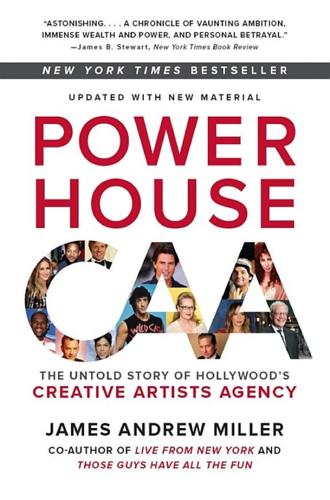
Powerhouse: The Untold Story of Hollywood's Creative Artists Agency
by
James Andrew Miller
Published 8 Aug 2016
We find companies or industries going through a moment of evolution, and we put our capital and creativity to work to help them through that period of time. This theme runs through a whole series of different types of investments—from Uber to turning around Continental Airlines, to our investments in health care after the passage of Obamacare. And it’s this idea of change that was one of the governing principles in our appearance as an investor in CAA. DAVID BONDERMAN, Co-Chairman, TPG Capital: The long and short of it is, the entertainment industry has been totally dislocated by what’s going on around it, and any time you have dislocation like that, you have opportunity.

Eastern USA
by
Lonely Planet
Named after the infamous 1773 event in Boston, during which patriots dumped British tea to protest the government’s tax on it, today’s Tea Party is a populist movement of politically conservative republicans who decry high taxes and federal spending. Government bailouts (the banking and auto industries) and President Obama’s healthcare reform (derisively named Obamacare) particularly capture their ire. »Household income New Hampshire (2008-2010): $66,300 »Household income Mississippi (2008-2010): $36,850 »Population density New York City: 27,530 per sq mi »Population density Maine: 43 per sq mi »Cheese produced annually Wisconsin: 2.4 billion pounds »Number of vacant homes in Florida (2010): 1.5 million The Tea Party and fellow republicans have made inroads into traditionally liberal regions of the East.

USA Travel Guide
by
Lonely, Planet
This in turn gave birth to the Tea Party (www.teapartypatriots.org), a wing of political conservatives who believed that Obama was leaning too far to the left, and that government handouts would destroy the economy and thus America. High federal spending, government bailouts (the banking and auto industries) and especially Obama’s healthcare reform (‘Obamacare’) particularly captured their ire. Healthcare for All For democrats, however, Obama’s healthcare bill, which became law in 2010, was a victory in bringing healthcare coverage to more Americans, lowering the cost of healthcare and closing loopholes that allowed insurance companies to deny coverage to individuals.
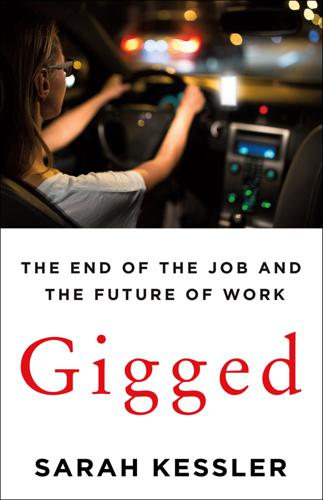
Gigged: The End of the Job and the Future of Work
by
Sarah Kessler
Published 11 Jun 2018
The problem, Oisin had argued in a Wired op-ed headlined “We Must Protect the Gig Economy to Protect the Future of Work,” was that “the current regulations never contemplated these new ways to work.”7 Why hadn’t Handy, Jon wanted to know, been more vocal about the dismantling of the Affordable Care Act? After Donald Trump was elected president, congressional Republicans made it clear they planned to repeal the US law, which made it easier for the independent contractors that Handy relied on to buy their own insurance. Oisin didn’t answer the question. “There’s a massive amount of uncertainty,” he said. But doesn’t this effect your workforce? Jon asked Oisin about the Affordable Care Act. “It’s a very serious issue,” Oisin said, dodging the question for a second time. Jon’s next very direct question essentially amounted to: Isn’t the gig economy a way to take money from frontline workers and turn it into profits for tech entrepreneurs?
…
International Labour Office. 2016. 9 Kaiser Family Foundation. 2015 Employer Health Benefits Survey. 10 Ibid. 11 Bureau of Labor Statistics. Employee Benefits Survey. March 2015. https://www.bls.gov/ncs/ebs/benefits/2015/ownership/civilian/table09a.htm. 12 Is the Affordable Care Act Working? New York Times. Interactive article produced by Troy Griggs, Haeyoun Park, Alicia Parlapiano, Sona Patel, Karl Russell, and R. Smith. https://www.nytimes.com/interactive/2014/10/27/us/is-the-affordable-care-act-working.html?_r=1#/uninsured. 13 Dynan, Karen, Douglas Elmendorf, and Daniel Sichel. The Evolution of Household Income Volatility. B.E. Journal of Economic Analysis & Policy. December 18, 2012. https://www.degruyter.com/view/j/bejeap.2012.12.issue-2/1935-1682.3347/1935-1682.3347.xml?
…
He researched health insurance plans and found that COBRA, a US program that would allow him to continue his current insurance plan, was too expensive. Purchasing the same plan that he’d enjoyed as an employee would, without his employer’s contributions, cost him about $600 per month. Through the health exchange that had been set up as part of the Obama administration’s Affordable Care Act, he found plans that would cost only $200 to $300 per month. On a spreadsheet, he laid out this cost, what he wanted to contribute monthly to his retirement savings account, and his expected taxes, which would double once he made the switch from employee to independent contractor. Then he browsed through Gigster’s website, which listed available jobs and their compensation, to estimate how much he would need to work in order for Gigster to be viable.
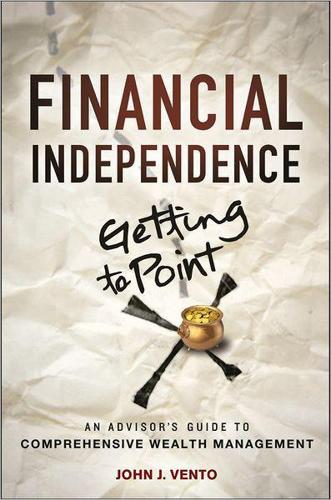
Financial Independence
by
John J. Vento
Published 31 Mar 2013
Each state regulates its own workers’ compensation insurance program, and details vary from state to state; however, normal benefits include medical and rehab expenses, disability income, and lump-sum payments for death and certain severe injuries. c05.indd 107 26/02/13 11:09 AM 108 Financial Independence (Getting to Point X ) The Patient Protection and Affordable Care Act On March 23, 2010, President Barack Obama signed the Patient Protection and Affordable Care Act of 2010, the central piece of legislation that overhauled the American healthcare system. A week later, on March 30, 2010, the President also signed the Healthcare and Education Reconciliation Act of 2010, a shorter piece of legislation that amended several provisions in the initial Patient Protection Act.
…
c05.indd 129 26/02/13 11:09 AM 130 Financial Independence (Getting to Point X ) $ TAX FACTS AND STRATEGIES2 FOR INSURING YOUR HEALTH AND LIFE • Take full advantage of medical insurance premiums paid by your employer on your behalf. This is considered a tax-free fringe benefit. These medical insurance premiums are 100 percent deductible by your employer and tax free to you. All payments made by the medical insurance company to cover your medical expenses are also tax-free payments made for your benefit. • Under the Affordable Care Act plan: You have limited opportunities to deduct medical costs (including self-paid medical insurance premiums) for you and your family. Starting in 2013, your deduction may be limited to only the amount that exceeds 10 percent (7.5 percent for taxpayers over 65 through 2016) of your AGI. This is why having medical insurance through your employer and a Health Savings Account (HSA) is so important, because this allows you to pay for these costs in pretax dollars. • If your health insurance qualifies as a high-deductible plan, you should establish an HSA, and fully fund tax-deductible contributions to cover future medical expenses.
…
(iii) The taxpayer should seek advice based on the taxpayer’s particular circumstances from an independent tax advisor. c09.indd 247 26/02/13 2:51 PM 248 Financial Independence (Getting to Point X ) • • • • • • • • • c09.indd 248 pay the 15 percent rate except those with higher incomes subject to the new 39.6% income tax bracket, who will pay 20 percent. Under The Patient Protection and Affordable Care Act, starting in 2013 there is a 3.8 percent Medicare tax on net investment income if your modified adjusted gross income is above $250,000 for married filing jointly and qualifying widow(er), above $125,000 for married filing separately, and $200,000 for single and head of household. When evaluating different investment choices, you must consider the overall rate of return after taxes, which may make a tax favored type of investment more attractive.

The Black Box Society: The Secret Algorithms That Control Money and Information
by
Frank Pasquale
Published 17 Nov 2014
Ironically, this kind of data was originally gathered to help patients in emergency care settings—to assure access to a record of their medications. But when that plan failed, the records were quietly repurposed as a means of discriminating against the sick. If there’s one thing Wall Street loves, it’s a quick pivot to a winning business strategy. From Medical Record to Medical Reputation. Given the passage of the Affordable Care Act (ACA), those with a long history of prescriptions do not have quite as much to worry about in the health insurance market: insurers cannot discriminate on the basis of pre-existing conditions now.53 But other opportunities may be foreclosed. Moreover, the ACA also includes provisions promoting insurance discounts in exchange for participation in “wellness programs.”
…
The first step in approaching them is awareness, especially since the black box aspect of Internet infrastructure has been so notably successful in keeping its economic arrangements out of the public eye.153 There are two intertwined issues here. One has to do with concern about appropriate levels of compensation for executives, intermediaries, and investors. These questions do not apply uniquely to search firms; on the contrary, they are very common in other fields. They were central, for instance, in the struggle over the Affordable Care Act, which aimed to keep insurance premiums from being siphoned disproportionately out of health care proper and into insurer profits and CEO compensation. They will come up acutely in the next chapter, on Wall Street. They haunt other corners of the THE HIDDEN LOGICS OF SEARCH 85 information world—for instance, the cable and telephone companies that benefit along with Silicon Valley firms from the massive increase in traffic engendered by the world of search.
…
In 2004, Fisher estimated that a fee of $6 per month on broadband subscribers would cover all the music and movie industry revenue allegedly lost due to piracy.49 Of course, given extreme and rising inequality, such fees will need to be capped and, hopefully, progressively keyed to income TOWARD AN INTELLIGIBLE SOCIETY 203 and wealth. They are probably best collected as a sliding-scale user fee. A small tax on the unearned investment income of wealthy households would also help here, just like the one imposed to help fund the Affordable Care Act. Like health care, culture has positive externalities. It deserves more support from those best able to pay for society’s common needs.50 Unfortunately, the Recording Industry Association of America and the Motion Picture Association of America appear about as enthusiastic for a public option in entertainment as private insurers have been about it in health care.
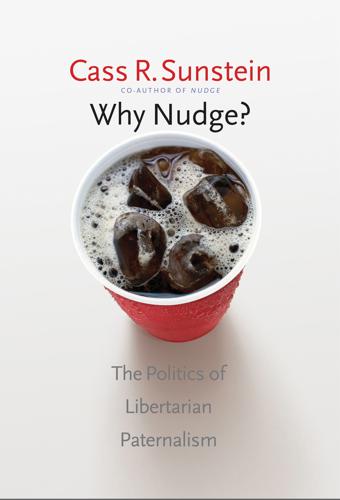
Why Nudge?: The Politics of Libertarian Paternalism
by
Cass R. Sunstein
Published 25 Mar 2014
But if it is paternalistic, is it really objectionable as such? Would things be different, or worse, if governments adopted Simply 600 menus at their own cafeterias? Are things different, or worse, if government seeks to promote more healthful eating by requiring menus to contain calorie information, as indeed the Affordable Care Act does for chain restaurants and similar retail food establishments? What if the government embarks on an aggressive, even graphic educational campaign designed to promote healthful eating—or taxes unhealthful foods, as France, Finland, Denmark, Britain, Hungary, Ireland, and Romania have either done or seriously considered?
…
The Simply 600 menu has not provoked much controversy, but if government tried to require or even to encourage it, a public outcry would be inevitable. In the United States, public debates have erupted over apparently sensible (and life-saving) laws requiring people to buckle their seatbelts or to wear helmets while riding motorcycles. Many people believe that the “individual mandate” in the Affordable Care Act, which requires all adults to have health insurance, is a form of unacceptable paternalism.5 The specific content of the disputes changes over time, but the fundamental issues endure. And in this domain, there are no simple partisan divisions. Paternalism is sometimes favored by those on the political left (perhaps seeking to improve people’s diets) and sometimes by those on the right (perhaps seeking to encourage chastity or marriage).
…
Some portions of the original lectures also appeared in Simpler: The Future of Government (Simon and Schuster, 2012), and I am grateful to Thomas LeBien for editorial help on that occasion. Index active choosing, 95, 100, 115, 125, 133, 138, 140 affect heuristic, 32–33 affective forecasting errors, 110 affective taxes/subsidies, 32–33 Affordable Care Act, 2, 167(n5). See also health insurance antipaternalism. See autonomy (freedom of choice); Harm Principle; impermissible motivations; Mill, John Stuart; rule-consequentialism; welfarist objections to paternalism attention, and salience, 39–44. See also salience automatic cognition. See System 1 thinking automatic enrollment, 54, 71(t), 133, 148.
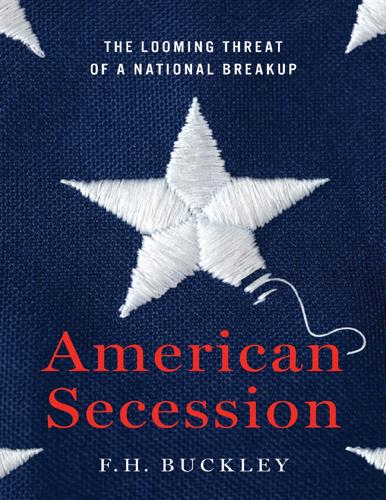
American Secession: The Looming Threat of a National Breakup
by
F. H. Buckley
Published 14 Jan 2020
For over two hundred years this worked well, as people on either side met in the middle to agree on the bills that needed passing. Shared ideals and a common patriotism drew people together for the good of the country, and as much legislation was enacted in periods of divided government as when one party controlled both houses of Congress and the presidency.31 That ended in 2010, when the Affordable Care Act was passed without a single Republican vote in the House or the Senate. Republican amendments were rejected by a stern Obama, who told them that “elections have consequences” and reminded them, “I won.” A month later, however, another election gave control of Congress to the Tea Party Republicans, and thereafter gridlock was the order of the day.
…
The state also bans employers from permitting federal immigration officials to enter their places of business or review employment records without a court order.15 What would the response be, asked the attorney general, if a polluting state barred its businesses from allowing EPA officials to enter their factories?16 The interposition game has been played by both liberals and conservatives, depending on which party controls the White House. During the Obama administration it was conservatives who tried to work around federal laws, from the Affordable Care Act to federal gun laws. Proposed Missouri gun legislation in 2013 would have amounted to nullification. The bill adopted the compact theory of the Constitution that the Kentucky Resolutions had asserted, and declared that restrictive federal gun laws were null and void in Missouri. Moreover, the bill made it a criminal offense for federal officials to try to enforce federal gun laws.17 But before the state police could arrest federal officers, the bill was vetoed by the governor and the attempt to override the veto failed by a single vote.18 Because there’s an overlap between the powers of federal and state governments, American federalism is inevitably a little messy.
…
INDEX The index that appeared in the print version of this title was intentionally removed from the eBook. Please use the search function on your eReading device to search for terms of interest. For your reference, the terms that appear in the print index are listed below. Abbeville Institute abortion Adams, Henry Administrative Procedure Act Affordable Care Act Afghanistan Alabama Alesina, Alberto Alien and Sedition Acts American Civil Liberties Union (ACLU) American Enterprise Institute American Revolution; and Carlisle Commission Anglo-Irish Treaty (1921) Animal Farm (Orwell) Antifa Arab Spring Argentina Aristotle Arkansas Article V convention Articles of Confederation; flaws of; and foreign threats; and trade barriers Athens (Greece) Australia Austro-Hungarian Empire Bangladesh Beard, Charles Belgium Bells of St.
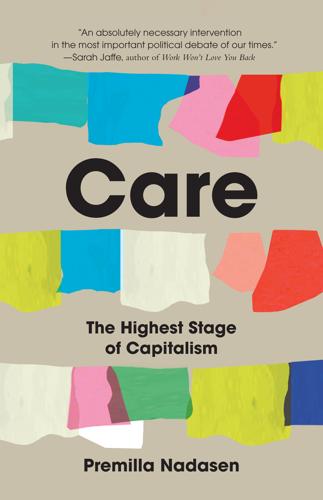
Care: The Highest Stage of Capitalism
by
Premilla Nadasen
Published 10 Oct 2023
To push for a truly caring society means enabling people, by providing resources and social supports, to do social reproductive work for themselves, not just as workers caring for others. Although support for the poor has dwindled, federal and local governments have instituted some programs with the intention of offering support for care. The Affordable Care Act has given more Americans access to health insurance. The Earned Income Tax Credit has lifted millions of working Americans out of poverty. The Child Tax Credit has reduced childhood poverty. Universal pre-K, now offered in a handful of states and cities, offers free public education for three- and four-year-olds and is welcomed by families that cannot send their young children to private day care or hire nannies.
…
Although there is no longer an entitlement to welfare assistance, federal, state, and local governments still spend trillions of dollars on antipoverty programs and social and human services. In 2020, total state and federal spending on Temporary Assistance for Needy Families (TANF) was $31 billion. Federal health-care spending—Medicare, Medicaid, the Children’s Health Insurance Program (CHIP), and the Affordable Care Act—was $1.4 trillion. At the federal level, the Department of Health and Human Services, which includes Medicare, Medicaid, and TANF, among other programs, had a budget of $2.8 trillion in fiscal year 2021, which was 18 percent of federal budgetary resources and more than double the $1.3 trillion that was spent in 2020.22 The huge budget, however, doesn’t mean that these resources are mitigating poverty and helping the poor.
…
The more convoluted the program is, the greater the need for a company like Maximus, whose motto is “helping government serve the people.” Maximus received the country’s first privatized welfare contract in 1987. Its size, scope, and profit margin grew exponentially with federal welfare reform in 1996 and even more with the passage of the Affordable Care Act in 2010. Maximus went public in 1997 and is beholden to investors. Promising to reduce overhead costs and root out fraud, Maximus has brought business management to the care industry, which means reorienting from people to profit, from needs to efficiency. It operates state health insurance exchanges, welfare-to-work programs, child support enforcement, and job training, and administers Medicaid, Medicare, and the Child Health Insurance Program (CHIP).
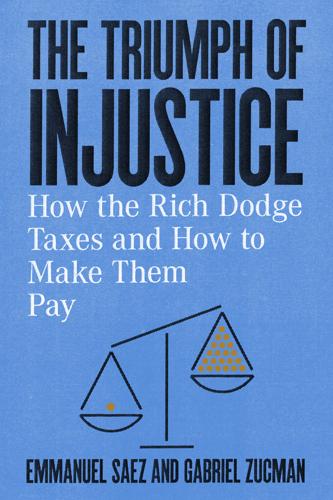
The Triumph of Injustice: How the Rich Dodge Taxes and How to Make Them Pay
by
Emmanuel Saez
and
Gabriel Zucman
Published 14 Oct 2019
Elderly Americans and low-income families are covered by public insurance programs (Medicare and Medicaid, respectively), funded by tax dollars (payroll taxes and general government revenue). The rest of the population must seek coverage by a private company; insurance, in that case, is funded by nontax payments. In practice, people most often obtain private insurance through their employers rather than pay separately. Since the passage of the Affordable Care Act in 2010, it has become compulsory to be insured: contributing to a private plan—for those not covered by Medicare or Medicaid—is mandatory. Conservatives dislike this obligation and are still trying to weaken it, but even if they succeed the situation would not fundamentally change. Whether insurance premiums are paid to a public monopoly (the government) or to a private monopoly (the notoriously uncompetitive US private health insurance system)7 makes little difference.
…
No government would out of the blue impose a poll tax to fund health care; it would be a crushing burden on moderate-income families. And yet in essence that’s what the United States does today: employers are administering a huge poll tax on behalf of the government. Since the passage of the Affordable Care Act in 2010, employers with fifty or more employees are legally required to provide health insurance to their workers or pay a penalty of $2,500 per employee in 2019. Given how big the average annual health insurance premium has become ($13,000 per covered worker), this system is unsustainable.
…
At the bottom of the distribution, it’s not as onerous as sales and payroll taxes. But that’s because many working-class Americans do not get health insurance from their employers. They either face the burden of obtaining coverage themselves, rely on a family member to cover them, enroll into Medicaid, or go uninsured. The Affordable Care Act increased the pool of Americans eligible for Medicaid and subsidized the purchase of private insurance for low-income people who weren’t otherwise covered, but the law still left about 14% of the adult population uninsured in 2019.7 And it provided no relief for workers who fund their health care through a poll tax whose cost for the middle-class class far outweighed that of the income tax.

Tightrope: Americans Reaching for Hope
by
Nicholas D. Kristof
and
Sheryl Wudunn
Published 14 Jan 2020
Only one in five Americans with substance abuse disorders now receive any treatment. That is an astonishing failure of our government and health-care system, and the Trump administration arguably made it worse by chipping away at the Affordable Care Act and Medicaid. “I cannot imagine if we said only one in ten people with cancer can get chemotherapy, or one in ten patients who need dialysis is able to receive it,” Wen told us. “But that’s what happens for addiction.” The Affordable Care Act included mental-health care and treatment of drug-use disorders as essential health benefits, but reimbursements for addiction treatment and mental health are very low and many users have no health insurance at all.
…
Many cast ballots for Trump as a primal scream of desperation because they felt forgotten, neglected and scorned by traditional politicians. Yet once he was in office, Trump cold-shouldered the working-class voters who had supported him. He gave lip service to jobs in coal and manufacturing but took no significant step to assist workers, and he made things worse by chipping away at the Affordable Care Act. It was one more scene in a long drama of politicians’ betrayal of America’s working class. A popular critique laments the indolence, irresponsibility and self-destructive behaviors of the working class. National Review in 2016 urged “an honest look at the welfare dependency, the drug and alcohol addiction, the family anarchy—which is to say, the whelping of human children with all the respect and wisdom of a stray dog” and concluded that “the white American underclass is in thrall to a vicious, selfish culture whose main products are misery and used heroin needles.”
…
Many of these working-class white voters had previously supported President Obama and President Clinton, but now they switched sides and backed Trump. “People felt ignored,” the pollster Frank Luntz told us. “And Donald Trump spoke to them.” Once in office, of course, Trump chipped away at the Affordable Care Act, so that fewer Americans were insured than would otherwise have been the case. Less insurance in turn means that more die from heart disease, cervical cancer and liver ailments, and fewer have access to addiction treatment, a tragic wrong for his working-class supporters. In Oklahoma, we met a kindergarten teacher named Rhonda McCracken who fervently supports the local domestic violence intervention center, which she said had helped her escape a brutal ex-husband who beat and choked her.
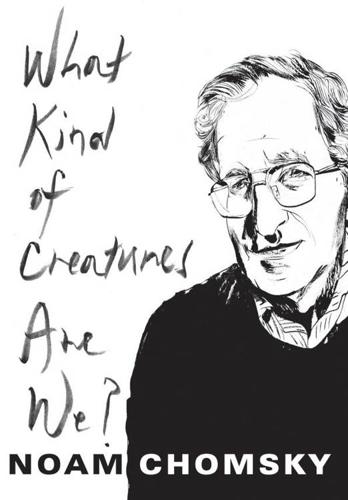
What Kind of Creatures Are We? (Columbia Themes in Philosophy)
by
Noam Chomsky
Published 7 Dec 2015
A review of the health-care fiasco in the New York Times observes that the United States “is fundamentally handicapped in its quest for cheaper health care: All other developed countries rely on a large degree of direct government intervention, negotiation or rate-setting to achieve lower-priced medical treatment for all citizens. That is not politically acceptable here.” An expert is quoted as tracing the complexity of the Affordable Care Act to “the political need in the U.S. to rely on the private market to provide health care access.” One consequence is “Kafkaesque” bills because “even Medicare is not allowed to negotiate drug prices for its tens of millions of beneficiaries.” The problem of “political impossibility” has been noted before.
…
See also origin of language action at a distance, apparent absurdity of: ignoring of, by post-Newtonian physicists, xvii, 34, 98–99, 108; Locke on, 33; Newton on, xvi, 33–34, 83, 85, 86, 87–88, 98; parallel of, with consciousness arising from matter, 86–87; Russell on, 90 aesthetic theory, relation of scope and limits in, 56–57 Affordable Care Act, complexity of, as symptom of broken U.S. health system, 68–69 African Americans, exclusion of from U.S. personhood, 46 aitiational semantics, 43 Albert, David, 55 Albert, Michael, 72 Alperovitz, Gar, 72 American tradition, roots of anarchism in, 72–73 Analysis of Matter (Russell), 90, 99–100 anarchism: anarcho-syndicalism as goal of, 62; balance of socialist and libertarian elements in, xxiii; federations of self-governing communities under, 66–67, 72; and freedom from domination, 66–67; and freedom from economic exploitation, 64; and freedom from guardianship, 64–65, 80; as heir to principles of classical liberalism, 62, 63, 71; and human development, xxi; on necessity of state power to defend oppressed, 67; political goals of, 62, 64, 70; principles of, xxi; roots of, in American tradition, 72–73; as term, 63; and unjustified coercion, dismantling of, xxiii, 63–64, 66; workers’ ownership of means of production in, 71–72 anarcho-syndicalism: Rocker on, 62; of Spanish Civil War, xxi, 63 animal signals: causative link of, to external objects, xviii–xix, 41–42, 126; vs. human language, xviii–xix, 41–43, 48; as unlikely evolutionary source of human language, xviii–xix, 48 apes: global nature of association in, 42–43; and language as computational procedure, x–xi, 13 Aristotle: on democracy, 79; on form, 50; on nature of language, xi, xviii, 4, 6, 14; on words as mind-dependent concepts, 44, 45 atomic elements of computation: complex nature of, 126; lack of causative link of, to external objects, xix, 42, 126; lack of referential properties in, xviii, 43–46, 126; necessity of accounting for, in model of language origin, 41; origin of, as mystery, 125–26; parallels of, with phonetic elements, 43; as prior to words or lexical items, xviii, 41; questionable value of literature on, 41; as unique to humans, 59, 125 Bakunin, Mikhail, xxi, 64, 68 Basic Property of Language, viii, 4; and computational procedure, ix, 4; and early definitions of language, 5–7; formulation of, 3–4; issues exposed by clear formulation of, 9–12; Merge as optimal computational procedure for, 24; origin of, requirements for credible account of, 40; and principle of simplicity, 16–17; reformulation of, 13 Bernays, Edward, 76 Bilgrami, Akeel, 43 biolinguistic framework, 5; and mid-twentieth-century turn to generative grammar, 9 biological basis of I-language, ix, xiv, 5, 59; importance of investigating vs. computed objects, 8–9; provisional abstraction from, ix, 129n3.
…
See mysterianism Newton, Isaac: efforts of, to unify chemistry and physics, 107; and evaporation of mind-body problem, 104; Hume on, 37, 81, 86–87; Kant on, 97, 141n32; Kuhn on, 87–88; and limits on human cognition, xvi–xvii, xx, 33–34, 52, 53, 92, 104–5; and motion without contact, struggle to conceptualize, xvi, 33–34, 83, 85, 86, 87–88, 98; and physical, redefinition of, 125; and pragmatic approach to science, xx, 53, 88–89, 99, 107; on will, 95 AND CARTESIAN DUALISM: destruction of, xvi–xvii, 30, 33–34, 35, 52, 85, 111–12, 113–14; general adherence to, xvi, 33–34, 83, 85, 86, 87–88, 98–99 Newtonian physics, delay of in supplanting Cartesian physics, 88 New York Times, 68, 69 NIM project, 42–43 nonexperiential truths: existence of, as issue, 124; supervenience of experiential truth on, as issue, 123–24 No-Radical Emergence Thesis (Strawson), 115–16, 121 noun phrases, and object status, 49, 118 null subject languages, 23 Obama, Barack, and Affordable Care Act, 69 Objections (Gassendi), 106 Objections to the Meditations (Descartes), 144n50 objects: mind-independent, troubled status of concept, 48–52; noun phrases and object status, 49, 118. See also referential properties On Liberty (Mill), 60–61 Opticks (Newton), 83, 107 origin of language: animal signals as unlikely source of, xviii–xix, 48; and appearance of Merge, xiii; vs. communication, 40; Darwin on, 2–3; focus on communication, as misguided, 14–15, 40; gradual evolution model, unlikelihood of, xviii–xix, 48; Jespersen on, 8; lack of detectable evidence on, 40; Lewontin on, xix, 39–40, 52; as mystery-for-humans, xix, 39–40, 52, 59; origin of atomic elements, as issue, 125–26; origin of infinite range of interpretable hierarchical expressions, as issue, 125; and phenotype, necessity of defining, xix, 6, 40, 41, 59; requirements for credible account of, 40–41; and SMT hypothesis, 25; as sudden, recent leap, xiii, 3, 25, 40; Tattersall on, 3, 25 other minds, as issue, and creative use of language, 93 Pannekoek, Anton, 63 panpsychism: Priestley’s rejection of, 116, 117; and Strawson, 115–16, 120–21 parliamentary tradition: as instrument of class rule, 68; in seventeenth-century England, xxii passivization, and communication vs. semantic interpretation, 22 Pauling, Linus, 109 Peirce, Charles Sanders: on abduction, xv, 27–28, 55–56; on limits on human cognition, xix, 28, 53, 105; and mysteries as roadblocks to inquiry, xx; on sign-object reference, 126 people, as guardians of public interest, 79–80 percepts as physical events, Russell on, 100–101, 102 Perrin, Jean Baptise, 23 person, as complex concept, 45–46 Peterloo massacre, 73 Petitto, Laura-Ann, 42–43 Petty, Sir William, 96–97 philosophy, contemporary: denial of mysteries by, xix; Stoljar on central problem of, 122–23; Strawson on hyperdualist intuitions of, 124, 127 philosophy, naturalization of in Hume, 106 philosophy of mind: and limits on human cognition, xvi–xvii; and mind-body problem, reengagement with, 111–12; questionable foundational assumptions of, 36; Stoljar on epistemological terms of, 122–23 phonetics, limited success of, 44 physicalism, Jackson on limitations of, 102 physics: and human perception, necessity of continuity between, 100, 102; Newtonian, delay of in supplanting Cartesian physics, 88; Russell on limits of, 100–103.
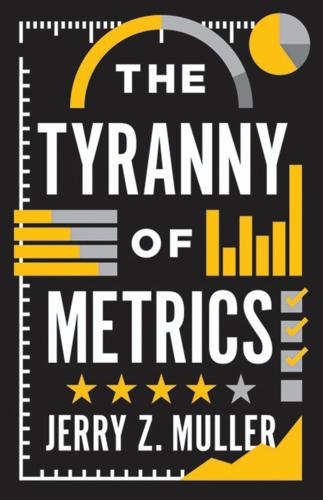
The Tyranny of Metrics
by
Jerry Z. Muller
Published 23 Jan 2018
There are some good reasons for that: health expenditure is what economists call a “luxury good”—the richer people are, the more they are willing to spend on it. Then there is the fact that as the baby boom generation ages, that large cohort of the population is reaching the age of maximal medical expenditures. Add to that the availability of more specialty drugs and the faster growth in drug prices. The adoption of the Affordable Care Act meant that an ever higher percentage of healthcare spending in the United States would be by the government, with the share of total health expenditures paid for by federal, state, and local governments projected to increase to 47 percent by 2025.1 The increasing cost of healthcare has led both private insurers and government insurers (the National Health Service in Britain; and Medicare, Medicaid, and the Veterans Administration in the United States) to put pressure on doctors and hospitals to lower reimbursement rates and to improve outcomes.
…
In the United Kingdom, the National Health Service (NHS) began to adopt P4P as a key feature of its compensation arrangements with primary care physicians in the mid-1990s, a feature that was extended by the Tony Blair administration. In the United States, private health plans and employer groups have increasingly adopted P4P programs, as have state governments. And P4P provisions are an important part of the remuneration that physicians receive from Medicare as part of the Affordable Care Act of 2010.16 Medicare administrators have tried to reward a variety of measured outcomes, including surgical results, using as a criterion the rate of survival until thirty days after surgery. Another prominent form of medical metrics is the public ranking of doctors and hospitals in the form of “medical report cards.”
…
Kling, Specialization and Trade, p. 33. INDEX abstract and formulaic knowledge, 59–60 “Academic Ranking of World Universities,” 75–76 accountability, 3–6; advocates of, 17–18, 113; growth in applications of, 63–64; quest for numerical metrics of, 40 Acemoglu, Daron, 72 achievement gap, 20, 91, 96–99 Adelphia, 144 Affordable Care Act, 104, 114–15 Afghanistan War, 131–34 agency capitalism, 148 American Recovery and Reinvestment Act, 94 Annals of Internal Medicine, 115–16 Arnold, Matthew, 12, 30–31, 92 authority, suspicion of, 41 Autor, David, 72 Baumol, William, 44 Bell, Daniel, 33 benchmarks, 6 Benghazi investigations, 162 Berwick, Donald, 119–20, 172 Bin Laden, Osama, 171 BlackRock, 149 Blair, Tony, 114 Bodies, 2–3 bounded rationality, 45 Bowen, William G., 44 Bratton, William J., 126 Bresch, Heather, 141, 142 Burns, Ed, 1, 129 Bush, George W., 11, 64, 89, 90 business and finance: financial crisis of 2008 and, 145–47; other dysfunctions in, 150–51; short-termism in, 147–50; when paying for performance works, and when it doesn’t, in, 137–45 business schools, 12–13, 138–39 Cable, Dan, 138 Campbell, Donald T., 19, 127 Campbell’s Law, 19, 24, 80, 93, 127 capitalism, 87, 172; agency, 148 case selection bias, 117–18.
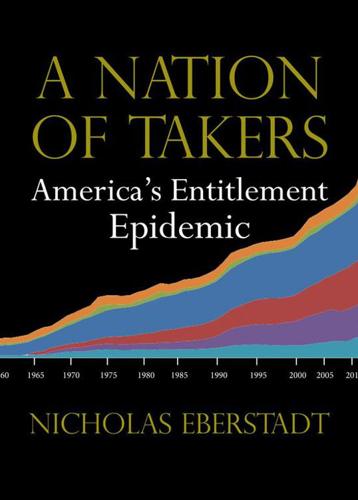
A Nation of Takers: America’s Entitlement Epidemic
by
Nicholas Eberstadt
and
Nick Eberstadt
Published 18 Oct 2012
Obama offered an encomium to the new lifelong procession of entitlements—as advertisements for his 2012 reelection campaign. These feature an imaginary woman named “Julia,” who is shown to benefit from government transfers and programs from preschool (Head Start) to childbearing (Medicaid, the Affordable Care Act) to working ages (loans from the Small Business Administration) to retirement (Social Security and Medicare).15 In this important new political departure, entitlements and social welfare programs are no longer reluctantly defended, but instead positively celebrated as part of the American dream: and the promise to not only defend these but to increase their scope still further is offered as a positive reason for Obama’s reelection.
…
But even when performed efficiently, these procedures require state-of-the art technology and highly trained practitioners. They are inherently expensive, and because of the human goods at stake, it is hard to argue that income should determine whether individuals have access to them. Still, we have no choice but to confront the aggregate costs of our commitment to equality. The Affordable Care Act has triggered an overdue national discussion, which will continue (I suspect for at least a decade) until we have found a socially acceptable formula for bringing our hopes and our resources into a more sustainable balance. I doubt that moral considerations such as dependence will be of much help in resolving this issue.
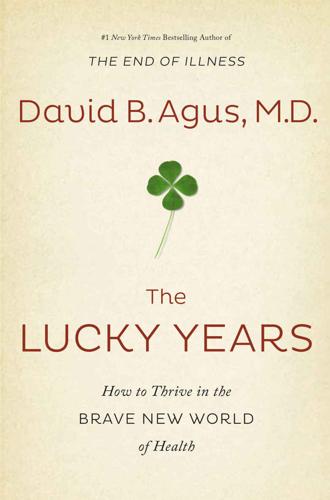
The Lucky Years: How to Thrive in the Brave New World of Health
by
David B. Agus
Published 29 Dec 2015
Most of us ignore the health care system in America until we have a problem with it, be it fighting a claim, dealing with poor service, or addressing a misdiagnosis. The passage of the Affordable Care Act left many wondering just how much it would improve the system and at the same time lower costs. The law is supposed to “put consumers back in charge of their health care,” but I know that many don’t feel this has been realized yet, at least not in the way they imagined when the law was being initially discussed and drafted. The problem is that unless we as individuals help change the system, we won’t see a vast improvement in our system. I’m not here to dissect the Affordable Care Act or offer advice on which plan to choose. What I do want to do, however, is show you how to participate in the system like never before so you can rest assured that your doctor’s visit a decade from now will be what it should be.
…
Clicking on a page number will take you to the ebook location that corresponds to the beginning of that page in the print edition. For a comprehensive list of locations of any word or phrase, use your reading system’s search function. Page numbers in italics refer to illustrations. acute lymphoblastic leukemia, 115 adenocarcinomas, 216 Advil, 66 “Aequanimitas” (Osler), 75 Affordable Care Act, 69–70 aflibercept (Zaltrap), 117 Africa, 76–77, 78, 163, 186 age: biological, 45–48, 46, 232 chronological, 45, 46, 46, 47, 135–36, 232 aging, 175, 201 coarse-graining in, 231–32 context and, 45 diseases of, 41, 128, 136 feebleness and, 43 fertility and, 43 genetics and, 20, 41 immune system and, 44 in males vs. females, 63–64 mortality rates and, 42–43 muscle loss in, 195–96 in other species, 41–45 parabiosis experiments on, 1–4, 3, 21 plasma transfusions and, 4–5 senility and, 44 telomeres and, 64–65 theories of, 40–41 AIDS, see HIV/AIDS airport noise, cardiovascular disease and, 92 Alabama, 47 alcohol abuse, 22 ALK, 51, 53–54 Alzheimer’s disease, 5, 8, 10, 91, 108, 113, 118, 129, 163, 175, 203–4, 215 diet and, 163 American College of Cardiology, 218 American Heart Association, 183, 218 American Institute for Cancer Research, 190 American Journal of Clinical Nutrition, 194 amino acids, 194 Amsterdam, University of, 41 amyotrophic lateral scleroris (ALS), 119–20 Angell, Marcia, 178 Annals of Internal Medicine, 181 Anopheles mosquito, 77 Antarctica, 94 antiaging drugs, 201 antiaging hoaxes, 200–201 antibiotics, 145 appendicitis and, 94 resistance to, 67–69, 68 antibodies, 84–85 antidepressants, 145 antioxidants, 208 antivaccine movement, 155–56 anxiety, 122 apoptosis, 59 appendicitis, 93–94 Apple, 23, 26 Archives of Internal Medicine, 142, 143, 192, 196 Arizona State University, 134 arthritis, 24, 215 artificial sweeteners, 85–86, 120 Asia, 77 aspirin, 76, 93, 136, 215–17 anticancer qualities of, 216–17 Associated Press, 21 asthma, 59 Athens, 226 atherosclerosis, 183 ATP (adenosine triphosphate), 107 Auckland, University of, 181 Aurora shooting, 81 Australia, 41, 124, 164, 197–98 Autier, Philippe, 180–81 autism spectrum disorders, 108, 112 vaccines and, 18, 153, 155–56 autoimmune diseases, 85, 125, 175 Avastin (bevacizumab), 11 Ayurveda, 113 bacteria: antibiotic-resistant, 67–69, 68 beneficial, 33–34 as earth’s first inhabitants, 124 bacterial genes, 107, 119 bacterial sepsis, 222 balance, 45 Baltimore, David, 102, 103 Baltimore, Md., 74 Bang, Hans Olaf, 182–83 Bangladesh, 232–35 Beaverton, Oreg., 109 Benda, Carl, 107 Berlin, 232, 233 Bernardi, Edward, 104–5 Bernardi, Neil, 104, 105–6 Bernardi, Sharon, 104–6, 108–9, 111 bevacizumab (Avastin), 11 Big Data, see databases, medical; data mining Big Pharma, see pharmaceutical industry Bill & Melinda Gates Foundation, 87 Bills of Mortality, 96, 97–99, 98, 99, 100 “biological age,” 45–48, 46, 232 biomarkers, 45, 47 biopsies, blood-based, 61 Black Death, 95–101, 98, 99, 100 bladder cancer, 54–55, 54 blastocysts, 109 Blink: The Power of Thinking Without Thinking (Gladwell), 225 blood-brain barrier, 54 blood clotting, 187 blood pressure, 22, 47, 188, 195, 218 home measurement of, 135, 136 range of, 136 blood sugar levels, 151 body: as complex organism, 20, 48, 135 as emergent system, 48, 130–31 listening to, 26, 150, 163 resilience of, 49 “self” vs.
…
“nonself” in, 34 body mass index (BMI), 22, 134, 141 Boston, Mass., 84 Boston Cooking-School Cook Book, The, 178 Boston University, 47 Bowerman, Bill, 199 brain: decision making in, 227 sleep’s importance to, 208–10 brain cancer, 30 Brave New World (Huxley), viii, 159, 238 Brazil, 199 BRCA genes, 8, 21, 118 breast cancer, 8, 53, 55, 60, 61, 118, 171, 190, 211 genetic mutation and, 21–22 mastectomies and, 21–22 obesity and, 133 statin use and, 220 Breast Cancer Prevention Trial, 53 Brigham and Women’s Hospital, 84 Broad Institute of MIT and Harvard, 23, 24 Broedel, Max, 73 Brown University, 58 Brunet, Anne, 63 bubonic plague, 95–101 Bulletin of the New York Academy of Medicine, 2 butterfly effect, 236–37 California, 5, 12, 47, 103 tobacco control program in, 237 California, University of: at Berkeley, 25 at Irvine, 3 at San Francisco, 3 Caltech, 102 Cambridge, University of, 125, 134 Cameron, David, 67 Canada, 4, 11 cancer, 41, 108, 128, 175, 215, 237 aggressiveness of, 53–54 alternative treatments for, 18 aspirin and, 216–17 chemotherapy for, 29 childhood, 6, 49, 170–71 context and, 13–14 diet and, 163 early detection and treatment of, 172 fitness and, 190–94 genetic mutations and, 14, 21–22, 50 genotyping of, 117–18 immunotherapy for, 28–33 inflammation in, 175–77 lifestyle and, 153, 168–69 measurement of success in treating of, 32–33 metastasis in, 60–62 molecular therapies for, 23–24, 49–50, 54–55 muscle mass and, 195 p53 gene and, 57–58 Peto’s paradox and, 57 plasma transfusions and, 5 precision medicine and, 115 radiation therapy for, 29 random mutations in, 169–74, 176 as runaway cell copying, 59 self-seeding in, 61 statins and, 218–20 treatment resistance in, 190–91 Watson supercomputer and treatment of, 88–89 see also specific types of cancer cardiovascular disease, 86, 121, 128, 147, 216 airport noise and, 92 risk factors for, 47 Carlson, Mary, 212, 213 Carnegie Mellon University, 214 CAR T cells, 29–30 CBS This Morning, 67 CCR5 gene, 24, 25 Ceauşescu, Nicolae, 212–13 Celebrex (celecoxib), 62 celiac disease, 113, 164 cell division, 5 cells: death of (apoptosis), 59 endoplasmic reticulum in, 40 oxidative damage to, 40 receptors on, 59 Center for the Study of Aging and Human Development (Duke University), 45 Center for Translational Neuromedicine (University of Rochester), 208 Center for Translational Research in Aging and Longevity (University of Arkansas for Medical Sciences), 194 Centers for Disease Control and Prevention (CDC), 47, 103, 133, 205 ceritinib (Zykadia), 53 change, self-assessment of, past vs. future in, 38–40, 39 chaos theory, 236–37 Charaka, 113 Charlottesville Neurology and Sleep Medicine, 204 checkpoint blockage therapy, 29–30 chemotherapy, 29, 60, 190–91 exercise and, 191, 192 Chicago, University of, 17 children, obesity and overweight in, 133 Chittagong University, 232 cholera, 234 cholesterol, 150, 195, 217, 219 dietary vs. blood, 162 online calculator for, 218 chronic disease, 128–29 age-related, 128, 136 diet and, 141–44 management of, 144–46 overweight and, 141 sleep habits and, 147 chronological age, 45, 46, 46, 47, 135–36, 232 circadian rhythm, 123, 138, 139–40, 148, 205 Circulation, 86 climate change, 159 Clinical Practice Research Datalink, 219 clinical trials, 52 double-blind, 53, 155 IRBs and, 52 randomized, 52–53 ClinVar, 9 coarse graining, 229–32, 230 cognitive abilities, 45, 46 cognitive dissonance, 159 Cohen, Jacques, 111–12 colds, 205, 214 Cold War, 94 Coley, William B., 27–29, 28, 33, 48 colitis, 121–22 Collins, Francis, 114, 118 colonoscopies, 93 Colorado, 47 colorectal cancer, 55, 123–24, 190, 217 statin use and, 220 Columbia University, 138 complex carbohydrates, 162 comprehensive metabolic panel (CMP), 151 Congress, US, 114, 237 context: adapting to new data in, 159 aging and, 45 baselines for, 150 changes in, 22 databases as, 83, 91–94 data mining and, 101 diet and, 163, 165 disease and, 13–14, 20 genes and, 14, 20–21, 118 health and, 48, 76–78, 84, 89–90, 91–94, 101, 113, 114–15, 117, 124–25 heart disease and, 22 identifying and optimizing, 135–52 lab tests in, 150–52 medical data and, 78–82 medical education and, 75 Cooper Center Longitudinal Study, 192 coordination, 45 Cornell University, 2 coronary artery disease, 151 cortisol, 123 counterfeit drugs, 10–11 C-reactive protein, 175 CRISPR (Clustered Regularly Interspaced Short Palindromic Repeats), 24–25, 26, 45 Critical Care, 222 Crohn’s disease, 25, 121 CTLA-4, 29–30 cystic fibrosis, 115–16 Cystic Fibrosis Foundation Vertex, 115–16 cytokines, 123 cytoplasm, 111 cytosol, 40 Dana-Farber Cancer Institute, Profile program of, 118 Dannon, 235 Dartmouth College, 157 Darwin, Charles, 112 data, medical: context and, 78–82 individual’s role in collection of, 81 databases, medical, 82–83, 95 as context, 83, 91–94 security of, 88–89 data mining, 84–89, 92 context and, 101 infectious diseases and, 100–101 Davos, Switzerland, 161 Dawkins, Richard, 17 death, leading causes of, 129 death certificates, 96 decision-making, 225, 227–28 dehydration, 234 dementia, 5, 41, 90, 91, 151, 204, 210, 215, 221 see also Alzheimer’s disease depression, 122, 211, 215 exercise and, 186 Dhaka, 232 diabetes, 22, 24, 25, 47, 59, 108, 114, 123, 128, 147, 151, 166, 175, 186, 187, 188, 215, 221, 237 gut bacteria and, 120–21 incidence of, 120–21 diet, 22, 114 chronic disease and, 141–44 as contextual, 163 honesty about, 133–34 low-cholesterol, 162 low-fat, 162 moderation in, 144 research on, see nutritional studies weight and, 141 diphtheria, 161 disease: autoimmune, 85, 125, 175 context and, 13–14, 20 genetic markers for, 22, 113–14, 127 surrogate markers for, 127–28 see also chronic disease; infectious diseases; noncommunicable diseases disorders, inherited, newborn screening and, 12 DNA, see genes, genome DNA mismatch repair, 32, 57 docosahexaenoic acid (DHA), 182 dopamine, 211 Doudna, Jennifer A., 25 dreaming, 203 drug abuse, 22 drugs, see medications Duke Cancer Institute (DCI), 191 Duke University, 30 Center for the Study of Aging and Human Development at, 45 Dulken, Ben, 63 Dunedin Study, 45–47, 46 Dyerberg, Jorn, 182–83 Dyson, Esther, 173 Earls, Felton, 213 East Africa, 44, 107 Eat, Sleep, Poop (Cohen), 137 eating patterns, heart disease and, 138–40 Ebola, 18, 221–22 E. coli, 123 eicosapentaenoic acid (EPA), 182 Einstein, Albert, 2, 223 Elder, William, Jr., 115–16 electrodermal response, 230–31 Elledge, Stephen J., 84 emotions, touch and, 214 emulsifiers, microbiome and, 121–22 “end of history illusion,” 38–40, 39 End of Illness, The (Agus), 18 endoplasmic reticulum, 40 endorphins, 211 energy levels, 149 England, see Great Britain environment, see context epidemics: global spread of, 103 prediction of, 103–4 epigenetics, 20–21 esomeprazole (Nexium), 86 esophageal cancer, 217 estrogen, 64 ethics: genome editing and, 24–25 medical advances and, 10, 24 technology and, 25–26 Europe, 77 European Journal of Immunology, 34 exercise, 21, 114, 140, 185–201 chemotherapy and, 191, 192 honesty about, 133–34 ideal amount of, 196–200 intensity of, 197–98 life expectancy and, 189–90 mortality rates and, 148 Exeter, University of, 157 “Experimental Prolongation of the Life Span” (McCay, Lunsford, and Pope), 2 experimental treatments, quicker access to, 56 Facebook, 27 fasting lipid profile, 150 feebleness, aging and, 43 fertility, aging and, 43 Field, Tiffany, 214 financial industry, information technology and, 89 Finland, 220 fish oil, 182–83 Florida, 103 flu vaccine: misinformation about, 157–58 public distrust of, 160 FODMAPs (fermentable oligo-di-monosaccharides and polyols), 164 Fodor, George, 183 food, safety of, 11 Food and Drug Administration, US (FDA), 2, 18, 51, 55, 56, 86, 111, 112, 127–28, 146, 182, 201 Accelerated Approval provisions of, 128 Foundation Medicine, 50 Framingham Heart Study, 47, 118 Fred Hutchinson Cancer Research Center, 169 free radicals, 208 fruit flies, eating pattern studies with, 138–40 fungi, 119 gait, 45 galvanic skin response (GSR), 230–31 gastroesophageal reflux disease (GERD), 86 Gates, Bill, 2 Genentech, 56 genes, genome, 45, 83–84 aging and, 20, 41 bacterial, 107, 119 context and, 14, 20–21, 118 DNA mismatch repair and, 32 expression of, 20–21, 125, 139 mitochondrial, see mitochondrial DNA sequencing of, 20, 23, 49–52, 112 SNPs in, 113–14 as switches, 41 viruses and, 119–20 genes, genome, editing of, 24–25, 45 ethics of, 102–5 genetically modified foods (GMOs), 18 genetic markers, 22, 113–14, 127 genetic mutations: aging and, 41 cancer and, 14, 21–22, 50 disease risk and, 9, 12 genetic screening, 103, 117, 137 flawed results in, 8–10 of newborns, 11–12 Georgia State University, 121 Gewirtz, Andrew, 121 Gibson, Peter, 164 Gilbert, Daniel, 38, 39, 40 Gillray, James, 161 Gladwell, Malcolm, 225, 227, 228 Gleevec (imatinib), 55 glial cells, 209 glioblastoma, 30 “Global Recommendations on Physical Activity for Health” (WHO), 187 gluten, debate over, 163–65 Goldstein, Irwin, 211 Google, 87, 88, 101 Google Flu Trends, 101 Grameen Bank, 232, 233–34, 235 Grameen Danone, 235 Graunt, John, 100 Great Britain, 96, 97, 100, 110, 155 Black Death in, 95–101, 98, 99, 100 Greatist.com, 200 Greenland, 182 Grove, Andy, 7, 7 growth factors, 59 gun violence, 91 gut: inflammation of, 120, 122 microbiome of, see microbiome H2 blockers, 86 habits and routines, 136, 137–41, 228, 237–38 see also diet; lifestyle choices Harlow, Harry, 213 Harvard Medical School, 84 Harvard School of Public Health, 142–43 Harvard University, 3, 23, 24, 37, 178, 186, 196, 212, 213, 216 hash tables, health care and, 87–88 Hawaii, 47 HDL cholesterol, 150 health: biological age and, 47 context and, 48, 76–78, 84, 89–90, 91–94, 101, 113, 114–15, 117, 124–25 family history of, 136–37 honesty about, 131–34 inflection point in, 8 lifestyle and, see lifestyle choices optimism and, 65–69 personal baselines for, 150 retirement and, 91–92 technology and, 37–70 health and fitness apps, 200 Health and Human Services Department, US, 103 health care: Affordable Care Act and, 69–70 hash tables and, 87–88 individual’s responsibility in, 12–13, 26, 70, 75, 78, 131–32 misinformation about, 14–15, 18, 19, 154, 157–58 politics and, 11–12 portable electronic devices and, 79, 90–91 Health Professionals Follow-up Study, 142–43, 217 health threats, prediction of, 103–4 heart: biological age of, 47–48 health of, 48 heart attacks, 76, 86, 182, 217, 218 heart disease, 59, 128, 150, 166, 175, 183, 186, 187, 215, 217, 221 context and, 22 diet and, 163 eating patterns and, 138–40 lifestyle choices and, 22 muscle mass and, 195 heart rates, 231 heart rate variability (HRV), 230 Heathrow Airport, 92 “hedonic reactions,” 38–40 heel sticks, 11–12 hemoglobin A1C test, 151 hepatitis B, 175 hepatitis C, 175 Herceptin (trastuzumab), 55 high blood pressure, 22, 188, 195 high-sensitivity C-reactive protein (CRP) test, 151 hippocampus, 214 Hippocrates, 71, 113, 122, 216 HIV/AIDS, 18, 24, 25, 59, 84, 127–28, 131, 159 Hoffmann, Felix, 215, 216 Holland, 41 Homeland Security Department, US, 103 homeostasis, 137–38, 140 Homo sapiens, evolution of, 107 honesty: about health, 131–34 nutritional studies and, 162 hormones, 219 hormone therapy, 201 Horton, Richard, 178 Hospital for the Ruptured and Crippled (Hospital for Special Surgery), 28 house calls, 80 Houston Methodist, 86 “how do you feel” question, 231 hugs, 214 Human Genome Project, 113, 120 human growth hormone, 200 Human Molecular Genetics, 65 human papilloma virus (HPV), 161, 175 Hurricane Sandy, 84 Huxley, Aldous, viii, 6, 159, 238 Hydra magnipapillata, 42, 42 hyperglycemia, 122 hypertension, 125, 195, 203 IBM, 88–89 imatinib (Gleevec), 55 immune reactions, 5 immune system, 175, 190, 209, 211 aging and, 44 impact of hugs on, 214 immunotherapy, 28–33 polio virus and, 30, 31 incentives, 235–36 Indiana University Bloomington School of Informatics and Computing’s Center for Complex Networks and Systems Research, 94–95 infant mortality, 87, 97 infants: genetic screening of, 11–12 premature, 87 infections, 175–76 infectious diseases, 129 antibiotic-resistant, 67–69, 68 data mining and, 100–101 inflammation, 34, 151, 174–77, 181, 187, 190, 195, 215–22 inflammatory bowel disease, 121 inflection points, 7–8, 7 influenza, 161 risks from, 157 vaccine for, see flu vaccine information, sorting good from bad, 19–20 information technology, financial industry and, 89 inherited disorders, newborn genetic screening and, 12 insomnia, 122 Institute for Sexual Medicine, 211 insulin, 56, 190 insulin sensitivity, 5, 87, 120, 122, 151, 195 insurance companies, off-label drugs and, 55 Intel, 7 International Agency for Research on Cancer, 170 International Prevention Research Institute, 180 intuition, 224–29 Inuits, 182–83 in vitro fertilization (IVF), three-person, 109–12, 110 Ioannidis, John, 178 IRBs (institutional review boards), 52 iron deficiency, 231 irritable bowel syndrome (IBS), 164 Islam, 234 Italy, 183 ivacaftor (Kalydeco), 115–16 JAMA Internal Medicine, 142, 143, 192, 196 Jenner, Edward, 160, 161 Jobs, Steve, 2, 23–24, 26, 49 Johns Hopkins Hospital, 71, 72, 128 Hurd Hall at, 74 Osler Medical Housestaff Training Program at, 73–75, 74 Johns Hopkins Sidney Kimmel Comprehensive Cancer Center, 32 Johns Hopkins University, 23, 169, 170, 171, 173, 174, 175, 176, 215 Jolie, Angelina, 21 Jones, Owen, 43 Journal of Sexual Medicine, 211 Journal of the American Medical Association (JAMA), 72, 114–15, 173, 201, 220, 221 Journal of the American Osteopathic Association, 154 Journal of the National Cancer Institute, 169 Journal of Urology, 168 journals, medical, misinformation in, 154, 179 J.
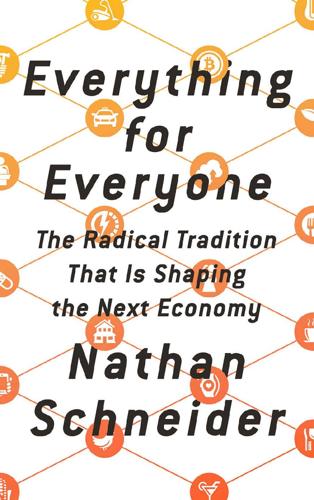
Everything for Everyone: The Radical Tradition That Is Shaping the Next Economy
by
Nathan Schneider
Published 10 Sep 2018
The campaign needed 98,492 signatures to get the issue on the ballot; the secretary of state’s office deemed 109,134 valid in the end. Thanks to people like Kazadi, medical coverage for all was a choice before Colorado voters in November 2016. And it would take the form of a cooperative—one with an ambiguous relationship to government. ColoradoCare would opt the state out of the Affordable Care Act and provide comprehensive coverage for every resident. This would be paid for by a 3.33 percent income tax and a 6.67 percent payroll tax for employers—or up to 10 percent for the self-employed. These were steep hikes, but for most Coloradans it would mean paying less than they previously paid for insurance premiums.
…
Starting in 1929, he formed the first patient-owned cooperative hospital in Elk City, Oklahoma, an arrangement that the doctors of the American Medical Association set out to suppress as a threat to their guild’s authority, rendering the model illegal in states across the country. Something similar happened to the more recent CO-OPs, or “consumer operated and oriented plans,” that the Affordable Care Act enabled, which soon suffered crippling restrictions and a two-thirds cut in their promised loan budget from Congress while still in their startup phase.19 ColoradoCare threatened even more constituencies, and they stopped it before it began. Opposed by prominent Democrats and Republicans alike, and with a daunting reference to the tax hike at the start of the ballot text, the proposal won just over 20 percent of the vote.
…
Shadid, A Doctor for the People: The Autobiography of the Founder of America’s First Co-operative Hospital (Vanguard Press, 1939); Paul Starr, The Social Transformation of American Medicine: The Rise of a Sovereign Profession and the Making of a Vast Industry (Basic Books, 1984), 302–306; Sabrina Corlette, Kevin Lucia, Justin Giovannelli, and Sean Miskell, “The Affordable Care Act CO-OP Program: Facing Both Barriers and Opportunities for More Competitive Health Insurance Markets,” To the Point, published by the Commonwealth Fund (March 12, 2015). 20. Financing: Camile Kerr, Local Government Support for Cooperatives (Democracy at Work Institute, 2015); Peter Molk, “The Puzzling Lack of Cooperatives,” Tulane Law Review 88 (2014); Laura Hanson Schlachter, “MCDC Milestone Reflections: City of Madison Grant Writing Process” (University of Wisconsin–Madison Center for Cooperatives, August 2016); USDA Rural Development, Income Tax Treatment of Cooperatives (US Department of Agriculture, June 2013).
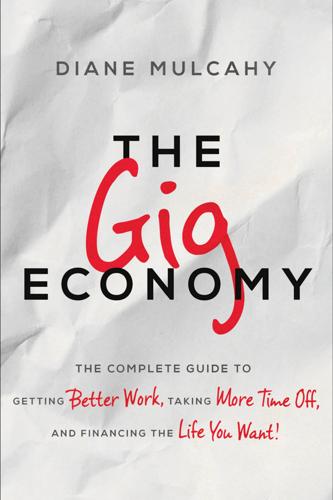
The Gig Economy: The Complete Guide to Getting Better Work, Taking More Time Off, and Financing the Life You Want
by
Diane Mulcahy
Published 8 Nov 2016
Health insurance and retirement savings accounts are easy to access as an independent worker, and it’s possible, but much more expensive, to purchase other common benefits in the private market. Many of these benefits vary by state, so you should assess your options by researching your own state’s policies and offerings and working with a financial professional or attorney. Healthcare: Accessing health insurance is one of the most important benefits to workers. The Affordable Care Act allows individuals to buy health and dental insurance through state health exchanges. The plans available and the premium prices vary by state. Subsidies to purchase health insurance coverage or the option to enroll in Medicaid are available if you qualify based on your income. Retirement saving plans: This is covered in greater detail in chapter 10, but individuals can save for retirement by setting up and making contributions to retirement savings accounts.
…
In Kitces’s words, “After all, what’s the difference between an employer paying $50,000/year, plus $500/month for health insurance and a 3 percent contribution ($1,500) to a retirement plan, versus simply paying the employee $57,500 in salary and letting the employee make the decisions?”10 This proposal is administratively simple but relies on either private or government-assisted marketplaces (like the health exchanges under the Affordable Care Act) to provide individuals a way to select and purchase affordable benefits. Most other proposals are more administratively complex and involve an intermediary to manage the purchase of benefits. David Rolf and Nick Hanauer propose the proration, portability, and universality of benefits. With proration, the accrual of benefits is based on hours worked.
…
INDEX The index that appeared in the print version of this title was intentionally removed from the eBook. Please use the search function on your eReading device for terms of interest. For your reference, the terms that appear in the print index are listed below Accenture access, vs. ownership accountant Affordable Care Act age-related difference in time perception “Airbnb lifestyle” alternative work, see Gig Economy American Dream American Express anchoring antitrust laws, contractors and appreciation of home values ask in connecting for introductions and referrals automatic savings Baby Boomers bad jobs balance, time off to regain bartering benefits package best-case scenario, planning for blind spot bookkeeper boring life, risk of branding, personal Brooks, David Bryson, Bill Bureau of Labor Statistics (BLS) Time Use Survey Cain, Susan, Quiet: The Power of Introverts in a World that Can’t Stop Talking calendar diagnostic exercise Maker vs.
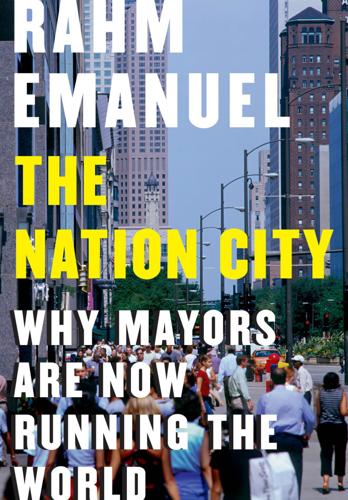
The Nation City: Why Mayors Are Now Running the World
by
Rahm Emanuel
Published 25 Feb 2020
* * * In 1932 the Supreme Court Justice Louis Brandeis wrote: “It is one of the happy incidents of the federal system that a single courageous state may, if its citizens choose, serve as a laboratory; and try novel social and economic experiments without risk to the rest of the country.” Justice Brandeis was, of course, exactly correct about what was going on back then. A good portion of the New Deal was cooked up in the labs of some states. Later on, the Great Society and the Affordable Care Act would be, too. These great ideas all flowed up into the national government. Things have changed, however. Cities, not states, are now the laboratories. But, alas, those ideas no longer flow vertically (though hopefully one day the best of them will). The ideas and innovations instead are spreading horizontally from city to city, not just in the U.S. but all over the world.
…
According to a Pew Research Center study, almost half of Americans believed the TARP bill was Obama’s and not Bush’s—of course. The auto industry bailout was perceived in the same manner. The middle class believed it was a get-out-of-jail-free card intended solely for the executives who created the crisis in the first place. And then came the Affordable Care Act. Again, this was a great piece of social policy. We had to provide health-care coverage for the 40 million formerly uninsured people in our country. The program at one level was an expansion of Medicaid for the working poor, but our political opposition painted it as health care for “others” while you struggled to pay your own bills.
…
* * * There was a time in our nation’s—and the world’s—history when ideas moved more vertically. The bones of the New Deal—from worker’s compensation to the workweek to the minimum wage—were all fleshed out in states like New York and Wisconsin. More recently, the health-care plan that Mitt Romney devised while he was governor of Massachusetts turned out to be a road map for the Affordable Care Act. The best ideas rose to the top and were spread around from there. The best ideas today, however, usually hit a ceiling on the way up and never reach the top. Ideas are now shared under that ceiling. There is no national plan. It’s all left up to mayors and their cities and the various entities that inhabit those cities: the universities, nonprofits, foundations, private sector, and citizens.
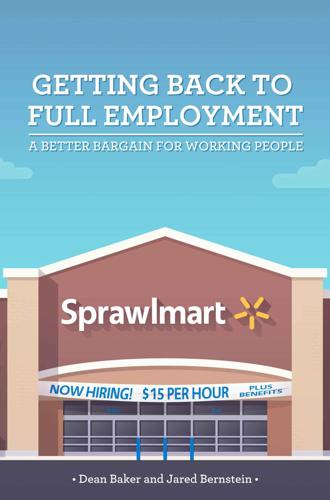
Getting Back to Full Employment: A Better Bargain for Working People
by
Dean Baker
and
Jared Bernstein
Published 14 Nov 2013
Out-of-control health care spending is a burden on the economy whether or not the government is picking up the tab. In other words, the long-term projection of spiraling spending is a health care cost problem, not a budget problem. If the recent slowdown in cost growth continues, and the cost control measures in the Affordable Care Act prove effective, then our longer-term budget problems are likely to be manageable. If health care costs again start to grow rapidly, then we will have to revisit the issue and figure out a more effective way to control costs. The second point about long-term projections is that they are long-term projections, and as such they must be kept in perspective.
…
In these situations, the expense of an insurance policy is independent of the number of hours worked, and so an employer might naturally prefer to work its existing workforce more hours, often paying an overtime premium, rather than hire additional workers and have to buy additional health insurance policies. The result is a reluctance to reduce the standard workweek or work year. But the health care cost environment is changing rapidly, and, with the implementation of the Affordable Care Act (ACA), more changes are coming. Many employers now prorate the cost of a policy so that workers who work less than full time get only a portion of the cost of their policy covered. Family coverage is becoming rarer, as is employer-provided coverage more generally. However, even if the importance of employer-provided insurance is reduced as a force for pushing employers and workers to take productivity gains as income rather leisure, its influence will not go away overnight.
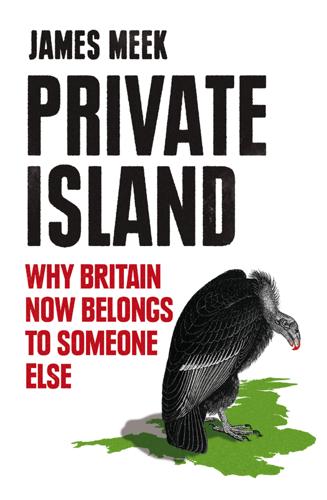
Private Island: Why Britain Now Belongs to Someone Else
by
James Meek
Published 18 Aug 2014
The two foreign systems with which it is most often compared, the American and the French, are more expensive, are coming to be seen as unaffordable in their own countries and contain elements that it would be hard for Britons to accept. Kaiser works well and is cheaper than traditional American healthcare. But it reflects the US model. Although that model is being changed by the introduction of President Obama’s Affordable Care Act, it remains idiosyncratic. Most people over sixty-five are eligible for Medicare, a kind of gold-plated American NHS for the elderly, but otherwise, if you have no insurance, you have no guaranteed access to medical facilities, including Kaiser’s. If you fall seriously ill in the US, aren’t insured and aren’t rich, you have two main options: to go to a hospital’s accident and emergency unit, where they’re obliged to treat you, or to try to get Medicaid, a government programme to help the poor and disadvantaged run on a state by state basis.
…
But the hospital will charge the full rate for treating you, which it will then try to recover against any assets you have, while Medicaid is means-tested. In other words, being uninsured and having a serious car accident in the United States is hard to make compatible with owning a house. The Affordable Care Act (ACA) is a giant step towards equality of opportunity in America, though it falls short of a revolution. The new law proposes that all fifty states accept a more generous means test for households trying to enrol in Medicaid. The threshold depends on household size; in most states, a family of four could be earning up to $32,500 a year and still qualify.
…
Among the common ailments were neurological conditions like multiple sclerosis, which left households $34,000 out of pocket on average, diabetes ($26,000) and stroke ($23,000). In his paper ‘Sick and (Still) Broke’, the lawyer Ryan Sugden points out that while the ACA puts a helpful cap on copayments, it doesn’t eliminate them, and does little to help people who have to quit work through their or a child’s illness. ‘While the Affordable Care Act will reduce the overall number of bankruptcies, and arguably eliminate the most morally objectionable causes of medical bankruptcy, in a system based on market principles there will – and must – be consumers whose own bad choices spell financial trouble,’ he writes. ‘For society to “win” and receive the benefits of a consumer-driven system, there must be some who “lose”.’
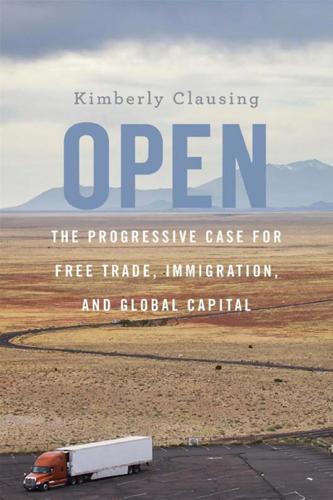
Open: The Progressive Case for Free Trade, Immigration, and Global Capital
by
Kimberly Clausing
Published 4 Mar 2019
The dramatically lower costs of community college make higher education more affordable; the average cost of a year of community college was $3,350 in 2014–2015. Finally, workers need more security. Progress has been made in giving all Americans access to affordable health insurance—which should not depend on employment, as it often did in years past—but we still have a long way to go. The Affordable Care Act (ACA) was a huge step in the right direction, but we should work to improve rather than weaken it. When Congress recently repealed the individual mandate requiring Americans to purchase health insurance, it weakened the entire structure of the ACA.5 Economic insecurity is also tied to consumer indebtedness.
…
Insurance premiums are likely to rise for others, since healthy individuals are more likely to opt out of buying insurance. The repeal was enacted as part of tax legislation, known as the Tax Cuts and Jobs Act (TCJA), to save $314 billion (over ten years) that would otherwise have gone to subsidize the premiums of people legally required by the Affordable Care Act (ACA) to have insurance but unable to afford it. This weakens the entire structure of the ACA. See Congressional Budget Office, Repealing the Individual Health Insurance Mandate: An Updated Estimate, November 8, 2017. 6. The 2008 financial crisis was caused in part by insufficient financial regulation, leading to hazardous lending practices and large systemic risks that endangered the economy.
…
Finally, I thank my parents, Arthur and Willa Clausing, for being truly wonderful and inspirational people. I deeply appreciate their unflagging support and their thorough reading of early drafts. And I thank my children, Ursula and Holden. You are the lights of my life. Index Acemoglu, Daron, 64, 189–190 Affordable Care Act, 231 Alibaba, 148 Alphabet. See Google American Airlines, 283 American dream, 4, 178, 304n1 Antidumping, 315n2 Antitrust laws, 153–154, 162–164, 283–286; and European Union, 153–154 Apple, 61–62, 145, 147, 167–168 AT&T, 284, 286 Autor, David, 77 Bargaining, 42–44 Bartlett, Bruce, 334n2 Base Erosion and Profit Shifting (BEPS), 159, 226–227, 279 Bell Laboratories, 284 Bernanke, Ben, 151 Bilateral trade balances, 135 Birnbaum, Jeffrey, 332n20 Boeing, 60–61, 144, 153 Borjas, George, 194 Bracero Program, 193, 196 Brain drain, 206–207 Brexit, 160, 298 British Columbia carbon tax, 275 Budget deficits, 241–242 Buffett, Warren, 246, 249 Burman, Leonard, 247 Bush Administration, 274 Business tax reform, 168–174, 250–252, 275–278 CAFE standards, 255–256 Campaign finance reform, 292 Canada: free trade area, 96; immigration policy, 185–188 Capital markets, 120 Capital taxation: rationale for, 250; tax rates, 248; trends, 46 Carbon tax, 162, 254–257; in British Columbia, 275 Card, David, 194 Center for Automotive Research, 84 CEO pay, 43–44, 152 Chetty, Raj, equality of opportunity project, 303n1 Child labor, 162 China: accession to WTO, 102; currency value, 127; economic growth, 63–68; infrastructure spending, 237; One Belt, One Road initiative, 100, 237, 298; relations with United States, 104; trade surplus, 12, 123, 144 China shock: and 2016 election, 76–79; size of, 76–78 Clemens, Michael, 191, 194, 196–197 Clinton, Hillary, 78 Clinton Administration, 78, 103, 274 Columbia Sportswear, 272 Comcast, 285 Community adjustment, 232 Community college, 230–231, 235 Comparative advantage, 68–72 Competitiveness, 68–72, 164, 166–168, 269 Comprehensive Economic and Trade Agreement (CETA) between EU and Canada, 161 Consumer Financial Protection Bureau (CFPB), 230–231 Corporate inversions, 165–166 Corporate profits, 39–42, 90–91, 168 Corporate savings, 40–41, 151 Corporate social responsibility, 277–278 Corporate tax rates, 155–156 Costco, 281 Country by country reporting, 278–279 Creative destruction, 73 Currency Movements, 124–127, 133 Current account deficit.
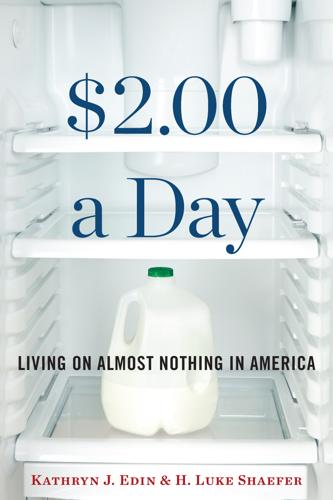
$2.00 A Day: Living on Almost Nothing in America
by
Kathryn Edin
and
H. Luke Shaefer
Published 31 Aug 2015
Thanks in part to changes made by the George W. Bush administration, more poor individuals claim SNAP than ever before. The State Children’s Health Insurance Program (now called CHIP, minus the “State”) was created in 1997 to expand the availability of public health insurance to millions of lower-income children. More recently, the Affordable Care Act has made health care coverage even more accessible to lower-income adults with and without children. Perhaps most important, a system of tax credits aimed at the working poor, especially those with dependent children, has grown considerably. The most important of these is the Earned Income Tax Credit (EITC).
…
Qualifying for disability ensured him access to public health insurance via Medicaid. But when Sarah was diagnosed with cancer in 2011, she had to undergo a year of treatment before she managed to get Medicare (a problem she wouldn’t face now, following the expansion of Medicaid in Ohio after passage of the Affordable Care Act). The medical bills accumulated. Paul keeps these bills stacked alongside his computer on his desk. They are nearly a foot high. Little did Paul know that their trials were just beginning. In the spring of 2013, one son-in-law landed in jail. His pregnant wife (Paul and Sarah’s daughter) and their kids moved in with them.
…
. [>] erode political participation: Suzanne Mettler, The Submerged State: How Invisible Government Policies Undermine American Democracy (Chicago: University of Chicago Press, 2011); Joe Soss, “Lessons of Welfare: Policy Design, Political Learning, and Political Action,” American Political Science Review 93, no. 2 (1999): 363–80. Index adverse childhood experiences (ACEs), 78–80, 87–90, 89–90 AFDC. See Aid to Families with Dependent Children (AFDC) Affordable Care Act, 8, 121 after-school programs, 36, 70, 154, 161 agriculture, xxii, 129–30, 133 Aid to Dependent Children (ADC), 11 Aid to Families with Dependent Children (AFDC), xv cash cushion provided by, xix Clinton reforms to, 21–22 Ellwood on, 19–20 ended, 27–28 growth of, 13–14 in the Mississippi Delta, 132 racial stereotypes about, 15–16 rise of poverty without, 158 Appalachia, xx, xxi–xxiii.
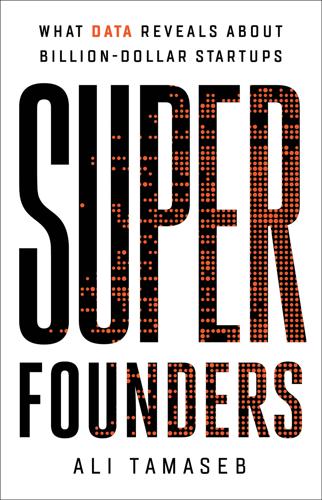
Super Founders: What Data Reveals About Billion-Dollar Startups
by
Ali Tamaseb
Published 14 Sep 2021
Another company that had timing on its side is Oscar Health, a health insurance company founded in 2012. The company uses data and technology to simplify insurance, helping members navigate their healthcare and associated costs. Around the time Oscar Health started, President Barack Obama and Congress enacted the Affordable Care Act (ACA), which mandated that all Americans obtain health insurance. It opened up the market for tens of millions of individuals who had not been previously insured. Even then, Oscar faced an uphill battle. American health insurance is a highly competitive market, with United Healthcare claiming close to fifty million members, followed by Anthem, Aetna, Cigna, and Humana.4 Each of these insurance companies had larger networks of doctors, greater brand recognition, and long-standing relationships with healthcare provider systems.
…
At the same time, Josh had a similar epiphany, and we decided we should start a health insurance company. If I can save you money as a health insurer, you would probably like the fact that I saved you money, and the health insurer would like it too because it would help their bottom line. Three months after the initial conversation, we realized that the Affordable Care Act was getting reaffirmed by the Supreme Court and, for the first time, there was going to be an individual market for health insurance that didn’t exist in this form before. It was regulatory disruption, and that was important for starting the company. I sometimes like to say that Oscar might be the only Silicon Valley–like company that got created by more regulation rather than less regulation.
…
• Billion-dollar companies were disproportionately built in markets that were already large, but those that created new markets were no less likely to succeed. Contrary to popular belief, market-creation startups didn’t result in larger companies. • It’s not about being first with an idea—it’s about being the closest to the turning point. Think about how the Affordable Care Act enabled the growth of Oscar Health. Many recycled ideas end up becoming billion-dollar ones. • Competition is good, or at least not an extinction risk; over half of billion-dollar startups competed with large incumbents at the time of founding. It’s good to compete with incumbents or compete in fragmented markets; they are easier to beat than a highly funded startup with the same idea.
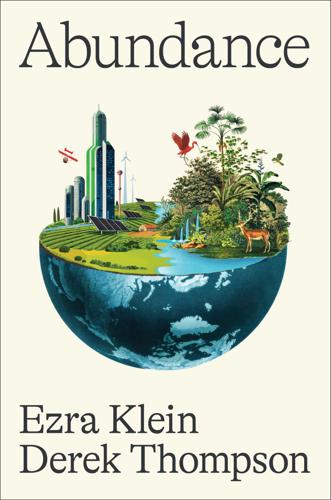
Abundance
by
Ezra Klein
and
Derek Thompson
Published 18 Mar 2025
In 1996, the next Democratic president, Bill Clinton, announced that “the era of big government is over.”3 The notion that the US government cannot solve America’s problems was not unilaterally produced by Reagan and the GOP. It was coproduced by both parties and reinforced by their leaders. Progressivism’s promises and policies, for decades, were built around giving people money, or money-like vouchers, to go out and buy something that the market was producing but that the poor could not afford. The Affordable Care Act subsidizes insurance that people can use to pay for health care. Food stamps give people money for food. Housing vouchers give them money for rent. Pell Grants give them money for college. Tax credits for child care give people money to buy child care. Social Security gives them money for retirement.
…
AARP, 82 Abbonizio Contractors, 125, 126 abundance, 1–20, 203–22; see also deployment and implementation; economic theory; energy; housing; invention; liberalism; political issues defined, 19–20 economy-as-pie metaphor, 11–15 energy superabundance, 67 as lens vs. list, 215–17 liberalism and potential for, 1–4, 16–19, 211–15 political order concept and, 203–7, 220–21 potential for, 1–4, 211–15, 222 scarcity vs., 4–5, 207–11, 217–22 supply-side economics as mistake, 5–11 values and, 15, 49, 83, 205, 207–11, 216 academic and scientific research funding, see invention Administrative Procedure Act (1946), 91 advance market commitment (AMC) policy, 192–95 adversarial legalism, 91–94 The Affluent Society (Galbraith), 49 Affordable Care Act (2010), 7 agriculture, energy used for, 59–61 air pollution, 50, 63–64, 88–89, 96 Alaska, construction productivity in, 80 Aldern, Clayton Page, 39–41 Alphabet, 26, 27, 29–30, 142, 196 Alstom, 118 Altman, Sam, 198 Amazon, 29–30, 196 American Medical Association, 175 American Orthopaedic Association, 190 The American Prospect publication, 106 American Recovery and Reinvestment Act (2009), 72–73, 116–17 American Rescue Plan Act (2021), 10 American Society of Planning Officials, 42 Americans with Disabilities Act (1990), 104 Anbinder, Jacob, 37, 47, 49, 53–55 Anthropic, 28 Apollo space program, 145, 188, 189, 199, 200–201 Apple, 26, 27, 183 Arcadis, 118 “Are Ideas Getting Harder to Find?”
…
H., 161–63 Fully Automated Luxury Communism (Bastani), 13–14 “Futurama II” exhibit (General Motors), 218 Galbraith, John Kenneth, 49 Gallup survey (1965), 200 Galperin, Ron, 109 Ganong, Peter, 32 Garcetti, Eric, 108 General Motors, 218 genetics CRISPR, 158–59 Genome Biology journal, satirical article, 148 Mendel and, 144 mRNA research, 130–32, 135, 137–40, 146, 156, 161, 184 Georgia, construction productivity in, 80 geothermal energy, 65 Germany carbon emissions per person, 66 housing supply in, 23 post–World War II economy, West Germany, 81 rail system cost of, 77 solar technology of, 179, 181 Gerrard, Michael, 113 Gerstle, Gary, 203–4, 207, 220–21 Gertner, Jon, 164–65 “Getting Infrastructure Built: The Law and Economics of Permitting” (Liscow), 97–98 Gilliam, Harold, 56 Glaeser, Ed, 24, 25, 27, 30, 84–85 GLP-1 drugs, 157–58 Golden Fleece Award, 153 Goldman Sachs, 27 Google, 28, 142 Goolsbee, Austan, 78–80 government and public opinion, 14–15, 89–94, 182–83; see also political issues Grant, Ulysses S., 21 grant writing, see invention Great Depression, see New Deal The Great Gatsby (Fitzgerald), 217 Great Recession American Recovery and Reinvestment Act (2009), 72–74 housing market and, 23 political order concept and, 206 Greeley, Horace, 21, 22–23 green infrastructure, 94–99, 109–10; see also energy “The Greens’ Dilemma” (Ruhl and Salzman), 69–70, 95–97 Griffith, Saul, 68 growth, see housing Hansen, Alvin, 22 Harris, Kamala, 18, 61, 93, 212, 213 Harris & Associates, 118 Harvard University, 156–57, 163 Hawaii, homelessness in, 40 Hayes, Denis, 51 H-1B visa, 146; see also immigration policy health care; see also COVID pandemic abundance potential for, 1–4 Affordable Care Act (2010), 7 big government–small government divide on, 105–6 NIH funding for research (see National Institutes of Health) penicillin discovery, 169–71, 174–75, 176, 180, 183–85, 202 politics of invention and, 134–36 scarcity of primary-care physicians, 190–91 supply-side economics and insurance cost, 8–9 Heisenberg, Werner, 147 Hewlett-Packard, 163 Hickel, Jason, 58, 60, 61 higher education cost, 9 High-Risk, High-Reward Research program (NIH), 159, 160 High-Speed Rail Authority (California), 74–76, 94, 118 highways; see also transportation Federal-Aid Highway Act (1968, 1973), 51 Federal Highway Administration, 125 Highway Safety Act (1966), 86 Interstate Highway System, 46–47, 50, 51, 54–56, 96, 97, 204 HIV research, 137–39, 148 HNTB, 118 Homelessness Is a Housing Problem (Colburn and Aldern), 39–41 housing, 21–56 abundance potential for, 1–4, 212–13, 215–16 big government–small government divide on, 105–12 building codes and, 42–43 cities and innovation, 25–30 cities as American frontier, 21–25 construction productivity measure, 79 elevators in, 173 environmentalism and effect on, 48–54 financing of, private vs. public, 101–4, 106 homelessness as scarcity problem of, 38–43 immigration policy and, 208 income inequality and, 23–25, 30–32 price rise of 1970s to present, 23, 43–47 social (public) housing availability, 111–12 supply-side economics and price rise of, 8 thirty-year fixed-rate mortgage, 44–45 transportation infrastructure and, 35–38, 48–56 Yes In My Back Yard (or YIMBY), 212 zoning rules and, 33–38, 44–47, 106–7, 208 Housing Accelerator Fund, 102 Houston, housing and zoning in, 106–7 Howard Hughes Medical Institute (HHMI), 167 Howell, William, 17 How Solar Energy Became Cheap (Nemet), 178–80 Huffman, Jim, 36 Human Genome Project, 148, 158 Hygienic Laboratory, 151 IBM, 120–21, 163 I-95 bridge repair (Pennsylvania), 125–28 Idaho, construction productivity in, 80 idea factories, 160–66; see also invention The Idea Factory (Gertner), 164–65 Illinois, presidential election (2024) and, 18 immigration policy border wall and, 98 housing and, 208 immigrants as others, 208 invention and skilled workers, 115, 116, 145–46, 166 Immunity journal, 138 Imperial College London, 133 implementation, see deployment and implementation income inequality energy inequality and, 63–64 housing and, 23–25, 30–32 India, air pollution in, 63–64 individualism, 205–6 inflation housing cost since 1970s, 43–45 supply-side economics and, 9–10 Inflation Reduction Act (2022), 11, 71, 77, 181–82, 211 infrastructure; see also transportation Biden on, 210–11, 213 energy and infrastructure need, 68–71 housing and, 48–56 Trump on, 210 Infrastructure and Investment Jobs Act (2021), 71 Institute for Progress, 145, 187 Intel, 26, 180 Internal Revenue Service (IRS), 122 internet, DARPA and, 161, 162 Interstate Highway System, 46–47, 50, 51, 54–56, 96, 97, 204 invention, 129–68 burden of knowledge and, 143–44 eureka myth and, 171–75, 177, 180, 182, 202 (see also deployment and implementation) idea factories of, 160–66 immigration policy and, 115, 145–46, 166 innovating scientific research for, 166–68 Karikó Problem and pace of scientific progress, 141–49, 156 Karikó’s research and NIH lack of funding, 129–33, 137–41, 146, 155, 168 NIH bureaucracy and effect on, 152–59 NIH incentives for, 159–60 NIH inception and, 149–52 politics of, 133–37 World’s Fair (1964), 217–19 iPhone (Apple), 26, 183 Israel, water desalination by, 67, 198 Italy, housing supply in, 23 Japan carbon emissions per person, 66 high-speed rail system of, 72 housing supply in, 23 post–World War II economy, 81, 82 rail system cost of, 77 Jefferson, Thomas, 62 Jenkins, Jesse, 69 Johnson, Lyndon B., 48, 86, 218–19 Jones, Benjamin, 143, 145 JPMorgan Chase, 27, 29–30 Kagan, Robert, 91–92 Kalil, Thomas, 195 Karikó, Katalin, 129–33, 137–41, 146, 155, 168 Karikó Problem, 141–49, 156 Kelly, Brian, 76, 118 Kelly, Mark, 116 Kennedy, John F., 201 Kennedy, Robert F., Jr., 188 Keynes, John Maynard, 183 Klein, Ezra, 75 Kuttner, Bob, 106, 111 labor productivity measure, 78 labor unions, 82, 126, 127 Labosky, Patricia, 159–60 Laffer, Arthur, 6 Lakewood, California, housing and, 36 land agriculture and energy use, 59–61 land use for sustainable energy, 70 lot size and housing, 45, 47 Latvia, productivity measure, 79 Lawrence Berkeley National Laboratory, 70 Lawrence Livermore National Laboratory, 66–67 Legislative Analyst’s Office (California), 38 Lehrer, Jim, 89 Leonardo da Vinci, 131 Less Is More: How Degrowth Will Save the World (Hickel), 58, 60, 61 liberalism, 101–28 abundance as potential for, 1–4, 16–19, 211–15 (see also abundance) big government–small government divide and, 105–12, 205 “everything-bagel liberalism,” 113–17 litigation and bureaucracy problem, 89–94, 205 (see also bureaucracy) neoliberalism as political order, 204 New Deal and effect on, 49 outsourced work by government agencies, 117–24 private vs. public financing and, 101–4, 106 as procedural vs. outcome-based, 89–94, 112, 125–28 regulatory processes vs. efficient choices of government, 125–28 on social welfare system, 70–71 Licklider, J.
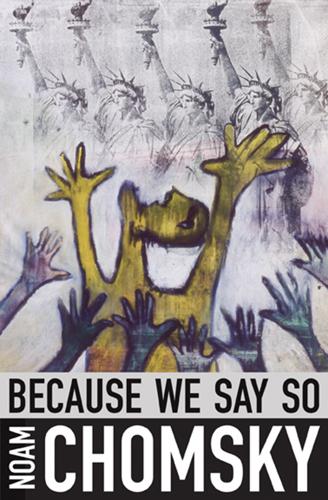
Because We Say So
by
Noam Chomsky
The Republican establishment and its business sponsors had expected to use them as a battering ram in the neoliberal assault against the population—to privatize, to deregulate and to limit government, while retaining those parts that serve wealth and power, like the military. The Republican establishment has had some success, but now finds that it can no longer control its base, much to its dismay. The impact on American society thus becomes even more severe. A case in point: the virulent reaction against the Affordable Care Act and the near-shutdown of the government. The Chinese commentator’s observation is not entirely novel. In 1999, political analyst Samuel P. Huntington warned that for much of the world, the United States is “becoming the rogue superpower,” seen as “the single greatest external threat to their societies.”
…
The glacier is now melting and revealing “thousands of empty artillery shells, empty fuel drums, ice axes, old boots, tents and every other kind of waste that thousands of warring human beings generate” in meaningless conflict. And as the glaciers melt, India and Pakistan face indescribable disaster. Sad species. Poor Owl. Index Abrams, Elliott, 87 Abu Muamar, Mustafa, 27 Abu Muamar, Osama, 27 Acheson, Dean, 138 Adamsky, Dmitry, 164 Affordable Care Act, 136 Afghanistan, 33, 84, 116, 154, 160, 178 Africa, 26, 86, 155, 176, 180 African National Congress, 32 African Union (A.U.), 25–26, 179–180 AFRICOM, 25 Ageel, Ghada, 101 Ahmed, Akbar, 160 al-Khawaja, Abdulhadi, 48 Allende, Salvador, 111 al-Libi, Abu Anas, 137 Allison, Graham, 55–57 Al-Muslimi, Farea, 105, 106 Alperovitz, Gar, 93 al-Qaida, 178 American Enterprise Institute, 135 American Legislative Exchange Council (ALEC), 95 American Newspaper Publishers Association, 29 Anaya, James, 47 Anglosphere, 100 Angola, 156 Arab League, 26 Araboushim, 74 Arafat, Yasser, 125 Aristotle, 150 Asia, 171, 176, 191 Assad, Bashar, 190 Assange, Julian, 61 Atwan, Abdel Bari, 178 Australia, 100, 118 Austria, 122 Baghdad, 189 Bagram, 32 Bahrain Center for Human Rights, 48 Baker, Peter, 169 Barsamian, David, 89 Baskin, Gershon, 79 Basque region of Spain, 93, 147 Batniji, Rajaie, 74 Becker, Jo, 52 Bedouin, 27 Belgian Congo, 180 Belloc, Hilaire, 165 Ben-Gurion, David, 100 Benn, Aluf, 79 Besikci, Ismail, 49 Bill of Rights, 31 bin Laden, Osama, 105, 106 Birol, Fatih, 23 Blackstone, William, 51 Blair, Tony, 189 Bolender, Keith, 56 Bolivia, 54, 123 Boron, Atilio, 121 Bosch, Orlando, 124 Bosnian enclave of Srebrenica, 46 Boston, 105, 107, 109 Brandeis, Louis, 62 Branfman, Fred, 107 Brazil, 25, 42, 140, 153 BRICS countries, 25 Britain, 25, 36–37, 116, 174 Brookings Institution, 160 Brooks, David, 131, 132 Brzezinski, Zbigniew, 143 Burchinal, David, 55 Bush, George H.
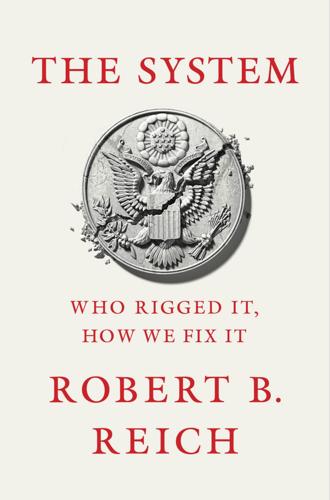
The System: Who Rigged It, How We Fix It
by
Robert B. Reich
Published 24 Mar 2020
However much the oligarchy may want Americans to believe that racism was responsible for Trump, in fact it was anti-establishment fury. * * * — Democrats had occupied the White House for sixteen of the twenty-four years before Trump’s election, and in that time they scored some important victories for working families—the Affordable Care Act, an expanded Earned Income Tax Credit, and the Family and Medical Leave Act, for example. I take pride in being part of a Democratic administration during that time. But Democrats did nothing to change the vicious cycle of wealth and power that had rigged the economy for the benefit of those at the top and undermined the working class.
…
In November of that year, Richard Nixon was elected president. I recall thinking America would never recover. Somehow, though, we bounced back. In subsequent years we enacted the Environmental Protection Act. We achieved marriage equality for gays and lesbians. We elected a black man to be president of the United States. We passed the Affordable Care Act. Even now, it’s not as bleak as it sometimes seems. In 2018, a record number of women, people of color, and LGBTQ were elected to Congress, including the first Muslim women. Eighteen states raised their minimum wages. Surprising things are happening even in traditionally conservative states.
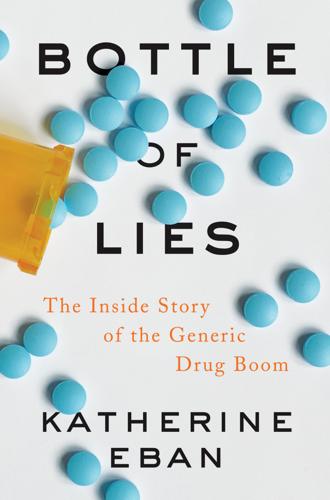
Bottle of Lies: The Inside Story of the Generic Drug Boom
by
Katherine Eban
Published 13 May 2019
Graedon had forwarded the patients’ complaints to top officials at the Food and Drug Administration (FDA), but they insisted that generics were equivalent to the brand and the patients’ reactions were subjective. Their response struck Graedon as more defensive than scientific. Generic drugs had become essential to balancing budgets across America. Without them, every large-scale government health program—the Affordable Care Act, Medicare Part D, the Veterans Health Administration, charitable programs for Africa and the developing world—would be unaffordable. Graedon himself had long advocated making generic drugs more widely available. But the complaints were compelling and similar in nature. He felt that something significant was wrong with the drugs, but didn’t know what.
…
Attorney’s Office] to make a decision about something instead of using their canned response that they’re still waiting for something from FDA. (Oh, am I sounding a little bitter?)” As the two sides bickered, and Ranbaxy’s lawyers pleaded for a resolution, President Barack Obama signed the Affordable Care Act (ACA) into law that March. It made generic drugs essential to the 20 million Americans who would now have their access to pharmaceutical treatment covered under the law. While the ACA did not enter the tortured deliberations by name, it underscored the importance of fixing the generic drug supply.
…
Abbott Laboratories, 297, 345 Abbreviated New Drug Application (ANDA), 17–18, 22, 415 “first-to-file” incentive, 22–25, 274 Ranbaxy’s atorvastatin (ANDA 76–477), 17–21, 23–24, 26–27, 115, 273–87 Ranbaxy’s version of Provigil, 24–25 Acadia National Park, 13 Accum, Frederick, 47 Accutane, 27–30, 112, 153, 415. See also Sotret Active pharmaceutical ingredient (API), 97, 109, 166, 284, 415 Adulterated food, 47–48, 233–34 Affordable Care Act of 2010, 250 Africa, and AIDS drugs, 81–91 Big Pharma and pricing, 86–90, 93 Bush and PEPFAR, 88–90, 92, 124, 129, 130, 138, 418 Clinton and Clinton Foundation, 36–39, 83, 86, 89, 121–22 Gavini’s inspection of plants, 134–35 Hamied and Cipla, 81–90 McNeil’s New York Times story, 85–87 racism and, 340 Ranbaxy and, 36–37, 38–39, 90, 92, 122, 123–25, 129–30, 134–35, 138, 340 ARV study, 63–65 Africa, pharmaceutical problems in, 337–53 Baker’s India inspections, 339–41 dual-track manufacturing, 340, 343–51 Graham and LaGray, 345–47 “Lazarus Effect,” 344 Lukulay and CePAT, 351–53 Mulago Hospital and Westerberg, 337–39, 341–42 Runnels and, 343–44 Agila Specialties, 321–22, 323, 324–25 Agrawal, Atul, xxii, 294–96, 360–62, 364–68, 373–74 AgVar Chemicals, 77–78, 121–22 AIDS drugs, 81–91.

Frugal Innovation: How to Do Better With Less
by
Jaideep Prabhu Navi Radjou
Published 15 Feb 2015
CASE STUDY 7 Aetna’s frugal health-care strategy In March 2010, President Barack Obama signed into law the Patient Protection and Affordable Care Act (PPACA). His goal was to rein in rocketing US health-care costs, which were expected to reach $4.6 trillion, or 20% of US GDP, by 2020. The president wanted to give “hard-working, middle-class families the health-care security they deserve” and bring affordable medical insurance to 50 million uninsured American citizens.34 Mark Bertolini, chairman and CEO of Aetna, one of the US’s largest and oldest health insurers, is unconvinced. He believes that the Affordable Care Act, which could cost $1.3 trillion to implement, is putting the cart before the horse.
…
, Diateino, 2013. 11De Maistre, C., president, south-west Europe and France, Siemens, interview with Navi Radjou, January 17th 2013. 12COO Insights, Roland Berger Strategy Consultants, March 2014. 13Meier-Comte, E., senior consultant, Siemens Corporate Technology, interview with Navi Radjou, July 25th 2014. 14Vats, T., head of PepsiCo’s Global Value Innovation Centre, interview with Navi Radjou, July 22nd 2014. 15Hosking, I., senior researcher, Engineering Design Centre, University of Cambridge, interview with Jaideep Prabhu, July 2014. 16“Nestlé’s approach to packaging design aims to make its products easier to enjoy”, www.nestle.com, January 20th 2012. 17Life-cycle assessment, Wikipedia.org. 18Stewart, E., head of sustainability solutions, Autodesk, interview with Navi Radjou, March 13th 2014. 19Radjou, Prabhu and Ahuja, op. cit. 20“Innovation for everyone”, video produced by the Renault-Nissan Alliance, YouTube, July 11th 2013. 21Ibid. 22Morris, R., vice-president, Global Labs, IBM Research, interview with Navi Radjou, October 16th 2013. 23Williamson, P.J. and Yin, E., “Accelerated Innovation: The New Challenge From China”, MIT Sloan Management Review, Summer 2014. 24Graeber, C., “Ten Days in Kenya With No Cash, Only a Phone”, BloombergBusinessweek, June 5th 2014. 25Olopade, D., The Bright Continent: Breaking Rules and Making Change in Modern Africa, Houghton Mifflin Harcourt, March 2014. 26Stewart, O., co-founder and chief scientist, IBM Research – Africa, e-mail exchange with Navi Radjou, August 2014. 27Coye, M., chief innovation officer, UCLA Health, interview with Navi Radjou, June 26th 2014. 28Immelt, J.R., Govindarajan, V. and Trimble, C., “How GE is disrupting itself”, Harvard Business Review, October 2009. 29Gunther, M., “Unilever’s CEO has a green thumb”, Fortune, May 23rd 2013. 30Cofino, J., “Unilever’s Paul Polman: challenging the corporate status quo”, Guardian, April 24th 2012. 31Ibid. 32Delabroy, O., head of R&D, and Olocco, G., head of i-Lab, Air Liquide, interviews with Navi Radjou, January 28th 2014. 33Radjou, Prabhu and Ahuja, op. cit. 34“Statement by the President on the Anniversary of the Affordable Care Act,” White House press release, March 23rd 2013. 35Bertolini, M., CEO, Aetna, interview with Navi Radjou, July 16th 2014. 36Berwick, D.M. and Hackbarth, A.D., “Eliminating Waste in US Health Care”, Journal of the American Medical Association, April 11th 2012. 37Latkovic, T., “Claiming the $1 trillion prize in US health care”, McKinsey & Company Insights & Publications, September 2013. 38Accountable care organisation, Wikipedia.org. 39Saunders, C., CEO, Healthagen, an Aetna company, interview with Navi Radjou, August 6th 2014. 40Palmer, M., chief innovation and digital officer, Aetna, and head of Aetna Innovation Labs, interview with Navi Radjou, August 1st 2014.
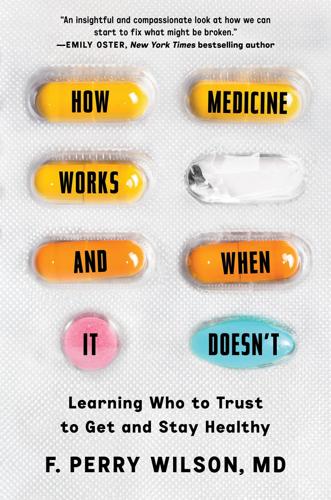
How Medicine Works and When It Doesn't: Learning Who to Trust to Get and Stay Healthy
by
F. Perry Wilson
Published 24 Jan 2023
We secured screening mammograms and colonoscopies from the specialists at Columbia, checked cholesterol levels, and, when referrals were necessary, navigated the maze of regulations that would allow our patients to get care for free or at a tremendously reduced cost. CoSMO was a beacon of hope in what was a dystopian nightmare of healthcare, particularly in the pre–Affordable Care Act era. But it was made possible only through charity, the generosity of literally hundreds of people volunteering time, talent, and treasure to the cause. How do you scale CoSMO to an entire country? How do you ensure that when a young man is having a seizure on the subway, he can get treatment before it happens again?
…
The Harvard Business Review looked at the rapid growth of healthcare administration positions and concluded that the only meaningful difference for patients that correlated with increased administrative roles was a reduction in thirty-day hospital readmission from 19 percent to 17.8 percent. HBR also noted that this reduction happened to occur just when the Affordable Care Act imposed penalties on hospitals based on readmission rates. Physicians on the ground spend a fair amount of time grumbling about the administrators who dictate an ever-larger portion of our lives. Physician burnout is driven largely by requirements and responsibilities external to patient care, from dealing with insurance companies to completing the endless series of mandatory training modules handed down from the companies we work for.
…
A 2010 article in the journal Health Affairs ran the numbers. If we broadly adopted twenty preventive health services (like alcohol abuse screening, and smoking cessation counseling), the United States would save $3.7 billion in annual healthcare costs, while saving two million life years in the process. The Affordable Care Act protects (currently) twenty-two preventive services, ensuring that they are provided without copay or deductible. But this works only if you have health insurance, of course. Many have advocated for a “public option,” a government healthcare plan (like Medicare) that could compete with private insurance or automatically enroll people who have not elected coverage elsewhere.
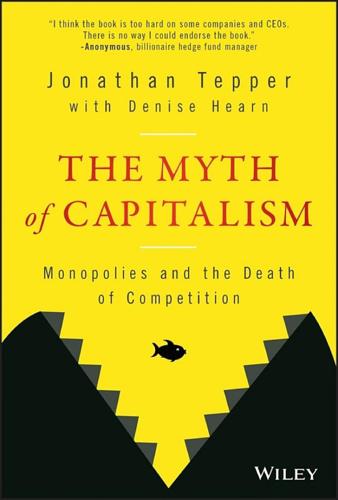
The Myth of Capitalism: Monopolies and the Death of Competition
by
Jonathan Tepper
Published 20 Nov 2018
One study has shown that prices are 15% higher in markets with one hospital as compared to markets with four or more hospitals, a cost differential of $2,000 per admission.19 Other studies place price increases even higher, at 20%.20 In California, the average price for hospital admissions increased 70% from 2004 to 2013, but the spike was even bigger for the most concentrated hospital chains, where the price for average admissions increased 113%.21 The evidence is devastating: concentration is bad, yet the Affordable Care Act has encouraged more and more mergers. It is the triumph of hope over experience. Cable. 46 million American households are served by only one fast-broadband provider who exercises market power to overcharge. According to The Economist, American consumers would gain $65 billion a year if they paid the same as Germans do for mobile-phone contracts.22 Airlines.
…
Insurers rarely step on each other's turf. The industry is extremely concentrated with no real competition. According to a 2014 study by the Government Accountability Office, the three largest insurers in any state had at least 80% of the total share in 37 states.66 Medical Care The Affordable Care Act (ACA) has unleashed a merger frenzy, but there have been merger waves before the ACA. Nearly one half of the country's hospital markets are now considered highly concentrated.67 There were 1,412 hospital mergers from 1998 to 2015. The number of hospitals is steadily falling due to the mergers from 6,100 hospitals in 1997 to 5,564 today, according to the American Hospital Association.68 Lots of mergers bring higher prices for everyone.
…
Index 3G Capital Partners, 3–4 2010 Full Employment Act for Lawyers, Accountants, and Consultants, 182 A AB InBev, beer market dominance, 188 Acs, Zoltan, 54 Active management, performance, 202 Advanced economies, markups (increase), 228f Advanced Micro Devices (AMD), market share, 121 AdWords (Google), 88 Affordable Care Act, impact, 43, 129 Agreement (Lilburne), 235 Agreement of the People of England, An, (Lilburne), 235 Agricultural giants, profitability, 44 Agriculture Big Four, control, 34 oligopolies, 133 AIG, bailout, 190 Airlines deregulation, 126, 198 mergers, 43, 127f oligopolies, 126 Alon, Titan, 52 Alvarez, Rosemary, 35–36 Amazon conflict of interest, 104–105 criticism, 103–104 lobbying efforts/expenses, 95–96 market power, abuse, 105 network effects, self-reinforcement, 103–104 piracy, accusation, 103 predation, example, 106 third-party sales, tracking, 104 American Tobacco Company, Supreme Court dissolution, 142–143 America Online, failure, 101 AmerisourceBergen, price-fixing allegations, 131 Anheuser-Busch (AB), InBev acquisition, 43–44, 123 Annual reports, word use (frequency), 12f Antimonopolies antitrust, contrast, 244 solutions/remedies, 242–245 Antitrust attitude, change, 146 enforcement, 145-146, 229 Reagan, impact, 161 regulation, change, 158 trials, acceleration, 244–245 Antitrust and the Formation of the Postwar World (Wells), 149 Antitrust, antimonopoly (contrast), 244 Antitrust enforcement budget, 160f income inequality, contrast, 225f Antitrust Paradox, 158 Antitrust Revolution (Reagan), 159 Apple apps, sale, 91–92 Google, duopoly, 123 lobbying efforts/expenses, 95–96 Arbitration, usage, 81 Archer Daniel Midland (ADM) market dominance, 133 spying, 22 “Are US Industries Becoming More Concentrated?”
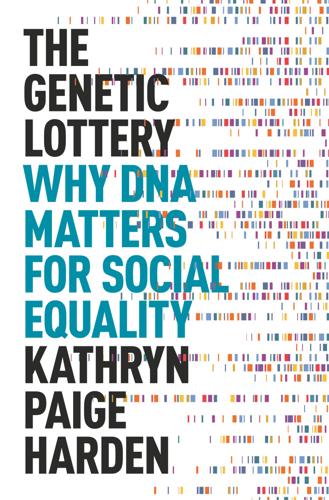
The Genetic Lottery: Why DNA Matters for Social Equality
by
Kathryn Paige Harden
Published 20 Sep 2021
First, its protections only apply to health insurance and employment, but not to other forms of insurance, like long-term care insurance, life insurance, or mortgage insurance, and not to educational contexts or housing or lending. A review of the impact of the legislation after ten years found that, although GINA may have “important symbolic value,” its actual practical value has been limited.20 The first part of the act, dealing with health insurance, is “largely irrelevant,” surpassed by the Affordable Care Act, which prohibits insurers using health status when making underwriting decisions, while the second part of the act, dealing with employment, is rarely invoked. Some of these limitations have been addressed at the level of individual US states. California, in particular, is notable for passing the California Genetic Information Nondiscrimination Act (CalGINA), which is broader in scope, prohibiting discrimination based on genetic information not just in health insurance and employment, but also in housing, education, mortgage lending, and public accommodations.
…
Within the framework of anti-discrimination law, GINA (and genome blindness generally) is an “anti-classification” approach, in that genetic information is, like race or religion, a “forbidden” characteristic that can’t be used as the basis for intentionally different treatment.21 Anti-classification approaches to discrimination law operate under a “sameness” model of civil rights: people who could be differentiated according to some characteristic (Black versus White, male versus female, Christian versus Jewish, carrier of APOE ε-4 allele vs. carrier of APOE ε-3 allele) must be formally treated the same.22 The legal scholar Mark Rothstein has pointed out that the genome-blind, anti-classification approach of GINA is severely challenged by the difficulty of cordoning off “genetic” information from the medical and behavioral information that genomic data can predict.23 Before the Affordable Care Act (ACA) provided protections to people with pre-existing conditions, insurers would not be able to discriminate against someone who, for example, had a BRCA mutation, but had not yet developed breast cancer. The moment she did develop breast cancer, however, she would be vulnerable to increased premiums or dropped coverage.
…
,” Wall Street Journal, June 13, 2019, https://www.wsj.com/articles/who-deserves-to-go-to-harvard-11560464201. 37. Anne Case and Angus Deaton, Deaths of Despair and the Future of Capitalism (Princeton, NJ: Princeton University Press, 2020), https://press.princeton.edu/books/hardcover/9780691190785/deaths-of-despair-and-the-future-of-capitalism. INDEX 23andMe, 114 Affordable Care Act (ACA), 244–245 Ainsworth, Mary, 97 ancestry and race, 72–73, 93–95; antiracism and responsibility in postgenomic world, 89–93; common ancestors of today’s people and, 73–75; differences between, 77–82; Eurocentric bias of GWAS and, 84–85; genealogical versus genetic ancestors, 76–77; genome-wide association study (GWAS) and, 82–84, 94–95 Anderson, Elizabeth, 18, 213, 227 anti-eugenic policies, 232–233; and luck in meritocracy, 246–251; to stop wasting time, money, talent, and tools, 234–235; structuring society to advantage of those least advantaged, 251–255; using genetic information for equity, not exclusion, 242–246; using genetic information to improve opportunity, not classify people, 235–242; veil of ignorance and, 251–255 anti-eugenic project, 20 antiracism, 89–93, 232 Appelbaum, Paul, 197 attachment, 97 autism spectrum disorders (ASDs), 27–28, 63, 228–229 Awad, Germine, 221 bacteria, 31 Barth, Daniel, 41–43, 44 Bell Curve, The, 16–17, 18, 78, 123 Belsky, Dan, 43, 127, 188 Benjamin, Ruha, 175, 179, 233 Bessey, Sarah, 255 Bezos, Jeff, 7 Binet, Alfred, 216 bioannotation, 136–137 bioethics, 213–215 bioRxiv, 22 Black Lives Matter, 92 Bliss, Catherine, 236 Blueprint, 15 Bourdain, Anthony, 50 Bowlby, John, 97 Box, George, 44 Bradley, Shawn, 38, 42, 63, 222 brain: bioannotation and, 136–137; executive functions and, 138–140 Brigham, Carl, 80 Bronfenbrenner, Urie, 106–107 Buck, Carrie, 14, 15 Buck v.
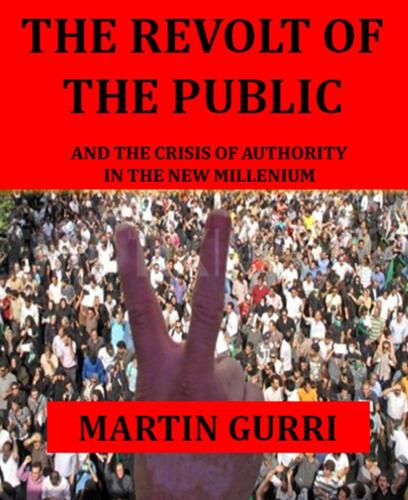
The Revolt of the Public and the Crisis of Authority in the New Millennium
by
Martin Gurri
Published 13 Nov 2018
Their chief ambition is to persuade us that they feel our pain, are on our side, have given a little money to our favorite cause, if only we, the public, allow them to last out their terms in peace. Interventionism has substituted a thousand tactics for a single bold strategy. Programs seem scarcely intelligible in terms of their stated purposes, and, like the stimulus, need to be legislated at exhausting length. President Obama’s signature program, the Patient Protection and Affordable Care Act, sprawled over 900 pages of contradictory minutia: the word “waiver” appeared 214 times. The Dodd-Frank bill that tightened regulation of the US financial system in 2009 covered 848 pages. For comparison, it took 31 pages in 1913 to establish the Federal Reserve, 37 to wrap up the Social Security Act of 1935.
…
An even more striking example of President Obama’s embrace of negation was found in remarks he delivered before another friendly audience at the Center for American Progress, on December 4, 2013. Again the subject chosen was a wedge issue: this time, economic inequality. The president began with an admission of the vast chasm separating the public from their government. …between a reckless shutdown by congressional Republicans in an effort to repeal the Affordable Care Act, and admittedly poor execution on my administration’s part in implementing the latest stage of the new law, nobody has acquitted themselves too well these past few months. So it’s not surprising that the American people’s frustrations with Washington are at an all-time high.[202] The president, however, believed that the public’s frustrations were not merely the result of transient political events.
…
[269] “Political Insurgency: Europe’s Tea Parties,” The Economist, July 4, 2014, http://www.economist.com/news/leaders/21592610-insurgent-parties-are-likely-do-better-2014-any-time-second-world. [270] Clay Shirky, “Healthcare.gov and the Gulf Between Planning and Reality,” Clay Shirky blog, November 19, 2013, http://www.shirky.com/weblog/2013/11/healthcare-gov-and-the-gulf-between-planning-and-reality/. [271] “Full transcript: President Obama’s Nov. 14 news conference on the Affordable Care Act,” Washington Post, November 14, 2013, http://www.washingtonpost.com/politics/transcript-president-obamas-nov-14-statement-on-health-care/2013/11/14/6233e352-4d48-11e3-ac54-aa84301ced81_story.html. [272] John Dickerson, “A Sorry Apology,” Slate, November 8, 2013, http://www.slate.com/articles/news_and_politics/politics/2013/11/barack_obama_s_bad_apology_the_president_s_apology_for_the_affordable_care.html
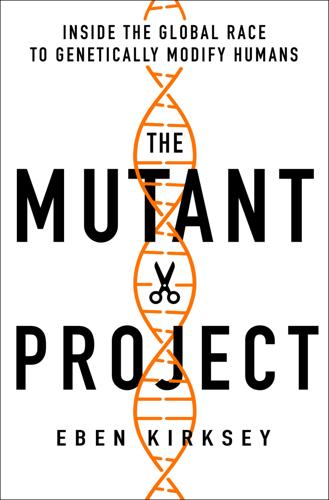
The Mutant Project: Inside the Global Race to Genetically Modify Humans
by
Eben Kirksey
Published 10 Nov 2020
HIV is no longer a death sentence for people with access to the latest medicine. People who are living with the virus now have an overall life expectancy that is very similar to normal. But many HIV patients still have trouble accessing lifesaving medicine. Around 10 percent of Philadelphia residents were unable to get basic health insurance even after the Affordable Care Act was passed into law in 2010. According to a 2017 study, about one-quarter of people with HIV/AIDS in Philadelphia had precarious housing situations. Around 6,000 people were homeless—living on the street or in cars, abandoned buildings, or train stations—and these people were disproportionately African American and Latinx/Hispanic.
…
As I waited for Aaron, I could hear others talking about arcane provisions in the Republican tax bill, which had passed the night before, on Friday, December 1, 2017. Scrolling through my phone, I found media reports about disabled people, gay activists, and people of color who had been conducting direct actions in Congress with hopes of saving key provisions of the Affordable Care Act. Activists with ADAPT, the national grassroots disability rights organization, had just been arrested in the Senate Hart Building when they refused to move their wheelchairs and began chanting, “Kill the bill, don’t kill me!”1 Aaron Traywick was forty-five minutes late. When he eventually showed up, he was with his girlfriend and clearly on edge.
…
ableism CRISPR and X-Men and See also crip; disability abortion activists biohackers as disabled people as experimental volunteers as gay intersex moral struggles of patients as transgender See also ACT UP; Jain, Lochlann; Johnson, Jay; Roberts, Tristan; Sharp, Matt; Traywick, Aaron; Wolbring, Gregor ACT UP (AIDS Coalition to Unleash Power). See also Treatment Action Group Affordable Care Act AIDS. See HIV/AIDS Aizura, Aren (transgender studies scholar) Altered Carbon (Netflix series) Alzheimer’s disease American dream amniocentesis Ancestry (genetic testing company). See also genetic testing antibodies antibody therapy for cocaine See also immune system; N6 antibody apheresis.
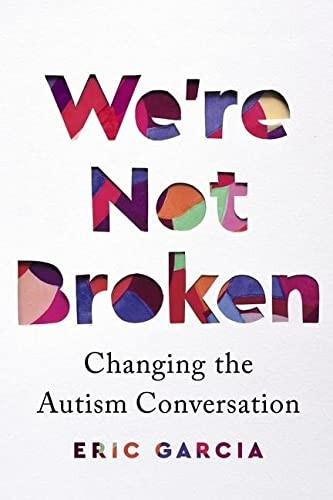
We're Not Broken: Changing the Autism Conversation
by
Eric Garcia
Published 2 Aug 2021
All of this set the stage for the role autistic advocates would play in the 2020 presidential election, particularly in the 2020 Democratic primary. Disability rights advocates gained an incredible amount of political capital among Democrats in the first year of the Trump administration after they vigorously opposed the repeal of the Affordable Care Act, Obama’s signature achievement, as well as deep cuts to Medicaid. (During one of our interviews, I noticed a sign in Bascom’s office from those protests that said PLEASE SAVE OUR HEALTH CARE SO WE CAN STOP MAKING PHONE CALLS. ) Many Democratic candidates consulted autistic self-advocates like Ne’eman and Bascom along with other disability rights advocates during their campaigns.
…
See education accommodations/education asking for, 33, 34, 35–37, 41 changes in, 37–38 college/community college, xiv, xix, xx, 6–7, 30, 31, 33, 34, 35–37, 38, 39–41, 42 distrust and, 34 faculty importance, 39–40 high school/elementary school, 34 inspirational vs. successful, 40–41 See also Marshall University, West Virginia accommodations/work, xix–xx, 74, 75, 81–82 AC/DC, 8 Acosta, Alex, 69 ADA Generation, xvi adjustment disorder, 179 Aerosmith, 9 Affordable Care Act, 203 Alberta, Tim, 207 Albright, Amanda, 45, 46 All the Weight of Our Dreams (Brown, Onaiwu, Ashkenazy), 200 American Civil Liberties Union (ACLU), 100 American Prospect, 58 American Psychiatric Association, 5 See also Diagnostic and Statistical Manual of Mental Disorders Americans with Disabilities Act (1990) ADA Generation and, xvi, 72–73 Amendments Act (2008) and autism, 5 effects, 5, 6–7, 93–94 Harkin and, 17 Angres, Ronald, 85 applied behavioral analysis (ABA) controversy over, 116, 117–18 description, 116, 117 health insurance and, 116, 117 punitive components, 117 Apprentice, The, 23 Archives of Sexual Behavior, 167 “Aria,” 37–38 ASAN.
…
See housing/living conditions Look Me in the Eye (Robison), 24, 59 Loop (film), 170–72 Lovaas, Ole Ivar ABA and, 117, 148, 215 on autistic people, 215 Feminine Boy Project/homosexuality “conversion,” 148–49 See also applied behavioral analysis (ABA) Love of the Spectrum (Netflix documentary), 135 “lower support needs”/“higher support needs” terms, xviii Loyola Marymount University, 51–52, 130 LSD, 114 Lurie Institute for Disability Policy, Brandeis, 39 Luterman, Sara, 180, 209 Lutz, Amy, 99–100, 102 M McCain, John, 18, 19 McCarthy, Jenny, xii McClain, Elijah, 189–90 Maitland, Theresa, 36 Mak, Tim, 198 Mandell, David, 84, 102 Marble, John autism realization/getting diagnosed, 53–54 autistic people’s employment, 60–61, 64, 76–77, 79–81 background, 53, 54 LGBTQ/Stonewall Democrats and, 148 meeting other autistic people/retreat, 54 Ne’eman and, 54 Neurodiversity Pathways, 54–55, 60, 80 Office of Personnel Management, 53 Pivot Diversity, 80–81 March, Mary Tyler, 46–47 MarketWatch, 58–59, 63, 73–74 Marshall University, West Virginia “adaptive living skills,” 42–43 Allies Supporting Autism Spectrum Diversity program, 41 Autism Training Center, 30–31, 41 program costs and, 43 “social radar,” 42, 43 masking/autistic people autistic people of color, 179 females, 161–62 relationships, 140–41 Star, Eryn/harm, 163–64 Matthews, Dylan, 209 Mead, Kit, 98 measles-mumps-rubella vaccine, 16 Medicaid, 71, 73, 91, 121, 178, 203, 205, 207 See also HCBS (Home- and Community-Based Services) waivers Medical Care, 96 medical model vs. social model, 44, 111 meditation, 142 meltdowns, 53, 89, 109, 119, 171–72, 179 Méndez, Juan, 15 Menendez, Robert, 63 mercury chelation therapy, 116 vaccines/autism myth and, xi–xii, 18, 116 metrazol, 114 Microsoft, 61, 62 Migyanka, Joann, 126 Milsom, Erica Loop, 170–72 research/autism, 170–72 Miracle Mineral Solution (MMS), 116 Molecular Autism, 160 Money Follows the Person, 105–6 Montgomery, Cal on autism, 130–31 background, 85–86 housing for autistic people, 86, 95, 102–3 institutions and, 85–86 Monty Python, 166 Moore, Mary Tyler, 46 Morrow, Barrow, 87 Mötley Crüe, 8 movie theater, Aurora, Colorado shootings, xiii Mozart, 22 Muhammad, Khalil, 188–89 Murphy, Kirk (“Kraig”), 149–51 Muscular Dystrophy Association, 13 myths on autism autism as problem/menace, xiii–xiv autistic shooter, xiii–xiv empathy and, 134–35, 136, 141, 158 extremes/stereotypes, 75–76 incapacity of being good partner, 134–35 job loyalty and, 62–63 low expectations and, 55 as males/white males condition, xv, xvi, 41, 157, 175–76, 177, 180–81 “refrigerator mothers/parents,” xi–xii, 11, 84, 114, 150, 177, 202 STEM fields and, xv, 32–33, 48–49, 55–56, 63–64, 75 See also specific issues; vaccines/autism myth N National Autism Indicators Report, Drexel University, 60 National Council on Disability, 22, 54, 72, 125 National Council on Independent Living (NCIL), 156 National Council on Severe Autism (NCSA), 69, 70, 71, 99–100 National Institute of Mental Health, 17 National Institute of Neurological Disorders and Stroke, 127–28 National Journal, x, xii, 21, 58–59, 74, 75, 198, 199, 207 National Society for Autistic Children (NSAC) Information and Referral Service, 30 Rimland/treatments and, 12, 30, 112 Sullivan and, 12, 30 See also Autism Society of America Nebeker, Lindsey background, 146 Hamrick (husband) and, 145–46, 147, 155 sex/consent and, 145, 146, 147 as sexual abuse survivor, 146–47 Ne’eman, Ari appointments/committees, 22 Autistic Self Advocacy Network (ASAN), 12–13, 21, 203–4 background, 21, 212 on developmental disability world vs. autistic world, 12–13 disability rights, 12–13, 21, 204–5 Marble and, 54 National Council on Disability, 54 protesting ads, 13, 21 Shestak and, 25 on shift in views, 212, 213 networking, D.C., 197–98 Neurodiversity Pathways, 54–55 neurodiversity working group, College of William and Mary, 47–48 Neuro Tribes (Silberman), 86–87, 112, 134, 199–200, 202 Newby, Paul, 45–46 Newman, Judith/Gus, 151–52 New Republic, 58 New Yorker, 194 New York Times, 25, 151, 207–8 Ng, Claudia, 78 Nicolosi, Joseph, 150 Niou, Yuh-Line, 2 Nobody Nowhere (Williams), 20 nonspeaking autistic people examples, 26 See also specific individuals NPR, 205–6 nutritional therapies, 115 See also specific therapies O Obama, Barack administration/presidency, 54, 58, 204–5 Affordable Care Act, 203 autism and, 18–19, 22, 23, 69 Ne’eman and, 22 presidential campaign (2012), 45, 46 primary campaign (2007), 45, 46 Wired magazine and, 22 Obama, Michelle/daughters and Bo, 57, 58 Olmstead v. L.C. (1999), 94 Olshan, Jeremy, 74 Onaiwu, Morénike Giwa autistic females diagnoses, 160 book/autistic people of color, 200 intersectionality identity, 182 police and, 193 oppositional defiant disorder, 179 Oprah Winfrey (show), xii Overbee, Mary, 77 P Pale Blue Dot (Sagan), 193–94 Paradiz, Valerie, 24 Parents magazine, 13–14 Pediatric Annals, 167 Pediatrics, 184 Pence, Mike, 50 Perry, David M., 208 Perry, Joe, 9 “pervasive developmental disorder not otherwise specified (PDD-NOS),” xvii, 3–4, 5 Pitney, John M., Jr., 11, 84, 93–94 Pittsburgh Center for Autistic Advocacy, 26–27 Pivot Diversity, 80–81 Pixar Animation Studios, 170 Plant, Robert, 8 Police Practice and Research, 190 police violence/autism autism training for police, 190 echoing and, 189 eye contact and, 175, 189 Hayes case, 188–89 Kinsey/Rios-Soto, 174–75, 189 McClain case, 189–90 people of color treatment and, 175 police officer with autistic son, 189 stimming and, 175, 189, 193 Watts case, 188–89 white people/innocence assumption and, 175 See also police violence/race police violence/race Blake, Kenosha, 187 Brown, Ferguson, 175 Castile, Minnesota, 175 defunding police and, 190–91 Floyd, Minneapolis, 187 intersectionality and, 181 public opinion shift, 187–88 Taylor, Louisville, 187 white people/innocence assumption and, 175 See also police violence/autism Politico, 207 Politics of Autism, The (Pitney, Jr.), 11, 84 Pollak, Richard, 85 poverty and autism, 49 Pressley, Ayanna, 206 Pretending to Be Normal (Willey), 162 Prizant, Barry, 200–201 Psychology Today, 117 R race and autism autism as “white” condition/myth, xv, 175–76, 177, 180–81 Black parents and, 180–81 diagnosis/late diagnosis and, 177–79 incidents/data and, 188 intersectionality and, 181–82, 194 Kinsey/Rios-Soto example, 174–76 language barrier/diagnosis, 183–87 masking, 179 parental knowledge of autism and, 181, 186–87 “problem children/behavioral issues” and, 179–80 proving you belong and, 182–83 punishment and, 180 See also police violence; specific individuals racial diversity in newsrooms, 209 Rain Main, 30, 86–87, 171 Ray, Ashia description/background, 162 late diagnosis, 163 Reagan administration, 7 Refrigerator Mothers (documentary), 177 “refrigerator mothers/parents,” xi–xii, 11, 84, 114, 150, 177, 202 Regan, Ruti, 108 Rekers, George Family Research Council, 149 Feminine Boy Project/homosexuality “conversion,” 148–49 relationships/autistic people bad behavior/consequences and, 136–37, 143, 144, 145 consent and, 143–47 coronavirus pandemic and, 140 disclosing autism and, 139–40, 154–55 empathy myth and, 134–35, 136, 141, 158 Garcia, 137, 138–40, 141, 153–55 having children and, 138–39, 151–53 incapacity of being good partner/myth, 134–35 infantilization of autistic people and, 143–45, 151–52 LGBTQ autistic people, 147–48 marriage and, 138 masking, 140–41 media and, 135–37 men/stereotypes and, 135–37, 143 online dating, 133–34, 140 pity and, 135, 155 sexuality/stereotypes, 143–47, 165 stereotypes and, 135–36 See also specific individuals research on autism, 127–29 finding “cure,” xiv improving services and, xiv–xv Residential Information Systems Project, University of Minnesota, 91 Rhywiol, Kaelan, 152 Rice, Damien, 133 Rimland, Bernard Autism Research Institute, 114 autism treatments/cure, xi–xii, 12, 30, 112, 114, 115 Defeat Autism Now!

The Color of Money: Black Banks and the Racial Wealth Gap
by
Mehrsa Baradaran
Published 14 Sep 2017
Sophia Kerby, “The Top 10 Most Startling Facts about People of Color and Criminal Justice in the United States," Center for American Progress, March 13, 2012, https://www.americanprogress.org/issues/race/news/2012/03/13/11351/the -top-10-most-startling-facts-about-people-of-color- and-criminal-justice-in -the-united-states/; Glaude, Democracy in Black, 24. 105. Glaude, Democracy in Black, 23; Stephen Lam, “The State of Black America in a Word: ‘Crisis,’ " MSNBC, March 19, 2015. 106. Sara R. Collins, “How the Affordable Care Act of 2010 Will Help Low- and Moderate-Income Families," Commonwealth Fund, July 13, 2010, http://www .commonwealthfund.org/publications/blog/how-the-affordable-care-act-of -2010. 107. Barack Obama, “Proclamation 8400—Minority Enterprise Development Week, 2009," August 20, 2009, https://www.gpo.gov/fdsys/pkg/DCPD-200900657/pdf /DCPD-200900657.pdf. 108. Barack Obama, “Remarks in Washington, DC: ‘Changing the Odds for Urban America,’ " American Presidency Project, July 18, 2007, http://www.presidency .ucsb.edu/ws/?
…
The National Urban League reported in 2015 that the state of black America was one of “crisis.” The report followed up, in words reminiscent of the Kerner Commission, “America today is a tale of two nations.”105 The Obama administration did make inroads into poverty alleviation; specifically, the Affordable Care Act was aimed at lowering health-care costs, which are a major source of financial distress for the low income.106 President Obama, like his predecessors, did not specifically target the racial wealth gap, nor did he advocate a race-based economic agenda. The administration’s efforts were a continuation of theories underlying black capitalism and the updated community capitalism of the Clinton administration.
…
Finally, thank you to the University of Georgia for a research allotment so generous that I could travel to these locations and buy books—more books than I ever thought would be necessary to complete this project. INDEX Abernathy, Ralph, 193 Abrams, Charles, 109 Adichie, Ngozi, 262 Affirmative action, 186, 223-224, 234, 340n47 Affordable Care Act, 262-263 African Methodist Episcopal Church (AME Church), 12 Alabama Penny Savings and Loan Company, 45-46 Alexander, Archie A., 132 Alexander, Michelle, 324n101, 335n7, 335n211 Allen, Robert L., 193 Alternative financial services, 260-261 Alvord, John W., 22, 23, 24-25, 27, 28 America, Richard F.
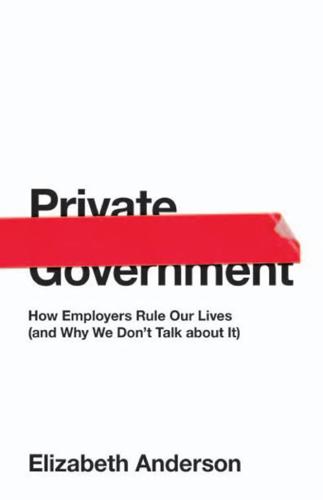
Private Government: How Employers Rule Our Lives (And Why We Don't Talk About It)
by
Elizabeth S. Anderson
Published 22 May 2017
Workers were eligible for Ford’s famous $5 daily wage only if they kept their homes clean, ate diets deemed healthy, abstained from drinking, used the bathtub appropriately, did not take in boarders, avoided spending too much on foreign relatives, and were assimilated to American cultural norms.12 Workers today might breathe a sigh of relief, except that most are still subject to employer governance of their private lives. In some cases, this is explicit, as in employer-provided health insurance plans. Under the Affordable Care Act (ACA), employers may impose a 30 percent premium penalty on covered workers if they do not comply with employer-imposed wellness programs, which may prescribe exercise programs, diets, and abstinence from alcohol and other substances. In accordance with this provision, Penn State University recently threatened to impose a $100 per month surcharge on workers who did not answer a health survey that included questions about their marital situation, sexual conduct, pregnancy plans, and personal finances.13 In other cases, employer authority over workers’ off-duty lives is implicit, a by-product of the employment-at-will rule: since employers may fire workers for any or no reason, they may fire them for their sexual activities, partner choice, or any other choice workers think of as private from their employer, unless the state has enacted a law specifically forbidding employer discrimination on these grounds.
…
His books include Liberal Virtues: Citizenship, Virtue, and Community in Liberal Constitutionalism (Oxford University, 1990); Diversity and Distrust: Civic Education in a Multicultural Democracy (Harvard University, 2000); the co-authored Democracy at Risk: How Political Choices Undermine Citizen Participation, and What We Can Do About It (Brookings Institution Press, 2005); and Just Married: Same-Sex Couples, Monogamy, and the Future of Marriage (Princeton University Press, 2015). Index Adams, Abigail, 42 Adams, John, on government as “everywhere,” 42–43 Affordable Care Act (ACA [2010]), 49, 111 Agreement of the People, 7, 77–78, 83 Alchian, Armen, 54–57; on a firm’s lack of power and authority, 54–55; on sanctions against employees, 55 Alexander v. FedEx Ground Package System (2014), 159n26 Ali, Tariq, 78, 166n8 Amazon, poor treatment of workers at, 128–30, 177–78n14 American Civil War, and the universalization of independent labor, 32 anarchism, 6 Anderson, Elizabeth, viii, ix, xvii–xviii, 89–90, 112; on Cowen’s skewed view of working conditions and wages in the United States, 134–35; critique of her views on early modern economic and social change in England, 80–88; focus of on quasi-political relations of government between employees and employers, 101; fundamental objections of to private government, 127; on hierarchies of authority, xi–xii; on the modern industrial firm as “private government” and a “dictatorship,” x–xi, 38; onprivate business firms as “communist dictatorships in our midst,” 39, 108–9; Tanner lectures of, 78; on ways to increase worker protections against arbitrary treatment, xii Anglican Church, 11; as a form of monopoly, 16; private government functions of, 8–9 Apple, Inc., 145n2, 176–77n7 apprentices/apprenticeship, xiii, 9–10, 24, 33, 42, 59, 81–82, 83, 88 authoritarianism, x, 12, 36; feudal authoritarianism, 160n29; workplace authoritarianism, 50, 59, 62, 136 authority, 66, 133; discretionary authority of employers over workers, 113; and the firm, 56–57; hierarchies of, 52; interpersonal authority, 65; of managers over workers, 67; and political power, 98; scope of and limitations to employer authority, 53–54, 63; subjection to, 61–62, 127–28, 161n35 autonomy, exercise of as a basic human need, 128 Bank of North America, 24 Baptists, 12 begging/beggary, 15, 16 Belated Feudalism (Orren), 160n29 Bentham, Jeremy, prison plan of (the Panopticon), 34 Bismarck, Otto von, 29 Blake, William, 22 Bromwich, David, xiii–xiv, 119, 174n1; on the human costs of market dislocations for traditional societies, xiv–xv; on the rise of market society, 121–22, 126 Cantor, Eric, 156n95 charity, 29, 81, 83, 121, 151n46 Charles I (king of England), 76, 166n8 Chartists/Chartism, 24, 29–30 Chidley, Katherine, 13, 87 Church of England.
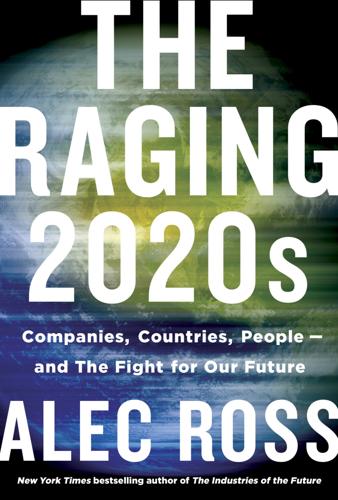
The Raging 2020s: Companies, Countries, People - and the Fight for Our Future
by
Alec Ross
Published 13 Sep 2021
Two countries—Switzerland and the Netherlands—offer universal coverage through a heavily regulated and subsidized market of nonprofit providers. In others, like Germany and Chile, a small portion of the population pays for private insurance while the rest are covered by government plans. The US government provides health insurance for the elderly and the poor through the Medicare and Medicaid programs. The 2010 Affordable Care Act expanded Medicaid, but enrollees still needed to pay hundreds of dollars per year. While the developed world embraces health care as a human right, the United States instead relies on the market to care for many of its citizens. Approximately three in five Americans receive their health care through private insurance companies.
…
Lynch had just completed a forty-five-day posting in the United States Digital Service (USDS), an organization formed in 2014 to fill what many officials viewed as a critical gap in the government’s technology expertise. That year, the White House had launched Healthcare.gov to help enroll Americans in government health insurance, but it had been a technological debacle that almost derailed the Affordable Care Act. The website was so buggy that on its first day only six people were able to sign up through the site. In response, and to prevent similar flops from occurring in the future, the White House created the USDS. The group is meant to act as a SWAT team of technologists who can come in whenever a government system needs fixing.
…
INDEX The index that appeared in the print version of this title does not match the pages in your e-book. Please use the search function on your e-reading device to search for terms of interest. For your reference, the terms that appear in the print index are listed below. Abbott Laboratories Abercrombie & Fitch AB InBev accountability activist investing Adidas Affordable Care Act Afghanistan, Soviet invasion of AFL-CIO Africa. See also specific countries China and Chinese model and climate change and closed systems and corruption in democracy in open vs. closed systems in population explosion in social contract in tax avoidance and tax havens and African Union Afwerki, Isaias agriculture AI ethics Airbnb airline industry Alabama al-Assad, Bashar Alexander, Douglas Alibaba Alipay Alphabet Inc..

Ask Me About My Uterus: A Quest to Make Doctors Believe in Women's Pain
by
Abby Norman
Published 6 Mar 2018
If you’re wondering why I had waited about a week before going to the hospital, despite being quite obviously ill, the answer is a complicated one. There was the practical concern about cost, because I didn’t have decent health insurance. Many of my peers had benefited from the freshly minted Affordable Care Act, which allowed them to stay on their parents’ health insurance plans until they were twenty-six. I had forfeited all that upon my emancipation at age sixteen, and I was extremely concerned about how I would pay for the cost of any care I received, not to mention any medications I might be prescribed.
…
Ten years later, most of my peers are only just now living on their own. Whether it be getting their first full-time-with-benefits-and-a-retirement-fund job, or querying me about how to get health insurance—since most of them have, up until this year, been covered by their parents’ plan under the Affordable Care Act. As I pruned in the tub, I thought about what I’d hoped, as a teenager, my life would be like when I reached this era of it. What I’d hoped my life could become if I made a life-changing—or rather, life-saving—decision. I felt very timeworn at sixteen, and I conflated (as did a lot of other people, I think) exposure with wisdom, and durability with maturity.
…
Javert, “Studies on Pain: Measurements of Pain Intensity in Childbirth,” Journal of Clinical Investigation 28, no. 1 (1949): 153–162. Of the research that was done: B. Noble, D. Clark, M. Meldrum, H. ten Have, J. Seymour, M. Winslow, and S. Paz, “The Measurement of Pain, 1945–2000,” Journal of Pain and Symptom Management 29, no. 1 (2005): 14–21. Many of my peers: Patient Protection and Affordable Care Act, 42 U.S.C.§m18001 et seq. (2010) SEC. 2714, Extension of Dependent Coverage. In June 2005, Harper’s ran: Biss’s article was titled “The Pain Scale.” Chapter 2 “My ovaries became the center of my universe”: Gilda Radner, It’s Always Something (New York: Simon and Schuster, 1989). “Gilda cried,” Wilder recalled: Gene Wilder, “From the PEOPLE Archives: Gene Wilder’s Tearful Goodbye to Wife Gilda Radner,” People, posted August 30, 2016, http://people.com/movies/gene-wilders-tearful-goodbye-to-wife-gilda-radner, originally published in the print edition of People in 1991, two years after Radner’s death.
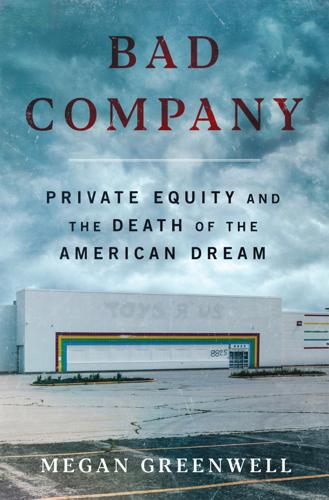
Bad Company
by
Megan Greenwell
Published 18 Apr 2025
Health care, though, would always be big business. The same changes that worried public health experts—including America’s aging population and growing chronic-disease burden—presented an opportunity for investors focused on shareholder value. And HCA had shown just how lucrative the payouts could be. The 2010 Affordable Care Act honed private equity’s interest in hospitals even more. The law’s passage meant far fewer uninsured Americans, which meant increased demand for hospital care, which meant an opportunity to make more money. Throughout the 2010s, health care was the hottest market for private equity. And 2018 was the hottest year yet, with multiple multibillion-dollar acquisitions.
…
If the application you are reading this on supports this feature, the page references noted in this index should align. At this time, however, not all digital devices support this functionality. Therefore, we encourage you to please use your device’s search capabilities to locate a specific entry. abundance mentality vs. scarcity mentality, 186, 187 Affordable Care Act, 39 African Communities Together, 140–141, 143, 145, 146, 149, 152, 153, 217, 218, 219, 222, 224, 228, 230, 231 Alden Global Capital Gannett and, 129 layoffs by, 128–129, 130 newspapers/destructions and, ix, x, 71, 127–129, 176, 200, 201–203, 204–205, 206, 210, 213 Amazon retail industry effects of, ix, 90, 92 Toys R Us and, 15–16, 88, 89, 91, 92 American Families Plan Bill, 178 American Investment Council, 144 American Journalism Project, 205–207, 208–209, 211 American Medical Association, 24, 115, 195–196 American Newspaper Guild activities, 126 beginnings, 126 contract and, 127, 132, 133–134, 135, 136, 137 Contreras and, 126, 127, 135 Gannett newspapers conditions and, 132–133 See also Indianapolis Star antisemitism, 6, 7 Apollo Global Management/Capital, xii, xiii, 16, 17, 39, 62, 63, 71, 106, 107, 108, 110–111, 115, 137, 162, 201 Arapaho, Northern, 28, 108, 189–190 Arizona Republic, 132, 144 Asheville Citizen-Times, 202 Athens County Independent, 211 Austin, Texas, growth/cost of living, 134–135 Austin American-Statesman, 26, 46, 134–136, 137, 197, 207–208 Austin NewsGuild, 137 Ayako Yasuda, 80 Babies R Us, 18–19, 87, 87–88, 88, 89, 92, 93–94, 95, 96–97 Bagdikian, Ben, 56 Bain, Bill, 81–82 Bain Capital, xiii, 16, 17, 38, 79, 115, 162, 175 origin story, 81–82 See also Toys R Us/Bain Capital, KKR, Vornado ownership Bainum, Stewart, 210 Baker, Barbara (“Barbi”) description/character, 26 meeting Roger Gose/marriage, 26 See also Gose, Barbara (“Barbi”) Baldwin Hills Crenshaw Plaza, 220–221 Baltimore Banner, 210 Baltimore Sun, 44, 210 bankruptcy creditor payment order, 97–98 private equity portfolio companies (overview), xvii, xx, 95 purpose, 94–95 statistics on, 96 Barbarians at the Gate (Burrough and Helyar), 61 Baucus, Max, 178 Bear Stearns, xvii, 81, 128 Berle, Adolf, xiv–xv, xxi Berwick, Donald, 235 Best Buy, 15 Bezos, Jeff, 91 Biden, Joe, President, 38, 103, 195, 198, 236 Big, 14 Biggs, Hermann, 25, 26 Billings Clinic, 193 Black, Leon, xiii BlackRock, 222 Blackstone, xii, xiii, xix, 71, 80, 161–162, 169, 229 Blackstone Tenants Union, 229–230 Bombas, ix Borders, 15 Bourma, Sami moving out of Southern Towers, 217 Southern Towers activism, 139–140, 141, 143, 221, 222–223 Brandon, Dave, 95, 96, 98, 173 Bridget Jones’s Diary, 41 Broun, Heywood, 125–126 Brown, Sherrod, 225 Buffett, Warren, 45–46 Bureau of Labor Statistics, 165 Burger King, 11 Burrough, Bryan, 61 Call of the Wild (London), 63 CalPERS (California Public Employees’ Retirement System) and private equity, 62–63, 169 Capitalism and Freedom (Milton), xv CareerBuilders.com, 55 Carlyle Group, xii, 71, 210 Carpenter, Bill, 106 Carr, David, 54, 55 carried interest descriptions/history, 37–38, 177 loophole and, 38, 178, 236 Cars.com, 55 Casper Star-Tribune, 113–114 “category killer” meaning, 14 Center for Popular Democracy, 166 Centers for Medicare and Medicaid Services, 104, 106, 108–109, 114, 189, 235 Cerberus Capital Management, xii, 16, 17, 233, 234 Chalkbeat, 197–198, 205, 207 Chang, Bethany, 218 Chatham Asset Management, 200–201 Chewy.com, 90 Chicago school of economics, xv Chicago Tribune, 210 CIM Group Baldwin Hills Crenshaw Plaza, 220–221 beginnings, 62, 71 CalPERS, 62–63 growth, 62–64, 71–72 housing, 220–221 neighborhood groups’ criticism, 64 scandals, 63, 64 See also Southern Towers/CIM Group Cirque du Soleil, xiii Civic News Company, 209 Clinton administration, 36 Close Encounters of the Third Kind, 203 Coca-Cola, 222 Colbert, Corinne, 211 colonizers, 66 Columbia/HCA fraud/fine, 35–36 merger, 35 companies (overview) debt-equity ratio, 84 federal regulations and, xiv history, xiv–xv shareholders and, xiv–xv See also specific companies/types Contreras, Luz divorce, 40 early journalism work/strike, 43 Natalia and, 40–41, 50, 51–52, 136 remarriage/move to Corpus Christi, 41–42 work, 40–41, 43 Contreras, Natalia childhood, 40–41 description/character, 40, 42, 43, 208 drunk driving incident/consequences, 51–52, 54–55 immigration law firm work, 51–52 languages and, 42, 204, 208, 214 move to Corpus Christi, 41–42 Muilenburg relationship, 119–120, 136, 203, 204, 215 school/discipline and, 40, 42, 43–44, 50–51 US citizenship/voting, 215 Contreras, Natalia/journalism Austin American-Statesman, 46, 135–136, 197 Chalkbeat and, 197–198 Corpus Christi Caller-Times, 46, 48, 49, 53, 54–55, 119–121, 124–125, 208 destiny and, 40, 41, 42–43 digital concerns, 120–121 Foghorn News (Del Mar community college), 44, 47–48, 50 Indianapolis Star, 46, 125, 126, 127, 133, 135, 197, 207 pay, 121, 126, 127 Shorthorn (University of Texas), 49–50 skills and, 120–121, 124–125, 133 unions and, 134, 135, 136 Votebeat, 198, 203, 204, 207, 208, 209, 214–215 Corpus Christi Caller-Times, 44, 46, 48–49, 50, 51, 52–53, 54–55, 56, 57, 119–121, 124–125, 208 Costco, 10–11, 82, 165 Cotton, Benjamin, 223 Covey, Stephen, 186 Covid pandemic effects, 58, 134, 139–140, 145, 171n, 185–186, 187, 191–192, 218 Craig Newmark Philanthropies, 205 Craigslist, 46, 199 Daily Messenger, 131 Daily News, 210 Daugherty, Alan background, 113 Gose, Roger and, 104, 111–112, 116 Riverton hospital/fate, 105, 114, 181 Save Our Riverton Hospital and, 113, 144 selling Riverton hospital and, 181 Watkins on, 180–181 daycare and private equity firms, xii, xiii Dead Giraffe Society, 163–164, 165 Deadspin Greenwell and, ix, xi reader statistics, ix Deadspin/Great Hill Partners control/strategies, x goal, xi, xii purchase, ix results, xi Dehlendorf, Andrea, 166 de la Torre, Ralph, 233, 234 Democrat and Chronicle, 131 Denver Post, 46, 127, 129 Department of Health and Human Services, 35 DePina, Loren Cameron’s education/PTA and, 59–60, 75 childhood/school, 65–67 description/character, 58–59, 60, 64–65, 66–67, 216, 231, 232 drug dealers confrontations, 58–59, 74–75 future plans, 232 health care management schooling/work, 73–74 jobs, 73–74 move to Alexandria, 67 racism and, 59–60, 64–66 Rhode Island and, 66–67 safety commission/public housing, 59 sexual abuse of, 66–67 VOICE work, 60, 138, 147, 216, 231 DePina, Loren-Rashad Jackson eviction/homeless, 56 Jaxon/Cameron (sons), 58, 59, 74–75, 231 marriage, 74 public housing, 58 See also Jackson, Rashad; Southern Towers/DePina-Jackson family DePina, Maria, 65, 66 See also DePina, Victor-Maria DePina, Victor Boston school/degree, 65 children/careers, 73 health issues, 155 Loren and, 59, 73, 74, 232 relatives and, 66 work, 65, 72–73, 232 DePina, Victor-Maria divorce, 67 immigration from/to, 65 move to Rhode Island, 66 DeRonde, Kevin, 187 Devils Tower, Wyoming, 203, 204 DeVito, Michael, 224 Digital First Media (MNG Enterprises Inc.), 127, 130 “Dillon Rule,” 232 Dodd-Frank Act (2010), xiv Douglas, Michael, 79–80 Drexel Burnham Lambert, 61 Durant, Kevin, 147 Durant, Wanda, 147 Dylan, Bob, 48 Eastern Shoshone, 28, 108, 109, 189–190, 192–193, 194–195 election coverage Trump/2020 election, 198 See also Votebeat El Heraldo, 43 Ellison, Keith, 219, 220 Elmira Gazette, 55 End Hedge Fund Control of American Homes Act, 226–227 Envision Healthcare, 107 Epstein, Jeffrey, xiii equity firms.
…
See DePina, Loren Lorenz, Chad, 204 Los Angeles Times, 44, 62 “loss leader” strategy, 16, 105 Lutheran Hospitals and Homes Society, 29, 31, 33, 34 McAneny, Barbara, 115 McClatchy, 200–201 McGuffey, Corte background/sports background, 183 description/character, 34, 182–183, 184 family of, 183, 191 move back to Riverton, 34, 183 new Riverton hospital and, 182, 183–184, 191 on Riverton-Lander hospital, 34 Riverton Medical District/board, 182, 183, 191 Machiavelli quote, 81 Macy’s, 12 Mahaska Health in Oskaloosa, Iowa, 187 Maloney, Drew, 123–124, 144 Marin, Aracely, 11 Marin, Daniyel, 5, 11, 83, 87, 168, 179 Marin, Henry background, 11 Liz’s clothes and, 4–5 as pharmacist, 84, 168, 178 pharmacy school/internship, 11, 18, 84, 87, 99, 100 work and, 10–11, 83 See also Marin, Liz-Henry Marin, Liz activism after Toys R Us, 174, 176, 178–179 Alleah (daughter), 10, 11 Annmarie and, 3, 100, 162 birth/childhood, 9, 10 clothes incident, 4–5 Costco and, 10–11 description/character, 3–5, 10, 162 home description, 4, 5 janitorial work of, 174 Loren (“Buddy”/father) and, 4, 5, 10 Mindy (sister) and family, 4, 10, 162, 179 Miranda (mother) and, 10 retail work before Toys R Us, 82–83 sexual abuse of, 10 Tlingit people and, 9, 179 WinCo Foods work, 178 Marin, Liz-Henry Henry’s parents and, 162 meeting/wedding, 10–11 moves, 11–12, 18, 83, 84 Marin, Liz/Toys R Us Babies R Us, 18–19, 87, 88, 89, 92, 93–94, 95, 96–97 bankruptcy consequences, 97–98, 99–100 beginnings, 12, 18, 79 customers and, 19, 88, 96–97, 167 giraffes/Geoffrey the Giraffe and, 5, 18 schedule, 83, 84 store situation and, 84, 89, 92, 93–94, 95, 96–97 tattoo, 18 training new employees and, 89, 92 transfer to other stores and, 18 wages, 83, 89, 97–98 work of/as employee, 5, 83, 88, 89, 91 See also Toys R Us Marin, Liz/Toys R Us demise activism of, 164, 165, 168, 171–172, 173, 174 job loss, 162 views on, 161 Martore, Gracia, 56 Massey, Jack, 32 Mead, Margaret, 182 Means, Gardiner, xiv–xv, xxi Media Monopoly, The (Bagdikian), 56 MediaNews Group, 128 Medicaid/patients, 37, 104–105, 116, 185 medical insurance Affordable Care Act, 39 Clinton administration/universal health care and, 36 debate (early 1900s), 23–24 socialism question, 23–24 See also specific types Medical Properties Trust, 110, 233 Medicare for All, 180, 186, 196, 219–220 Medicare/patients, 33, 37, 38–39, 103, 108, 185, 189 medicine/health care expenses increasing, 23 first medical school, 23 generalists/specialists, 30 history (overview), 23–25 hospitalists, 30 “just cause,” 186 workplace injuries (early 1900s), 23–24 See also hospitals; specific components/individuals medicine/health care and private equity beginnings, 38–39 dominance/reasons, 106–107, 115 research findings on, 115–117 shareholder value philosophy and, 36, 39 Merkley, Jeff, 226–227 Metrick, Andrew, 80 Metropolitan Museum of Art, xiii Milken, Michael, 61 minimum price laws, 12 Mirror Indy, 206–207 MIT computing school, xiii mobile homes/parks, 70–71, 227–228 Modern Corporation and Private Property, The (Berle and Means), xiv–xix Montgomery Ward, 6 Morgan, Neil, 199 Mount Sinai Hospital, xiii Muilenburg, Robert as Contreras, Natalia mentor, 44, 119–120 Contreras, Natalia relationship, 119–120, 136, 203, 204, 215 Del Mar Community College, 44, 119–120 Nassar, Larry, 125 Natalia.
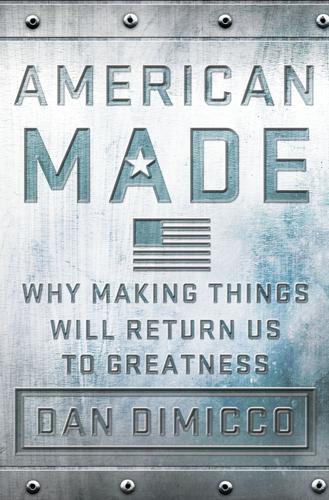
American Made: Why Making Things Will Return Us to Greatness
by
Dan Dimicco
Published 3 Mar 2015
Now, I’m willing to bet that if infrastructure and job creation had been treated as a serious priority in the first year of Obama’s presidency, when the Democrats held the House and the Senate, we would have an infrastructure bank today. We don’t. Instead, we have businesses trying to figure out how to absorb the costs of the Affordable Care Act and other new regulations. Infrastructure done right could provide 10 million of 30 million new jobs within a decade.32 Expanding our nation’s energy resources could provide millions more. In the next chapter, I’ll show you how. Nine Where We Go Next Tapping Our Energy Resources In a country where sometimes it seems like nobody can agree on anything, the one thing just about everyone can agree about is the arrival of a new energy paradigm.
…
Index The index that appeared in the print version of this title does not match the pages in your e-book. Please use the search function on your e-reading device to search for terms of interest. For your reference, the terms that appear in the print index are listed below. accountability, 73, 95, 99, 108, 214, 219 Affordable Care Act, 181 see also health care AFL-CIO, 135, 180 AlixPartners, 71 Amazon, 117, 198 American Iron and Steel Institute (AISI), 110 see also steel industry American Recovery and Reinvestment Act, 134 see also stimulus Amsted Industries, 118 anti-dumping initiations, 216–17 Apple, 117, 131, 198 austerity, 141 Baucus, Max, 36 Bell Labs, 46 Boeing, 46, 105–6, 129–30 Brown, Jerry, 143, 171, 174 Brown University, 5, 48–49 bubbles, 12, 37, 52, 76–77, 82, 89, 121, 132, 203–4 Building and Upgrading Infrastructure for Long-Term Development (BUILD) Act, 180 Bureau of Labor Statistics, 22, 25, 34, 124, 145 Bush, George H.W., 65–66 Bush, George W., 23–24, 110–11, 140, 219 Business Roundtable, 60, 69, 105 “Buy American,” 94–95, 135–37 C.
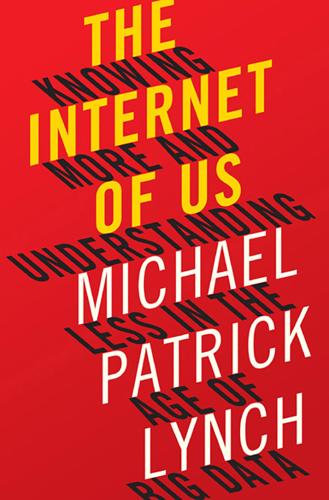
The Internet of Us: Knowing More and Understanding Less in the Age of Big Data
by
Michael P. Lynch
Published 21 Mar 2016
Prediction markets don’t average the views of their participants, rather they work in the same way other markets work: the more confident buyers are that a given candidate will win, the higher his or her “stock” goes—the more value is attached to it, no matter how many people may own that stock. But prediction markets also have their limits. A well-known example, noted by David Leonhardt of the New York Times, was the 2012 Supreme Court decision on the Affordable Care Act.9 Right up to the last minute, Intrade was indicating a 75 percent chance that the Act’s mandate would be declared unconstitutional. That was wrong—and, in fact, as Leonhardt noted, many insiders had been going the other way. Arguably the insiders’ information was better, and their take on it more legally sophisticated, than that of the larger crowd.
…
You can use your device’s search function to locate particular terms in the text. Page numbers in italics refer to illustrations. Page numbers beginning with 191 refer to endnotes. Academia.edu, 135 accuracy, 14, 27–31, 39–40, 44–45, 130 of data searches, 163 sacrificed for a “noble lie,” 78–80, 82 Achilles, 13 actionable information, defined, 14 Affordable Care Act, 122–23 Afghanistan War, 137 Agarwal, Anant, 150 Agony and the Ecstasy of Steve Jobs, The, 77 “aha” moments, 175, 176 AIDS, 198 airport body scans, 108, 109 Alexandria, library of, 8 Amazing Stories, 41 Amazon, 9, 80–81, 136, 141 tracking by, 90, 97, 105 Amherst University, 152 Anderson, Chris, 156–60, 182 “animal” knowledge, 131 answer “cards,” 66 AnswersinGenesis.org, 48 anterograde amnesia, 168–69 Apple, 77 a priori beliefs, 47 Arabic language, 81 Arab Spring, 66 architecture, as analogy for structure of knowledge, 126–28 “Are We Living in a Computer Simulation?”

The Death of Cancer: After Fifty Years on the Front Lines of Medicine, a Pioneering Oncologist Reveals Why the War on Cancer Is Winnable--And How We Can Get There
by
Vincent T. Devita, Jr., M. D.
and
Elizabeth Devita-Raeburn
Published 3 Nov 2015
But getting to these places, and these doctors, requires inside knowledge that most patients don’t have. That’s why I am so often guiding friends and friends of friends to different centers. And that’s why PDQ (Physician Data Query) is so helpful. Going to centers that aren’t near you also requires flexible insurance companies, which some people don’t have. And the Affordable Care Act (ACA) promises to make this worse. The focus of the ACA is cost control, and the mechanism to monitor this is the Independent Payment Advisory Board, which mimics the British National Institute for Health and Care Excellence (NICE), which determines if new treatments are cost-effective before allowing payment.
…
abdominal cancer Abigail Alliance for Better Access to Developmental Drugs abiraterone abscess academia; medical schools vs. hospitals; publishing expectations in; RO1 grants and; tenure system; turf battles; university cancer center model; Yale Cancer Center; see also specific universities acute promyelocytic leukemia Adams, Lane adjuvant chemotherapy; CMF protocol adrenal glands Adriamycin advocacy for cancer patients aerobic glycolysis afatinib Affordable Care Act (ACA) aging Agrawal, Manish AIDS Albert and Mary Lasker Foundation ALK Allison, Jim Alpert, Louis K. American Association for Cancer Research (AACR) American Cancer Society (ACS) American Express American Medical Association (AMA) American Society for Clinical Investigation American Society of Clinical Oncology (ASCO) amethopterin aminopterin aminotriazole amputation Anderson, Ken androgen deprivation therapy (ADT) androgens anemia; aplastic angiogenesis angiostatins Annals of Internal Medicine anti-angiogenesis antibiotics antibodies antidepressants antifolates antifungals antimetabolites aplastic anemia arabinosyl cytosine arm; swollen Armstrong, Lance arsenic arthritis aspirin asthma atabrine ATRA autoimmune diseases Avastin, see bevacizumab axillary lymph nodes back pain bacteria Baker, Carl BCNU BCR-ABL fusion gene Beeson, Paul Begley, Sharon Bennett, John Berard, Costan Berlin, Nathaniel bevacizumab (Avastin) BIKE biochemical relapse biopsy birth control birth defects bladder cancer Blades, Brian Blair, Deeda blast cells blindness blood; cancer spread and; shutting down supply to tumors; tests; transfusions; in urine blood-brain barrier Blood Club Bonadonna, Gianni Bondy, Phil bone; pain bone cancer bone marrow; aplastic anemia and; aspiration; Hodgkin’s disease and; leukemia and; myeloma; transplant bortezomib Boston Globe, The BRAF brain cancer Brandt, Ed breast cancer; adjuvant chemotherapy and; awareness; CMF protocol; dormancy; hormone treatment; localized; lumpectomy; mammograms; at Memorial Sloan Kettering; metastasized; mortality rates; overaggressive surgery for; post-op chemotherapy and; radiation and; radical mastectomy; remote signaling Brecher, George Brennan, Murray Brigham Hospital, Boston Bristol-Myers Squibb British Journal of Cancer Burchenal, Joseph Burkitt’s lymphoma Burroughs, Frank Burrow, Gerry Bush, George H.
…
.; nurses; see also specific hospitals Huguley, Charlie human genome Humphrey, Hubert hypertension ibenzmethyzin ImClone immune system; checkpoints; defects immunotherapy Independent Payment Advisory Board India Indiana University infection inflammation inflammatory bowel disease institutional review boards (IRBs) insulin insurance; Affordable Care Act; companies; FDA drug approval and; insufficient; standard-of-care guidelines interferon interleukin-2 inverse rule Investigational New Drug (IND) iron islet cells Israel Istituto Nazionale dei Tumori Italy IV James, Pendleton jaundice jaw JD Jefferson Medical College Jews John Paul II, Pope Johns Hopkins School of Medicine Johns Hopkins University Johnson, Ralph Journal of Clinical Oncology (JCO) Journal of the American Medical Association Kaplan, Henry Karnofsky, David Kefauver-Harris Amendment Kelley, Rita Kellogg’s All-Bran Kelsey, Frances Kennedy, Don Kennedy, Edward; FDA and Kennedy, Edward, Jr.
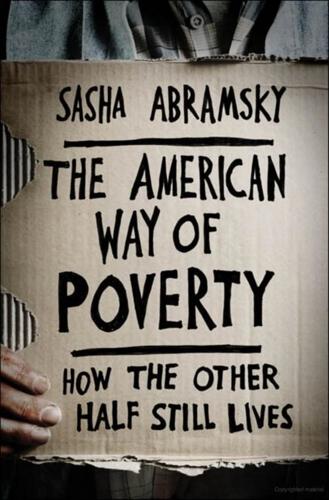
The American Way of Poverty: How the Other Half Still Lives
by
Sasha Abramsky
Published 15 Mar 2013
BURIAL PLOTS, BROKEN GLASSES, AND OTHER PROBLEMS WITH MEDICAID One other core part of the safety net is also largely counter-cyclical, designed to kick in with greater assistance when the need increases. And that is Medicaid, which grants families with kids access to healthcare once they reach a certain threshold level of poverty. But while Medicaid is a whole lot better than nothing, it has, historically, been severely restricted in a number of ways. In fact, until all the major Affordable Care Act provisions kick in, in 2014, most states won’t extend Medicaid to childless adults. At the same time, a minority of states, again mainly southern ones, will continue to place huge restrictions on adults of any status, even those with young children at home, gaining access. The problem, however, goes beyond one of gate-keeping.
…
And they would have to persuade the government to use existing, but too frequently unenforced, labor laws to crack down on employers who had grown used to paying low wages, off the books, for an array of domestic services. Absent living wage ordinances and related pay increases for vulnerable workers in the fields, in home healthcare, and the like—or acting in tandem with such reforms—legislators could also put state and federal tax codes to work on the side of the poor. In the same way the Affordable Care Act uses tax law to penalize employers who don’t provide health insurance to their workers, so the codes could be tweaked to impose penalties on those who don’t give their workers a modicum of economic security through paying them a decent wage. As an employer, do you really want to pay your workers so badly that they fall back on state benefits?
…
To get a sense of the scale of the challenges facing Medicare, see reports by the Kaiser Family Foundation, including: http://www.kff.org/medicare/upload/7731–03.pdf. Index Abiley, Paul, 140–143, 321–322 Adelson, Sheldon, 52 Advocates for the Other America, 196 AFDC. See Aid to Families with Dependent Children Affordable Care Act, 224, 298 African Americans, 9–10, 25, 81, 128–129, 129–130, 186 and education, 26 and housing, 172–173 and Hurricane Katrina, 155–156 Agassi, Andre, 276 Aid to Families with Dependent Children (AFDC), 45, 107, 216–217, 218, 232 Alabama, 103, 106, 131, 289 Alaska, 251 Albelda, Randy, 206, 218, 233 Alfond, Harold, 256–257 American Airlines, 312 American Bankers Association conference (Chicago, 2009), 36 American Legislative Exchange Council, 178, 179, 205 American Recovery and Reinvestment Act, 100, 110, 218, 278 Anti-poverty strategies, 197–198, 199–205 and automatic stabilizers, 231–232 and automatic triggers/coordinated efforts, 228–229 and benefit corporations, 310–311 and community building, 308–309, 309–312 and disability insurance, 304–306 and domestic workers, 297–298 and Earned Income Tax Credit, 233, 287–294, 295–296, 299–300, 300–301 and economic downturns, 218–220 and education, 274–283 and existing programs, 287–317 and food stamp program, 220–223, 232 and green jobs and industries, 264–266 holistic approach to, 229–231 and homelessness, 269–270, 283–284 and housing, 266–269, 283–284 and income guarantee, 294–297 and infrastructure, public and private, 263–264 and job training/retraining programs, 305–306, 306–310 and living wage, 295–296, 297, 298–299, 305 and Medicaid, 224–227 and Medicare, 311, 314–315, 316 and minimum wage, 297, 299–300, 305 and mortgage foreclosures, 270–274 and pensions, 311–313, 313–315 and public works programs, 301–304 punishment-based vs. incentive-based approach to, 233, 234 and school meals, 223–224 and Social Security, 311, 313–315, 315–316, 316–317 and state banks, 263–266 and taxes, 263, 264, 266, 298–300 and unions, 297–298 and will to reform, 227–229, 326–327 See also Poverty; War on Poverty Appalachia, 54, 131–132 Appalachian Pennsylvania, 18–20 Appalachian Regional Development Act, 202 Arizona, 91, 106, 300 Arkansas, 106, 107 As Texas Goes (Collins), 179 Asian Americans, 24–25, 26 Aspen Institute, FIELD program, 254 Atlanta, 103, 229 Attwell, Steven, 302–303, 305 Automatic stabilizers, 121, 218, 231–232 Automatic triggers/coordinated efforts, 228–229 Autor, David, 304 Bachmann, Michele, 119–120 Bacon, Pastor Ed, 230–231 Baker, Dean, 244–247 Bankruptcy, 56, 57–58, 175, 312–313 Banks/bankers, 36, 58–59.

Deep Medicine: How Artificial Intelligence Can Make Healthcare Human Again
by
Eric Topol
Published 1 Jan 2019
,” that radiology may disappear as a thriving specialty in the next five to ten years.31 The venture capitalist Vinod Khosla has said, “The role of the radiologist will be obsolete in five years.” I know Vinod well and have discussed this issue with him. He didn’t mean radiologists would be obsolete but that their current role as primary readers of scans would. At the other extreme, Emanuel, the prominent physician and architect of the Affordable Care Act, in a Wall Street Journal article, claimed that “machine learning will replace radiologists and pathologists, interpreting billions of digital X-rays, CT and MRI scans and identifying abnormalities in pathology slides more reliably than humans.”32 Even if it is easy to get carried away by the prospects for algorithmic radiology, there is certainly a looming fear among radiologists that the computer overlords are warming up for some kind of takeover.
…
In the era of improved prediction of health, there will need to be regulation to avoid discrimination against individuals based on risk. It took many years to get federal legislation to protect individuals against genetic discrimination by employers and health insurers, and even that remains incomplete, as life insurance and long-term disability plans can discriminate based on genetic information. And, although the Affordable Care Act made provisions for excluding preexisting conditions for coverage considerations, that isn’t set in stone, as the Trump administration has made clear.49 Along these lines, risk prediction, by individual, is the next frontier of concerns that remain to be addressed. Perhaps less pernicious but still worrisome is reliance on “wellness” programs, which most medium to large employers in the United States have, despite the fact that, overall, they have not been validated to promote health outcomes.
…
J., “For Doctors, Age May Be More Than a Number,” New York Times. 2018. INDEX ABIMF. See American Board of Internal Medicine Foundation Accelerating Therapeutics for Opportunities in Medicine (ATOM), 220 Accolade Health, 201 accountability, black box problem and, 96 activism, 21 AF. See atrial fibrillation Affordable Care Act, 202 age-related macular degeneration (AMD), OCT and, 147, 148 (fig.), 149 AI (artificial intelligence) expectations for, 12 (table) timeline, 73 (table) See also specific topics AI, liabilities of bias as, 97–99 black box problem as, 94–97 Hinton on, 93 image recognition and, 92–93 inequities as, 99–100 Li on, 89, 92 NNs and, 90–94 supervised learning, dependence on, and, 90 AI as existential threat, 108 Future of Life Institute and, 110 LeCun on, 109 Musk and, 109–110 science fiction and, 109 Zuckerberg on, 109 AI healthcare initiatives, national Canada and, 203 China and, 204–206 France and, 206 India and, 203–204 UK and, 206 AI Now Institute bias and, 99 black box problem and, 95 ethics and, 106–107 Aifloo, 265 AIMS.
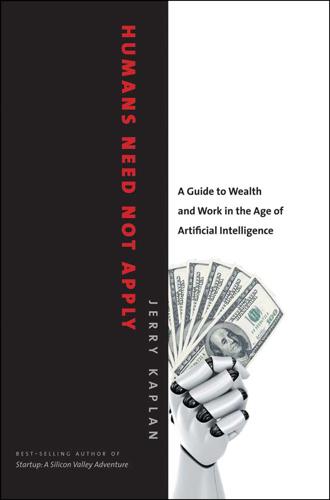
Humans Need Not Apply: A Guide to Wealth and Work in the Age of Artificial Intelligence
by
Jerry Kaplan
Published 3 Aug 2015
This effect is meticulously detailed in Jaron Lanier, Who Owns the Future? (New York: Simon and Schuster, 2013). 8. Kaiser Permanente, my health maintenance organization, has taken this to its logical extreme: it won’t even tell you what your medications cost until after it has shipped them to you. As a result of plan changes required by the Affordable Care Act, Kaiser Permanente actually charged me $2,431.85 for a refill that a month earlier had cost only $40.95. Far from contrite, the company refused to accept a return or refund my money until I filed an appeal! 9. John Pries (May 20, 2011), in response to a question by David Burnia (April 8, 2009), Amazon, http://www.amazon.com/Why-does-price-change-come/forum/Fx1UM3LW4UCKBO2/TxG5MA6XN349AN/2?
…
For an excellent in-depth analysis of this problem, see Nick Bostrom, Superintelligence (Oxford: Oxford University Press, 2014). 20. http://en.wikipedia.org/wiki/Anti-lock_braking_system, last modified December 30, 2014. Index Absolute Sound (magazine), 193 Accenture stock price, 63 accident avoidance. See safety Adamson Act (1916), 171 advertising, online, 64–72, 136 “impression” display, 64 individual surveillance data, 64–68 response models, 68, 70 affinity group, 67 Affordable Care Act (2010), 214n8 agent: definition of, 83–84 synthetic intellect as, 91–92. See also moral agency agriculture. See farmworkers Agrobot, 143 AI. See artificial intelligence air pollution, 168 “AI theater,” 36–37 Allen, Paul, 114 Amazon, 16, 31, 96–106, 142 average revenue-per-employee of, 139 competitive advantage of, 102 initial idea for, 96 naming of, 96, 103 pricing practices of, 97–105 replacement of physical stores by, 16, 48, 97, 139 shipping practices of, 100, 101 synthetic intellects and, 103–5, 134–35 valuation of, 102, 103 Amazon Cloud, 43, 92 Amazon Prime, 101 Amazon River, 103 American Association for the Advancement of Science, 114 American Automobile Association, 196 American Bar Association, 145 America’s Cup (yacht race), 115 analog recordings, 193 anthropomorphism, 11, 24, 36–37, 87 antilock brakes (ABS), 204–5 antitrust litigation, 88 Apple computers, 28, 101 Apple iPhone, 198 Apple stock price, 62–63 apprenticeship, 156 Armageddon (fictional robot), 201 artificial intelligence (AI), 3–13, 19–31, 194–208 advanced technologies and, 29–30, 38–45, 132–33, 191–92 anthropomorphic bias and, 11, 24, 36–37, 87 coining of term, x–xii, 19 contractual and property rights to, 91 early research approach to, 20–24 human intelligence compared with, artificial intelligence (AI) 3 IBM conference (1956) on, 19–20, 30 as machine learning (see machine learning); popular conception of, 11–12 projected applications of, 13–14, 46, 47, 141–52, 207–8 recognition process of, 39, 55 speed of, 36, 52–53, 103–4 sub-fields of, 152 trends in, 35–48 Turing Test implication and, 197–98.
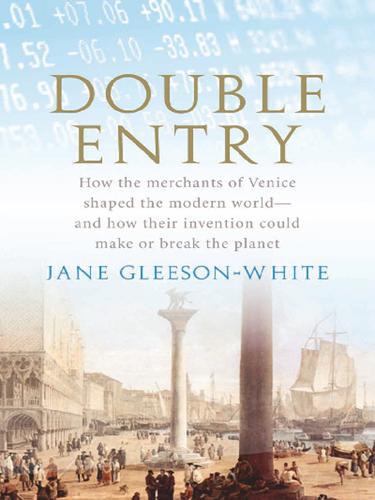
Double Entry: How the Merchants of Venice Shaped the Modern World - and How Their Invention Could Make or Break the Planet
by
Jane Gleeson-White
Published 14 May 2011
A United States Senate Committee discussed the GDP’s failure to measure environmental damage, poverty, income inequality, health and the quality of life, as well as the danger of using the GDP to express national wellbeing. At the time of the Senate hearing, there was no US legislation to accommodate a possible revision to US national accounting. But two years later, on 23 March 2010, President Barack Obama signed into law the Patient Protection and Affordable Care Act which contains one small section—section 5605—which requires that Congress help fund and oversee the creation of a new ‘key national indicators system’. The ‘State of the USA’, a set of measurements independently created by its president and CEO Chris Hoenig, will become that system. Founded as a tax-exempt organisation in 2007, the State of the USA contains several hundred new measures—for health, education, ageing, families and children, crime and justice, arts and culture, the environment, the economy—which will be freely accessible online.
…
Crusades 16, 17, 18 currencies 100 da Gama, Vasco 29 da Pisa, Leonardo see Fibonacci da Vinci, Leonardo 7, 27, 32, 47, 60, 65, 80–2, 84, 87–8 Dafforne, Richard 120–3 Dandolo, Enrico 52 Dark Ages dark arts 35, 83 Darwin, Charles 139, 165 Das Kapital (Marx) 165 Dasgupta, Sir Partha 231–2, 237, 238, 239 Datini, Francesco 23–6, 52, 96 de’ Barbari, Jacopo 79 de’ Belfolci, Folco 34, 44 De divina proportione (Pacioli) 66, 82, 84, 85–6 De ludo scacchorum (Pacioli) 87–8 De pictura (Alberti) 60, 117 De quinque corporibus (Piero) 66 De viribus quantitatis (Pacioli) 83 Dean, Graeme W. 203 debit and credit entries 13, 55, 93–4, 100 difficulties 101–2, 122–3 The Decline of the West (Spengler) 167 Defoe, Daniel 127–8 della Francesca, Piero 7, 32, 34, 44–5, 46, 47 mathematical treatises 45, 66, 75 perspective painting 60, 64, 76–7 della Rovere, Giuliano 59 Deloitte, William 145 Deloitte Touche Tohmatsu 217 demand management 185 democracy 15 depreciation 148, 149, 231 Der moderne Kapitalismus (Sombart) 161–2, 171 derivatives market 198, 200 Descartes, René 40 d’Este, Isabella 83, 84, 88 dividends 144, 146, 147, 148, 149, 202 Doge’s Palace 50, 56 Domenici, Pete V. 191 domestic accounts 15–16 double-entry bookkeeping 8, 115, 120, 166 Badoer’s system 55 and capitalism 159–60, 161–75 and decision-making 126–7 earliest surviving 20–1 to improve the mind 125 link with rhetoric 172–3 in modern era 135–6, 249 origins 6–7, 16, 21–2 Pacioli’s definition 92–3 six essential features 20–1 texts on 117, 136 use by Datini 24, 26 Venetian 55, 67, 97–100, 123–7, 131 see also Particularis de computis et scripturis du Pont, Irénée 156 ducats 50, 55 Dürer, Albrecht 79–80 earnings per share (EPS) 219 earth see planet Earth Earth Summit 2012 248–9 East India Company 142 Ebbers, Bernie 213 eco-accounting 249 economic growth 192–3, 225, 227, 233, 242, 245, 248 economics 185 political economy 171 ecosystems 239–40, 247 education 245 Euclid’s Elements 37–8 quadrivium 36, 38, 43 trivium 38, 43 Egypt 35, 36 Eisenstein, Elizabeth 116–17 Elements (Euclid) 37–8, 39, 67, 68, 84 Elgin Marbles 15 Engels, Friedrich 162, 164, 165 England 116, 121, 131, 133, 147 Enron 3, 173, 194–9, 201, 207, 212–13, 214–16, 222–3 environmental accounting 233–8, 245, 247 environmental damage 222–3, 224–5, 232–3, 240, 241–2, 248 equity 21, 243 Erasmus of Rotterdam 68, 84–5 Erlich, Everett 235 Ernst & Young 209, 210, 216, 217 Espeland, Wendy Nelson 172–3 Euclid, Elements 37–8, 39, 67, 68, 75, 84 Eugenius IV, Pope 34 Europe 17, 20, 21, 22–3, 40, 116, 156, 188 accounting associations 153 currencies 25 medieval 26, 70–1 universities 30, 40, 42 vernacular languages 41 European Environment Agency 247 Evans, John H. 173–5 exchange rates 55 externalities 236 factory system 136–7, 138, 139–41, 165, 166 Farolfi ledger 20–1 Fastow, Andrew 213 Fells, J.M. 140–1 Fibonacci 18–19, 75 Fibonacci numbers 19–20 Liber abaci 19–20, 22, 39–41, 63, 66, 67, 75 Financial Accounting Standards Board (US) 206, 213 financial information 203–6 financial statements 5, 143, 144, 146, 200, 205, 214, 215 Fitoussi, Jean-Paul 243–4 Florence 6, 17, 34, 61, 64, 84 abbaco schools 41 bank ledger 20 expansion of commerce 21 Flugel, Thomas 127 Fondaco dei Tedeschi 56 Ford Motor Company 250–1 forests 240, 241 Forster, E.M. 154–5 Forster, Nathaniel 137 France 147 Franciscans 62, 65, 88, 89 Frankfurt Book Fair 95 Frederick II 95 Freiburg 27 Friedman, Milton 221 fund transfers 54 G20 249 Galileo 116, 166 Geijsbeek, John B. 157–8 General Electric 204 The General Theory of Employment (Keynes) 177–8, 179, 183, 185–6 Genoa 6, 17 geometry 36, 37, 38, 63, 73, 75, 81 Germany 56, 68, 183 Gertner, Jon 244 Giovanni, Enrico 244 Giovanni Farolfi & Co. 20 Glitnir 5 Global Biodiversity Outlook 3 (Sukhdev) global financial crisis (2008) 3, 5, 197, 215, 242, 243–4 globalisation, of finance 206–7, 219, 221 Goethe, Johann W. von 128–31 golden ratio 66, 86 Goodwin, Sir Fred 197 governmental accounting 120 grammar 38, 43 Great Depression 177, 178, 179, 180, 227 Greece, ancient 15 mathematics 34–5, 37–8, 61 philosophers 37 green accounting 244 Green Economy Report (Sukhdev) 248–9 Greenspan, Alan 227–8 Gross Domestic Product (GDP) 3, 180–2, 225, 227–30, 232–3, 235, 237–8, 242–3, 246 alternatives to 243–7, 249 failings of 246 Gross National Product (GNP) 1–3, 181, 190, 231 Groves, Eddy 208–9 Guidobaldo, Duke of Urbino 66, 72, 79, 92 Gutenberg, Johann 68, 77 Hagen, Everett 186 Hamilton, Alexander 22 Hammurabi’s Code 14 Haq, Mahbub ul 245 Henry VIII 25 Herodotus 36 HIH 208, 209, 213, 215 Hindu–Arabic arithmetic 34, 41, 62, 67 Hindu–Arabic numerals 18–19, 21, 26–7, 38, 44, 52, 71, 75 Hoenig, Chris 246–7 honeybee pollination 237 Hoover, Herbert 177 Hopwood, Anthony housework, unpaid 229 How to Pay for the War (Keynes) 182–3 Hudson, George 142–3 human capital 231, 248 Human Development Index 245 Humanism (Florence) 43–4, 59–60, 68 Huxley, Aldous 32–3 income measurement 218–19, 226 income statements 5, 202, 203, 219 in ancient Rome 16–17 see also profit and loss accounts India 29, 238 trade/double entry 22 Indonesia 240 industrial revolution 131, 133, 139, 200, 226 inflation 182, 183 information processing 203 Institute of Accountants and Bookkeepers of New York (IABNY) 156, 157 Institute of Chartered Accountants in England and Wales (ICAEW) 153, 205–6 Insull, Samuel 202, 214 Insull Utility Investments 201–2 interest payments 25, 54, 96 international accounting 189, 207 International Accounting Standards Board 207, 214 International Monetary Fund 187 internet 204 inventory 97–9, 101 Islam 22, 39 Italy 6, 7, 16, 19, 28, 167–8 mathematics 34–42, 62 Jerusalem 17 joint stock companies 133, 136, 142, 147, 148 Joint Stock Companies Act 1844 144, 149 Jones, Edward T. 133–6 Jones’ English System of Book-keeping 133–6 journal 99, 100, 101, 103, 118, 203 Julius II, Pope 59 Kennedy, Robert F. 1–3, 229–30, 246 Keynes, John Maynard 8, 176, 177–80, 182–7, 190, 250 Klein, Naomi 221, 233 KPMG 210, 214, 217 Kreuger, Ivar 201 Kreuger & Toll 201 Kublai Khan 18 Kuznets, Simon 2, 177, 180–1, 189, 229 Lanchester, John 4, 198 Landefeld, Steven 228 Landsbanki 5 Latin 35, 41, 63, 71, 72, 73, 74, 116, 220 Lawrence, D.H. 154–5 Lay, Kenneth 195, 196, 197, 212–13, 214 ledgers 20, 93, 99–100, 103–4, 118, 203 14th century 24, 93 Badoer’s 52, 55 balancing 111 closing accounts 111–13 Farolfi 20–1 Lee, G.A. 20–1 Lee, Thomas A. 203 Lehman Brothers 5, 216 Liber abaci (Fibonacci) 19–20, 22, 39–41, 63, 66, 67, 75 limited liability 147–8, 149 Littleton, A.C. 17, 140, 146, 147, 158–9 Liverpool and Manchester Railway 141 Lives of the Most Eminent Painters (Vasari) 46 Living Planet Survey 241–2 Lloyds-HBOS 5 London and North Western Railway 141 Louis XII 82 Machiavelli 30 Mackinnon, Nick 79–80 Madoff, Bernie 142 Madonna and Child with Saints 47 magic 35, 40, 83, 220 Mair, John 118, 125, 130 Malatesta family 33–4, 43 Malthus, Thomas 171 Manchester cotton mill (Engels) 165 Mandela, Nelson 221 Mantua 83, 84 manufacturing 136–41 manuscripts 61, 70, 77 Manutius, Aldus 84 Manzoni, Domenico 118–19 maritime insurance 53 Mark the Evangelist 51–2 marketplace, 15th century 95 markets, impact on politics 221, 228 mark-to-model 213 Marshall Plan 188 Marx, Karl 162, 163–5, 171 mass production 138 mathematics 7, 22, 28, 47, 89–90 ancient Greek 34–5, 37–8, 63 Arab 18–19, 63 and art 85–6 Hindu 39–40 in Italy 34–42 and magic 35, 40, 220 medieval European 63, 251–2 taught as astrology 29–30, 42 universal application 73, 116–17 see also arithmetic Mattessich, Richard 12–13, 186 Maurice, Prince of Orange 120 Maxwell Communications 207 McDonald’s 224 Meade, James 183–4 measurement 23, 218–19 Medici of Florence 26, 64, 80, 168, 171 Mehmed II 57 Mellis, John 121 memorandum (waste book) 99, 101, 118 entering transactions 105–7, 118, 122 merchandise 104 merchant bankers 21, 26, 69 merchants 10, 23, 35, 41 Arab 18–19, 25 Indian 22 Italian 40, 42 Phoenician 36 Venetian 18, 27, 55–6, 69, 94–5, 149 Mesopotamia 12, 13, 14 metaphysics 36–7 Middle Ages 60, 251–2 Milan 30, 34, 47, 61, 80–3 Millennium Ecosystem Assessment 239 Monsanto 222 Monteage, Stephen 124, 126 Morgan, John Pierpont 156 multiplication 74, 75–6 music 36, 38 Naples 50, 61–2 Napoleonic War 145 national accounts 175, 179–88, 190–3, 226–7, 230, 242, 244 natural capital 230–1, 235–9 navigation charts 23 Neighborhood Tree Survey (NY) 241, 244 Netherlands 119, 120 New Deal (Roosevelt) 177, 202 New York Light Company 155 New York Stock Exchange 155, 176, 201 New Zealand 153, 230 Nicholas V, Pope 61 No Royal Road: Luca Pacioli and his times (Taylor) 46–7 Nordhaus, William D. 180, 191, 227 numbers 37, 218, 219–20, 249 Obama, Barack 215, 246 O’Grady, Oswald 208 Oldcastle, Hugh 121, 124 Olmert, Michael 168 One.Tel 208, 209, 213, 215 Organisation for Economic Co-operation and Development (OECD) 190, 242 Organisation for European Economic Co-operation (OEEC) 188 Ormerod, Paul 244 Ottoman Empire 29, 34, 50, 51, 56, 57, 116 Pacioli, Luca 7, 8, 27–8, 34, 35, 161, 219 abbaco mathematics 40, 41 as academic 65, 80, 84, 89 astrologer 42 birth 30 bookkeeping treatise see Particularis de computis and Piero della Francesca 45–6, 47–8 education 43–8 encyclopaedia see Summa de arithmetica on Euclid 84–5 games/tricks 83–4 itinerant teacher 61–6 last years 88–90 and Leonardo da Vinci 80–2, 84 in Milan 80–3 portrait 47, 79–80 and the printing press 66–72 remembered in Sansepolcro 31–2 in Rome 58–61 in Venice 49–58 Paganini, Paganino de 67–8, 71–2, 78, 85 painting 60, 64, 81 Pakistan 224, 245 Paris 23, 50 Particularis de computis et scripturis (Pacioli) 29–30, 78, 90–114, 117–18, 121 and capitalism 163 foundation of modern accounting 30, 75, 131, 157–9, 166 profit calculation 146–7 partnerships 108–9, 147 Patel, Raj 222, , 224 Patient Protection and Affordable Care Act 2010 (US) 246 patronage 59, 67, 70, 72 Paul II, Pope 59 Payen, Jean-Baptiste 139–40 Peking 18 Perspectiva (Witelo) 64 perspective 23, 42, 45, 60, 64, 76–7, 80, 82 Perugia 62–3, 64, 65 Petty, William 180 phi 86 Philip VI 23 philosophy 37, 40 Phoenicians 36 pi 36 Piazza San Marco 56 Pinto cars 250–1 Pisa 6, 17 Pitcher Partners 209, 210, 211–12 plagiarism 63 planet Earth 8–9, 248 accounting for 254 effects of cost-benefit approach 175 health of 224–5, 239 Plato 37 Platonic solids 45, 79, 86 Pliny the Elder 16 pollution 244 Polly Peck International 207 Polo, Marco 18 Ponzi scheme 142 Postlethwayt, Malachy 124 poverty 237, 246, 248, 249 Prato 23–4 Price, Samuel 145 Price Waterhouse 201, 207 PricewaterhouseCoopers 217 principlism 173–4 printing 29, 45, 60, 63, 66–72, 77–8, 90, 115–17 profit 21, 24, 97, 102–3, 127, 146–8, 159, 161, 167, 169 profit and loss accounts 55, 109–11, 112, 166 Pythagoras 35, 36–7 quadrivium 36, 38, 43 quant nerds 220 railways 141–3, 231 Ramsay, Ian 211 Ratdolt, Erhard 68, 116 record-keeping 15 Reformation 33 regulation 206–14, 215 Reid Murray Holdings 207–8 religion 24, 96, 116, 124–5, 220 see also Christian Church; Islam Renaissance 7, 8, 23, 26, 36, 59, 80, 86, 89, 168 art 6, 7, 44, 60, 86 Resurrection (Piero) 32, 33 retained-earnings statements 5, 219 rhetoric 172–3 Rialto 50, 55, 108 Ricardo, David 171 Rich, Jodee 213 Rinieri Fini & Brothers 20 Ripoli Press 70 Robert of Chester 39 Rockefeller, John D. 156 Roman numerals 19, 26–7, 38, 40, 71, 116 Romantic poets, English 131, 154 Rome 58–61, 64, 89 ancient 15–16 Rompiasi family 57, 58, 97 Roosevelt, Franklin D. 177, 178, 181, 202, 214, 215 Rose, Paul L. 71 Ross, Philip 209–10, 211 Rothschild banks 133 Royal Bank of Scotland 173, 197–8 royal estate management 16–17 Rule of Three 38, 41 Russia 153–4 salt 51 Samuelson, Paul A. 191, 227 Sansepolcro 30–4, 43–4, 48, 65, 77, 88–9, 168 Sanuto, Marco 66, 72 Sarbanes, Paul 191 Sarbanes-Oxley Act 2002 212, 215 Sarkozy, Nicolas 242–3, 245 satellite accounts 234–5 scandals/fraud 194–203, 206, 207–12, 215, 225 Schmandt-Besserat, Denise 11–12 Schumpeter, Joseph 169–70 science 35, 37, 40, 42, 67, 76, 116, 166–7 Scotland 27, 147, 150, 153 Scott, Sir Walter 150–1 Scuola di Rialto 58 Second World War 32, 181–5, 187, 227 Securities and Exchange Commission (US) 202–3, 213, 214 Sen, Amartya 243–4, 245 Sforza, Ludovico 80, 81–2, 85, 86, 168 Sikka, Prem 216, 217 Silberman, Mark 213 Simons, James 220 Sistine Chapel 65 Sixtus IV, Pope 59 Skidelsky, Robert 178, 182, 187 Skilling, Jeffrey K. 196, 197, 212, 214 Smith, Adam 171 social sciences 171, 175 socialism 171 Society of Accountants, Edinburgh 152 Sombart, Werner 161–2, 164, 165–6, 166–8, 169, 170, 171–2, 173 Spain 22, 39 Spengler, Oswald 167 Sri Lanka 232–3, 240 State of the USA 246 Stevin, Simon 120, 121, 166, 169 Stiglitz, Joseph 243–4 Stiglitz-Sen-Fitoussi Commission 243–4 stock markets 143 stocktaking 166 Stone, Sir Richard 183–5, 188–9, 190 sub-prime mortgages Sukhdev, Pavan Summa de arithmetica (Pacioli) 57, 61, 62–3, 64, 72–7, 80, 82 printing 66–8, 71–2 publication 32, 77–9 sustainability 232, 243, 249 System of Integrated Environmental and Economic Accounting (UN) 234 System of National Accounts (UN) 189–90, 247 tabulae rationum 16 Taleb, Nassim N. 220 tariffs 63 Tartaglia, Nicholas 76 Taylor, R.

San Fransicko: Why Progressives Ruin Cities
by
Michael Shellenberger
Published 11 Oct 2021
Finally, the Netherlands’ big success was with heroin, which has effective pharmacological substitutes, methadone and Suboxone, not with meth, which lacks anything similar. But there may be fewer obstacles than appear. The Netherlands has a private health-care insurance system similar to that of the United States and covered the people who needed health care in ways similar to Medicaid and the Affordable Care Act, which significantly expanded access to drug treatment, including medically assisted treatment, in the United States.4 San Francisco subsidizes a significant quantity of housing, as we have seen. While California is larger than the Netherlands, the population of Amsterdam (872,000) is nearly identical to San Francisco’s (882,000).5 And while California’s population and geographic area are larger and more difficult to manage than those of the Netherlands, California also has significantly greater wealth and resources, constituting in 2019 the fifth-largest economy in the world.6 And the approach to breaking up open drug scenes, treating addiction, and providing psychiatric care is fundamentally the same whether in five European cities, Philadelphia, New York, or Phoenix.
…
New programs included Supplemental Security Income (SSI) program (1972); the Women, Infants, and Children (WIC) nutrition program (1972); Pell Grants (1972); the Earned Income Tax Credit (1975); the child support program (1975); Low Income Home Energy Assistance Program (1981); Children’s Health Insurance Program (1997); Medicare Part D subsidy for low-income Americans (2003); and the Affordable Care Act (2010). The disabled have gone from being treated as subhuman a mere century ago to being treated with more dignity and generosity than many thought possible. Federal financial support for people with disabilities, both physical and mental, has grown nearly fourfold, from $40 billion in 1978 to $149 billion in 2019, adjusted for inflation.30 Before the passage of welfare reform in 1996, Congress and President Bill Clinton significantly expanded the Earned Income Tax Credit, which gives money directly to low-income workers, and disability payments in the form of Supplemental Security Income.
…
Rene Zegerius, interview by the author, December 2020. 2. Helge Waal et al., “Open Drug Scenes: Responses of Five European Cities,” BMC Public Health 14, no. 853 (2014), doi:10.1186/1471–2458–14–853. 3. Rene Zegerius, interview by the author, December 2020. 4. Amanda J. Abraham et al., “The Affordable Care Act Transformation of Substance Use Disorder Treatment,” American Journal of Public Health 107, no. 1 (2017): 31–32, doi:10.2105/AJPH.2016.303558. 5. “Amsterdam Population 2020,” World Population Review, accessed January 19, 2021, www.worldpopulationreview.com; “San Francisco County, CA Population 2020,” World Population Review, accessed January 19, 2021, www.worldpopulationreview.com. 6.

Too Much and Never Enough: How My Family Created the World's Most Dangerous Man
by
Mary L. Trump
Published 13 Jul 2020
Within a month of the election, I found myself compulsively watching the news and checking my Twitter feed, anxious and unable to concentrate on anything else. Though nothing Donald did surprised me, the speed and volume with which he started inflicting his worst impulses on the country—from lying about the crowd size at the inauguration and whining about how poorly he was treated to rolling back environmental protections, targeting the Affordable Care Act in order to take affordable health care away from millions of people, and enacting his racist Muslim ban—overwhelmed me. The smallest thing—seeing Donald’s face or hearing my own name, both of which happened dozens of times a day—took me back to the time when my father had withered and died beneath the cruelty and contempt of my grandfather.
…
Index A note about the index: The pages referenced in this index refer to the page numbers in the print edition. Clicking on a page number will take you to the ebook location that corresponds to the beginning of that page in the print edition. For a comprehensive list of locations of any word or phrase, use your reading system’s search function. Access Hollywood, 10 Affordable Care Act, 15 AIDS, 134 Air Force National Guard, 53, 54–55, 65, 84 Air Force Reserve Officer Training Corps (ROTC), 51–52, 53, 66 air travel, 61 see also pilots Alcoholics Anonymous, 92 All County Building Supply & Maintenance, 191–93 All Faiths Cemetery, 126, 166 Annamaria (girlfriend of Billy Drake), 71, 85 Apprentice, The, 11, 182, 196 Art of Survival, The (Surviving at the Top) (Trump), 132, 136, 146 Art of the Comeback, The (Trump), 145–49, 151–52, 162–63 Art of the Deal, The (Trump), 94–95, 146 Atlantic, 200 Atlantic City, N.J., 35, 132, 134–37, 142, 151, 184, 192 attachment, 23, 25 AZT, 134 Barnosky, Jack, 174–76, 186–87 Barr, William, 12 Barry, John, 115, 143–44, 151, 168 Barry, Maryanne Trump, 2, 5, 32, 33, 44, 45, 47, 50, 51, 56, 63, 65, 72, 81–83, 95, 108–9, 112, 115, 122, 128, 154, 155, 158, 161, 165, 173, 177, 183–84, 188–89, 193–94 birth of, 31 Catholic conversion of, 9, 81 childhood of, 24, 26, 28, 35, 40 deprivation of, 82–83 Donald and, 60 and Donald’s attempt to control Fred’s estate, 143–44 Donald’s presidential campaign and, 8–9, 10 family finances and, 190–93 father’s will and, 168, 170, 171, 173–76 law career of, 60, 94, 134, 143, 189, 193 marriage to David Desmond, 56, 81–83, 94 medical insurance and, 174 mother’s health problems and, 21–22, 24 New York Times exposé and, 193 retirement of, 193 and sale of father’s estate, 192–93, 196 son of (David Desmond, Jr.), 2, 28, 82, 95–96, 122, 154, 166, 193 at White House dinner, 1, 2, 4, 7 Barstow, David, 187–89, 193 Beach Haven, 25, 28, 35, 54, 90, 171 Beame, Abe, 114 Bedminster, N.J., 115, 181 Bishop, Joey, 111 Bonwit Teller, 133 Booth Memorial Hospital, 121, 131 Brooklyn: Beach Haven in, 25, 28, 35, 54, 90, 171 Democratic Party in, 34, 54, 73 Donald’s view of, 89–90 Steeplechase Park in, 67–68, 72–76, 78–79, 87, 88, 89, 102, 141 Trump Village in, 56, 57, 68, 74, 88, 89 Buettner, Russ, 187, 188 Burnett, Mark, 11, 196 Carey, Hugh, 114 Carrier Clinic, 115 Celebrity Apprentice, The, 166 Central Park Five, 204 Charles, Prince, 164 Chase Manhattan Bank, 60 Chauvin, Derek, 210 child abuse, 26, 42 child development, 23 attachment in, 23, 25 Christmas, 106, 108–11 Clapp, Mike, 56, 77–78 Clinton, Hillary, 3, 9, 10, 15 Cohn, Roy, 100–101, 107, 134, 189 Columbia University, 139–40 Commodore Hotel, 105, 114, 141, 197 Coney Island: Beach Haven, 25, 28, 35, 54, 90, 171 Steeplechase Park, 67–68, 72–76, 78–79, 87, 88, 89, 102, 141 Trump Village, 56, 57, 68, 74, 88, 89 Corn, David, 185, 210 COVID-19 pandemic, 13–14, 201–2, 204, 207–10 Craig, Susanne, 185–88 Cuomo, Andrew, 208 Dale Carnegie courses, 37, 89 D’Amato, Al, 166 Defense Production Act, 209 Democratic Party, 34, 54, 73 Depression, Great, 35 Derner Institute of Advanced Psychological Studies, 12 Dershowitz, Alan, 101 Desmond, David, Jr., 2, 28, 82, 95–96, 122, 154, 166, 193 Desmond, David, Sr., 56, 81–83, 94 Diagnostic and Statistical Manual of Mental Disorders (DSM-5), 12 Diana, Princess, 164 Dixon, James, 22 Drake, Billy, 40, 52, 64, 71, 85, 124, 158 Dunn, Diane, 118–19, 122 Durben, Irwin, 85, 127, 128, 143, 170–71 East, Ernie, 145 Eastern Air Lines Shuttle, 134 election of 2016, 14–15, 204 empathy, 23, 24, 26, 209–10 Esquire, 14 Ethel Walker School, 116–20 E.

Twilight of the Elites: America After Meritocracy
by
Chris Hayes
Published 11 Jun 2012
Thirty years ago it would have been totally inconceivable for the average citizen to read the full text of a bill Congress was about to debate and vote on. Today it’s available to anyone with an Internet connection. Of course, the usefulness of this access is limited. Anyone with an Internet connection could have read the entirety of the Patient Protection and Affordable Care Act, but at two thousand pages, almost no one did. In fact, the possibility of access to information that we can’t possibly process induces a constant thrum of anxiety among conscientious citizens, one for which there is no obvious remedy. The combination of disclosure and technology allows us to know more than we’ve ever known about just about every one of our pillar institutions—the latest SEC filings, last night’s cable news ratings, and the latest bits of rumor and gossip circulating through Wall Street circles and posted to insider financial blogs.
…
So we find ourselves in the paradoxical situation of knowing more than we need to and yet still not enough. We know the latest whereabouts of Britney Spears, but not how much money we spend on spy satellites; we have access to every single one of the two thousand pages that make up the Patient Protection and Affordable Care Act, but we don’t definitively know what kind of deal the White House struck with the big pharmaceutical companies to get it passed. We can read and instantly translate any newspaper from around the world but don’t know which of our major financial institutions are insolvent. We live in an informational interregnum.

The Socialist Manifesto: The Case for Radical Politics in an Era of Extreme Inequality
by
Bhaskar Sunkara
Published 1 Feb 2019
But from the perspective of an ordinary person—maybe looking down at the local classified ads, or at a meager paycheck, or at a stack of mortgage bills—this rosy picture did not correspond to reality. Obama might have stabilized a volatile economy, but he did little to confront powerful business interests. Even Obama’s signature achievement—the Affordable Care Act (ACA), which expanded health insurance to millions of Americans through Medicaid and protected those with preexisting conditions—was conceived not as an offensive against the for-profit health care system but as a great compromise with it. The most prominent political revolt during this period came in response to the ACA, but it did not come from the Left.
…
“The First International: Inaugural Address of the International Working Men’s Association,” International Working Men’s Association, 1864, marxists.org/archive/marx/works/1864/10/27.htm; Christian Parenti, “Why the State Matters,” Jacobin, October 30, 2015, jacobinmag.com/2015/10/developmentalism-neoliberalism-climate-change-hamilton. INDEX abortion, 122 Adbusters (magazine), 196 Affordable Care Act (ACA), 195 Afghanistan, 153 Agrarian Party, Sweden, 113, 114 Agrarian Reform Law, 140 Agricultural Producers’ Cooperatives (APCs), 142–143, 145 Akulov, Ivan, 94 Allende, Salvador, 151 Alliluyeva, Nadezhda, 102 Alphabet, 204–205 Alternative Economic Strategy, 207 American Federation of Labor (AFL), 163, 165, 169, 175, 176 American Student Union, 178 American Workers League, 161 anarchism, 56, 163, 170, 197 anticolonialism, 74, 129–131, 147, 156 Anti-Dühring (Engels), 59–60 anti-imperialism, 74, 129–131, 147, 156 anti-oppression, 199, 201–202, 208, 226, 234–236.
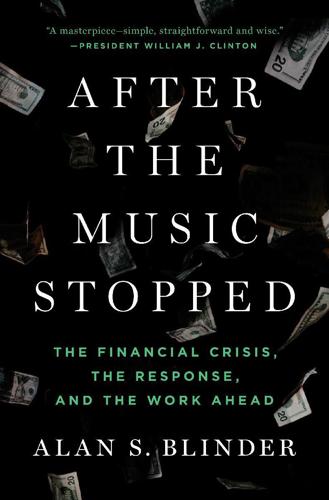
After the Music Stopped: The Financial Crisis, the Response, and the Work Ahead
by
Alan S. Blinder
Published 24 Jan 2013
They go on: “If health care costs continue to grow as fast as CBO and the Medicare actuaries project . . . this process will require Congress and the President to consider further actions that make more substantial structural reforms.” Got that? In short, Simpson and Bowles, brave as they were, punted on the most critical issue. I don’t blame them. Some people believe that President Obama’s health reform, the Affordable Care Act of 2010, contains seeds that will eventually blossom into major cost controls. Others are deeply skeptical. The truth is that, right now, nobody knows how to slow the seemingly inexorable growth of health care costs—short of outright rationing, which no one wants. Social Security The Simpson-Bowles plan takes an even smaller nick out of Social Security, though here it’s mainly a matter of timing.
…
To find the corresponding locations in the text of this digital version, please use the “search” function on your e-reader. Note that not all terms may be searchable. Adjustable-rate mortgages (ARMs) default as design of, 70–71, 321–22 option ARMs, 71 Advance Notice of Proposed Rulemaking (ANPR), 315–16 Affordable Care Act (2010), 406 Aggregate demand sources of, 211 stimulating, 211–12 AIG (American International Group) bailout of, 136–40 bonus payouts after bailout, 137–38, 297 collateral to Fed, 136–37 competitive edge of, 131–32 credit default swaps (CDS), 66–67, 131–35 credit risk owned by (2007), 133, 134 financial decline of, 134–36 haircut/bailing in error, 138–40 history of, 130–31 liquidity crisis, 135–36 nationalization of, 6, 67, 129, 136 regulatory failure with, 131–33 American International Group.
…
See Foreclosures refinancing, precollapse, 38 Mozilo, Angelo, 164, 305 Naked CDS, 66, 280, 302 National Commission on Fiscal Responsibility and Reform, 397 National Economic Council (NEC), 214, 216 Negative amortization loans, 71 Negative net worth, 103–4 New Century Financial Corporation, 69 New Deal reforms for housing crisis, 324–25 regulatory agencies created, 265–66, 288 New jobs tax credit (NJTC), 229–30 News, and efficient markets hypothesis, 64–65, 103 Newton, Isaac, 47 NINJA loans, 70 Nominal interest rates, 376–78 Nonbank lenders shadow banking system, 59–64 unregulated and subprimes, 59 Nonrecourse loans for commercial paper, 147–48 for troubled asset purchases, 206–7 Northern Rock, 95, 168 Notional values, derivatives, 62 Obama, Barack, 212–20 Affordable Care Act (2010), 406 on AIG bailout, 138 backlash against, 347–48 bipartisan goals of, 220, 227 Dodd-Frank Act of 2010, 303–19 economic conditions upon election, 212, 218, 346–47 economic Dream Team, 214–17 election of 2008, 203–4 federal budget deficit efforts, 396–400 and fiscal cliff, 360 foreclosure mitigation efforts, 332–38 payroll tax cuts, 360 policy agenda, scope of, 218–20, 361 regulatory reform agenda of, 291–98 shortcomings regarding crisis, 217, 218, 220, 256–57, 325, 357–58, 361, 439, 440 stimulus package, 223–36 on Volcker Rule, 312 Occupy Wall Street, 7, 363 O’Donnell, Christine, 362 Office of Federal Housing Enterprise Oversight (OFHEO), 117–18 Office of the Comptroller of the Currency (OCC), 275, 302 regulatory failure of, 57–58 Office of Thrift Supervision (OTS), 131–32, 275, 302 O’Neal, E.

The World as It Is: A Memoir of the Obama White House
by
Ben Rhodes
Published 4 Jun 2018
But 2010 would be the last year when foreign policy felt somewhat routine; those meetings would become far more consequential soon enough. In many ways, my job that year was to help keep things calm on our accounts while Obama pursued his domestic agenda, particularly healthcare. The night that the Affordable Care Act passed Congress, Obama had a small group of us up to the White House residence to celebrate. He looked as if a weight had been lifted off his shoulders as he hoisted a martini glass on the Truman Balcony and told us, “This is what we all came here to do—this.” Standing there, I realized everyone in the White House supported the totality of his agenda—not just our pieces.
…
“You can see it right back to some of the characters in Huckleberry Finn.” Obama chuckled. “Maybe that’s the best we can hope for.” In breaks between meetings in the coming days, he expressed disbelief that the election had been lost. With unemployment at 5 percent. With the economy humming. With the Affordable Care Act working. With graduation rates up. With most of our troops back home. But then again, maybe that’s why Trump could win. People would never have voted for him in a crisis. He kept talking it out, trying on different theories. He chalked it up to multiple car crashes at once. There was the letter from Comey shortly before the election, reopening the investigation into Clinton’s email server.
…
Obama and Reggie Love taking a private tour of the Pyramids in Giza shortly after the Cairo speech, June 4, 2009. (PHOTO BY CODY KEENAN) With fellow speechwriters Jon Favreau and Cody Keenan and communications director Dan Pfeiffer on the Truman Balcony after the Affordable Care Act passed Congress, March 21, 2010. The spot in Hawaii where Obama’s mother used to come and sit when she was pregnant. He attributed his calm demeanor in part to this place. With campaign spokeswoman Jen Psaki in Iowa on the eve of Election Day 2012.
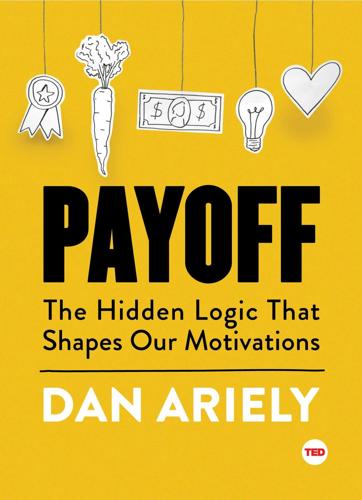
Payoff: The Hidden Logic That Shapes Our Motivations
by
Dan Ariely
Published 15 Nov 2016
RATIONAL REGULATION As if setting up the motivational forces at work is not sufficiently complex, consider the even more complex task of policymakers. When policymakers set up regulations, they are trying to create sets of motivations that, combined, compel us to behave the way they want us to behave. For example, consider massive regulations such as the No Child Left Behind (now defunct) or the Affordable Care Act. These complex policies use a mix of incentives that range from financial rewards to penalties, from prohibitions and restrictions to public pride and shaming (also known as “accountability”). All of these positive and negative incentives are designed to spur specific intended behaviors and fix the problems in education and health care.

War for Eternity: Inside Bannon's Far-Right Circle of Global Power Brokers
by
Benjamin R. Teitelbaum
Published 14 May 2020
Executive orders and presidential memoranda are declarations issued by the president, typically concerning the functioning of the U.S. government, that carry the force of law. And on this day, President Trump chose to issue an order, 13765, titled “Minimizing the Economic Burden of the Patient Protection and Affordable Care Act Pending Repeal.” Its purpose was to prompt federal agencies to stop enforcing key aspects of President Obama’s healthcare reform legislation, and it appeared the opening move in Trump’s plan to repeal the program altogether. That was Friday. The following Monday, on January 23, President Trump issued a number of presidential memoranda.
…
District Court for the Eastern Division of Virginia, Alexandria division. Case number 1:19mj315. physically beaten: Simon Murphy, “‘A Couple of Black Eyes’: Johnson and the Plot to Attack a Reporter,” Guardian, https://www.theguardian.com/politics/2019/jul/14/black-eyes-boris-johnson-plot-attack-reporter-darius-guppy. Index Affordable Care Act, 118 Ali-Shah, Omar and Idries, 134–35 alt-right movement AltRight Corporation and, 208–12, 213–23, 241–46, 266 (see also Jorjani, Jason Reza) Breitbart and, 241, 304n funding for, 217–20, 241–46 Unite the Right (Charlottesville) rally, 235–47 white nationalism of, 215–23 Andrade de Souza, Roxane, 134, 139, 177, 251–57 Antifa, 239 anti-Semitism.
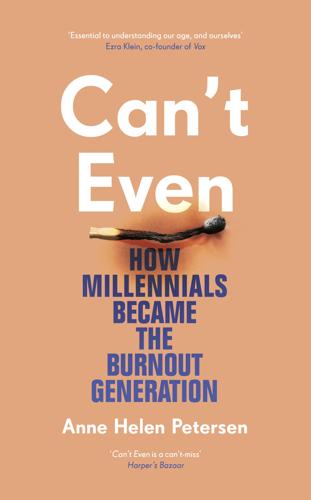
Can't Even: How Millennials Became the Burnout Generation
by
Anne Helen Petersen
Published 14 Jan 2021
From the outside, freelancing seems like a dream: You work when you want to work; you’re ostensibly in control of your own destiny. But if you’re a freelancer, you’re familiar with the dark side of these “benefits.” The “freedom to set your own hours” also means the “freedom to pay for your own healthcare.” The passage of the Affordable Care Act has made it easier to purchase an individual plan off the marketplace. But before that—and given the concerted attempt to undercut the ACA—obtaining affordable healthcare as a freelancer has become increasingly untenable. In California, one person told me that the cheapest insurance they could find—for one person, with very little coverage and a high deductible—goes for $330 a month.
…
Index The page references in this index correspond to the print edition from which this ebook was created, and clicking on them will take you to the location in the ebook where the equivalent print page would begin. To find a specific word or phrase from the index, please use the search feature of your ebook reader. academia, 39, 84–85 adulting, xiii–xiv Affordable Care Act, 138 Afterschool Alliance, 214 Alden Global Capital, 104 Alexa (Echo device), 149, 151 All the Rage (Lockman), 226 Amazon, 105, 108, 127, 133, 157 Ambitious Generation, The (Schneider and Stevenson), 62 American Hotel and Lodging Association, 111 American Time Use Diaries, 180 Apple, 112, 171 Atlantic, 30, 71, 77 attention economy, 155 Awl, 140 Barbaro, Michael, 194 benefits, healthcare, xvii, 6, 69, 107, 109, 111, 115, 138 Big Little Lies (TV series), 239 birth rate, 247–48 Bleacher Report, 140 blue laws, 190–91 boomers American Dream and, 8–9 antisocial thesis, 16–17 definition of, 4 financial comparison, 3 “Me Decade, The,” 5, 11 middle class security and, 17–18, 20 millennials complaints, 1–2 “OK Boomer,” 2 protests by, 9 response to Trump, 167 Yuppies, 18–20 Bowling Alone (Putnam), 199 Brichter, Loren, 156 Brooks, David, 10 Brooks, Kim, 213 Bunderson, J.

Irreversible Damage: The Transgender Craze Seducing Our Daughters
by
Abigail Shrier
Published 28 Jun 2020
Top surgery is an elective procedure that destroys biological capacity, and phalloplasty is full of serious risk. And yet, in the last decade, doctors and clinics began providing gender treatments like these without even requiring a therapist’s note. Why? Part of the answer lies with the Affordable Care Act of 2010, which indirectly forced health insurance companies to cover hormones and surgeries by barring health insurance companies from discriminating based on sexual orientation and gender identity. This meant that if insurance companies provided hormones (like birth control) to the non-transgendered, it had to also provide the expensive cross-sex version to the transgender-identified.
…
A abortion,3 , 25 , 32 Ackerman Institute for the Family,102 addiction,xviii , 16 , 190 , 225 adulthood,5 , 72 , 108 , 146 , 220 “affirmative care.”Seegender-affirming care affirmative therapy.Seegender-affirmative therapy Affordable Care Act of 2010,180 Alcorn, Leelah,51 Amer, Lindsay,66–67 American Psychological Association (APA),98–99 , 102 Angel, Buck,205–7 anime,9 , 88 anorexia nervosa,xix , 33 , 136 Aristotle,114 Arquette, Patricia,144 asexuality,208 asthma,187 , 190 Atlantic, The,4 , 23 autism,64 , 80 , 82 autogynephiles,128 , 130 , 132 Ayad, Sasha,6–7 , 22 , 154 , 211 , 213 B Bailey, J.

Political Order and Political Decay: From the Industrial Revolution to the Globalization of Democracy
by
Francis Fukuyama
Published 29 Sep 2014
One of the most common is mandatory insurance pools, in which the government forces the community to contribute to insurance plans which, in the case of social security, redistribute income from young to old, and in the case of medical insurance, from the healthy to the sick. Many American conservatives denounced President Obama’s 2010 Affordable Care Act as “socialism,” but the fact was that at the time, the United States was alone among rich democratic countries in the world in not having some form of mandated universal health insurance. Liberal theorists from John Locke to Friedrich Hayek have always been skeptical of government-mandated redistribution, since it threatens to reward the lazy and incompetent at the expense of the virtuous and hardworking.
…
The welter of congressional committees with overlapping jurisdiction often produces multiple and conflicting mandates for action, like the “three separate proposals embodying radically different theories about the nature of the problem” that were embodied in the 1990 National Affordable Housing Act, or the multiplicity of mandated ways of enforcing the Clean Air Act. This decentralized legislative process produces incoherent laws and virtually invites involvement by interest groups which, if not powerful enough to shape overall legislation, can at least protect their specific interests.6 For example, Barack Obama’s Affordable Care Act in 2010 turned into something of a monstrosity during the legislative process as a result of all the concessions and side payments that had to be made to interest groups, including doctors, insurance companies, and the pharmaceutical industry. The bill itself ran to nine hundred pages, which very few members of Congress were able to review in any detail.
…
Bill Clinton’s health care plan was formulated in the executive branch by a group of experts operating under the leadership of First Lady Hillary Clinton away from the glare of immediate public scrutiny. This was one important reason that it failed ignominiously to get through Congress in 1993. Barack Obama was able to get the Affordable Care Act passed in 2010 only because he abdicated virtually any role in shaping the legislation, leaving the final bill in the hands of multiple congressional committees. The lack of legislative coherence in turn produces a large, sprawling, and often unaccountable government. Congress’s multiple committees frequently produce duplicative and overlapping programs, or create multiple agencies with similar mandates.

There Is Nothing for You Here: Finding Opportunity in the Twenty-First Century
by
Fiona Hill
Published 4 Oct 2021
At the same time that Trump focused on “unleashing” billionaires and big business, he also launched efforts to weaken American workers’ protections and benefits—just as Margaret Thatcher had targeted the UK “nanny state” in the 1980s. Trump went after trade unions’ efforts to deploy collective bargaining for pay raises and the Obama administration’s Affordable Care Act, which had expanded access to health insurance for millions of Americans, and he rolled back environmental standards and health and safety codes. His antiunion attitude was well documented. He was always railing against unions in meetings, expressing his opposition to organized labor and employees, rather than shareholders, who wanted stakes in companies.
…
They also laid part of the blame for the high mortality rate on the deterioration of the U.S. health system in the previous two decades and on the increase in America’s socioeconomic and spatial inequalities. The commissioners noted that the United States’ long-standing failure to provide full health insurance coverage for the American population, and Trump’s efforts to weaken the Affordable Care Act since 2016, had all contributed to the impact of the pandemic. Trump followed the same pattern on the pandemic that he had on foreign policy. In January 2021, Dr. Anthony Fauci, the director of the National Institute of Allergy and Infectious Diseases at the National Institutes of Health, and an adviser to several American presidents since the 1980s, gave an extensive interview to the New York Times.
…
turn workers into stakeholders: Yuki Noguchi, “Why Chobani Gave Employees a Financial Stake in Company’s Future,” NPR, April 28, 2016, https://www.npr.org/sections/thesalt/2016/04/28/476021520/why-chobani-gave-employees-a-financial-stake-in-companys-future. Index A | B | C | D | E | F | G | H | I | J | K | L | M | N | O | P | Q | R | S | T | U | V | W | X | Y | Z A Abe, Shinzō, 210 Affordable Care Act, 181, 268 Alinikoff, Emily, 112–13 Allison, Graham Hill and, 116, 117–18, 128–29, 136, 142, 193 notetaker during/book on Cuban Missile Crisis, 129–30 Russian-Japanese academics project, 128–29 Alston, Philip, 158–60 American Association for the Advancement of Science, 138 “American carnage,” 291 Amherst College initiatives for disadvantaged students, 314–15 Anderson, Fiona, 67 Anne, Princess, 40 “Anonymous,” 253 Antifa leftists, 242 Appalachian region mayors’ article, 338, 339 Apprentice, The, 187, 189, 198 Archbishop of Canterbury and Queen Elizabeth II, 54 Aspen Ideas Festival (2014), 101–2, 107 al-Assad, Bashar, 200, 227 Atlantic, 220 B baby boomer generation, 155, 197 bakery workers’ strike (1970s UK), 39 Balls, Ed, 100, 101, 102, 103 BAME (Black, Asian and Minority Ethnic), 308, 309 banks/bank accounts and Hills, 114 Bannon, Steve, 258 Barnes, Christopher, 87 Barra, Mary, 222 Barr, William, 279 Bartle, Angela, 73 BBC News presenters and accent, 100 Beamish, Living Museum of the North, 346–47 Beatles, 85 Belfer Center for Science and International Affairs, 125 Bergen, Charlie, 200 Berlin Wall fall, 97, 115 Bertolaet, Bonnie background/Hills and, 313, 315 Science Club for Girls of Greater Boston, 313–14, 325 Biden, Hunter, 239, 261–62 Biden, Joe inauguration, 279 Trump wanting “dirt” on, 3, 239, 261–62, 272 unity/opportunity and, 285–86, 290 2020 election/Trump’s Big Lie and, 3, 270 Billingham/ICI chemical plant, 191–92 Bird, Mike, 87, 88 Birnbaum, George, 248 “birtherism,” 249 Birx, Deborah, 269 Bishop Auckland alcohol/drugs and, 43 as “Bish Vegas,” 32–33, 348 Brexit and, 175–76, 179, 185 bulldozing past/“reclamation,” 33–35 cars and, 32 cyber connectivity, 297 decay/deterioration, 7, 30–35, 96–97 Doggarts department store, 34, 41 economy of nineteenth century, 22 economy of twentieth century/beyond, 22 entertainment for children, 34–35 history, 31–33 income levels, 317 job opportunities, 31 King James I School/Boys’ Grammar School, 31, 33, 63 leaving/staying reasons, 329–30 Newgate Street, 31–32, 349 Rotary Club/financial aid, 77, 78, 324 Ruffer buying/Auckland Project, 348–50 trains and, 33–34 voting/breaking Red Wall, 176 white supremacist groups, 309 See also coal mining Bishop Auckland General Hospital (BAGH), 31, 36, 37 See also specific individuals Bishop Barrington Comprehensive School/Hill, Fiona bullies/incidents and, 52 free meals and, 50–51 information on colleges and, 62–63 libraries/information, 49–50 research paper, 52–53 school location, 49, 51 system/exams and, 50, 51–53 teacher issues, 50, 52 Bishop of Durham, 31 “Bish Vegas”/ “Viva Bish Vegas,” 32–33, 348 Black and British: A Forgotten History (Olusoga), 308 Black Lives Matter movement/protests, 224, 242, 265–66, 273 “Blair’s girls,” 102 Blair, Tony background, 101 George W.

The Survival of the City: Human Flourishing in an Age of Isolation
by
Edward Glaeser
and
David Cutler
Published 14 Sep 2021
This will mean spending less in total, and getting more for what we spend. A key part of focusing on health outcomes is to direct more spending toward public health in general, and pandemic preparedness in particular. We must also reduce the number of weak links, by making sure everyone gets covered. The Affordable Care Act (ACA) enacted a series of policies designed to reduce the incentives for excessive care. These policies have worked—to a point—and medical spending growth has slowed. But these changes have not radically transformed the medical system, which remains too costly and poor at prevention. We need more and stronger reforms to limit or at least to target future spending growth.
…
The COVID pandemic created something of a national consensus on the need to provide some care for everyone—insiders and outsiders alike. Even the Trump administration announced that it would pay for COVID-19 testing and treatment for the uninsured—though not for the suspected case of COVID-19 that turns out to be something else. The Affordable Care Act focused on coverage as well. To prevent the next pandemic, we cannot leave so many people outside the health-care system. Finally, we desperately need serious pandemic preparation. Vaccine capacity must be ready, testing must be common and easy, contact tracers need to be on staff, and isolation needs to be economically feasible.
…
A B C D E F G H I J K L M N O P Q R S T U V W X Y Z INDEX The page numbers in this index refer to the printed version of this book. The link provided will take you to the beginning of that print page. You may need to scroll forward from that location to find the corresponding reference on your e-reader. abstract work/thinking, 224, 225 Affordable Care Act (ACA), 167, 168 Afghanistan, 69 Africa, 79 African Americans and Black Lives Matter movement, 23 and clean water supply, 78 and COVID-19 infections, 97 and fast foods, 112 and Great Migration, 272, 301 killed by police, 275–76, 292, 293. See also Floyd, George and law enforcement policies, 244, 288–90 murders of female, 277 and yellow fever in Philadelphia, 49 agricultural revolution, 31 aid for poorer nations, 62, 63, 92–93, 95 alcohol consumption, 99, 101 Allen, Stephen, 72–75, 78 Alsan, Marcella, 76, 93–95 American Medical Association (AMA), 138–39 American Public Health Association, 81 animals in proximity to humans, 88–93 and aid for poorer nations, 63 and disease in earliest human settlements, 26, 31, 35, 36 domesticated animals, 31, 89, 91 enforcement of sanitary practices regarding, 91–92 importance of reducing, 63, 88–89, 92–93 in urban areas, 89–90 and zoonotic origins of pandemics, 86, 87, 88–89, 91, 323 antibiotics, 13, 37, 62, 94–95 Antonine Plague, 33 apprenticeships, 316, 335–36 aqueducts, 62–63, 74–75, 77, 79–80, 210 architecture and building innovations, 210–12 Ardern, Jacinda, 18, 163–64, 165 Armelagos, George, 31 Asian flu (1957–58), 3 Asian people, 97 Asimov, Isaac, 33, 34 Athens, plague in, 20, 25, 26, 27–30, 46 Australia, 156 automation, 188–89, 190, 191, 203–4 Autor, David, 301 avian flu, 155 Aztecs and smallpox, 46 Babylon, plague in, 31 Ballasiotes, Diane, 278–79, 280, 281, 284, 338 Ballasiotes, Ida, 278, 280–81, 282, 283–84, 286 Baltimore, 296 Barr, Jason, 211 Barro, Robert, 87 bars, 193, 198, 326 bats, 88, 89, 91, 92, 95 Baum-Snow, Nathaniel, 215 Baylor Hospital, 135 Bazalgette, Joseph, 76, 77, 78 behaviors, health related changing, 129 impact of education on, 127–28 and personal freedoms, 100, 321–24 place-based differences in, 99–100 and vulnerability to disease, 97–98 Belgium, 173 BioNTech, 144 birds, 88, 89 Blacher, Rachel, 278 Blacks.
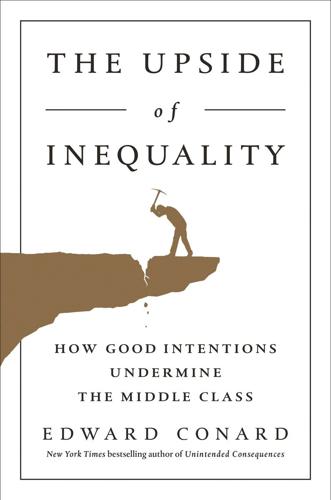
The Upside of Inequality
by
Edward Conard
Published 1 Sep 2016
Add-on innovation in the wake of breakthroughs like the Internet, e-mail, personal computers, and smartphones initially accelerates productivity and then eventually slows as opportunities to pick low-hanging fruit are exhausted—“fished out” in economic parlance. Meanwhile, breakthroughs come intermittently and unexpectedly. Increased regulation can sap management’s attention and subsequently slow productivity growth. Dodd-Frank and the Affordable Care Act swamped the economy with regulation. A reduction in the rate of further gains from education and capital investment slows productivity growth independent of innovation. And investment and risk-taking clearly retreated in the aftermath of the financial crisis, as evidenced by a 40 percent to 50 percent reduction in accumulated business investment from 2007 to 2013 relative to historical norms.26 Visit bit.ly/2blUzpa for a larger version of this image.
…
See test scores accelerating growth, 243–66 balanced trade and strengthening bank guarantees for, 254–59 ferocity of competition and, 79–82 investors influencing economic policy for, 106–8 lowering marginal corporate tax rate for, 249–54 promising educational opportunities for, 234–40 ultra-high-skilled immigration for, 244–49 admission policy, of charter schools, 223, 224 Affordable Care Act, 24 African American children charter schools, 223–26 high school dropout rates and income mobility, 182, 182–83, 235 preschool education, 228–30 African Americans comparisons of causes of poverty, 183, 183–84 effect of race on income mobility, 180, 181–82 African American workers income distribution, full time, 159, 160 median income, 204 workforce participation rate, 204, 206 agriculture (agrarian economies), 42, 45, 128–29 “alchemist fallacy,” 77 all-equity banking, 138–39 Amazon, 23 Angrist, Joshua, 225, 227 “animal spirits,” 118, 120, 125 antitrust enforcement, 99–100 Apple, 11, 23, 29, 31, 46, 75, 98, 102, 129, 236 Asian-American students, 170, 219 assortative mating, 157, 175 asymmetric information, 87–88, 98–99, 108 automation, 11, 42, 156, 211, 250 Autor, David, 57–58 baby boomers, 15, 42, 44, 243, 244, 247 Bagchi, Sutirtha, 83 Baker, Dean, 77–78 balanced trade, 39–40, 44, 254–59 bank loans, 2, 138–39, 257–58 bank runs, 2, 135–36, 137, 255, 257–58 banks (banking) all-equity, 138–39 capital requirements, 258 guarantees, 138–39, 257–59 risks to economy of instability of, 135–39 Barro, Robert, 82, 236 Bernanke, Ben, 119–20, 126, 140, 150, 151 Bezos, Jeff, 66 birth rate, and labor supply, 41 births, out-of-wedlock, 156, 167, 210 Bordo, Michael, 168 Borjas, George, 56 brain plasticity, 228, 234 Brin, Sergey, 19, 66, 69 Broda, Christian, 46 Brooks, Arthur, 212 budget deficits, 14, 256, 261 Buffett, Warren, 141, 200, 255 Burkhauser, Richard, 162 business consolidation, 24, 102–3 business investment, 103–5, 104, 250 business majors, 245–46 business profits.

Ghost Work: How to Stop Silicon Valley From Building a New Global Underclass
by
Mary L. Gray
and
Siddharth Suri
Published 6 May 2019
The guidance walks a fine line between offering advice and telling Dashers how to do their jobs, a breach of independent contract workers’ employment rights. And DoorDash is one of the first on-demand platforms to offer perks to workers, akin to the benefits of more traditional jobs. They offer services like Stride through third-party providers, to help Dashers sign up for the Affordable Care Act. DoorDash partnered with another on-demand company called Everlance to offer Dashers help tracking their business expenses, so that on their taxes they can get their fair share of the deductions that come with being self-employed as independent contractors. And DoorDash offers a same-day pay feature, called Fast Pay, that lets Dashers cash out earnings, much like Amazon Payments lets workers draw their pay into a direct deposit account.
…
Safety Net Part A: The on-demand business case for universal healthcare, paid family leave, municipal co-working space, and continuing education Recall the example of DoorDash, in the previous chapter, and how they connected their couriers to the third-party service Stride to find healthcare options through the Affordable Care Act. DoorDash, like its brick-and-mortar peer Walmart, currently relies on public subsidy of its workforce’s healthcare needs. Workers like Joan and Zaffar have tenuous resources for contending with health needs. But if the future is dependent on workers who cannot turn to their employers of record to provide healthcare, society needs an alternative that reflects reality.
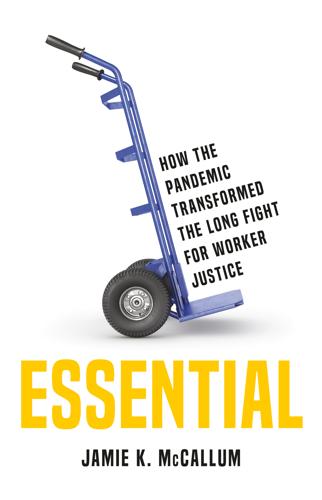
Essential: How the Pandemic Transformed the Long Fight for Worker Justice
by
Jamie K. McCallum
Published 15 Nov 2022
When employers control access to healthcare, workers either lose it when they lose their job or are more easily bullied into working in dangerous situations to keep it. When only half the working population has a right to sufficient paid sick leave, the other half lives and works at the behest of others. When the working poor are denied the right to Medicaid explicitly because lawmakers will not extend the Affordable Care Act (ACA) provision to grant it to them, as happened in seven states, they are the captive subjects of a ruling elite. These developments are the inevitable outcome of a system where one class places profits over people. Capitalist employment treats workers with reckless indifference. An indifference to preventable deaths and working conditions, and a recklessness rooted in the mistaken belief that our future is not contingent on workers’ well-being.
…
In 2003, 40 percent of privately insured adults had no deductible, and only 1 percent had deductibles that exceeded $3,000; in 2016, only 22 percent paid no deductible, and 13 percent had one over $3,000.10 Not only did deductibles get larger, they also ate up a larger portion of workers’ incomes: while only 3 percent of Americans had a deductible of 5 percent or more of their income in 2003, by 2016, 12 percent did.11 Overall, by 2016 almost a quarter of non-elderly adults with employer-sponsored health insurance fell into the category of “underinsured.”12 Being underinsured means a person technically has insurance but it can’t cover enough of the value of their claim. By 2020, almost half of working-age adults were underinsured.13 The steepest increase in the underinsured rate after the Affordable Care Act was passed occurred among Americans with employer-sponsored coverage, rising from 17 percent in 2010 to 28 percent in 2018. In other words, even as more Americans got their insurance through work, employers shuffled more and more of the costs back onto workers. We then arrive at our bizarre reality today, in which more people have health insurance but more of them are also underinsured, meaning they have out-of-pocket expenses that make accessing care difficult or impossible.
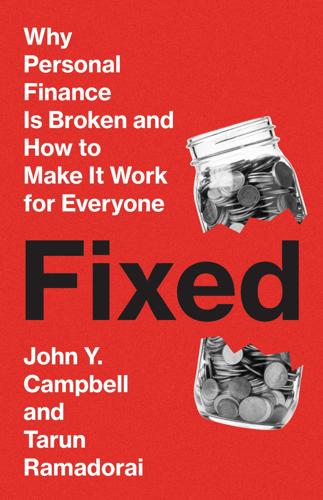
Fixed: Why Personal Finance is Broken and How to Make it Work for Everyone
by
John Y. Campbell
and
Tarun Ramadorai
Published 25 Jul 2025
Calvet, Claire Célérier, Paolo Sodini, and Boris Vallée, “Can security design foster household risk-taking?,” Journal of Finance 78 (2023): 1917–1966, demonstrate positive impacts of structured product availability for less sophisticated households in Sweden. 27. The Indian Household Finance Committee report discusses claims transparency at length. In the United States, the Affordable Care Act requires transparent reporting by health insurance companies, although this requirement has not been fully implemented. See Karen Pollitz, Justin Lo, Rayna Wallace, and Salem Mengistu, “Claims denials and appeals in ACA marketplace plans in 2021,” February 9, 2023, https://www.kff.org/private-insurance/issue-brief/claims-denials-and-appeals-in-aca-marketplace-plans/. 28.
…
Aadhaar ID, 201 AARP Foundation, 313n4 ABLE accounts, 298n7 accredited investors, 25–26, 218, 261–262 ACH transfer, 184 Acorns.com, 314n8 active investing, iron law of, 136–137 actuarial fairness, 140–141, 294–295n32 adjustable-rate mortgages (ARMs), 116–118, 229; funding sources for, 234, 289n37; in starter kit, 247 adverse selection, insurance and, 141–142 Affordable Care Act (2010), 316n27 African Americans: appeal of cryptocurrencies for, 192–194; Freedman’s Savings Bank collapse and, 193, 277n32; marketing aimed at, 274n9. See also race Africrypt exchange, 191 age, financial literacy and, 33–35, 34–35 age pyramid, 151, 152 Akerlof, George, 55 algorithmic discrimination, 189, 197–198 Alipay, 184, 293n17 allocation of retirement assets, 165–169, 257–259 AlphaGo Zero program, 43–44 alternative financial products/services, 53, 68–74; friends and family, 71–72, 89, 280–281n15; moneylenders and loan sharks, 72–74; money under the mattress, 69–70 ambiguity aversion, 291n6 annual percentage rate (APR), 91; credit cards and, 92, 206; paying off debt in order of, 94–95; reducing on existing debt, 95 annual percentage rate (APR) disclosures, 206, 282n31 annuities, 169–172; deferred payout, 172; failure to buy, 273n2; markups on, 170–171; in starter kit, 259–260; variable, 300n33 Apothecaries’ Act (1815), 228, 312–313n65 artificial intelligence (AI): bias and, 189; fintech and, 180; patents, 301n1 Asimov, Isaac, 184–185 asset accumulation, paying off debt to enable, 268n22 asset allocation: diversification and, 292n13; in retirement accounts, 165–169, 257–259 asset management fees, 137–138 asset management skill, 137 assets, allowing people with limited resources to own shares of large, 8 assumable mortgages, 248, 315n20 Augustine, Saint, 48 Australian pension system, 160, 298n10 automated savings reminders, 222–223 automated teller machines (ATMs), 199, 304n38 automatic refinancing, 247, 315n18 automatic savings goal reminders, 240, 241 automating financial decisions, 228–230 Bach, Laurent, 22 Bank of Israel, 224, 289n36, 311n57 bankruptcy: personal, 96; protections in law, 283n41; reform of code, 244; student loan debt and, 284n1 banks: automated savings reminders from, 222–223; loans from, 89–90; outdated regulation of deposit insurance and, 188–189; overdraft fees, 92–93, 225; overdraft protection, 214; US consumers’ attachment to physical branches, 275n14 base rate neglect, 43 “Basiskonto,” 236 Bayes, Thomas, 271n16 Bayes’ Theorem, 271n16 Behavioral Insights Team (nudge unit) (UK), 212 bias: fintech and, 189; present, 48–49 biased self-attribution, 45 billionaires, wealth in emerging economies and number of, 267n20 birth rate, funding retirement and declining, 151 Bitcoin, 192; as payment vehicle for illicit transactions, 194; price since inception, 193; transaction fees, 305n4 BlackRock Emergency Savings Initiative, 222, 313n5 Bleemer, Zachary, 105 blockchain technology, 68, 179; decentralized finance and, 187–188, 190 Blundell, Richard, 282n25 Bodie, Zvi, 7, 8 Boeing, 133 bonds, retirement investments and, 166–168 Book of Common Prayer, 145 borrowers, matching with lenders, 242–243 borrowing, 8, 88–93; from families and friends, 71–72, 89, 280–281n15; to fund higher education, 106–110; richer people borrowing more cheaply, 20–21, 27.
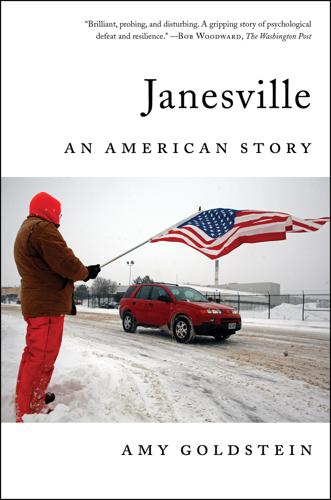
Janesville: An American Story
by
Amy Goldstein
Published 17 Apr 2017
she mutters to another volunteer. The volunteer is in a celebratory mood because of Deb’s election victory. Not Deb. Governor Walker, she knows, has decided not to spend most of the $37 million that the last governor, Doyle, accepted from the federal government to help pioneer a new insurance marketplace under the Affordable Care Act, the big, new national health care law. Standing in the clinic, on this afternoon after her victory, she wonders what one new legislator in Madison will be able to do. 49 Out of a Job Again Deri Wahlert is no longer a novice at running the Parker Closet. This is her fifth year, and now she has two hundred teenagers darting in and out for used clothes and canned food and toothpaste.
…
Index A note about the index: The pages referenced in this index refer to the page numbers in the print edition. Clicking on a page number will take you to the ebook location that corresponds to the beginning of that page in the print edition. For a comprehensive list of locations of any word or phrase, use your reading system’s search function. ABC Supply Co., xiii, 55, 56, 86, 146, 147, 295 Affordable Care Act, 249 AFL-CIO, Wisconsin, 128, 213 Akerson, Daniel, 176 Aldrich, Chris, 266–71 Alliant Energy, 63–64, 80, 81, 105 Allied Barton, 256–57 Allied Systems Group, 61 American Jobs Act, 125 Americans with Disabilities Act, 47 Anniversary dates, significance of, 30, 32, 68, 163, 270 auto industry federal bailout, 36, 39, 63, 114, 122 incentive packages for, 63–67 number of jobs lost, 121 revival of, 241, 291 Bags of Hope, 138–40, 253, 254–55 Barrett, Tom, 128, 212–13, 214, 217 Beckord, John, 53–56, 194, 223, 278–79 Beloit, WI, xiii, 53, 54, 119, 140, 147–48, 194, 198, 247, 261, 292 Dream Center, 115 GM incentive package and, 65 Project 16:49 and, 131–34, 207, 275, 276, 295 Rock County 5.0 and, 54–56, 85–86, 144, 197 Beloit Corporation, 54–55 Beloit Daily News, 86 Beverly-Malott, Tiffaney, 116 Beyer, Kristi, xi, 34, 119, 120, 135, 136, 149, 180, 184–85, 218–19, 229–31 Lear job loss, 33 retraining and, 33–34, 76, 77, 82–84, 115–17, 118, 119 son, Josh, 34, 185, 218, 219, 233, 234, 296 death of, 231, 232–34 Blackhawk Credit Union, 89, 255 Blackhawk Technical College, xii, 16, 45, 77, 115, 116, 117–18, 170–71 CATE at, 170–71, 316 graduates’ incomes, 169 graduating class of 2010, 115–16 graduation rate, 117, 118 job retraining at, 33–35, 60, 73–83, 103–6, 108, 116–18, 166, 169–71, 196, 244–45 job-retraining analysis, 311–16 programs, 34, 73–74, 77, 78, 82, 79–80, 103–5, 106, 107, 115, 166 training subsidies, 73, 75, 166, 167 BMO Harris Bank, 236, 261, 295 Boehner, John, 294 Boggs, Bill, 12–13 Borremans, Bob, xiii, 14–17, 43–46, 75–76, 119, 121, 176, 196, 222, 233, 278, 282–83, 295 CORD and, 45, 46 Montgomery visit and, 121–26 retraining results, 170 Boulton, Julie, 159 Bremer, Tim, 226, 228 Brown, Kayla, 133–34, 228 Bush, George W., 176 CATE (Career and Technical Education), 170–71, 316 Chicago, IL, 269 Century of Progress World’s Fair, 21 Chrysler Belvidere Assembly Plant, 107, 270 closure of Kenosha Engine Plant, 125 Clarke, Troy, 10, 38, 39 Classroom at the End of the ‘Line’ (Kennedy), 295 Clinton, Hillary, 292, 295, 296–97 Community Action, Inc., 91 CORD (Collaborative Organizations Responding to Dislocation), 45, 46, 119, 123 Courthouse Hill, Janesville, 9–10, 205, 221, 249 “Crabby Bloggers, The” (video), 278, 279 Craig, Joseph A., 3, 19–21, 200, 205 Craig High School, Janesville, 193, 224, 227, 255, 264, 295 Creative Community Living Services, 150, 273–74 Cullen, Mark, 262 Cullen, Tim, xii, 37–38, 130, 155–58, 172–73, 198, 222–23, 243, 294 Ringside Seat, 294 Culver’s, Janesville, 112, 187, 189, 296 Delavan, WI, 130, 144 Democratic Party.
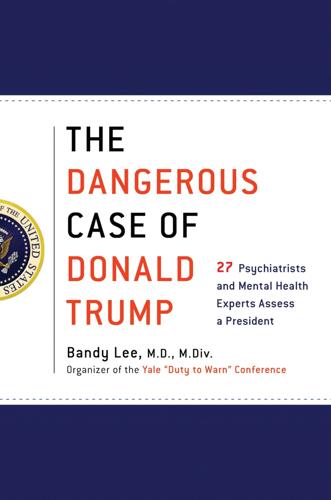
The Dangerous Case of Donald Trump: 27 Psychiatrists and Mental Health Experts Assess a President
by
Bandy X. Lee
Published 2 Oct 2017
This led to a sense of shock and disbelief after Trump was announced as president of the United States. An additional symptom of Trump anxiety disorder is that symptoms are directly related to the uncertain sociopolitical climate. An elevated stress level when reading articles about numerous topics—the Muslim ban, the threat/promise of disbanding the Affordable Care Act, tensions between the United States and North Korea, the possibility of Russia’s having interfered in the 2016 election and Russia’s financial connection to Trump, the U.S./Mexican wall, immigration issues, the defunding of environmental groups such as the National Park Service and the Environmental Protection Agency, and the defunding of medical research—is strong.
…
If Trump refuses to play by the rules, and the courts and Congress do not hold him accountable, we citizens have little recourse, which will cause us to have the sense of helpless desperation of an abused spouse. Compromise and reciprocity are key parts of politics and healthy relationships. Other-blamers are inclined to adopt an attitude of “my way or the highway,” as Trump did with his ham-handed rushing through of a replacement for the Affordable Care Act without debate. If Trump has to be right and win at all costs, and if he views discussion and compromise as losing, this offers little hope for the future of the country’s relationship with him. It is common for a jealous spouse to angrily text his wife thirty times a day, call repeatedly, and argue for hours.
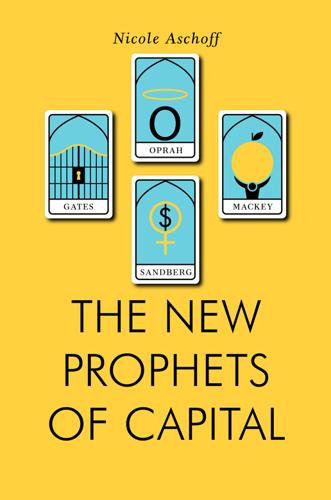
The New Prophets of Capital
by
Nicole Aschoff
Published 10 Mar 2015
Babies born in poor states like Alabama and Mississippi are more than twice as likely to die before their first birthday than babies born in wealthy states like Massachusetts. The capitalist market creates winners and losers. When health care is a commodity, people die (45,000 preventable deaths per year in the United States) or suffer from chronic ailments because they don’t have health insurance.30 The Affordable Care Act, passed in 2010, is designed to close some of these gaps by expanding the number of people who can purchase health insurance, but it stops far short of making health care a right. Anything and everything should be done to save people’s lives because no one should die from preventable diseases.

Platform Revolution: How Networked Markets Are Transforming the Economy--And How to Make Them Work for You
by
Sangeet Paul Choudary
,
Marshall W. van Alstyne
and
Geoffrey G. Parker
Published 27 Mar 2016
The transition from today’s fragmented health care system to an efficient platform-based system will not be easy. The barriers to health care platform development include economic and managerial forces that discourage the sharing of patient data and services. These forces help to explain, for example, why the implementation of electronic medical records mandated by the Affordable Care Act (2010) has been poorly managed, with record systems so customized by institution that two hospitals in the same community are often unable to share data regarding the same patient. The problem is exacerbated by the financial incentives for health care organizations to keep each patient within a single medical “home.”
…
A/B testing, 217–18 Accenture, xi, 32–33 access fees, 118–21 access limitation, 126–56, 213–15, 227–28, 240–41, 253, 254, 256–57, 260, 262–63, 264, 266, 271 access tiers, 144–45 accounting, 32, 33, 238–39 Adobe, 29–30, 92–93, 213–14 Adobe Flash Player, 213–14 ADP, 155, 241 advertising, 3, 23, 31, 49, 50, 63, 72, 84–87, 105, 106–8, 113, 119, 120–21, 125, 131, 133–34, 144, 145, 165, 166, 198–99, 215, 229–30, 244, 247–48, 252, 264, 275, 296 advertising campaigns, 72, 88, 148 Affordable Care Act (2010), 271 Africa, 4, 247, 277–78 aggregate feedback, 151–52 agriculture, 19, 42–44, 60, 70–71, 246, 263 Airbnb, vii, viii, 1–12, 21–26, 32, 38, 39, 40, 47, 64–71, 101, 103, 111, 116, 135, 142–43, 149, 151–52, 165, 175, 192–93, 198, 211, 212, 224, 229–33, 236, 253–54, 262, 295 aircraft industry, 110, 225 airline industry, 71, 137, 235, 237 algorithms, 24–25, 27, 40, 41, 45–46, 47, 68, 71, 146, 152, 170, 191, 278, 280, 286, 296, 297 Alibaba Group, xi, 2, 3, 73, 111, 124–25, 135, 159, 164, 204–7, 214–15, 216, 240 Allsopp’s Arctic Ale, 161–62 Amadeo, Ron, 153 Amazon, vii, ix, 3, 7, 22, 54–56, 56, 63, 64, 69–73, 79, 89, 125, 137, 140, 145, 157–58, 176–78, 194, 204–18, 225, 231, 242–43, 248–49, 251, 262, 270–71, 280 Amazon Web Services (AWS), 54, 177–78 Amazon Word (AZW), 243 Andreessen, Marc, 62, 63 Android, 6–7, 21, 30, 72, 92, 111, 137, 140–41, 153–54, 214, 226, 240 Android Open Source Platform (AOSP), 140, 153–54 AngelList, 276 Angie’s List, 72 antitrust regulations, 213–14, 225 AOL, 79 apartment listings and rentals, 67, 231 Apple, ix, 3, 6–7, 23, 52–54, 64, 75, 85, 92, 94, 95, 131, 136, 137, 138, 140, 147, 148, 152–53, 159, 178, 181, 205, 211, 217, 222, 226, 284, 295 Apple iOS, 6–7, 136, 137, 153, 213–14 Apple Mac OS 9, 53, 136, 137, 138, 152–53 Apple Watch, 271 appliances, 64, 110, 143, 157–58, 159, 181, 183–84, 204, 254, 283, 284–85 application programming interfaces (APIs), 55–57, 143, 144–45, 148–49, 153–54, 159, 254, 295 application-specific functions, 52–54 apps, 6–7, 21, 30, 48, 53, 72, 74, 85, 92, 97–98, 103, 111, 132–34, 142, 145, 147–49, 153–54, 166, 178, 185, 190, 200, 212, 213–17, 252–53, 269, 270–71, 275, 282 arbitrage, 171, 258–59 Arthur, W.

The Age of Entitlement: America Since the Sixties
by
Christopher Caldwell
Published 21 Jan 2020
President Obama’s policies were sometimes popular, sometimes not—but he often spoke as if the normal give-and-take of society’s democratic institutions were an obstacle to governing rightly. He mused aloud about bypassing Congress on controversial matters, especially guns, and then did so. He ruled by executive order, delaying by fiat the implementation of his signature Affordable Care Act. The Consumer Financial Protection Bureau that he established in 2010 drew its funding from the semi-independent Federal Reserve, not from Congress. Obama appointed the CFPB’s first director, Richard Cordray, through a recess appointment, bypassing Congress in that way, too. He sought to regularize the status of millions of illegal immigrants using his war-making authority, a move for which his defenders claimed the Emancipation Proclamation as a precedent.
…
Aaron, Hank, 154 Abbey, Edward, 81 ABC, 38, 39, 133, 153 abolitionism, 10 abortion, 51, 53–57, 59, 60, 100 partial birth abortion, 55 Acharya, Viral, 179 Acuthan, Lakshman, 244 Adams, Charles Francis, Jr., 149 Adams, James Truslow, 101 Administrative Procedure Act, 146 adultery, 55–56 advertising, 43, 45, 50, 63, 83, 84, 88, 128, 129, 191, 216–217 affirmative action, 32, 34, 110–111, 116, 144, 145, 147, 155, 157, 169, 171, 188, 208, 229, 231, 244, 268, 269, 273, 277 Affleck, Ben, 258 Affordable Care Act, 211 Afghanistan, 89 Agnew, Spiro, 94 AIDS (acquired immunodeficiency syndrome), 219, 242 Aldridge, John, 41 Alexander, Michelle The New Jim Crow, 243 Allen, Richie, 38 Allen, Woody, 130 Alou, Felipe, 38 Amazon, 138, 191, 196–198, 223 American Airlines, 223 American Bar Association, 62 American Beauty (film), 137 American Civil Liberties Union (ACLU), 195, 218 American Committee on Immigration Policies, 115 “American Dream,” 101 American Express, 210 Amis, Martin Yellow Dog, 62 Amway, 209 Andersen, Kurt, 93 Anderson, Benedict, 209 anti-Semitism, 29 Antioch College, 157 apartheid, 160 Apology (Plato), 214 Apple, 129, 139, 195, 223, 224 Arab oil embargo (1973), 97 Arendt, Hannah, 238 Asimov, Isaac, 135 Association of Community Organizations for Reform Now (ACORN), 180 atomic bomb, 36 Attenborough, David, 248 Attica prison revolt, 29 automobile industry, 37, 40, 88, 128, 174, 207 Babbitt, Bruce, 149–150 Baby Boomers, 6, 47, 82–87, 93, 101, 102, 108, 112, 164, 165, 177, 183, 275 Baby Boom birth rates, 47, 83 Badu, Erykah, 264 Bakke, Allan, 144–145 Bakke decision (1978), 144–145, 147, 148 Baldwin, Richard, 174 “Ballad of the Green Berets” (Sadler), 74 Baltimore, Maryland, 28, 266, 267 Banana Republic, 141–142 Bank Secrecy Act of 1970, 194 banking, 176–177, 180–182 Banking Act of 1933 (Glass-Steagall), 176, 177 Banneker, Benjamin, 157 Baritz, Loren, 68 baseball, 153–154 Baton Rouge, Louisiana, 266, 267 Beard, Charles, 30 Beauharnais v.

Super Thinking: The Big Book of Mental Models
by
Gabriel Weinberg
and
Lauren McCann
Published 17 Jun 2019
As they pull their peaches out of the market, the average quality drops and, in turn, the price of the used cars left in the market keeps dropping. The sellers of lemons free-ride on the market until it collapses into just a market of lemons. Adverse selection was an early concern with the state health insurance exchanges as part of the Affordable Care Act (ACA) in the United States. Extending the metaphor, the lemons are sick people applying to the exchanges, and the peaches are healthy people applying. There was an individual mandate requiring health insurance, but the penalties for not complying were low, so the concern was that many healthy people would just opt to pay the fine rather than participate.
…
A&P, 70 absence of evidence is not the evidence of absence, 167 A/B testing, 136 Accidental Empires (Cringley), 253 accountability, 275 acne, 169–71 activation energy, 112–13 actor-observer bias (self-serving bias), 21, 272 Adams, John, 222 adaptability, 121, 129 ad hominem, 226 adverse selection, 46–47 advertising, 103–4, 120, 262 advisers, 44, 45, 296 Affordable Care Act (ACA), 46, 47 Afghanistan, 54, 243 agent, 44–45 aggregation, 205 aggression, obnoxious, 264 agreeableness, 250 AIDS, 233 Airbnb, 276, 288, 292 air pollution, 41 air travel, 53–54 Aldi, 70 Alexander, Christopher, 92 algorithms, 94, 97 Allen, David, 76 all-nighter, 83 alpha, 161, 182 al-Qaeda, 52, 54 alternative hypothesis, 163, 164, 166, 167 altruism, effective, 80 alumni, 119 Amazon, 61, 70, 95–96, 283, 290, 300 American Revolution, 221–22, 239, 240 American Statistical Association, 168 Amway, 217 analysis paralysis, 60–62, 93 anchoring, 14–15, 30, 199 anecdotal evidence, 133, 139, 146 antibiotics, 37, 47–49 Antifragile (Taleb), 2, 105 antifragility, 2–3, 31–33 anti-patterns, 93 AOL, 106 Apollo 13, 4 appeasement, 237 Apple, 103, 104, 231, 241, 258, 289–91, 305, 309 iPad, 290 iPod, 296–97 Newton, 290 approval ratings, 152–54, 158 arbitrage, 282–83 Archilochus, 254 Archimedes, 78 arguing from first principles, 4–7, 31, 207 Ariely, Dan, 14, 222–23 arithmetic, ix–x, 23–24, 30, 178 arms races, 209–12, 214 Ashley Madison, 229 Associated Press (AP), 306 asymmetric information, 45–47 atomic bomb, see nuclear weapons Atwood, Jeff, 253 authority, 219–20, 226 automation, 95, 310 availability bias, 15–18, 30, 33, 300 average, 146, 187 Avon, 217 Aztecs, 243–44 babies, 198, 279 sleep and, 131–32 babysitters, 222 backfire effect, 26 back-of-the-envelope calculation, 299 bacteria, 47–49, 295 bait and switch, 228, 229 bandwagon effect, 202 barriers to entry and barriers to exit, 305 baseball, 83, 145–46, 289 base rate, 157, 159, 160 base rate fallacy, 157, 158, 170 BATNA (best alternative to a negotiated agreement), 77 Battle of Heraclea, 239 Battle of Tsushima, 241 Bayes’ theorem and Bayesian statistics, 157–60 beachhead, 300–301 Beatles, 105 Beautiful Mind, A, 213 beliefs, 103, 107 bell curve (normal distribution), 150–52, 153, 163–66, 191 Bell Labs, 89 benefit of the doubt, 20 benefits: cost-benefit analysis, 177–86, 189, 194 eliminating, 224 net, 181–82, 184 Berlin, Isaiah, 254 Bernoulli distribution, 152 best practices, 92 beta, 162, 182 Better Angels of Our Nature, The (Pinker), 144 Bezos, Jeff, 61–62, 286–87 bias, 3, 139 availability, 15–18, 30, 33, 300 confirmation, 26–28, 33, 103, 159 disconfirmation, 27 groupthink, 201–3 hidden, 139–43 hindsight, 271–72 nonresponse, 140, 142, 143 observer-expectancy, 136, 139 optimistic probability, 33 present, 85, 87, 93, 113 publication, 170, 173 response, 142, 143 selection, 139–40, 143, 170 self-serving, 21, 272 survivorship, 140–43, 170, 272 Big Short, The (Lewis), 289 bike-shedding, 75, 93 Bird, Larry, 246 birth lottery, 21–22, 69 black-and-white thinking, 126–28, 168, 272 black boxes, 94–95 Black Flags rebellion, 276 blackouts, electric, 120 black swan events, 190–91, 193 Blank, Steve, 294 bleeding them dry, 239 blinded experiments, 136 Blockbuster, 106 blowback, 54 Boaty McBoatface, RSS, 35 body mass index (BMI), 137 body temperature, 146–50 boiling frog, 55, 56, 58, 60 bonds, 180, 184 Bonne, Rose, 58 Boot, Max, 239 boots on the ground, 279 Boston Common, 36–38, 42 Boyd, John, 294 Bradley, Bill, 248 brainstorming, 201–3 Brandeis, Louis, 307 breast cancer, 156–57, 160–61 Breathalyzer tests, 157–58, 160 Brexit, 206, 305 bright spots, 300 bring in reinforcements, 279 British Medical Journal (BMJ), 136–37 broken windows theory, 235–36 Broderick, Matthew, 230 Brody, William, 290–91 Brookings Institution, 306 brute force solution, 93, 97 Bryson, Bill, 50 budget, 38, 74–75, 81, 95, 113 national, 75–76 Buffett, Warren, viii, 69, 286, 302, 317, 318 burning bridges, 243 burnout, 82, 83 Burns, Robert, 49 burn the boats, 244 Bush, George H.
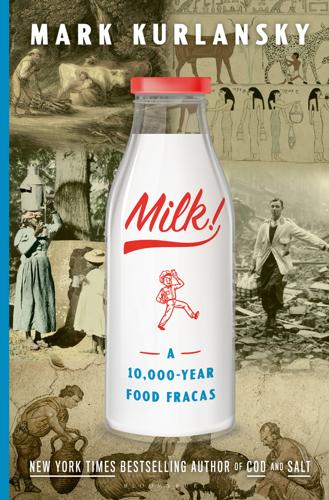
Milk!
by
Mark Kurlansky
This new progressive approach allows babies to benefit from the nutritive value of breast milk while freeing mothers from the burden of breastfeeding. A mother can now pump her breasts and save her milk in bottles, so that while she is at work, a caregiver can feed her baby. So the first thing to go was the attachment theory. When Bill Clinton was president, the White House had a breast-pumping station for staff. Barack Obama’s Affordable Care Act agreed to cover the purchase of breast pumps. Private insurers followed. And once health insurance covered breast pumps, sales exploded. It has become a huge business in the United States: the industry expects breast pump sales in 2020 to reach $1 billion, and related paraphernalia sales are expected to reach another $2 billion.
…
RECIPE INDEX PANCAKES, PORRIDGE AND SCONES Irish butter scones, here Water pancakes, here Hannah Glasse’s cream pancakes, here Scottish oatmeal pancakes, here Milk porridge, here Dutch porridge, here Egg rich porridge, here CHEESE DISHES Cato’s recipe for soft cheese and lard, here Cato’s cheesecake, here Columella’s recipe for cheese, here Anthimus’s recipe for the healthful way to eat goat’s milk, here How to make moretum, here Rafis with soft cheese, here Cheese tart, here A fresh cheese, here Summer cream cheese, here Macaroons with Parmesan cheese, here Cheddar cheese, here Richard Nixon’s cottage cheese, here Cottage cheese balls, here Cream of Wisconsin cheese soup, here Welsh rabbit, here Scotch rabbit, here Gratin de bananes, here Paneer Makhani, here SOUPS Cream of Wisconsin cheese soup, here Green tomato cream soup, here Crème vichyssoise glacée, here SAUCES Apicius’s recipe for tracta and milk, here Rukamiyah, here Cow’s-milk jance, here Hale’s cream sauce, here Beurre blanc, here BUTTER Smen, here Recovering bad butter, here Eggs with burnt butter, here Beurre blanc, here Ghee, here SAVORY MILK DISHES Larded milk, here Provençal milk, here Pap, here Baby food, here How to use evaporated milk, here Scalding milk, here Milk toast, here Baked milk, here Fried milk, here Ginger bumping milk, here Old Beijing imperial cheese, here Khoa, here YOGURT DISHES Madira, an Arab meat and yogurt dish, here Eggplant Borani, here Chard and yogurt, here Salt fish and yogurt, here Eggs with yogurt sauce, here FISH Escoffier’s sole normande, here Lobster Newberg, here Creamed salt cod, here Raie au beurre noir, here POULTRY AND FOWL Apicius’s recipe for chicken with thickened milk and tracta sauce, here Dodine with cheese, here White dodine, here Capon in sheep’s-milk jance, here Fowls à la Binjamele, here Pheasant with cream, here Chicken drumsticks in milk stew, here MEAT DISHES Hutsepot, here Pudding in wine and guts, here White pudding of the Hogges Liver, here Calf’s-foot pudding, here DRINKS Drinking whey, here Wine whey, here Tamarind whey, here Milk water, here To preserve milk for a journey, here Dominican batida de lechosa, here Hot chocolate, here Brandy Alexander, here Grasshopper, here White Russian, here Milk elixir, here Masala chai, here Milk punch, here FROZEN DISHES AND DESSERTS Apicius’s recipe for melca, here Hannah Glasse’s junket, here Hannah Glasse’s stone cream, here Hattit kit, here Basque mamia, here Solid syllabub, here Posset, here Cream tart, here Rukhamiyya, here Lemon custard, here Apple-a-milk, here Syllabub from the cow, here Fine cream, here Blanched cream, here La Pompadour cream, here Indian pudding, here Plumb pudding, here Fromage à l’angloise, here Peach ice cream, here Alaska-Florida, here Alaska Bake, here Howqua’s tea ice cream, here Ginger ice cream, here Frozen custard, here Pine apple ice cream, here Self-freezing ice cream, here Apple ice cream, here Hot strawberry sundae, here Cornets with cream, here Caffè latte gelato, here Peppermint stick ice cream, here Jamaican banana ice cream, here Coupe aux marrons, here Phirni, here Carrot halwa, here Kulfi, here SWEETS Original fudge recipe, here Maida Heatter’s fudge, here Dulce de leche, here Kalakand, here INDEX Note: Italic links refer to illustrations. Affordable Care Act, here Afghanistan, here aged cheese cheddar cheese as, here cow’s milk for, here Gouda cheese as, here health qualities of, here Parmesan cheese as, here production of, here, here, here, here Akhlaq, Muhammad, here almond milk, here alpacas, here Altmann, David, here Altmann, Karen, here Amazonian tribes, here American Association of Medical Milk Commissions, here American Holstein breed, here American Home Products, here American Revolutionary War, here, here American Welfare Approved (AWA) label, here Amul (Anand Milk Union Limited), here An Lushan, here Anglo-Swiss Condensed Milk Company, here, here animal welfare issues, here, here, here, here Anthimus, here, here anthrax, here, here Apicius, Marcus Gavius, here, here, here, here, here Appert, Nicolas, here, here apple-a-milk, here Arabs.
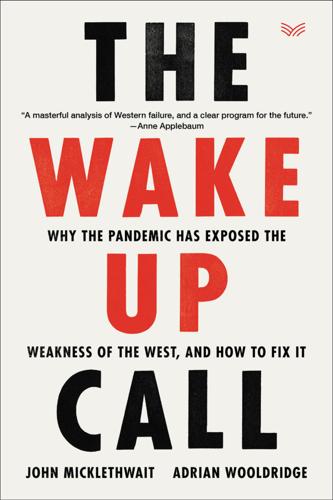
The Wake-Up Call: Why the Pandemic Has Exposed the Weakness of the West, and How to Fix It
by
John Micklethwait
and
Adrian Wooldridge
Published 1 Sep 2020
And regulation expanded, especially in America, where the Federal Register, by Niall Ferguson’s calculation, grew two and a half times faster than the economy. In the first decade of the twenty-first century it increased at a pace of 73,000 pages a year, compared with an average of 11,000 pages a year in the 1950s.12 Barack Obama’s 2010 Affordable Care Act was 2,700 pages long, including a 28-word definition of a “high school” and 140,000 codes for ailments.13 By contrast, FDR’s landmark welfare legislation in the 1930s had been just 30 pages long. At the state level, America created a “License Raj,” bossing around occupations that posed no plausible threat to health or safety such as florists, tour guides, frozen-dessert sellers, second-hand booksellers, and interior designers.14 Politics in the Anglo-Saxon world became an impasse.
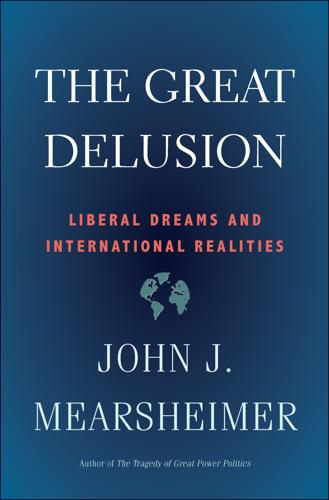
The Great Delusion: Liberal Dreams and International Realities
by
John J. Mearsheimer
Published 24 Sep 2018
In fact, Reagan said as early as 1961 that “any person in the United States who requires medical attention and cannot provide it for himself should have it provided for him.”62 Further evidence that Republicans recognize this right comes from the often-repeated slogan “repeal and replace.” They understand they cannot simply eliminate the Affordable Care Act but must substitute another system that aims to provide Americans with decent health care. Republican presidents oversaw the beginnings of the Interstate Highway System, the Environmental Protection Agency, and the Department of Homeland Security. Republicans, in short, are deeply committed to the interventionist state and the extensive social engineering that comes with it.
…
He quickly abandoned that realist policy after 9/11 and enthusiastically embraced liberal hegemony. 31. Neta C. Crawford, “United States Budgetary Costs of Post 9/11 Wars through FY2018: A Summary of the $5.6 Trillion in Costs for the US Wars in Iraq, Syria, Afghanistan,” Costs of War Project, Watson Institute, Brown University, November 2017. INDEX Abu Ghraib prison, Iraq, 184 Affordable Care Act, 69–70 Afghanistan, 164–66, 184, 185, 227, 230 aggressiveness, 43–44 Albright, Madeleine, 90, 177, 190 allies, 133–34 anarchy: absence of authority as defining characteristic of, 40, 242n50 of international system, 3, 42, 122, 131, 133–35, 137–39, 151, 215 liberalism in relation to, 49 role of power in, 40 social groups and, 38, 40, 44 Anderson, Benedict, 85, 149 Angell, Norman, 204–5 animus dominandi, 43, 267n20 Aquinas, Thomas, 47 arbiter, state as, 39, 49, 52, 103 Arendt, Hannah, 111–12 aristocracy, 255n12 Aristotle, 47, 50, 52, 112 Armenians, 99 Armitage, David, 105, 145 Assad, Bashar al-, 166–67 assassination, government-sponsored, 184–85 audience costs, 198 Augustine, St., 47 Austria, 88 authoritarianism, 116–18, 203–4 authority, political, 96–97 Bagram Air Base, Afghanistan, 184 balance-of-power politics: dangers of ignoring, 171–72, 222–23 domestic, as safeguard of democracy, 117 end of, 4–5 future of, 6.
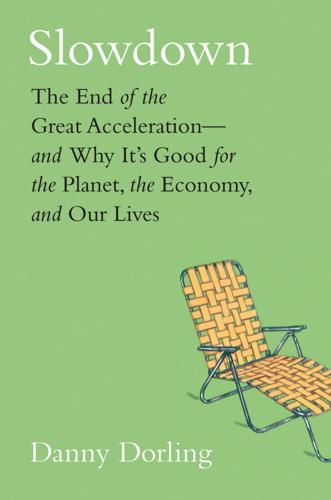
Slowdown: The End of the Great Acceleration―and Why It’s Good for the Planet, the Economy, and Our Lives
by
Danny Dorling
and
Kirsten McClure
Published 18 May 2020
She concluded by quoting Hans-Peter Kohler, a sociology professor at the University at Pennsylvania, in a thinly veiled rebuke to President Trump and a thank-you to President Obama: “That’s good, of course, because most teenage pregnancies are ‘mistimed’ or ‘unwanted,’” Kohler says. He notes that the downturn in birth rates for teenagers likely reflects more widespread use of effective and long-lasting forms of contraception, perhaps due to expanded access under the Affordable Care Act.”45 By 2016 the number of uninsured Americans had halved in comparison to 2014 because of the introduction of this act. We understand more as we slow down: we progress. Part of that progression is our increased worry and despair over bad decisions being made by bad people (usually wealthy men).
…
Average number of children per woman by region and worldwide, 1960–2017, according to maternal generation affected, by decade of new births 8b. Change in average number of children from previous decade INDEX Page numbers in italics indicate figures and tables. Abe Shinzō, 326 abortion, 274, 276 acceleration, 4–7, 6. See also great acceleration Advanced Research Projects Agency Network (ARPANET), 31 Affordable Care Act, 313 Afghanistan, 172, 173 Africa: children in, 316–17; fertility rates, 158, 226, 227; language in, 73; Niger fertility rate, 201–4, 203; out-migration from, 158; population, 157–61, 159 agnosia, 287 AI (artificial intelligence), 85, 87, 96–97, 301–2 air travel, 302–4, 303, 363n2 Alexa, 79, 97 Americas: fertility rates, 226, 227; population, 177–79, 178, 209.
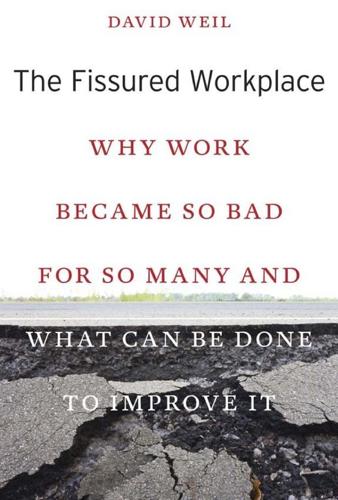
The Fissured Workplace
by
David Weil
Published 17 Feb 2014
For example, wages and salaries for service workers account for 71% and legally required benefits account for 9.3% of employer hourly costs because employees in service industries typically receive far lower insurance and retirement benefits than workers in other industries. 3. In making more employers responsible for providing health care coverage to their workforce, the Affordable Care Act of 2010 changes these dynamics both for lead and subordinate businesses in complicated ways. For example, the costs of providing health care benefits may be lower per worker for a larger versus a smaller business. If subordinate businesses are now required to provide coverage, their costs of providing services to lead businesses will increase, thereby changing the private calculus of hiring additional workers versus using a subcontractor or temporary agency to provide them.
…
I am deeply grateful for the assistance, comments, critiques, and insights from all of the above. But to return full circle to the loneliness of writing a book on your own, I am solely responsible for any errors that remain. Index ABM Industries, 56, 133 Abraham, Katherine, 90, 314n36 Accounting, and outsourcing, 52, 54–55 Adverse selection, 63 Aetna, 39 Affordable Care Act (2010), 309n3 Agriculture industry: and offshoring, 169; enforcement in, 217–219, 351n12; definition of establishment in, 218; competitive forces, 259–260; and labor standards, 260 Ahn, Sarah, 256 Airstream, 53 Akerson, Dan, 74 ALT Inc., 109–112 Americans with Disabilities Act, and notification about employee rights, 252 A&P, 28–30, 294n4 Apparel industry: and offshoring, 172; in Bangladesh, 176; enforcement in, 224–228; and lean retailing, 225–226; supply chain approach, 226–228; compliance with labor standards, 226, 228 Apple Inc., 7–8, 171–175, 234, 302n27; and core competencies, 50–51; and Foxconn, 174–175 Asian American Hotel Operators Association (AAHOA), 257–258, 363n28 A.
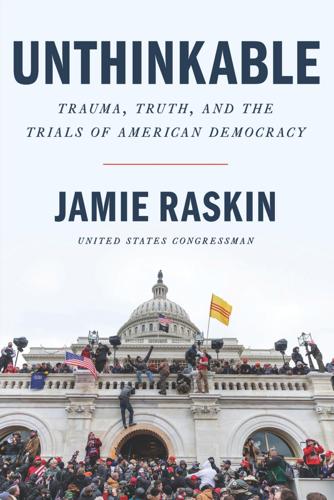
Unthinkable: Trauma, Truth, and the Trials of American Democracy
by
Jamie Raskin
Published 4 Jan 2022
But from a public policy standpoint, all of it was just spinning our wheels. Against the GOP propaganda machine, the White House, and Fox News, there was little we could do to hold back the flood of disinformation. Amazingly, the party that had invented and railed against mythical “death panels” in the Affordable Care Act was now defending Donald Trump and his monstrous mismanagement of COVID-19 that would come to cause hundreds of thousands of unnecessary American deaths, according to Trump’s own COVID-19 point person, Dr. Deborah Birx, the White House coronavirus response coordinator. My Republican colleagues went from collaborating with Trump’s sinister denial of the threat of COVID-19 to covering up for his bizarre promotion of quack medical cures (like hydroxychloroquine and injecting oneself with bleach) to the outrageous embrace of “herd immunity” as the nation’s strategy, which meant just letting the disease wash over the population and kill untold numbers of vulnerable people.
…
And I said, “I’m a progressive, too, because the heart of that word is progress, and if we’re not working for progress, what are we even doing in politics? “But these days,” I said, “my favorite thing to call myself is a conservative, because I want to conserve the land, the air, the water, the climate system, the Constitution, the Bill of Rights, Social Security, Medicare, the Affordable Care Act, the Fair Labor Standards Act, the National Labor Relations Act, the Clean Air Act, the Clean Water Act, the Civil Rights Act, and the Voting Rights Act. I don’t even know why you guys want to call yourselves conservatives anymore, because you want to tear everything down. That’s not conservatism.
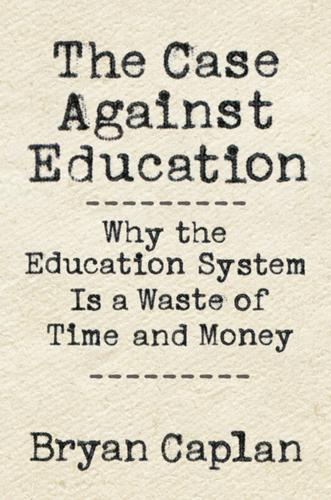
The Case Against Education: Why the Education System Is a Waste of Time and Money
by
Bryan Caplan
Published 16 Jan 2018
Once workers exit the job market, however, their labor earnings fall to zero. Most instantly become eligible for government programs we’ve hitherto managed to ignore. The big transfer programs are Medicaid, TANF (Temporary Assistance to Needy Families, or “welfare”), and SNAP (Supplemental Nutrition Assistance Program, or “food stamps”). Since the passage of the Affordable Care Act, a single childless adult with zero income can definitely get Medicaid. Valued at cost, this is worth $4,362 a year.38 TANF is limited to households with kids, so single childless adults cannot collect. SNAP’s rules are complex: childless adults face time limits or work requirements, but state governments can make exceptions.
…
For single, childless individuals, the 2011 Earned Income Tax Credit eligibility cut-off was $13,660 in adjusted gross income (Internal Revenue Service 2015). Furthermore, single, childless adults younger than 25 or over 65 are ineligible for the EITC (Internal Revenue Service 2016). Even after the passage of the Affordable Care Act, childless full-time workers are almost always ineligible for Medicaid (Kaiser Family Foundation 2013, Sebelius 2012). 24. According to Stone and Chen 2014, “the average unemployment benefit was about $300 per week in 2010, 2011, and 2012.” 25. Eligibility rules also vary by state. For practical purposes, workers normally need at least two quarters of full-time employment to qualify, with reduced benefits if they have less than four quarters of full-time employment (United States Department of Labor 2014).
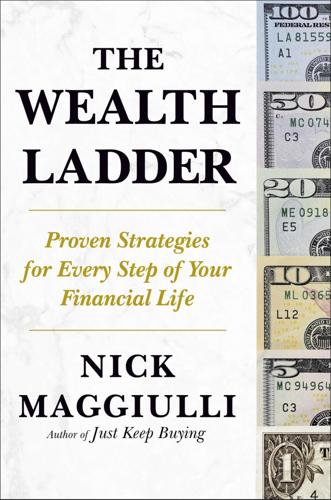
The Wealth Ladder: Proven Strategies for Every Step of Your Financial Life
by
Nick Maggiulli
Published 22 Jul 2025
BACK TO NOTE REFERENCE 2 Kartik Athreya, José Mustre-del-Río, and Juan M. Sánchez, “The Persistence of Financial Distress,” Review of Financial Studies 32, no. 10 (2019): 3851–83, https://doi.org/10.1093/rfs/hhz009. BACK TO NOTE REFERENCE 3 David U. Himmelstein et al., “Medical Bankruptcy: Still Common Despite the Affordable Care Act,” American Journal of Public Health 109, no. 3 (March 2019): 431–33, https://doi.org/10.2105/AJPH.2018.304901. BACK TO NOTE REFERENCE 4 Warren Buffett, “Warren Buffett, Lecture, Nebraska Educational Forum, 1999,” YouTube video, 59:39, Investor Archive, October 11, 1999, https://www.youtube.com/watch?

Inequality and the 1%
by
Danny Dorling
Published 6 Oct 2014
Martikainenb, O. Rahkonena, E. Lahelmaa, ‘Household Income and Health Problems During a Period of Labour-Market Change and Widening Income Inequalities – A Study Among the Finnish Population Between 1987 and 2007’, Social Science and Medicine 100 (2014), at sciencedirect.com. 55. A. Hartocollis, ‘With Affordable Care Act, Cancelled Policies for New York Professionals’, New York Times, 13 December 2013. 56. R. Guillén, ‘We Slept and Now We Have Woken. Square Occupied’, Le Monde Diplomatique, 12 July 2011, at mondediplo.com. 57. B. Kavousii, ‘Spanish Locksmiths Refuse to Help Evict Homeowners Any Longer’, Huffington Post, 23 January 2014, at huffingtonpost.com. 58.

Move Fast and Break Things: How Facebook, Google, and Amazon Cornered Culture and Undermined Democracy
by
Jonathan Taplin
Published 17 Apr 2017
Founded in 1973 as the Conservative Caucus of State Legislators, ALEC states that its current goal is to further “the fundamental principles of limited government, free markets, and federalism.” ALEC is the principal climate-change opposition group at the state level, but it also has focused on “opposing insurance coverage for birth control in the US; opposing the individual health insurance mandate enacted by the Affordable Care Act; expanding the ‘Stand Your Ground’ laws that allow citizens the right to self-defense if they feel their property is under attack; prohibiting cities from building public broadband networks; urging state legislatures to demand voters produce state-issued IDs.” Many progressives questioned why Google and Facebook would join such a right-wing libertarian organization.
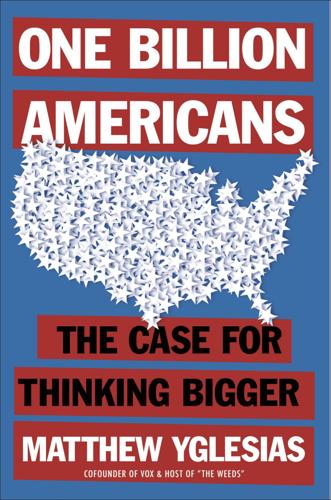
One Billion Americans: The Case for Thinking Bigger
by
Matthew Yglesias
Published 14 Sep 2020
CHAPTER 3 The Dismal Economics of Child Rearing Back in 2017, the American fertility rate hit a record low of 1.76 expected births over the lifetime of the average woman. In 2018, it dropped to a brand-new record low of 1.72 births per woman. Some of this reflects laudable trends, in particular an ongoing decline in the teen birth rate, more widespread availability of contraceptives—generally thanks to the Affordable Care Act—and more awareness of the benefits of superreliable forms of birth control like the IUD over more failure-prone methods like condoms or birth control pills that require adherence to a daily regime to work properly. Very high birth rates, meanwhile, generally reflect bad situations. Historically, women all over the world tended to have many children in large part because the child mortality rate was so high that giving birth to many children was the only reliable way to ensure that a few would survive into adulthood.

Future Sex
by
Emily Witt
Published 10 Oct 2016
First I paid for a sonogram to see if it was still in my uterus (it was), then I visited a series of doctors who fretted unhelpfully or contemplated surgery until finally one successfully managed to remove it. All the birth control options left to me had potential for side effects and cost upward of $500. While most devices were covered under the regulations of the Affordable Care Act, the testing to make sure I did not have an infection before the IUD was inserted was not. There were always condoms. “And how realistic is it that you will consistently use condoms?” asked one doctor. I had a boyfriend by then, so for a while relied on his self-control, but I really did not want to have a baby.

For the Love of Autism: Stories of Love, Awareness and Acceptance on the Spectrum
by
Tamika Lechee Morales
Published 23 Apr 2022
She stopped signing and began pushing herself to talk, asking for things and answering questions verbally. It was extraordinary. We were so proud of her. I mentioned that ABA was expensive. When Constance first started receiving ABA therapy, medical insurance companies covered little, and our out-of-pocket expenses were astronomical. With the passage of the Affordable Care Act and some changes to medical insurers’ policies regarding ABA therapy, we were able to get more of her sessions covered. However, the co-payments were still hundreds of dollars a week. We cut many personal expenses to cover these costs and went into debt. About this time, we realized something frightening.
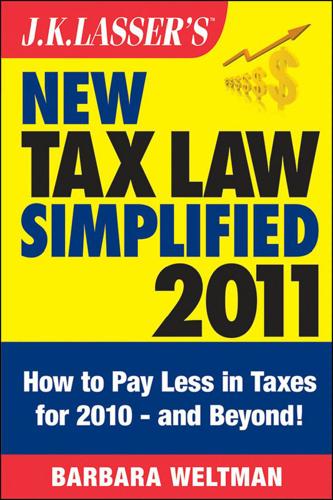
J.K. Lasser's New Tax Law Simplified: Tax Relief From the HIRE Act, Health Care Reform, and More
by
Barbara Weltman
Published 30 Nov 2010
As a result, Congress has enacted a number of measures that can impact your taxes for 2010, 2011, and beyond: W r The Hiring Incentives to Restore Employment (HIRE) Act of 2010, signed into law on March 18, 2010, is an $18 billion jobs package. r The Department of Defense Appropriations Act, 2010, signed into law on December 19, 2009, and the Continuing Extension Act, signed into law on April 15, 2010, extend federal assistance for COBRA premiums. r The Patient Protection and Affordable Care Act of 2010, signed into law on March 23, 2010, and the Health Care and Education Reconciliation Act of 2010, signed into law on March 30, 2010, make sweeping changes to health vii P1: OTA/XYZ P2: ABC fm JWBT413/Weltman viii October 14, 2010 13:58 Printer Name: Yet to Come INTRODUCTION care over the next several years; there are more than $400 billion in revenue raisers and new taxes on individuals as well as employers. r The Small Business Jobs Act of 2010, signed into law on September 27, 2010, provides tax breaks for certain small business owners. r Various miscellaneous acts made numerous other changes.
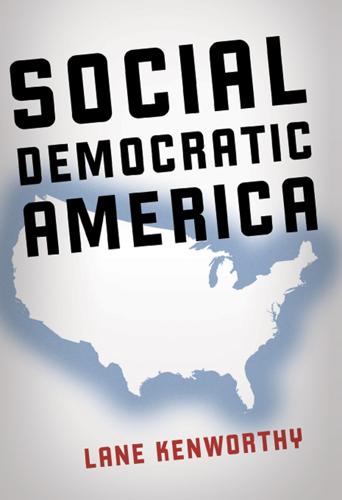
Social Democratic America
by
Lane Kenworthy
Published 3 Jan 2014
Lesmerises 2007, figure 12, using data from Warren and Tyagi 2003. See also DeLong 2012. 76. College Board, “Trends in College Pricing 2006,” table 4a. 77. Allegretto 2011, table 10, using Survey of Consumer Finances data. 78. Warren and Tyagi 2003; Weller 2012. CHAPTER 3 1. Census Bureau 2011, table 8. 2. The 2010 Affordable Care Act may accelerate this shift. See Hacker 2011. 3. Seidman 2013. 4. For additional cost-reduction ideas, see Emanuel et al. 2012; Gawande 2011, 2012; Soltas 2012; Aaron 2013. 5. Klein 2007; Reid 2009; Davis, Schoen, and Stremekis 2010; OECD 2011. 6. Heymann et al. 2009. 7. Bureau of Labor Statistics 2012b, using data from the March 2012 National Compensation Survey. 8.
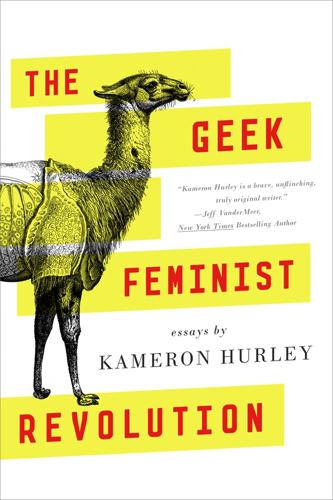
The Geek Feminist Revolution
by
Kameron Hurley
Published 1 Jan 2016
It made me even easier to dismiss, to overlook, to assume I was just somebody else everybody could roll over and spout off ridiculously sexist, racist crap to without dissent. But nodding and smiling gets old. It makes it easier for people to box you up and ship you off. I’m only really alive when I’m pissing people off anyway. The Horror Novel You’ll Never Have to Live: Surviving Without Health Insurance There was a time before the Affordable Care Act. Before health insurance was subsidized by the government, and before we were all guaranteed coverage no matter our medical conditions. I grew up in that time, and it nearly destroyed me. In 2005, I was a robust twenty-five-year-old living in Chicago and working as a project assistant for an architectural and engineering firm.
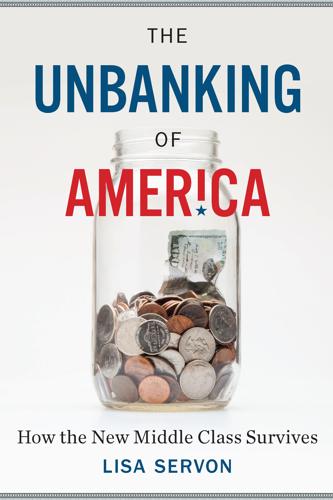
The Unbanking of America: How the New Middle Class Survives
by
Lisa Servon
Published 10 Jan 2017
“the most successful experiment”: Ibid., p. 207. 173 Financial-information boxes: Some studies show that consumers are using nutrition labels to make healthier food choices. Programs like the Department of Energy and the Environmental Protection Agency’s Energy Star have been highly successful in changing consumers’ buying patterns. The Affordable Care Act included a provision that requires all health plans to provide a uniform summary, in plain language, of coverage for all enrollees and applicants. According to a recent Kaiser Family Foundation poll, this is among the most popular provisions of the law. John Kozup and Jeanne M. Hogarth, “Financial Literacy, Public Policy, and Consumers’ Self-Protection—More Questions, Fewer Answers,” Journal of Consumer Affairs, vol. 42 (2008): 127–36; Henry J.
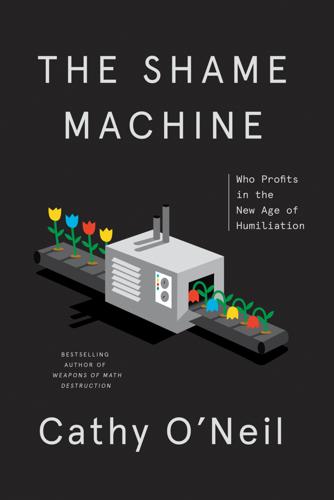
The Shame Machine: Who Profits in the New Age of Humiliation
by
Cathy O'Neil
Published 15 Mar 2022
Kimmel, “The Making—and Unmaking—of Violent Men,” in Healing from Hate: How Young Men Get into—and out of—Violent Extremism (Oakland: University of California Press, 2018), 1–27. GO TO NOTE REFERENCE IN TEXT Chapter 8: The Common Good “There is some degree of opprobrium if one does not wear it in certain settings”: Robert Barnes et al., “Supreme Court Appears Ready to Uphold Affordable Care Act over Latest Challenge from Trump, GOP,” The Washington Post, November 10, 2020, https://www.washingtonpost.com/politics/2020/11/10/scotus-hearing-aca-live-updates/. GO TO NOTE REFERENCE IN TEXT “We are desperate for an outlet”: Amanda Hess, “The Social-Distancing Shamers Are Watching,” The New York Times, May 11, 2020, https://www.nytimes.com/2020/05/11/arts/social-distance-shaming.html.
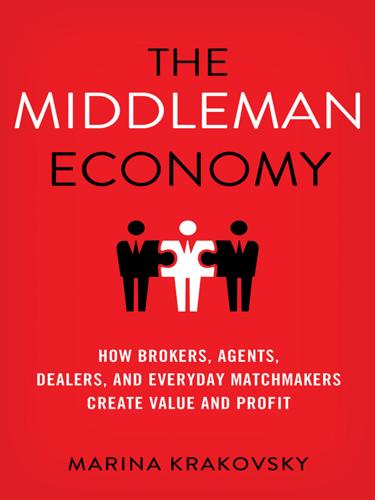
The Middleman Economy: How Brokers, Agents, Dealers, and Everyday Matchmakers Create Value and Profit
by
Marina Krakovsky
Published 14 Sep 2015
NOTES INTRODUCTION: NOBODY LIKES A MIDDLEMAN, BUT MOST OF US ARE MIDDLEMEN 1.Mike Lee, “Senator Mike Lee’s Response to the State of the Union Address,” January 29, 2014, retrieved from http://www.lee.senate.gov/public/index.cfm/speeches?ID=46dfc240-026d-4825-a9bd-b876bc0e7a4d on December 10, 2014. 2.Perhaps he was alluding to the insurance companies whose revenues rose from the Affordable Care Act. 3.The share of Americans who consider themselves middle class has fallen from 53 percent in 2008 to 44 percent in 2014 according to survey data from the Pew Research Center. See Rakesh Kochnar and Rich Morin, “Despite Recovery, Fewer Americans Identify as Middle Class” (Pew Research Center, January 27, 2014, retrieved from http://www.pewresearch.org/fact-tank/2014/01/27/despite-recovery-fewer-americans-identify-as-middle-class/). 4.Why do I use the sexist word “middleman”?

Nomadland: Surviving America in the Twenty-First Century
by
Jessica Bruder
Published 18 Sep 2017
You can get it from straining.” She sounded skeptical, since she didn’t think she had been pushing herself that hard. In any case, she was instructed to follow up with her primary-care physician. “Yeah, I’d do that if I had one,” she said, laughing. Like most workampers I met right before the Affordable Care Act took effect, Linda was uninsured. And since she didn’t have a ride back to the Sage Valley RV Park, she sprung $172 for a cab. For the next few days, she felt weak and took unpaid time off. CamperForce was winding down. Most workers left right before Christmas so they could celebrate with far-flung families.
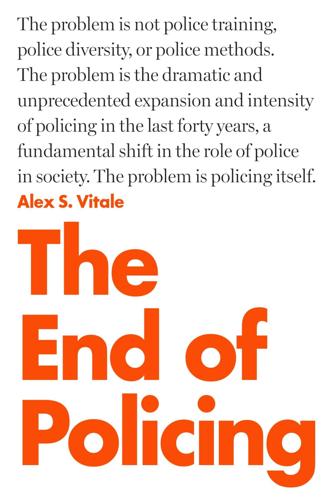
The End of Policing
by
Alex S. Vitale
Published 9 Oct 2017
What we are witnessing is, in essence, the criminalization of mental illness, with police on the front lines of this process. This is especially true for those who are homeless and/or lack access to quality mental health services. Both groups of people have grown significantly in recent decades. While the Affordable Care Act holds the promise of some improvement, as recently as 2011, over 60 percent of people experiencing a mental health problem reported that they had no access to mental health services.18 Even when mental health services are available, they are often inadequate. A lack of stable housing and income exacerbates mental health problems, makes treatment more difficult, and contributes to the public display of disability-related behaviors, all of which make it more likely that the police will be called.

How Democracies Die
by
Steven Levitsky
and
Daniel Ziblatt
Published 16 Jan 2018
The state has become, in the words of Duke law professor Jedediah Purdy, a “microcosm of the country’s hyper-partisan politics and growing mutual mistrust.” Over the last decade, partisans have battled over Republican-imposed abortion restrictions, the Republican governor’s refusal of Medicaid as part of the Affordable Care Act, a proposed constitutional amendment to ban same-sex marriage, and, most famous, the 2016 Public Facilities Privacy & Security Act (the “Bathroom Bill”), which barred local governments from allowing transgender people to use public bathrooms for the sex they identify as. All these initiatives triggered intense opposition.

How to Fix the Future: Staying Human in the Digital Age
by
Andrew Keen
Published 1 Mar 2018
There’s Phat Startup, a company focused on helping young inner-city people who identify with urban culture succeed in developing technology careers. Then there’s the senior-care start-up, Honor, and BeneStream, a health-care tech company that helps employees navigate the bureaucratic complexities of the Affordable Care Act. Together, these three parts of the Kapor network have been set up as an East Bay counterweight to Silicon Valley’s mostly corrosive indifference to the impact of its disruption on the world around it. “You know that on the other side of that bridge, there are start-ups trying to solve the problems of the rich.
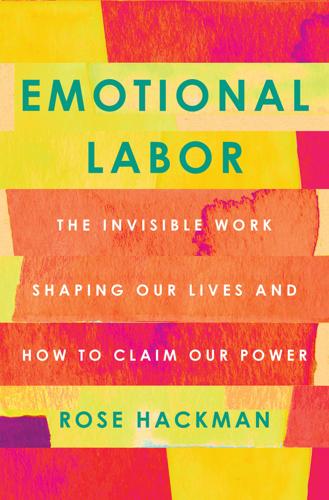
Emotional Labor: The Invisible Work Shaping Our Lives and How to Claim Our Power
by
Rose Hackman
Published 27 Mar 2023
“GDP (Current US$),” World Bank, accessed March 27, 2022, https://data.worldbank.org/indicator/NY.GDP.MKTP.CD; https://databank.worldbank.org/data/download/GDP.pdf. 4. Anshu Siripurapu, “The U.S. Inequality Debate,” Council on Foreign Relations, last updated April 20, 2022, accessed March 27, 2022, https://www.cfr.org/backgrounder/us-inequality-debate. 5. David U. Himmelstein et al., “Medical Bankruptcy: Still Common Despite the Affordable Care Act,” American Journal of Public Health 109, no. 3 (March 1, 2019): 431–33, https://doi.org/10.2105/AJPH.2018.304901. 6. Gina Martinez, “GoFundMe CEO: One-Third of Fundraisers Are for Medical Costs,” Time, updated January 30, 2019, accessed May 11, 2021, https://time.com/5516037/gofundme-medical-bills-one-third-ceo/. 7.

J.K. Lasser's Your Income Tax 2016: For Preparing Your 2015 Tax Return
by
J. K. Lasser Institute
Published 19 Oct 2015
Therefore, the penalty for five months is 5/12ths of Alternative 1, or $206 ([$494 ÷ 12] × 5). Minimum essential coverage. The shared responsibility provision of the Affordable Care Act requires you to have minimum essential coverage for yourself, your spouse and your dependents unless you or they have an exemption (38.6) from the requirement. Minimum essential coverage is a medical plan that provides health insurance coverage as required by the Affordable Care Act. The plan may be: Individual coverage purchased through a government exchange (the federal or your state’s marketplace) or directly from an insurance company An employer plan (including COBRA) A government plan (e.g., Medicare, Medicaid, the Children’s Health Insurance Program, TRICARE, veterans health care programs) Peace Corps volunteer programs Self-funded health coverage of universities for their students (but only through 2014 unless this rule is extended for 2015) You can be covered under a different health plan than your spouse and dependent children, so long as you each have minimum essential coverage (or have an exemption).
…
If you retire and have the option of receiving continued coverage under the medical plan or a lump-sum payment covering unused accumulated sick leave instead of coverage, the lump-sum amount is reported as income at the time you have the option to receive it. If you elect continued coverage, the amount reported as income may be deductible as medical insurance if you itemize deductions (17.5). Filing Instruction Proof of Medical Coverage To avoid a tax penalty under the individual mandate provision of the Affordable Care Act, you must indicate on your tax return that you had minimum essential health insurance coverage for the entire year or you qualify for an exemption (38.5). If you are covered by an employer plan, your employer must give you a Form 1095-B (Form 1095-C in some cases) showing the months of your coverage.
…
Household employment taxes If you employ someone to care for your children or elderly parent in your home, clean your residence, cook, or provide personal services in or around your home, you may be obligated to pay and withhold Social Security and Medicare taxes, as well as federal unemployment (FUTA) taxes (38.1–38.4). Shared responsibility tax If you fail to have certain health coverage for yourself and family and are not exempt from the shared responsibility requirement under the Affordable Care Act, you must figure a penalty tax (38.5–38.6). Self-employment tax If you have net earnings from an unincorporated business, such as a sole proprietorship, partnership, or limited liability company of $400 or more, you must figure Social Security and Medicare taxes on the net earnings; this is called self-employment tax (45.1–45.6).

Seeking SRE: Conversations About Running Production Systems at Scale
by
David N. Blank-Edelman
Published 16 Sep 2018
I was, in the phrasing that our HR person liked to use, “loose in the saddle.” The high-energy collision that sent me completely out of orbit was that I was asked by President Obama to attempt a last-ditch rescue of healthcare.gov, the so-called “federally facilitated marketplace” that was threatening to sink the Affordable Care Act, and with it, the concept of universal healthcare for another generation. The healthcare.gov rescue grew into a round-the-clock effort by a couple dozen SREs, mostly from the Bay Area. Most of them today agree they would not trade the experience for anything, and also that they would never wish a similar experience on anyone else.
…
Index A abandonment expense (AbEx), Project Operating Expense and Abandonment Expense access control, Early Intervention and Education Through Evangelism accommodations, for on-call personnel, Accommodations active learning, Active Teaching and Learning-A Call to Action: Ditch the Boring Slidesbasics, Active Learning costs of failing to learn, The Costs of Failing to Learn Incident Manager card game, Active Learning Example: Incident Manager (a Card Game)-Active Learning Example: Incident Manager (a Card Game) learning habits of effective SRE teams, Learning Habits of Effective SRE Teams-Postmortems postmortems and, Postmortems production meetings and, Production Meetings SRE Classroom, Active Learning Example: SRE Classroom Wheel of Misfortune game, Active Learning Example: Wheel of Misfortune activism (see social activism) address resolution protocol (ARP) tables, Technical learnings adopt-to-buy abandonment scenario, Project Operating Expense and Abandonment Expense advocate phase of SRE execution, Phase 3: Advocates/Partners Affordable Care Act, Elegy for Complex Systems Agilent Technologies, Introducing SRE in Large Enterprises-Closing Thoughts alarming, Observability and Alarming alerts, On-Call and Alerting Allspaw, John, SRE Cognitive Work, Introduction-Conclusion Almeida, Daniel Prata, SRE Without SRE, SRE Without SRE: The Spotify Case Study-The Future: Speed at Scale, Safely AlphaGo, From Chess to Go: How Deep Can We Dive?
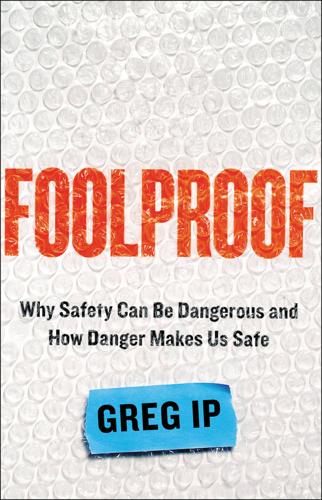
Foolproof: Why Safety Can Be Dangerous and How Danger Makes Us Safe
by
Greg Ip
Published 12 Oct 2015
Franklin Roosevelt, signing it into law, declared, “We can never insure one hundred percent of the population against one hundred percent of the hazards and vicissitudes of life, but we have tried to frame a law which will give some measure of protection to the average citizen and to his family against the loss of a job and against poverty-ridden old age.” Unemployment insurance came shortly afterward, disability insurance in 1956. In 1965 the federal government became the public health insurance backstop for the elderly and poor with Medicare and Medicaid, and in 2010 for the near-poor with the Affordable Care Act. Today, federal insurance extends to private pensions, crop losses, floods, mortgage defaults, and bank deposits. And this doesn’t even include unofficial insurance: the prospect of federal disaster aid pouring into a county struck by floods, blizzards, or earthquakes, or the implicit promise of the federal government to dive in, as it did in 2008, to bail out the financial system rather than see it collapse.

Street Smart: The Rise of Cities and the Fall of Cars
by
Samuel I. Schwartz
Published 17 Aug 2015
In September 2014 Tim Dickinson in Rolling Stone described what the brothers’ businesses were: “Koch-owned businesses trade, transport, refine and process fossil fuels.” This book is way too short to document all the silliness and conspiracy-mongering funded by AFP. But no matter how much time they spend on climate-change denial, repealing the Affordable Care Act, or attacking Agenda 21, the nonbinding United Nations blueprint for sustainable development, AFP and the Koch brothers–funded Reason Foundation always seem to find a few idle hours each day to oppose public-transit investment. In 2014 alone, they spent hundreds of thousands if not millions of dollars undermining a program of dedicated transit lines in Nashville; forbidding the city of Indianapolis from even studying a light rail system; fighting—and, happily, losing—battles opposing the Washington Metro’s expansion into Loudon County, Virginia, and Los Angeles’s Exposition Line rail system; and killing Florida’s plans for a high-speed rail system, which had been overwhelmingly approved by the state’s voters.
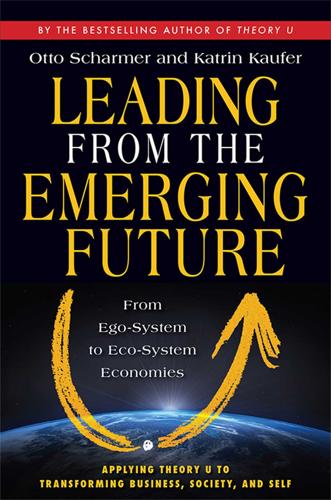
Leading From the Emerging Future: From Ego-System to Eco-System Economies
by
Otto Scharmer
and
Katrin Kaufer
Published 14 Apr 2013
The disastrous end of the Glass-Steagall Act in 1999 happened on the watch of Democrats (under President Clinton), not Republicans, permitting commercial banks to engage in securities activities and effectively setting the stage for the near-total collapse of the global financial system less than a decade later. President Obama’s health care reform legislation (the Affordable Care Act) completes the 3.0-related innovations that started in the early twentieth century. For the time being, as we write this in early 2013, the country remains politically paralyzed and deeply divided between 2.0 fundamentalists (on the far Right), 3.0 believers (on the traditional Left), and people who think that neither one nor the other will do the trick and that something entirely different is needed today.
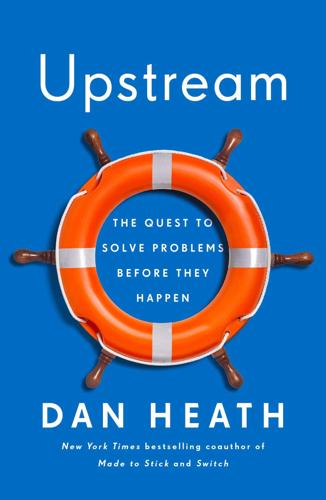
Upstream: The Quest to Solve Problems Before They Happen
by
Dan Heath
Published 3 Mar 2020
Nor is it the patient, really, since a patient isn’t a health care expert. (Just as a homeowner isn’t a home maintenance expert.) The people best positioned to prevent those problems are primary care doctors. So how do you create incentives for them to do so? Meet the Accountable Care Organization (ACO), one of the models introduced in the 2010 Affordable Care Act. Here’s a highly simplified description of one type of ACO (and trust me when I say there is an endless wormhole of complexity that lies beyond): A bunch of primary care doctors can join together to form an ACO, and Medicare says to the ACO: For the population of patients you serve, we know roughly how many hospital visits to expect this year, and how much those visits will cost us.

Please Don't Sit on My Bed in Your Outside Clothes: Essays
by
Phoebe Robinson
Published 14 Oct 2021
Ooof, pretty grim, and if you’re hoping things are looking up now, you’re about to be disappointed. Mental Health America conducted a report in 2021 on the state of mental health and found that the number of uninsured adults with a mental illness (5.1 million) increased for the first time since the ACA, the Affordable Care Act, was passed, with New Jersey coming in first with only 2.5 percent uninsured and Wyoming bringing up the rear with a whopping 23 percent who are uninsured. This is a lot to take in, and I’m not sharing this data to bum us out, although seeing how dire the state of mental health is in America is certainly cause for despair.
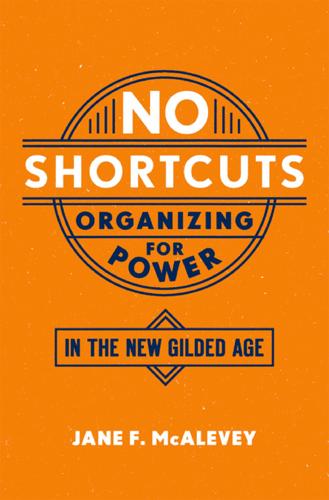
No Shortcuts: Organizing for Power in the New Gilded Age
by
Jane F. McAlevey
Published 14 Apr 2016
TABLE 2.2 Power Required (Concession Costs) In my own negotiations with hospital employers, there is evidence that the boss will even surrender on production issues when two conditions are present: the union can mount an effective strike, and the employer comes to understand that the workers might actually make better decisions than line managers, decisions that would positively impact the employer’s bottom line. The Affordable Care Act offers a present-day example of this dynamic: New Medicaid and Medicare reimbursement rules tie higher reimbursement rates to better patient outcomes. Bedside nurses almost always have better ideas than management regarding what will heal the patient better and faster, so a pragmatic employer might even grant production decision-making to a high power–generating hospital workers’ union.

Laziness Does Not Exist
by
Devon Price
Published 5 Jan 2021
“Literally no human has ever just sat perfectly still and calmly done nothing for that long.” At the time Jason gave me this advice, I was struggling to deal with my emotions. The federal government had just withdrawn its antidiscrimination protections for transgender people. People were being held in cages at the U.S.-Mexico border. Many of my friends were living in fear that the Affordable Care Act was going to be overturned, causing them to lose access to lifesaving medical care. The world felt like it was burning down, and even worse, my more conservative relatives didn’t seem to see how they were complicit in all of it. My despair and rage felt too large to deal with. And so I just silenced it as best I could.
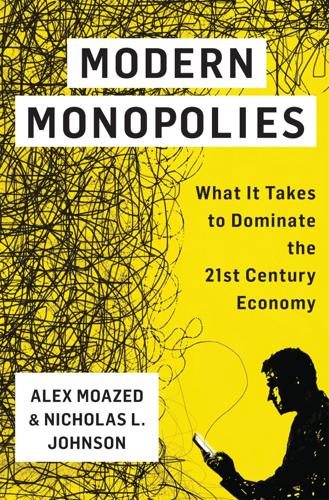
Modern Monopolies: What It Takes to Dominate the 21st Century Economy
by
Alex Moazed
and
Nicholas L. Johnson
Published 30 May 2016
But every one of these companies is currently facing lawsuits alleging that they are misclassifying their workers. The potential legal fallout for each of these platforms is enormous. They could face hundreds of millions of dollars in damages and taxes owed if they lose these cases and have to reclassify their workers as W-2 employees. Because of the Affordable Care Act, most of these companies would then likely be responsible for providing health care for many of their workers. While it’s possible to still operate a platform with W-2 contractors, the overhead involved in dealing with W-2 workers, as well as the additional tax obligations the companies would incur as a result, would severely limit the advantages of the model for services marketplaces.

Chokepoints: American Power in the Age of Economic Warfare
by
Edward Fishman
Published 25 Feb 2025
The media interpreted Szubin’s presence as significant, a sign that the Obama administration was serious about putting its most valuable card—sanctions relief—on the table. Back in Washington, OFAC’s offices sat empty. The federal government was in the midst of a weeks-long shutdown, the result of efforts by Tea Party Republicans in Congress to gut the Affordable Care Act. More than 800,000 federal employees were furloughed, including nearly everyone at OFAC. One of Treasury’s top Iran experts, Andrew Jensen, was sitting in a rocking chair on his front porch in Fredericksburg, Virginia, bored out of his mind, when he received a call instructing him to report to the office at once.
…
A B C D E F G H I J K L M N O P Q R S T U V W X Y Z A Abbasi, Fereydoon, 88 Abdullah bin Zayed, Sheikh, 83–84 Abdullah, King of Saudi Arabia, 103 ABN AMRO, 62 Abramovich, Roman, 355–56 Abu Dhabi, 83 Addis Ababa, 15, 279 Adeyemo, Wally, 315, 324–26, 372, 374, 377 Affordable Care Act, 51 Afghanistan, 68, 146, 214, 314, 315 U.S. war in, 7, 37, 38, 229, 410, 416 U.S. withdrawal from, 318–19, 321, 329 Africa, 279, 356 Ahmadi-Moghaddam, Esmail, 108 Ahmadinejad, Mahmoud, 49–50, 59, 68, 69, 70, 73, 76, 85, 98, 108, 110, 113, 117 UN address of, 59–60, 60 AIPAC (American Israel Public Affairs Committee), 71, 90, 104, 105 Airbus, 126, 160 Aksyonov, Sergei, 141, 162 Albright, Madeleine, 57 Alexander, Keith, 234 Alexander I, Tsar, 14 Alfa-Bank, 363 Algiers Accords, 55 Alibaba, 302, 394 Alipay, 404–5 al-Jubeir, Adel, 93 al-Qaeda, 37, 38, 159 aluminum, 249, 326 Amidror, Yaakov, 102 Anastasiades, Nicos, 210 Andrews, Bruce, 245 Antonov Airport, 355 Apple, 234, 282, 292, 355 Applied Materials, 264, 301, 394, 407 Arab-Israeli War, 50 Arab Spring, 89, 148 Araghchi, Abbas, 52, 124 Arak, 58, 120, 127 Arctic, 149, 177, 190, 192, 196, 203 Argentina, 413 Aristophanes, 13 Arm, 277 Armenia, 80, 380 artificial intelligence, 243, 303, 421–22, 292, 303, 394, 421–22 Art of War, The (Sun Tzu), 7 Ashraf, Jawed, 101–2 Asia, 54, 158, 239 Asian Infrastructure Investment Bank (AIIB), 242–43, 297 ASML, 301, 393–95, 407 al-Assad, Bashar, 154, 213 Associated Press, 181–82 AT&T, 255, 256 Athens, 1, 9, 13–14, 209 Atilla, Mehmet Hakan, 112 Atoms for Peace, 54 Aufhauser, David, 39–40 Austin, Lloyd, 378–79 Australia, 167, 269, 289, 357, 392, 404 Austria, 14, 179, 243 AvtoVAZ, 380 Axios, 256 B Backemeyer, Chris, 115, 116, 118, 119, 127–29 Baeidinejad, Hamid, 52, 123 Bahrain, 61, 325 Baidu, 302 Baltic Sea, 211, 377, 384, 387 Baltic states, 203, 214, 218, 317, 330, 386 Banco Delta Asia, 44–45, 61, 70 Bandar Abbas, 82 Bankers Almanac, 80, 85 Bank Melli, 62, 67, 119 Bank of Kunlun, 105, 133 Bank Rossiya, 163, 175, 195 banks, 5, 6, 20, 26, 32–33 CHIPS and, xvii, 22, 33, 403 CIPS and, 293 correspondent, xvii, 21, 62, 80, 85, 340, 402 currencies in, 21 deregulation of, 31, 32 Glass-Steagall Act and, 32 infrastructure for, 21–22, 402 Iran sanctions and, 62–63, 64–69, 72, 78, 80, 82–85, 89, 104, 105, 110–11, 120, 124, 132, 134–35, 134, 159, 172, 175, 195, 282, 288, 302, 343, 344 reforms in, 110–11 Russia sanctions (2014) and, 163, 172–75, 186–87, 192, 309, 315–16, 325–26, 343, 344 Russia sanctions (2022) and, 309, 325–26, 333, 334, 336, 337, 339–41, 343–49, 350–53, 355, 357, 363, 374, 399, 419 sanctions violations by, 22, 62, 66, 67, 85–86, 99, 110, 124, 134, 186, 256–57, 264, 267, 303 stripping and, 62, 65 SWIFT and, xix, 33, 39, 104, 195, 220, 293, 337, 343–45, 351, 402, 403 terrorism and, 44 U-turn transactions and, xix, 62, 67, 80 Bank Saderat, 65, 119 Bannon, Steve, 248, 249 Barak, Ehud, 98, 116 Barroso, José Manuel, 189 Barclays, 86, 337 Barr, Bill, 290 BASF, 177, 211 Bashneft, 196 Bayh, Evan, 71, 79 BCP (Banque de Commerce et de Placements), 124 Beirut barracks bombing, 55 Belarus, 151, 339 Belgium, 14 Bellodi, Leonardo, 86 Belt and Road Initiative (BRI), 230–31, 242, 262, 271, 422–23 Benioff, David, 163 Bensouda, Fatou, 314 Berlin Wall, 16, 147, 235 Berman, Howard, 79 Bick, Alex, 329 Biden, Joe, 106, 189, 204, 298, 301, 305, 310, 311, 315, 317–19, 325, 332, 356, 384, 391–92, 413, 419, 421 Afghanistan troop withdrawal and, 318–19, 321 China and, 315, 318, 391–96 economic program of, 313 Putin and, 315, 316, 317, 318, 324–26 Russia sanctions and, 323, 330, 332–34, 336, 339–41, 346, 347, 349, 353, 360, 375, 412, 419 sanctions policy review of, 314–15 Saudi Arabia and, 383 Big Fund, 244 bin Laden, Osama, 118 Bismarck, Otto von, 410 Black, Jonathan, 322, 337, 344, 346, 348 BlackRock, 186, 374 Black Sea, 1, 2, 144, 161, 324, 356 Blas, Javier, 382 Blix, Hans, 18 Blinken, Tony, 166–67, 222, 330, 334, 347, 386 blocking sanctions, xvii, 62, 65, 67, 69, 95, 172, 175, 204, 259, 264, 270, 326, 334, 336, 339–40, 343, 346, 357, 363, 500n Blumenthal, Michael, 30 BMW, 177 BNP Paribas, 22, 124, 186 Boeing, 126, 149, 160, 236, 259 Bolton, John, 228, 260, 267, 272, 277, 279 Bortnikov, Alexander, 222 Bosnian War, 37 Bosphorus, 1, 2, 3, 6, 9, 386–87 BP, 352 Branch Davidians, 51 Brazil, 132, 323 in BRICS, 398–401, 399 Brennan, John, 222 Bretton Woods system, 25–27, 28, 31, 398, 423 BRICS, 398–401, 399, 413–14 Britain, 16, 31, 42, 76, 271 AIIB and, 243, 297 Brexit and, 169, 295, 337 China and, 227–28, 230–31, 295 dollar-gold relationship and, 24, 27 Huawei and, 227–28, 230, 231, 234, 269, 283–84, 286–87, 292–93, 295–97, 305 Iran and, 74, 76, 78, 305, 314 Napoleon and, 14 Russia sanctions and, 169, 176, 357, 372, 376 Skripal poisoning and, 259 British Bankers’ Association, 186 Brittan, Leon, 56, 57 Brookings Institution, 395–96 Brown, Gordon, 74, 76 Brussels, 168, 176 Brzezinski, Zbigniew, 144–45 Bucha massacre, 363, 369 Budapest Memorandum, 145, 157 Buk missile system, 183–84 Burns, Bill, 76, 116, 118–20, 313, 324, 334 Bush, George H.
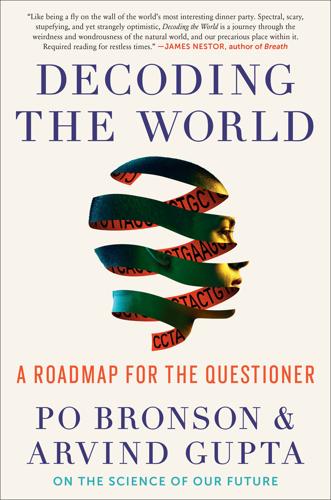
Decoding the World: A Roadmap for the Questioner
by
Po Bronson
Published 14 Jul 2020
INCENTIVIZE THE FUTURE, DON’T REGULATE THE PAST The Green New Deal calls for a trillion dollars of innovation. It recognizes that our old technology is causing the problem. So we need new technology. My big beef with health care policy is that it’s trying to fix the system we have today, rather than create a vision for the future of medicine—and help that get here faster. The Affordable Care Act of 2010 at least did that. It offered hospitals $30 billion in incentives to adopt electronic patient records, over multiple phases. In this one dimension, it dragged hospitals into the modern age. (Full disclosure: I’ve worked on electronic medical record reform with several CEOs of both hospital systems and software systems.)
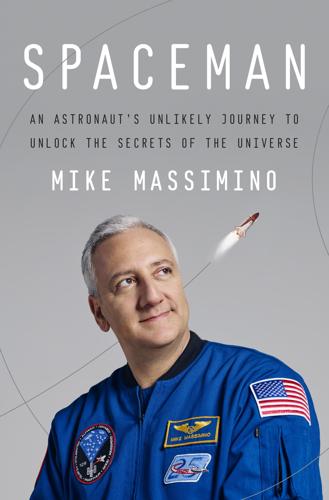
Spaceman: An Astronaut's Unlikely Journey to Unlock the Secrets of the Universe
by
Mike Massimino
Published 3 Oct 2016
After fifteen months at Rice, I took the visiting professorship offer and we moved back to New York. On October 1, 2013, right after we left Houston, the federal government shut down when the House of Representatives tried to use the 2014 appropriations bill as leverage to defund President Obama’s Affordable Care Act. NASA was shut down almost entirely; only six hundred of its eighteen thousand employees stayed on to support the astronauts on the space station. Along with most of my colleagues, I was deemed “nonessential” and furloughed without pay for what ended up being two very worrisome weeks. I couldn’t believe it was happening.

J.K. Lasser's Your Income Tax
by
J K Lasser Institute
Published 30 Oct 2012
Favorable gift tax and estate tax exemptions, exemption portability rules, and maximum tax rates are also set to expire at the end of 2012. We will be following developments and will provide updates in the e-Supplement at jklasser.com. Affordable Care Act brings tax increases in 2013 The Supreme Court decision upholding the tax provisions of the Patient Protection and Affordable Care Act allows scheduled tax increases and reductions to take effect in 2013, assuming they are not repealed by next year’s Congress. Employees and self-employed workers with earnings over an applicable threshold will owe an additional Medicare tax of 0.9%.
…
See the e-Supplement at jklasser.com for an update on tax legislation developments. 28.4 Additional Medicare Taxes Take Effect in 2013 The Supreme Court decision upholding the constitutionality of the tax provisions in the 2010 Patient Protection and Affordable Care Act allows several tax changes to take effect as scheduled on January 1, 2013. There has been political opposition to the additional Medicare taxes discussed below and the itemized deduction and FSA changes noted in the Law Alert on this page, and there may be efforts to repeal them following the 2012 elections. See the e-Supplement jklasser.com for further details and developments. - - - - - - - - - - Law Alert 2013 Changes to Medical Expenses and FSAs The 2010 Patient Protection and Affordable Care Act raises the medical expense deduction floor and restricts the amount that can be contributed to a health care flexible spending account.
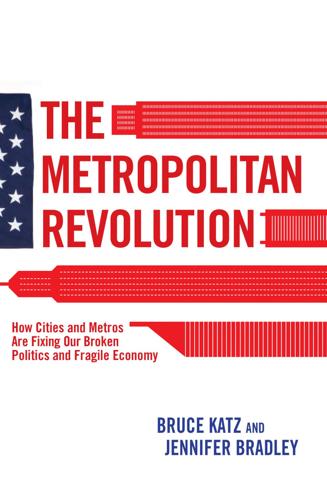
The Metropolitan Revolution: How Cities and Metros Are Fixing Our Broken Politics and Fragile Economy
by
Bruce Katz
and
Jennifer Bradley
Published 10 Jun 2013
States as disparate as Ohio, California, North Carolina, New Jersey, and Texas went to the ballot box to raise dedicated resources for economic development, advanced research, and higher education.14 More recently, health care reform was law in Massachusetts years before the passage of the federal Affordable Care Act in 2010. RETHINKING FEDERALISM History has shown that federalism is an economic arrangement as well as a political one. The division of power affects how the economy is shaped—the kinds of investments made, the amount of money spent, and 08-2151-2 ch8.indd 177 5/20/13 6:56 PM 178 METROS AS THE NEW SOVEREIGN the different legal and financial tools put in place.
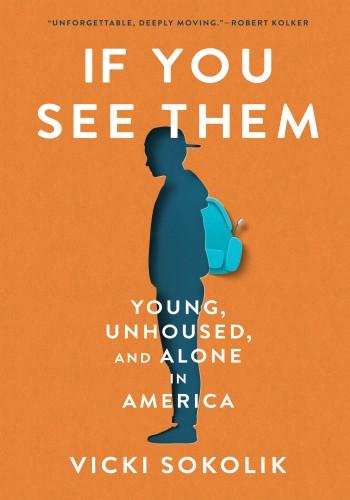
If You See Them
by
Vicki Sokolik
Published 23 Nov 2023
Skye didn’t have health insurance, and as a minor not living with a parent, she was not eligible for Medicaid. Her lack of coverage became even more of a problem when the ER determined that her elbow wasn’t just dislocated; it was fractured and would need surgery. Skye had applied for Medicaid several times but had always been denied. Even though the Affordable Care Act, enacted on March 23, 2010—the year after Skye entered our program—expanded the Medicaid program significantly as part of a broader plan to cover millions of uninsured Americans, in order to participate in Medicaid in Florida at the time, you had to fall under mandatory eligibility categories.
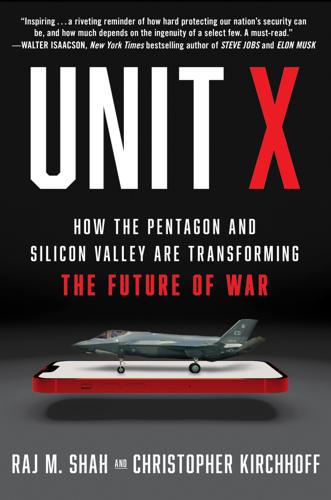
Unit X: How the Pentagon and Silicon Valley Are Transforming the Future of War
by
Raj M. Shah
and
Christopher Kirchhoff
Published 8 Jul 2024
Schmidt was a supporter of President Obama from the 2008 campaign’s start. The Obama administration arrived in Washington determined to freshen up the government’s use of technology and steer it toward fixing complex problems. That technocratic optimism soured, though, in the fall of 2013 when HealthCare.gov, the portal for Obama’s Affordable Care Act, crashed the day it was launched. The ongoing struggle to fix the website was an embarrassing counter to the administration’s tech-savvy image and prompted Todd Park’s rescue mission years before he helped Carter reboot DIUx. The original budget to develop HealthCare.gov was $93.7 million, and yet one year after its launch the Office of Inspector General reported that the total cost of the website had reached $1.7 billion.
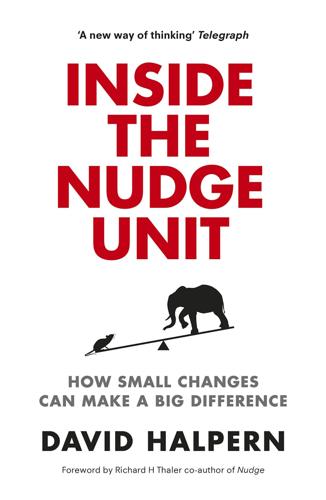
Inside the Nudge Unit: How Small Changes Can Make a Big Difference
by
David Halpern
Published 26 Aug 2015
Cass himself was described by a leading Republican commentator as ‘the most dangerous man in America’ for his work to introduce more subtle, behaviourally sophisticated thinking into the world of regulation. The thing is, if you fundamentally don’t trust government and want to see its role reduced, the last thing you want is a more effective administrator. Under Cass’s leadership, OIRA had some real successes. Behavioural thinking was embedded in the affordable care act, financial law reform, climate change policy, and consumer protection policy. There were administartive and political limits to what Cass could achieve, but one thing he certainly did was to open up thinking across the world about more nuanced and behaviourally informed approaches to policy.

Ghettoside: A True Story of Murder in America
by
Jill Leovy
Published 27 Jan 2015
Doubtless many people will criticize this trend and decry the expense of SSI. But this author can’t condemn a program that appears to have saved so many from being murdered or maimed. For those not convinced by humanitarian arguments, it’s worth noting that homicide is expensive, too. Health insurance for these same indigent black men through the new Affordable Care Act may change the picture further. Another factor reducing murder rates is a bleak one—large numbers of black men in prison. Imprisonment brings down homicide rates because it keeps black men safe, and they are far less likely to become victims in prison than outside it. California’s rate of imprisonment increased fivefold between 1972 and 2000.
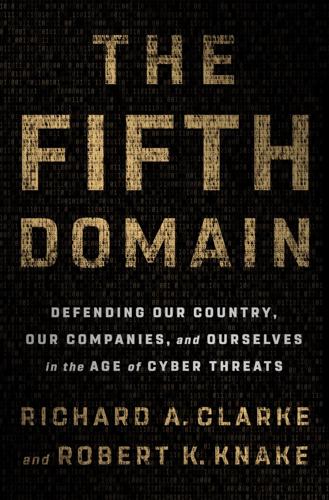
The Fifth Domain: Defending Our Country, Our Companies, and Ourselves in the Age of Cyber Threats
by
Richard A. Clarke
and
Robert K. Knake
Published 15 Jul 2019
The payouts to the insured are a smaller percentage of the revenue than in most other forms of insurance. So why rock the boat when you are making money? Most insurance, somewhat oddly, is not regulated at the federal level. Health-care insurance is, of course, or was until the Trump administration made a hash of the Affordable Care Act. Almost all other kinds of insurance are supervised by insurance commissioners in the fifty states. Some states elect their insurance commissioners, as in California. In others, governors appoint them. In New York, the Department of Financial Services doubles as the insurance regulator. What worries some of the state insurance commissioners we have talked with is the prospect of the often-discussed “cyber Pearl Harbor” or the “cyber 9/11.”

The Plague Year: America in the Time of Covid
by
Lawrence Wright
Published 7 Jun 2021
The highest concentration of job losses tended to be in the same counties with high levels of opioid overdoses. Those counties were far more likely to vote for Trump. An intriguing paradox was at the heart of Trump’s victory in 2016. People in good health have traditionally been more likely to vote Republican, but the trend reversed in that presidential year. This was despite the fact that the Affordable Care Act was a centerpiece of the debate in that election. The shift was particularly notable in the traditional Democratic strongholds of Pennsylvania, Wisconsin, and Michigan—all states that went for Trump. Counties with higher mortality rates from drugs, alcohol, and suicide were more likely to vote for Trump in 2016 than they did for Romney in 2012.
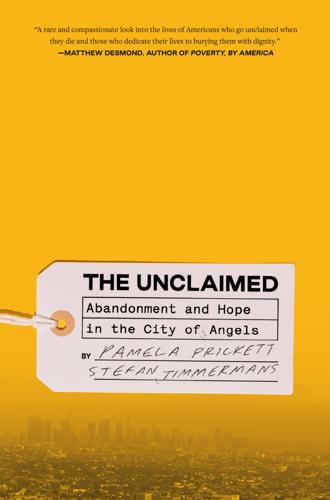
The Unclaimed: Abandonment and Hope in the City of Angels
by
Pamela Prickett
and
Stefan Timmermans
Published 11 Mar 2024
GO TO NOTE REFERENCE IN TEXT practice was illegal Ashvin Gandhi, “Picking Your Patients: Selective Admissions in the Nursing Home Industry,” working paper, SSRN 3613950 (2019); Matt Sedensky, “Nursing Homes Turn to Eviction to Drop Difficult Patients,” Associated Press, May 5, 2016; Fran Kritz, “Patient Dumping Is Still a Problem,” American Journal of Nursing 118 (November 2018): 16–17; Ryan M. McKenna et al., “Examining EMTALA in the Era of the Patient Protection and Affordable Care Act,” AIMS Public Health 5 (2018): 366–77. GO TO NOTE REFERENCE IN TEXT purchase burial insurance Burial insurance, also known as final expense life insurance, is an insurance policy typically in the $5,000–$10,000 range that can be used to pay for final arrangements. Heirs, however, may also use the money to pay down medical debt or credit card balances.
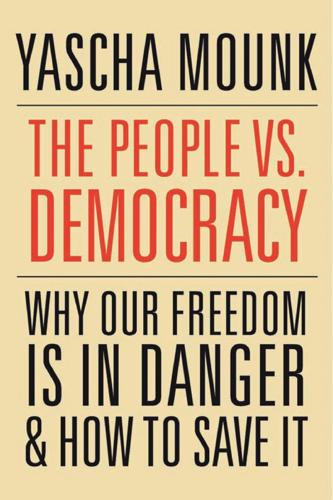
The People vs. Democracy: Why Our Freedom Is in Danger and How to Save It
by
Yascha Mounk
Published 15 Feb 2018
Texas, 539 US 558 (2003) legalized homosexual sex. Obergefell v. Hodges, 576 US (2015) legalized same-sex marriage. 54. For examples, see Buckley v. Valeo, 424 US 1 (1976); and Citizens United v. FEC, 558 US (2010). 55. In King v. Burwell, 576 US (2015), the Supreme Court upheld key provisions of the Affordable Care Act. 56. In United States v. Texas 579 US __ (2016), the Supreme Court left in place an appeals court ruling blocking the Deferred Action for Parents of Americans and Lawful Permanent Residents (DAPA) program that would have prevented millions of undocumented immigrants from being deported. United State v.

The Wires of War: Technology and the Global Struggle for Power
by
Jacob Helberg
Published 11 Oct 2021
Already, Obama’s bold interventions had rescued the auto industry in states like Ohio and averted what analysts predicted would be a second Great Depression. Each month seemingly brought another raft of landmark legislation: a massive economic stimulus bill, the Dodd-Frank financial reforms, the Affordable Care Act. The arc of the universe was indeed bending toward justice. I was dizzy with the history of it all. As my time at GW drew to a close, I began searching for what was next. After a brief stint at a New York nonprofit, I enrolled in the law school at Sciences Po in Paris. Within two months, I realized what drove me to America—and why I was not cut out for life at a law firm.

Tools and Weapons: The Promise and the Peril of the Digital Age
by
Brad Smith
and
Carol Ann Browne
Published 9 Sep 2019
To turn this group of skeptics into supporters, the Trump team created Project Alamo in Parscale’s hometown of San Antonio to consolidate fund-raising, messaging, and targeting, especially on Facebook. They communicated to these voters repeatedly with messages on topics that the data said were likely to be important to them, like the opioid epidemic and the Affordable Care Act. The Republican team described what their data operation revealed as the election approached. Ten days before the election, they estimated that they were down two points to Clinton in key battleground states. But they had identified 7 percent of the population that was still undecided about whether it would vote.
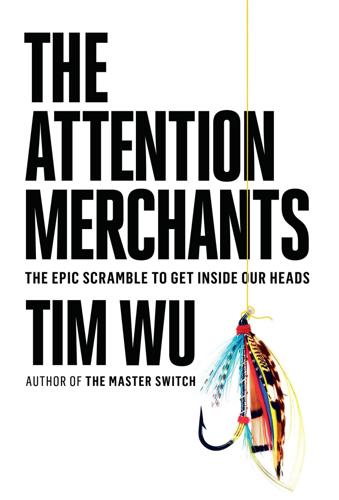
The Attention Merchants: The Epic Scramble to Get Inside Our Heads
by
Tim Wu
Published 14 May 2016
And thus began the first state-run attention harvest, or what historians would later call the “first systematic propaganda campaign directed at the civilian population.”5 In our times, the idea of a government-run mass recruiting campaign does not sound especially controversial. Recently, the Affordable Care Act was made workable by just such an effort. But in 1914 it was unprecedented, not just in Britain, but anywhere. “That the State should advertise itself was an idea which occurred to few before the war,” concluded an official British history, “and which, had it been brought before the notice of the general public, would have seemed to them repellent.”6 Remember that, for much of human history, rulers did not feel any particular need for public attention, and, indeed, usually tried to avoid it.

Capitalism in America: A History
by
Adrian Wooldridge
and
Alan Greenspan
Published 15 Oct 2018
In the 1950s, the Federal Register, which lists all new regulations, expanded at an average of 11,000 pages a year. In the first decade of the twenty-first century, it expanded by an average of 73,000 pages a year. Federal laws and regulations now extend to more than 100 million words. State and local regulations add another 2 billion. The Dodd-Frank bill was 2,319 pages long. The 2010 Affordable Care Act is 2,700 pages long and includes a twenty-eight-word definition of a “high school.” Medicare has 140,000 reimbursement categories, including twenty-one separate categories for “spacecraft accidents.” Added to this is the fact that the American tax code contains 3.4 million words. This means that the land of the free has actually become one of the world’s most regulated societies: in 2013, for example, it ranked twenty-seventh out of the OECD’s thirty-five members when it comes to product-market regulation.
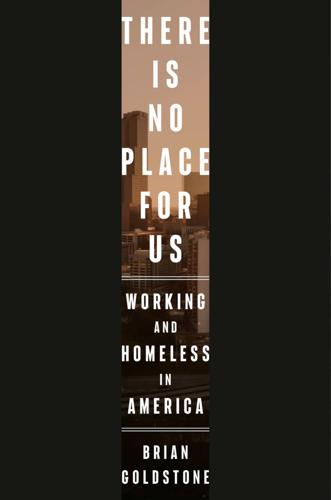
There Is No Place for Us: Working and Homeless in America
by
Brian Goldstone
Published 25 Mar 2025
Along with some 274,000 other adults in Georgia, Kara had fallen into Medicaid’s “coverage gap”: poor people whose annual income exceeded their state’s eligibility threshold. (In Georgia, a parent with four children had to earn less than $9,000 annually to qualify.) If Georgia had been among the states to expand Medicaid coverage under the Affordable Care Act, she would have received the help she was seeking. But in Georgia, she was now eligible only for subsidized “family planning services”: contraception, sterilization, STD treatment, and the like. Kara put the idea of therapy out of her head. It was getting late. Tucking her children in, Kara handed Grace the inexpensive phone she had recently purchased for her.

Valley So Low: One Lawyer's Fight for Justice in the Wake of America's Great Coal Catastrophe
by
Jared Sullivan
Published 15 Oct 2024
Still too young to qualify for Medicare and with his union health coverage set to expire, Ansol applied for coverage with two large insurance companies. Both rejected him, owing to his preexisting conditions. The couple went uninsured for months, paying for Ansol’s medications and doctor’s appointments out of pocket. They finally bought coverage through the federal health-insurance marketplace, created as part of the Affordable Care Act of 2010. It was a welcome, if temporary, relief. * * * — Jeff Friedman, the Birmingham attorney, hated the TVA Towers. The twin twelve-story structures stood at the north end of Market Square, dominating the Knoxville skyline from a hill in the middle of downtown. Built in the mid-1970s, the overlarge modern complex had an off-white facade and black slit windows, projecting an air of impenetrability and detachment from the rest of the old, mostly brick Appalachian city.
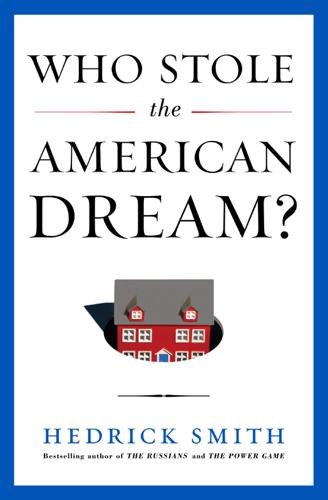
Who Stole the American Dream?
by
Hedrick Smith
Published 10 Sep 2012
Dudley, “Securing the Recovery and Building for the Future,” speech, West Point, NY, November 17, 2011, http://www.newyorkfed.org; Floyd Norris, “To Revive Economy, Rescue Housing,” The New York Times, December 2, 2011. 100 Smart economists have suggested multiple ways Ezra Klein, “Mass Refinancing: The ‘Biggest Thing’ Obama Can Do Without Congress,” The Washington Post, January 10, 2012. 101 Government buy up near worthless second mortgages Alpert, Hockett, and Roubini, “The Way Forward.” 102 Convert many of these homes into rentals Dudley, “Securing the Recovery.” 103 Offer loan guarantees “Obama Proposes Mortgage Relief,” The Washington Post, February 2, 2012. 104 Measures to slow Medicare cost growth Centers for Medicare and Medicaid Services, “Affordable Care Act Update: Implementing Medicare Cost Savings,” August 2010, www.cms.gov. 105 Eliminate the anticipated Social Security shortfall Thomas Geoghegan, “Get Radical: Raise Social Security,” The New York Times, June 20, 2011; Andrew Fieldhouse, Economic Policy Institute, email, August 22, 2011. 106 Our economy is projected to grow by 60 percent Lawrence Mishel, “We’re Not Broke, Nor Will We Be,” EPI Briefing Paper, May 19, 2011, Economic Policy Institute, http://www.epi.org.

J.K. Lasser's Your Income Tax 2022: For Preparing Your 2021 Tax Return
by
J. K. Lasser Institute
Published 21 Dec 2021
HRAs cannot be used to cover costs for self-employed individuals. Qualified Small Employer Health Reimbursement Arrangement (QSEHRA). If you are a “small employer,” which means you have fewer than 50 full-time and full-time-equivalent employees so that you're not subject to the employer mandate under the Affordable Care Act, you can help employees pay for health coverage they buy on their own using a Qualified Small Employer Health Reimbursement Account (QSEHRA). This is not a group health plan, but you deduct the reimbursements you make for the year and employees are not taxed on them. For a QSEHRA, all of the following conditions must be satisfied: The arrangement is funded entirely by employer contributions (no employee salary reduction contributions are allowed) Eligible employees must provide you (the employer) with proof of having minimum essential health coverage.
…
See Schedule 1 (Form 1040 or 1040-SR) Additional Medicare taxes, 552–56, 678 business property sales and, 774 on earnings, 553–54 estimated tax payments and, 549 for higher-income taxpayers, 553 and net investment income tax, 555–56 and tax liability, 499 on W-2, 543 Additional taxes, 629, 801–2 Additions, MACRS depreciation for, 749 Address, 5, 793 Adequate accounting, for expenses, 474–75 Adjusted basis, 143–44, 300, 434, 505, 572–73, 577, 1015 Adjusted Basis of Home Sold Worksheet, 572, 577 Adjusted gross income (AGI), 343–48, 412, 441, 522, 646, 1015 Adjustments to income, 344–45 Administrative tasks, home office for, 708–10 Administrators of wills, 24, 28 Adopted children, 191, 236, 420 Adoption benefits, 39, 57, 67–68 Adoption credit, xxix, 67–68, 527–28 ADS (alternative depreciation system), 745 Advance payments, 452, 517–18, 531, 696 Advance rentals, 268 Advances, 42–43, 475 Advance valuation of art, 371, 380 Affordable Care Act, 734 AFR. See Applicable federal rate After-tax retirement contributions, 180, 182 Age 18 (children under), 515–16 Age 30 duration rule, 629 Age 50 (persons at or over), 216 Age 59½ (persons under), 182, 190–92, 196, 235–39, 254 Age 65 (persons over), 2, 351, 353–54 Age 70½ (persons over), 188, 216–19, 228–29 Age 72 (persons over), 188, 240, 729 Age limit, IRA contribution, 216–18, 255 Age test, 484 Aggregate treatment of activities, 294, 296–97, 707 AGI.